Plant Descriptions – Haemodorum austroqueenslandicum – Hibbertia villosa
Haemodorum austroqueenslandicum
Haemodorum planifolium
Hakea actites
Hakea bakeriana
Hakea bucculenta
Hakea clavata
Hakea eriantha
Hakea florulenta
Hakea laevipes
Hakea laurina?
Hakea ochroptera
Hakea orthorrhyncha
Hakea pedunculata
Hakea purpurea
Hakea salicifolia
Hakea sericea
Hakea subsulcata
Hakea teretifolia
Hakea verrucosa
Hakea victoria
Halfordia kendack
Halophila ovalis
Haloragis exalata
Haloragis heterophylla
Hardenbergia comptoniana
Hardenbergia violacea
Harnieria hygrophiloides
Harpullia arborea
Harpullia hillii
Harpullia pendula
Hedycarya angustifolia
Helichrysum rutidolepis
Helicia ferruginea
Helicia glabriflora
Hemholtzia glaberrima
Hemarthria uncinata
Heritiera littoralis
Heritiera trifoliolata
Heteropogon contortus
Hibbertia acicularis
Hibbertia acuminata
Hibbertia aspera
Hibbertia banksii
Hibbertia dentata
Hibbertia diffusa
Hibbertia fasciculata
Hibbertia hermanniifolia
Hibbertia linearis
Hibbertia obtusifolia
Hibbertia oligodonta
Hibbertia pedunculata
Hibbertia riparia
Hibbertia rufa
Hibbertia salicifolia
Hibbertia scandens
Hibbertia serpyllifolia
Hibbertia vestita
Hibbertia villosa
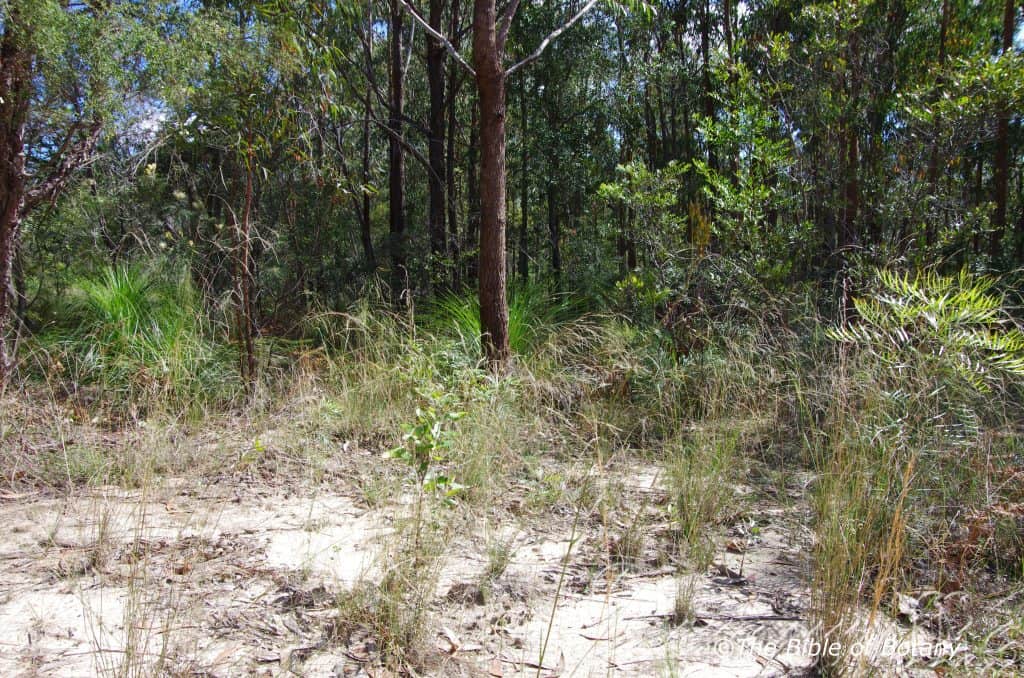
Author’s Garden The Pinnacles NSW
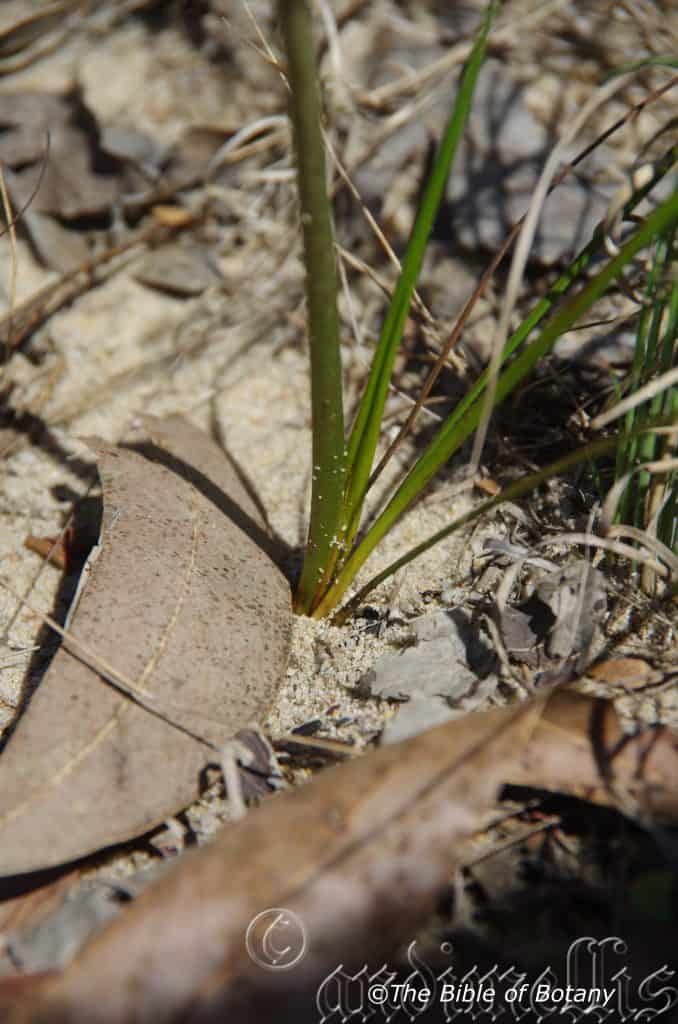
Author’s Garden The Pinnacles NSW
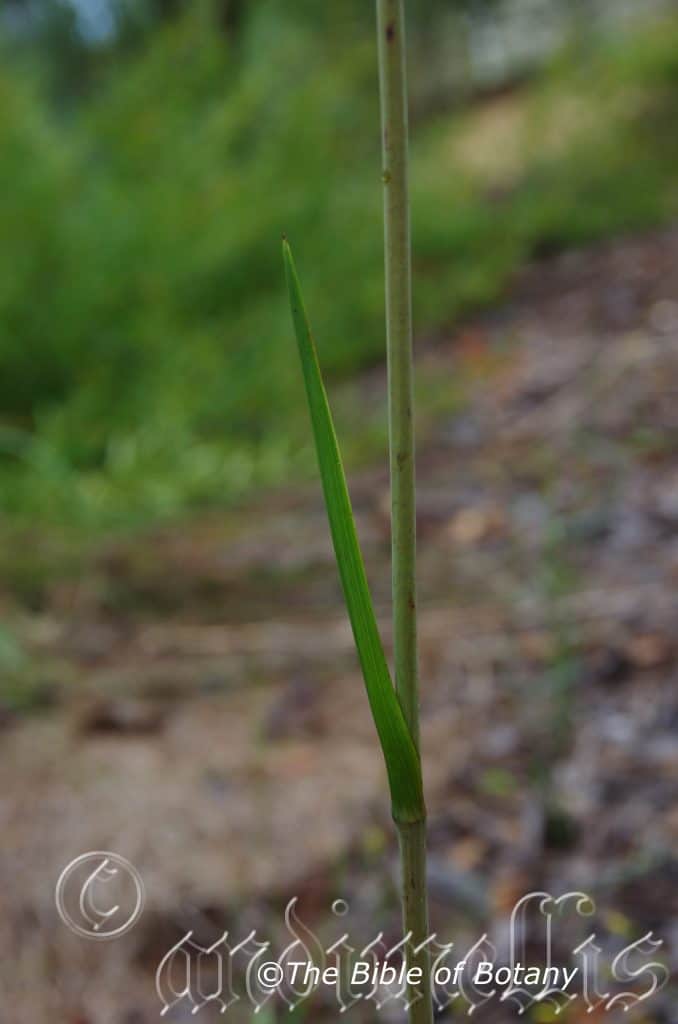
Author’s Garden The Pinnacles NSW
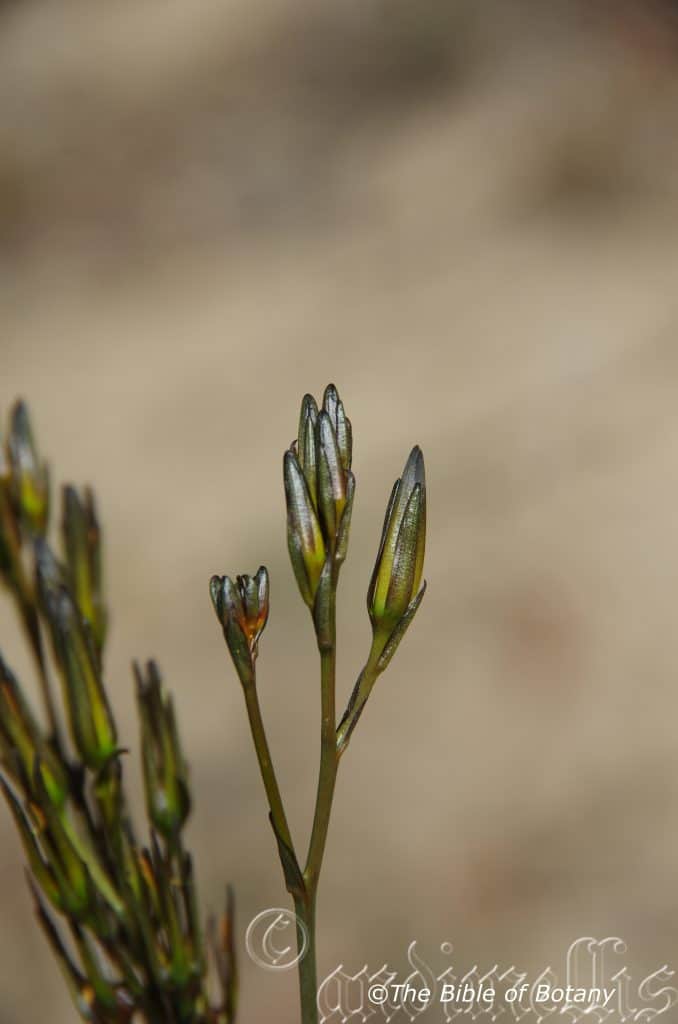
Author’s Garden The Pinnacles NSW
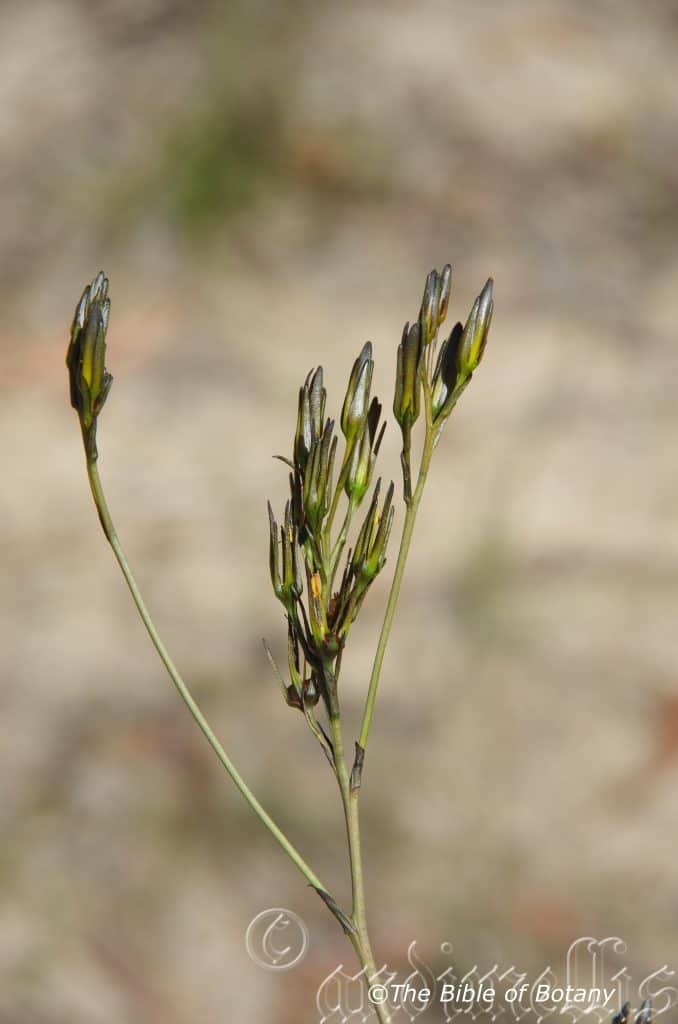
Author’s Garden The Pinnacles NSW
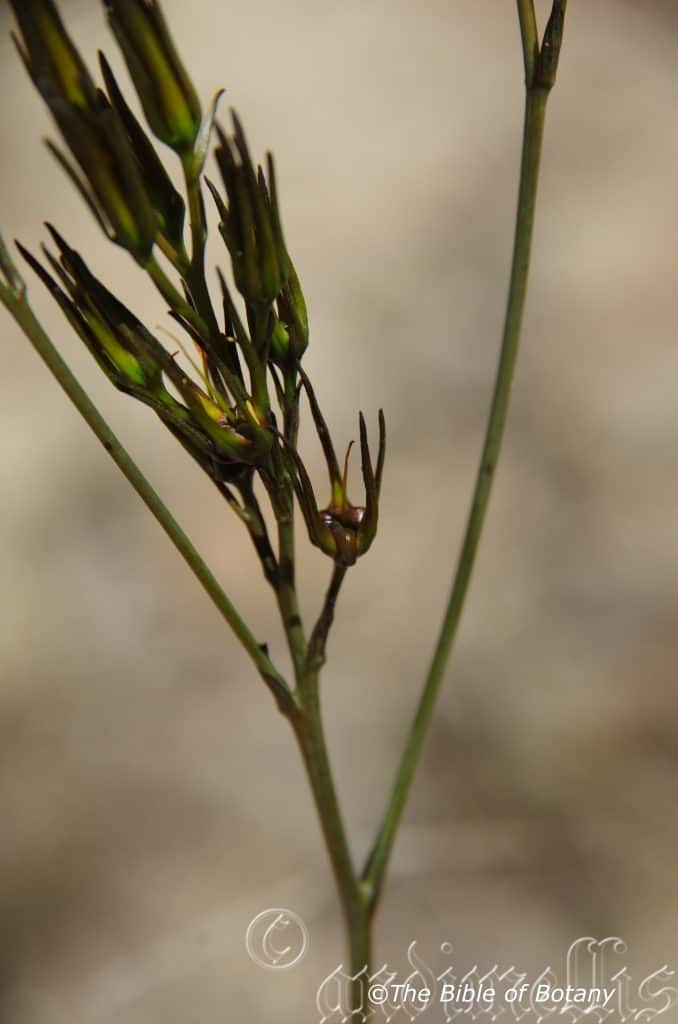
Author’s Garden The Pinnacles NSW
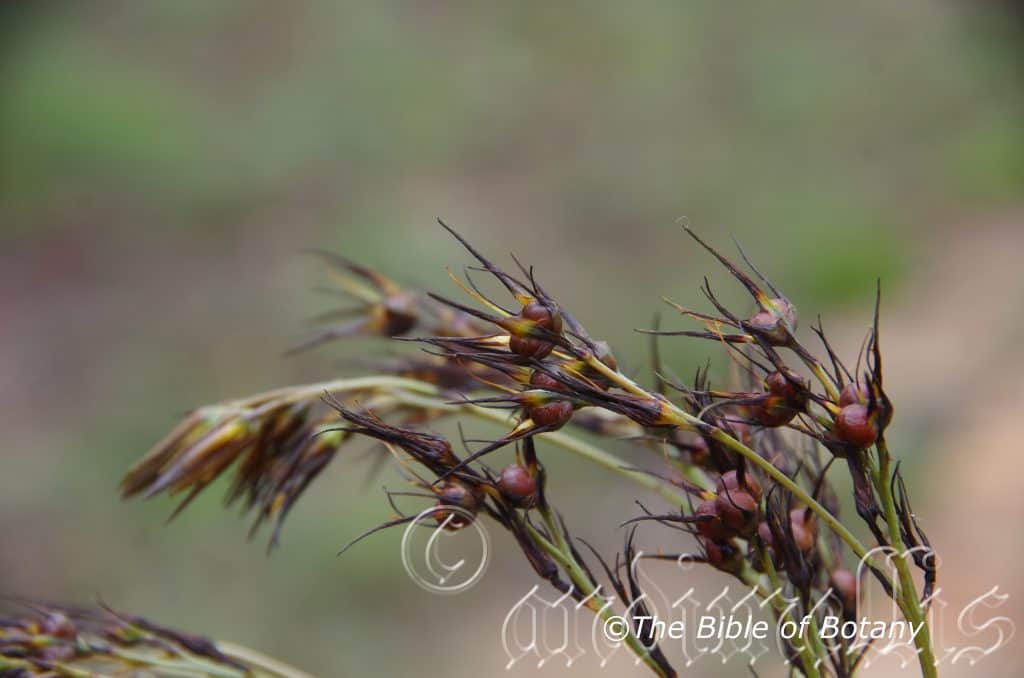
Author’s Garden The Pinnacles NSW
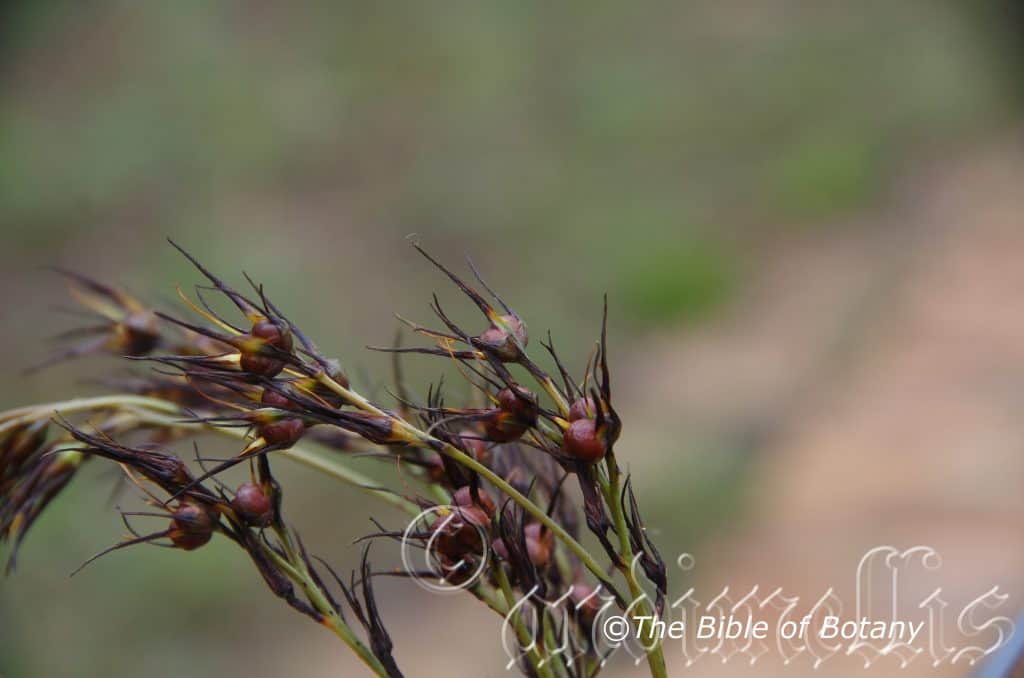
Author’s Garden The Pinnacles NSW
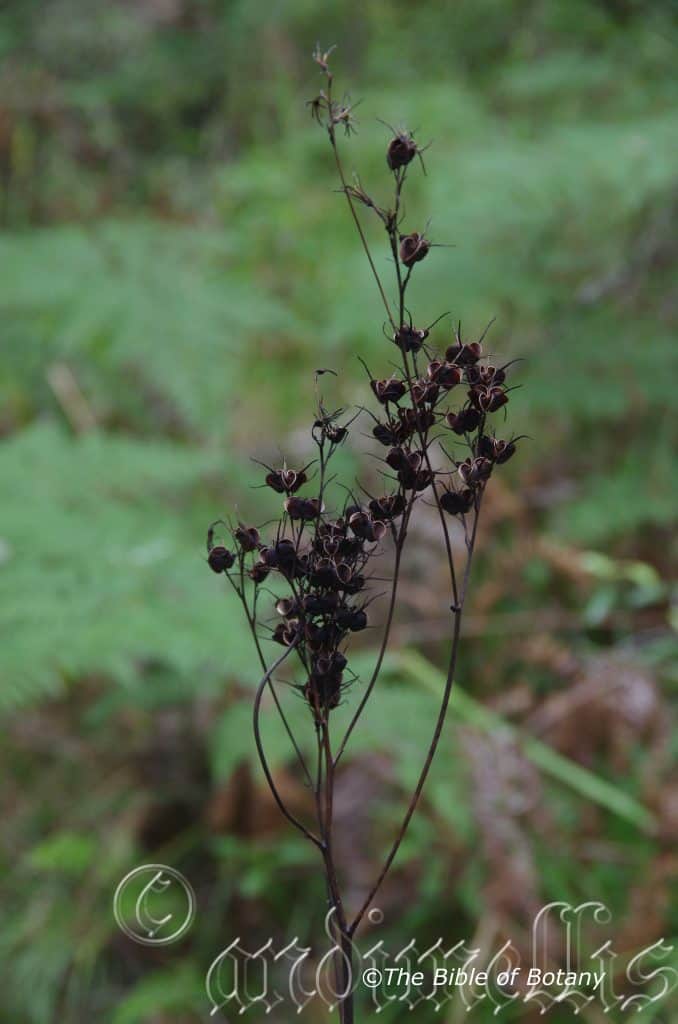
Pillar Valley NSW
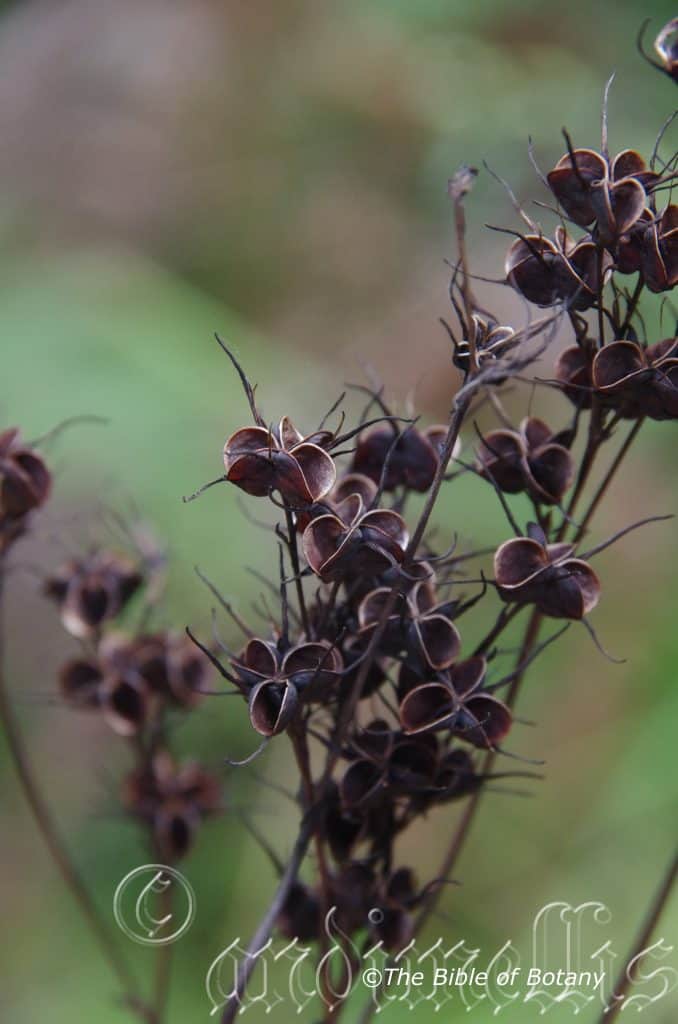
Pillar Valley NSW
Haemodorum austroqueenslandicum
Classification
Unranked: Monocots
Unranked: Commelinds
Order: Commelinales
Family: Haemodoraceae
Genus: From Haimatikos, which is Ancient Greek or Haemo, which is Latin for blood or blood red in colour and Doron, which is Ancient Greek for a gift. It refers to roots, stems or roots, which ooze a deep red to deep orange-red sap.
Specie: From Terra Australis, which is Latin for land of the south and Queenslandica, which is Latinized for Queensland. It refers to plants, which were first discovered from Queensland in the land down under.
Sub specie:
Common Name: Bloodroot.
Distribution:
Haemodorum austroqueenslandicum is found south and east from the Byfield National Park, Blackdown National Park and the Carnarvon National Park in central coastal Queensland to Hat Head in northern coastal New South Wales. It is found on the western slopes and on the Great Dividing Range east to the coast.
https://avh.ala.org.au/occurrences/search?taxa=Haemodorum+austroqueenslandicum#tab_mapView
Habitat Aspect Climate:
Haemodorum austroqueenslandicum prefers full sunlight to light dappled shade. It grows in dry eucalypt forests in shallow depressions, moist Eucalyptus forests and moist coastal heaths. The altitude ranges from 1 meter ASL to 750 meters ASL.
The temperatures range from minus 4 degrees in August to 38 degrees in January.
The rainfall ranges from lows of 600mm to 2400mm average per annum. Lower rainfall areas often have orographic precipitation.
Soil Requirements:
Haemodorum austroqueenslandicum prefers course sands, fine fatty sandy loams to light clays or heavy silty alluvial. The soils are usually derived from decomposed sandstones or at times granite. The soil’s pH ranges from 5pH to 6pH. It is tolerant of waterlogged soils. Non saline soils to the higher end of moderately saline soils are tolerated as are salt laden winds.
Height & Spread:
Wild Plants: 0.8m to 1.8m by 0.25m to 0.4m when in flower.
Characteristics:
Haemodorum austroqueenslandicum is an open tufted perennial with short rhizomes. The erect, terete culms measure 350mm to 700mm in length by 1mm to 1.5mm diameter. The slender culms are scabrous.
The 3 to 9 linear leaves of Haemodorum austroqueenslandicum measure 350mm to 700mm in length by 1.5mm to 7mm in width. The chartaceous appressed sheaths are yellow-brown and glabrous while the ligules are retuse to obtuse often with a retuse tip. The bases of the leaves are clasping while the apexes are tapering-acute. The oblong ligule has a broad acute apex and measures 3mm to 5mm in length. The concolourous laminas are deep grass-green aging to yellow-brown and semi glossy. The midrib is prominent on the lower lamina and is not visible from the upper lamina as are the 2 parallel veins. The margins are entire.
The inflorescences are narrow erect open panicles which are often branched. The panicles have 4 to 10 individual black to deep brown flowers that measure 9mm to 12mm in length.
The black bracteoles are opaque with faint to obscure veins on the lower surfaces while the margins are similar. The upper bracteoles are acute to narrow obtuse and measure 2.5mm to 3mm in length.
The 3 outer and 3 inner deep chocolate to black tepals are similar. The broad rhomboidal tepals 3mm to 5mm in length with a long aristate apex that measure 6mm to 9mm in length.
The 3 white stamens are born from just below the middle of the tepals and measure 2.7mm to 3mm in length. The versatile anthers measure 2.7mm to 3mm in length. The white style is trifid and measures 5mm to 7mm in length. The flowers appear from late September to early February.
The orbicular fruits of Haemodorum austroqueenslandicum are capsules. The faintly rugulose capsules measure 4mm to 6.5mm in length by 4mm to 6mm in diameter. The green capsules turn brown to deep chocolate brown almost black when ripe. The black semi glossy seeds are obloidal.
Wildlife:
Haemodorum austroqueenslandicum’s wildlife is unknown to the author.
Cultivation:
Haemodorum austroqueenslandicum are unusual flowering plants for landscaping projects where the soils are of a medium to heavy texture and continual soil moisture is available. In cultivation it grows 1 meter to 1.5 meters in height by 500mm to 700mm in diameter when grown in an open situation in semi shaded or full sun.
If it is placed around a sunny pool, sunny courtyards or other confined spaces then plant them in small groups of 3 to 5 in close proximity for a natural look against walls to maintain the hard lines and a strong silhouette.
Using rocks and small boulders in a large rockery can be enhanced by the vertical lines especially when in flower. Here they’re best if scatter planted singularly between very small annuals or perennials. If companion plants are sought then the choice of plants to use is limited by size not colour as the deep brown to black spikes, bracts, flowers and capsules offer great contrast that few other plants can offer. Some plants that come instantly to mind would be Helianthus for a smaller plant with strong contrasting foliage or Hibbertia linearis, Hibbertia obtusifolia, Lechenaultia formosa, Lechenaultia biloba for something a little different. Others that most people would not normally consider but would be worthwhile trying would be Viola betonicifolia, Ranunculus plebeius or Zanthoxylum brachyacanthum if it is not sitting in the water and do not forget to leave plenty of space between the plants to give an open expansive look.
Haemodorum austroqueenslandicum is not the plant to grow in a heath garden as they will be overpowered and lost amongst the other foliages. Overcrowding will do them an injustice and leave the gardener very disillusioned. Treat the plants as annuals.
Propagation:
Seeds: Collecting seeds from mature plants of Haemodorum austroqueenslandicum is not difficult but the collector must be vigilant as the capsules will open very quickly and seed dispersal is over in a matter of a couple of days to a week when fully ripe. The fresh seeds can be sown directly into a seed raising mix however better; more even germination is gained if the seeds are stratified for a short period and sown in spring. This can be achieved by placing the seeds in a paper bag in the vegetable crisper for a few weeks prior to sowing. Cover the seeds to a depth of 2mm. Seeds usually germinate rapidly with a strike rate of over 80mm.
When the seedlings are 20mm to 30mm tall, prick them out and plant them into 50mm native tubes using a good quality mix.
Once the seedlings reach 50mm in height they can be repot for indoor use or 100mm to 150mm in height plant them out into their permanent position.
Fertilize using seaweed, fish emulsion or organic chicken pellets soaked in water on an alternate basis. Fertilize every two months until the plants are established then twice annually in early September or March to maintain health, vitality and better flowering.
Further Comments from Readers:
Hi reader, it seems you use The Bible of Botany a lot. That’s great as we have great pleasure in bringing it to you! It’s a little awkward for us to ask, but our first aim is to purchase land approximately 1,600 hectares to link several parcels of N.P. into one at The Pinnacles NSW Australia, but we need your help. We’re not salespeople. We’re amateur botanists who have dedicated over 30 years to saving the environment in a practical way. We depend on donations to reach our goal. If you donate just $5, the price of your coffee this Sunday, We can help to keep the planet alive in a real way and continue to bring you regular updates and features on Australian plants all in one Botanical Bible. Any support is greatly appreciated. Thank you.
In the spirit of reconciliation we acknowledge the Bundjalung, Gumbaynggirr and Yaegl and all aboriginal nations throughout Australia and their connections to land, sea and community. We pay our respect to their Elders past, present and future for the pleasures we have gained.
Haemodorum planifolium
Classification
Unranked: Monocots
Unranked: Commelinids
Order: Commelinalesn
Family: Haemodoraceae
Genus: From Haimatikos, which is Ancient Greek or Haemo, which is Latin for blood or blood red in colour and Doron, which is Ancient Greek for a gift. It refers to roots, stems or roots, which ooze a deep red to deep orange-red sap.
Specie: From Plānum, which is Latin for flat or level and Folium, which is Latin for foliage. It refers to the laminas, which are flat, without folds, pleats or undulations.
Sub specie:
Common Name: Bloodroot.
Distribution:
Haemodorum planifolium is found in 2 disjunct populations south from Stanthorpe in southern Queensland to Walcha and south from north of New Castle to Ballalaba on the Shoalhaven River in southern coastal New South Wales. It is found on and east of the Great Dividing Range. There is a population between these 2 populations on Diamond Head indicating the specie maybe found continuously from southern Queensland to southern New South Wales.
https://avh.ala.org.au/occurrences/search?taxa=haemodorum+planifolium#tab_mapView
Habitat Aspect Climate:
Haemodorum planifolium prefers full shade to dappled sunlight. It grows in dry eucalypt forests in shallow depressions, dry woodlands and drier coastal heaths. The altitude ranges from 5meter ASL to 850 meters ASL.
The temperatures range from minus 5 degrees in August to 36 degrees in January.
The rainfall ranges from lows of 650mm to 1250mm average per annum.
Soil Requirements:
Haemodorum planifolium usually prefers sands, sandy loams to fine fatty sandy loams or at times podzolic soils. It grows on soils mainly derived from partially decomposed and decomposed coarse to very fine grained sandstone and granite and accumulated sands. The soil’s pH ranges from 5pH to 6pH. It is tolerant of seasonal waterlogged soils. Non saline soils to moderately saline and possibly the low end of very saline soils are tolerated.
Height & Spread:
Wild Plants: 0.6m to 1.3m by 0.25m to 0.5m.
Characteristics:
Haemodorum planifolium is an open tufted perennial with short rhizomes. The erect, terete culms measure 350mm to 500mm in length by 1mm to 1.5mm diameter. The slender culms are scabrous.
The 5 to 8 linear leaves measure 250mm to 1000mm in length by 2mm to 12mm in width. The bases of the cauline leaves are clasping while the apexes are tapering-acute. The clasping lower sections of the laminas are like appressed sheaths. The concolourous laminas are mid green, glabrous and semi glossy. The midrib and 2 parallel veins are faintly prominent on the lower lamina and are not visible from the upper lamina. The margins are entire.
The inflorescences are narrow erect tight corymbs which are disjunct branched. The corymbs have 3 to 5 individual black to deep brown flowers that measure 11mm to 17mm in length.
The black bracteoles are opaque, deep brownish-black and glossy with faint to obscure veins on the lower surfaces while the margins are similar. The upper bracteoles are acute and measure 3mm to 8mm in length.
The 3 outer and 3 inner tepals are deep chocolate to black glossy while the outer tepals are similar but slightly shorter than the inner tepals. The broad rhomboidal tepals 4mm to 6mm in length that taper to a long aristate apex that measure 7mm to 10mm in length.
The 3 filiform orange stamens are born from just below the middle of the tepals and measure 3mm to 5mm in length. The versatile anthers measure 3mm to 5mm in length. The orange-brown style measures 5mm to 7mm in length. The flowers appear from late September to early February.
The fruits are orbicular capsules. The faintly rugulose capsules measure 5mm to 11mm in length by 5mm to 10.5mm in diameter. The green capsules turn deep brown to deep chocolate brown and glossy when ripe. The black strongly rugulose seeds are obloidal and measure 4.5mm to 6mm in length by 2.5mm to 3.5mm in width.
Wildlife:
Haemodorum planifolium wildlife is unknown to the author.
Cultivation:
Haemodorum planifolium are unusual flowering plants for landscaping projects where the soils are of a medium to heavy texture and continual soil moisture is available. In cultivation it grows 300mm to 450mm in height by 250mm to 300mm in diameter when grown in a more open situation in semi shaded.
If it is placed around a sunny pool, sunny courtyards or other confined spaces then plant it in small groups of 3 to 5 in close proximity for a natural look against walls to maintain the hard lines and a strong silhouette.
Using rocks and small boulders in a large rockery can be enhanced by the vertical lines especially when in flower. Here they’re best if scatter planted singularly between very small annuals or perennials. If companion plants are sought then the choice of plants to use is limited by size not colour as the deep brown to black spikes, bracts, flowers and capsules offer great contrast that few other plants can offer. Some plants that come instantly to mind would be Helianthus for a smaller plant with strong contrasting foliage or Hibbertia linearis, Hibbertia obtusifolia, Lechenaultia formosa, Lechenaultia biloba for something a little different. Others that most people would not normally consider but would be worthwhile trying would be Viola betonicifolia, Ranunculus plebeius or Zanthoxylum brachyacanthum if it is not sitting in the water and do not forget to leave plenty of space between the plants to give an open expansive look.
Haemodorum planifolium is not the plant to grow in a heath garden as it will be overpowered and lost amongst the other foliages. Overcrowding will do them an injustice and leave the gardener very disillusioned, however if 4 or 5 are planted close together with a wide space surrounding them will do them justice. Treat the plants as annuals
Propagation:
Seeds: Collecting seeds from mature plants of Haemodorum planifolium is not difficult but the collector must be vigilant as the capsules will open very quickly and seed dispersal is over in a matter of a couple of days to a week when fully ripe. The fresh seeds can be sown directly into a seed raising mix however better; more even germination is gained if the seeds are stratified for a short period and sown in spring. This can be achieved by placing the seeds in a paper bag in the vegetable crisper for a few weeks prior to sowing. Cover the seeds to a depth of 2mm. Seeds usually germinate rapidly with a strike rate of over 80mm.
When the seedlings are 20mm to 30mm tall, prick them out and plant them into 50mm native tubes using a good quality mix.
Once the seedlings reach 50mm in height they can be repot for indoor use or 100mm to 150mm in height plant them out into their permanent position.
Fertilize using seaweed, fish emulsion or organic chicken pellets soaked in water on an alternate basis. Fertilize every two months until the plants are established then twice annually in early September or March to maintain health, vitality and better flowering.
Further Comments from Readers:
Hi reader, it seems you use The Bible of Botany a lot. That’s great as we have great pleasure in bringing it to you! It’s a little awkward for us to ask, but our first aim is to purchase land approximately 1,600 hectares to link several parcels of N.P. into one at The Pinnacles NSW Australia, but we need your help. We’re not salespeople. We’re amateur botanists who have dedicated over 30 years to saving the environment in a practical way. We depend on donations to reach our goal. If you donate just $5, the price of your coffee this Sunday, We can help to keep the planet alive in a real way and continue to bring you regular updates and features on Australian plants all in one Botanical Bible. Any support is greatly appreciated. Thank you.
In the spirit of reconciliation we acknowledge the Bundjalung, Gumbaynggirr and Yaegl and all aboriginal nations throughout Australia and their connections to land, sea and community. We pay our respect to their Elders past, present and future for the pleasures we have gained.
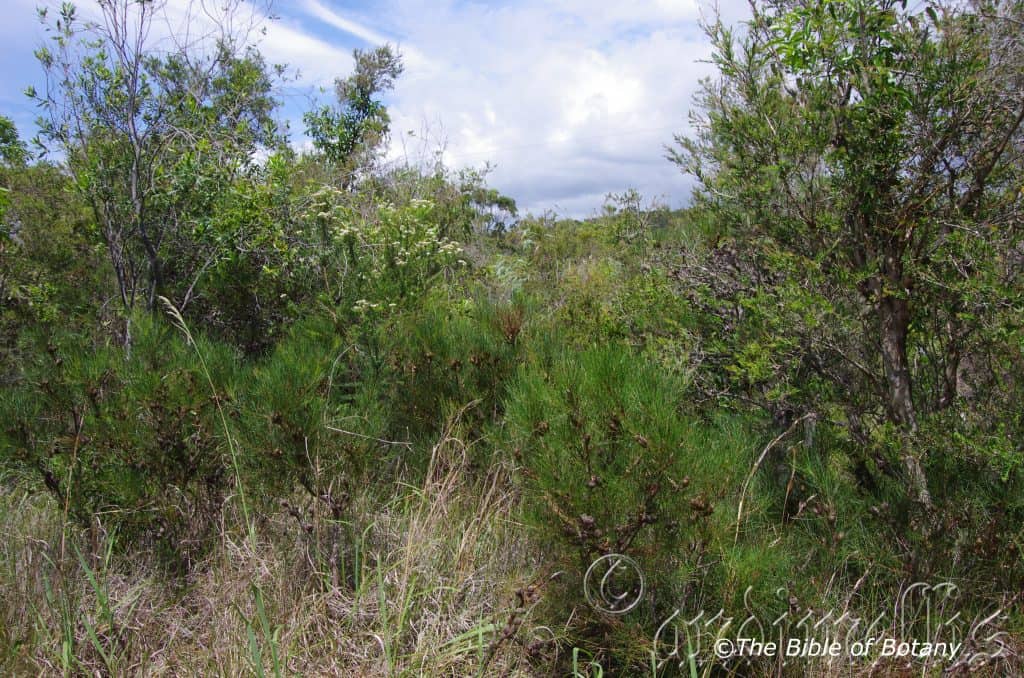
Boorkoom Yuraigir National Park NSW
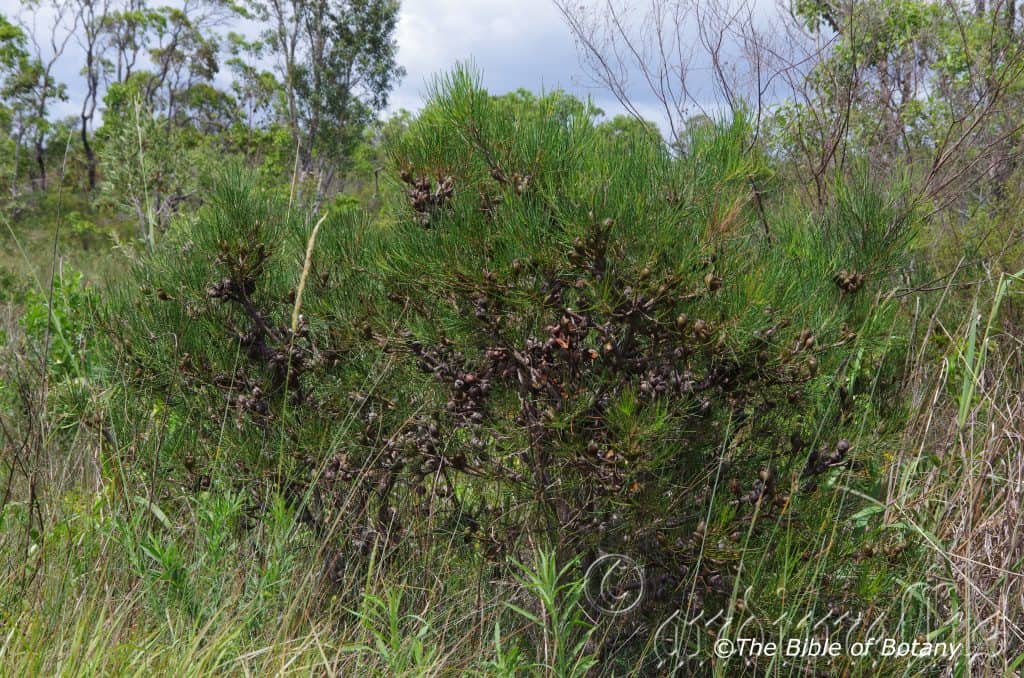
Boorkoom Yuraigir National Park NSW
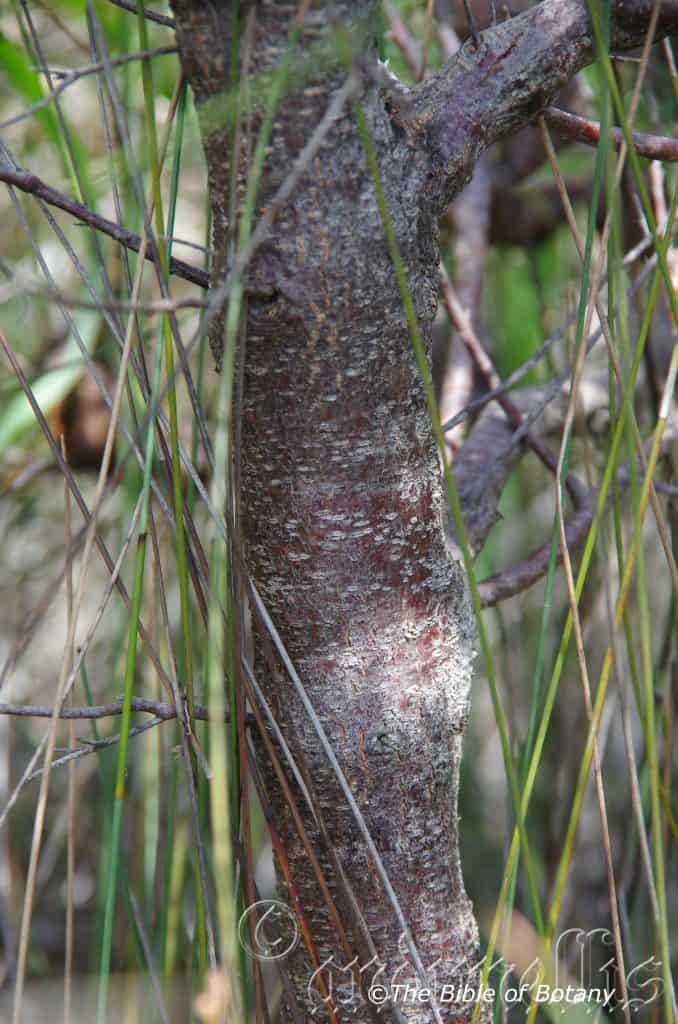
Boorkoom Yuraigir National Park NSW
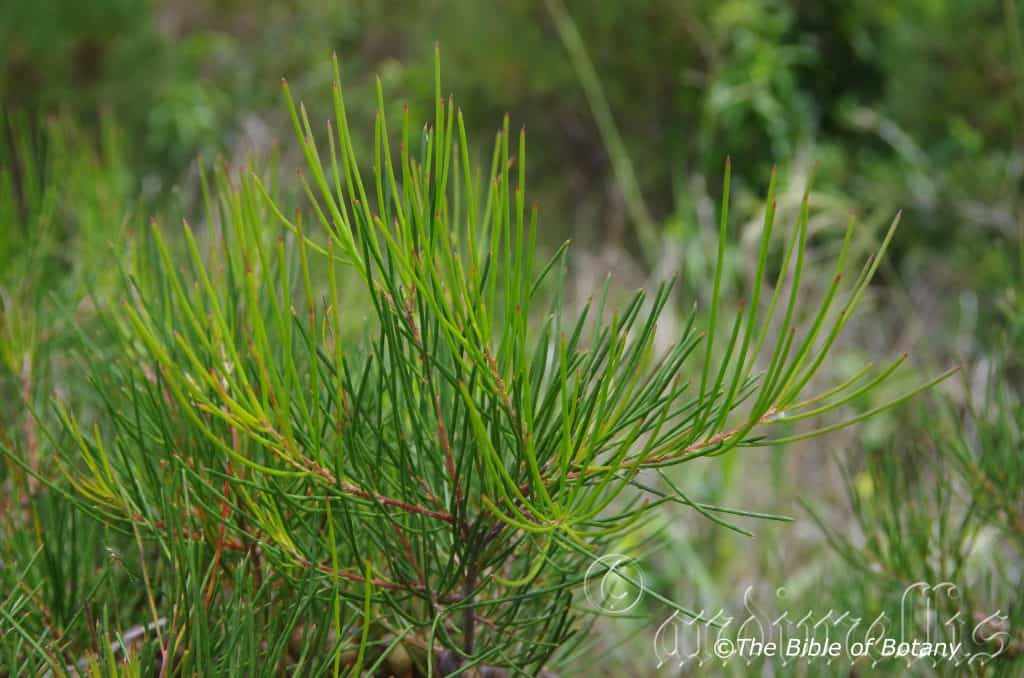
Boorkoom Yuraigir National Park NSW
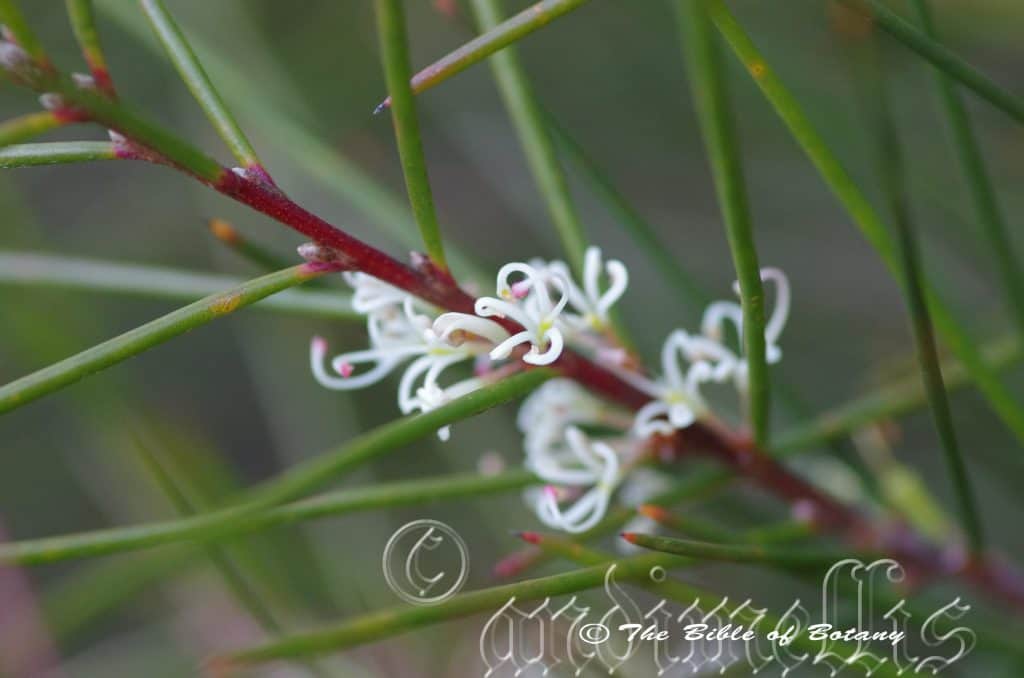
NCBG Coffs Harbour NSW
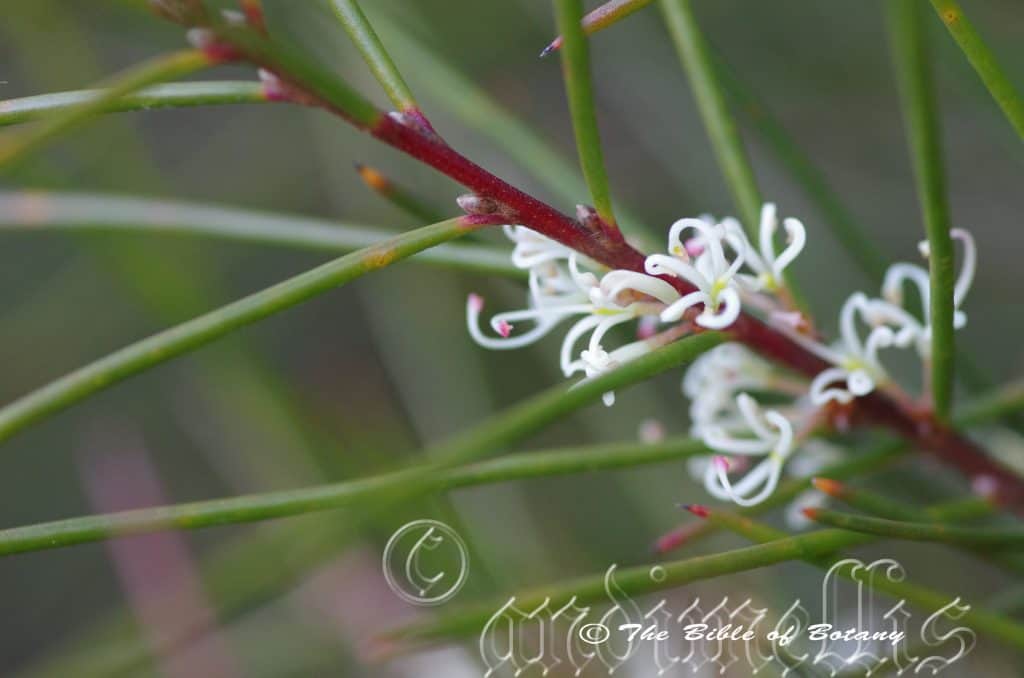
NCBG Coffs Harbour NSW
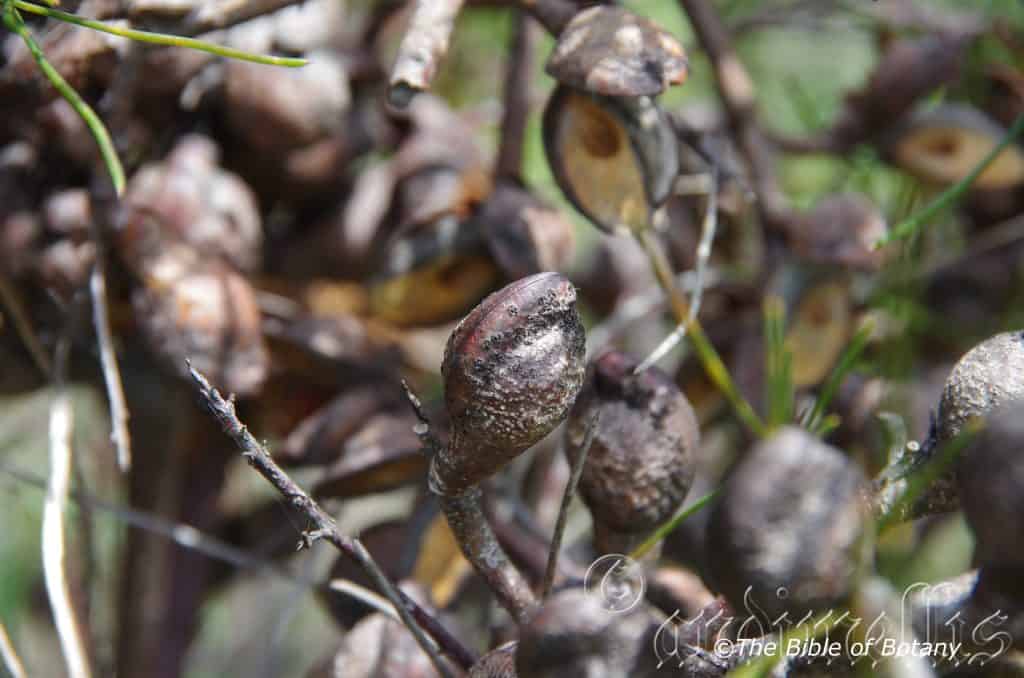
Boorkoom Yuraigir National Park NSW
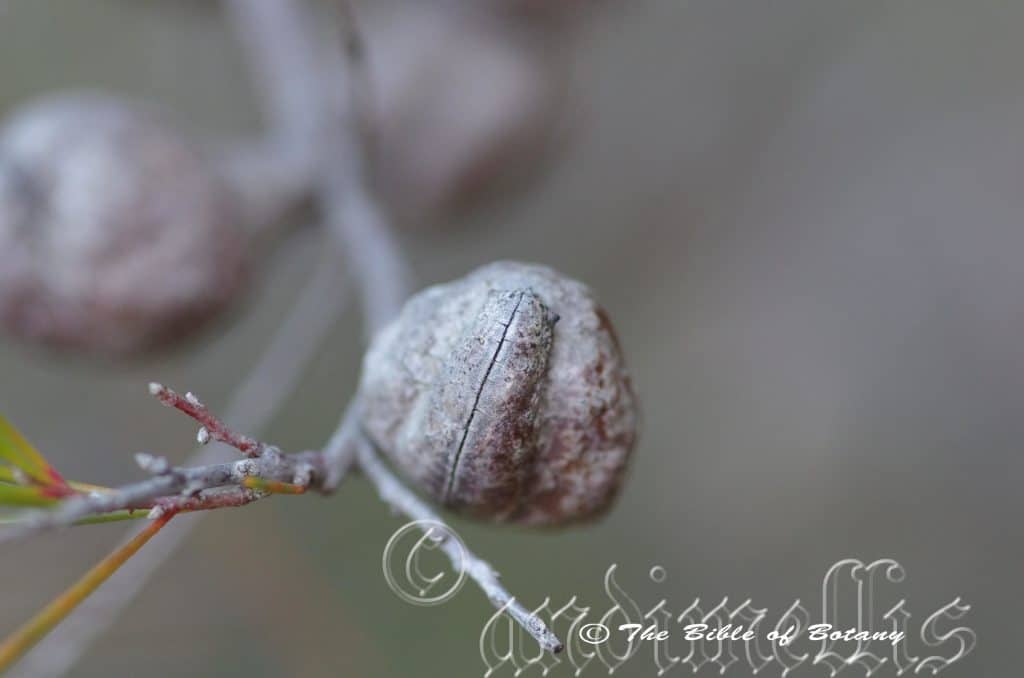
Boorkoom Yuraigir National Park NSW
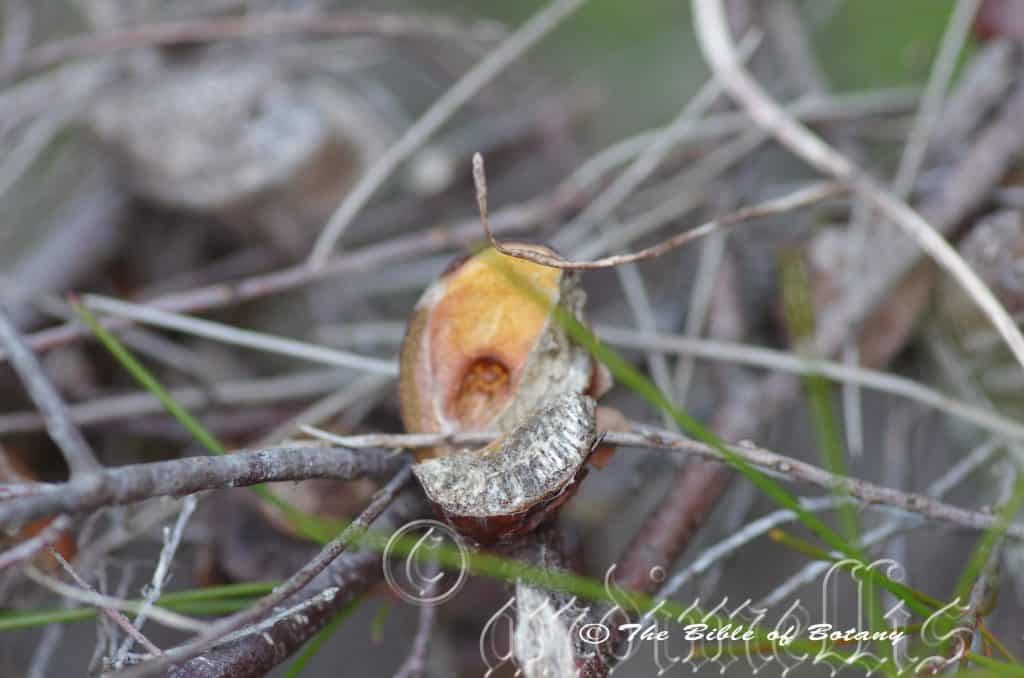
Boorkoom Yuraigir National Park NSW
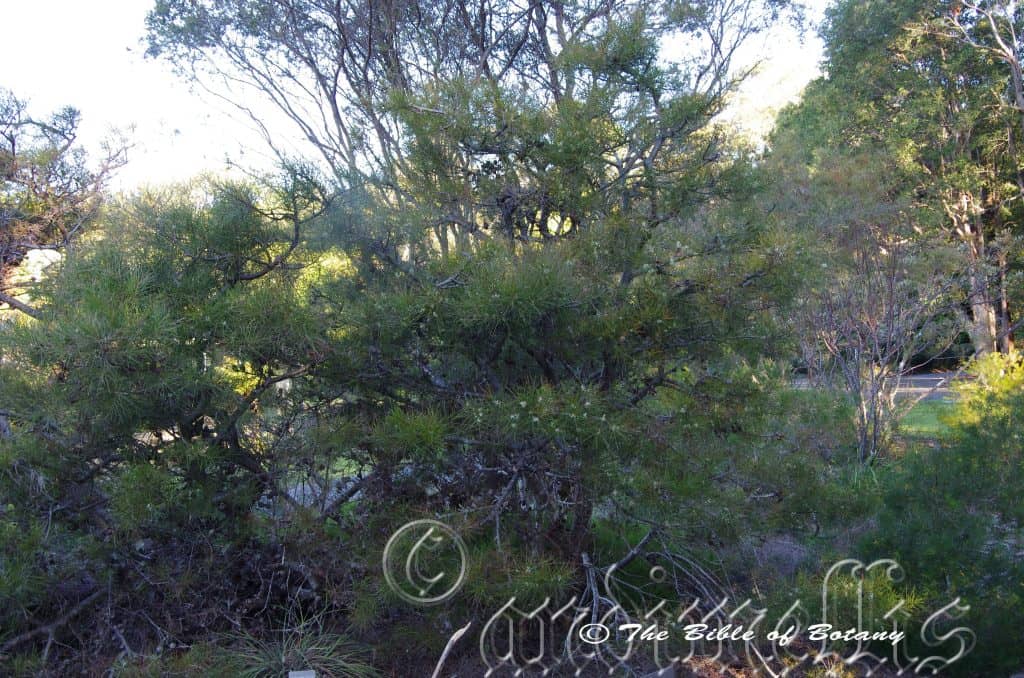
NCBG Coffs Harbour NSW
Hakea actites
Classification
Unranked: Eudicots
Order: Proteales
Family: Protaleacea
Genus: Is named in honour of Barron von Hake; 1745-1818, who was a German councillor and patron of botany.
Specie: From Actinos, which is Ancient Greek for bearing rays. It refers to the rays on a flower, which are very prominent.
Sub species:
Common Name: Woolgoolga Hakea.
Distribution:
Hakea actites is an endemic species to north eastern New South Wales from Woolgoolga to Minnie waters along the coast and in the Pyriformis Floral Reserve at the top of the Glenreagh Cliffs.
https://avh.ala.org.au/occurrences/search?taxa=Hakea+actites#tab_mapView
Habitat Aspect Climate:
Hakea actites prefers full sun or light dappled shade. It grows in open woodlands, heaths, wallums or swamps. Well rounded shrub with needle like foliage and white flowers. The altitude ranges from 5 meters ASL to 400 meters ASL.
The temperatures range from 4 degrees in July to 36 degrees in January.
The rainfall ranges from lows of 800mm to an average of 1600mm annually.
Soil Requirements:
Hakea actites prefers skeletal sands to sandy loams. The soils are derived from decomposed sandstones. The soils pH varies from 5.5pH through to a 7pH. It does not tolerate waterlogged soils. Non saline soils to very saline soils are tolerated as are salt laden winds.
Height & Spread:
Wild Plants: 1m to 5m by 1m to 2m.
Characteristics:
The main branches are deep brown and slightly scabrous. The branchlets are glossy brown turning green towards the apex. The apex is sparsely to densely cover in rusty brown tomentose hairs. The multi-stemmed shrubs form a lignotuber on three or four year old plants.
The alternate terete leaves measure 35mm to 135mm in length by 0.8mm to 1.3mm in width. The bases sessile and flattens out where it attaches itself to the stem while the apexes tapers to a long 1mm to 2mm mucronate point. The concolourous, laminas are glabrous and blue-green. The apex or the leaves, point towards the apex of the branchlets.
The inflorescence is a cluster which is born from the leaf axils. The clusters have 1 to 6 flowers. The perianth and style are the most prominent parts of the flower. The individual perianths are variable white to a very pale pink at the base and turn white at the limbs. The irregular perianths are glabrous externally and internally and measure 3mm to 4.5mm in length. The swollen rachis are covered in rusty-brown tomentose hairs while the pedicels are covered in rusty-brown pulverulent hairs and measure 1.8mm to 3mm in length.
The glabrous style is white at the base through to the stigma. The oblique, white pollen presenter is a large disc. The style and ovary measure 6.5mm to 8mm in length. The lateral style is glabrous. The flowers appear from May to September.
The fruit is an ovoid to obovoid woody follicle. The follicles are a dull green turning a red-brown as they ripen with a very short beak. It is wrinkled, resinous, semi glossy and glabrous. They measure 20mm to 35mm in length by 16mm to 25mm in width. The black ovoid seeds measure 8m to 10mm in length by 3mm to 5mm in width. It is surrounded on 2 sides by a 2mm black wing which extends to a 10mm to 12mm long tail.
Wildlife:
Hakea actites attracts the small stingless native bees, Austroplebeia and Tetragonula.
Cultivation:
Hakea actites is a dense small shrub that looks similar to a dwarf pine tree. It is very suitable for small gardens right through to the largest garden, in semi-arid, temperate or sub-tropical zones. As garden subjects they will grow from 2 meters to 3 meters in height by 1.5 meters to 2 meters in diameter when grown in the open. Light tip pruning will help induce better lateral growth and which in turn will produce more flowers. Plants produce a lignotuber and can be cut back hard every 3 or 4 years after they reach their full height. It is fast growing, drought tolerant once established and is cold tolerant to temperatures as low as minus 5 degrees. It can be tip pruned if a smaller shrub is required. It responds well to pruning recovering quickly and often increasing the number of flowers in the following season.
It is most suitable for use around rockeries, along sandy banks or along drive ways or shelter belts for small native animals.
Two, three or four planted back from a bend will become a very strong focal point when in flower gain a lot of attention whether you are coming or going because of the fresh clean look of the foliage even in the driest of times. Place it in the mid ground with large leaf, or fine leaf ground covers and very small shrubs or annuals in front. To the rear, use large leaf taller plants. Plants with white, cream or pale yellow flowers can be used in both the foreground and background.
Hakea actites looks great in a medium or large rockery as the center of attention. Try planting 2 or 3 close together on one side and two on the other side but a little closer to the center for balance. Prune them so they have an undulating look as you move around the bed. In front of this plant out Anigozanthos or Dianella but not both as they tend to look weedy together however they could be planted in groups separated by a prostrate Grevillea like Grevillea thelemanniana.
Propagation:
Seeds: Fresh seeds of Hakea actites can be removed from the follicles by placing the follicles in a hot oven after it has been turned off. A good time to do this is after the evening meal has been prepared. The follicles will usually open up after one or two days. Another method is to place them in a paper bag and leave the in the sun for 4 days to a week.
The seeds can be sown directly into a seed raising mix immediately after the last frosts have passed. Cover them with 5mm of fine sand and keep moist not wet. Place the tray in a warm sunny position. When the seedlings are 25mm to 50mm tall, prick them out and plant them into 50mm native tubes using a good organic mix.
Once the seedlings reach 150mm to 200mm in height, nip the tips out before planting them out into their permanent position.
Fertilize using seaweed, fish emulsion or organic chicken pellets soaked in water on an alternate basis. Fertilize every two months until the plants are established then twice annually in early September or March to maintain health, vitality and better flowering. Avoid synthetic fertilizers as they will most likely contain calcium and phosphorous which are toxic to most Proteaceae.
Further Comments from Readers:
Hi reader, it seems you use The Bible of Botany a lot. That’s great as we have great pleasure in bringing it to you! It’s a little awkward for us to ask, but our first aim is to purchase land approximately 1,600 hectares to link several parcels of N.P. into one at The Pinnacles NSW Australia, but we need your help. We’re not salespeople. We’re amateur botanists who have dedicated over 30 years to saving the environment in a practical way. We depend on donations to reach our goal. If you donate just $5, the price of your coffee this Sunday, We can help to keep the planet alive in a real way and continue to bring you regular updates and features on Australian plants all in one Botanical Bible. Any support is greatly appreciated. Thank you.
In the spirit of reconciliation we acknowledge the Bundjalung, Gumbaynggirr and Yaegl and all aboriginal nations throughout Australia and their connections to land, sea and community. We pay our respect to their Elders past, present and future for the pleasures we have gained.
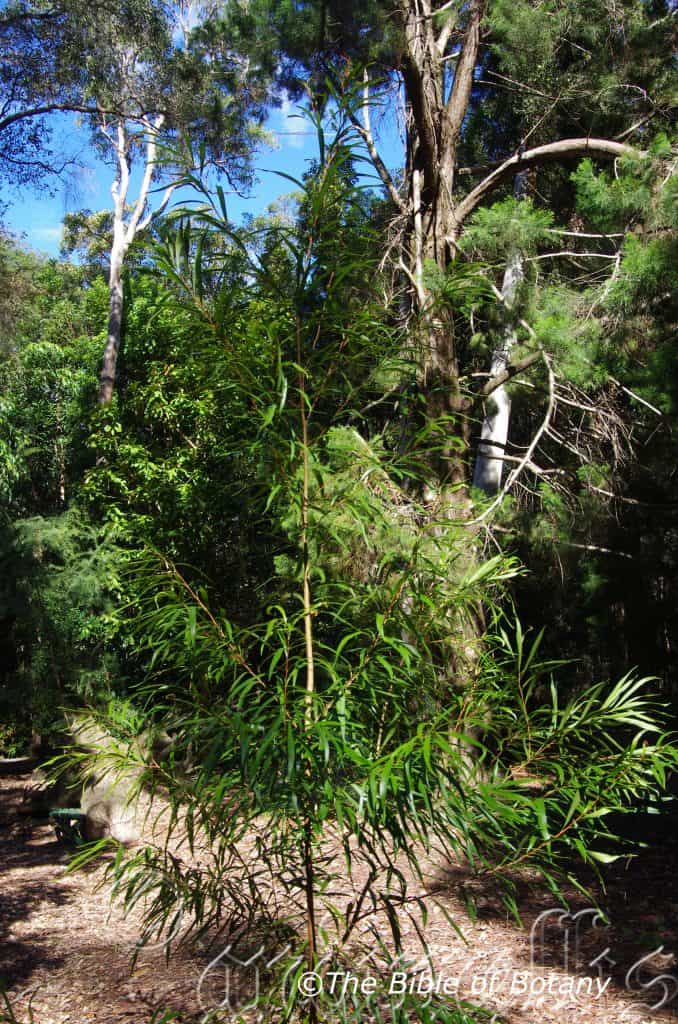
NCBG Coffs Harbour NSW
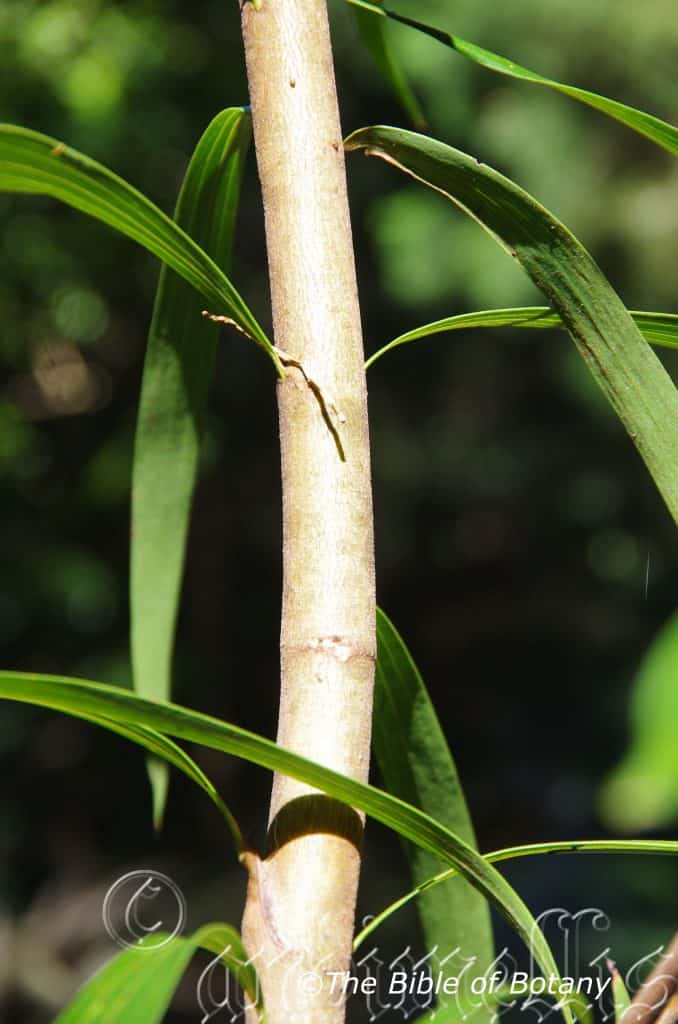
NCBG Coffs Harbour NSW
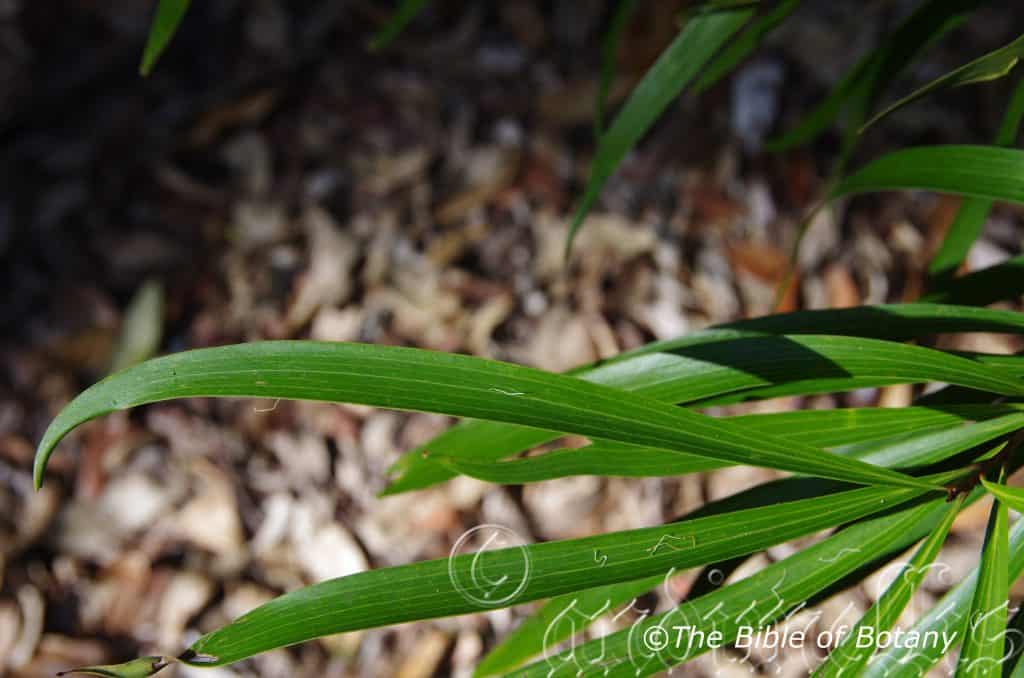
NCBG Coffs Harbour NSW
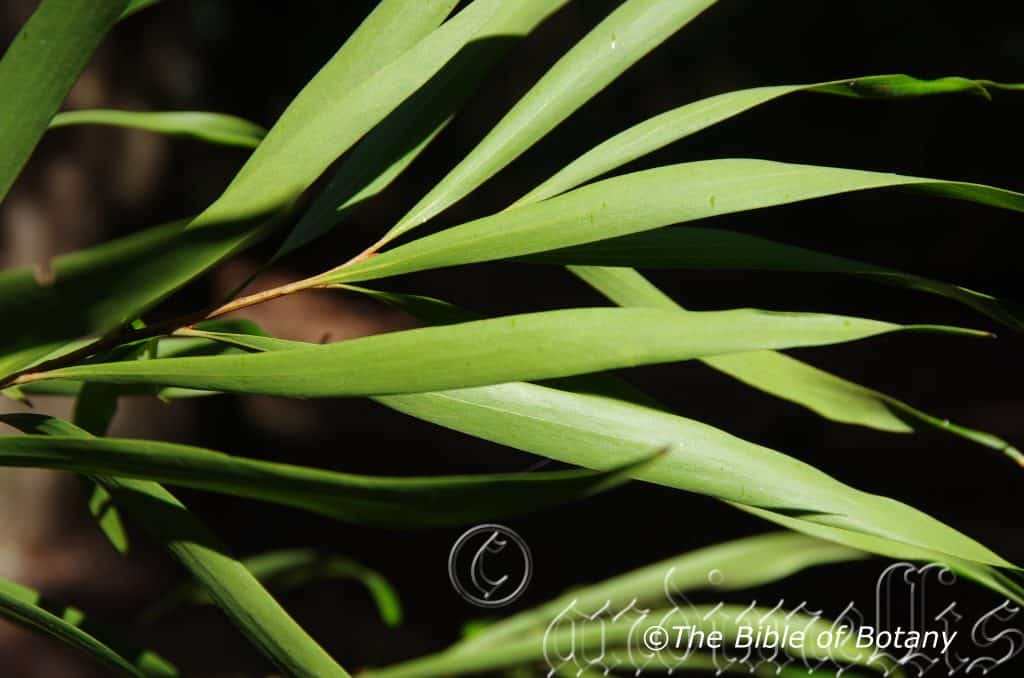
NCBG Coffs Harbour NSW
Hakea archaeoides
Classification:
Unranked: Eudicots
Order: Proteales
Family: Protaleacea
Genus: Is named in honour of Barron von Hake; 1745-1818, who was a German councillor and patron of botany.
Specie: From arkhaiología, which is Ancient Greek for ancient or primordial and -eidḗs, which is Ancient Greek or later -oīdes, which is Latin for alike or similar to. It refers to plants which have many similar characteristics to other primitive plants.
Sub species:
Common Name:
Distribution:
Hakea archaeoides is restricted to a small area on the Great Dividing range west of Crescent Head south to north of Taree. There is a disjunct population further north towards Guyra.
https://avh.ala.org.au/occurrences/search?taxa=Hakea+archaeoides#tab_mapView
Habitat Aspect Climate:
Hakea archaeoides prefers full sun or light dappled shade. It grows in open woodlands, heaths, wallums or swamps. Well rounded shrub with needle like foliage and white flowers. The altitude ranges from 300 meters ASL to 1000 meters ASL.
The temperatures range from minus 6 degrees in July to 36 degrees in January. The rainfall ranges from lows of 800mm to an average of 1600mm annually.
Soil Requirements:
Hakea archaeoides prefers skeletal sands to sandy loams. The soils are derived from partially or completely decomposed sandstones. The soils pH varies from 5.5pH through to a 7pH. It does not tolerate waterlogged soils. Non saline soils to moderately saline soils are tolerated.
Height & Spread:
Wild Plants: 3m to 7m by 2m to 3m.
Characteristics:
Hakea archaeoides’s main branches are pale brown and smooth to slightly scabrous. The stems are pale brown, while the apexes are hoary.
Hakea archaeoides’s alternate narrow elliptic to oblong or narrow lanceolate leaves measure 150mm to 250mm in length by 10mm to 30mm in width. The terete petioles measure 12mm to 18mm in length. The bases taper to the petiole, while the apexes are acute. The concolourous, glabrous laminas are mid green. There are 3 to 5 longitudinal veins, which are slightly prominent on both laminas.
The inflorescence of Hakea archaeoides is an axillary, raceme like conflorescences which is born from the upper leaf axis. The conflorescences have 20 to 60 individual flowers. The terete glabrous rachis measures 40mm to 80mm in length, while the terete glabrous pedicels measure 1.2mm to 2mm in length. The yellowish green perianth is glabrous and measures 8mm to 10mm in length. The red style turns green near the stigma and measures 23mm to 27mm in length. The pollen presenter is an oblique disc. The flowers appear from September to late October.
Hakea archaeoides’s fruit is an ovoid woody, slightly incurved follicle. The glabrous, green follicles turn pale fawn as they ripen and measure 25mm to 25mm in length by 12mm to 15mm in width. The follicles are shortly beaked, while horns are absent. There are 2 black ovoid seeds per follicle.
Wildlife:
Hakea archaeoides attracts the small stingless native bees like Tetragonula carbonaria.
Cultivation:
Hakea archaeoides is an open medium shrub that has a semi pendulous habit. It is very suitable for small gardens right through to the largest garden especially those on steep banks or ridge lines. As a garden subject it will grow from 3 meters to 5 meters in height by 3 meters to 4 meters in diameter when grown in the open. Light tip pruning will help induce better lateral growth, which in turn will produce more flowers in the following season. It is fast growing, drought tolerant once established and is cold tolerant to temperatures as low as minus 7 degrees.
It is most suitable for use around large rockeries, along sandy banks or along drive ways or shelter belts for small native animals.
Hakea archaeoides would benefit from being surrounded with Anigozanthos flavida or Dianella longifolia but not both as they tend to look weedy together however they could be planted in groups separated by a prostrate Grevillea like Grevillea thelemanniana.
Propagation:
Seeds: Fresh seeds of Hakea archaeoides can be removed from the follicles by placing the follicles in a hot oven after it has been turned off. A good time to do this is after the evening meal has been prepared. The follicles will usually open up after one or two days. Another method is to place them in a paper bag and leave the in the sun for 4 days to a week.
The seeds can be sown directly into a seed raising mix immediately after the last frosts have passed. Cover them with 5mm of fine sand and keep moist not wet. Place the tray in a warm sunny position. When the seedlings are 25mm to 50mm tall, prick them out and plant them into 50mm native tubes using a good organic mix.
Once the seedlings reach 150mm to 200mm in height, nip the tips out before planting them out into their permanent position.
Fertilize using seaweed, fish emulsion or organic chicken pellets soaked in water on an alternate basis. Fertilize every two months until the plants are established then twice annually in early September or March to maintain health, vitality and better flowering. Avoid synthetic fertilizers as they will most likely contain calcium and phosphorous which are toxic to most Proteaceae.
Further Comments from Readers:
Hi reader, it seems you use The Bible of Botany a lot. That’s great as we have great pleasure in bringing it to you! It’s a little awkward for us to ask, but our first aim is to purchase land approximately 1,600 hectares to link several parcels of N.P. into one at The Pinnacles NSW Australia, but we need your help. We’re not salespeople. We’re amateur botanists who have dedicated over 30 years to saving the environment in a practical way. We depend on donations to reach our goal. If you donate just $5, the price of your coffee this Sunday, We can help to keep the planet alive in a real way and continue to bring you regular updates and features on Australian plants all in one Botanical Bible. Any support is greatly appreciated. Thank you.
In the spirit of reconciliation we acknowledge the Bundjalung, Gumbaynggirr and Yaegl and all aboriginal nations throughout Australia and their connections to land, sea and community. We pay our respect to their Elders past, present and future for the pleasures we have gained.
Hakea bakeriana
Classification:
Unranked: Eudicots
Order: Proteales
Family: Protaleacea
Genus: Is named in honour of Barron von Hake; 1745-1818, who was a German councillor and patron of botany.
Specie: Is named in honour of Richard Thomas baker; 1854-1941, who was an English born Australian who published more than 100 papers, which included describing many new species of Eucalypts sp..
Sub species:
Common Name: Baker’s Hakea.
Distribution:
Hakea bakeriana is an endemic species to eastern coastal New South Wales south from New Castles to near Glenorie and on the adjacent sandstone plateaus.
https://avh.ala.org.au/occurrences/search?taxa=Hakea+bakeriana#tab_mapView
Habitat Aspect Climate:
Hakea bakeriana prefers full sun or light dappled shade. It grows in open woodlands, in dry sclerophyll scrublands or adjacent to sclerophyll forests on rocky or sandy ridges and rocky outcrops which are seasonally wet. Well rounded shrub with needle like foliage and pink flowers. The altitude ranges from 5 meters ASL to 350 meters ASL.
The temperatures range from 2 degrees in July to 34 degrees in January.
The rainfalls range from lows of 600mm to an average of 1100mm annually.
Soil Requirements:
Hakea bakeriana prefers skeletal sands to sandy loams. The soils are derived from decomposed sandstones. The soils pH varies from 5.5pH through to a 6.5pH. It does not tolerate waterlogged soils. Non saline soils to moderately saline soils are tolerated as are salt laden winds.
Height & Spread:
Wild Plants: 0.8m to 1m by 0.8m to 1.2m.
Characteristics:
The main branches are dull grey to dull brown. The branchlets are glossy brown turning green towards the apex. The apex is sparsely covered in white caduceus hirsute hairs. The multi-stemmed shrubs form a lignotuber on three or four year old plants.
The alternate, terete leaves measure 50mm to 70mm in length by 1mm to 1.8mm in width. The bases are sessile and flattens out where it attaches itself to the stem while the apexes taper to a long 1mm to 1.5mm mucronate point. The lamina is sea blue-green. The leaves point towards the apex of the branchlets.
The inflorescence is a short raceme which is born from the leaf axils or cauliflorous. The 8mm to 12mm long racemes have 6 to 12 flowers. The perianth and style are the most prominent parts of the flower. The individual perianths are variable pale to deep pink or pale crimson externally and are cream internally. The perianth is glabrous externally and internally. They measure 10mm to 15mm in length. The glabrous pedicels measure 8mm to 12mm in length.
The style is deep pink at the base turning cream near the stigma. The oblique pollen presenter is conical and deep pink. The styles and ovaries are glabrous and measure 37mm to 42mm long. The flowers appear from May to September.
The fruit is an ovoid woody follicle. The follicles are a dull green turning a deep red-brown to deep grey as they ripen with a short beak. It is wrinkled, rough, semi glossy, glabrous and tuberculate along the adaxial flange. They measure 50mm to 70mm in length by 30mm to 40mm in width. The black ovoid seeds measure 4mm to 6mm long by 4mm to 5mm wide surrounded on 2 sides by a 5mm black wing extending to a 20mm to 25mm long tail.
Wildlife:
The flowers are a great attraction for small and medium nectar eating birds, butterflies, native bees and native flies.
Cultivation:
Hakea bakeriana is a dense small shrub that looks great in flower. It is very suitable for small gardens right through to the largest garden, in semi-arid, temperate or sub-tropical zones. As garden subjects it will grow from 1 meter to 1.2 meters in height by 1 meter to 1.2 meters in diameter when grown in the open. Light tip pruning will help induce better lateral growth and which in turn will produce more flowers. Plants produce a lignotuber and can be cut back hard every 3 or 4 years after they reach their full height. It can be tip pruned if a smaller shrub is required. They respond well to pruning recovering quickly and often increasing the number of flowers in the following season. It is fast growing, drought tolerant once established and are cold tolerant to temperatures as low as minus 4 degrees.
It is most suitable for use around rockeries, along sandy banks or along drive ways or shelter belts for small native animals.
Two, three or four planted back from a bend will become a very strong focal point when in flower gain a lot of attention whether you are coming or going because of the fresh clean look of the foliage even in the driest of times. Place them in the midground with large leaf, or fine leaf ground covers and very small shrubs or annuals in front. To the rear, use large leaf taller plants. Plants with white, cream or pale yellow flowers can be used in both the foreground and background.
Hakea bakeriana looks great in a medium or large rockery as the center of attention. Try planting 2 or 3 close together on one side and two on the other side but a little closer to the center for balance. Prune them so they have an undulating look as you move around the bed. In front of the Hakea try Anigozanthos or Dianella but not both as they tend to look weedy together however they could be planted in groups separated by a prostrate growing plant.
Propagation:
Seeds: Fresh seed can be removed from the follicles by placing the follicles in a hot oven after it has been turned off. A good time to do this is after the evening meal has been prepared. The follicles will usually open up after one or two days. Another method is to place them in a paper bag and leave the in the sun for 4 days to a week. The seeds can be sown directly into a seed raising mix immediately after the last frosts have passed. Cover them with 5mm of fine sand and keep moist not wet. Place the tray in a warm sunny position. When the seedlings are 25mm to 50mm tall, prick them out and plant them into 50mm native tubes using a good organic mix.
Once the seedlings reach 150mm to 200mm in height, nip the tips out before planting them out into their permanent position.
Fertilize using seaweed, fish emulsion or organic chicken pellets soaked in water on an alternate basis. Fertilize every two months until the plants are established then twice annually in early September or March to maintain health, vitality and better flowering. Avoid synthetic fertilizers as they will most likely contain calcium and phosphorous which are toxic to most Proteaceae.
Further Comments from Readers:
Hi reader, it seems you use The Bible of Botany a lot. That’s great as we have great pleasure in bringing it to you! It’s a little awkward for us to ask, but our first aim is to purchase land approximately 1,600 hectares to link several parcels of N.P. into one at The Pinnacles NSW Australia, but we need your help. We’re not salespeople. We’re amateur botanists who have dedicated over 30 years to saving the environment in a practical way. We depend on donations to reach our goal. If you donate just $5, the price of your coffee this Sunday, We can help to keep the planet alive in a real way and continue to bring you regular updates and features on Australian plants all in one Botanical Bible. Any support is greatly appreciated. Thank you.
In the spirit of reconciliation we acknowledge the Bundjalung, Gumbaynggirr and Yaegl and all aboriginal nations throughout Australia and their connections to land, sea and community. We pay our respect to their Elders past, present and future for the pleasures we have gained.
Hakea bucculenta
Classification:
Unranked: Eudicots
Order: Proteales
Family: Protaleacea
Genus: Is named in honour of Barron von Hake; 1745-1818, who was a German councillor and patron of botany.
Specie: From Bucca, which is Latin for swollen cheeks or full cheeks. It often refers to fruits which have a swollen appearance.
Sub species:
Common Name: Smooth fruited Hakea.
Distribution:
Hakea bucculenta is an endemic species to the far west coast of Western Australia south from the Murchison River to near Geraldton.
https://avh.ala.org.au/occurrences/search?taxa=Hakea+bucculenta#tab_mapView
Habitat Aspect Climate:
Hakea bucculenta prefers full sun. It grows in open mallee heaths or on sandy plain heaths. The altitude ranges from 15 meters ASL to 150 meters ASL.
The temperatures range from 6 degrees in July to 35 degrees in January.
The rainfall ranges from lows of 160mm to an average of 500mm annually.
Soil Requirements:
Hakea bucculenta prefers skeletal sands to sandy loams. The soils are usually derived from decomposed sandstones. The soils pH varies from 5.5pH through to a 6.5pH. It does not tolerate waterlogged soils. Non saline soils to moderately saline soils are tolerated as are salt laden winds.
Height & Spread:
Wild Plants: 1.5m to 4m by 1.5m to 4m. Well rounded shrub with pine needle like leaves and crimson flowers.
Characteristics:
Hakea bucculenta’s is a multi-stemmed Hakea with pale grey to deep grey glabrous stems. The branchlets are pale grey turning green towards the apex. The apex is sparsely covered in white, appressed, caduceus pulverulent to pannate hairs.
Hakea bucculenta’s alternate leaves measure 110mm to 200mm in length by 2mm to 3mm in width. The base is sessile and flattens out where it attaches itself to the stem while the apex tapers to a long 1mm mucronate point. The concolourous laminas are grey-green to deep-green or blue-green to deep green and glabrous. The margins are entire and flat. The mid vein is prominent on the upper lamina and is visible from above.
The inflorescence of Hakea bucculenta is an erect raceme which is born from the leaf axils. The rachis measure 85mm to 135mm in length and have 250 to 450 individual flowers. The perianth and style are the most prominent parts of the flower. The perianths limbs are variable, creamy green to a creamy yellow turning a deep crimson red from the base through to the limbs prior to the style being released. The irregular perianth is glabrous externally and internally. The perianth and lobes measure 4mm to 6mm in length. The lobes are recurved, free and are re-joined at the apex. The pedicels measure 2mm to 3mm in length.
The style is deep crimson red from the base through to the stigma. The erect pollen presenter is yellow. The style and ovary measure 17mm to 22mm in length. The erect style is glabrous. The flowers appear from August to September.
Hakea bucculenta’s fruit is an oblong to tetrahedral woody follicle. The follicles are dull green turning a pale grey-brown as they ripen. It is semi glossy and glabrous and measure 17mm to 25mm in length by 10mm to 15mm in width. The ovoid deep brown to black seeds measure 15mm to 20mm in length by 7mm to 10mm in width. It is surrounded on 1 side by a 4mm black wing which extends into a 10mm to 16mm long tail.
Wildlife:
The flowers of Hakea bucculenta are a great attraction for small and medium nectar eating birds, butterflies, native bees and native flies.
Cultivation:
Hakea bucculenta is a dense shrub that looks great in medium gardens right through to the largest garden, in arid, semi-arid, temperate or sub-tropical zones. As garden subjects it grows to from 3 meters to 4 meters in height by 3 meters to 4 meters in width. Light tip pruning is the only form of pruning which can be done, if flowers are sought after. Unfortunately the flowers are hidden amongst the leaves of the previous season’s growth which makes them difficult to fully appreciate. It is fast growing, drought tolerant once established and are cold tolerant to temperatures as low as 4 degrees. They hold their foliage naturally right down to the ground.
It is most suitable for use around medium to large rockeries, along sandy banks or along drive ways, screens, wind breaks or shelter belts for small native animals. It makes an excellent hedge, screen and wildlife corridors because of their upright bushy growth habit and the abundance of needle like leaves.
In native gardens it can be used for attracting smaller to medium birds like silver eyes. They will seek the protection offered by the dense foliage and use the plants as a regular feed source. Small birds will use them as a corridor and a safe retreat when feeding on smaller shrubs and ground covers.
It is best used adjacent to small areas of bush close to paths or the house so their exquisite flowers can be viewed regularly. It is great in small or large rockeries. Here it can be planted in small groups of 2 or 3 or as a standalone plant to create a harsh barren look with other arid plants. If it is surrounded by shorter plants with fine foliages and small red flowers they will dominate at the center giving height and strength to the bed especially when it are in flower. Do not use plants with large leaves as these will be too overpowering unless it is used as ground covers.
Scatter planted as the sole shrub in a garden with a mass of smaller plants, ground covers and annuals with mixed coloured flowers and foliages will ensure a great display during the winter and spring months. This would be particularly strong, if a mixture of different foliages with different colours and textures are incorporated together. This will give a strong dome affect throughout the garden.
Be sure to plant any plant exactly in the center for a formal look or well off to one side for an informal look. 2 or 3 shrubs close together on one side looks even more spectacular when just a single plant is placed on the other side to give balance to the picture.
Propagation:
Seeds: Hakea bucculenta’s follicles need to be treated to extract the seeds from the follicles. The seeds can be removed from the follicles by placing the follicles in a hot oven after it has been turned off. A good time to do this is after the evening meal has been prepared. The follicles will usually open up after one or two days. Another method is to place them in a paper bag and leave the in the sun for 4 days to a week.
Hakea bucculenta seeds can be sown directly into a seed raising mix immediately after the last frosts have passed. Cover them with 5mm of fine sand and keep moist not wet. Place the tray in a warm sunny position. When the seedlings are 25mm to 50mm tall, prick them out and plant them into 50mm native tubes using a good organic mix.
Once the seedlings reach 150mm to 200mm in height, nip the tips out before planting them out into their permanent position.
Fertilize using seaweed, fish emulsion or organic chicken pellets soaked in water on an alternate basis. Fertilize every two months until the plants are established then twice annually in early September or March to maintain health, vitality and better flowering. Avoid synthetic fertilizers as they will most likely contain calcium and phosphorous which are toxic to most Proteacea
Further Comments from Readers:
Hi reader, it seems you use The Bible of Botany a lot. That’s great as we have great pleasure in bringing it to you! It’s a little awkward for us to ask, but our first aim is to purchase land approximately 1,600 hectares to link several parcels of N.P. into one at The Pinnacles NSW Australia, but we need your help. We’re not salespeople. We’re amateur botanists who have dedicated over 30 years to saving the environment in a practical way. We depend on donations to reach our goal. If you donate just $5, the price of your coffee this Sunday, We can help to keep the planet alive in a real way and continue to bring you regular updates and features on Australian plants all in one Botanical Bible. Any support is greatly appreciated. Thank you.
In the spirit of reconciliation we acknowledge the Bundjalung, Gumbaynggirr and Yaegl and all aboriginal nations throughout Australia and their connections to land, sea and community. We pay our respect to their Elders past, present and future for the pleasures we have gained.
Hakea clavata
Classification:
Unranked: Eudicots
Order: Proteales
Family: Proteaceae
Genus: Is named in honour of Barron von Hake; 1745-1818, who was a German councillor and patron of botany.
Specie: From Clavatum, which is Latin for a club. It refers to organs, which are shaped like a club.
Sub species:
Common Name: Club Leaf Hakea.
Distribution:
Hakea clavata is an endemic species to the southern coast and Islands of Western Australia east from Israelite Bay to Esperance.
https://avh.ala.org.au/occurrences/search?taxa=Hakea+clavata#tab_mapView
Habitat Aspect Climate:
Hakea clavata prefers full sun. It grows on open heath lands, exposed ridge tops or granitic outcrops mainly along the coast and coastal Islands. The altitude ranges from 15 meters ASL to 200 meters ASL.
The temperatures range from 2 degrees in July to 36 degrees in January.
The rainfalls range from lows of 400mm to an average of 800mm annually.
Soil Requirements:
Hakea clavata prefers skeletal sands to sandy loams. The soils are usually derived from decomposed sandstones. The soils pH varies from 5.5pH through to a 6.5pH. It does not tolerate waterlogged soils. Non saline soils to moderately saline soils are tolerated as are salt laden winds.
Height & Spread:
Wild Plants: 0.2m to 2m by 1.5m to 2.5m. Prevailing winds cause the shrubs to grow strongly towards the leeward side.
Characteristics:
Hakea clavata’s main stems are pale creamy grey to creamy tan and glabrous. The branchlets are pale creamy tan turning green towards the apex. The apex is covered in white sericeous hairs. The plants form a small lignotuber below the ground.
Hakea clavata’s alternate leaves are narrow elliptical to obovate or oblong, rounded in cross section and measure 30mm to 65mm in length by 4mm to 8mm in width. The base is attenuate sessile and is swollen at the point of attachment while the apex is obtuse mucronate. The laminas are deep sea-green with a yellow or cream apex.
The inflorescence of Hakea clavata is a short raceme which is born from the leaf axils. The 7mm to 17mm long rachis have 60 to 80 flowers. The perianth and style are the most prominent parts of the flower. The individual perianths are variable, pale to deep pink from the base through to the lobes which are white or pale grey. The irregular perianth is glabrous externally and internally. The perianth and lobes measure 4mm to 6mm in length. The lobes are recurved, free and joined at the apex. The pedicels measure 3mm to 6mm in length.
The style is pale pink to deep pink through to the stigma. The oblique pollen presenter is white to pale pink. The style and ovary measure 8mm to 11mm long. The oblique style is glabrous. The flowers appear from January to October.
Hakea clavata’s fruit is an oblong to tetrahedral corky follicle. Beaks are very small. The follicles are dull green turning a deep red-brown as they ripen. It is finely rugose and measure 15mm to 25mm in length by 9mm to 10mm in diameter. The 2 horns measure 3mm to 5mm in length. The flat black obliquely oval seeds measure 10mm to 16mm long by 6mm to 7mm wide. The black wings are unequal on the lateral sides of the seed.
Wildlife:
The flowers of Hakea clavata are a great attraction for small and medium nectar eating birds, butterflies, native bees and native flies.
Cultivation:
Hakea clavata is a dense small shrub that looks great with its deep green leaves tipped yellow, particularly when the stems are covered the whole length in beautiful pink and white flowers. It is very suitable for small gardens right through to the largest garden, in arid, semi-arid, temperate or sub-tropical zones. As garden subjects it grows to 1.5 meters to 2.2 meters in height by 1.7 meters to 2.5 meters in diameter when cultivated.
It can be pruned back heavily every 3 or 4 years to maintain vigour and vitality in the plants. Unfortunately the flowers appear along the present and previous season’s growth so this must an interruption of flowering in the following 12 months. It is fast growing, drought tolerant once established and are cold tolerant to temperatures as low as minus 2 degrees.
It should be more widely grown with in temperate areas of Australia and tried at least as far north as Grafton where sandstone or granite outcrops prevail. It is most suitable for use around swimming pools, sunny courtyards, besides pathways, rockeries, along sandy banks or along drive ways.
Hakea clavata is best used as a standalone small shrub because of its very unusual habit of growth, leaves and beautiful flowers. It is neat and tidy fairly fast growing and always look green and fresh. The open appearance lends beautifully for rockeries where the accent is on harshness with beauty. A crowded garden bed will destroy the effect of the leaves, stems and flowers. These are the features so use them as highlights in the garden bed and don’t over crowd the bed.
Place them near old stumps and roots to make the stumps or roots look larger and more gnarled. The deep greys and blacks against the creamy stems will contrast both the finesse of the shrub and the coarseness of the stumps, rocks or roots. Select an area of ground and let your hair down and be imaginative. Sparingly use other shorter plants when planting and remember that desert scenes are rolling flat plains not steep hills so it is best to use a gentle slope or a basin with a small pool at the bottom. A billabong affect is the go, not a waterfall or cascades. When using this plant as a feature only grow small plants that do not reach more than 300mm in height and have a compact habit with either blue or grey leaves, but be careful that these plants do not steal the stage. Annuals and perennials would really compliment the scene.
Another method is to design a flat heath garden which this Hakea is well suited. These will feature Hakea clavata as they will stand taller than all the other plants in the garden. Do not use contours to display the plants as heath lands are almost always flat or have a slight rise. Plants must be planted close together and be short so you can see over the tallest ones with the exception of one two or three plants at the most. The idea is to achieve a feeling of expansive flatness. This can be achieved with using the Hakea clavata’s deep green leaves and having them contrasting finer pale green or soft grey to glaucous coloured foliages. Use a lot of procumbent plants like Hibbertia specie. Mix them with other smaller shrubs so none of them dominate the scene but blend in to give a mosaic of foliage colours that you oversee. Here I immediately think of Actinotis helianthi or Grevillea thelemanniana for two great contrasting foliages.
Propagation:
Seeds: Hakea clavata’s seeds can be collected as soon as the follicles show signs of opening. Once one follicle starts to opening, collect all the follicles from that rachis.
Hakea clavata seeds can be sown directly into a seed raising mix. Cover them with 5mm of fine sand and keep moist not wet. Place the tray in a warm sunny position. When the seedlings are 25mm to 50mm tall, prick them out and plant them into 50mm native tubes using a good organic mix.
Once the seedlings reach 150mm to 200mm in height, nip the tips out before planting them out into their permanent position.
Fertilize using seaweed, fish emulsion or organic chicken pellets soaked in water on an alternate basis. Fertilize every two months until the plants are established then twice annually in early September or March to maintain health, vitality and better flowering. Avoid synthetic fertilizers as they will most likely contain calcium and phosphorous which are toxic to most Proteaceae
Further Comments from Readers:
Hi reader, it seems you use The Bible of Botany a lot. That’s great as we have great pleasure in bringing it to you! It’s a little awkward for us to ask, but our first aim is to purchase land approximately 1,600 hectares to link several parcels of N.P. into one at The Pinnacles NSW Australia, but we need your help. We’re not salespeople. We’re amateur botanists who have dedicated over 30 years to saving the environment in a practical way. We depend on donations to reach our goal. If you donate just $5, the price of your coffee this Sunday, We can help to keep the planet alive in a real way and continue to bring you regular updates and features on Australian plants all in one Botanical Bible. Any support is greatly appreciated. Thank you.
In the spirit of reconciliation we acknowledge the Bundjalung, Gumbaynggirr and Yaegl and all aboriginal nations throughout Australia and their connections to land, sea and community. We pay our respect to their Elders past, present and future for the pleasures we have gained.
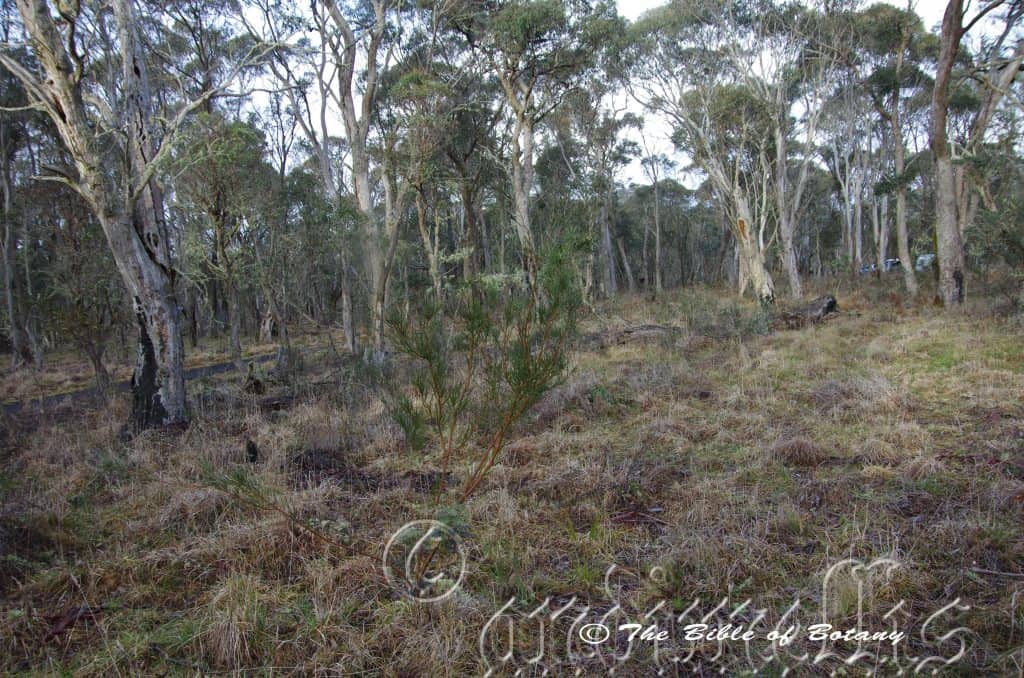
Ebor NSW

Ebor NSW
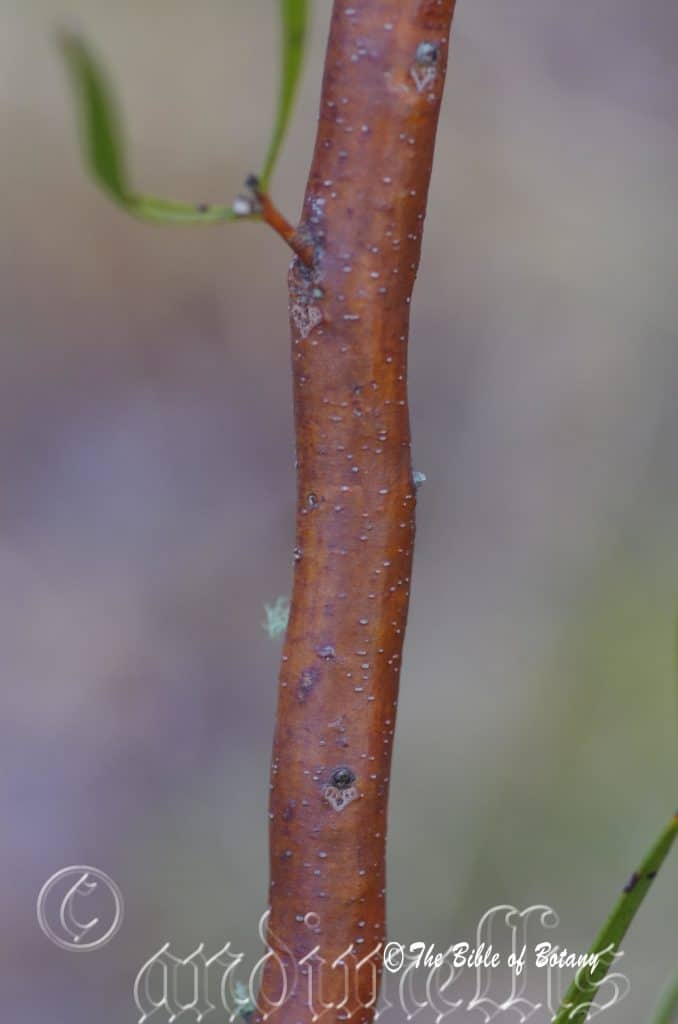
Ebor NSW
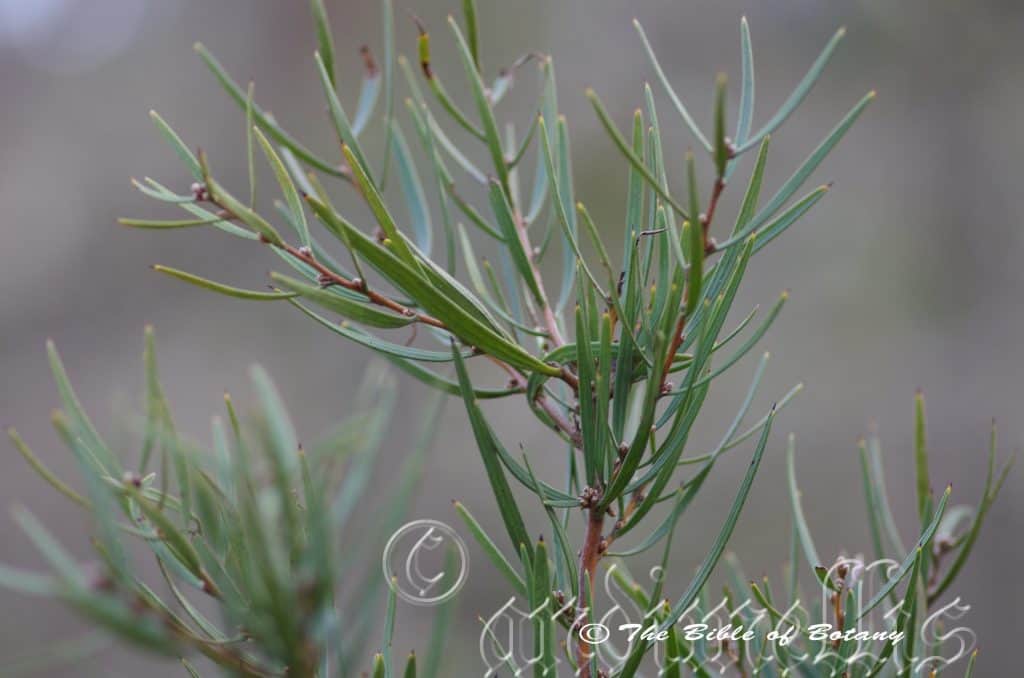
Ebor NSW
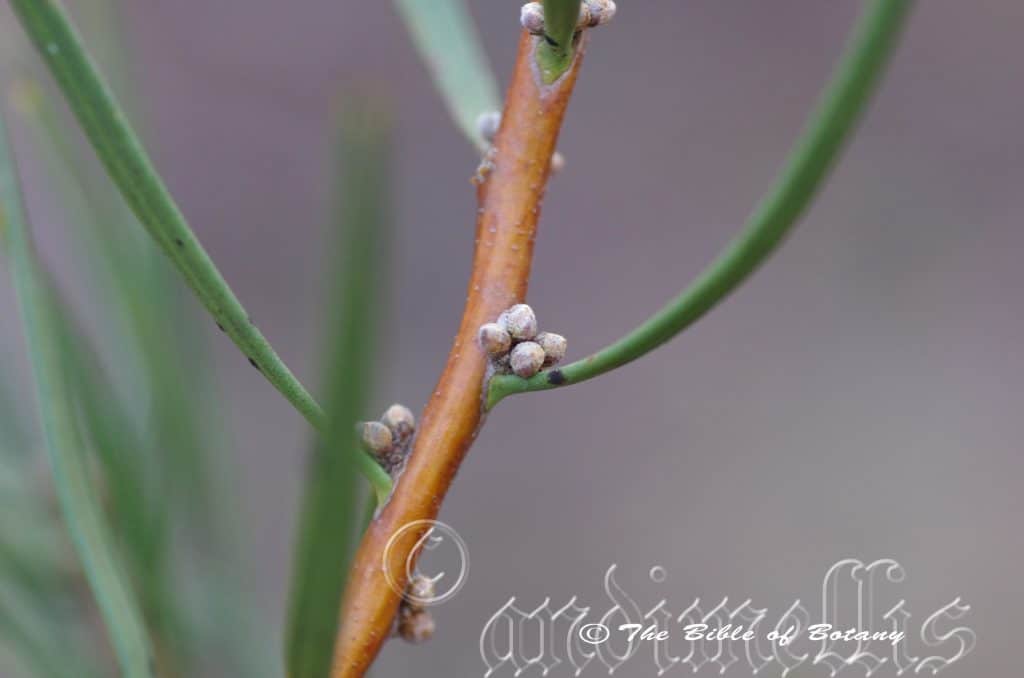
Ebor NSW
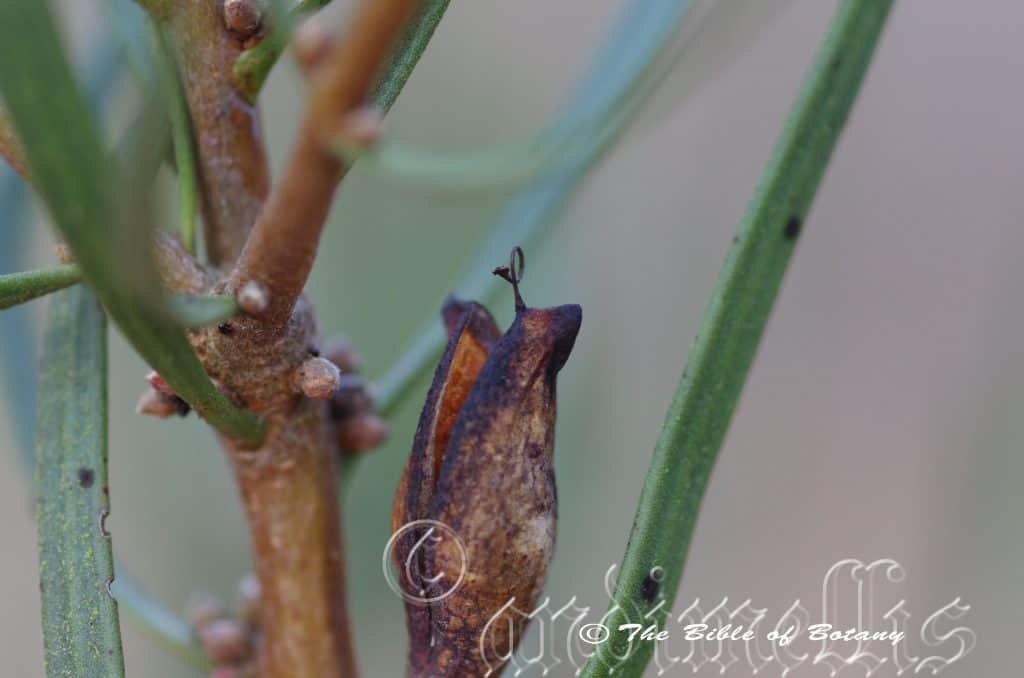
Ebor NSW
Hakea eriantha
Classification:
Unranked: Eudicots
Order: Proteales
Family: Proteaceae
Genus: Is named in honour of Barron von Hake; 1745-1818, who was a German councillor and patron of botany.
Specie: From Erion which is Ancient Greek for wool and ántha/ánthos, which are Ancient Greek for the male reproductive organ on a flower or the flower. It refers to flowers, which are covered in a soft woolly down.
Sub species:
Common Name:
Distribution:
Hakea eriantha is found south from the Kroombit Tops national Park and Carnarvon National Park in central eastern Queensland to the Yarra Ranges east of Melbourne in Victoria.
https://avh.ala.org.au/occurrences/search?taxa=Hakea+actites#tab_mapView
Habitat Aspect Climate:
Hakea eriantha prefers full sun. It grows in moist sclerophyll forest and woodland; mainly on the coastal and escarpment ranges. The altitude ranges from 15 meters ASL to 900 meters ASL.
The temperatures range from 2 degrees in July to 36 degrees in January.
The rainfalls range from lows of 400mm to an average of 800mm annually.
Soil Requirements:
Hakea eriantha prefers skeletal sands to sandy loams. The soils are usually derived from decomposed sandstones, granite or shale. The soils pH varies from 5.5pH through to a 6.5pH. It does not tolerate waterlogged soils. Non saline soils to moderately saline soils are tolerated as are salt laden winds.
Height & Spread:
Wild Plants: 4m to 10m by 3m to 5m.
Characteristics:
Hakea eriantha’s main stems are tan, reddish-tan to reddish-maroon and glabrous. The branchlets are pale creamy tan to reddish-maroon and are covered in white, appressed, caduceus, pulverulent hairs. The plants form a small lignotuber below the ground. Prevailing winds cause the shrubs to grow strongly towards the leeward side.
Hakea eriantha’s alternate, falcate leaves are narrowly oblong, lanceolate to narrow elliptical and measure 60mm to 185mm in length by 2.5mm to 18mm in width though there is a population in northern Victoria which has leaves from 20mm to 30mm in width. The bases attenuate while the apexes are acute usually with reddish to black 0.5mm to 1.6mm mucronate tip which is broken spike on older leaves. The asymmetrical, concolourous laminas are mid green to mid grass-green glabrous and densely covered in white, appressed, caduceus, pubescent hairs. The laminas are flat while the margins are entire. The mid vein is strongly prominent on the lower lamina and is visible on the upper lamina. The reddish-maroon to reddish-orange petioles measure 5mm to 10mm in length
The conflorescences of Hakea eriantha are clusters born from the leaf axils. The clusters have 5 to 10 individual flowers. The perianth and style are the most prominent parts of the flower. The white involucre measures 2.5mm to 3.5mm in length. The individual perianths are white from the base through to the lobes. The perianths are densely covered in white, appressed pubescent hairs externally and internally. The perianth and lobes measure 7mm to 8.5mm in length. The lobes are recurved and joined. The pedicels are densely covered in white pulverulent hairs and measure 3mm to 6mm in length.
The style is usually white, mustard-yellow or maroon-red or at times variable from the base to the usually white or at times green stigma and pollen presenter. The lateral pollen presenter is positioned slightly below the apex of the stigma and style and measures 1.2mm to 1.5mm in length. The pistils measure 7mm to 8.5mm long. The oblique style is glabrous. The flowers appear from September to November.
Hakea eriantha’s fruits are obovate to sigmoidal-obovate follicles. The beak are small, usually broken and measure 3mm to 4.5mm in length. The dull green follicles turn grey to grey-brown when ripe. It is lepidote and measure 19mm to 32mm in length by 12mm to 16mm in diameter.
The flat, narrow obovate, oblique, black obliquely oval seeds measure 4mm to 7mm in length by 2mm to 4mm in width. The black chartaceous wings are apically positioned and measure 6.5mm to 14.5mm in length by 6mm to 7mm in width.
Confusing Species:
Hakea erianth’s perianths are longer and are densely covered in white, appressed pubescent hairs externally and internally.
Hakea florulenta’s perianths are shorter and are glabrous externally and internally.
Wildlife:
Hakea eriantha flowers are a great attraction for small butterflies and native bees.
Cultivation:
Hakea eriantha is a dense medium shrub that looks great with its deep green leaves tipped reddish-maroon, particularly when the stems are covered the whole length in beautiful white flowers. It is very suitable for small gardens right through to the largest garden, in semi-arid, temperate or sub-tropical zones. As garden subjects it will grow to 3 meters to 6 meters in height by 3 meters to 5 meters in diameter when cultivated in the open.
It can be pruned back heavily every 3 or 4 years to maintain vigour and vitality in the plants. Unfortunately the flowers appear along the present and previous season’s growth so this must an interruption of flowering in the following 12 months. It is fast growing, drought tolerant once established and are cold tolerant to temperatures as low as minus 2 degrees.
Hakea eriantha is best used as a standalone shrub scattered below taller trees in an open woodland scene or adjacent to a dense bush garden. It is neat and tidy fairly fast growing and always look green and fresh.
Propagation:
Seeds: Hakea eriantha’s seeds can be collected as soon as the follicles show signs of opening. Once one follicle starts to opening, collect all the follicles from that rachis.
Hakea eriantha seeds can be sown directly into a seed raising mix. Cover them with 5mm of fine sand and keep moist not wet. Place the tray in a warm sunny position. When the seedlings are 25mm to 50mm tall, prick them out and plant them into 50mm native tubes using a good organic mix.
Once the seedlings reach 150mm to 200mm in height, nip the tips out before planting them out into their permanent position.
Fertilize using seaweed, fish emulsion or organic chicken pellets soaked in water on an alternate basis. Fertilize every two months until the plants are established then twice annually in early September or March to maintain health, vitality and better flowering. Avoid synthetic fertilizers as they will most likely contain calcium and phosphorous which are toxic to most Proteaceae
Further Comments from Readers:
Hi reader, it seems you use The Bible of Botany a lot. That’s great as we have great pleasure in bringing it to you! It’s a little awkward for us to ask, but our first aim is to purchase land approximately 1,600 hectares to link several parcels of N.P. into one at The Pinnacles NSW Australia, but we need your help. We’re not salespeople. We’re amateur botanists who have dedicated over 30 years to saving the environment in a practical way. We depend on donations to reach our goal. If you donate just $5, the price of your coffee this Sunday, We can help to keep the planet alive in a real way and continue to bring you regular updates and features on Australian plants all in one Botanical Bible. Any support is greatly appreciated. Thank you.
In the spirit of reconciliation we acknowledge the Bundjalung, Gumbaynggirr and Yaegl and all aboriginal nations throughout Australia and their connections to land, sea and community. We pay our respect to their Elders past, present and future for the pleasures we have gained.

Author’s Garden The Pinnacles NSW
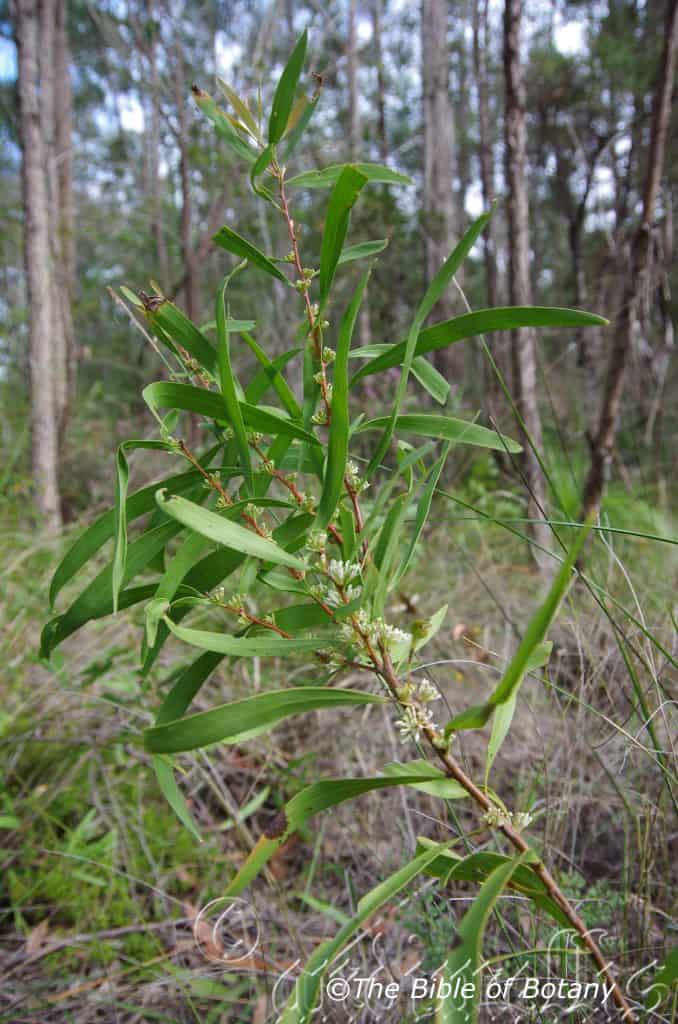
Author’s Garden The Pinnacles NSW
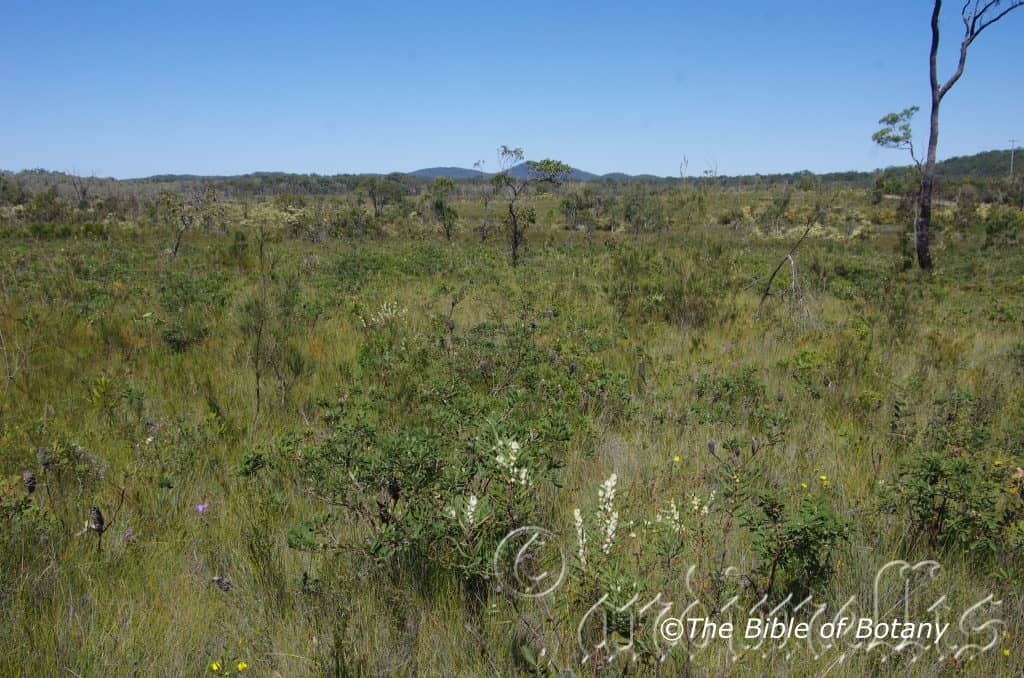
Yuraygir National Park NSW
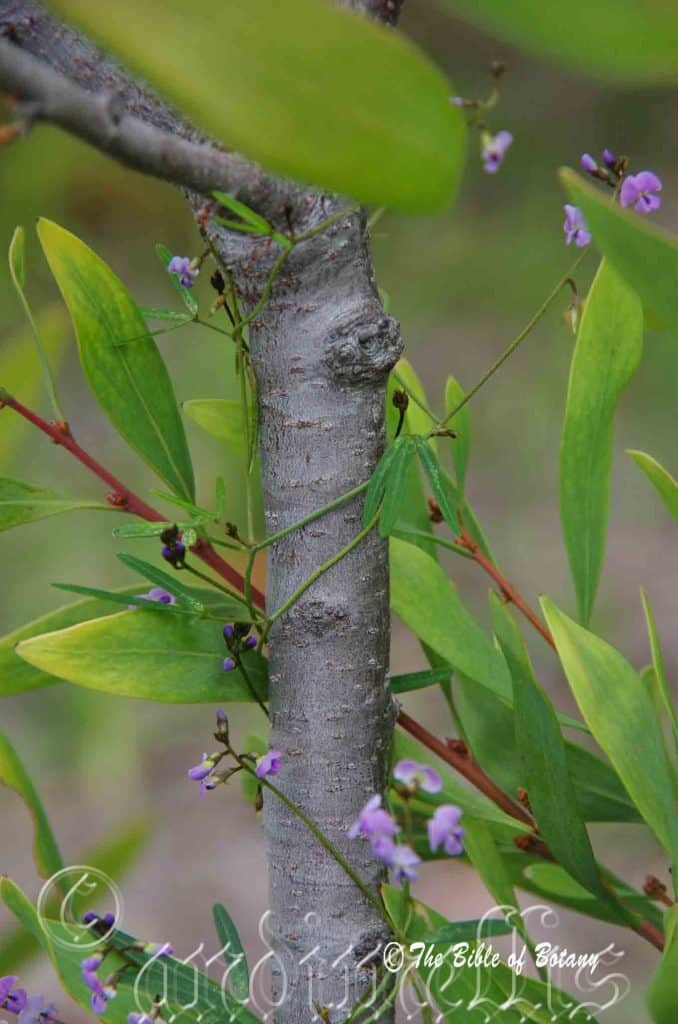
NCBG Coffs Harbour NSW
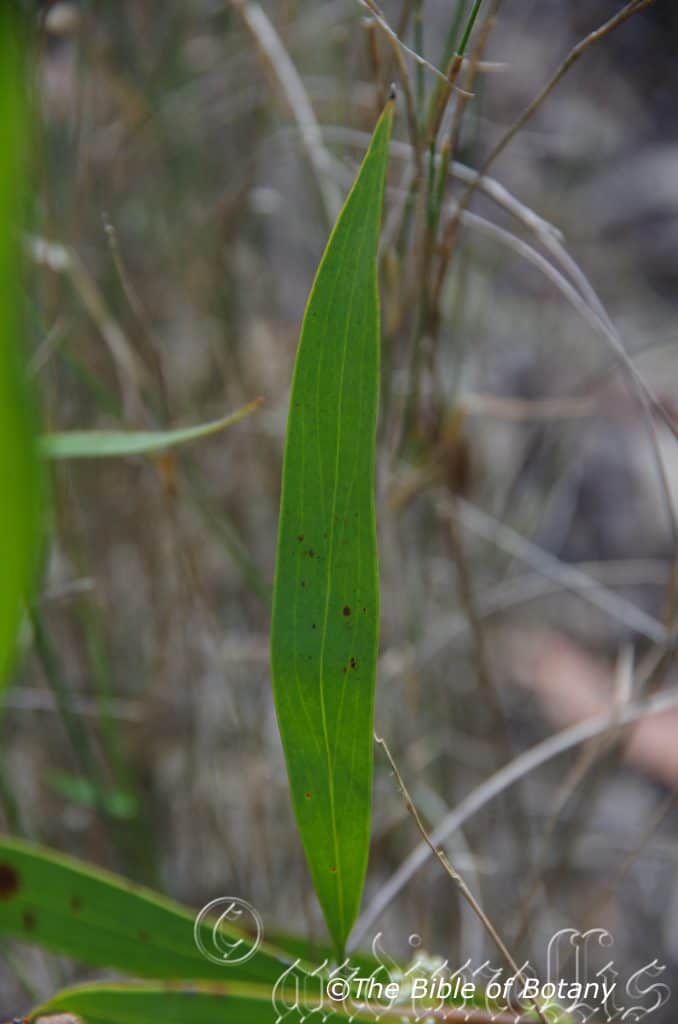
Author’s Garden The Pinnacles NSW
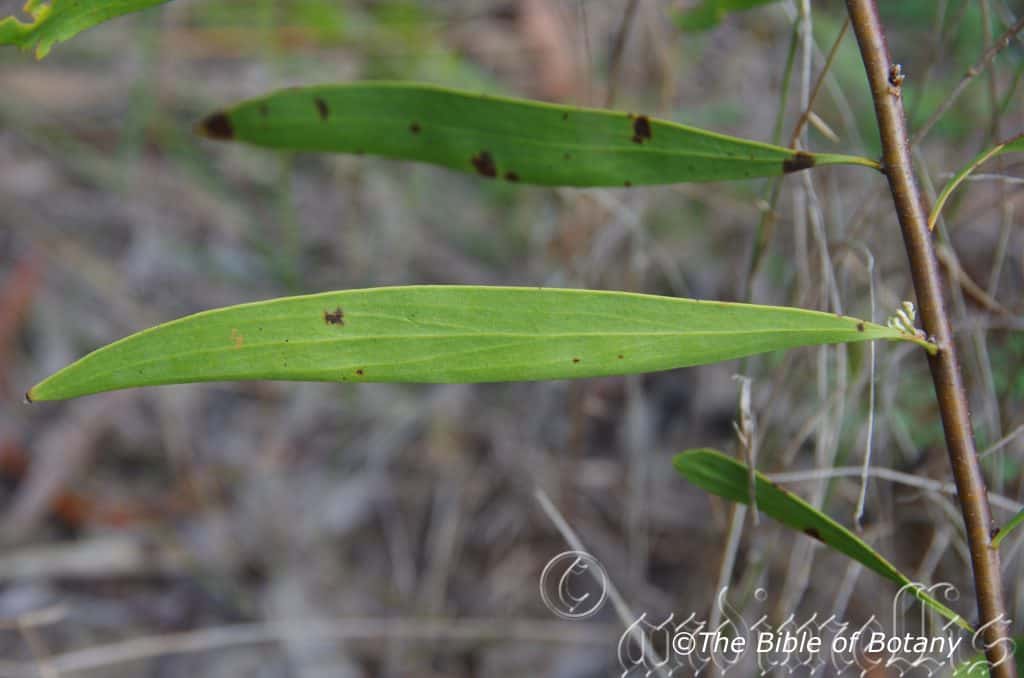
Author’s Garden The Pinnacles NSW
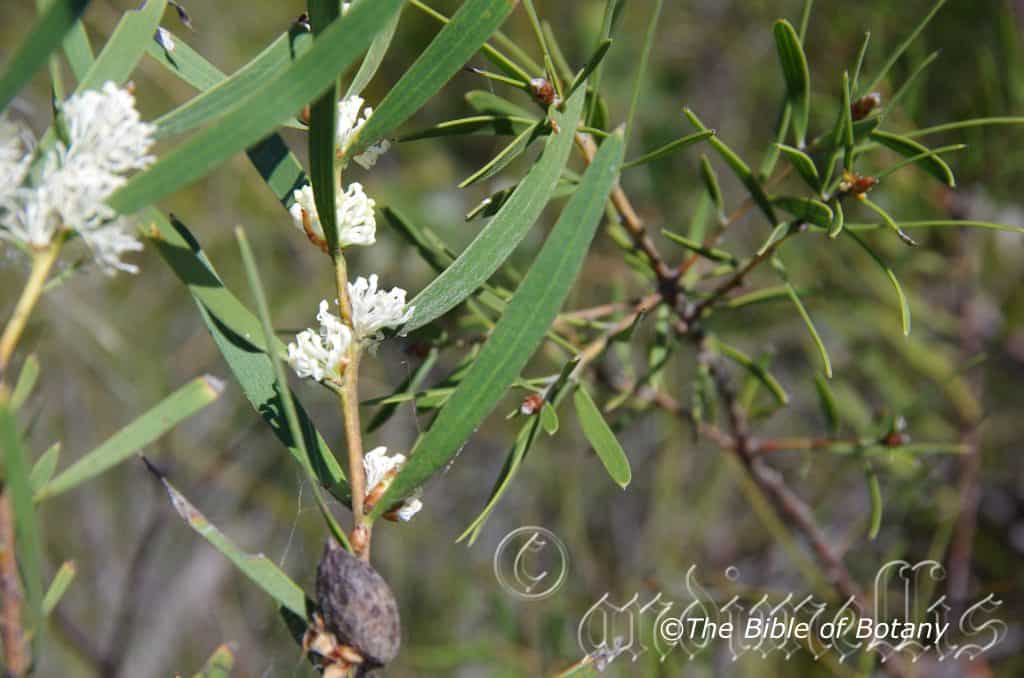
Yuraygir National Park NSW
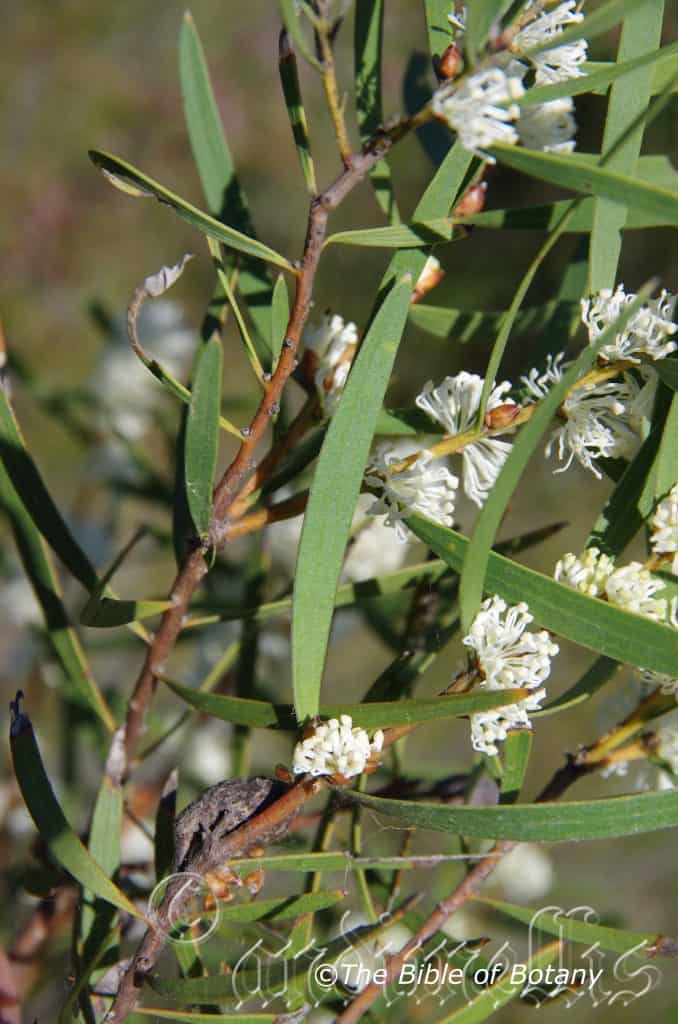
Yuraygir National Park NSW
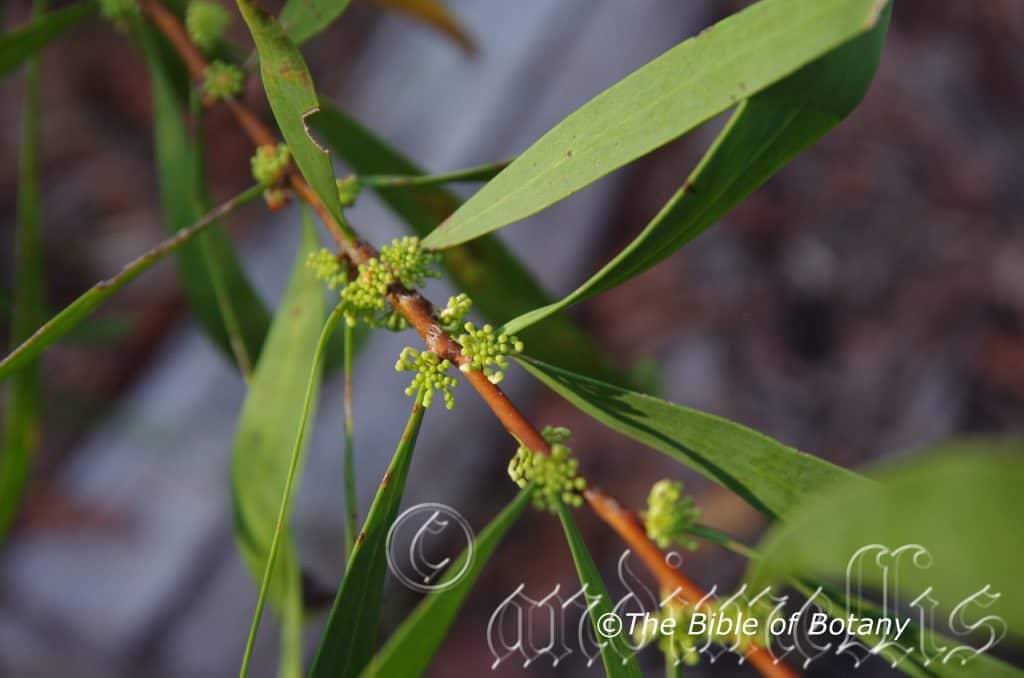
The Pinnacles NSW
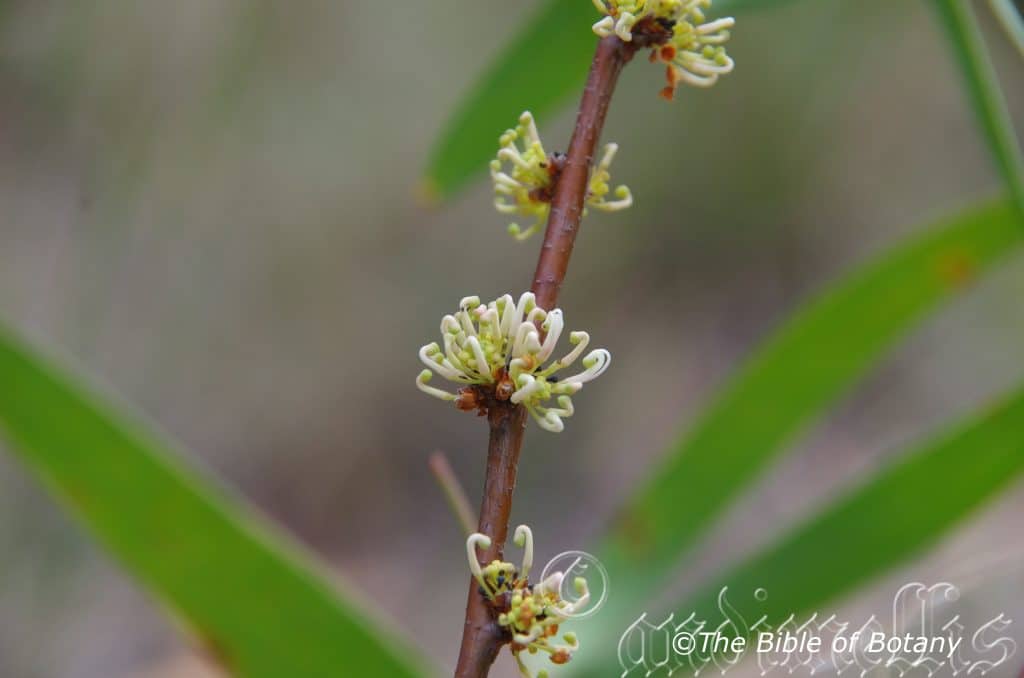
Author’s Garden The Pinnacles NSW
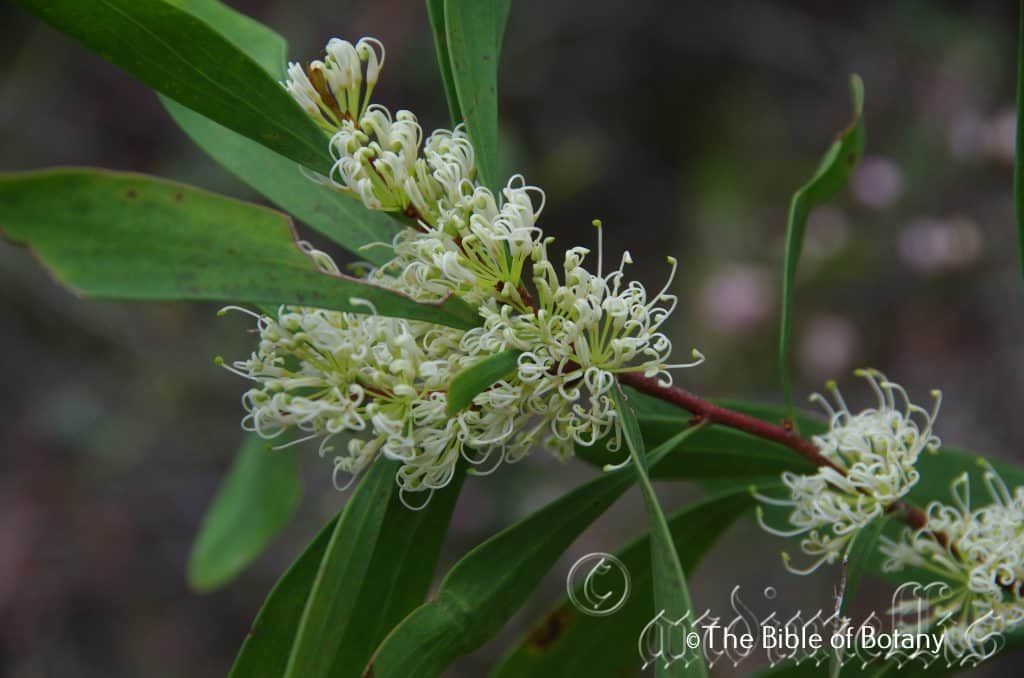
The Pinnacles NSW
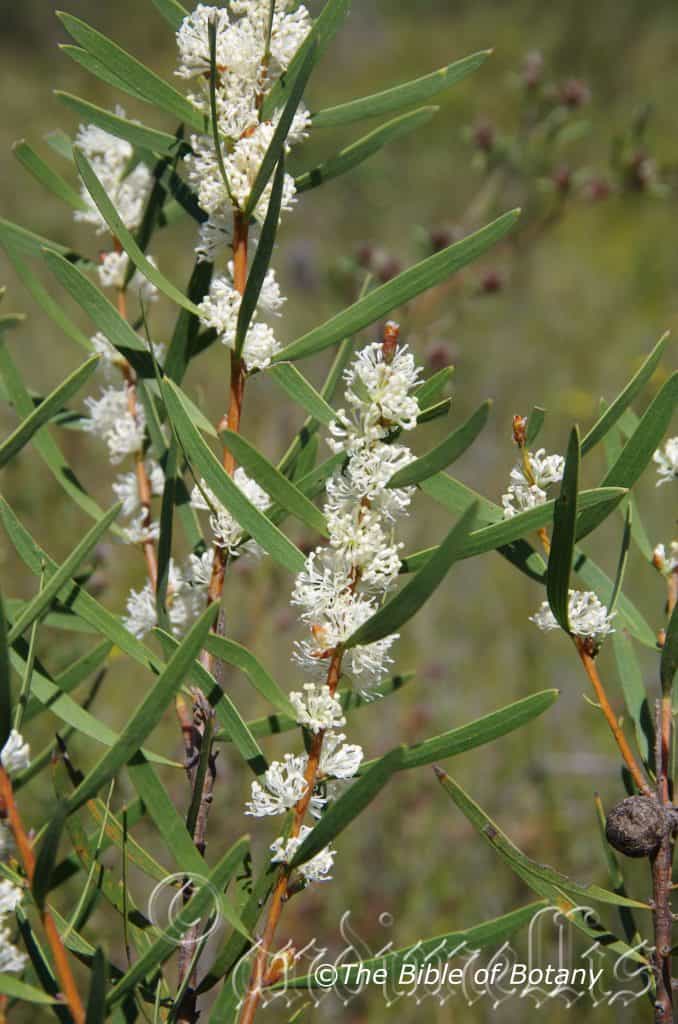
Yuraygir National Park NSW
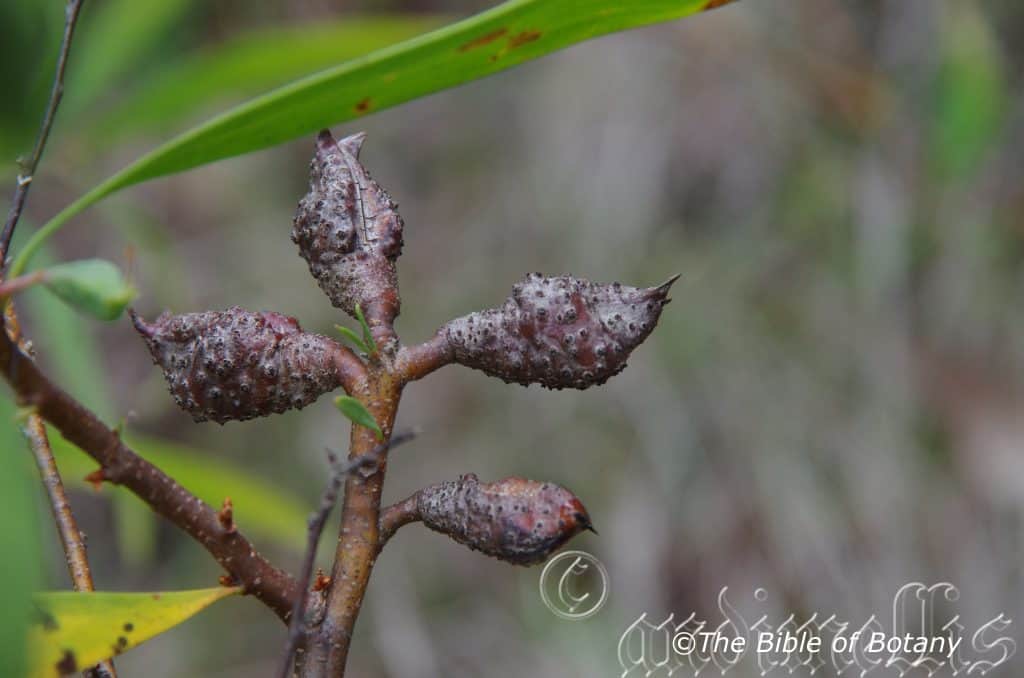
Banyabba National Park NSW
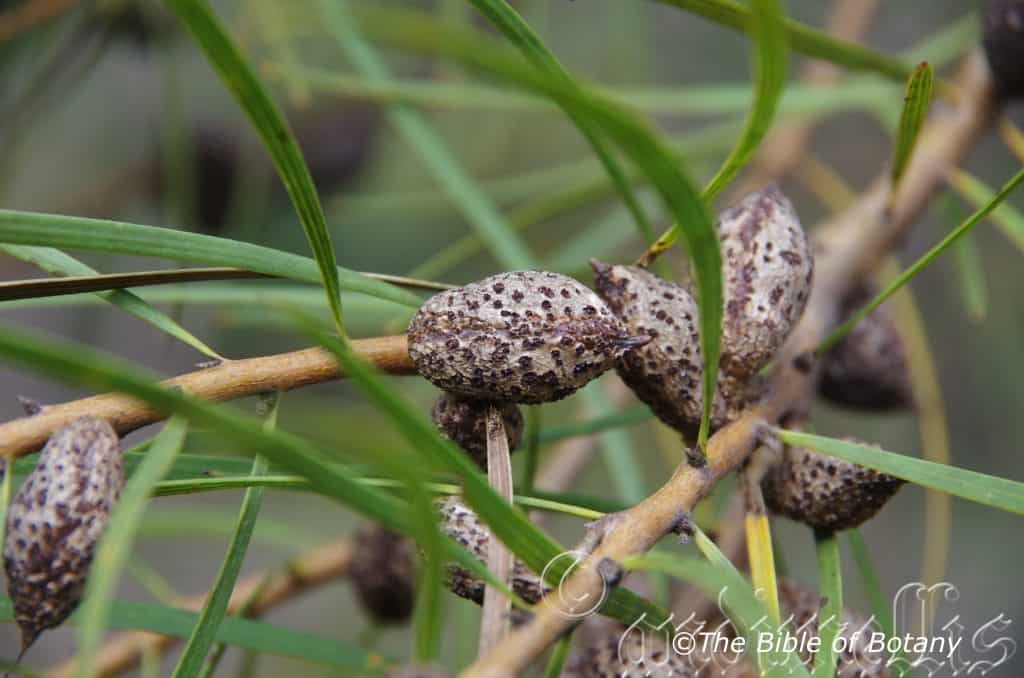
Banyabba National Park NSW
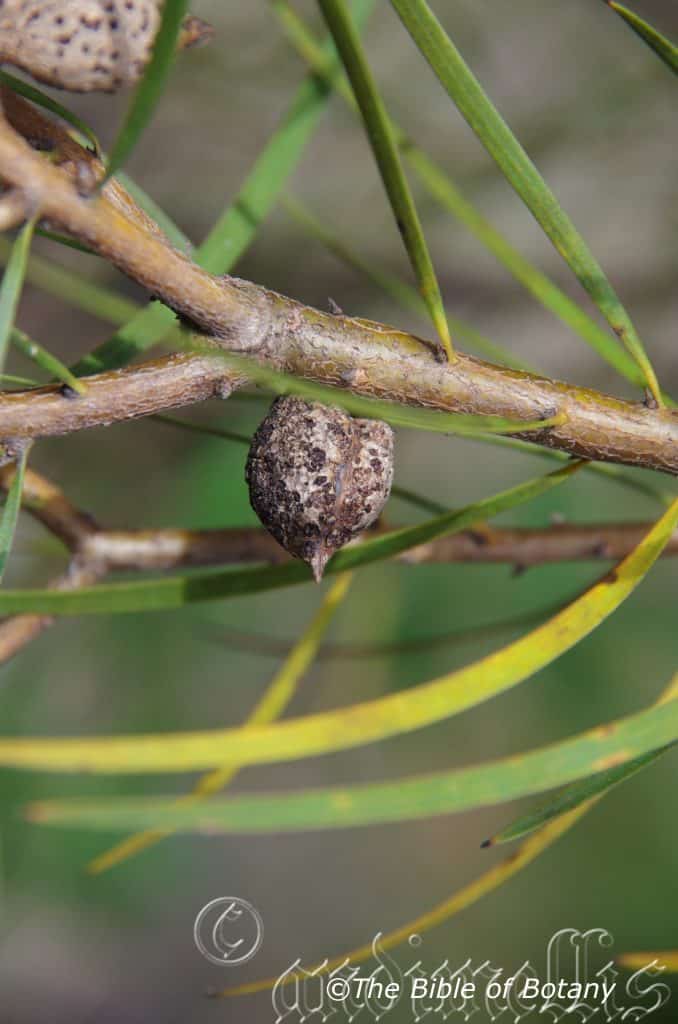
Author’s Garden The Pinnacles NSW
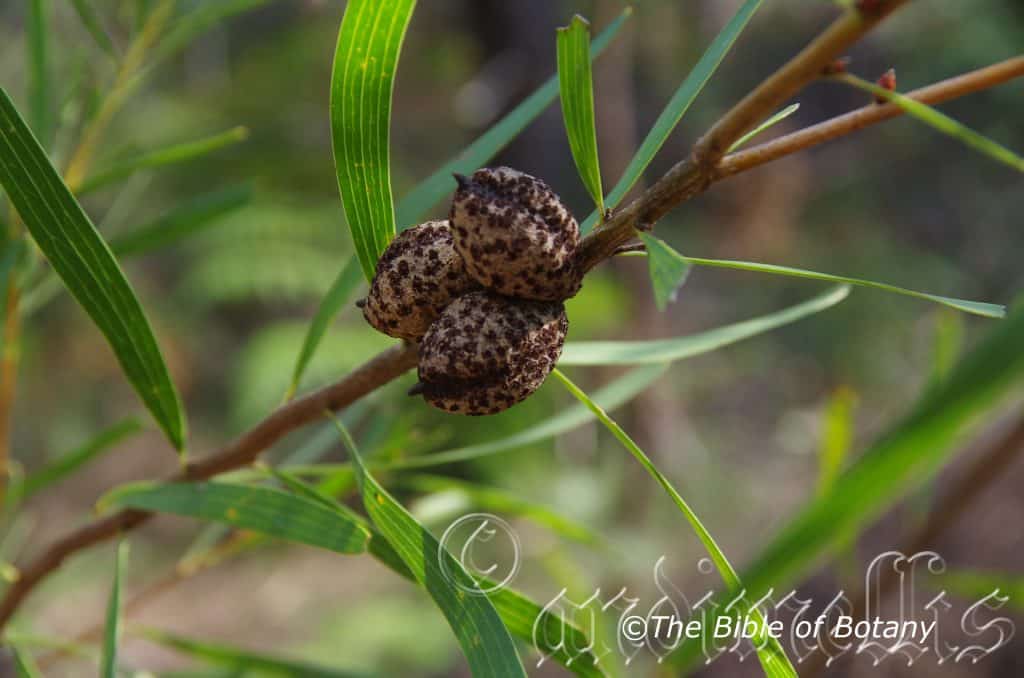
Author’s Garden The Pinnacles NSW
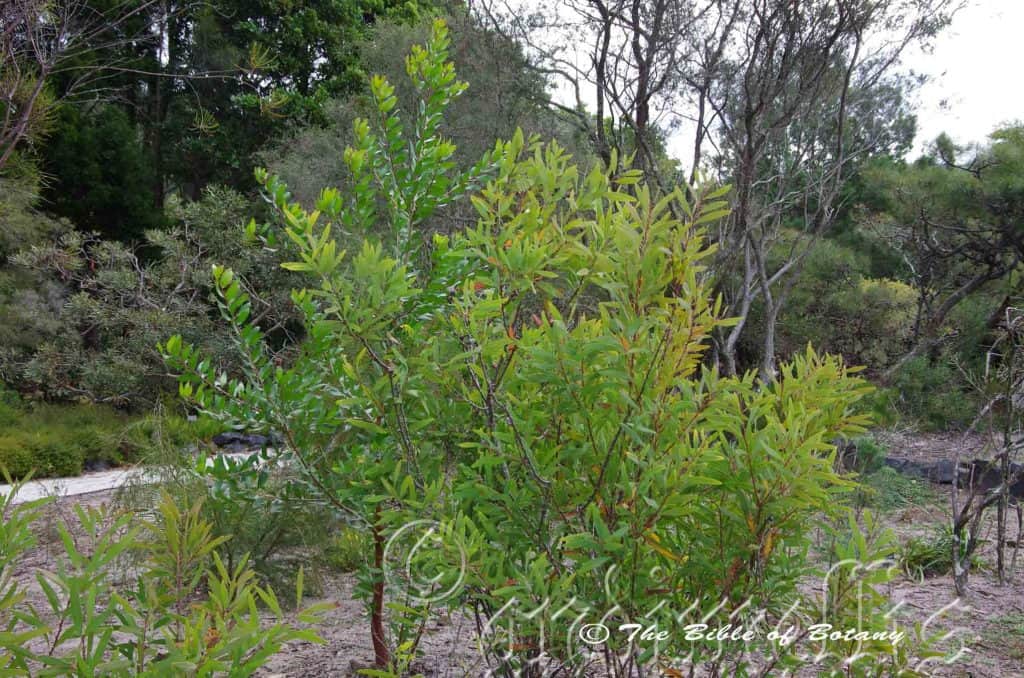
NCBG Coffs Harbour NSW
Hakea florulenta
Classification:
Unranked: Eudicots
Order: Proteales
Family: Proteacea
Genus: Is named in honour of Barron von Hake; 1745-1818, who was a German councillor and patron of botany.
Specie: From Flōris, which is Latin for a flower or Flōs, which is Roman for the goddess of spring and flowers and Ulenta, which is Latin for abounding in. It refers to plants, which produce an abundance of flowers.
Sub species:
Common Name:
Distribution:
Hakea florulenta is found south from Bundaberg in southern coastal Queensland to Woolgoolga and Timbertop west of Coffs Harbour in coastal north eastern New South Wales and west on the range near Guyra and the Waihou State Forest near Narrabri in New South Wales. It is mainly found growing on and east of the Great Dividing Range to the coast and some of the larger off coast Islands including Stradbroke Island.
https://avh.ala.org.au/occurrences/search?taxa=Hakea+florulenta#tab_mapView
Habitat Aspect Climate:
Hakea florulenta prefers full sun to dappled light. It grows adjacent to open moist heaths, in wet sclerophyll forest, often adjacent to rainforest. It is particularly common along the coast and adjacent ranges. The altitude ranges from 10 meters ASL to 1336 meters ASL
The temperatures range from minus 5 degrees in July to 39 degrees in January.
The rainfalls range from lows of 500mm to an average of 2000mm annually. The 2 lower rainfall districts near Narrabri and Guyra experience high orographic precipitation while growing in depressions on plateaus.
Soil Requirements:
Hakea florulenta prefers skeletal sands to deep sandy loams and peaty sands. The soils are usually derived from decomposed or partially decomposed sandstone and granite or accumulated peaty sands. The soils pH varies from 5.5pH through to a 6.5pH. It does not tolerate waterlogged soils however it is often associated with poorly drained sites or those soils that experience high water tables during the wet season. Non saline soils to moderately saline soils are tolerated as are salt laden winds.
Height & Spread:
Wild Plants: 2m to 6m by 1.5m to 4m.
Characteristics:
Hakea florulenta’s larger stems are patterned in pale grey and mid greys and glabrous. The branchlets are pale tan, reddish-tan to reddish-brown and are glabrous to sparsely covered in white and pale rusty-brown appressed, caduceus, sericeous hairs. The plants form a small lignotuber below the ground. Prevailing winds cause the shrubs to grow strongly towards the leeward side.
Hakea florulenta’s alternate, narrow elliptical to lanceolate leaves measure 60mm to 150mm in length by 8mm to 35mm in width. The bases are tapering to attenuate to the petiole while the apexes are usually broad acute or at times acute or broad acuminate or rarely obtuse with a short mucronate tip. The apexes are usually yellow and blackened on the tip. The concolourous laminas are mid green and glabrous to sparsely covered in white and pale rusty-brown, appressed, caduceous, and sericeous hairs. The laminas are flat while the margins are entire. The mid vein is prominent while the acute to almost parallel lateral veins are faintly prominent on the lower laminas and are visible on the upper laminas. The petioles are glabrous to sparsely covered in white and pale rusty-brown, appressed, caduceous, sericeous hairs measure 3mm to 6mm in length.
The conflorescences of Hakea florulenta are clusters or small racemes which are born from the leaf axils or from and old rachis. The clusters or racemes contain 14 to 20 flowers while the racemes measure 2mm to 4mm in length. The perianth and style are the most prominent parts of the flower. The individual perianths are usually white or rarely pastel pinkish-yellow from the base through to the lobes. The perianths are glabrous externally and internally. The perianths measure 3.5mm to 4mm in length while the lobes measure 1.5mm to 4mm in length. The lobes are recurved, free and joined at the apex. The white, glabrous pedicels measure 4mm to 8mm in length.
The style is white from the base to the pastel green stigma. The erect to very strongly oblique almost erect pollen presenter is lime-green. The pistils measure 7mm to 10mm in length. The style and ovary are glabrous. The flowers appear from September to November.
Hakea florulenta’s fruits are obloidal to oblong-elliptical, woody follicles. The green follicles turn pale grey to mid grey or pale grey-brown to mid grey-brown, semi glossy and are variably sparsely covered in black spots and 0.2mm to 0.8mm high black lepidote lumps. They measure 20mm to 26mm in length by 7mm to 13mm in width The 2 small beaks measure 2mm to 3mm in length.
The slightly flat, black ovate seeds measure 5.5mm to 6mm in length by 3mm to 3.5mm in width. The black, fragile chartaceous wings are apically positioned and partially run down one side and measure 10.5mm to 12mm in length by 5mm to 6mm in width at the widest point.
Confusing Species:
Hakea florulenta’s perianthsare shorter and are glabrous externally and internally.
Hakea erianth’s perianths are longer and are densely covered in white, appressed pubescent hairs externally and internally.
Wildlife:
Hakea florulenta flowers are a great attraction for small butterflies and native bees.
Cultivation:
Hakea florulenta is a dense medium shrub that looks great with its deep green leaves tipped reddish-maroon, particularly when the stems are covered the whole length in beautiful white flowers. It is very suitable for small gardens right through to the largest garden, in semi-arid, temperate or sub-tropical zones. As garden subjects they will grow to 3 meters to 6 meters in height by 3 meters to 5 meters in diameter when cultivated in the open.
It can be pruned back heavily every 3 or 4 years to maintain vigour and vitality in the plants. Unfortunately the flowers appear along the present and previous season’s growth so this must an interruption of flowering in the following 12 months. It is fast growing, drought tolerant once established and are cold tolerant to temperatures as low as minus 2 degrees.
Hakea florulenta is best used as a standalone shrub scattered below taller trees in an open woodland scene or adjacent to a dense bush garden. It is a neat and tidy fairly fast growing and always look green and fresh.
Propagation:
Seeds: Hakea florulenta seeds can be collected as soon as the follicles show signs of opening. Once one follicle starts to opening, collect all the follicles from that rachis.
Hakea florulenta seeds can be sown directly into a seed raising mix. Cover them with 5mm of fine sand and keep moist not wet. Place the tray in a warm sunny position. When the seedlings are 25mm to 50mm tall, prick them out and plant them into 50mm native tubes using a good organic mix.
Once the seedlings reach 150mm to 200mm in height, nip the tips out before planting them out into their permanent position.
Fertilize using seaweed, fish emulsion or organic chicken pellets soaked in water on an alternate basis. Fertilize every two months until the plants are established then twice annually in early September or March to maintain health, vitality and better flowering. Avoid synthetic fertilizers as they will most likely contain calcium and phosphorous which are toxic to most Proteacea
Further Comments from Readers:
Hi reader, it seems you use The Bible of Botany a lot. That’s great as we have great pleasure in bringing it to you! It’s a little awkward for us to ask, but our first aim is to purchase land approximately 1,600 hectares to link several parcels of N.P. into one at The Pinnacles NSW Australia, but we need your help. We’re not salespeople. We’re amateur botanists who have dedicated over 30 years to saving the environment in a practical way. We depend on donations to reach our goal. If you donate just $5, the price of your coffee this Sunday, We can help to keep the planet alive in a real way and continue to bring you regular updates and features on Australian plants all in one Botanical Bible. Any support is greatly appreciated. Thank you.
In the spirit of reconciliation we acknowledge the Bundjalung, Gumbaynggirr and Yaegl and all aboriginal nations throughout Australia and their connections to land, sea and community. We pay our respect to their Elders past, present and future for the pleasures we have gained.
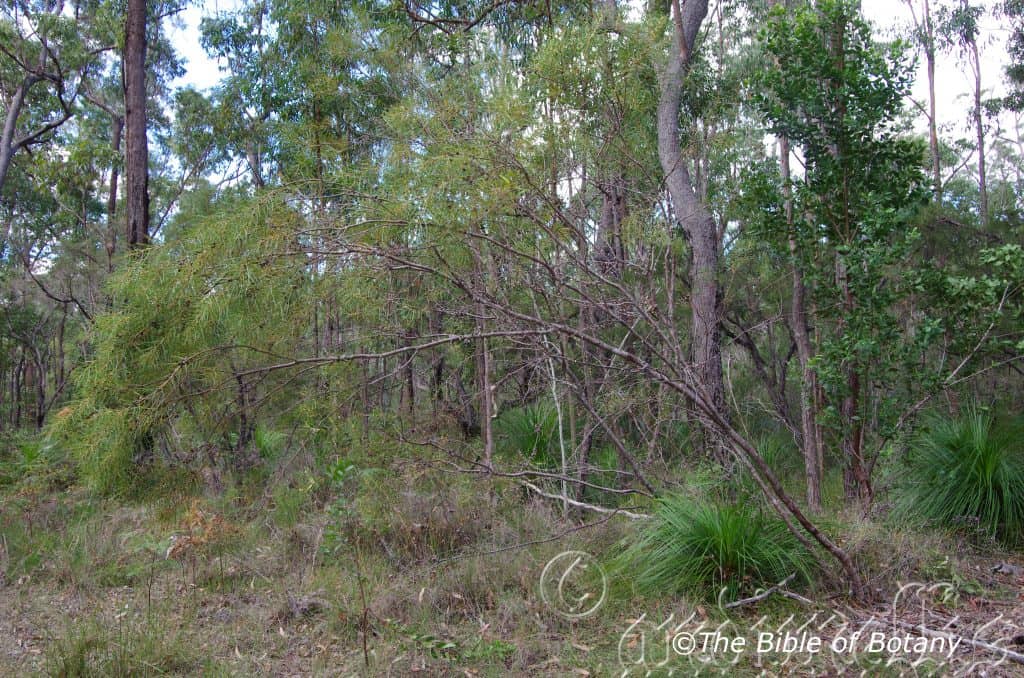
The Pinnacles NSW
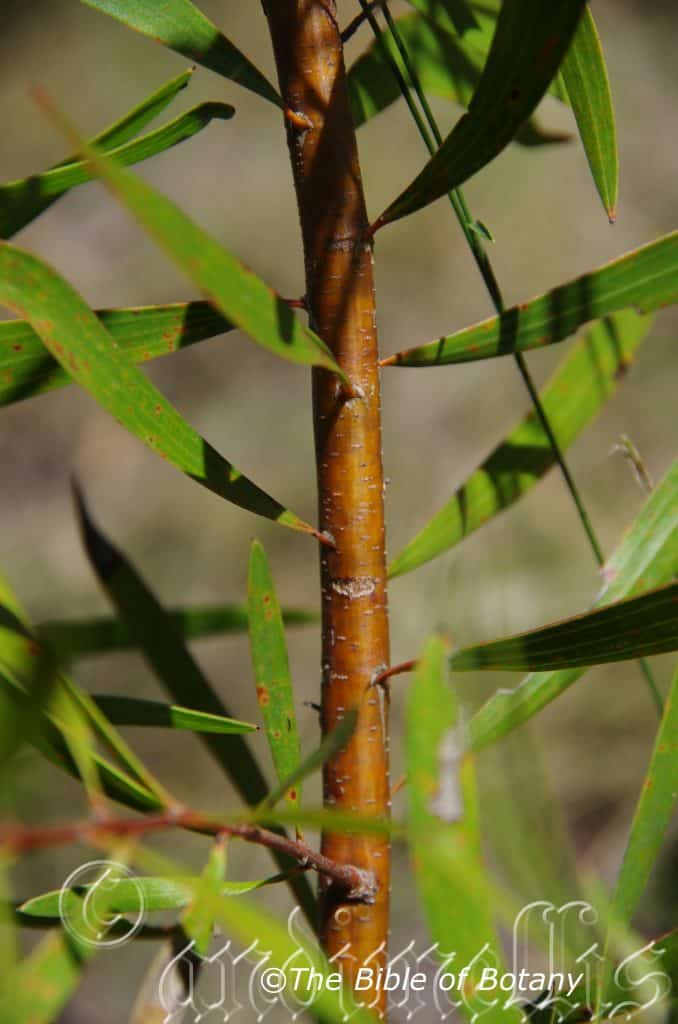
The Pinnacles NSW
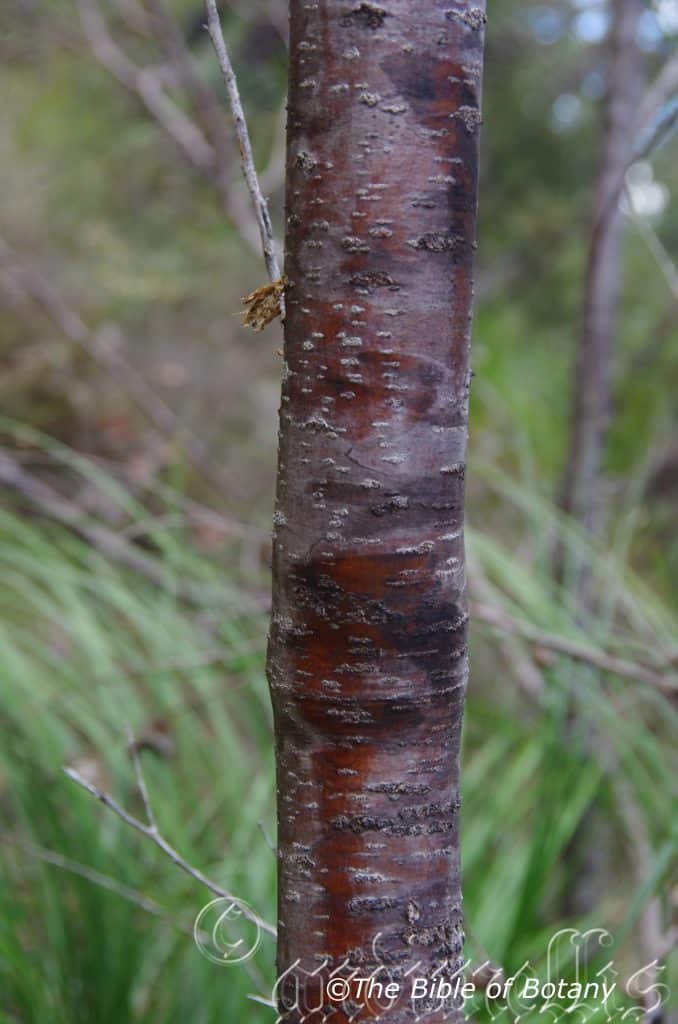
The Pinnacles NSW
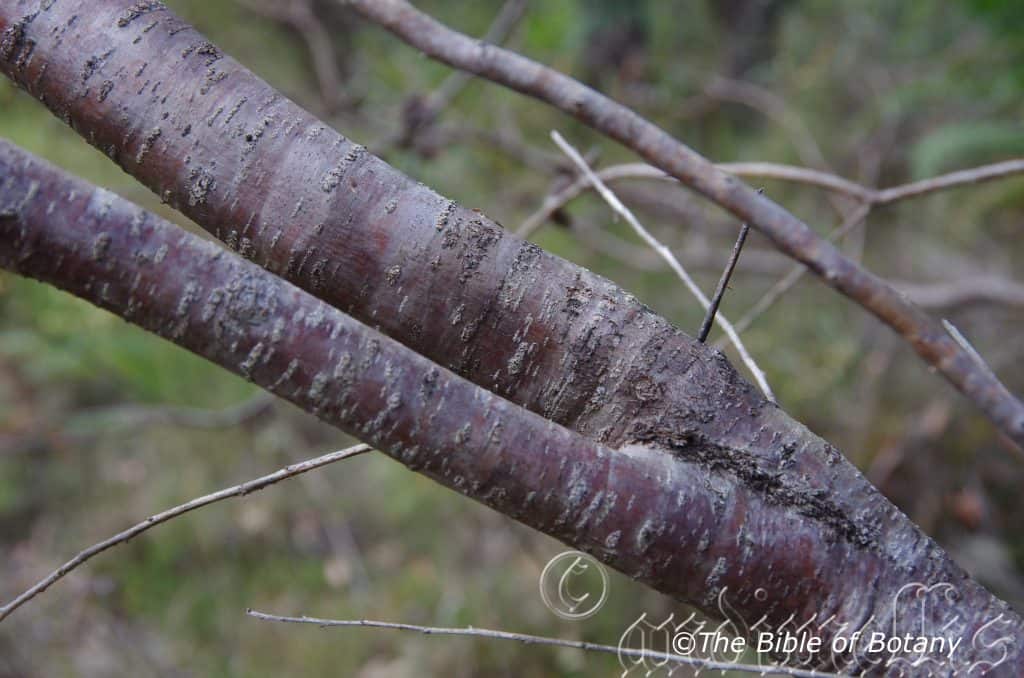
The Pinnacles NSW
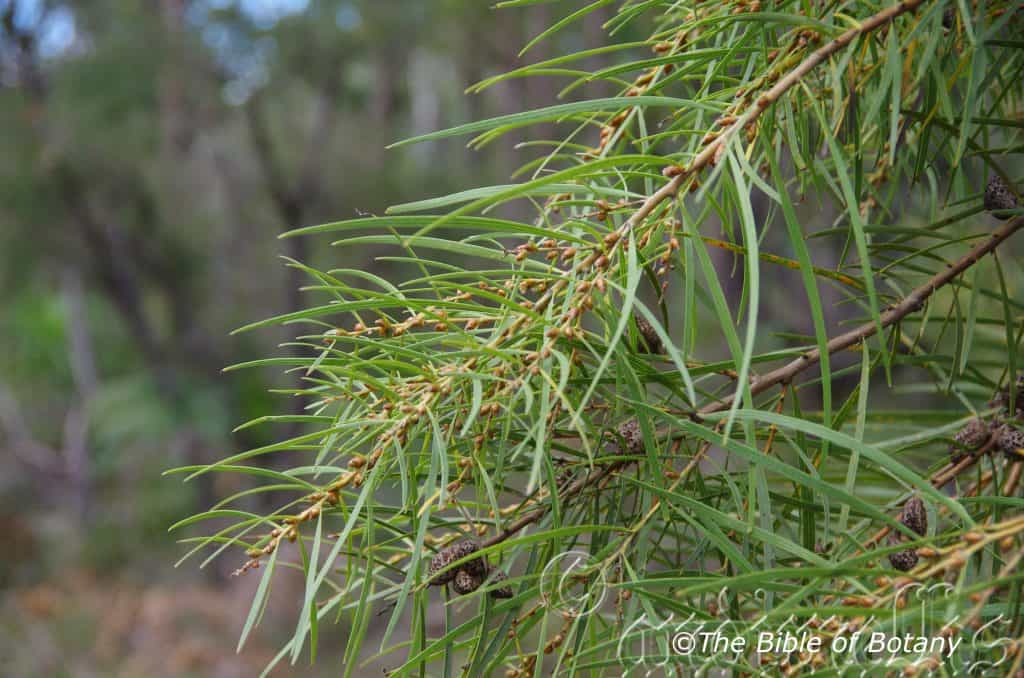
The Pinnacles NSW
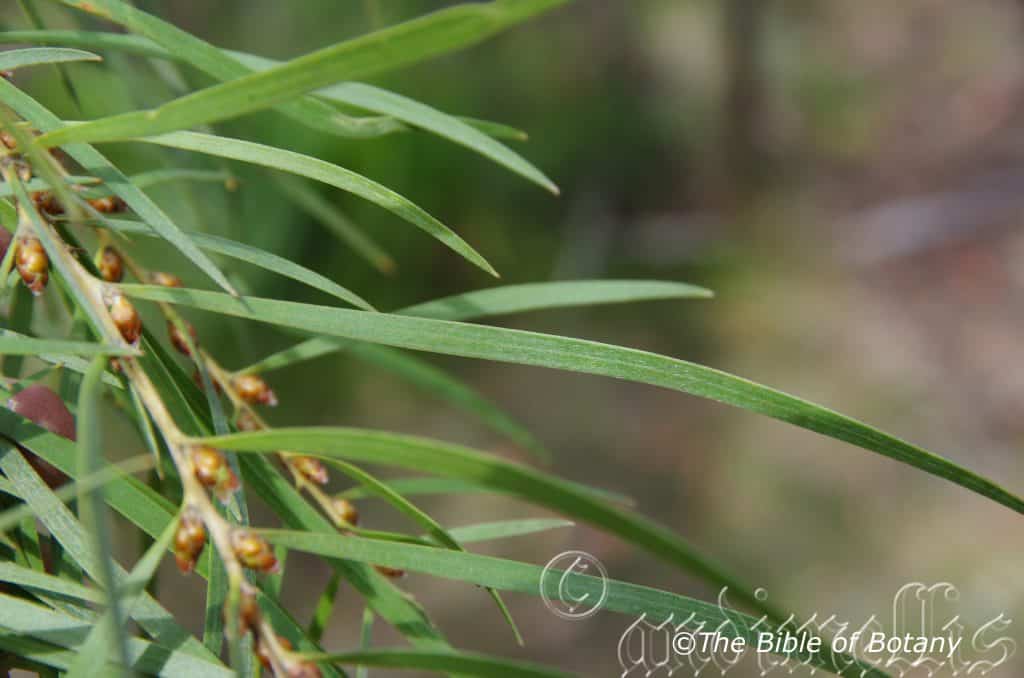
The Pinnacles NSW
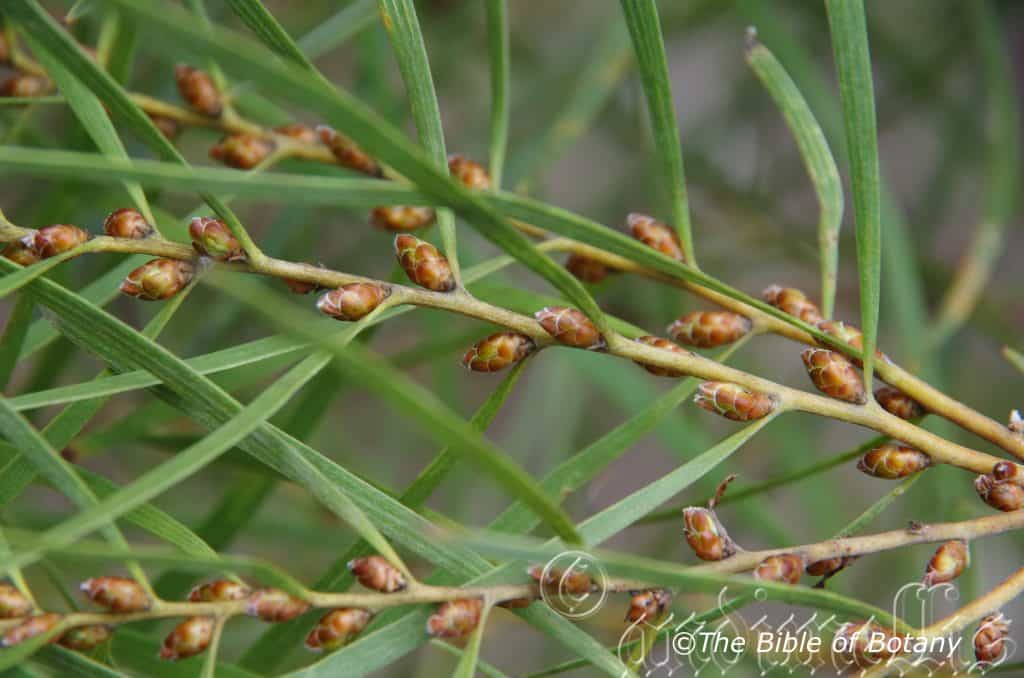
The Pinnacles NSW
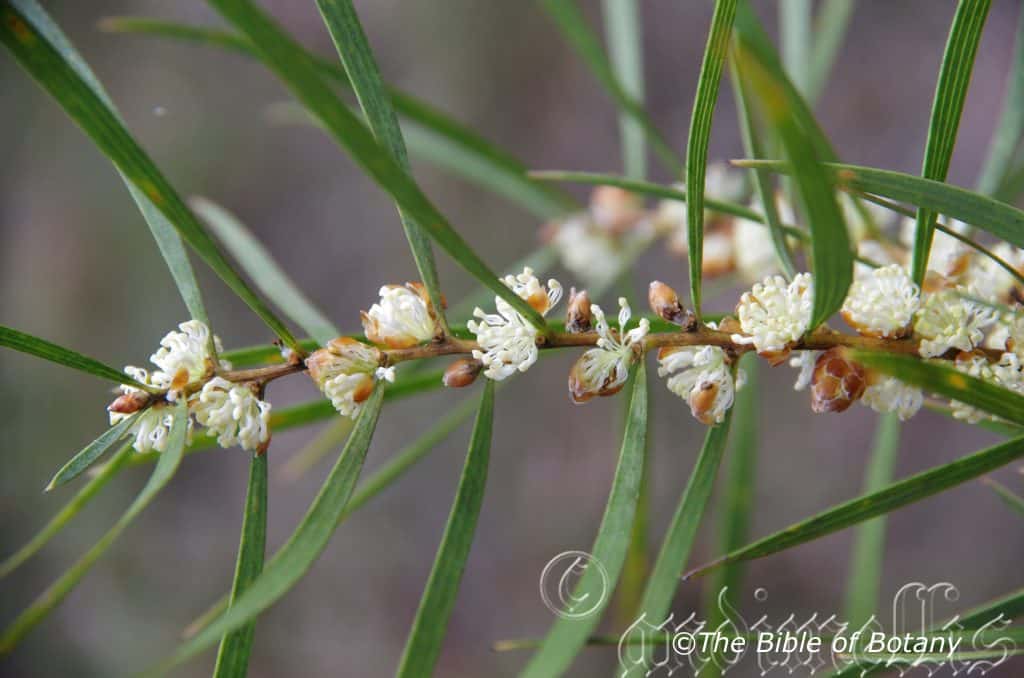
The Pinnacles NSW
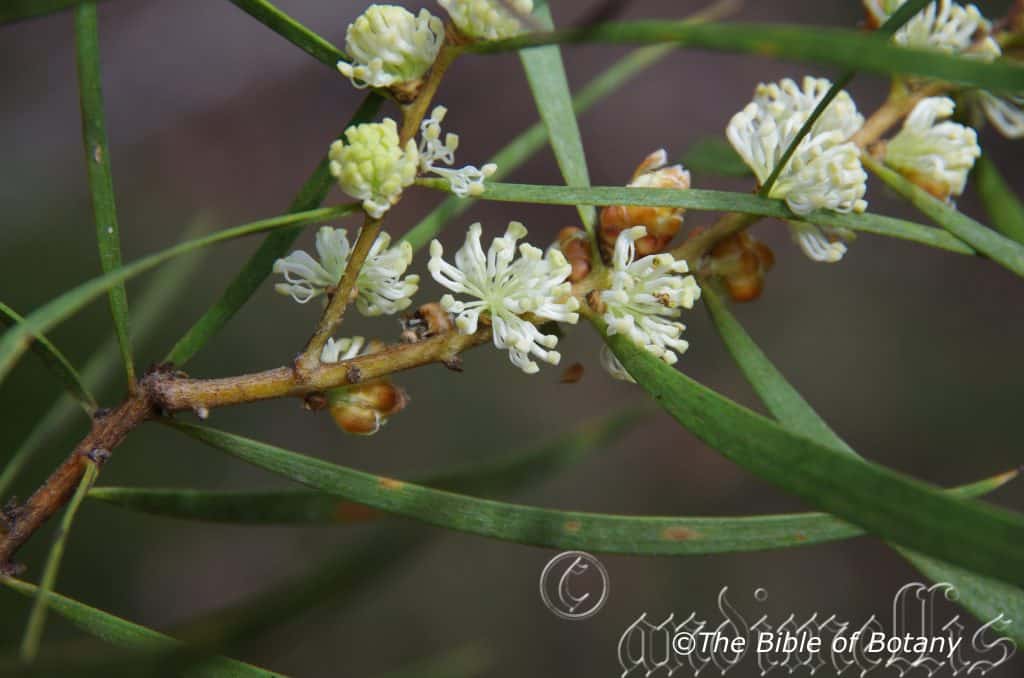
The Pinnacles NSW
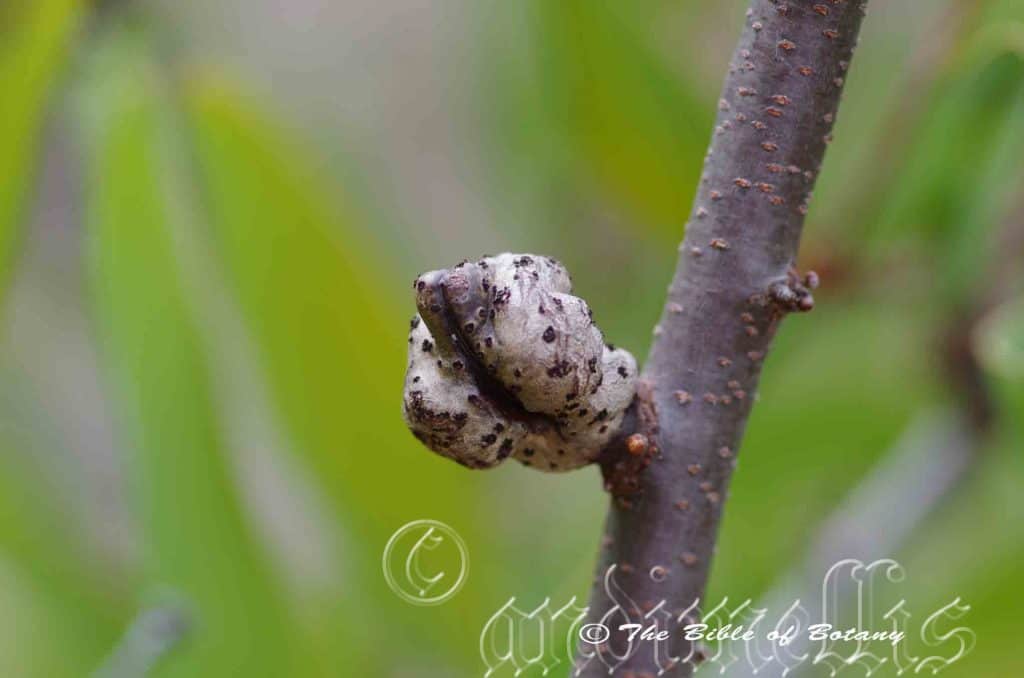
NCBG Coffs Harbour NSW
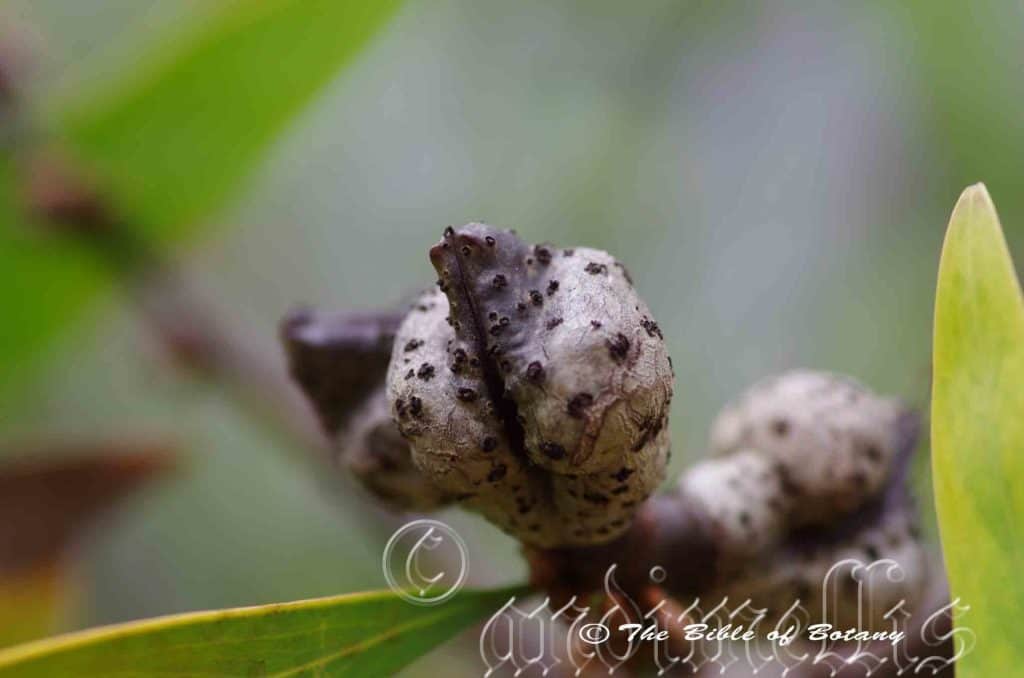
NCBG Coffs Harbour NSW
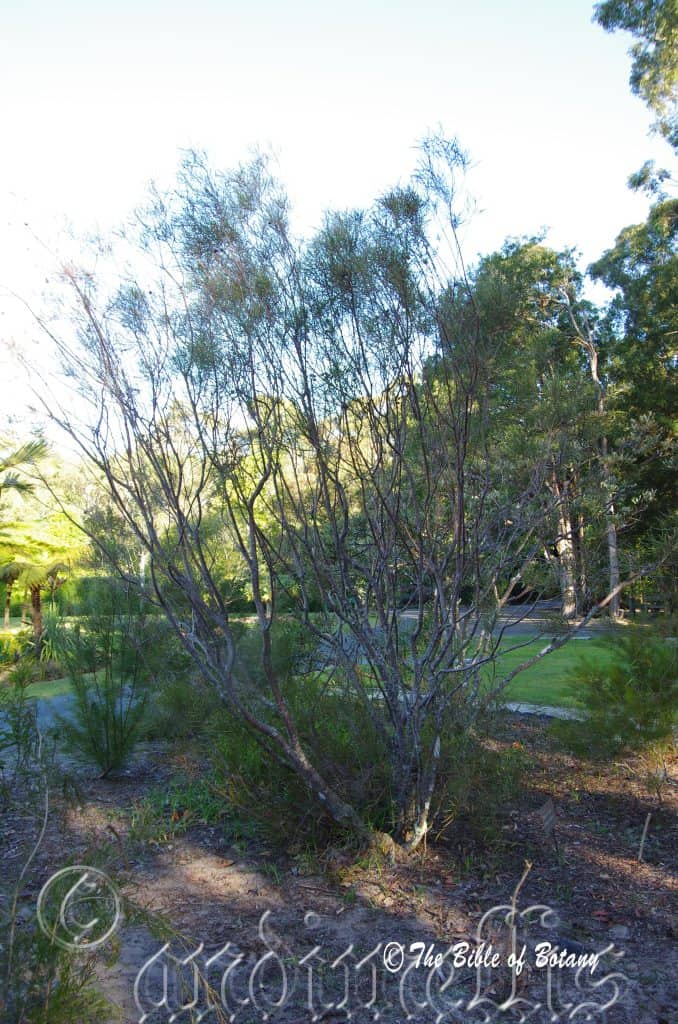
NCBG Coffs Harbour NSW
Hakea laevipes
Classification
Unranked: Eudicots
Order: Proteales
Family: Proteaceae
Genus: Is named in honour of Barron von Hake; 1745-1818, who was a German councillor and patron of botany.
Specie: From Elaphrós/Elakhús, which is Ancient Greek or Levis, which is Latin for swift, light weight, slick or smooth. It refers to structures or an organs, which are very smooth.
Sub species: Hakea laevipes subsp. graniticola. From Granitica, which is Latin for granite based rocks Kola, which is Ancient Greek or Cola, which is Latin for to dwell. It refers to plants, which prefer to grow on decomposed granitic sands and pebbly soils.
Sub species: Hakea laevipes subsp. laevipes. From Laevis, which is Latin for polished smooth. It refers to structures or an organs, which are very smooth.
Common Name:
Distribution:
Hakea laevipes is found south from Toowoomba in south eastern Queensland to Orbost in north eastern coastal Victoria. It is found on the Western Slopes, on and east of the Great Dividing Range to the coast.
Hakea laevipes subsp. graniticola is found north of Port Macquarie.
Hakea laevipes subsp. laevipes is found south from Port Macquarie.
https://avh.ala.org.au/occurrences/search?taxa=Hakea+laevipes#tab_mapView
Habitat Aspect Climate:
Hakea laevipes prefers full sun. It grows on open heath lands, exposed ridge tops and granitic outcrops mainly along the coast and coastal Islands. The altitude ranges from 15 meters ASL to 150 meters ASL.
The temperatures range from 2 degrees in July to 36 degrees in January.
The rainfalls range from lows of 400mm to an average of 800mm annually.
Soil Requirements:
Hakea laevipes prefers skeletal sands to sandy loams. The soils are derived from decomposed sandstones. The soils pH varies from 5.5pH through to a 6.5pH. It does not tolerate waterlogged soils. Non saline soils to moderately saline soils are tolerated as are salt laden winds.
Height & Spread:
Wild Plants: 0.3m to 3m by 1.5m to 2.5m.
Characteristics:
Hakea laevipes’s main stems are grey-brown and glabrous. The branchlets are mid grey-brown to olive-brown and are densely covered in pale brown tomentose or pulverulent hairs especially at the time of flowering. The plants form a large well developed lignotuber below the ground.
Hakea laevipes’s alternate, leaves are lanceolate to obovate or spathulate and straight or slightly falcate. The leaves measure 50mm to 120mm in length by 4.5mm to 30mm in width. The bases are cuneate to attenuate while the apexes are acute or somewhat abruptly acuminate or obtuse with a mucronate tip. The apexes are usually yellow and blackened on the tip. The concolourous laminas are mid green to mid olive-green with a yellow or cream apex. The coriaceous laminas are flat while the margins are entire. The 3 or 5 almost parallel longitudinal veins are prominent on the lower laminas and are faintly to slightly prominent on the upper laminas. The secondary veins are conspicuous on both laminas.
The conflorescences of Hakea laevipes are clusters or short racemes born from the leaf axils. The 7mm to 17mm long rachis have 12 to 46 flowers. The perianth and style are the most prominent parts of the flower. The individual perianths are variable, white to pastel yellow-cream from the base through to the white lobes. The perianth is glabrous externally and internally. The perianth and lobes measure 3mm to 4mm in length. The pastel yellow lobes are strongly refracted and free at the apex. The pedicels are glabrous or pubescent and measure 3.5mm to 7mm in length.
The style is white from the base to the white stigma. The erect, inverted conical pollen presenter is white. The glabrous pistils measure 4mm to 6mm in length.
Hakea laevipes’s fruits are broad ellipsoidal to ovoidal follicles. The dull green follicles are turn mid grey and semi glossy and shed the chartaceous semi glossy outer covering when ripe. It is finely lepidote to papillate and measure 20mm to 30mm in length by 13mm to 21mm in width. The acuminate beak is minute and the horns are absent.
The flat black obliquely broad elliptical to ovate seeds measure 6mm to 8mm in length by 5mm to 6mm in width. The very deep brownish–black to black, fragile chartaceous wings are apically positioned and run down one side of the seed. The wings measure 18mm to 20mm in length by 10mm to 12mm in width at the widest point.
Confusing Subspecies Varieties:
Hakea laevipes subsp. laevipes’s rachis and pedicels are covered in white appressed pulverulent hairs. Flowers appear from November to January.
Hakea laevipes subsp. graniticola’s rachis and pedicels are glabrous. The flowers appear from October to December.
Wildlife:
Hakea laevipes flowers are a great attraction for small nectar eating birds, butterflies, native bees and native pollen flies.
Cultivation:
Hakea laevipes is a dense small multi stemmed shrub that looks great with its deep green leaves tipped yellow, particularly when the stems are covered the whole length in beautiful pink and white flowers. It is very suitable for small gardens right through to the largest garden, in arid, semi-arid, temperate or sub-tropical zones. As garden subjects they will grow to 1.5 meters to 3 meters in height by 2 meters to 2.5 meters in diameter when cultivated in the open.
It can be pruned back heavily every 3 or 4 years to maintain vigour and vitality in the plants. The flowers appear along the present and previous season’s growth so pruning is best done immediately after flowering as not to interrupt the following seasons flowering. It is fast growing, drought tolerant once established and are cold tolerant to temperatures as low as minus 5 degrees.
It should be more widely grown in temperate areas of Australia and tried at least as far north as Emerald where sandstone or granite outcrops prevail. It is most suitable for use around swimming pools, sunny courtyards, besides pathways, rockeries, along sandy banks or along drive ways.
Hakea laevipes is best used as a standalone small shrub because of its lignotuber growth, which makes them easy to rejuvenate. It is neat and tidy fairly fast growing and always look green and fresh. The dense growth habit especially once the lignotuber has established itself makes them ideal bush and large heath subjects. This is particularly so in bushfire prone areas where the garden will recover very quickly. A crowded garden bed will destroy the effect of the stems and flowers so give the room to grow to their full mature potential.
Another method is to design a large flat heath garden which Hakea laevipes is well suited. Hakea laevipes will stand taller than all the other plants in the garden and look dominant against the other finer leaf plants especially if grey or bright lime green foliages are used. Do not use contours to display the plants; unless the property is on a steeper slope and here swales would be the go, as heath lands are almost always flat or have a slight rise. Plants must be planted close together and be shorter so you can see over, to and around Hakea laevipes. The idea is to achieve a feeling of expansive flatness. This can be achieved with using the Hakea laevipes’s olive-green leaves and having them contrasting finer pale green or soft grey to glaucous coloured foliages. Use a lot of procumbent plants like Hibbertia specie. Mix them with other smaller shrubs so none of them dominate the scene but blend in to give a mosaic of foliage colours that you oversee. Here I immediately think of Actinotis helianthi or Grevillea thelemanniana for two great contrasting foliages.
Propagation:
Seeds: Hakea laevipes follicles can be collected as soon as the follicles show signs of opening after fire or damage or carefully cut from the stems once it is hard and fully ripe. The follicles will take about a week to fully open and can be induced by placing them in the oven following the cooking of the evening meal after the oven has been turned off or placed in a brown bag and left in the car for a few days which is parked in the sun.
Hakea laevipes seeds can be sown directly into a seed raising mix. Cover them with 2mm of fine sand and keep moist not wet. Place the tray in a warm sunny position. When the seedlings are 25mm to 50mm tall, prick them out and plant them into 50mm native tubes using a good organic mix.
Once the seedlings reach 150mm to 200mm in height, nip the tips out before planting them out into their permanent position.
Fertilize using seaweed, fish emulsion or organic chicken pellets soaked in water on an alternate basis. Fertilize every two months until the plants are established then twice annually in early September or March to maintain health, vitality and better flowering. Avoid synthetic fertilizers as they will most likely contain calcium and phosphorous which are toxic to most Proteacea
Further Comments from Readers:
Hi reader, it seems you use The Bible of Botany a lot. That’s great as we have great pleasure in bringing it to you! It’s a little awkward for us to ask, but our first aim is to purchase land approximately 1,600 hectares to link several parcels of N.P. into one at The Pinnacles NSW Australia, but we need your help. We’re not salespeople. We’re amateur botanists who have dedicated over 30 years to saving the environment in a practical way. We depend on donations to reach our goal. If you donate just $5, the price of your coffee this Sunday, We can help to keep the planet alive in a real way and continue to bring you regular updates and features on Australian plants all in one Botanical Bible. Any support is greatly appreciated. Thank you.
In the spirit of reconciliation we acknowledge the Bundjalung, Gumbaynggirr and Yaegl and all aboriginal nations throughout Australia and their connections to land, sea and community. We pay our respect to their Elders past, present and future for the pleasures we have gained.
Hakea laurina
Classification:
Unranked: Eudicots
Order: Proteales
Family: Protaceae
Genus: Is named in honour of Barron von Hake; 1745-1818, who was a German councillor and patron of botany.
Specie: From Laurus, which is Latin for praise or commendation thus praise for the Laurel or Bay tree or a small crown or wreath made from Laurel leaves. It refers to leaves, which resemble those of the bay tree.
Sub species:
Common Name: Pin Cushion Hakea.
Distribution:
Hakea laurina is an endemic species to the southern coast of Western Australia from Wagin in the north to Israelite Bay and Denmark.
https://avh.ala.org.au/occurrences/search?taxa=Hakea+laurina#tab_mapView
Habitat Aspect Climate:
Hakea laurina prefers full sun to light dappled shade. It grows in open woodland heaths, dry sclerophyll heaths or open Eucalyptus woodlands. The altitude ranges from 15 meters ASL to 250 meters ASL.
The temperatures range from 3 degrees in July to 36 degrees in January.
The rainfalls range from lows of 250mm to an average of 800mm annually.
Soil Requirements:
Hakea laurina prefers growing on skeletal sands to sandy loams. The soils are usually derived from decomposed sandstones. The soils pH varies from 6pH through to 8pH. It does not tolerate waterlogged soils. Non saline soils to moderately saline soils are tolerated as are salt laden winds.
Height & Spread:
Wild Plants: 3m to 6m x 2m to 4m. This is a medium size densely bushy shrub with pendulous branchlets.
Characteristics:
Hakea laurina’s main stems are red-brown semi glossy to dull and glabrous. The branchlets are red-brown to a tan semi glossy and covered in white caduceus, hirsute hairs quickly becoming glabrous by the time the first buds appear.
Hakea laurina’s adjacent leaves are narrowly elliptical-obovate, straight or slightly falcate and measure 70mm to 210mm in length by 8mm to 30mm in width. The base is attenuate while the apex is bluntly acute. The concolourous laminas are olive green and are very sparsely covered in white, caduceus, pubescent hairs which soon become glabrous. The margins are entire and flat. The base is attenuate almost to the stem while the apex is narrowly-broadly acute. There are 3 to 7 longitudinal mid veins. Petioles measure 10mm to 20mm in length.
The conflorescences of Hakea laurina are born on a very short thick rachises from the leaf axils. The rachis measures 2mm to 3mm in length and have 120 to 190 flowers. The perianth and style are the most prominent parts of the flower. The individual perianths are variable, cream turning to a deep pink to a deep crimson red from the base through to the lobes prior to the style being released. The irregular perianth and lobes are glabrous externally and internally. The perianth and lobes measure 4mm to 6mm in length. The lobes are recurved and joined. The pedicels measure 6mm to 9mm in length.
The style is cream to white or rarely pink from the base through to the stigma. The long conical erect pollen presenter is white to cream. The style and ovary measure 14mm to 20mm long. The lateral style is glabrous. The flowers appear from April to August.
Hakea laurina’s fruit is an ovate-elliptical woody follicle. 1 to 3 follicles appear on each rachis. Beaks are very small. The follicles are olive green turning a pale dull grey-brown, flanged adaxially, and rough as they ripen. They measure 22mm to 38mm in length by 16mm to 22mm in diameter.
The flat black oval seeds measure 15mm to 24mm long by 6mm to 8mm wide. The black winged seeds have the wing extending equally on both lateral sides and do not much past the apex.
Wildlife:
The flowers are a great attraction for small and medium nectar eating birds and butterflies.
Cultivation:
Hakea laurina is a dense small shrub that looks great with its deep olive green leaves and very unusual pin cushion pink and white flowers. It is very suitable for small gardens right through to the largest garden, in arid, semi-arid and temperate zones. As garden subjects they will grow to 3 meters to 5 meters high by 3 meters to 5 meters wide when cultivated. Light tip pruning can be done to increase the number of stems and consequently the number of flowers the following season. This should be done immediately after flowering is completed in August or September. It is fast growing, drought tolerant once established are cold tolerant to temperatures as low as minus 2 degrees.
Hakea laurina makes a good dense hedge and safe wildlife corridors for birds to travel along. Therefore it is most suitable for use around pathways, screens, wind breaks or shelter belts at the edge of a property.
In native gardens they can be used for attracting smaller or medium honeyeaters. Smaller birds like silver eyes (Zosterops lateralis) will seek the protection offered by the dense foliage and use the plants as a regular feed source.
It can be grown in Japanese gardens as a symbol of prestige or snuck in between other larger plants for an informal bush setting.
In the formal or Japanese Gardens ensure the plants are the center of attention by placing them centrally to the rear or near to low structures for prominence. Other plantings should be planted for their foliage only.
It is best if they flower in a different season or are placed so that it is not in direct competition. If you use flowers that appear at the same time ensure the flowers are soft pinks or white and are low growing shrubs or are ground covers so they do not compete in any way for the viewer’s attention.
Two, three or four planted back from a bend will become a very strong focal point when in flower gain a lot of attention whether you are coming or going because of the fresh clean look of the foliage even in the driest of times. It can be tip pruned if a smaller shrub is required. They respond well to pruning recovering quickly and often increasing the number of flowers in the following season. Place it in the midground with large leaf, or fine leaf ground covers and very small shrubs or annuals in front. To the rear, use large leaf taller plants. Plants with white, cream or pale yellow flowers can be used in both the foreground and background. This will lead the viewer’s eyes directly to the red and deep pink flowers for a longer period.
Use plants with finer leaves to the rear and in the foreground use prostrate plants. Ensure that the whole plant or at least most of it is on display from most sections of the garden as the flowers are a real bonus.
This Hakea despite being very attractive does not grow well on the east coast.
Propagation:
Seeds: The follicles need to be treated to extract the seeds from the follicles. Seeds can be removed from the follicles by placing the follicles in a hot oven after it has been turned off. A good time to do this is after the evening meal has been prepared. The follicles will usually open up after one or two days. Another method is to place them in a paper bag and leave the in the sun for 4 days to a week.
Hakea laurina seeds can be sown directly into a seed raising mix. Cover them with 5mm of fine sand and keep moist not wet. Place the tray in a warm sunny position. When the seedlings are 25mm to 50mm tall, prick them out and plant them into 50mm native tubes using a good organic mix.
Once the seedlings reach 150mm to 200mm in height, nip the tips out before planting them out into their permanent position.
Cuttings: Use 100mm long half ripened material when growing from cuttings from the present season’s growth. Take them in mid-autumn or early spring. Remove half the leaves from the bottom section being careful not to tear the bark. Take a 10mm slice off the bark from the bottom of the cutting on one side.
1 Prepare the cutting mix by adding one third sharp clean river sand, one third peat and one third perlite. These ingredients are sterilize,
2 Select good material from non diseased plants,
3 Select semi green stems for cuttings. Look for a stem with two or three nodes,
4 Place the cutting on a flat, hard surface, and make a clean cut down one side of the cutting at the base for 10mm with a sharp sterile knife or razor blade. – This scarification of the node will increase the chances of roots emerging from this spot. Now remove all but one or two the leaves, leaving the apex leaves in tact. If the leaves are very large in proportion to the stem, cut off the apical halves.
5 Fill a saucer with water, and place a little medium strength rooting hormone into another container like a milk bottle top. Dip the node end of the cutting into the water and then into the rooting hormone. Tap off any excess hormone,
6 Use a small dipple stick or old pencil to poke a hole into the soilless potting mix. Ensure the hole is slightly larger than the stem diameter and be careful not to wipe the rooting hormone off the cuttings base, place the cuttings in a pattern ensuring the cuttings are not touching each other,
7 I like to place the pots in Plastic bags to help maintain temperature and moisture. Place in a semi shaded place like under 50mm shade cloth.
8 When the cuttings have struck, open the bag to allow air circulation for a few days to a week,
9 Once hardened off remove the cuttings from the bag and allow to further hardening for a few more days,
10 Transplant into a good potting mix to grow on.
Fertilize using seaweed, fish emulsion or organic chicken pellets soaked in water on an alternate basis. Fertilize every two months until the plants are established then twice annually in early September or March to maintain health, vitality and better flowering. Avoid synthetic fertilizers as they will most likely contain calcium and phosphorous at levels, which are toxic to most Proteaceae.
Further Comments from Readers:
Hi reader, it seems you use The Bible of Botany a lot. That’s great as we have great pleasure in bringing it to you! It’s a little awkward for us to ask, but our first aim is to purchase land approximately 1,600 hectares to link several parcels of N.P. into one at The Pinnacles NSW Australia, but we need your help. We’re not salespeople. We’re amateur botanists who have dedicated over 30 years to saving the environment in a practical way. We depend on donations to reach our goal. If you donate just $5, the price of your coffee this Sunday, We can help to keep the planet alive in a real way and continue to bring you regular updates and features on Australian plants all in one Botanical Bible. Any support is greatly appreciated. Thank you.
In the spirit of reconciliation we acknowledge the Bundjalung, Gumbaynggirr and Yaegl and all aboriginal nations throughout Australia and their connections to land, sea and community. We pay our respect to their Elders past, present and future for the pleasures we have gained.
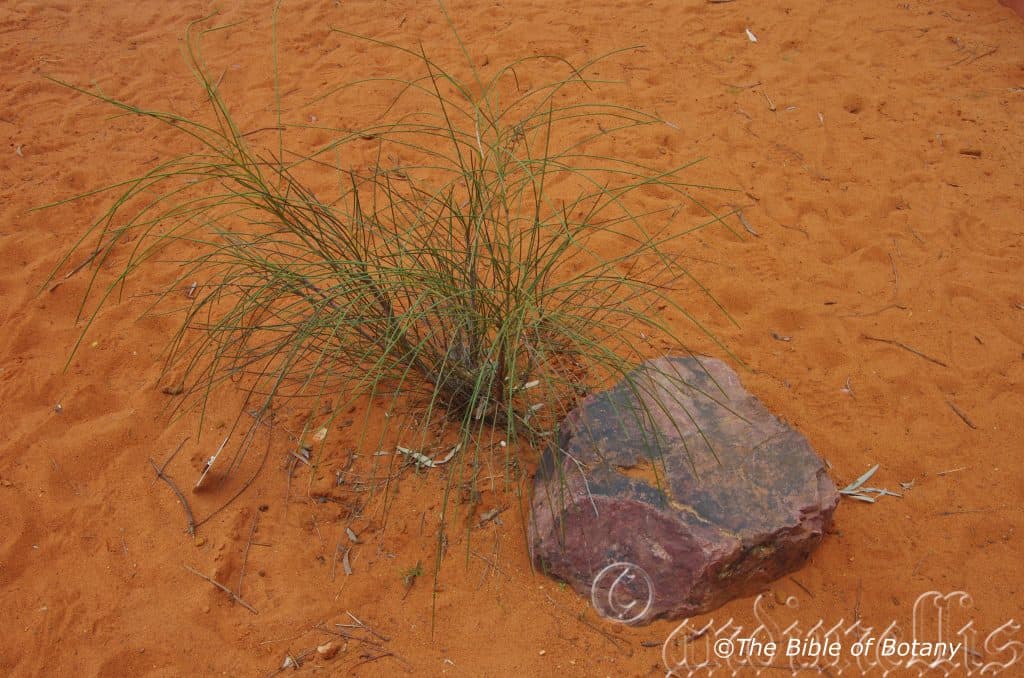
National Botanic Gardens ACT
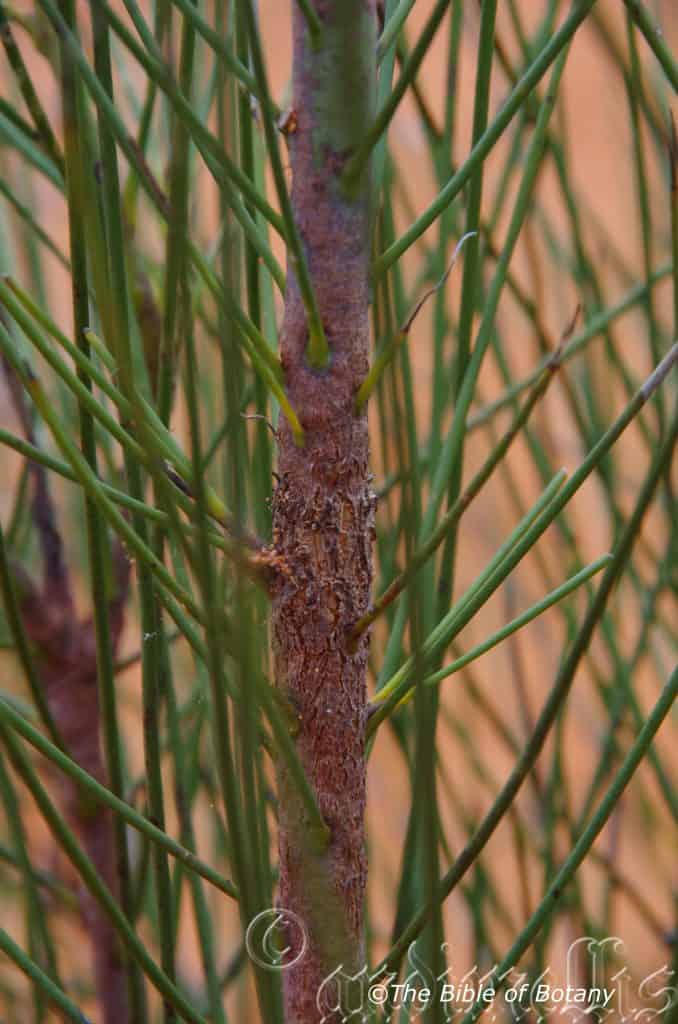
National Botanic Gardens ACT
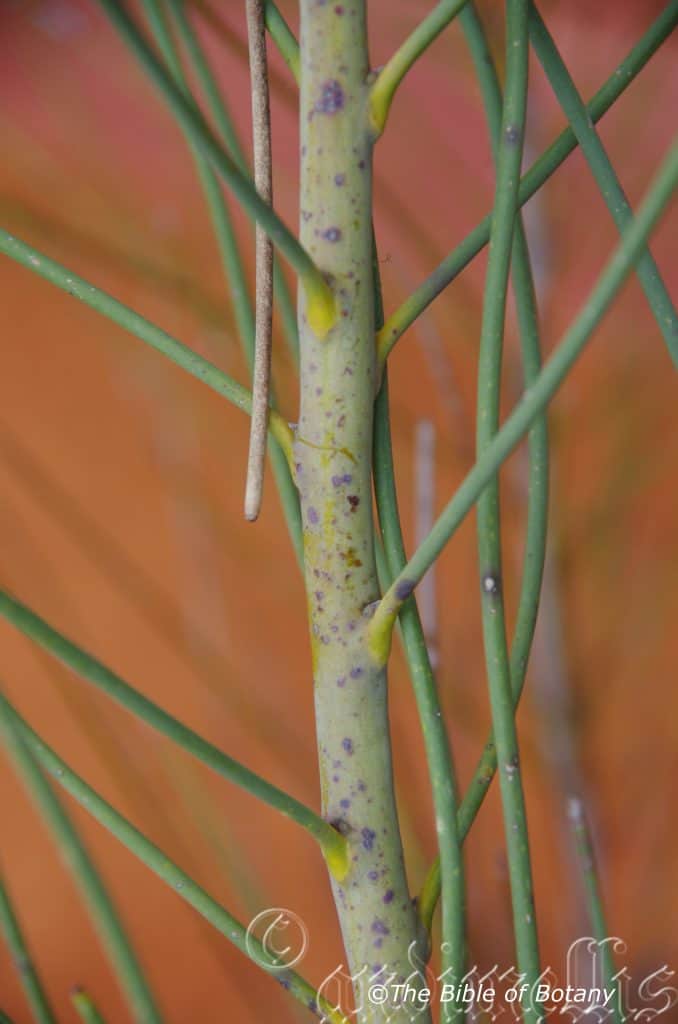
National Botanic Gardens ACT
Hakea lorea
Classification:
Unranked: Eudicots
Order: Proteales
Family: Proteacea
Genus: Is named in honour of Barron von Hake; 1745-1818, who was a German councillor and patron of botany.
Specie: From Lorea, which is Latin for thin strips of leather. It refers to leaves, which resemble narrow strips of leather or bootlaces.
Sub species:
Common Name: Bootlace Hakea or Cork Tree.
Distribution:
Hakea lorea is a widespread specie, which is found across the interior of central and northern Australia, from the southern Cape York Peninsula in the northeast, south to the Darling Downs in the southeast to northern South Australia and through to the Pilbara in the Western Australia.
https://avh.ala.org.au/occurrences/search?taxa=Hakea+lorea#tab_mapView
Habitat Aspect Climate:
Hakea lorea prefers full sun. It grows in dry open schlerophyll woodlands, open grasslands. The altitude ranges from 10 meters ASL to 1500 meters ASL.
The temperatures range from minus 3 degrees in July to 46 degrees in January.
The rainfall ranges from lows of 200mm to an average of 3000mm annually.
Soil Requirements:
Hakea lorea prefers skeletal to deep sands, sandy loams to medium loams. The soils are usually derived from decomposed brown red sandstone or at times granite. The soils pH varies from 5.5pH through to a 7.5pH. It does not tolerate waterlogged soils. Non saline soils to moderately saline soils are tolerated as are salt laden winds.
Height & Spread:
Wild Plants: 1m to 10m by 5m to 6m.
Characteristics:
Hakea lorea is a small shrub that generally grows from 1 meter to 5 meters in height to a small tree from 7 meters to 10 m in height by 6 meters to 8 meters in diameter, with lignotuber.
The trunk and main branches are deep brown, reddish-brown, deep grey to almost black bark is very thick corky with deep longitudinal furrows. The juvenile stems are paler turning grey-green and glabrous near the apexes.
The rigid, almost aciculate, glabrous leaves measure 150mm to 680mm by 0.9mm to 2.5mm width.
The axillary conflorescences are racemes with 15 to 200 individual flowers. The rachis are densely covered in appressed, pubescent hairs and measures 50mm to 250mm in length. The pedicels are moderately to densely covered in appressed, pubescent hairs and measures 3.5mm to 11mm in length. The white to yellowish or greenish perianths are moderately to densely covered in pubescent hairs externally and glabrous internally and measure 5mm to 11mm in length. The gynoecium is moderately to densely covered in pubescent hairs and measures 15mm to 28mm length, while the pollen presenter is oblique.
The fruits of Hakea lorea are narrow, flattened, oblong to ovoid capsules that measure 25mm to 44mm in length by 13mm to 20mm in width. The capsules are smooth with a pronounced beak, while the horns are absent.
Wildlife:
Hakea lorea’s wildlife is unknown to the author.
Cultivation:
Hakea lorea is a small dense shrub or small tree that looks distinctly different around homesteads. It is very suitable for small right through to the largest gardens, in semi-arid, arid, dry temperate or dry sub-tropical zones. As garden subjects it will grow from 4 meters to 12 meters in height by 4 meters to 9 meters in diameter when grown in the open. Light tip pruning will help induce better lateral growth, which in turn will produce more flowers. It is fast growing, drought tolerant once established and are cold tolerant to temperatures as low as minus 3 degrees.
It is most suitable for use adjacent to bush gardens in dry open situations or shelter belts for small native animals and birds.
2, 3 or 4 planted well back from a path will become a very strong focal point and when in flower gain a lot of attention especially when planted below with strong coloured ground covers. Place it in the back ground in small gardens with large leaf, or fine bright green foliage ground covers and very small shrubs or annuals in front. Large gardens have the choice of back ground planting or placing them in the mid ground with taller mallee eucalyptus in the back ground. Plants with red, orange or yellow flowers are particularly suitable and look very natural in both the foreground and midground.
Hakea lorea looks great in a medium or large rockery as the center of attention. Try planting 2 or 3 close together on one side and two on the other side but a little closer to the center for balance. Foreground plants could include Anigozanthos specie or Dianella specie or prostrate Grevillea like Grevillea thelemanniana.
Propagation:
Seeds: Place the follicles in a hot oven after it has been turned off. A good time to do this is after the evening meal has been prepared. The follicles will usually open up after one or two days. Another method is to place them in a paper bag and leave the in the sun on the car for 4 days to a week.
Sow the fresh seeds of Hakea lorea once they have been removed from the follicles directly into a seed raising mix immediately after the last frosts have passed. Cover them with 5mm of fine sand and keep moist not wet. Place the tray in a warm sunny position. When the seedlings are 25mm to 50mm tall, prick them out and plant them into 50mm native tubes using a good organic mix.
Once the seedlings reach 150mm to 200mm in height, nip the tips out before planting them out into their permanent position.
Fertilize using seaweed, fish emulsion or organic chicken pellets soaked in water on an alternate basis. Fertilize every two months until the plants are established then twice annually in early September or March to maintain health, vitality and better flowering. Avoid synthetic fertilizers as they will most likely contain calcium and phosphorous which are toxic to most Proteacea
Further Comments from Readers:
Hi reader, it seems you use The Bible of Botany a lot. That’s great as we have great pleasure in bringing it to you! It’s a little awkward for us to ask, but our first aim is to purchase land approximately 1,600 hectares to link several parcels of N.P. into one at The Pinnacles NSW Australia, but we need your help. We’re not salespeople. We’re amateur botanists who have dedicated over 30 years to saving the environment in a practical way. We depend on donations to reach our goal. If you donate just $5, the price of your coffee this Sunday, We can help to keep the planet alive in a real way and continue to bring you regular updates and features on Australian plants all in one Botanical Bible. Any support is greatly appreciated. Thank you.
In the spirit of reconciliation we acknowledge the Bundjalung, Gumbaynggirr and Yaegl and all aboriginal nations throughout Australia and their connections to land, sea and community. We pay our respect to their Elders past, present and future for the pleasures we have gained.
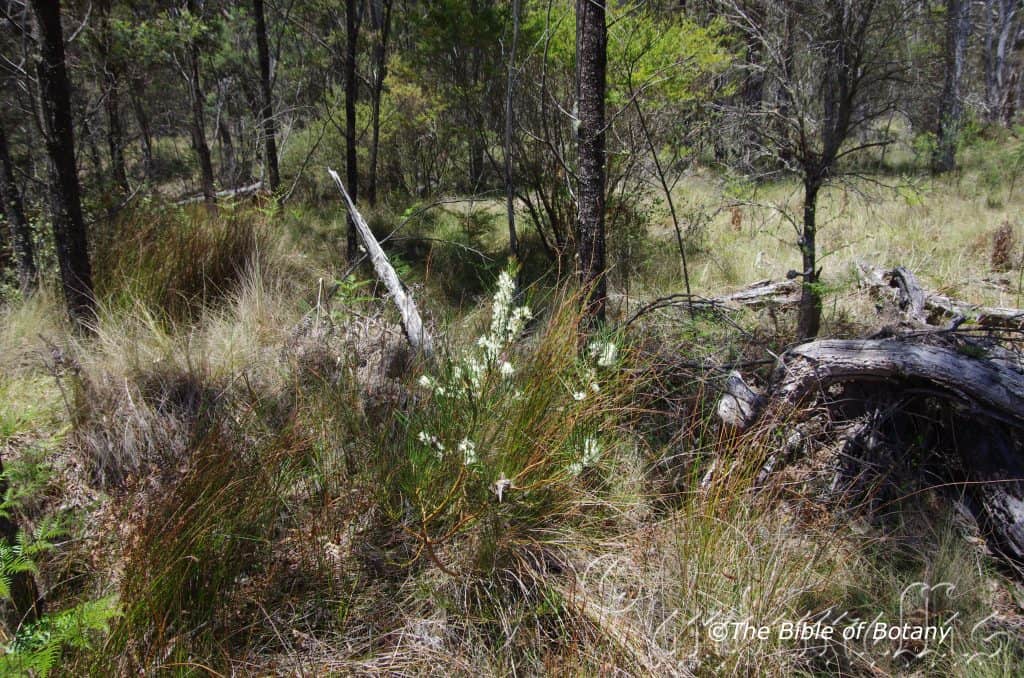
Ebor NSW
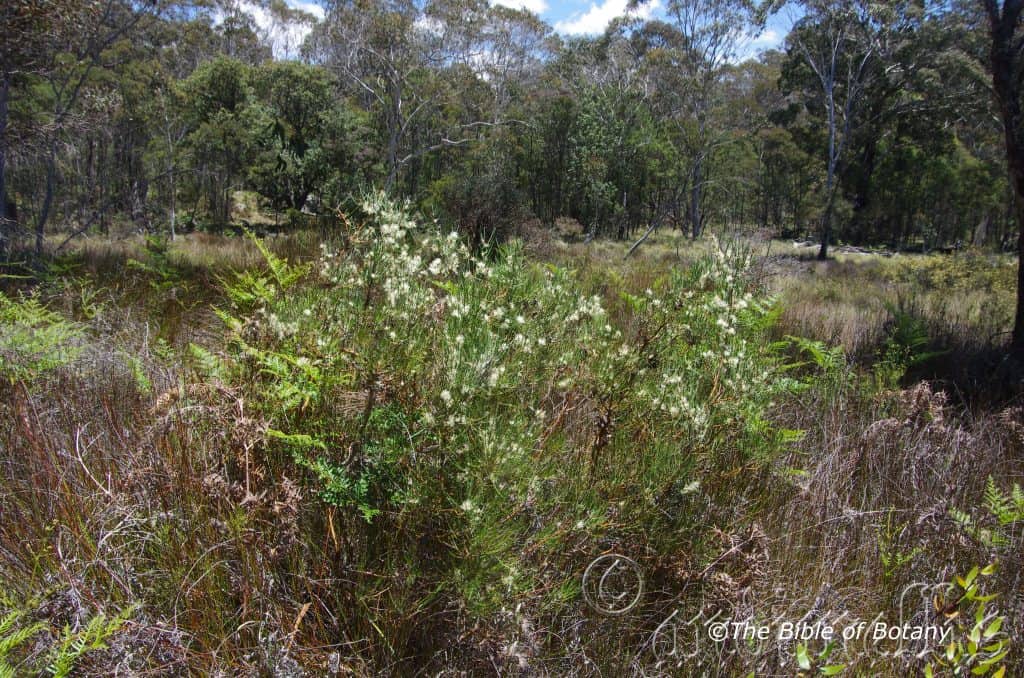
Ebor NSW
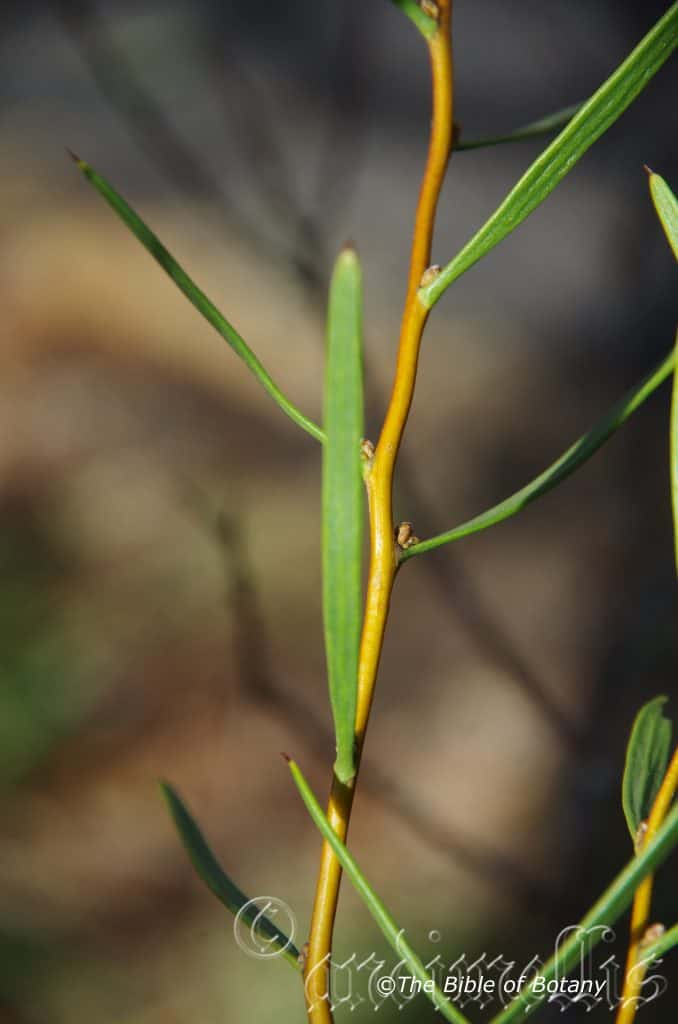
Ebor NSW
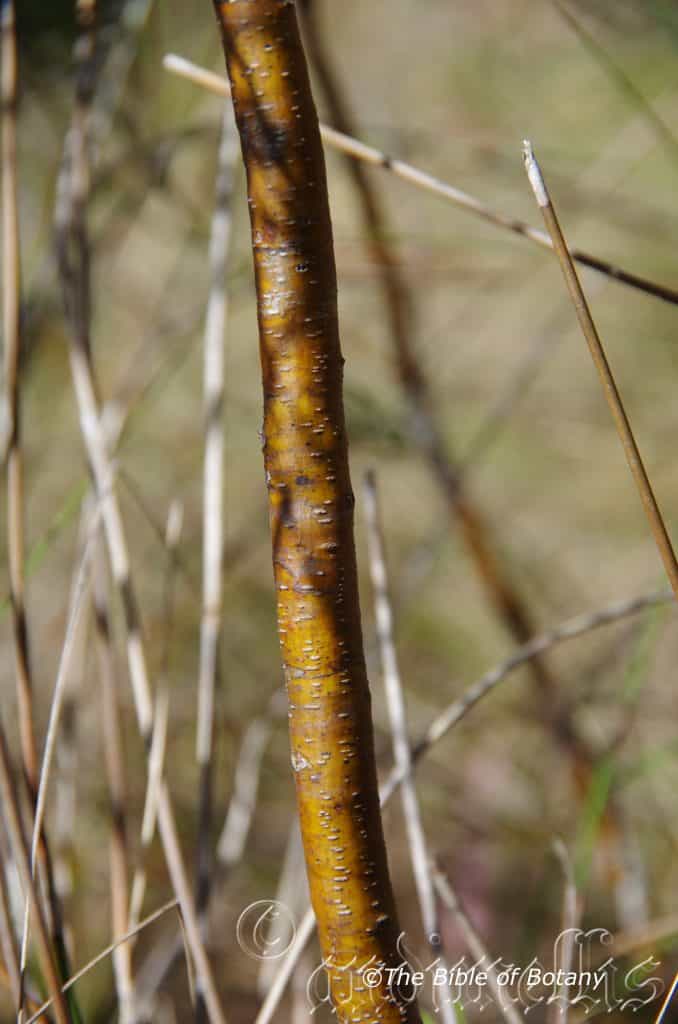
Ebor NSW

Ebor NSW
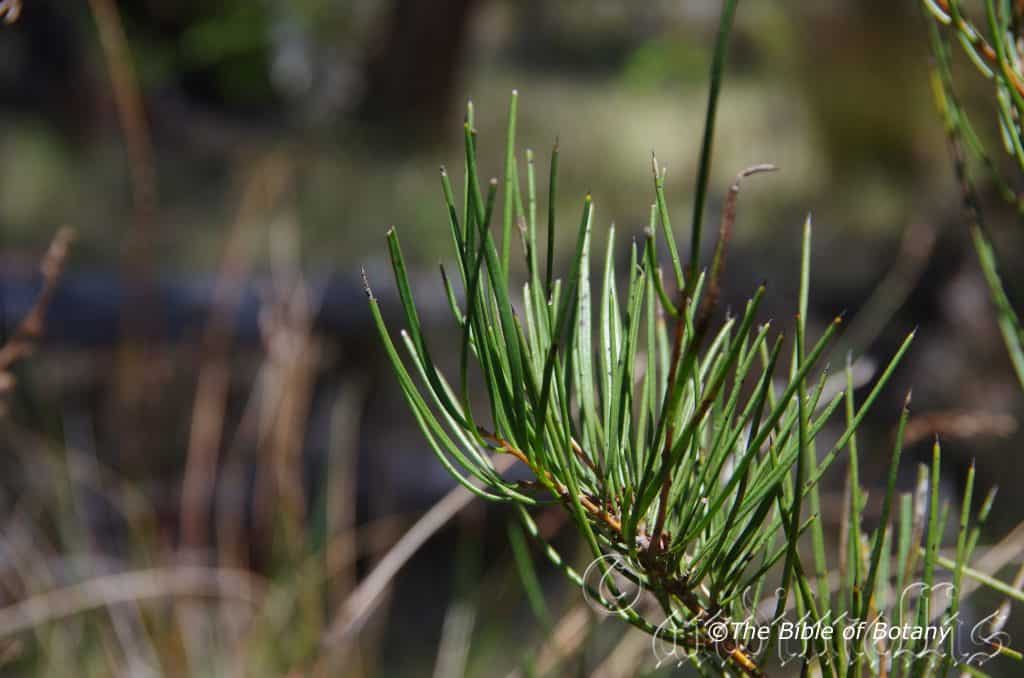
Ebor NSW
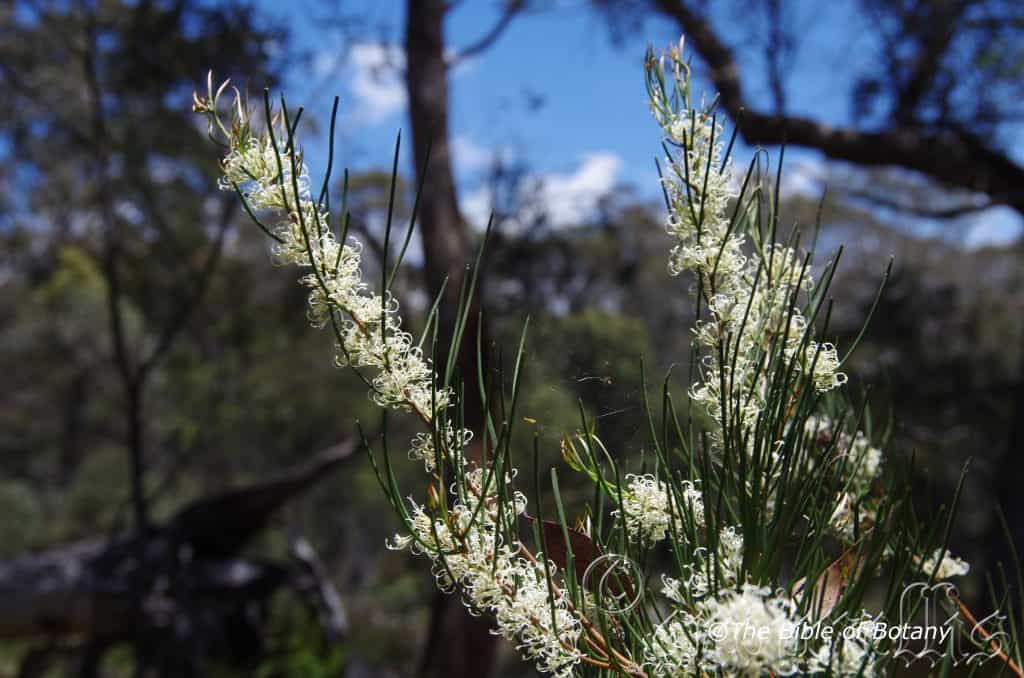
Ebor NSW
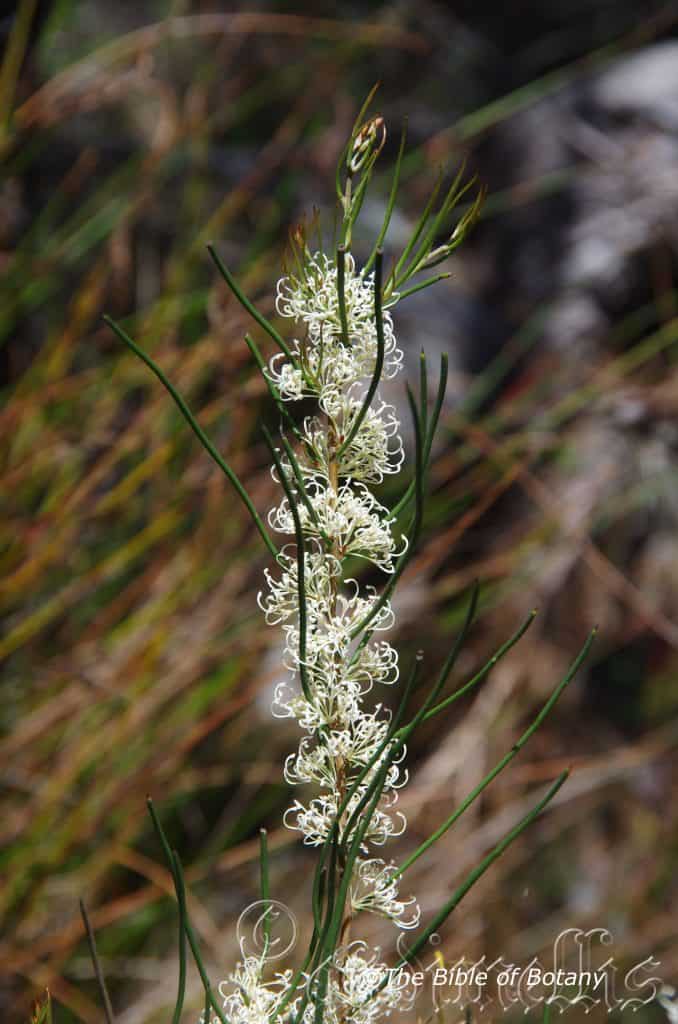
Ebor NSW
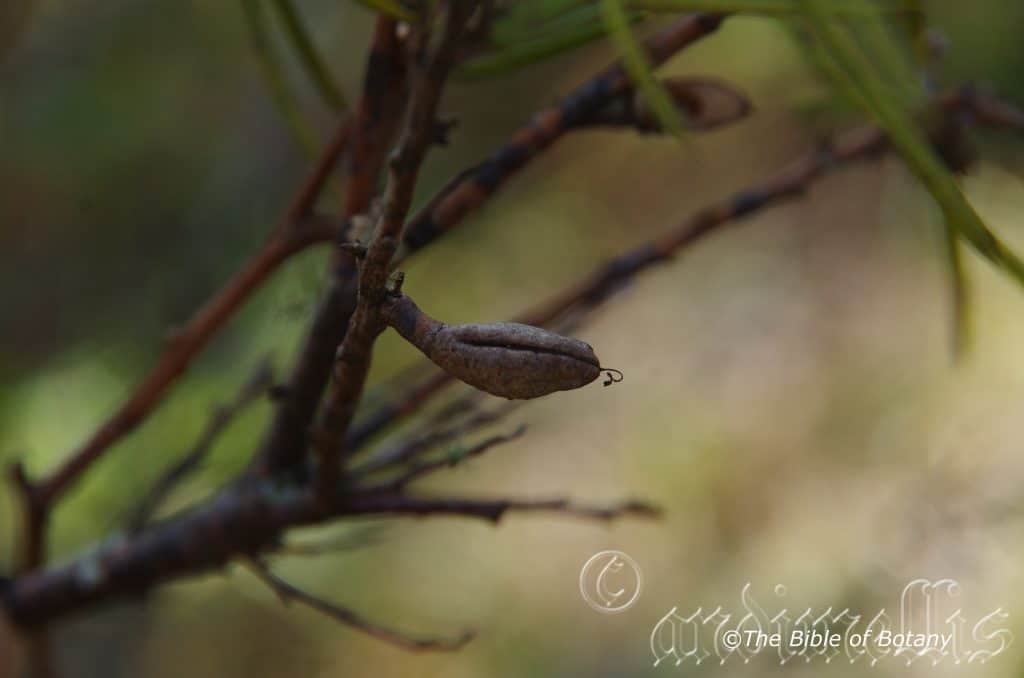
Ebor NSW
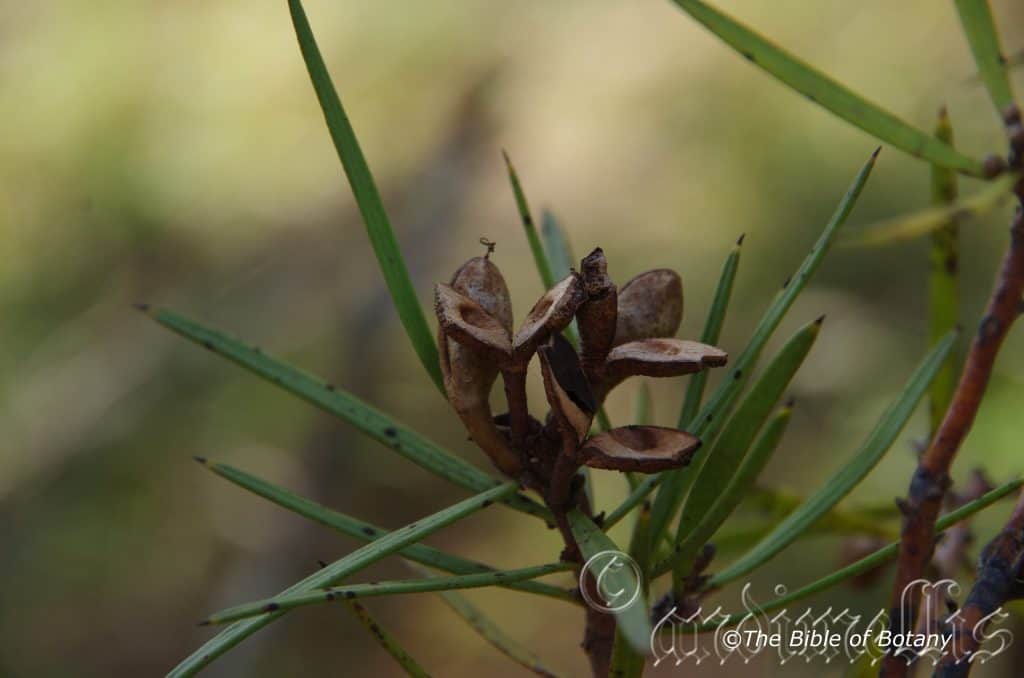
Ebor NSW
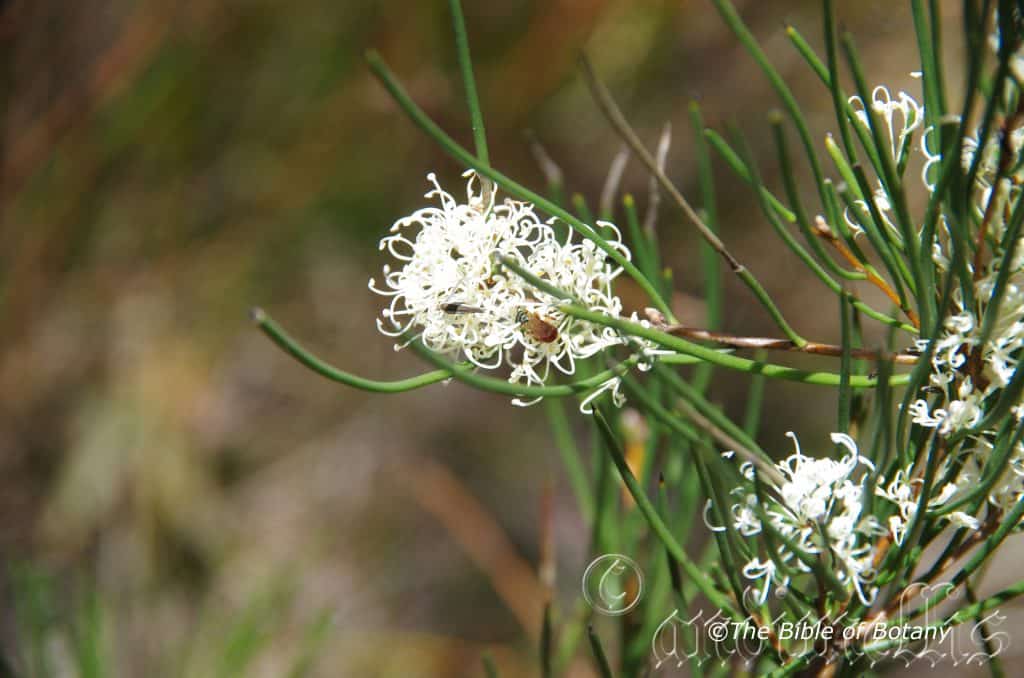
Ebor NSW
Hakea microcarpa
Classification
Unranked: Eudicots
Order: Proteales
Family: Protaleacea
Genus: Is named in honour of Barron von Hake; 1745-1818, who was a German councillor and patron of botany.
Specie: From Mikrós, which is Ancient Greek for small and Kárpis, which is Ancient Greek for a fruit. It refers to plants, which have rather small fruits compared to other species in the genus.
Sub species:
Common Name: Small fruited Hakea.
Distribution:
Hakea microcarpa is a widespread specie found south from Bald Mountain in far south east Queensland through New South Wales to the Strathbogie Ranges and Wilson Promontory in central and Southern Victoria. There is an isolated population in far north eastern Queensland near Mareeba and a disjunct population in the Grampians in Victoria. It is found on the Great Dividing Range to the coast.
It is also found on Flinders Island and Tasmania except the far west coast.
https://avh.ala.org.au/occurrences/search?taxa=Hakea+microcarpa#tab_mapView
Habitat Aspect Climate:
Hakea microcarpa prefers dappled shade to full sun. It grows in moist to wet sclerophyll forest, open woodlands, in moist depressions on flat locations adjacent to wallums or in seasonal swamps. The altitude ranges from 80 meters ASL to 1600 meters ASL.
The temperatures range from minus 5 degrees in July to 36 degrees in January.
The rainfall ranges from lows of 700mm to an average of 1600mm annually.
Soil Requirements:
Hakea microcarpa prefers skeletal sandy loams to medium loams. The soils are usually derived from decomposed brown basalts and black basalts, shale, sandstone or granite. The soils pH varies from 4.5pH through to a 7pH. It does not tolerate waterlogged soils despite it growing in moist areas of dry open woodlands closed Eucalyptus forests. Non saline soils to moderately saline soils are tolerated.
Height & Spread:
Wild Plants: 1m to 2m by 1.5m to 2.5m.
Characteristics:
Hakea microcarpa is a small spreading shrub with glabrous branches and stems. The juvenile growth is sparsely covered in short, white hirsute hairs.
The terete leaves measure 30mm to 110mm in length by 1.5mm to 2mm in diameter or are somewhat flattened, narrow-elliptic and measure 2mm to 5.5 mm in width. The wider leaves are generally found at the base of the stems and narrow as they progress upwards. The concolourous laminas are grey-green and glabrous. The bases taper to the stem, while the apexes taper to a sharp, rigid point. The margins are entire and thickened, while the midvein is prominent on both laminas.
The axillary conflorescences are in clusters of 10 to 40 individual flowers. The rachis are short, while the pedicels measure 2mm to 5mm in length. The whitish, glabrous perianth measures 3.5 to 4.5mm in length, while the pollen presenter is an oblique disc. The flowers appear from mid-September to early December
The oblong follicles have an obtuse apex, with a small protuberance near top of each valve and measure 15mm to 17mm in length by 6mm to 8mm in width.
Wildlife:
Hakea microcarpa’s wildlife is unknown to the author.
Cultivation:
Hakea microcarpa is a dense small shrub that looks similar to a dwarf pine tree. It is very suitable for small or large gardens, in moist situations temperate or sub-tropical zones. As garden subjects it will grow from 2 meters to 2.5 meters in height by 2 meters to 2.5 meters in diameter when grown in the open. Light tip pruning will help induce better lateral growth and which in turn will produce more flowers. It is fast growing, drought tolerant once established and are cold tolerant to temperatures as low as minus 5 degrees.
It is most suitable for use adjacent to bush gardens in dry open situations or as shelter belts for small native animals and birds provided adequate moisture is available.
Hakea microcarpa looks great in a large rockery as the center of attention. Try planting 2 or 3 close together on one side and two on the other side but a little closer to the center for balance. Prune them so they have an undulating look as you move around the bed. In front of this plant out Anigozanthos specie or Dianella specie but not both as they tend to look weedy together however they could be planted in groups separated by a prostrate Grevillea species like Grevillea thelemanniana.
Propagation:
Seeds: Fresh seed can be removed from the follicles by placing the follicles in a hot oven after it has been turned off. A good time to do this is after the evening meal has been prepared. The follicles will usually open up after one or two days. Another method is to place them in a paper bag and leave the in the sun for 4 days to a week.
Hakea microcarpa seeds can be sown directly into a seed raising mix immediately after the last frosts have passed. Cover them with 5mm of fine sand and keep moist not wet. Place the tray in a warm sunny position. When the seedlings are 25mm to 50mm tall, prick them out and plant them into 50mm native tubes using a good organic mix.
Once the seedlings reach 150mm to 200mm in height, nip the tips out before planting them out into their permanent position.
Fertilize using seaweed, fish emulsion or organic chicken pellets soaked in water on an alternate basis. Fertilize every two months until the plants are established then twice annually in early September or March to maintain health, vitality and better flowering. Avoid synthetic fertilizers as they will most likely contain calcium and phosphorous which are toxic to most Proteacea.
Further Comments from Readers:
Hi reader, it seems you use The Bible of Botany a lot. That’s great as we have great pleasure in bringing it to you! It’s a little awkward for us to ask, but our first aim is to purchase land approximately 1,600 hectares to link several parcels of N.P. into one at The Pinnacles NSW Australia, but we need your help. We’re not salespeople. We’re amateur botanists who have dedicated over 30 years to saving the environment in a practical way. We depend on donations to reach our goal. If you donate just $5, the price of your coffee this Sunday, We can help to keep the planet alive in a real way and continue to bring you regular updates and features on Australian plants all in one Botanical Bible. Any support is greatly appreciated. Thank you.
In the spirit of reconciliation we acknowledge the Bundjalung, Gumbaynggirr and Yaegl and all aboriginal nations throughout Australia and their connections to land, sea and community. We pay our respect to their Elders past, present and future for the pleasures we have gained.
Hakea ochroptera
Classification
Unranked: Eudicots
Order: Proteales
Family: Protaceae
Genus: Is named in honour of Barron von Hake; 1745-1818, who was a German councillor and patron of botany.
Specie: From Ochra, which is Ancient Greek for pale brownish-yellow and Pteron, which is Ancient Greek for a wing. It refers to seeds, which have a yellowish-ochre coloured wing.
Sub species:
Common Name: Woolgoolga Hakea.
Distribution:
Hakea ochroptera is restricted to a small region with in the Nymboida National Park, Bindarri National Park and the Dorrigo National Park in north eastern New South Wales.
https://avh.ala.org.au/occurrences/search?taxa=Hakea+ochroptera#tab_mapView
Habitat Aspect Climate:
Hakea ochroptera prefers light dappled shade to full sun. It grows in wet sclerophyll forest, openings in rainforest, on rocky sites on the eastern escarpments within its distribution. The altitude ranges from 750 meters ASL to 900 meters ASL.
The temperatures range from minus 3 degrees in July to 36 degrees in January.
The rainfall ranges from lows of 1100mm to an average of 2350mm annually.
Soil Requirements:
Hakea ochroptera prefers skeletal sandy loams to medium loams. The soils are usually derived from decomposed brown basalts and black basalts. The soils pH varies from 5.5pH through to a 6pH. It does not tolerate waterlogged soils. Non saline soils to moderately saline soils are tolerated as are salt laden winds.
Height & Spread:
Wild Plants: 4m to 12m by 5m to 6m.
Characteristics:
Hakea ochroptera’s main branches are mid grey-brown and glabrous to slightly scabrous. The branchlets are glossy grey-brown to olive grind are densely covered in pale rusty-brown tomentose and hirsute hairs with white appressed hairs below.
Hakea ochroptera’s alternate, decussate, terete leaves measure 50mm to 135mm in length by 0.8mm to 1.2mm in diameter. The bases are sessile while the apexes taper to a long 1mm to 2mm mucronate point. The concolourous laminas are deep blue-green and covered in white caduceous appressed puberulent hairs which become erect before falling. The laminas are rigid and grooved on the lower surface.
The conflorescences of Hakea ochroptera are small clusters or umbels born from the leaf axils. The clusters or racemes contain 1 to 6 flowers. The racemes are covered in rusty-brown tomentose hairs. The perianth and style are the most prominent parts of the flower. The individual perianths are white from the base to the limbs. The perianths are glabrous externally and internally and measure 4mm to 5mm in length. The raceme and pedicels are covered in rusty-brown pulverulent hairs. The racemes measure 1mm to 3mm in length while the pedicels measure 4.5mm to 7.5mm in length.
The glabrous style is white from the base through to the stigma. The oblique, white pollen presenter is a disc like. The pistils measure 8mm to 10mm in length. The erect style is glabrous. The flowers appear from September to October.
Hakea ochroptera’s fruits are globose woody follicles. The dull green follicles turn pale grey to mid silvery-grey and are densely covered in lepidote lumps. The beak is short and broad while the horns are absent or obscure. The follicles measure 32mm to 40mm in length by 20mm to 25mm in width.
The pale fawnish-grey to off white obloidal seeds taper at the base and are obtuse at the apex. They measure 8m to 10mm in length by 3.5mm to 5mm in width. The fragile chartaceous wings are mainly apically positioned and run narrowly down one side of the seed and are shortly tapered at the base. The wings measure 15mm to 17mm in length by 10mm to 12mm in width at the widest point.
Confusing Species:
The pedicels on Hakea sericea are covered in white villous or hirsute hairs. The follicles are deeper grey to deep grey-brown and sparsely covered in lepidote to papillate lumps. The horns on the follicles measure 1mm to 3mm in length. The seeds wings are decurrent and at times runs narrowly down one side of the seed while it is absent or very narrowly run down the other side.
Wildlife:
Hakea ochroptera’s wildlife is unknown to the author.
Cultivation:
Hakea ochroptera is a dense small shrub that looks similar to a dwarf pine tree. It is very suitable for small right through to the largest garden, in semi-arid, temperate or sub-tropical zones. As garden subjects they will grow from 4 meters to 12 meters in height by 2 meters to 6 meters in diameter when grown in the open. Light tip pruning will help induce better lateral growth and which in turn will produce more flowers. It is fast growing, drought tolerant once established and are cold tolerant to temperatures as low as minus 5 degrees.
It is most suitable for use adjacent to bush gardens in dry open situations or shelter belts for small native animals and birds.
2, 3 or 4 planted well back from a bend will become a very strong focal point when in flower gain a lot of attention especially when planted below with strong coloured ground covers because of the fresh clean open look of the foliage even in the driest of times. Place them in the back ground in small gardens with large leaf, or fine bright green foliage ground covers and very small shrubs or annuals in front. Large gardens have the choice of back ground planting or placing them in the mid ground with tall eucalyptus or rainforest scenario in the back ground. Plants with white, cream or pale yellow flowers are particularly suitable and look very natural in both the foreground and background.
Hakea ochroptera looks great in a medium or large rockery as the center of attention. Try planting 2 or 3 close together on one side and two on the other side but a little closer to the center for balance. Prune them so they have an undulating look as you move around the bed. In front of this plant out Anigozanthos specie or Dianella specie but not both as they tend to look weedy together however they could be planted in groups separated by a prostrate Grevillea like Grevillea thelemanniana.
Propagation:
Seeds: Fresh seed can be removed from the follicles by placing the follicles in a hot oven after it has been turned off. A good time to do this is after the evening meal has been prepared. The follicles will usually open up after one or two days. Another method is to place them in a paper bag and leave the in the sun for 4 days to a week.
Hakea ochroptera seeds can be sown directly into a seed raising mix immediately after the last frosts have passed. Cover them with 5mm of fine sand and keep moist not wet. Place the tray in a warm sunny position. When the seedlings are 25mm to 50mm tall, prick them out and plant them into 50mm native tubes using a good organic mix.
Once the seedlings reach 150mm to 200mm in height, nip the tips out before planting them out into their permanent position.
Fertilize using seaweed, fish emulsion or organic chicken pellets soaked in water on an alternate basis. Fertilize every two months until the plants are established then twice annually in early September or March to maintain health, vitality and better flowering. Avoid synthetic fertilizers as they will most likely contain calcium and phosphorous which are toxic to most Proteacea.
Further Comments from Readers:
Hi reader, it seems you use The Bible of Botany a lot. That’s great as we have great pleasure in bringing it to you! It’s a little awkward for us to ask, but our first aim is to purchase land approximately 1,600 hectares to link several parcels of N.P. into one at The Pinnacles NSW Australia, but we need your help. We’re not salespeople. We’re amateur botanists who have dedicated over 30 years to saving the environment in a practical way. We depend on donations to reach our goal. If you donate just $5, the price of your coffee this Sunday, We can help to keep the planet alive in a real way and continue to bring you regular updates and features on Australian plants all in one Botanical Bible. Any support is greatly appreciated. Thank you.
In the spirit of reconciliation we acknowledge the Bundjalung, Gumbaynggirr and Yaegl and all aboriginal nations throughout Australia and their connections to land, sea and community. We pay our respect to their Elders past, present and future for the pleasures we have gained.
Hakea orthorrhyncha
Classification
Unranked: Eudicots
Order: Proteales
Family: Protaleacea
Genus: Is named in honour of Barron von Hake; 1745-1818, who was a German councillor and patron of botany.
Specie: From Orthos, which is Greek for upright, straight, right or correct and Rhyncha, which is Ancient Greek for a nose. It refers to fruits, which have a nose like appendage at the apex.
Sub species: Hakea orthorrhyncha var. filiformis. From Filum, which is Latin for a thread or a thin cord and Forme, which is Latin for to take the shape or form of. It refers to a structure or organ, which is thread like.
Sub species: Hakea orthorrhyncha var. orthorrhyncha. From Orthos, which is Greek for upright, straight, right or correct and Rhyncha, which is Ancient Greek for a nose. It refers to fruits, which have a nose like appendage at the apex.
Common Name: Birds Beak Hakea.
Distribution:
Hakea orthorrhyncha var. filiformis Hakea orthorrhyncha is an endemic species to the south west coast of Western Australia south from the kalbarri to Midlope Springs.
Hakea orthorrhyncha var. orthorrhyncha is an endemic species to the south west coast of Western Australia south from south of Shark Bay to west of Murchison either side of Geraldton.
https://avh.ala.org.au/occurrences/search?taxa=Hakea+orthorrhyncha#tab_mapView
Habitat:
Hakea orthorrhyncha prefers full sun to light dappled shade. It grows on open woodlands, dry sclerophyll scrublands. The altitude ranges from 15 meters ASL to 150 meters ASL.
The temperatures range from 6 degrees in July to 38 degrees in January.
The rainfalls range from lows of 250mm to an average of 650mm annually.
Soil Requirements:
Hakea orthorrhyncha prefers grey or yellow sandy soils, sandy clays or sandy loams. The soils are usually derived from decomposed granites. The soils pH varies from 5.5pH through to a 6.5pH. It does not tolerate waterlogged soils. Non saline soils to moderately saline soils are tolerated as are salt laden winds.
Height & Spread:
Wild Plants: 1m to 3m x 1m to 3m.
Characteristics:
Hakea orthorrhyncha’s main stems are grey, dull and glabrous. The branchlets are pale grey, glabrous and are densely covered in off white, appressed, pubescent hairs. The shrubs form a lignotuber beneath the ground.
The leaves of Hakea orthorrhyncha are described in detail under subspecie differences.
The conflorescences of Hakea orthorrhyncha are very short thick rachises, born from the leaf axils or cauliflorous. The rachis measures 0.5mm to 2.5mm in length and have 10 to 20 individual flowers. The perianth and style are the most prominent parts of the flower. The individual perianths are red to a deep scarlet-red from the base through to the lobes which turn black shortly after anthesis. The perianths are sparsely covered in white puberulent hairs externally and internally and are moderately covered in white and pale rusty–brown pulverulent hairs. The perianth and lobes measure 3.5mm to 6mm in length. The lobes are recurved, free and joined at the apex. The erect style is glabrous. The pedicels are moderately covered in white or pale rusty-red appressed pubescent hairs and measure 4.5mm to 5.5mm in length.
The style is red to deep scarlet-red from near the orange base through to the stigma and pollen presenter. The pollen presenter is lateral. The pistils measure 21mm to 22mm in length while the ovate stigma measures 1mm to 1.4mm in length. The flowers appear from May to September.
Hakea orthorrhyncha’s fruits are obliquely ovate woody follicles. The aristate beaks are hornless. The olive-green follicles turn dull to semi glossy pale fawnish-grey at the base and deepen slightly in colour as it approaches the apex of the beak. The glabrous follicles are covered in very fine resinous markings when ripe. The follicles measure 40mm to 50mm in length by 16mm to 26mm in width while the beak measures 8mm to 10mm in length.
The obliquely ovate, black seeds and wings measure 22mm to 27mm in length by 9mm to 12mm in width. The black, chartaceous wing on the seed is mainly apical with a broad extension down one side of seed only or with a broad extension down one side and narrow down other while it is narrow around the base. The seeds measure 4.3mm to 6.6mm in length by 5mm to 7mm in width.
Subspecie Differences:
Hakea orthorrhyncha sub sp. orthorrhyncha’s alternate leaves are narrow linear and slightly falcate to falcate and measure 70mm to 180mm in length by 1.3mm to 2.5mm in width. The bases are tapered while the apexes are tapered with a straight or bent, mucronate tip that measures 0.5mm to 1.6mm in length. The concolourous laminas are grass-green. The laminas are flat while the margins are entire.
Hakea orthorrhyncha sub sp. filiformis’s alternate terete leaves are straight and measure 80mm to 160mm in length by 0.9mm to 1.3mm in diameter. The bases are tapered while the apexes are tapered with a straight or bent mucronate tip that measures 0.5mm to 1.6mm in length. The concolourous laminas are deep grass-green.
Wildlife:
Hakea orthorrhyncha’s wildlife is unknown to the author.
Cultivation:
Hakea orthorrhyncha is a small shrub with a dense canopy that looks spectacular in flower. It is very suitable for small gardens right through to the largest garden, in arid, semi-arid, temperate zones. I would be tempted to grow this Hakea as far north as Grafton in New South Wales in frost free areas and on sand stone or granitic sand loams. As garden subjects they will grow from 1 meter to 2 meters in height by 1 meter to 2 meters in diameter when cultivated in the open.
Light tip pruning can be done to increase the number of stems and consequently the number of flowers the following season on the previous season’s wood. Light pruning is advisable in the first 2 or 3 years to maintain a denser shrub and after flowering to make them shorter and bushier. It can be pruned back hard to just above the ground every 7 to 10 years to invigorate the shrubs. It is fast growing, drought tolerant once established and are cold tolerant to temperatures as low as 4 degrees.
It is best used adjacent to small areas of bush close to paths or the house but far enough back that the prickly foliage is not annoying and so their exquisite flowers can be viewed regularly. It is great in small or large rockeries. Here it can be planted in small groups of 2 or 3 as a standalone plant to create a harsh barren look with other arid plants. If it is surrounded by shorter plants with fine foliages and red flowers they will dominate at the center giving height and strength to the bed especially when it is in flower. Remember that the trunk and main stems must remain exposed so the flowers can be appreciated. Do not use plants with large leaves as these will be too overpowering and they will blend into each other. Planted with a mass of smaller plants and ground covers with mixed coloured flowers and foliages will ensure a great display during the winter and spring months and for the rest of the year. This would be particularly strong, if a mixture of different finer foliages of different colours and textures are incorporated together. This will give a strong uplifting of central height. Be sure to plant any plant exactly in the center for a formal look or well off to one side for an informal look. 2 or 3 shrubs close together on one side looks even more spectacular when just a single plant is placed on the other side to give balance to the picture. Mass plant below so the whole bed is covered for a woodland scene or sparsely plant for an arid scene. Mass planting off sets the open habit of this small tree and has the advantage when it comes to hard pruning that it can be done over a two year period so that there is no break in flowering. Two plants can achieve the same scenario if planted in close proximity and still achieve the sparseness and harshness of the desert picture. Here a few annuals strategically scattered around would complete the picture. The plants planted out below should have a mixture of bold colours radiating out from the base of the trees so use pinks and mauves discretely below and reds and whites further out.
Propagation:
Seeds: Hakea orthorrhyncha seeds need to be treated to extract the seeds from the follicles. Seeds can be removed from the follicles by placing the follicles in a hot oven after it has been turned off. A good time to do this is after the evening meal has been prepared. The follicles will usually open up after one or two days. Another method is to place them in a paper bag and leave the in the sun for 4 days to a week.
Hakea orthorrhyncha seeds can be sown directly into a seed raising mix. Cover them with 5mm of fine sand and keep moist not wet. Place the tray in a warm sunny position. When the seedlings are 25mm to 50mm tall, prick them out and plant them into 50mm native tubes using a good organic mix.
Once the seedlings reach 150mm to 200mm in height, nip the tips out before planting them out into their permanent position.
Fertilize using seaweed, fish emulsion or organic chicken pellets soaked in water on an alternate basis. Fertilize every two months until the plants are established then twice annually in early September or March to maintain health, vitality and better flowering. Avoid synthetic fertilizers as they will most likely contain calcium and phosphorous which are toxic to most Proteacea
Further Comments from Readers:
Hi reader, it seems you use The Bible of Botany a lot. That’s great as we have great pleasure in bringing it to you! It’s a little awkward for us to ask, but our first aim is to purchase land approximately 1,600 hectares to link several parcels of N.P. into one at The Pinnacles NSW Australia, but we need your help. We’re not salespeople. We’re amateur botanists who have dedicated over 30 years to saving the environment in a practical way. We depend on donations to reach our goal. If you donate just $5, the price of your coffee this Sunday, We can help to keep the planet alive in a real way and continue to bring you regular updates and features on Australian plants all in one Botanical Bible. Any support is greatly appreciated. Thank you.
In the spirit of reconciliation we acknowledge the Bundjalung, Gumbaynggirr and Yaegl and all aboriginal nations throughout Australia and their connections to land, sea and community. We pay our respect to their Elders past, present and future for the pleasures we have gained.
Hakea pedunculata
Classification
Unranked: Eudicots
Order: Proteales
Family: Protaleacea
Genus: Is named in honour of Barron von Hake; 1745-1818, who was a German councillor and patron of botany.
Specie: From Pous, which is Ancient Greek or Pes/Pedi, which is Latin for a foot or feet. It refers to flowers, which have a prominent peduncle and pedicel. The primary or main stalk which all the pedicels are derived.
Sub species:
Common Name: Cape Hakea.
Distribution:
Hakea pedunculata is found in north east Queensland south from the Torres Strait Islands to Inkerman station and the Daintree River on Cape York Peninsular.
https://avh.ala.org.au/occurrences/search?taxa=Hakea+pedunculata#tab_mapView
Habitat:
Hakea pedunculata prefers full sun to light dappled shade. It grows in open scrublands, dry sclerophyll woodlands often associated with Melaleuca on the land ward side of mangrove forests. The altitude ranges from 15 meters ASL to 150 meters ASL.
The temperatures range from 12 degrees in July to 38 degrees in January.
The rainfalls range from lows of 950mm to an average of 3200mm annually.
Soil Requirements:
Hakea pedunculata prefers medium clays or alluvial loams. It grows on skeletal sands to sandy loams. The soils are usually derived from decomposed sandstones. The soils pH varies from 6pH through to a 6.5pH. It does not tolerate waterlogged soils. Non saline soils to moderately saline soils are tolerated as are salt laden winds.
Height & Spread:
Wild Plants: 1m to 5m by 1m to 3m.
Characteristics:
Hakea pedunculata’s grows as a small straggly twisted or gnarled tree with finely fissured, red and flaky bark on the trunk. The branchlets are red and glabrous.
Hakea pedunculata’s adjacent, narrow ovate to broad ovate leaves measure 50mm to 100mm in length by 8mm to 25mm in width. The base is cuneate while the apex is obtuse mucronate, yellow or black at the mucronate tip. The concolourous laminas are deep green and glabrous. The margins are entire and curve slightly upwards close to the margins especially near the apex. The petioles measure 0mm to 0.5mm in length.
The conflorescences of Hakea pedunculata are very short rachises which are born from the older leaf axils at the end of a short pedicel. The rachis measure 7mm to 25mm in length. The pedicels measure 2mm to 20mm in length and have 30 to 40 flowers. It is glabrous or sparsely covered in white pulverulent hairs. The perianth and style are the most prominent parts of the flower. The individual perianths are creamy green to creamy white from the base through to the limbs. The perianths are moderately covered in white pubescent hairs becoming glabrous externally and internally before anthesis. The perianth and limbs measure 3.5mm to 4mm in length. The lobes are recurved and free. The pedicels measure 5mm to 8mm in length and are covered in white pulverulent hairs.
The hooked, recurved or erect style is creamy white to creamy green from the base through to the stigma. The oblique or lateral pollen presenter is creamy white to creamy green. The glabrous styles and ovaries measure 9mm to 13mm long. The flowers appear from April to August and sometimes in February when ideal weather conditions prevail.
Hakea pedunculata’s fruit is an elliptical to ovate woody follicle. The base is attenuate and gently tapers and recurves towards the apex of the beaks. The follicles are olive green turning an olive-grey at the base and deepening in colour as they approach the apex of the beak. They measure 20mm to 30mm in length by 10mm to 12mm in width. The obliquely ovate, black seeds measure 18mm to 22mm in length by 5mm to 7mm in width. The black winged seed is broader on one side and narrower on the other with an 8mm to 10mm tail.
Wildlife:
The flowers of Hakea pedunculata are a great attraction for butterflies, native bees and native flies.
Cultivation:
Hakea pedunculata is a small shrub with a dense canopy, unusual bark and a gnarled appearance. It is very suitable for small gardens right through to the largest garden, in sub-tropical and tropical zones. As garden subjects they will grow from 4 meters to 6 meters in height by 3 meters to 4 meters in diameter when cultivated in the open. It is fast growing, and are cold tolerant to temperatures as low as 6 degrees.
It is most suitable for use in sunny courtyards, besides pathways, rockeries as a feature plant where a gnarled twisted trunk is to be featured.
This is a beautiful small tree that I would be very tempted to use as a bonsai tree or in a formal Japanese style garden where the emphasis is in the gnarled appearance of the trunk and a red bark.
Place them near old stumps, large rocks or roots to make the stumps or roots look more gnarled. This is a scene of severe harshness. They can be equally well used to high light a harsh desert scene, one of floods or to add age to a small area.
A small open woodland can be created easily and affectively by strategically scatter planting them on a flat block. Mass plant below so the whole area is covered in annuals and small prostrate shrubs for a woodland scene or sparsely plant for an arid scene.
Two plants can be planted close together to achieve the same scenario of a desert scene if planted in close proximity, still achieving the sparseness and harshness of the desert picture. Here a few annuals strategically scattered around would complete the picture. The plants planted out below should have a mixture of bold colours radiating out from the base of the trees so use pinks and mauves discretely below and reds and whites further out.
Propagation:
Seeds:
Hakea pedunculata seeds can be sown directly into a seed raising mix. Cover them with 5mm of fine sand and keep moist not wet. Place the tray in a warm sunny position. When the seedlings are 25mm to 50mm tall, prick them out and plant them into 50mm native tubes using a good organic mix.
Once the seedlings reach 150mm to 200mm in height, nip the tips out before planting them out into their permanent position.
Fertilize using seaweed, fish emulsion or organic chicken pellets soaked in water on an alternate basis. Fertilize every two months until the plants are established then twice annually in early September or March to maintain health, vitality and better flowering. Avoid synthetic fertilizers as they will most likely contain calcium and phosphorous which are toxic to most Proteacea
Further Comments from Readers:
Hi reader, it seems you use The Bible of Botany a lot. That’s great as we have great pleasure in bringing it to you! It’s a little awkward for us to ask, but our first aim is to purchase land approximately 1,600 hectares to link several parcels of N.P. into one at The Pinnacles NSW Australia, but we need your help. We’re not salespeople. We’re amateur botanists who have dedicated over 30 years to saving the environment in a practical way. We depend on donations to reach our goal. If you donate just $5, the price of your coffee this Sunday, We can help to keep the planet alive in a real way and continue to bring you regular updates and features on Australian plants all in one Botanical Bible. Any support is greatly appreciated. Thank you.
In the spirit of reconciliation we acknowledge the Bundjalung, Gumbaynggirr and Yaegl and all aboriginal nations throughout Australia and their connections to land, sea and community. We pay our respect to their Elders past, present and future for the pleasures we have gained.
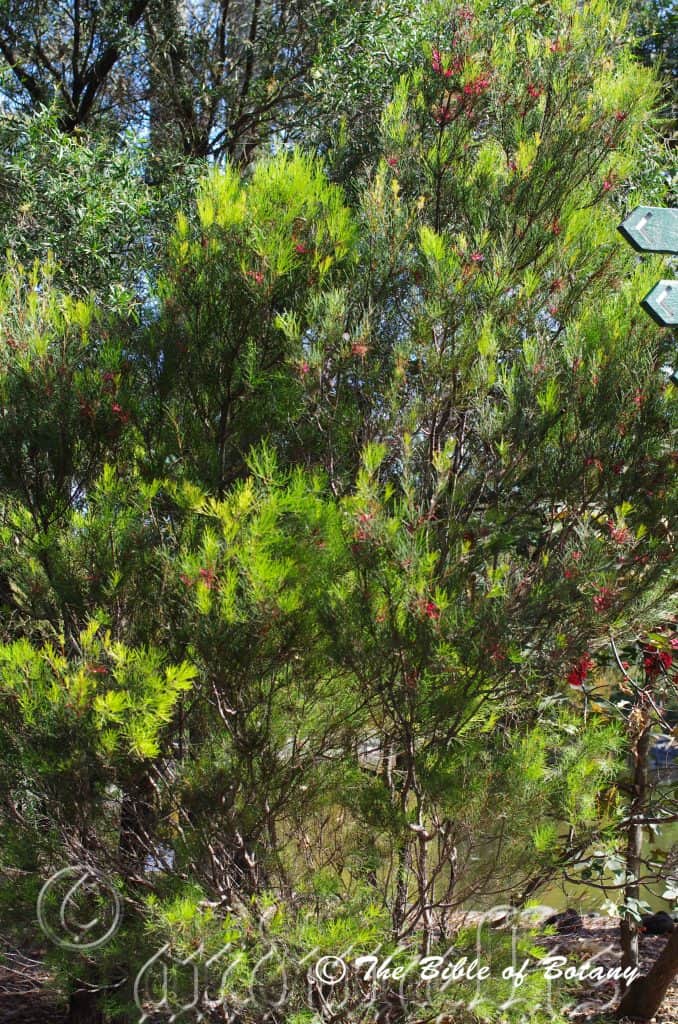
Mount Cootha Botanic Gardens Qld.
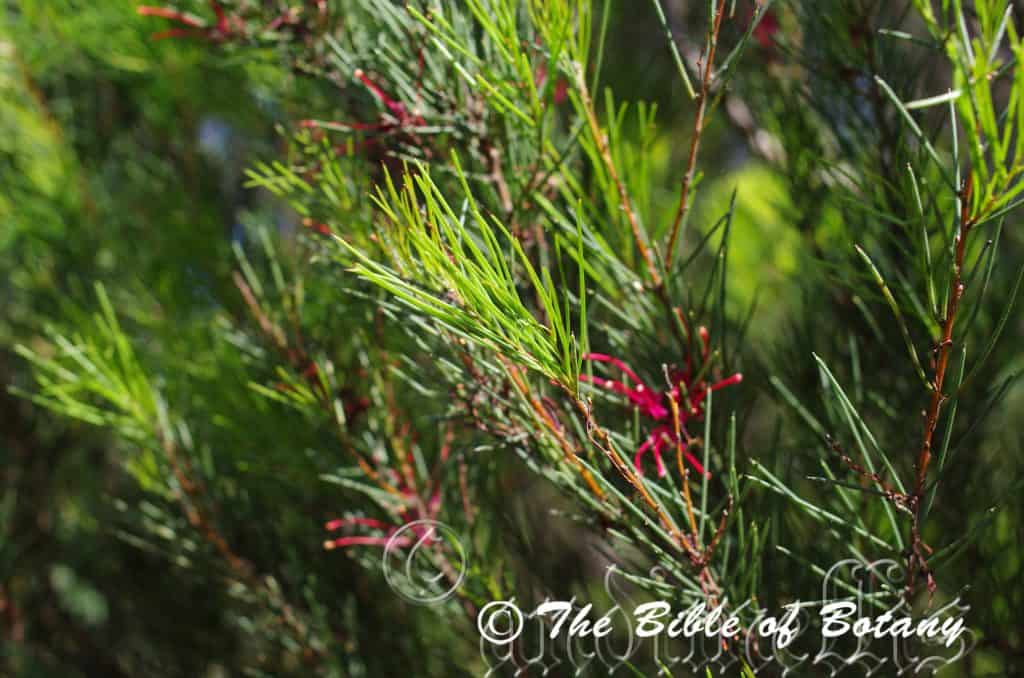
Mount Cootha Botanic Gardens Qld.
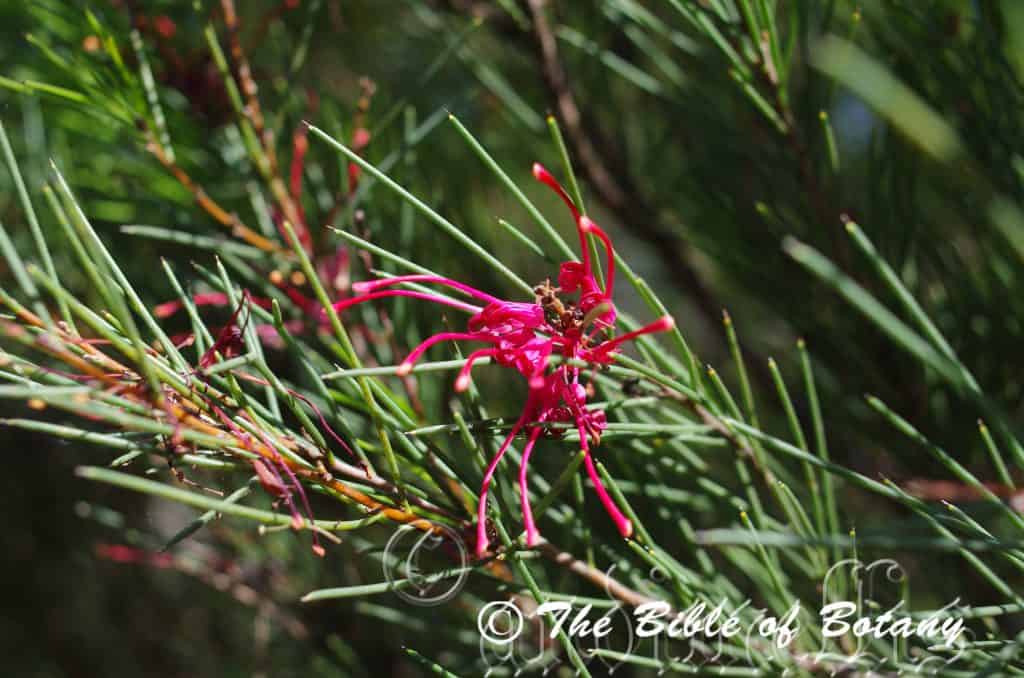
Mount Cootha Botanic Gardens Qld.
Hakea purpurea
Classification
Unranked: Eudicots
Order: Proteales
Family: Proteacea
Genus: Is named in honour of Barron von Hake; 1745-1818, who was a German councillor and patron of botany.
Specie: From Purpurea, which is Latin for purple. It refers to organs, which are purplish, deep reddish-purple or purple in colour.
Sub species:
Common Name:
Distribution:
Hakea purpurea is bounded by Purtora in the north west of central Queensland to Charleville, Yuleba, Magee and Rolleston. There are 2 smaller disjunct populations further south and north at Wanaaring in north western New South Wales and on the Newcastle Range in north Queensland.
https://avh.ala.org.au/occurrences/search?taxa=Hakea+purpurea#tab_mapView
Habitat Aspect Climate:
Hakea purpurea prefers full sun or light dappled shade. It grows in open woodlands, heaths, wallums or swamps. Well rounded shrub with needle like foliage and white flowers. The altitude ranges from 200 meters ASL to 350 meters ASL.
The temperatures range from minus 2 degrees in July to 42 degrees in January.
The rainfall ranges from lows of 300mm to an average of 1200mm annually.
Soil Requirements:
Hakea purpurea prefers skeletal sands to sandy loams. The soils are usually derived from decomposed sandstones. The soils pH varies from 5.5pH through to a 7pH. It does not tolerate waterlogged soils. Non saline soils to moderately saline soils are tolerated as are salt laden winds.
Height & Spread:
Wild Plants: 1m to 3m by 1m to 2m.
Characteristics:
Hakea purpurea’s main branches are mid grey and glabrous to slightly scabrous. The branchlets are semi glossy, reddish brown turning olive-yellow or olive–green and are glabrous to sparsely covered in silky white caduceus sericeous hairs. The apex is sparsely to densely cover in rusty brown tomentose hairs. The multi-stemmed shrubs form a lignotuber on three or four year old plants.
Hakea purpurea’s alternate, usually simple leaves or at times divided terete leaves measure 30mm to 100mm in length by 1mm to 4mm in width. The ultimate 2 or 4 sections measure 30mm to 100mm in length by 1mm to 4mm in width. The bases are sessile while the apexes are acute with a long deep brownish-red 2.5mm to 4.2mm spike. The concolourous laminas are lime-green to grass-green, sparsely covered in rusty-brown or white caduceous, tomentose hairs when young, maturing to grass-green to mid green and glabrous.
The conflorescences of Hakea purpurea are clusters or short racemes born from the leaf axils. The clusters have 4 to 12 individual flowers. The rachis and pedicels are moderately covered in rusty-brown tomentose hairs. The rachises measure 2mm to 10mm in length while the pedicels measure 10mm to 15mm in length. The perianth and style are the most prominent parts of the flower. The individual, variable perianths are red, carmine-red to scarlet-red from the base and turn greenish-red at the limbs and on the curve internally. The regular perianths are glabrous externally and internally and measure 9mm to 12mm in length. The lobes are free.
The glabrous style is red to carmine-red from near the base to the stigma. The oblique carmine-red pollen presenter is a short broad cone. The pistils measure 20mm to 30mm in length. The flowers appear from mid-August to mid-October.
Hakea purpurea’s fruits are ovoidal woody follicles. The follicles are a dull green turning a red-brown as they ripen with a very short beak. It is glabrous to sparsely covered in fine tuberculate lumps or are finely and sparsely and semi glossy. The small aristate beaks are hornless and measure 1mm to 2mm in length. They measure 30mm to 40mm in length by 14mm to 18mm in width.
The flat, black, ovoidal seeds and wings measure 15mm to 19mm in length by 9mm to 12mm in width. The black, chartaceous wing on the seed is mainly apical however it completely surrounds the seed. The seeds measure 5mm to 7mm in length by 4mm to 6mm in width.
Wildlife:
Hakea purpurea is popular with small nectar feeding birds including the New Holland Honeyeater, Phylidonyris novaehollandiae.
Cultivation:
Hakea purpurea is a dense small shrub that looks similar to a dwarf pine tree from a distance. It is very suitable for small gardens right through to the largest garden, in semi-arid, temperate or sub-tropical zones. As garden subjects they will grow from 2 meters to 3.5 meters in height by 1.5 meters to 2 meters in diameter when grown in the open. It responds well to pruning recovering quickly and often increasing the number of flowers in the following season. Plants produce a lignotuber and can be cut back hard every 7 or 10 years from seed. It is fast growing, drought tolerant once established and are cold tolerant to temperatures as low as minus 5 degrees.
It is most suitable for use around rockeries, along sandy banks or along drive ways or shelter belts for small native animals.
2, 3 or4 planted back from a bend will become a very strong focal point when in flower gain a lot of attention whether you are coming or going because of the fresh clean look of the foliage even in the driest of times. Place them in the mid ground with large leaf, or fine leaf ground covers and very small shrubs or annuals in front. To the rear, use large leaf taller plants. Plants with white, cream or pale yellow flowers can be used in both the foreground and background.
Hakea purpurea looks great in a medium or large rockery as the center of attention. Try planting 2 or 3 close together on one side and two on the other side but a little closer to the center for balance. Prune them so they have an undulating look as you move around the bed. In front of this plant out Anigozanthos or Dianella but not both as they tend to look weedy together however they could be planted in groups separated by a prostrate Grevillea like Grevillea thelemanniana.
Propagation:
Seeds: Fresh seed can be removed from the follicles by placing the follicles in a hot oven after it has been turned off. A good time to do this is after the evening meal has been prepared. The follicles will usually open up after one or two days. Another method is to place them in a paper bag and leave the in the sun for 4 days to a week.
Hakea purpurea seeds can be sown directly into a seed raising mix immediately after the last frosts have passed. Cover them with 5mm of fine sand and keep moist not wet. Place the tray in a warm sunny position. When the seedlings are 25mm to 50mm tall, prick them out and plant them into 50mm native tubes using a good organic mix.
Once the seedlings reach 150mm to 200mm in height, nip the tips out before planting them out into their permanent position.
Fertilize using seaweed, fish emulsion or organic chicken pellets soaked in water on an alternate basis. Fertilize every two months until the plants are established then twice annually in early September or March to maintain health, vitality and better flowering. Avoid synthetic fertilizers as they will most likely contain calcium and phosphorous which are toxic to most Proteacea
Further Comments from Readers:
Hi reader, it seems you use The Bible of Botany a lot. That’s great as we have great pleasure in bringing it to you! It’s a little awkward for us to ask, but our first aim is to purchase land approximately 1,600 hectares to link several parcels of N.P. into one at The Pinnacles NSW Australia, but we need your help. We’re not salespeople. We’re amateur botanists who have dedicated over 30 years to saving the environment in a practical way. We depend on donations to reach our goal. If you donate just $5, the price of your coffee this Sunday, We can help to keep the planet alive in a real way and continue to bring you regular updates and features on Australian plants all in one Botanical Bible. Any support is greatly appreciated. Thank you.
In the spirit of reconciliation we acknowledge the Bundjalung, Gumbaynggirr and Yaegl and all aboriginal nations throughout Australia and their connections to land, sea and community. We pay our respect to their Elders past, present and future for the pleasures we have gained.
Hakea salicifolia
Classification
Unranked: Eudicots
Order: Proteales
Family: Protaleacea
Genus: Is named in honour of Barron von Hake; 1745-1818, who was a German councillor and patron of botany.
Specie: From Salix, which is Latin for the weeping willow and Folium, which is Latin for foliage. It refers to the foliage being similar to that of the weeping willow in the Salix genus.
Sub species: Hakea salicifolia subsp. angustifolia. From Salix, which is Latin for the weeping willow and Folium, which is Latin for foliage. It refers to the foliage being similar to that of the weeping willow in the Salix genus.
Sub species: Hakea salicifolia subsp. salicifolia. From Salix, which is Latin for the weeping willow and Folium, which is Latin for foliage. It refers to the foliage being similar to that of the weeping willow in the Salix genus.
Common Name: Willow Leaved Hakea.
Distribution:
Hakea salicifolia subsp. angustifolia is found south from around Hornsby to Helensvale in central coastal New South Wales. There is a disjunct population further north, and south west of Bulahdelah.
Hakea salicifolia subsp. salicifolia is found south from Russel Island in far south eastern coastal Queensland on and east of the Great dividing range then westward in southern Victoria to Adelaide and the Adelaide Hills in South Australia. There is a disjunct population further North at Hervey Bay in Queensland.
https://avh.ala.org.au/occurrences/search?taxa=Hakea+salicifolia#tab_mapView
Habitat Aspect Climate:
Hakea salicifolia prefers full sun or light dappled shade. It grows in moist sclerophyll forest, often near rainforest or gallery forests. The altitude ranges from 25 meters ASL to 850 meters ASL.
The temperatures range from minus 4 degrees in July to 38 degrees in January.
The rainfall ranges from lows of 500mm to an average of 1800mm annually.
Soil Requirements:
Hakea salicifolia prefers deeper better quality loams to medium clays. The soils are usually derived from decomposed sandstone, brown basalt, black basalt and granites. The soils pH varies from 5pH through to a 6pH. It does not tolerate waterlogged soils however soil moisture is generally assured throughout the year. Non saline soils to moderately saline soils are tolerated as are salt laden winds.
Height & Spread:
Wild Plants: 3m to 5m by 1m to 3m.
Characteristics:
Hakea salicifolia’s main branches are deep grey-brown and slightly scabrous. The branchlets are glossy rusty-brown with small raised cream lenticels turning mid green towards the apex. The apexes are usually sparsely to densely cover in white, silky soft, tomentose hairs or at times glabrous. The multi-stemmed shrubs form a weak lignotuber on older plants.
Hakea salicifolia’s alternate to sub opposite, narrow elliptical to elliptical leaves measure 80mm to 150mm in length usually by 4mm to 20mm in width but can measure up to 27mm in width. The bases are cuneate to attenuate while the apexes are acute to broad acute. The concolourous laminas are pale green to pale blue-green or at times slightly glaucous and are usually sparsely covered in soft white or at times rusty-fawn caduceous slightly appressed sericeous hairs. The laminas are flat while the margins are entire. The mid vein is slightly prominent on the lower laminas and is visible on the upper laminas while the acute lateral veins are obscure. The involucral bracts are glabrous or sparsely covered in white or pale fawn sericeous hairs admeasure 2.5mm to 3mm in length.
The conflorescences of Hakea salicifolia are clusters or umbels born from the leaf axils or sub cauliferous. The clusters have 16 to 28 individual flowers. The rachis and pastel yellow pedicels are glabrous. The rachises measure 4.5mm to 7mm in length while the pedicels measure 1mm to 1.6mm in length. The perianth and style are the most prominent parts of the flower. The individual perianths are usually white or at times pale cream to pastel yellow-green at the base and turn white at the limbs. The perianths are glaucous and glabrous externally while the inner surfaces are densely covered in verrucosa glands above the ovary. The regular perianths measure 2mm to 3.5mm in length.
The glabrous style is white from the base to the stigma and is crook in shape. The white stigma and white pollen presenter is a large disc. The pistils measure 6.5mm to 7mm in length. The pale pink ovary is oblong and measures 1.3mm to 1.4mm in length. The lobes are free. The flowers appear from September to October.
Hakea salicifolia’s fruits are ovoidal to globose woody follicles. The dull green follicles are turning pale fawn-grey to pale fawn-brown when ripe with a slightly upturned rostrate beak and 2 small well-worn horns. It is semi glossy and are sparsely covered in lepidote lumps that measure 1mm to 2.5mm in length. The follicles measure 23mm to 35mm in length by 16mm to 25mm in width. The beaks measure 4.5mm to 6mm in length including the horns.
The flat, black, ovoidal seeds and wings measure 18mm to 23mm in length by 9mm to 10.5mm in width. The black, brittle, chartaceous wing on the seed is mainly apical however it completely surrounds the seed and is broader on one side to very narrow on the other side. The flat ovoidal seeds measure 5.5mm to 8mm in length by 4.5mm to 5mm in width.
Confusing Subspecie Varieties:
Hakea salicifolia subsp. salicifolia’s leaves measure 80mm to 150mm in length by 7mm to 20mm in width. The flowers are born in the upper leaf axils or rarely sub cauliferous.
Hakea salicifolia subsp. angustifolia’s is generally restricted to the Hornsby to Helensburgh districts near Sydney and is usually restricted to soils derived from decomposed sandstone. The leaves measure 80mm to 150mm in length by 4mm to 7mm in width. The flowers are born in the leaf axils sub cauliferous.
Wildlife:
Hakea salicifolia’s wildlife is unknown to the author.
Cultivation:
Hakea salicifolia is a dense foliaged, multi stemmed tall shrub that is ideal screen plant for cool temperate to cold temperate gardens. It is very suitable for small gardens right through to the largest garden. As garden subjects they will grow from 3 meters to 5 meters in height by 2.5 meters to 3.5 meters in diameter when grown in the open. Plants produce a lignotuber and can be cut back hard every 7 or 8 years after they reach their full height. They can be tip pruned if a smaller shrub is required. It responds well to pruning recovering quickly and often increasing the number of flowers in the following season.
It is fast growing, drought tolerant once established and is cold tolerant to temperatures as low as minus 7 degrees. It is most suitable for use around rockeries, along long ways, shelter belts for small native animals and great plants for wind breaks and screens on farms.
Organic farms would find them ideal for setting up microclimate paddocks, wind breaks and for erosion control. The roots are non-invasive and are restricted to a small area.
In the formal or Japanese Gardens they can be used as sentinels standing erect and rigid in the back ground with balance and formality. Imagine a medium pond with fish swimming. Beside it to the rear are 2 Hakea salicifolia, and between them is water cascading down over small rocks. This is very powerful yet formal and relaxing thought provoking scene.
Propagation:
Seeds: Fresh seed can be removed from the follicles by placing the follicles in a hot oven after it has been turned off. A good time to do this is after the evening meal has been prepared. The follicles will usually open up after one or two days. Another method is to place them in a paper bag and leave the in the sun for 4 days to a week.
Hakea salicifolia seeds can be sown directly into a seed raising mix immediately after the last frosts have passed. Cover them with 5mm of fine sand and keep moist not wet. Place the tray in a warm sunny position. When the seedlings are 25mm to 50mm tall, prick them out and plant them into 50mm native tubes using a good organic mix.
Once the seedlings reach 150mm to 200mm in height, nip the tips out before planting them out into their permanent position.
Fertilize using seaweed, fish emulsion or organic chicken pellets soaked in water on an alternate basis. Fertilize every two months until the plants are established then twice annually in early September or March to maintain health, vitality and better flowering. Avoid synthetic fertilizers as they will most likely contain calcium and phosphorous which are toxic to most Proteacea
Further Comments from Readers:
Hi reader, it seems you use The Bible of Botany a lot. That’s great as we have great pleasure in bringing it to you! It’s a little awkward for us to ask, but our first aim is to purchase land approximately 1,600 hectares to link several parcels of N.P. into one at The Pinnacles NSW Australia, but we need your help. We’re not salespeople. We’re amateur botanists who have dedicated over 30 years to saving the environment in a practical way. We depend on donations to reach our goal. If you donate just $5, the price of your coffee this Sunday, We can help to keep the planet alive in a real way and continue to bring you regular updates and features on Australian plants all in one Botanical Bible. Any support is greatly appreciated. Thank you.
In the spirit of reconciliation we acknowledge the Bundjalung, Gumbaynggirr and Yaegl and all aboriginal nations throughout Australia and their connections to land, sea and community. We pay our respect to their Elders past, present and future for the pleasures we have gained.
Hakea sericea
Classification
Unranked: Eudicots
Order: Proteales
Family: Protaleacea
Genus: Is named in honour of Barron von Hake; 1745-1818, who was a German councillor and patron of botany.
Specie: From Sêres, which is Ancient Greek or Sēricum, which is Old Latin for silky and derived from the Ancient Chinese word Si/Ser 絲 or the modern script for Si/Ser 丝 for silk. Sêres also has the meaning from the Ancient Greek for the land of the Chinese referring to China as the land of silk. It refers to structures or organs, which are covered in soft, fine, silky hairs.
Sub species:
Common Name: Needle Bush.
Distribution:
Hakea sericea is found south from Esk in south eastern Queensland to Wonboyne Lake in north eastern Victoria. It is also found from Tintinarra in south eastern South Australia to the Otway Ranges and Mornington Peninsular in southern Victoria. There are several isolated populations including Arkaroola in central eastern South Australia, Mount Buffalo in central Victoria.
It is found at Spring Bay near Glamorgan in Tasmania.
https://avh.ala.org.au/occurrences/search?taxa=Hakea+sericea#tab_mapView
Habitat Aspect Climate:
Hakea sericea prefers full sun or light dappled shade. It grows in open woodlands, dry sclerophyll forest and heaths on the coast, adjacent ranges seasonal creeks and streams further inland. The altitude ranges from 20 meters ASL to 1250 meters ASL.
The temperatures range from minus 6 degrees in July to 40 degrees in January.
The rainfall ranges from lows of 250mm to an average of 1650mm annually.
Soil Requirements:
Hakea sericea prefers skeletal sands to deep sandy loams. The soils are usually derived from decomposed granite, shale, metashales and sandstone or at times accumulated peaty sands. The soils pH varies from 5.5pH through to a 7pH. It does not tolerate waterlogged soils. Non saline soils to moderately saline soils are tolerated as are salt laden winds.
Height & Spread:
Wild Plants: 1m to 3m by 1m to 3m.
Characteristics:
Hakea sericea’s main branches are deep grey and slightly scabrous. The branchlets are glossy reddish-brown turning greenish-pink towards the apex. The apex is sparsely to densely covered in white caduceus pulverulent hairs. The multi-stemmed shrubs form a lignotuber on three or four year old plants.
Hakea sericea’s terete leaves are at right angles to each other on the stems and measure 20mm to 70mm in length by 1mm to 1.3mm in width. The bases are sessile while the apexes are acute with a sharp, pungent 1.5mm to 6mm mucronate spike. The glabrous laminas are deep blue-green. The leaves are rigid while the margins are entire
The conflorescences of Hakea sericea are cluster or umbels born from the leaf axils. The clusters have 2 to 8 flowers. The rachis and pedicels are sparsely covered in white hirsute hairs. The rachises measure 2mm to 6mm in length while the pedicels measure 2mm to 3mm in length. The perianth and style are the most prominent parts of the flower. The individual perianths are white from the base to the limbs. The perianths are glabrous externally and internally and measure 4mm to 5mm in length. The lobes are free.
The glabrous style is white from the base to the white, lime-green or pale to mid pink stigma. The strongly oblique to erect lime-green or pink pollen presenter is a broad, squat conical cone. The pistils measure 6.5mm to 8mm in length. The flowers appear from late June to late September.
Hakea sericea’s fruits are ovoidal to globose woody follicles. The dull green, glabrous, follicles turn pale grey to mid grey or pale grey with a fawn tinge and are deeply wrinkled with broad, irregular, shallow craters when ripe. They measure 25mm to 30mm in length by 20mm to 25mm in width. The glabrous beak measures 3mm to 4.5mm in length while the 2 horns measure 2mm to 2.5mm in length.
The flat, black, ovoidal seeds and wings measure 23mm to 27mm in length by 12.5mm to 18mm in width. The wood surrounding the seed and wing is deep rosewood red while the remainder is a pale teak cream. The black, brittle, chartaceous wing on the seed is mainly apical however it forms a narrow band on the upper side and a broader wedge shape on the lower side. The flat oblique, black, ovoidal seeds are resinous and measure 9.5mm to 11mm in length by 5.5mm to 7mm in width.
Confusing Species:
Hakea sericea’s flat oblique, black, ovoidal seeds are resinous. The black, brittle, chartaceous wing on the seed is mainly apical however it forms a narrow band on the upper side and a broader wedge shape on the lower side.
Hakea ochroptera’s pedicels are covered in pale rusty-brown pubescent hairs. The follicles are pale grey and densely covered in lepidote lumps. The horns are absent or obscure. The fawnish-grey to off white seeds and wings are mainly basal and runs narrowly down one side of the seed and is shortly tapered at the base.
Wildlife:
Hakea sericea’s wildlife is unknown to the author.
Cultivation:
Hakea sericea is a dense small shrub that looks similar to a dwarf pine tree. It is very suitable for small gardens right through to the largest garden, in semi-arid, temperate or sub-tropical zones. As garden subjects it grows from 2 meters to 3.5 meters in height by 1.5 meters to 2 meters in diameter when grown in the open. They can be tip pruned if a smaller shrub is required. It responds well to pruning recovering quickly and often increasing the number of flowers in the following season. Plants produce a lignotuber and can be cut back hard every 6 or 10 years after they reach their full height. It is fast growing, drought tolerant once established and are cold tolerant to temperatures as low as minus 5 degrees.
It is most suitable for use around rockeries, along sandy banks or along drive ways or shelter belts for small native animals.
2, 3 or 4 planted back from a bend will become a very strong focal point when in flower gain a lot of attention whether you are coming or going because of the fresh clean look of the foliage even in the driest of times. Place them in the mid ground with large leaf, or fine leaf ground covers and very small shrubs or annuals in front. To the rear, use large leaf taller plants. Plants with white, cream or pale yellow flowers can be used in both the foreground and background.
Hakea sericea looks great in a medium or large rockery as the center of attention. Try planting 2 or 3 close together on one side and two on the other side but a little closer to the center for balance. Prune them so they have an undulating look as you move around the bed. In front of this plant out Anigozanthos specie or Dianella specie but not both as they tend to look weedy together however they could be planted in groups separated by a prostrate Grevillea like Grevillea thelemanniana.
This species can be used in bonsai work and is quite content to have its branches worked provided the master is prepared to be stabbed occasionally from the pungent apexes.
Propagation:
Seeds: Fresh seed can be removed from the follicles by placing the follicles in a hot oven after it has been turned off. A good time to do this is after the evening meal has been prepared. The follicles will usually open up after one or two days. Another method is to place them in a paper bag and leave the in the sun for 4 days to a week.
Hakea sericea seeds can be sown directly into a seed raising mix immediately after the last frosts have passed. Cover them with 5mm of fine sand and keep moist not wet. Place the tray in a warm sunny position. When the seedlings are 25mm to 50mm tall, prick them out and plant them into 50mm native tubes using a good organic mix.
Once the seedlings reach 150mm to 200mm in height, nip the tips out before planting them out into their permanent position.
Fertilize using seaweed, fish emulsion or organic chicken pellets soaked in water on an alternate basis. Fertilize every two months until the plants are established then twice annually in early September or March to maintain health, vitality and better flowering. Avoid synthetic fertilizers as they will most likely contain calcium and phosphorous which are toxic to most Proteacea
Further Comments from Readers:
Hi reader, it seems you use The Bible of Botany a lot. That’s great as we have great pleasure in bringing it to you! It’s a little awkward for us to ask, but our first aim is to purchase land approximately 1,600 hectares to link several parcels of N.P. into one at The Pinnacles NSW Australia, but we need your help. We’re not salespeople. We’re amateur botanists who have dedicated over 30 years to saving the environment in a practical way. We depend on donations to reach our goal. If you donate just $5, the price of your coffee this Sunday, We can help to keep the planet alive in a real way and continue to bring you regular updates and features on Australian plants all in one Botanical Bible. Any support is greatly appreciated. Thank you.
In the spirit of reconciliation we acknowledge the Bundjalung, Gumbaynggirr and Yaegl and all aboriginal nations throughout Australia and their connections to land, sea and community. We pay our respect to their Elders past, present and future for the pleasures we have gained.
Hakea subsulcata
Classification
Unranked: Eudicots
Order: Proteales
Family: Protaleacea
Genus: Is named in honour of Barron von Hake; 1745-1818, who was a German councillor and patron of botany.
Specie: From Sub, which is Ancient Greek/Latin for below or lower and Sulcātus, which is Latin for a furrow or groove. It refers to leaves, phyllodes or at times other organs, which have a shallow groove.
Sub species:
Common Name:
Distribution:
Hakea subsulcata is an endemic species to the south west corner of Western Australia east from Southern Cross and Ironcap in the north to Mount Short and Ravesthorpe.
https://avh.ala.org.au/occurrences/search?taxa=Hakea+subsulcata#tab_mapView
Habitat Aspect Climate:
Hakea subsulcata prefers full sun to light dappled shade. It grows in open scrublands, dry sclerophyll scrublands on protected plains or rolling hills. The altitude ranges from 50 meters ASL to 150 meters ASL.
The temperatures range from 5 degrees in July to 38 degrees in January.
The rainfalls range from lows of 240mm to an average of 600mm annually.
Soil Requirements:
Hakea subsulcata prefers sandy clays, medium clays with pebbles rocks and lateritic stones over laterites. The soils are usually derived from lateritic sandstones. The soils pH varies from 4.5pH through to a 5pH. It does not tolerate waterlogged soils. Non saline soils to moderately saline soils are tolerated as are salt laden winds.
Height & Spread:
Wild Plants: 1m to 3m x 1.5m to 4m. This is a well-rounded bushy shrub.
Characteristics:
Hakea subsulcata’s bark is deep grey and scabrous on the main branches. The branchlets are pale pink-brown, densely covered in white appressed pubescent hairs becoming glabrous by the time of flowering.
Hakea subsulcata’s adjacent leaves are narrow linear, angular to terete in cross section and measure 30mm to 120mm in length by 0.8mm to 1.2mm in diameter. The base is sessile and spreads out to semi clasping the stem while the apex tapers to a fine point. There are 12 fine longitudinal veins equally spaced from the base to the apex. The concolourous laminas are deep green to deep blue-green and are very densely covered in white, appressed, pulverulent hairs especially prior to flowering. The margins are entire and flat.
The conflorescences of Hakea subsulcata are 1 or 2 spherical umbels born cauliforously from the old wood or from the older leaf axils. There are 20 to 50 individual flowers in an umbel. The perianth and style are the most prominent parts of the flower. The variable perianths are lilac to purple from the base through to the limbs. The irregular perianth and lobes are glabrous externally and internally. The perianth and limbs measure 5.5mm to 7.5mm in length. The limbs are recurved, free and joined at the apex. The pedicels measure 3mm to 4mm in length.
The erect style is creamy white to pastel mauve from the base through to the stigma and glabrous. The erect stigma and pollen presenter are pink and resemble an inverted narrow cone. The pistils measure 10mm to 14mm in length. The flowers appear from May to August.
Hakea subsulcata’s fruits are obliquely elliptical-oblong woody follicles which are wider at the bases than the apexes. The follicles are deep brown-green turning brown-grey at the base and deepening in colour as they approach the apex of the beak when ripening. The follicles measure 14mm to 18mm in length by 7mm to 9mm in width. The beaks are united and appear as an extension of the follicle. They measure 3mm to 4mm in length.
The oblique, black, ovate seeds measure 10mm to 14mm in length by 4mm to 6mm width including the wing. The deep brown-black chartaceous winged seed is broadly winged along one lateral only.
Wildlife:
The flowers of Hakea subsulcata are a great attraction for small nectar eating birds, butterflies.
Cultivation:
Hakea subsulcata is a medium shrub with a dense rounded growth. It is very suitable for small gardens right through to the largest garden, in temperate, semi-arid and sub-tropical zones. It responds to attention in the garden and grows from 2.5 meters to 3 meters by 3 meters to 4.5 meters in diameter when cultivated in the open.
Light tip pruning can be done to increase the number of stems and consequently the number of flowers the following season on the previous season’s wood. Hard pruning is not advisable. The tip pruning should be done immediately after flowering is completed in September. Unfortunately the flowers appear along the previous season’s growth so this will mean you will miss out on one flowering season if you prune to hard. It is fast growing, drought tolerant once established and are cold tolerant to temperatures as low as minus 3 degree.
Two, three or four planted back from a bend will become a very strong focal point when in flower gain a lot of attention whether you are coming or going because of the fresh clean look of the foliage even in the driest of times. Place them in the mid ground with large leaf, or fine leaf ground covers and very small shrubs or annuals in front. To the rear, use large leaf taller plants. Plants with white, cream or pale yellow flowers can be used in both the foreground and background. This will lead the viewer’s eyes directly to the red and deep pink flowers for a longer period.
Use plants with deep green leaves and finer leaves to the rear and in the foreground use prostrate plants or small annuals only, otherwise the plants will be lost in miniature jungle that will look very untidy. Ensure that the whole plant or at least most of it is on display from most sections of the garden as the flowers are a real bonus.
Whether it is in flower or not these plants will catch your attention and the viewer will be transfixed on the display rather than watching the path. When it is not in flower you need the other plants to become the main focal point in the garden so try and select plants that flower during different seasons. Small prostrate Acacia specie with cream or white flowers can also be used to great effect as their flowering will compliment those from this Hakea if the taller shrubs are being used.
Propagation:
Seeds:
Hakea subsulcata seeds need to be treated to extract the seeds from the follicles. Seeds can be removed from the follicles by placing the follicles in a hot oven after it has been turned off. A good time to do this is after the evening meal has been prepared. The follicles will usually open up after one or two days. Another method is to place them in a paper bag and leave the in the sun for 4 days to a week.
Hakea subsulcata seeds can be sown directly into a seed raising mix. Cover them with 5mm of fine sand and keep moist not wet. Place the tray in a warm sunny position. When the seedlings are 25mm to 50mm tall, prick them out and plant them into 50mm native tubes using a good organic mix.
Once the seedlings reach 150mm to 200mm in height, nip the tips out before planting them out into their permanent position.
Fertilize using seaweed, fish emulsion or organic chicken pellets soaked in water on an alternate basis. Fertilize every two months until the plants are established then twice annually in early September or March to maintain health, vitality and better flowering. Avoid synthetic fertilizers as they will most likely contain calcium and phosphorous which are toxic to most Proteacea
Further Comments from Readers:
Hi reader, it seems you use The Bible of Botany a lot. That’s great as we have great pleasure in bringing it to you! It’s a little awkward for us to ask, but our first aim is to purchase land approximately 1,600 hectares to link several parcels of N.P. into one at The Pinnacles NSW Australia, but we need your help. We’re not salespeople. We’re amateur botanists who have dedicated over 30 years to saving the environment in a practical way. We depend on donations to reach our goal. If you donate just $5, the price of your coffee this Sunday, We can help to keep the planet alive in a real way and continue to bring you regular updates and features on Australian plants all in one Botanical Bible. Any support is greatly appreciated. Thank you.
In the spirit of reconciliation we acknowledge the Bundjalung, Gumbaynggirr and Yaegl and all aboriginal nations throughout Australia and their connections to land, sea and community. We pay our respect to their Elders past, present and future for the pleasures we have gained.
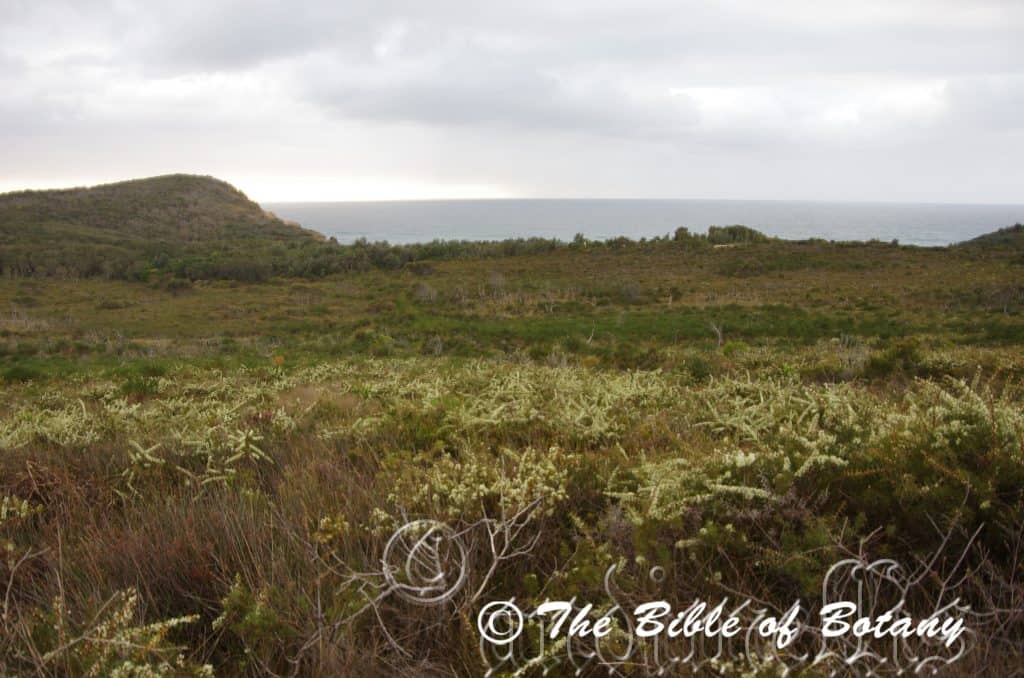
Innes Lake National Park NSW
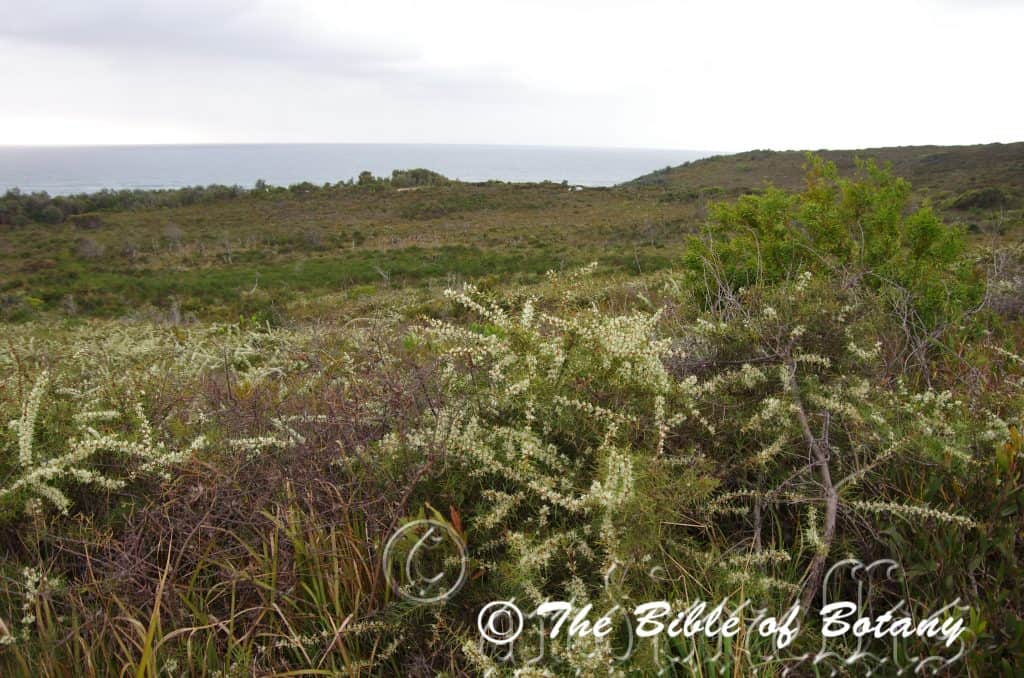
Innes Lake National Park NSW
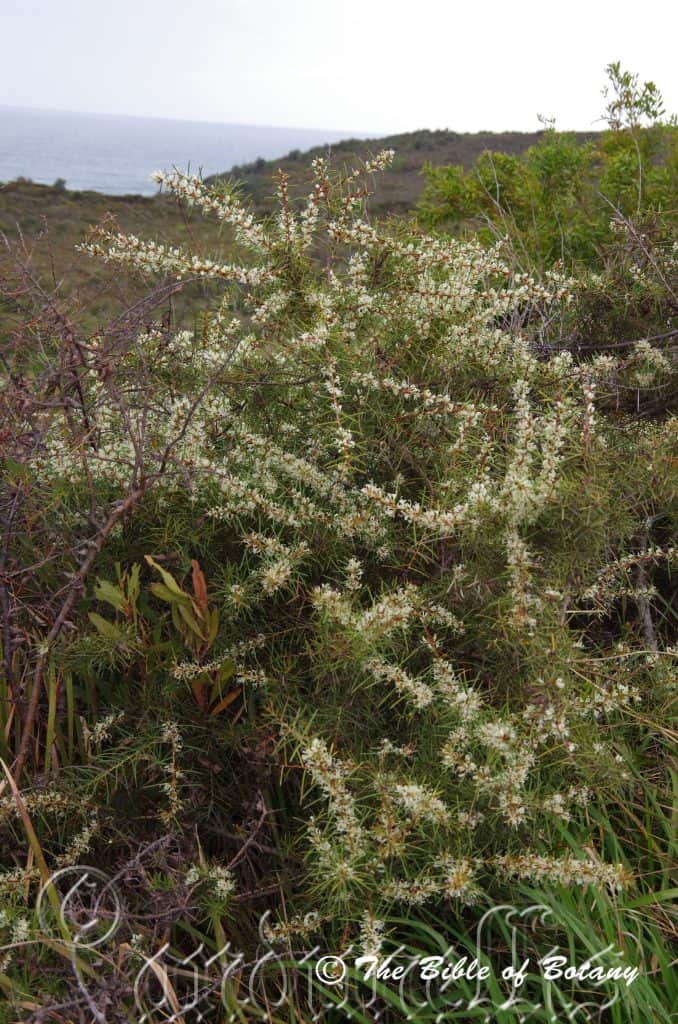
Innes Lake National Park NSW
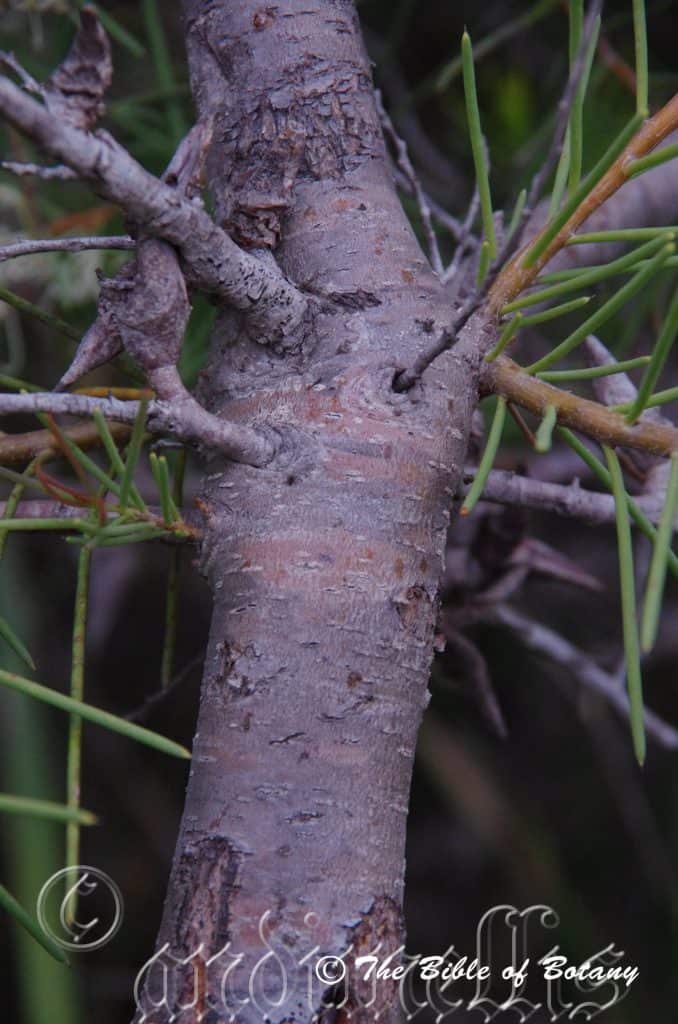
Innes Lake National Park NSW
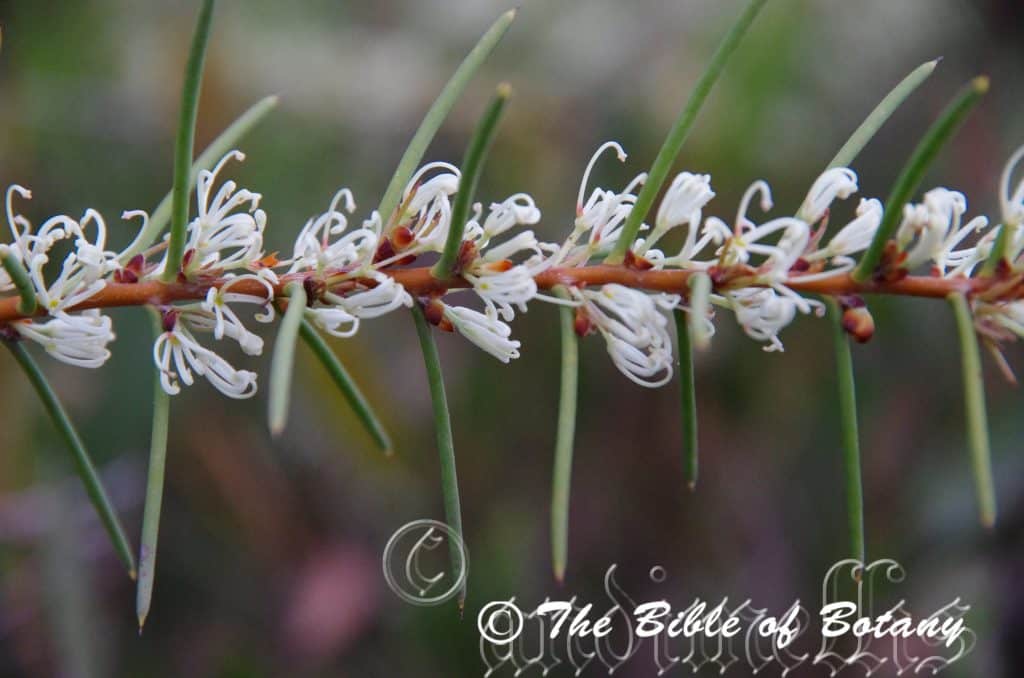
Innes Lake National Park NSW
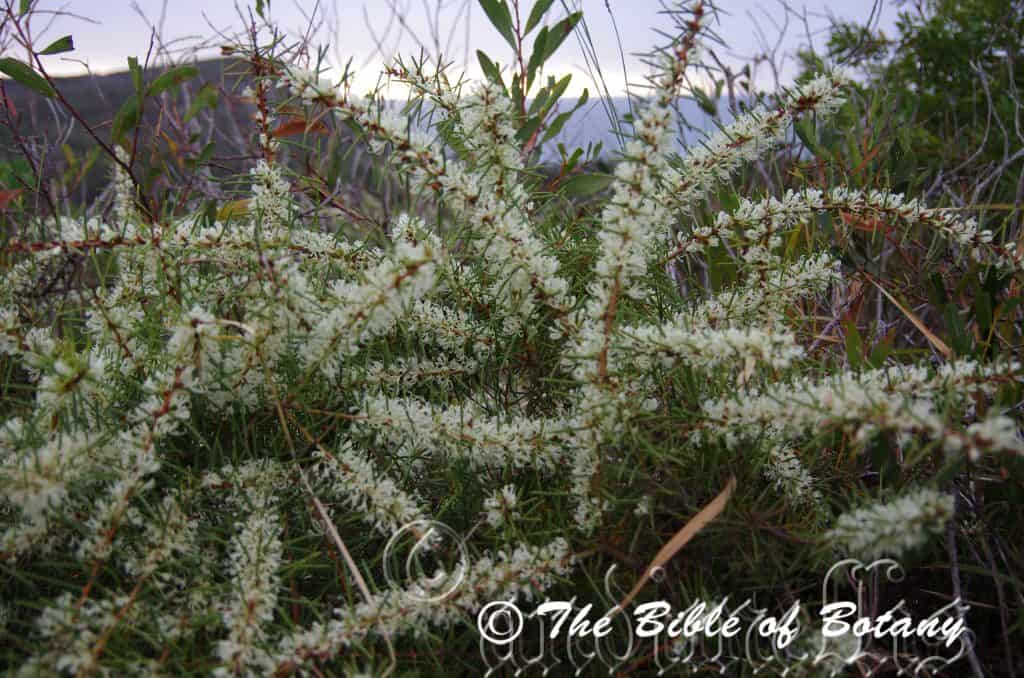
Innes Lake National Park NSW
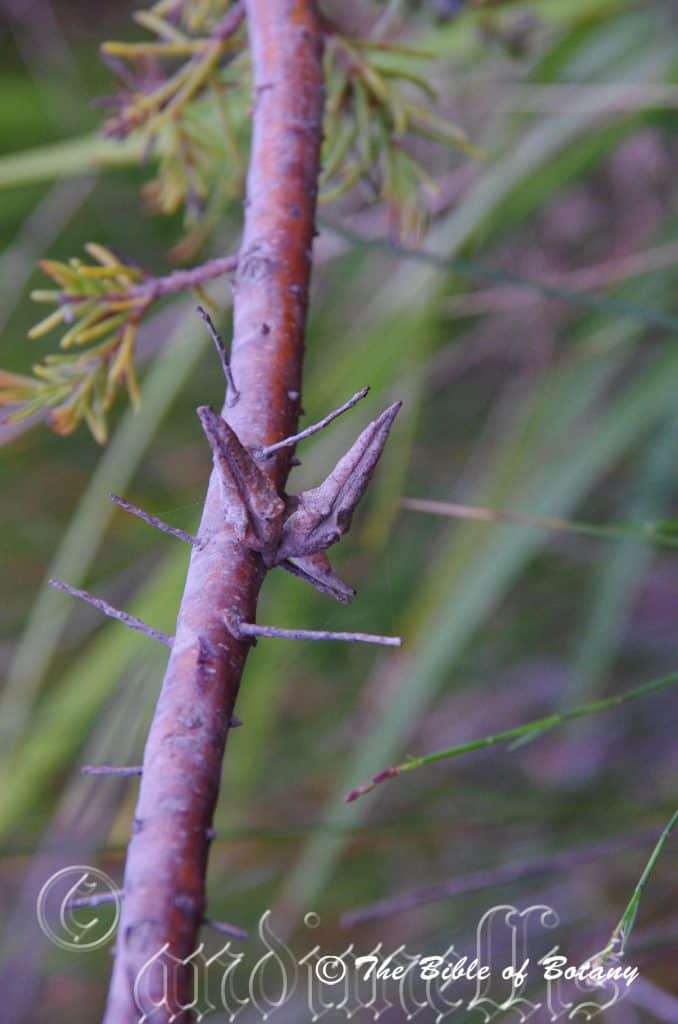
Innes Lake National Park NSW
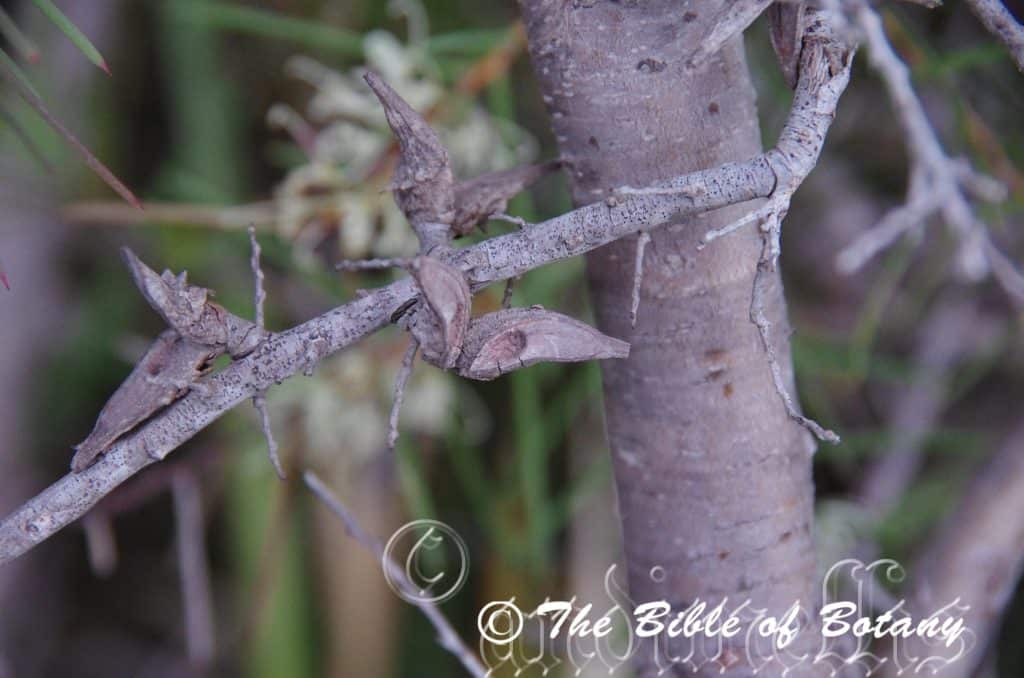
Innes Lake National Park NSW
xxxxxxxxxxxxxxxxxxxxxxxxxxxxxxxxxxxxxxxxxxxxxxHakea teretifolia
Classification
Unranked: Eudicots
Order: Proteales
Family: Protaleacea
Genus: Is named in honour of Barron von Hake; 1745-1818, who was a German councillor and patron of botany.
Specie: From Teres, which is Latin for smooth or Terer, which is Latin for to rub and make smooth hence Terete, which is Latin for an imperfectly smooth cylinder and Folium, which is Latin for foliage. It refers to leaves which are aciculate, long and cylindrical like.
Sub species: Hakea teretifolia subsp. hirsuta. From Hirsutus, which is Latin for a hairy and shaggy. It refers to plants which have long, shaggy often rough hairs.
Sub species: Hakea teretifolia subsp. teretifolia. From Teres, which is Latin for smooth or Terer, which is Latin for to rub and make smooth hence Terete, which is Latin for an imperfectly smooth cylinder and Folium, which is Latin for foliage. It refers to leaves which are aciculate, long and cylindrical like.
Common Name: Needle Bush or Dagger Bush.
Distribution:
Hakea teretifolia subsp. hirsuta is found south from Sydney on and
east of the Great Dividing Range through to Melbourne. There is an
isolated population in the Grampians.
It is also found on the eastern Bass Strait Islands and mainly on the
east coast and adjacent ranges in eastern Tasmania.
Hakea teretifolia subsp. teretifolia is found south South West Rocks to
the Palang district in eastern New South Wales. There is a disjunct
population further south at Timbillica near the Victorian border.
https://avh.ala.org.au/occurrences/search?taxa=Hakea+teretifolia#tab_mapView
Habitat Aspect Climate:
Hakea teretifolia prefers full sun or light dappled shade. It grows in or near swamps, wallums in sclerophyll scrub, adjacent to littoral rainforests heaths and moist depressions. The altitude ranges from 25 meters ASL to 1150 meters ASL.
The temperatures range from minus 4 degrees in July to 36 degrees in January.
The rainfall ranges from lows of 500mm to an average of 1500mm annually.
Soil Requirements:
Hakea teretifolia prefers skeletal to deep sands to sandy loams. The soils are usually derived from decomposed sandstone and granite or accumulated sandy peats. The soils pH varies from 5pH through to a 6pH. It does not tolerate waterlogged soils. Non saline soils to moderately saline soils are tolerated as are salt laden winds.
Height & Spread:
Wild Plants: 1m to 3m by 1m to 3m. Erect or spreading.
Characteristics:
Hakea teretifolia’s main stems are deep brown and glabrous to slightly scabrous. The rigid, divaricate branchlets are glossy orange-brown. The apexes are sparsely to densely covered in white to off white tomentose hairs. The single or multi-stemmed shrubs form weak to well-developed lignotuber after 3 or four 4 years.
Hakea teretifolia’s alternate to sub opposite terete, rigid leaves measure 15mm to 70mm in length by 1.8mm to 3mm in diameter. The bases are sessile while the apexes are acute with a long 2mm to 3mm sharp, pungent mucronate point. The glabrous laminas are deep grass-green to deep blue-green.
The conflorescences of Hakea teretifolia are clusters or short umbels born from the leaf axils. The rachis and pedicels are pastel yellow to pastel green and covered in white pubescent hairs. The rachises measure 0mm to 1mm in length while the pedicels measure 2.5mm to 4mm in length. Each cluster has 3 to 6 individual flowers. The perianth and style are the most prominent parts of the flower. The individual perianths are white to a very pastel yellow or pastel yellowish-green at the base and turn white at the lobes. The regular perianths are covered in white pulverulent or tomentose hairs externally and internally. The perianths measure 4mm to 6mm in length. The lobes are free.
The glabrous style is crooked, pink or yellow above the ovary and is white from near the base to the white or pastel pink stigma and pollen presenter. The erect pollen presenter is a large disc. The pistils measure 5mm to 17mm in length. The flowers appear from September to February.
Hakea teretifolia’s fruits are narrow ovoidal woody follicles. The dull green glabrous follicles turn brownish-grey when ripe and develop a toothed like girdle on the basal half and a long glabrous, hornless beak. There is a longitudinal groove on the upper surface. The follicles measure 20mm to 30mm in length by 6mm to 9mm in width.
The oblique, flat ovate seed measures 5mm to 6mm in length by 2.5mm to 3mm in width. The flat, black, oblong seeds and wings measure 14mm to 21mm in length by 4.5mm to 5.3mm in width. The black, brittle, chartaceous wing on the seed is mainly apical however it forms a narrow band along the sides and base.
Confusing Subspecies Varieties:
Hakea teretifolia subsp. hirsuta has pubescent pedicels and perianths are densely covered in white tomentose hairs mingled with raised and appressed tomentose hairs.
Hakea teretifolia subsp. teretifolia’s pedicels and perianths are densely covered in white pubescent, appressed and sub erect, semi glossy hirsute hairs.
Wildlife:
Hakea teretifolia’s wildlife supports native bees when in flower.
Cultivation:
Hakea teretifolia is a dense small shrub that looks similar to a dwarf pine tree. It is very suitable for small gardens right through to the largest garden, in semi-arid, temperate or sub-tropical zones. As garden subjects they will grow from 2 meters to 3 meters in height by 1.5 meters to 2 meters in diameter when grown in the open sunny position. It can be tip pruned if a smaller shrub is required. It responds well to pruning recovering quickly and often increasing the number of flowers in the following season. Most plants produce a weak lignotuber and can be cut back hard every 5 or 7 years after they reach their full height. It is fast growing, drought tolerant once established and are cold tolerant to temperatures as low as minus 5 degrees.
It is most suitable for use around rockeries, along sandy moist flats or moist clay embankments or along long moist drive ways or shelter belts for small native animals.
2, 3 or 4 planted back from a bend will become a very strong focal point when in flower gain a lot of attention whether you are coming or going because of the fresh clean look of the foliage even in the driest of times. Place them in the mid ground with large leaf, or fine leaf ground covers and very small shrubs or annuals in front. To the rear, use large leaf taller plants. Plants with white, cream or pale yellow flowers can be used in both the foreground and background.
Hakea teretifolia look great in a medium to large heath garden which it is well suited to. Do not use contours to display the plants as heath lands are almost always flat or have a slight rise. On flat ground the flowers will be below or at eye level which is very striking. Place them back from the path or on the lower side of a path as it is rather tall. If these plants are on display to the public you may have a never ending number of fanciers knocking on your door wanting to know the name and where you attained them from as it is so striking when mass planted in the garden. Make the heath garden path narrow so you have to feel the plants as you walk through the garden bed but place Hakea teretifolium back from the path. Plants must be planted close together and be short so you can see over the tallest ones with the exception of one or two plants at the most. These will be feature plants. The idea is to achieve a feeling of expansive flatness. This can be achieved with using the Hakea teretifolia’s soft pastel lemon flowers. Mix them with other smaller shrubs so none of them dominate the scene but blend in to give a mosaic of foliage colours that you oversee. Here I immediately think of Actinotis helianthi, Melaleuca pearsonii or other sub shrubs like Chloanthes parviflora, or Pelargonium australe, Pelargonium inodorum. Even Hibiscus diversifolia could be pruned and used in the back ground or allowed to straggle between clumps Comesperma defoliatum in the fore ground. Glycyrrhizin acanthocarpa would be something entirely different next to a path where you can walk by and pick a leaf to crush and enjoy the aroma of licorice.
Propagation:
Seeds: Fresh seed can be removed from the follicles by placing the follicles in a hot oven after it has been turned off. A good time to do this is after the evening meal has been prepared. The follicles will usually open up after one or two days. Another method is to place them in a paper bag and leave the in the sun for 4 days to a week.
Hakea teretifolia seeds can be sown directly into a seed raising mix immediately after the last frosts have passed. Cover them with 5mm of fine sand and keep moist not wet. Place the tray in a warm sunny position. When the seedlings are 25mm to 50mm tall, prick them out and plant them into 50mm native tubes using a good organic mix.
Once the seedlings reach 150mm to 200mm in height, nip the tips out before planting them out into their permanent position.
Fertilize using seaweed, fish emulsion or organic chicken pellets soaked in water on an alternate basis. Fertilize every two months until the plants are established then twice annually in early September or March to maintain health, vitality and better flowering. Avoid synthetic fertilizers as they will most likely contain calcium and phosphorous which are toxic to most Proteacea
Further Comments from Readers:
Hi reader, it seems you use The Bible of Botany a lot. That’s great as we have great pleasure in bringing it to you! It’s a little awkward for us to ask, but our first aim is to purchase land approximately 1,600 hectares to link several parcels of N.P. into one at The Pinnacles NSW Australia, but we need your help. We’re not salespeople. We’re amateur botanists who have dedicated over 30 years to saving the environment in a practical way. We depend on donations to reach our goal. If you donate just $5, the price of your coffee this Sunday, We can help to keep the planet alive in a real way and continue to bring you regular updates and features on Australian plants all in one Botanical Bible. Any support is greatly appreciated. Thank you.
In the spirit of reconciliation we acknowledge the Bundjalung, Gumbaynggirr and Yaegl and all aboriginal nations throughout Australia and their connections to land, sea and community. We pay our respect to their Elders past, present and future for the pleasures we have gained.
Hakea verrucosa
Classification:
Unranked: Eudicots
Order: Proteales
Family: Protaceae
Genus: Is named in honour of Barron von Hake; 1745-1818, who was a German councillor and patron of botany.
Specie: From Verracose, which is Latin for warty or ulcerated lumps. It refers to structures or organs, which have swellings or enlargements on the surface.
Sub species:
Common Name:
Distribution:
Hakea verrucosa is an endemic species to the south west corner of Western Australia from the Fitzgerald National Park to Hopetoun and Ravensthorpe areas.
https://avh.ala.org.au/occurrences/search?taxa=Hakea+verrucosa#tab_mapView
Habitat Aspect Climate:
Hakea verrucosa prefers full sun to light dappled shade. It grows in open scrublands, dry sclerophyll scrublands on protected plains or rolling hills. The altitude ranges from 5 meters ASL to 150 meters ASL.
The temperatures range from 3 degrees in July to 36 degrees in January.
The rainfalls range from lows of 300mm to an average of 800mm annually.
Soil Requirements:
Hakea verrucosa prefers gravelly sandy clays, gravelly medium clays with pebbles rocks and lateritic stones over laterites. The soils are derived from decomposed lateritic sandstones, limestone or granites. The soils pH varies from 5.5pH through to a 6.5pH. It does not tolerate waterlogged soils. Non saline soils to moderately saline soils are tolerated as are salt laden winds.
Height & Spread:
Wild Plants: 1m to 2.5m x 0.5m to 1.5m. This is a small slender shrub with short, thick needle like leaves.
Characteristics:
Hakea verrucosa’s bark is grey to deep grey and scabrous on the main branches. The branchlets are pale fawn, densely covered in rusty, appressed pubescent hairs becoming glabrous by the time of flowering.
Hakea verrucosa’s adjacent leaves are acicular and measure 15mm to 60mm in length by 1.2mm to 1.6mm in diameter. The base is sessile, runs parallel to the stem, turns yellow and swells at the point of attachment while the apex tapers to a long rigid mucronate and slightly pungent point measuring 1.5mm to 2mm. The lamina is a deep green to deep sea green. The laminas are glabrous.
The inflorescence of Hakea verrucosa’s are very short raceme which are born erect from the leaf axis or more pendant from older leaf axis The 3mm to 16mm long branched rachis has 7 to 14 flowers and is glabrous. The perianth and style are the most prominent parts of the flower. The individual perianths are variable, cream to pale pink turning deep pink to red just prior to the style being released from the perianth. The perianth and lobes are irregular. The perianth and limbs measure 6mm to 9mm in length. The lobes are recurved and free. The pedicels measure 3mm to 4mm in length.
The style is creamy pale pink deepening in colour as it approaches the stigma. The erect styles are glabrous and measure 15mm to 22mm in length. The lateral pollen presenter is yellow. The flowers appear from May to August.
Hakea verrucosa’s fruit is an obliquely ovate woody follicle which is wider at the base than the apex. The resinous to tuberculate follicles are deep green turning a brown-grey when ripening. They measure 24mm to 35mm in length by 14mm to 18mm in width. The large triangular beaks are wide spreading with a short apiculate ridge between the two which measures 2mm to 3.5mm in height while the beaks measure 5mm to 6.5mm in length.
The obliquely ovate, black seeds measure 14mm to 22mm in length by 8mm to 12mm wide. The deep brown to black wing seed is broadly winged on one lateral only.
Wildlife:
The flowers of Hakea verrucosa are a great attraction for small nectar eating birds, butterflies, native bees and native flies.
Cultivation:
Hakea verrucosa is a medium shrub with a dense rounded growth. It is very suitable for small gardens right through to the largest garden, in temperate, semi-arid and sub-tropical zones. As garden subjects they will grow from 2 meters to 3 meters in height by 2 meters to 3.3 meters in diameter when cultivated in the open.
Light tip pruning can be done to increase the number of stems and consequently the number of flowers the following season. Hard pruning is not advisable. The tip pruning should be done immediately after flowering is completed in late August. It is fast growing, drought tolerant once established and are cold tolerant to temperatures as low as minus 1 degree.
Hakea verrucosa make good dense hedges and safe wildlife corridors for birds to travel along. The leaves form a slightly pungent barrier on the plant. Because of this they should be planted back from paths and edges to avoid scratching. Yet they still require a prominent place in the garden as they flower prolifically. It is most suitable for use around large rockeries, screens, wind breaks or shelter belts.
In native gardens they can be used for attracting smaller birds like silver eyes which will seek the protection offered by the dense canopy and use the plants as a regular feed source.
Two, three or four planted back from a bend will become a very strong focal point when in flower gain a lot of attention whether you are coming or going because of the fresh clean look of the foliage even in the driest of times. Place them in the mid ground with large leaf, or fine leaf ground covers and very small shrubs or annuals in front. To the rear, use large leaf taller plants. Plants with white, cream or pale yellow flowers can be used in both the foreground and background. This will lead the viewer’s eyes directly to the red and deep pink flowers for a longer period.
Use plants with deep green leaves and finer leaves to the rear and in the foreground use prostrate plants or small annuals only, otherwise the plants will be lost in miniature jungle that will look very untidy. Ensure that the whole plant or at least most of it is on display from most sections of the garden as the flowers are a real bonus.
These plants will catch your attention and the viewer will be transfixed on the display rather than watching the path. Small prostrate Acacias with cream, white or yellow flowers can also be used to great effect as their flowering will compliment those from. The large deep pink or red flowers will offset the abundance of flowers from the Acacias and in fact would be a very strong complementary contrast if the prostrate or smaller Acacias were to flower at the same time. This is one plant that benefits the gardener if mass planted together in small sections. Plant them at 2 meter to 2.2 meter centers.
Propagation:
Seeds: The seeds need to be treated to extract the seeds from the follicles. Seeds can be removed from the follicles by placing the follicles in a hot oven after it has been turned off. A good time to do this is after the evening meal has been prepared. The follicles will usually open up after one or two days. Another method is to place them in a paper bag and leave the in the sun for 4 days to a week.
Hakea verrucosa seeds can be sown directly into a seed raising mix. Cover them with 5mm of fine sand and keep moist not wet. Place the tray in a warm sunny position. When the seedlings are 25mm to 50mm tall, prick them out and plant them into 50mm native tubes using a good organic mix.
Once the seedlings reach 150mm to 200mm in height, nip the tips out before planting them out into their permanent position.
Fertilize using seaweed, fish emulsion or organic chicken pellets soaked in water on an alternate basis. Fertilize every two months until the plants are established then twice annually in early September or March to maintain health, vitality and better flowering. Avoid synthetic fertilizers as they will most likely contain calcium and phosphorous which are toxic to most Proteacea
Further Comments from Readers:
Hi reader, it seems you use The Bible of Botany a lot. That’s great as we have great pleasure in bringing it to you! It’s a little awkward for us to ask, but our first aim is to purchase land approximately 1,600 hectares to link several parcels of N.P. into one at The Pinnacles NSW Australia, but we need your help. We’re not salespeople. We’re amateur botanists who have dedicated over 30 years to saving the environment in a practical way. We depend on donations to reach our goal. If you donate just $5, the price of your coffee this Sunday, We can help to keep the planet alive in a real way and continue to bring you regular updates and features on Australian plants all in one Botanical Bible. Any support is greatly appreciated. Thank you.
In the spirit of reconciliation we acknowledge the Bundjalung, Gumbaynggirr and Yaegl and all aboriginal nations throughout Australia and their connections to land, sea and community. We pay our respect to their Elders past, present and future for the pleasures we have gained.
Hakea victoria
Classification
Unranked: Eudicots
Order: Proteales
Family: Protaleacea
Genus: Is named in honour of Barron von Hake; 1745-1818, who was a German councillor and patron of botany.
Specie: Is named in honour of Alexandrina Victoria; 1819-1901, who was better known as Queen Victoria.
Sub species:
Common Name: Round Leaf Hakea or Victoria’s Hakea.
Distribution:
Hakea victoria is an endemic species to the south west corner of Western Australia. It is found from the Fitzgerald National Park, Hopetoun, Ravensthorpe areas and a small area near Esperance.
https://avh.ala.org.au/occurrences/search?taxa=Hakea+victoria#tab_mapView
Habitat Aspect Climate:
Hakea victoria prefers full sun to light dappled shade. It grows on open scrublands, dry sclerophyll scrub lands on protected plains or rolling hills. The altitude ranges from 5 meters ASL to 50 meters ASL.
The temperatures range from 3 degrees in July to 36 degrees in January.
The rainfalls range from lows of 470mm to an average of 800mm annually.
Soil Requirements:
Hakea victoria prefers growing on white or grey sands to sandy loams. The soils are derived from derived from decomposed granites or sandstone. The soils pH varies from 5.5pH through to a 7pH. It does not tolerate waterlogged soils. Non saline soils to moderately saline soils are tolerated as are salt laden winds.
Height & Spread:
Wild Plants: 1.5m to 3.5m x 0.2m to 1m.
Characteristics:
Hakea victoria’s adjacent leaves are narrow elliptical on juvenile plants, changing to orbicular on mature plants. The leaves measure 50mm to 110mm in length by 50mm to 130mm in width. The base is sessile while the apex is broadly toothed. The concolourous vary considerably from a mid-green to grey-green, blue-green, deep green. Near to the base it is coalescing into a cream or creamy yellow turning orange then to red with age. The laminas are glabrous and are undulating with spinulosa to dentate teeth. The laminas curve sharply downwards from the mid vein then upwards again or flatten out as they approach the margin. The midvein and reticulate veins are prominent on both laminas and take on the base colours of cream, yellow, orange or red.
The inflorescences of Hakea victoria are 1 or 2 spherical umbels which are born from the leaf axis. The petioles are 6mm to 11mm long with each umbel having 26 to 42 flowers. The perianth and style are the most prominent parts of the flower. The individual perianths are white or cream. The perianths are glabrous externally and internally. The perianth and lobes measure 20mm to 25mm in length. The lobes are recurved and free. The style is cream while the erect, conical pollen presenter is cream. The style and ovary measure 25mm to 30mm long. The erect style is glabrous. The flowers appear from July to October.
Hakea Victoria’s fruit is an oblique to ovate woody follicle. The follicles are lime-green turning a pale brown when ripening. The brown sections are glabrous while the grey sections are covered in farinaceous lumps. There are 2 to 4 follicles in each axis which measure 24mm to 28mm in length by 15mm to 20mm in width. The large triangular beaks are united and extend beyond the follicle. They measure 2mm to 3mm in length.
The oblique to broad ovate seeds measure 18mm to 20mm in length by 8mm to 12mm in width. The deep brown-black wing seeds are winged on both lateral sides and extend only marginally past the apex.
Wildlife:
Hakea Victoria’s wildlife is unknown to the author.
Cultivation:
Hakea victoria is a very unusual plant in its growth habit being tall and columular. It grows a small single stemmed shrub or sparingly branched shrub from near the ground with spectacularly, large bi or tri-coloured leaves. It is very suitable for small gardens right through to the largest garden, in temperate, and semi-arid zones. As garden subjects they will grow to 3 meters to 4 meters in height by 0.25 meters to 0.5 meters wide when cultivated in the open. It is fast growing, drought tolerant once established and are cold tolerant to temperatures as low as minus 1 degree.
It is most suitable for use around swimming pools, sunny courtyards, besides pathways, rockeries or along drive ways.
This plant is so unusual and with its bizarre foliage that it is worth while trying in marginal areas. It is best suited to larger rockeries where it can be viewed as scattered single plants amongst low ground covers or in mass plantings close together. Here they should be planted at 0.4 meters to 1 meter apart.
Imagine American desert scenes with tall cactus plants dotting the landscape. Now replace the cactus with Hakea victoria surrounded by small native shrubs, native succulents and ground covers or large rocks and boulders covering the surface. Imagine them scattered randomly with a cliff face behind as the backdrop or if you are near the sea again scattered plants forming narrow columns rising from a network of ground covers and the occasional small shrub with the ocean as the backdrop. Use them as silhouettes against long low buildings. This will give the plants a greater appearance of height or dwarf the buildings height making it look longer than it really is.
This is an excellent plant to use in a heath garden where Hakea victoria stands abruptly out from the rest of the heath land setting. Heath lands are almost always flat or have a slight rise. Plants must be planted close together and be short so you can see over the tallest ones with the exception of one or two plants at the most. These will be feature plants, Hakea victoria. The idea is to achieve a feeling of expansive flatness. This can be achieved with using Hakea victoria’s large ovate leaves and of various colours contrasting finer pale green or soft grey to glaucous coloured foliages below. Use a lot of procumbent plants like Hibbertia specie or Leichenalta specie. Mix them with other smaller shrubs so none of them dominate the scene but blend in to give a mosaic of foliage colours that you oversee. Here I immediately think of Actinotis helianthi or Grevillea thelemanniana for two great contrasting foliages.
Propagation:
Seeds: Hakea victoria seeds need to be treated to extract the seeds from the follicles. Seeds can be removed from the follicles by placing the follicles in a hot oven after it has been turned off. A good time to do this is after the evening meal has been prepared. The follicles will usually open up after one or two days. Another method is to place them in a paper bag and leave the in the sun for 4 days to a week.
Hakea Victoria seeds can be sown directly into a seed raising mix. Cover them with 5mm of fine sand and keep moist not wet. Place the tray in a warm sunny position. When the seedlings are 25mm to 50mm tall, prick them out and plant them into 50mm native tubes using a good organic mix.
Once the seedlings reach 150mm to 200mm in height, nip the tips out before planting them out into their permanent position.
Fertilize using seaweed, fish emulsion or organic chicken pellets soaked in water on an alternate basis. Fertilize every two months until the plants are established then twice annually in early September or March to maintain health, vitality and better flowering. Avoid synthetic fertilizers as they will most likely contain calcium and phosphorous which are toxic to most Proteacea.
Further Comments from Readers:
Hi reader, it seems you use The Bible of Botany a lot. That’s great as we have great pleasure in bringing it to you! It’s a little awkward for us to ask, but our first aim is to purchase land approximately 1,600 hectares to link several parcels of N.P. into one at The Pinnacles NSW Australia, but we need your help. We’re not salespeople. We’re amateur botanists who have dedicated over 30 years to saving the environment in a practical way. We depend on donations to reach our goal. If you donate just $5, the price of your coffee this Sunday, We can help to keep the planet alive in a real way and continue to bring you regular updates and features on Australian plants all in one Botanical Bible. Any support is greatly appreciated. Thank you.
In the spirit of reconciliation we acknowledge the Bundjalung, Gumbaynggirr and Yaegl and all aboriginal nations throughout Australia and their connections to land, sea and community. We pay our respect to their Elders past, present and future for the pleasures we have gained.
Halfordia kendack
Classification
Unranked: Eudicots
Unranked: Rosids
Order: Sapindales
Family: Rutaceae
Genus: Is named in honour of Dr. George Halford; 1824-1910, who was a professor of anatomy at the Melbourne University and founder of the Australian medical school.
Specie: From Kendack, which is Latinized from the local indigenous name of the tree found in New Caledonia.
Sub species:
Common Name: Kerosene Wood, Southern Ghittoe or Saffronheart.
Distribution:
Halfordia kendack is found in 2 disjunct areas along the east coast. The northern population is found south from the Torres Strait Islands and Cape York Peninsular to the Paluma Range National Park in north Queensland. The southern population is found south from Port Curtis in central coastal Queensland to Kempsey in coastal north eastern New South Wales. It is found on and east of the Great Dividing Range to the coast.
https://avh.ala.org.au/occurrences/search?taxa=Halfordia+kendack#tab_mapView
Habitat Aspect Climate:
Halfordia kendack prefers full sun or light dappled shade. It grows in littoral rainforest, warm subtropical rainforest and cool tropical rainforests. The altitude ranges from 10 meters ASL to 750 meters ASL.
The temperatures range from minus 3 degrees in July to 38 degrees in January.
The rainfall ranges from lows of 1100mm to an average of 3200mm annually.
Soil Requirements:
Halfordia kendack prefers better quality, deep sandy loams to medium clays. The soils are usually derived from decomposed brown basalt, black basalt, shale, metamorphic rocks and sandstone as well as accumulated peaty sandy loams. The soils pH varies from 5pH through to a 6.5pH. It does not tolerate waterlogged soils. Non saline soils to moderately saline soils are tolerated as are salt laden winds.
Height & Spread:
Wild Plants: 15m to 25m by 6m to 8m.
Characteristics:
The main trunk is mid grey and covered in fine irregular longitudinal furrows and grooves. The branchlets are pale grey- brown and turn bright grass-green, smooth and glabrous towards the apex. The apexes are smooth and glabrous. T
The alternate, oblanceolate, and obovate to elliptical leaves measure 50mm to 175mm in length by 01.mm to 50mm in width. The bases are usually symmetrical or at times asymmetrical and attenuate while the apexes taper to a short obtuse or obtuse-acuminate tip. The concolourous laminas are bright grass-green, glabrous and dull to semi glossy on the upper laminas while the lower laminas are dull. The laminas recurve slightly upwards from the midvein to the margins while the margins are entire and very slightly undulating. The Midvein is strongly prominent on the lower lamina and is visible on the upper lamina. The lateral veins form loops well inside the margins and are obscure from the lower lamina and are faintly visible from the upper lamina. The oil dots are distinct and usually visible without a hand lens. The glabrous petioles are swollen at the base and at times are indistinct and measure 3mm to 20mm in length.
The inflorescences are panicles born from the terminals. The panicles have 24 to 50 individual flowers and measure 30mm to 80mm in length by 45mm to 100mm in diameter. The 5 divaricate calyx lobes are obtuse and measure 0.5mm to 0.8mm in length. The 5 white long triangular petals are glabrous externally and internally have an acute apex and measure 4mm to 6mm in length. The peduncle, rachis and pedicels are glabrous. The peduncles measure 15mm to 22mm in length while the rachises measure 25mm to 36mm in length and measure 2mm to 8mm in length.
The 10 dimorphic stamens are positioned with the 5 longer stamens adjacent to the petals while the 5 shorter stamens are positioned opposite the petals.
The flattened filaments are covered in long white pilose, ciliate hairs which are denser on the basal half than the apical half. The white filaments measure 2mm to 3.5mm in length while the glandular tipped, orange-yellow, basifixed anthers measure 0.9mm to 1mm in length. The style measures 1mm to 1.5mm in length. The glabrous, green ovaries measure 3mm to 5mm in length by 1.5mm to 2.5mm in diameter. The flowers appear from May to September.
The fruits are ovoidal to obloidal drupes. The green drupes turn deep purplish-black to deep purple often glaucous and soften when ripe. The calyxes are sunken and persistent while the apex is sunken on the ripe glabrous drupes. They measure 8mm to 15mm in length by 8mm to 15mm in diameter.
The flesh is orange-red at the margins and turns yellowish orange towards the center. The small ovoidal, black seeds are embedded in the yellowish-orange flesh near the center of the drupes. The seeds measure 2mm to 3mm in length by 1.5mm to 2mm in diameter.
Wildlife:
The fruits are very popular amongst fruit eating birds which include the Cassowary (Casuarius casuarius johnsonii) in north Queensland and the Satin Bower Bird (Ptilonorhynchus violaceus) and Spotted Cat Bird (Ailuroedus melanotis) and the Noisy Friar Bird (Philemon corniculatus) in New South Wales. The fruits are of a size that would probably attract most medium and large honeyeaters as well.
Cultivation:
Halfordia kendack is a dense bushy small tree that are very suitable for small gardens right through to the largest garden, warm temperate, sub-tropical or tropical zones. As garden subjects it grows from 10 meters to 15 meters in height by 8 meters to 12 meters in diameter when grown in the open. It is relatively fast growing, drought tolerant once established and is cold tolerant to temperatures as low as minus 2 degrees.
It is most suitable for establishing a small rainforest garden or erosion control in riparian zones.
The trees would make very good accent trees in front of low set or 2 story commercial buildings, industrial sheds or school classrooms where they will break up hard rigid architectural lines and give warmth and breadth to a building. In front of high rise buildings they give balance especially where they could be grown in curves.
Try using them in a large court yard where the only other feature is a large rock, stump or formal or informal frog or fish pond. Next to such features their large leaves, showy white flowers and purple fruits are never overpowering but certainly noticed giving an atmosphere of continual change. I am surprised that they have never been used in commercial entrances and foyers to break the ice and give a feeling of business as usual but somehow make the business more relaxing as they make excellent tub specimens.
Propagation:
Seeds:
The seeds can be sown directly into a seed raising mix as soon as the weather warms a little and the cool nights are finished with for the year. Cover them with 5mm of fine sand and keep moist not wet. Place the tray in a warm sunny position. When the seedlings are 25mm to 50mm tall, prick them out and plant them into 50mm native tubes using a good organic mix.
Once the seedlings reach 150mm to 200mm in height, nip the tips out before planting them out into their permanent position.
Fertilize using seaweed, fish emulsion or organic chicken pellets soaked in water on an alternate basis. Fertilize every two months until the plants are established then twice annually in early September or March to maintain health, vitality and better flowering.
Further Comments from Readers:
Hi reader, it seems you use The Bible of Botany a lot. That’s great as we have great pleasure in bringing it to you! It’s a little awkward for us to ask, but our first aim is to purchase land approximately 1,600 hectares to link several parcels of N.P. into one at The Pinnacles NSW Australia, but we need your help. We’re not salespeople. We’re amateur botanists who have dedicated over 30 years to saving the environment in a practical way. We depend on donations to reach our goal. If you donate just $5, the price of your coffee this Sunday, We can help to keep the planet alive in a real way and continue to bring you regular updates and features on Australian plants all in one Botanical Bible. Any support is greatly appreciated. Thank you.
In the spirit of reconciliation we acknowledge the Bundjalung, Gumbaynggirr and Yaegl and all aboriginal nations throughout Australia and their connections to land, sea and community. We pay our respect to their Elders past, present and future for the pleasures we have gained.
Halophila ovalis
Classification
Unranked: Monocots
Order: Alismatales
Family: Hydrocharitacea
Genus: From Halos, which is Ancient Greek for salt or the sea and Phílos, which is Ancient Greek for loving or a lover. It refers to plants, which have a love of the seas or saline habitats.
Specie: From Ovalis, which is Latin for an egg shape. It refers to leaves, which has the outline of an egg in shape.
Sub species:
Common Name: Sea Grass.
Distribution:
Halophila ovalis is found circumnavigating Australia in clean water. It is more common on the eastern, western and northern coastlines and surrounding off shore Islands than along the Great Australian Bite.
https://avh.ala.org.au/occurrences/search?taxa=Halophila+ovalis#tab_mapView
Habitat Aspect Climate:
Halophila ovalis prefers full sun. It grows in shallow sea water. The altitude ranges from 0.5 meters BSL to 30 meters BSL where water clarity is very good.
The temperatures range from 12.5 degrees in July to 30 degrees in January.
The rainfall ranges from lows of 400mm to an average of 3200mm annually.
Soil Requirements:
Halophila ovalis prefers sands to sandy loams. The soils are derived from decomposed coral sands and various alluvial deposits. The soils pH varies from 7pH to 8pH. It tolerates waterlogged soils. Very saline soils to extremely saline soils are tolerated.
Height & Spread:
Wild Plants: 0.2m to 0.7m by 1m to 800 square meters.
Characteristics:
The rhizomes are pastel green to pale grass-green, glabrous with smooth, glabrous basal leaf bracts. The rhizomes measure 1.5mm to 2mm in diameter.
The alternate, ovate to oblong or at times elliptical leaves measure 10mm to 60mm in length by 5mm to 29mm in width. The base is broad cuneate while the apex is obtuse. The discolourous laminas are mid green to deep grass-green and glabrous on the upper laminas awhile the lower laminas are paler. The laminas are flat to slightly recurve upwards from the midvein to the margins while the margins are entire to slightly undulating. The mid vein is prominent on the lower laminas and is distinctly visible on the upper laminas. The 10 to 25 pairs of lateral veins run to the intramarginal vein that is well inside the margin. The glabrous petioles measure 10mm to 50mm in length.
The inflorescences are imperfect and usually born singularly or at times in pairs from the terminal leaf axils. The flowers emerge from 2 lanceolate basal bracts that measure 3mm to 11mm in length.
The male flowers petioles measure 0mm to 20mm in length at anthesis. The translucent, white spathe is sessile. The perianth segments measure 4mm to 6mm in length. The hood envelopes the anthers and only releases them just prior to anthesis.
The female petioles measure 20mm to 90mm in length. The ovary measures 1mm to 5mm in length while the hypanthium measures 3mm to 5mm in length. The translucent white perianth segments including the spathe are minute. The flowers appear during the warmer months of the year and are more abundant in northern plants than southern plants however profuse flowering has been observed in Moreton Bay during hot weather.
The fruits are orbicular fleshy berries. The berries measure 3mm to 6mm in length and 3mm to 6mm in diameter.
Confusing Specie:
The Australian specie of sea grass looks very similar and are difficult to distinguish from Halophila minor, Halophila ovata and Halophila hawaiiana with many Botanists of the belief that all these specie may in fact be varieties of Halophila ovalis.
Wildlife:
Its leaves and flowers are grazed by many sea snails and the Dugong or Sea Cow (Dugong dugon).
Cultivation:
It is probably a difficult plant to establish and maintain in horticulture in that it only grows in saline water and has very specific requirements.
Propagation:
Propagation methods for this specie is unknown to the author.
Further Comments from Readers:
Hi reader, it seems you use The Bible of Botany a lot. That’s great as we have great pleasure in bringing it to you! It’s a little awkward for us to ask, but our first aim is to purchase land approximately 1,600 hectares to link several parcels of N.P. into one at The Pinnacles NSW Australia, but we need your help. We’re not salespeople. We’re amateur botanists who have dedicated over 30 years to saving the environment in a practical way. We depend on donations to reach our goal. If you donate just $5, the price of your coffee this Sunday, We can help to keep the planet alive in a real way and continue to bring you regular updates and features on Australian plants all in one Botanical Bible. Any support is greatly appreciated. Thank you.
In the spirit of reconciliation we acknowledge the Bundjalung, Gumbaynggirr and Yaegl and all aboriginal nations throughout Australia and their connections to land, sea and community. We pay our respect to their Elders past, present and future for the pleasures we have gained.
Haloragis exalata
Classification
Unranked: Equisetopsida
Class: Magnoliidae
Superorder: Myrothamnanae
Order: Saxifragales
Family: Haloragaceae
Genus: From Halos, which is Ancient Greek for salt or the sea and Rhagos, which is Ancient Greek for a grape or berry. It refers to the type specimens; from New Zealand which have berry like fruits.
Specie: From Ex, which is Ancient Greek for out of the ordinary, outside or external and Alatus, which is Latin for lofty or tall. It refers to the shrubs which are much taller than other species in the genus.
Sub species: Haloragis exalata subsp. exalta. From Ex, which is Ancient Greek for out of the ordinary, outside or external and Alatus, which is Latin for lofty or tall. It refers to the shrubs which are much taller than other species in the genus.
Sub species: Haloragis exalata subsp. velutina. From Velutinus, which is Latin for to be densely covered in short soft hairs. It refers to structures or organs, which form dense soft velvet like mats.
Common Name: Square Raspwort.
Distribution:
Haloragis exalata is found sporadically south from the Carnarvon Gorge in southern central Queensland to west of Jindabyne in the Australian Alps in southern New South Wales. There are 2 isolated populations further south on the Warrnambool Coastal Plains and the Glenelg Coastal Plain in south western Victoria. It is mainly found on and east of the Great Dividing Range.
Haloragis exalata subsp. exalata is found south of the Sydney Basin while Haloragis exalata subsp. velutina is found north from Nundle.
https://avh.ala.org.au/occurrences/search?taxa=Haloragis+exalata#tab_mapView
Habitat Aspect Climate:
Haloragis exalata prefers full sun or light dappled shade. It grows in moist situations along water courses, riparian zones. The altitude ranges from 150 meters ASL to 1120 meters ASL.
The temperatures range from minus 6 degrees in August to 36 degrees in January.
The rainfall ranges from lows of 450mm to an average of 1600mm annually.
Soil Requirements:
Haloragis exalata prefers skeletal sands to sandy loams. The soils are usually derived from decomposed granites or sandstones. The soils pH varies from 5.5pH through to a 7pH. It does not tolerate waterlogged soils. Non saline soils to moderately saline soils are tolerated as are salt laden winds. The altitude ranges from 15 meters ASL to 150 meters ASL.
Height & Spread:
Wild Plants: 1m to 1.5m by 1m to 1.5m.
Characteristics:
The main stems are mid grass-green and finely scabrous. The smaller stems are mid grass-green, reddish-pink or pink, finely scabrous and square in cross section.
The opposite leaves are narrow lanceolate to oblong and measure 40mm to 100mm in length by 5mm to 25mm in width. The bases taper slightly to the petiole or stem while the apexes are acute, obtuse or truncate with a mucronate tip. The discolourous laminas are grass-green to deep green and glabrous on the upper laminas while the lower laminas are pale grass-green to mid green. The laminas are convex on both sides of the mid vein and decurve downwards slightly on the apical quarter while the margins are entire to coarsely toothed. The mid vein is prominent on the lower lamina and is clearly visible on the upper lamina. The petiole measures 0mm to 10mm in length.
The inflorescence is a cluster which is born from the leaf axils. The dischasia petioles have 3 to 15 individual flowers. The green bracts measure 1.5mm to 2mm in length while the 4 triangular calyx lobes measure 1.5mm to 2mm in length. The 4 grass-green caduceous sepals are narrow oblong and measure 3mm to 3.6mm in length. The 4 yellow, yellowish–green or greenish-red petals measure 2.5mm to 3.3mm in length. The white, filiform pedicels measure 1.6mm to 2mm in length. The flowers appear throughout the year under favourable conditions.
The fruits are ovoidal or pyriform capsules. The 1 to 3 capsules at each axil are a dull green and turn grey when ripe. There are 4 ribs between the persistent sepals. They measure 2mm to 2.5mm in length.
Confusing Subspecies Varieties:
Halagoris exalata subsp. exalata’s leaves are lanceolate to oblong and usually measure 60mm to 10mm in length by 13mm to 25mm in width. The margins are coarsely toothed. The dichasia flowers number 3 to15.The ovaries are glabrous or scabrous while the ovoidal fruits measure 2mm to 2.5mm in length.
Haloragis exalata subsp. velutina’s leaves are narrow lanceolate and measure 50mm to 60mm in length by 6mm to 8mm in width. The margins are finely toothed to almost entire. The leaves and petioles are covered in white velutinous to tomentose hairs. The dichasia flowers number 3 to 7.The ovaries are covered in white velutinous to tomentose hairs. The pyriform fruits measure 2mm to 2.5mm in length and are faintly ribbed between the sepals.
Wildlife:
Haloragis exalata wildlife is unknown to the author.
Cultivation:
It is often classified as a weed amongst many gardeners.
Haloragis exalata is a dense tall perennial herb. It is very suitable for small gardens right through to the largest garden, in cool to cold temperate or cool sub-tropical zones. As garden subjects it will grow from 1 meter to 1.5 meters in height by 0.5 meter to 1 meter in diameter when grown in an open semi shady position. It can be tip pruned if a smaller shrub is required. It responds well to pruning recovering quickly and often increasing the number of flowers for the rest of the season. It are fast growing and are cold tolerant to temperatures as low as minus 6 degrees.
Propagation:
Seeds:
The seeds can be sown directly into a seed raising mix immediately after the last frosts have passed. Cover them with 5mm of fine sand and keep moist not wet. Place the tray in a warm sunny position. When the seedlings are 25mm to 50mm tall, prick them out and plant them into 50mm native tubes using a good organic mix.
Once the seedlings reach 150mm to 200mm in height, nip the tips out before planting them out into their permanent position.
Fertilize using seaweed, fish emulsion or organic chicken pellets soaked in water on an alternate basis. Fertilize every two months until the plants are established then twice annually in early September or March to maintain health, vitality and better flowering.
Further Comments from Readers:
Hi reader, it seems you use The Bible of Botany a lot. That’s great as we have great pleasure in bringing it to you! It’s a little awkward for us to ask, but our first aim is to purchase land approximately 1,600 hectares to link several parcels of N.P. into one at The Pinnacles NSW Australia, but we need your help. We’re not salespeople. We’re amateur botanists who have dedicated over 30 years to saving the environment in a practical way. We depend on donations to reach our goal. If you donate just $5, the price of your coffee this Sunday, We can help to keep the planet alive in a real way and continue to bring you regular updates and features on Australian plants all in one Botanical Bible. Any support is greatly appreciated. Thank you.
In the spirit of reconciliation we acknowledge the Bundjalung, Gumbaynggirr and Yaegl and all aboriginal nations throughout Australia and their connections to land, sea and community. We pay our respect to their Elders past, present and future for the pleasures we have gained.
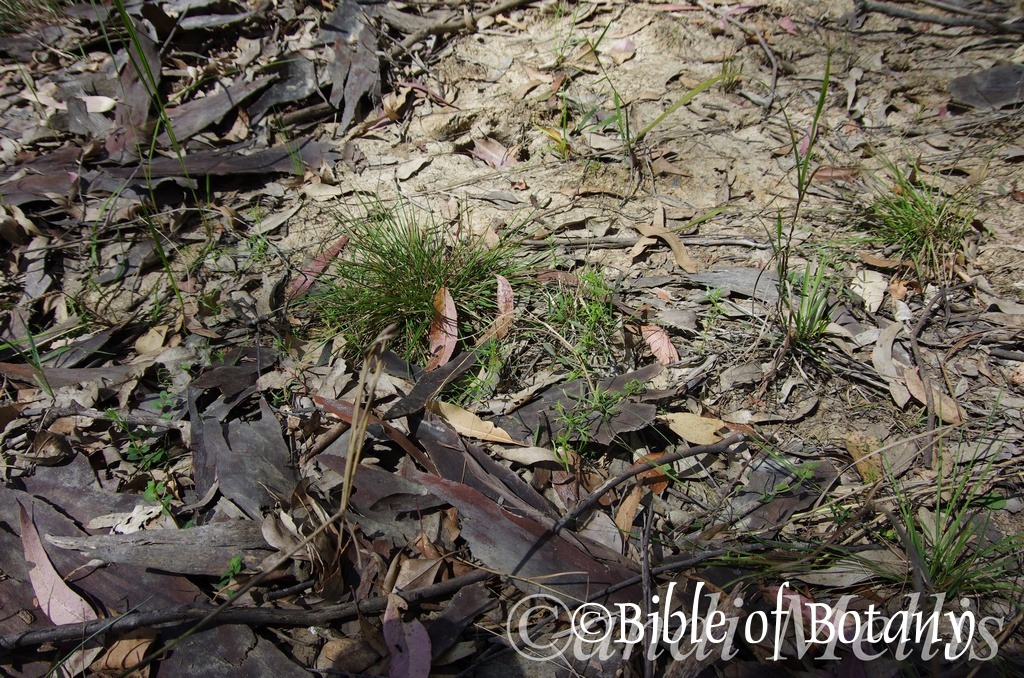
Ramournie National Park NSW
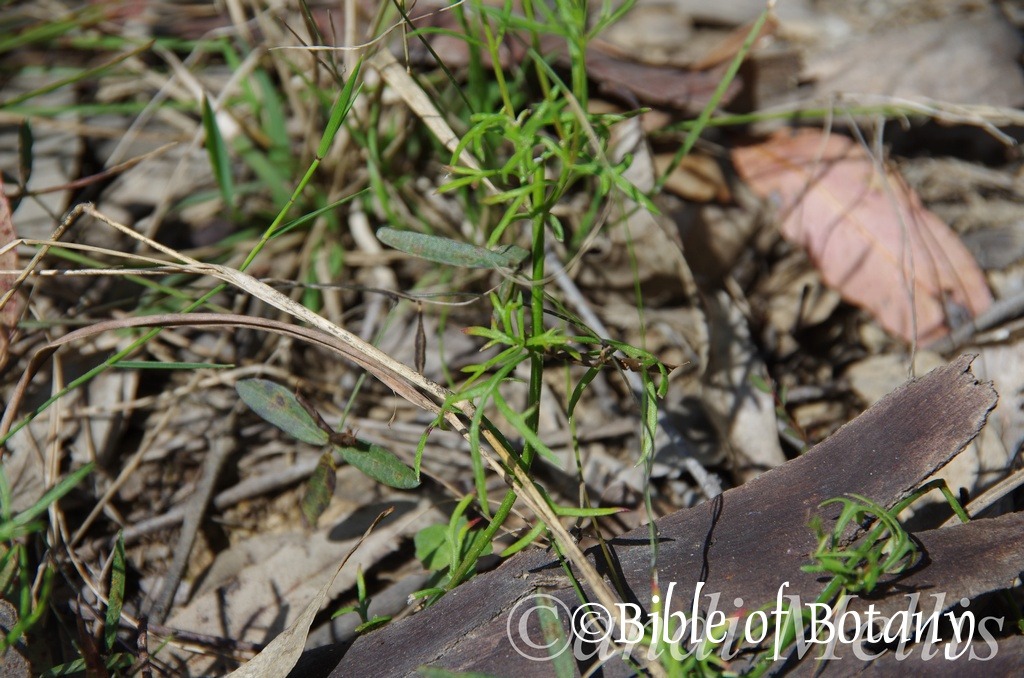
Ramournie National Park NSW
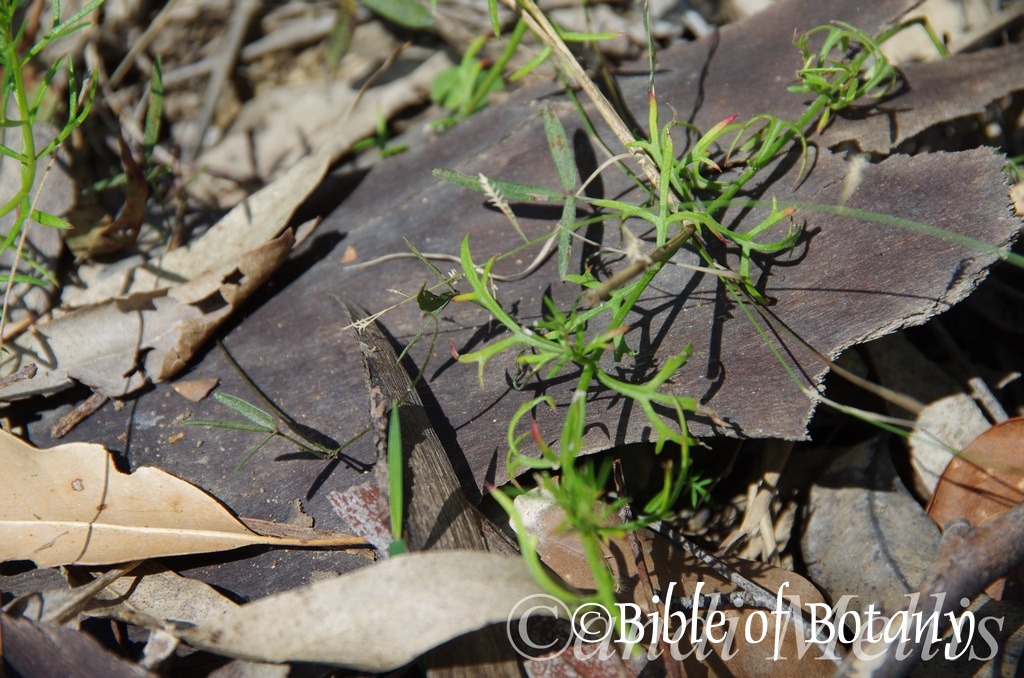
Ramournie National Park NSW
Haloragis heterophylla
Classification
Unranked: Equisetopsida
Class: Magnoliidae
Superorder: Myrothamnanae
Order: Saxifragales
Family: Haloragaceae
Genus: From Halos, which is Ancient Greek for salt or the sea and Rhagos, which is Ancient Greek for a grape or berry. It refers to the type specimen; from New Zealand which has berry like fruits.
Specie: From Heteros, which is Ancient Greek for other or different and Phullon/Phýllon, which are Ancient Greek for a leaf. It refers to leaves, which are of different sizes and or shapes often on the same plant or in the same population.
Common Name: Rough Raspwort but is also less commonly known as Varied Raspwort, Raspweed, and Perennial Raspweed.
Distribution:
Haloragis heterophylla is found south from Brooklyn Wildlife Sanctuary in far north eastern Queensland to southern Tasmania and west to Cummins on the lower Ayre Peninsula in South Australia. It is mainly found on and east of the Great Dividing Range and Western Slopes.
https://avh.ala.org.au/occurrences/search?taxa=Haloragis+heterophylla#tab_mapView
Habitat Aspect Climate:
Haloragis heterophylla prefers full sun or light dappled shade. It grows in moist situations along drainage lines and riparian zones. The altitude ranges from 150 meters ASL to 1800 meters ASL.
The temperatures range from minus 6 degrees in August to 44 degrees in January.
The rainfall ranges from lows of 400mm to an average of 2800mm annually.
Soil Requirements:
Haloragis heterophylla grows on most soil types, from skeletal sands to sandy loams and gritty clays. The soils are usually derived from decomposed granites, sandstones basalts, accumulated sands and alluvial flats. The soils pH varies from 5pH through to a 7.5pH. It does not tolerate water logged soils though soil moisture is retained for prolonged periods. Non saline soils to moderately saline soils are tolerated as are salt laden winds.
Height & Spread:
Wild Plants: 0.15m to 1.1m by 1m to 1m.
Characteristics:
Haloragis heterophylla is a perennial herb growing from an underground stolon. The stems are scabrous with hooked hairs.
The lower most leaves are opposite, while the upper leaves are alternate. The leaves below the inflorescences are usually deeply lobed, trifid or palmately multifid or at times similar to the lower leaves, which have with segments or undivided terete and measure 10mm to 30mm in length. The scabrous leaves tapering to base. The petioles are sessile to subsessile.
The male and female inflorescences occur on the same plant, with the male flowers appearing above the female flowers. The inflorescences occur as cymes where each flowering branch gives rise to two or more symmetrical branches, each with 1 to 3 flowers, which are shortly pedicellate. The four red, deep pink or purplish-red petals are covered in short rigid hairs externally and measure 2.2mm to 3.2mm in length. The ovary is variably scabrous.
The soft pyriform fruits measure 1.5mm to 2.5mm in length. They are smooth at the apex and become wrinkled near the base. The flowers appear from late October to mid February.
Wildlife:
Haloragis heterophylla wildlife is unknown to the author.
Cultivation:
It is often classified as a weed amongst many gardeners.
Haloragis heterophylla is a dense tall stragly perennial herb. It is very suitable for small gardens right through to the largest garden, in cool to cold temperate or cool sub-tropical zones. It can be tip pruned if a smaller bushier herb is required. It responds well to pruning recovering quickly and often increasing the number of flowers for the rest of the season. It is fast growing and is cold tolerant to temperatures as low as minus 6 degrees.
Propagation:
Seeds:
The seeds can be sown directly into a seed raising mix immediately after the last frosts have passed. Cover them with 5mm of fine sand and keep moist not wet. Place the tray in a warm sunny position. When the seedlings are 20mm to 50mm tall, prick them out and plant them into 50mm native tubes using a good organic mix.
Once the seedlings reach 150mm to 200mm in height, nip the tips out before planting them out into their permanent position.
Fertilize using seaweed, fish emulsion or organic chicken pellets soaked in water on an alternate basis. Fertilize every two months until the plants are established then twice annually in early September or March to maintain health, vitality and better flowering.
Further Comments from Readers:
“Hi reader, it seems you use The Bible of Botany a lot. That’s great as we have great pleasure in bringing it to you! It’s a little awkward for us to ask, but our first aim is to purchase land approximately 1,600 hectares to link several parcels of N.P. into one at The Pinnacles NSW Australia, but we need your help. We’re not salespeople. We’re amateur botanists who have dedicated over 30 years to saving the environment in a practical way. We depend on donations to reach our goal. If you donate just $5, the price of your coffee this Sunday, We can help to keep the planet alive in a real way and continue to bring you regular updates and features on Australian plants all in one Botanical Bible. Any support is greatly appreciated. Thank you.”
In the spirit of reconciliation we acknowledge the Bundjalung, Gumbaynggirr and Yaegel and all aboriginal nations throughout Australia and their connections to land, sea and community. We pay our respect to their Elders past, present and future for the pleasures we have gained.
Hardenbergia comptoniana
Classification
Unranked: Eudicots
Unranked: Rosids
Unranked: Fabales
Family: Fabaceae
Genus: Is named in honour of the Countess of Franzisca von Hardenberg sister of the Austrian Baron von Hugel. She married into wealth ensuring the safe keeping of his extensive plant collections.
Specie: Is named in honour of the Compton family of Newby Hall, Yorkshire.
Sub species:
Common Name: Native sarsaparilla.
Distribution:
Hardenbergia comptoniana is restricted to a narrow band along the coastal strip in southern western, Western Australian south from Geraldton and east to Albany.
https://avh.ala.org.au/occurrences/search?taxa=Hardenbergia+comptoniana#tab_mapView
Habitat:
Hardenbergia comptoniana prefers full sun to light dappled shade. It grows on open woodland heaths, dry sclerophyll woodlands, and dry open Eucalyptus forests on the coastal back dunes, protected plains or rolling hills. The altitude ranges from 15 meters ASL to 200 meters ASL.
The temperatures range from minus 4 degree in July to 37 degrees in January.
The rainfalls range from lows of 480mm to an average of 1600mm annually.
Soil Requirements:
Hardenbergia comptoniana prefers shallow to deep sandy loams, light gravelly clays to medium gravelly clays over laterites. The soils are usually derived from decomposed sandstones, shale or basalts. The soils pH varies from 4.5pH through to a 6pH. It does not tolerate waterlogged soils. Non saline soils to moderately saline soils are tolerated as are salt laden winds.
Height & Spread:
Wild Plants: 0.1m to 2m x 1m to 2m.
Characteristics:
Hardenbergia comptoniana’s glabrous stems are grey to grey-green turning purple-green as they approach the new shoots.
Hardenbergia comptoniana’s adjacent compound leaves are trifoliate or rarely 5 foliate. The leaflets are broadly linear, lanceolate to broadly ovate and measure 40mm to 60mm sometimes 90mm in length by 6mm to 30mm in width. The base is rounded while the apex is narrowly acute. The concolourous laminas vary considerably from a mid-green to grey-green, blue-green, deep green. The coriaceous laminas are glabrous and curve slightly upwards from the midvein towards margin. The margin is entire and flat. The midvein and reticulate veins are prominent on the lower lamina and faintly visible on the upper lamina. The petioles measure 6mm to 12mm in length.
The inflorescences of Hardenbergia comptoniana are born terminally or from the leaf axis. The upper rachis measures 100mm to 130mm in length and have 30 to 40 flowers. The calyxes measure 3mm to 4mm in length while the purple corolla measures 7mm to 9mm in length. The standards are pale to deep purple rarely white or pink and become paler towards the margins. There is a cream to yellow spot on each standard above the corolla. The standards measure 12mm to 15mm across by 9mm to 11mm in height. The obovate wings measure 6mm to 7.5mm in width by 4mm to 5mm in height. Flowers appear from late August to early December depending on the area.
Hardenbergia comptoniana’s fruit are oblong pods. The pods are lime-green turning a papery brown to black when ripe. They measure 30mm to 40mm length by 7mm to 9mm in diameter. The pods are only slightly constricted between the 6 to 8 seeds. The deep brown ellipsoidal seeds measure 6mm to 6mm in length by 3mm to 3.5mm in diameter.
Wildlife:
Ants are attracted to the seeds and are the means to an end for this plant as it is the seed distributors. The seeds are coated in a sweet sugary substance which the ants and I find attractive to eat.
Cultivation:
Hardenbergia comptoniana is a beautiful ground covering small creeper or climber. It is very suitable for small gardens in temperate, sub-tropical or semi-arid zones. As garden subjects they will grow to 2 meters to 3 meters high by 2 meters to 3 meters wide when cultivated in the open. Light tip pruning can be done to increase the number of stems and consequently the number of flowers the following season. Hard pruning can be done once the plants are established but some set back will occur so it is better to trim the plants on a regular or annual basis. It is fast growing, drought tolerant once established and is cold tolerant to temperatures as low as minus 3 degrees.
It is most suitable for use around swimming pools, sunny courtyards, besides pathways, rockeries, along sandy banks or along drive ways. It is best used adjacent to small areas of bush close to paths or the house so their deep purple flowers can be viewed regularly.
It is great in small rockeries when used as a fill in plant.
Low fences can be covered quickly as can difficult dry hot spots in a garden.
Propagation:
Seeds: Hardenbergia comptoniana seeds need to be treated prior to sowing. Rub the seeds gently between fine sandpaper or place them in a calico bag with sharp sand. Place the calico bag in the weekends washing for two or three washes. Another method is to soak the seeds in hot water not boiling and allow the water to cool. Leave them there for two hours. Do not place them in boiling water as this will kill the seeds.
Hardenbergia comptoniana seeds can be sown directly into a seed raising mix after treatment. Cover them with 5mm of fine sand and keep moist not wet. Place the tray in a warm sunny position. When the seedlings are 25mm to 50mm tall, prick them out and plant them into 50mm native tubes using a good organic mix.
Once the seedlings reach 150 to 200mm in height, nip the tips out before planting them out into their permanent position.
Fertilize using seaweed, fish emulsion or organic chicken pellets soaked in water on an alternate basis. Fertilize every two months until the plants are established then twice annually in early September or March to maintain health, vitality and better flowering.
Further Comments from Readers:
Hi reader, it seems you use The Bible of Botany a lot. That’s great as we have great pleasure in bringing it to you! It’s a little awkward for us to ask, but our first aim is to purchase land approximately 1,600 hectares to link several parcels of N.P. into one at The Pinnacles NSW Australia, but we need your help. We’re not salespeople. We’re amateur botanists who have dedicated over 30 years to saving the environment in a practical way. We depend on donations to reach our goal. If you donate just $5, the price of your coffee this Sunday, We can help to keep the planet alive in a real way and continue to bring you regular updates and features on Australian plants all in one Botanical Bible. Any support is greatly appreciated. Thank you.
In the spirit of reconciliation we acknowledge the Bundjalung, Gumbaynggirr and Yaegl and all aboriginal nations throughout Australia and their connections to land, sea and community. We pay our respect to their Elders past, present and future for the pleasures we have gained.
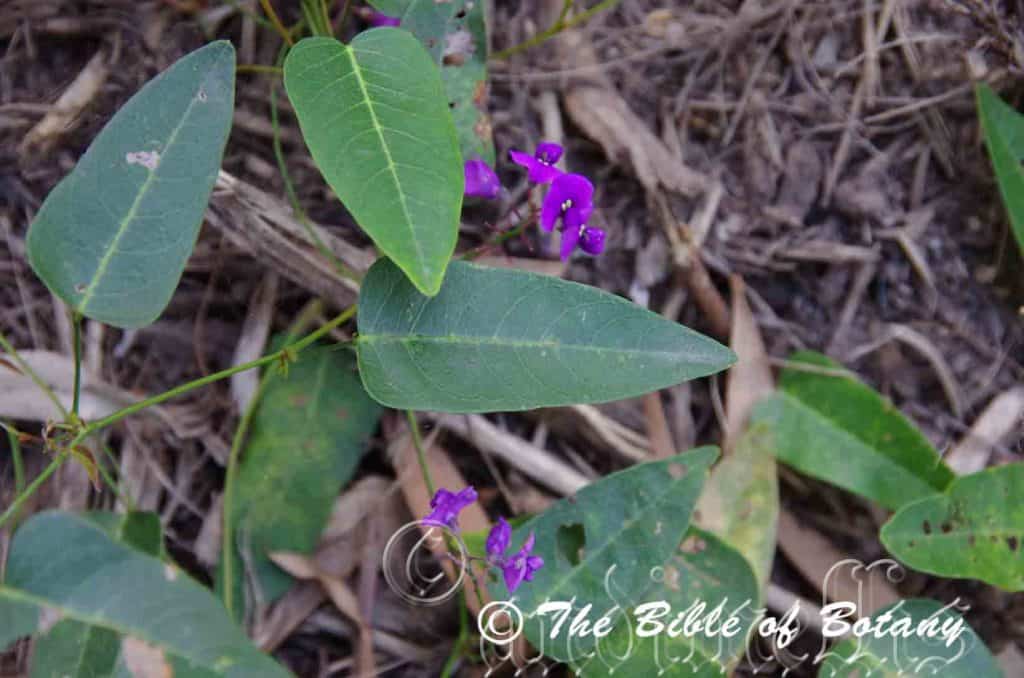
Mount Cootha Botanical Gardens Qld.
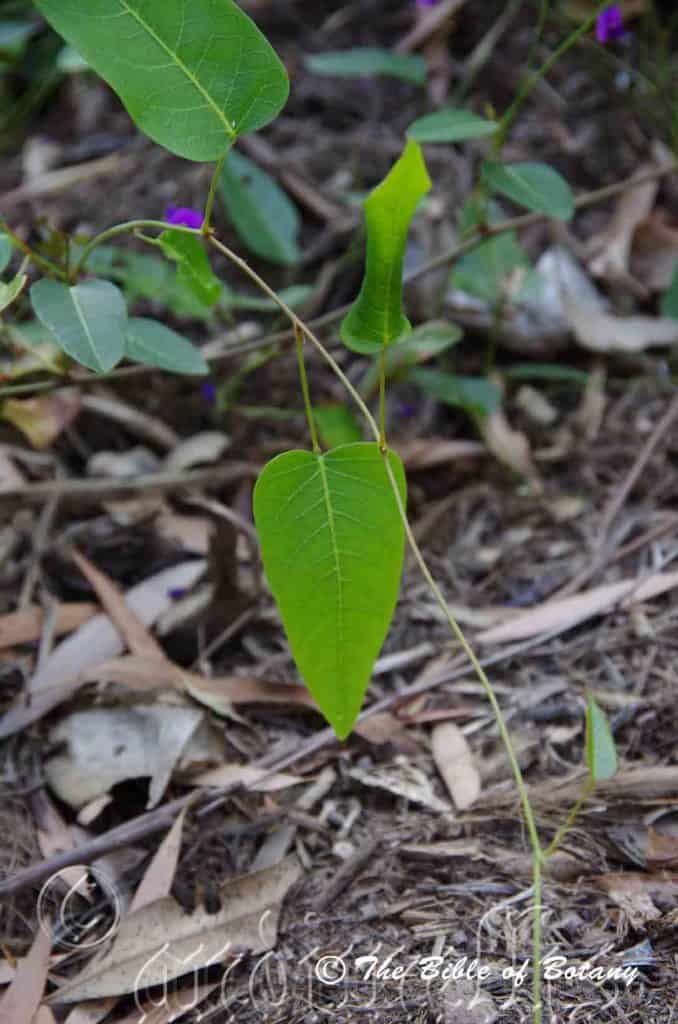
Mount Cootha Botanical Gardens Qld.
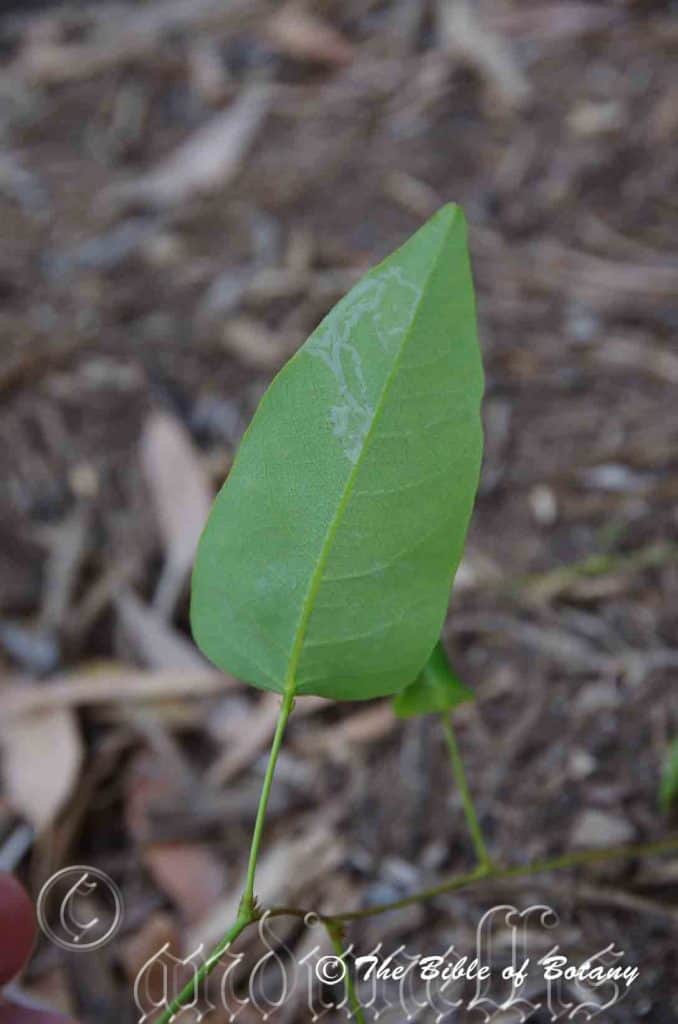
Mount Cootha Botanical Gardens Qld.
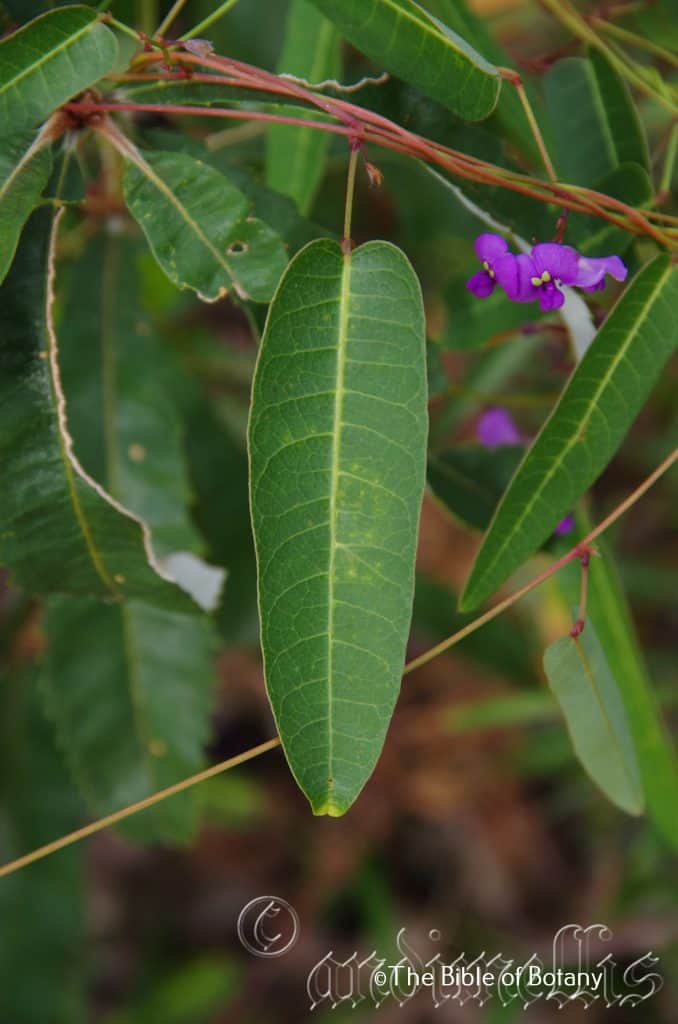
The Pinnacles NSW
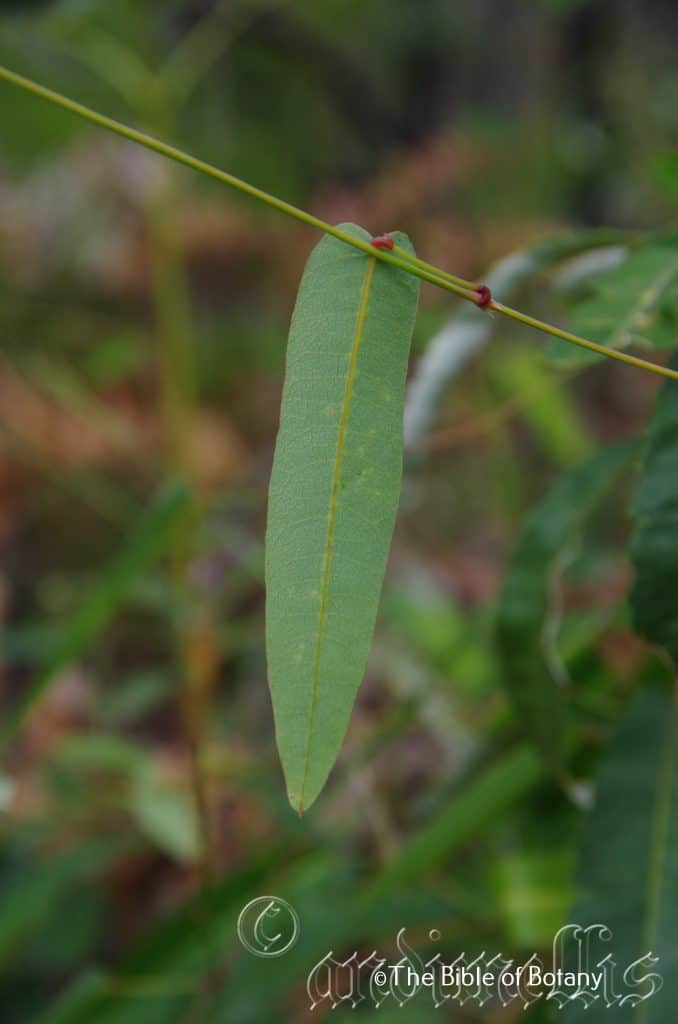
The Pinnacles NSW
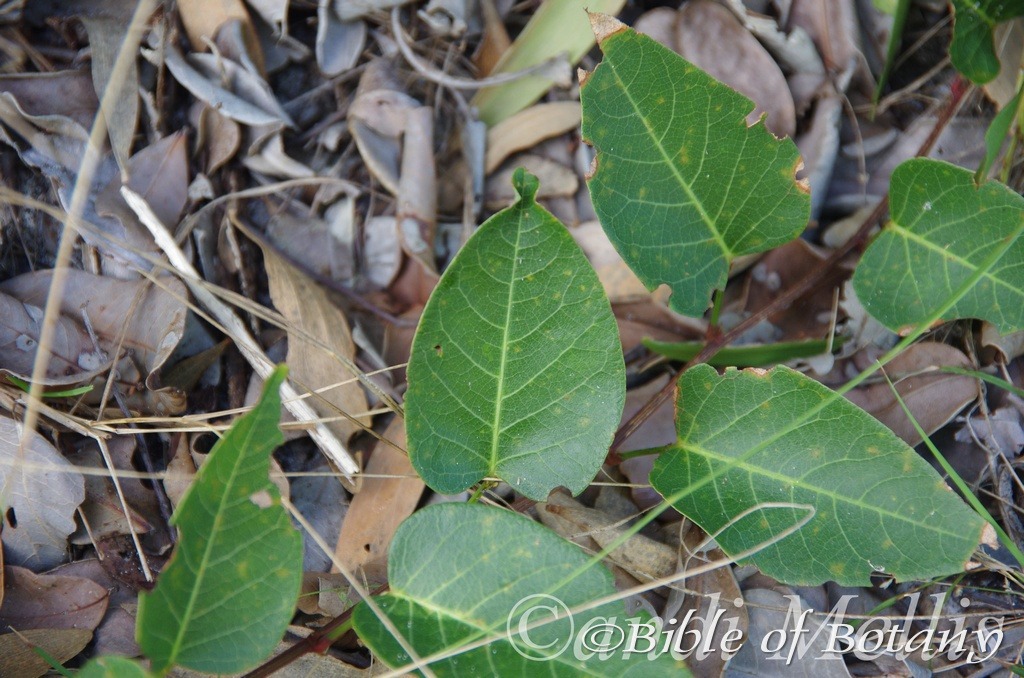
North Yuraygir National Park NSW
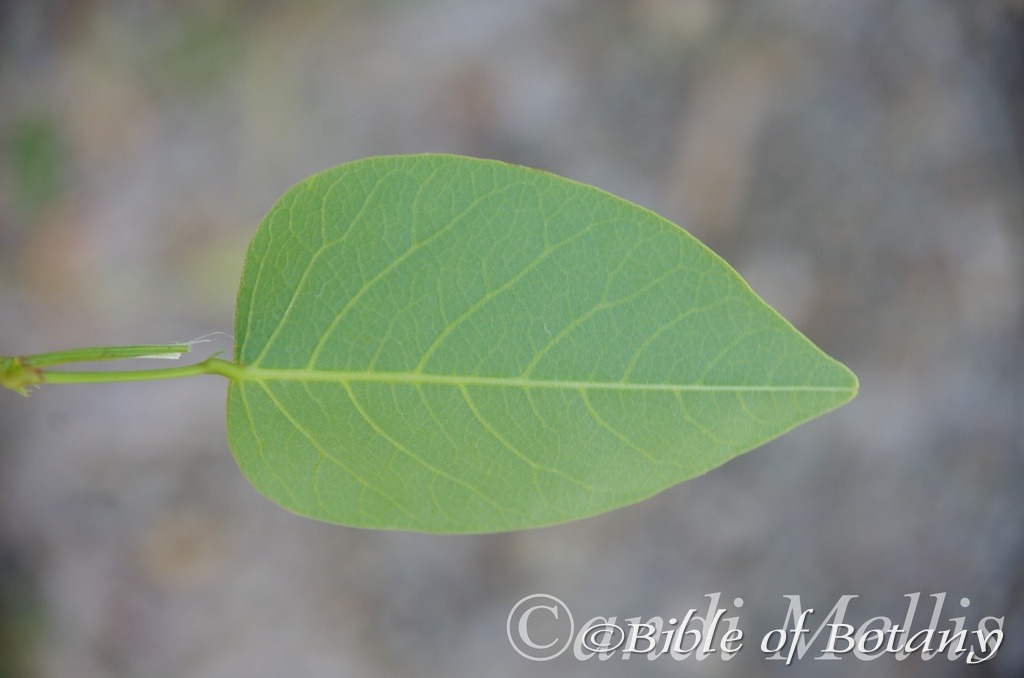
North Yuraygir National Park NSW
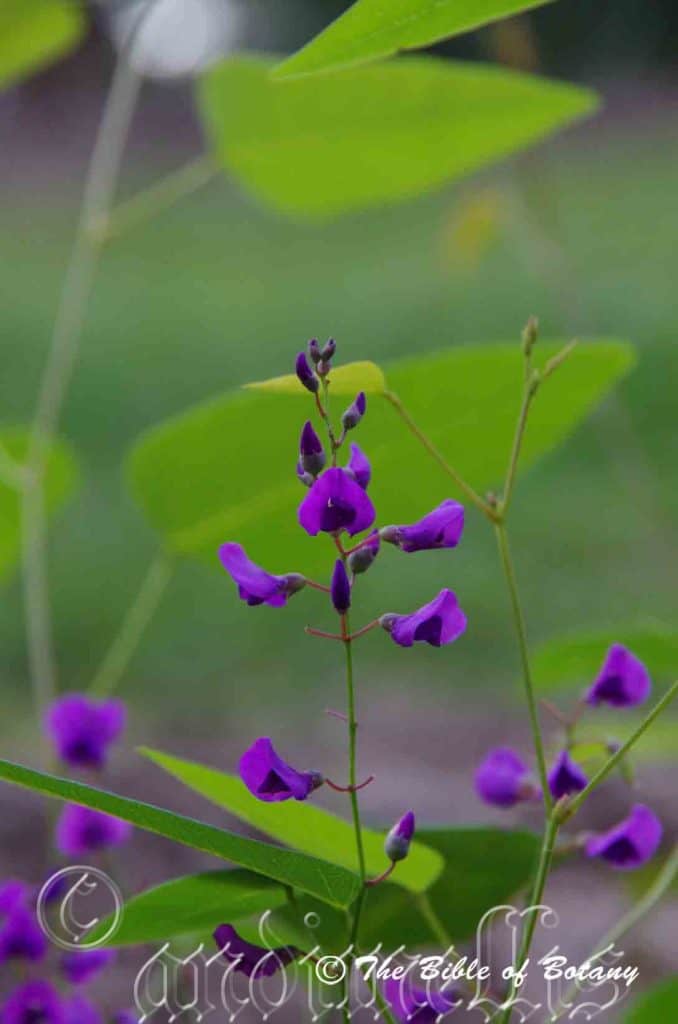
Mount Cootha Botanical Gardens Qld.
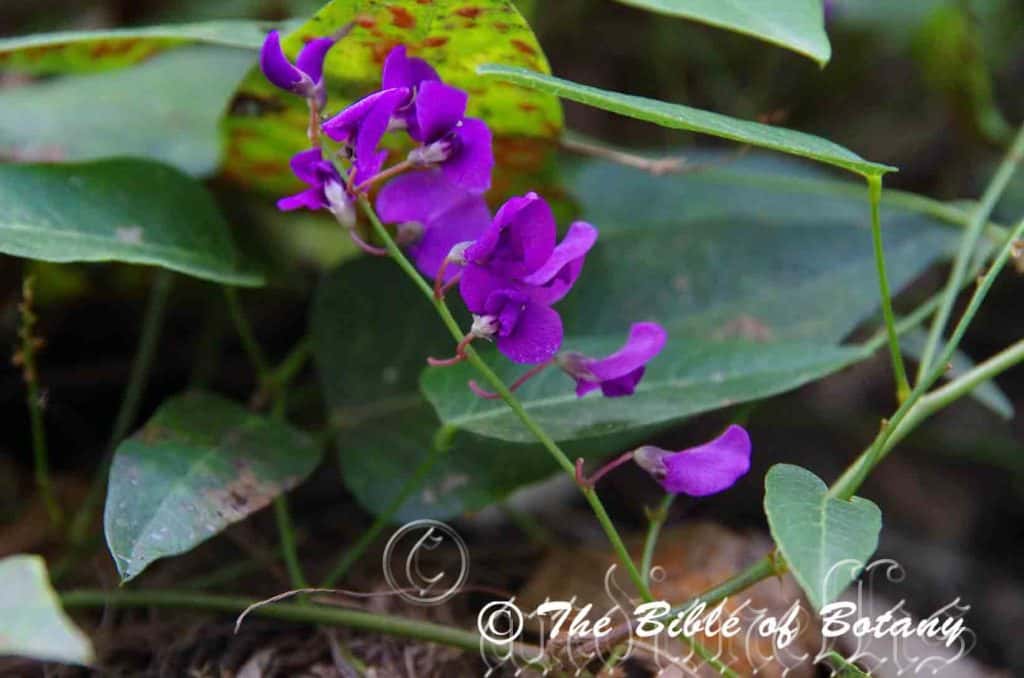
Mount Cootha Botanical Gardens Qld.
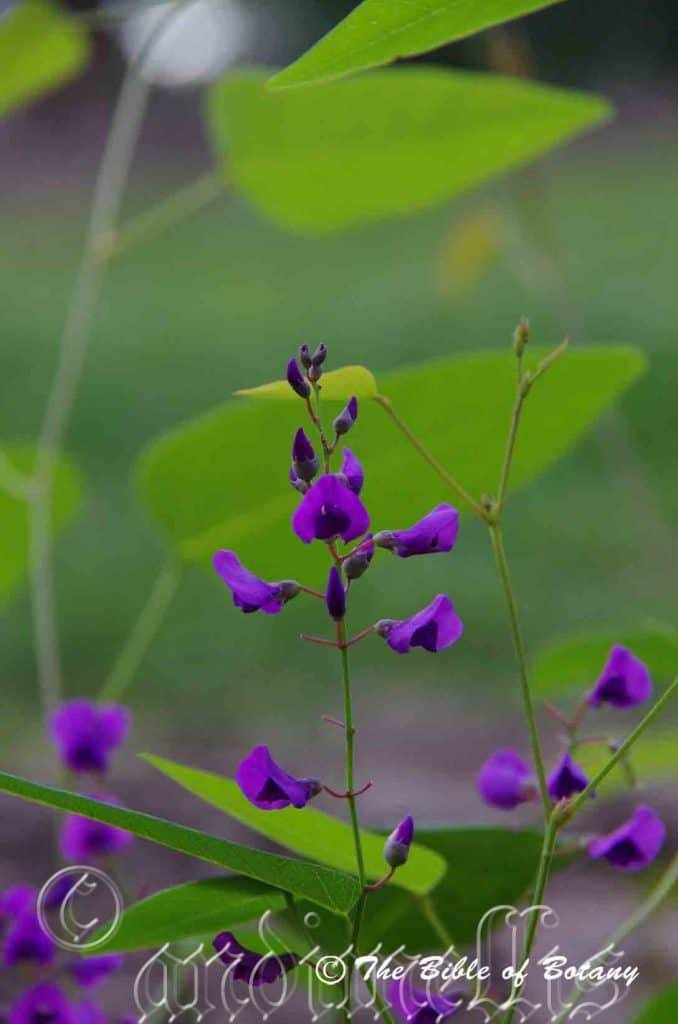
Mount Cootha Botanical Gardens Qld.
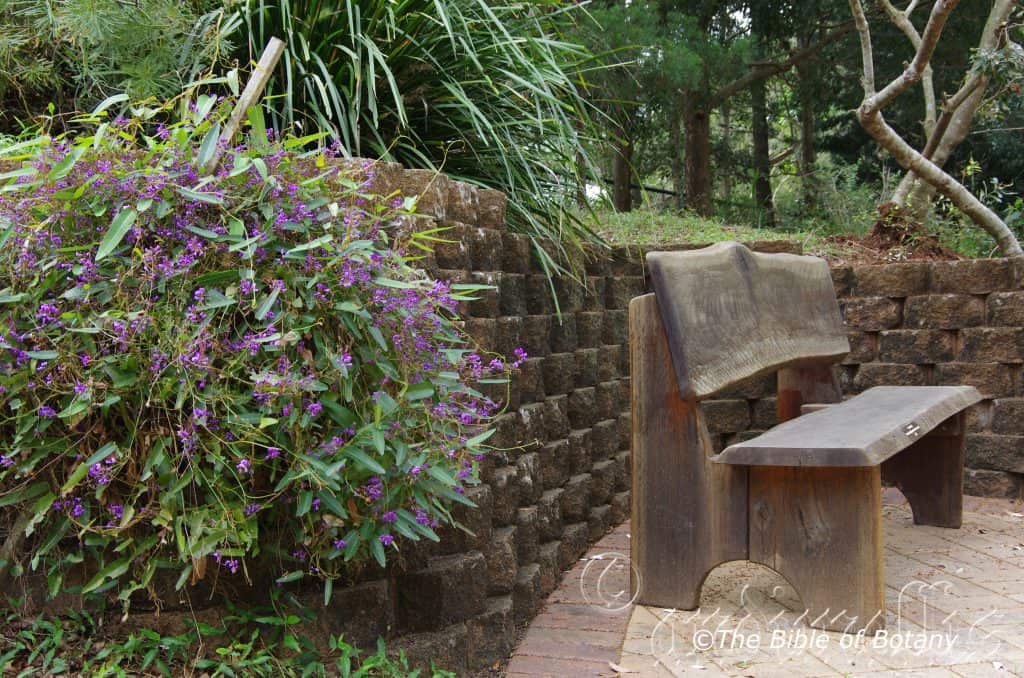
Indigenous gardens Capalaba Qld.
Hardenbergia violacea
Classification
Unranked: Eudicots
Unranked: Rosids
Unranked: Fabales
Family: Fabaceae
Genus: Is named in honour of the Countess of Franzisca von Hardenberg sister of the Austrian Baron von Hugel. She married into wealth ensuring the safe keeping of his extensive plant collections.
Specie: From Viola, which is Latin for violet. It refers to the colour of flowers, which are deep purple to violet.
Sub species:
Common Name: Native Sarsaparilla.
Distribution:
It is found south from Mount Spurgeon in far north east Queensland to Calpatanna on the edge of the Great Australian Bite and western Eyre Peninsular.
It is also found on most of the Islands off the coast and in southern Tasmania on Pontos Hill.
https://avh.ala.org.au/occurrences/search?taxa=Hardenbergia+violacea#tab_mapView
Habitat Aspect Climate:
Hardenbergia violacea prefers full sun to light dappled shade. It grows in open woodlands, dry savannah woodlands, moist coastal woodland heaths or dry Eucalyptus forests on protected plains or rolling hills and mountains. This is a small twinning prostrate plant or climber with purple pea flowers. The altitude ranges from 5 meters ASL to 1400 meters ASL.
The temperatures range from minus 4 degree in July to 37 degrees in January.
The rainfalls range from lows of 420mm to an average of 1850mm annually.
Soil Requirements:
Hardenbergia violacea prefer growing on a wide variety of shallow soils from light gravelly clays through to medium gravelly clays over laterites. The soils are derived from decomposed shale and basalts. The soils pH varies from 5.5pH through to a 7pH. It does not tolerate waterlogged soils. Non saline soils to moderately saline soils are tolerated as are salt laden winds.
Height & Spread:
Wild Plants: 0.1m to 2m x 1m to 2m.
Characteristics:
Hardenbergia violacea’s glabrous stems are grey to grey-green turning purple-green as they approach the new shoots.
Hardenbergia violacea’s alternate, ovate to narrow lanceolate simple leaves measure 30mm to 110mm in length by 10mm to 50mm in width. The base is cordate to truncate while the apex is broadly acute to acute. The discolourous laminas vary considerably from a mid-green to grey-green, blue-green, deep green on the upper lamina while the power lamina is paler. The coriaceous laminas are glabrous and curve upwards from the midvein towards margin. The margin is entire and flat. The midvein and reticulate veins are prominent on the lower lamina and faintly visible on the upper lamina. The petioles measure 6mm to 12mm in length.
The inflorescences of Hardenbergia violacea are born from the leaf axis. The upper raceme often forms a terminal panicle. The rachis measure 10mm to 15mm in length and have 20 to 30 flowers. The calyxes measure 3mm to 4mm in length while the purple corolla measures 7mm to 9mm in length. The standards are pale to deep purple becoming paler towards the margins. There is a cream or yellow spot on each standard above the corolla. The standards measure 12mm to 15mm across by 9mm to 11mm in height. The wings measure 6mm to 7.5mm in width by 4mm to 5mm in height. Flowers appear from late August to early December depending on the area.
Hardenbergia violacea’s fruit are oblong pod. The pods are lime-green turning a papery brown to black when ripe. They measure 20mm to 45mm length by 7mm to 9mm in diameter. The pods are only slightly constricted between the 4 to 8 seeds. The deep brown oblong to ovoid seeds measure 4mm to 4.5mm in length by 2mm to 2.5mm in diameter.
Wildlife:
Ants are the means to an end for this plant as it is the seed distributors. The seeds are coated in a sweet sugary substance which the ants and I find attractive to eat.
Cultivation:
Hardenbergia violacea is a beautiful ground covering small creeper or climber. It is very suitable for small gardens in temperate, sub-tropical or semi-arid zones. As garden subjects they will grow to 2 meters to 3 meters high by 2 meters to 3 meters wide when cultivated in the open. Light tip pruning can be done to increase the number of stems and consequently the number of flowers the following season. Hard pruning can be done once the plants are established but some set back will occur so it is better to trim the plants on a regular or annual basis. It is fast growing, drought tolerant once established and are cold tolerant to temperatures as low as minus 3 degrees.
It is most suitable for use around swimming pools, sunny courtyards, besides pathways, rockeries, along sandy banks or along drive ways. It is best used adjacent to small areas of bush close to paths or the house so their deep purple flowers can be viewed regularly.
It is great in small rockeries when used as a fill in plant.
Low fences can be covered quickly as can difficult dry hot spots in a garden.
Propagation:
Seeds: Hardenbergia violacea seeds need to be treated prior to sowing. Rub the seeds gently between fine sandpaper or method is to place the seeds in a calico bag with sharp sand and place the bag in the weekend’s washing for two or three washes. Another method is to soak the seeds in hot near boiling water and allow the water to cool. Leave them there for 2 or 3 hours. Do not place them in boiling water as this will kill the seeds.
Hardenbergia violacea seeds can be sown directly into a seed raising mix after treatment. Cover them with 5mm of fine sand and keep moist not wet. Place the tray in a warm sunny position. When the seedlings are 25mm to 50mm tall, prick them out and plant them into 50mm native tubes using a good organic mix.
Once the seedlings reach 150mm to 200mm in height, nip the tips out before planting them out into their permanent position.
Fertilize using seaweed, fish emulsion or organic chicken pellets soaked in water on an alternate basis. Fertilize every two months until the plants are established then twice annually in early September or March to maintain health, vitality and better flowering.
Further Comments from Readers:
Hi reader, it seems you use The Bible of Botany a lot. That’s great as we have great pleasure in bringing it to you! It’s a little awkward for us to ask, but our first aim is to purchase land approximately 1,600 hectares to link several parcels of N.P. into one at The Pinnacles NSW Australia, but we need your help. We’re not salespeople. We’re amateur botanists who have dedicated over 30 years to saving the environment in a practical way. We depend on donations to reach our goal. If you donate just $5, the price of your coffee this Sunday, We can help to keep the planet alive in a real way and continue to bring you regular updates and features on Australian plants all in one Botanical Bible. Any support is greatly appreciated. Thank you.
In the spirit of reconciliation we acknowledge the Bundjalung, Gumbaynggirr and Yaegl and all aboriginal nations throughout Australia and their connections to land, sea and community. We pay our respect to their Elders past, present and future for the pleasures we have gained.
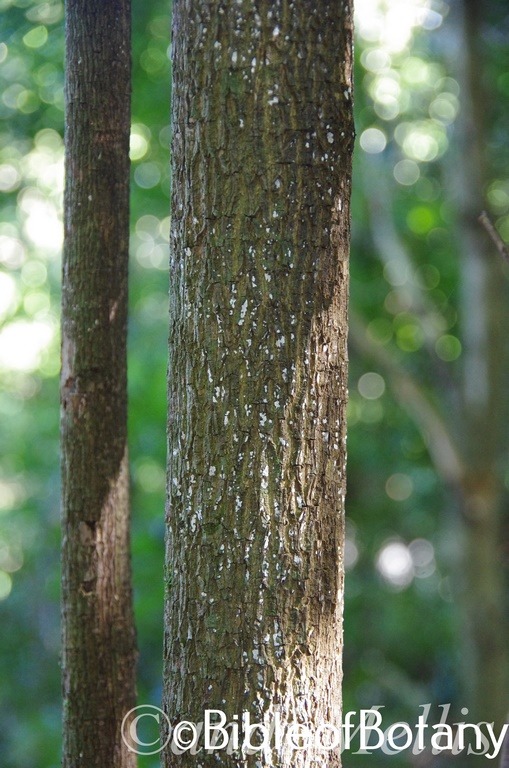
LBG Lismore NSW
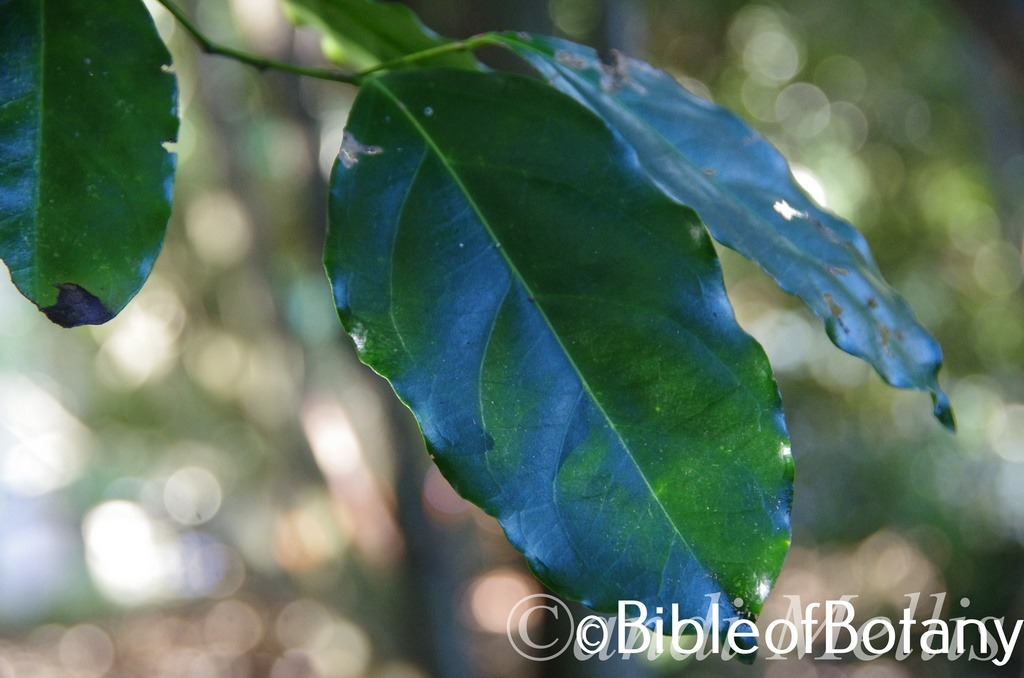
LBG Lismore NSW
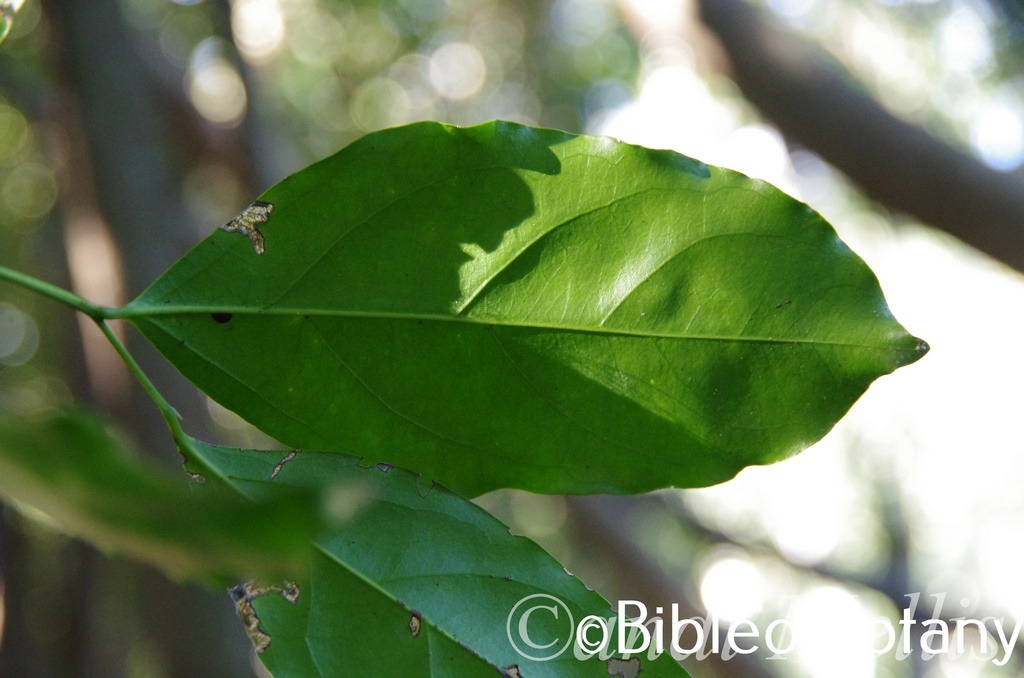
LBG Lismore NSW
Harnieria hygrophiloides
Classification
Unranked: Equisetopsida
Class: Magnoliidae
Superorder: Asteranae
Order: lamiales
Family: Acanthaceae
Genus: From Harnier which is unknown.
Specie: From Hugros, which is Ancient Greek for wet situations, Phílos, which is Ancient Greek for loving or to be loved and Eîdos/Oides, which is Ancient Greek for alike or similar to. It refers to the plants, which have a love for wet habitats, similar to those of the Hygrophila genus.
Sub species:
Common Name: Native Justicia.
Distribution:
Harniera hygrophiloides is found south from the Windsor Tableland in far north Queensland to the Clarence Valley in far north eastern New South Wales. It is mainly found on and east the Great Dividing Range to the coast including several off shore Islands north of Fraser Island.
There is 1 notable exception on the western slopes at Murilla west of Dalby in Queensland.
https://avh.ala.org.au/occurrences/search?taxa=Harnieria+hygrophiloides#tab_mapView
Habitat Aspect Climate:
Harniera hygrophiloides prefers full sun or light dappled shade. It grows in drier types of rain forest, moist sclerophyll forests, adjacent to warm subtropical rain forest, gallery forests, drainage lines or shallow depressions. The altitude ranges from 15 meters ASL to 1050 meters ASL.
The temperatures range from 4 degrees in July to 38 degrees in January. The rainfall ranges from lows of 800mm to an average of 3000mm annually.
Soil Requirements:
The prefers better quality sands, sandy loams to medium clays. The soils are usually derived from decomposed brown basalts, black basalts, shale or at times granite or rarely accumulated peaty sands or accumulated coral sands. The soils pH varies from 5pH through to an 8pH. It does not tolerate waterlogged soils however the soils retain moisture throughout the year. Non saline soils to moderately saline soils are tolerated as are salt laden winds.
Height & Spread:
Wild Plants: 1m to 2m by 1m to 1.5m.
Characteristics:
The main branches are deep green and slightly scabrous. The stems are semi glossy deep green and glabrous except for being sparsely covered in white short hirsute hairs in the fine longitudinal grooves between the leaf nodes. The peduncles are persistent on the older twigs.
The alternate, elliptical leaves measure 20mm to 115mm in length by 10mm to 30mm in width. The bases are cuneate while the apexes are acute to obtuse-acute. The discolourous laminas are deep green and glabrous on the upper laminas while the lower laminas are paler. The laminas recurve slightly upwards from the midvein to the margins, decurve slightly downwards on the apical third. The laminas are convex between the main vein and the lateral veins. The margins are entire and are slightly undulating. The main vein and lateral veins are prominent on the lower laminas and are clearly visible on the upper laminas. The venations are densely covered in white cystolithic hirsute hairs on the lower laminas. The glabrous petioles measure 2mm to 10mm in length.
The inflorescences are sessile clusters born from within 2 to 4 obcordate bracts from the leaf axils. The clusters have 2 to 4 flowers. The white or cream corolla tube has purple streaks and measures 6mm to 8mm in length including the 2 lips. The 2 lipped corollas’ lower lip has 3 lobes while the upper lip has 2 lobes. The corolla is glabrous externally and is covered in white hirsute hairs internally especially on the basal half. The calyx ‘s lobes are broad linear to broad lanceolate and measure 8.5mm to 10mm in length.
The exserted stamens filaments are white and measure 5.5mm to 7mm in length. The anthers have a one tailed locule and one locule without a tail. The locules are separated while the space between is densely covered in white hirsute to hispid hairs.
The ellipsoid ovary is surrounded by a 2 lobed glandular, glabrous disk. The style is covered in white hirsute hairs especially on the basal half. The stigma is slightly notched or bifid at the apex. The flowers appear throughout the year when conditions are favourable.
The fruits are ellipsoidal capsules. The green capsules turn brown when ripe. The 2 large bilobed bracts are persistent at the base of each cluster of capsules and extend to about 3/4 of the length of the capsules. The smooth, glabrous capsules measure 8mm to 10.5mm in length by 3mm to 4.5mm in diameter.
There are usually 4, or at times 2 or 3 disc shaped, colliculate seeds in each capsule. The seeds are yellowish and turn deep brownish-yellow when ripe and measure 2mm in diameter by 1.7mm in depth.
Wildlife:
Harniera hygrophiloides is unknown to the author.
Cultivation:
Harniera hygrophiloides is a dense small shrub that is well suitable to small gardens in warm temperate, sub-tropical or cool tropical zones. As garden subjects they will grow from 1.5 meters to 2 meters in height by 1.5 meters to 2 meters in diameter when grown in an open semi shaded. It can be tip pruned if a smaller shrub is required. They respond well to pruning recovering quickly and often increasing the number of flowers in the following season.
It is most suitable for use beneath rainforest trees where the soils remain moist throughout the year. It looks particularly striking when grown adjacent to vertical plants with red and yellow foliages like Cordyline terminalis, Cordyline petiolaris or even strap like foliages like those found on Cordyline stricta. Other great plants in such situations would include Alocasia brisbanensis, Alpinia caerulea, Asplenium australisicum, Cyathea robertsoniana in a warm frost free area and Hypolepis glandulifera.
Propagation:
Seeds:
Harniera hygrophiloides seeds can be sown directly into a seed raising mix immediately after the last frosts have passed. Cover them with 5mm of fine sand and keep moist not wet. Place the tray in a warm position beneath 50mm shade cloth. When the seedlings are 25mm to 50mm tall, prick them out and plant them into 50mm native tubes using a good organic mix.
Once the seedlings reach 150mm to 200mm in height, nip the tips out before planting them out into their permanent position.
Fertilize using seaweed, fish emulsion or organic chicken pellets soaked in water on an alternate basis. Fertilize every two months until the plants are established then twice annually in early September or March to maintain health, vitality and better flowering.
Further Comments from Readers:
Hi reader, it seems you use The Bible of Botany a lot. That’s great as we have great pleasure in bringing it to you! It’s a little awkward for us to ask, but our first aim is to purchase land approximately 1,600 hectares to link several parcels of N.P. into one at The Pinnacles NSW Australia, but we need your help. We’re not salespeople. We’re amateur botanists who have dedicated over 30 years to saving the environment in a practical way. We depend on donations to reach our goal. If you donate just $5, the price of your coffee this Sunday, We can help to keep the planet alive in a real way and continue to bring you regular updates and features on Australian plants all in one Botanical Bible. Any support is greatly appreciated. Thank you.
In the spirit of reconciliation we acknowledge the Bundjalung, Gumbaynggirr and Yaegl and all aboriginal nations throughout Australia and their connections to land, sea and community. We pay our respect to their Elders past, present and future for the pleasures we have gained.
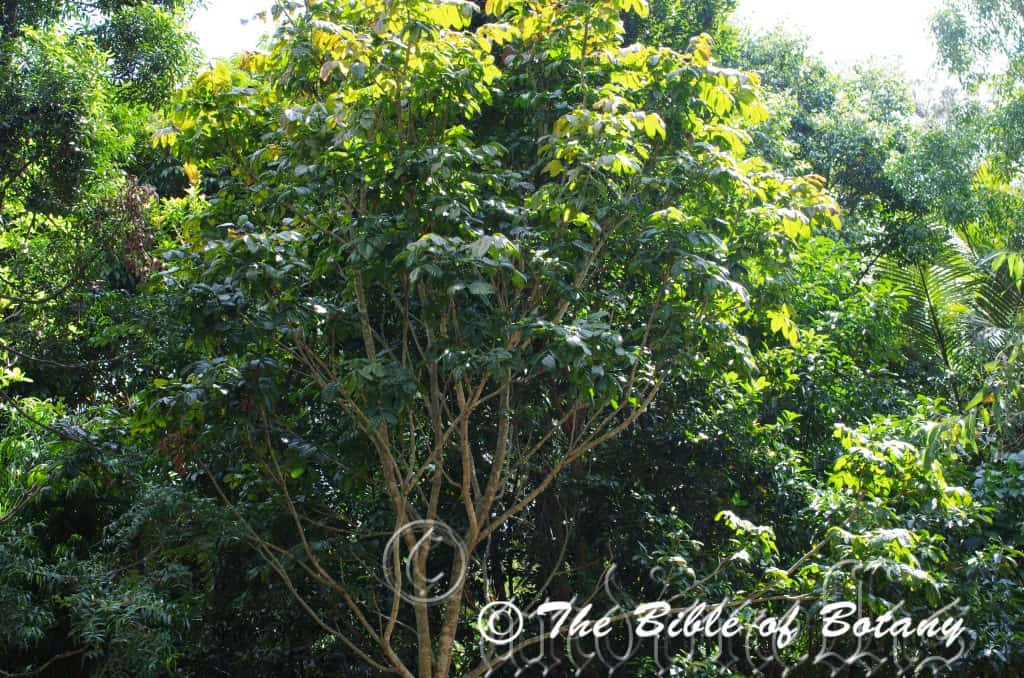
MCBG Brisbane Qld.
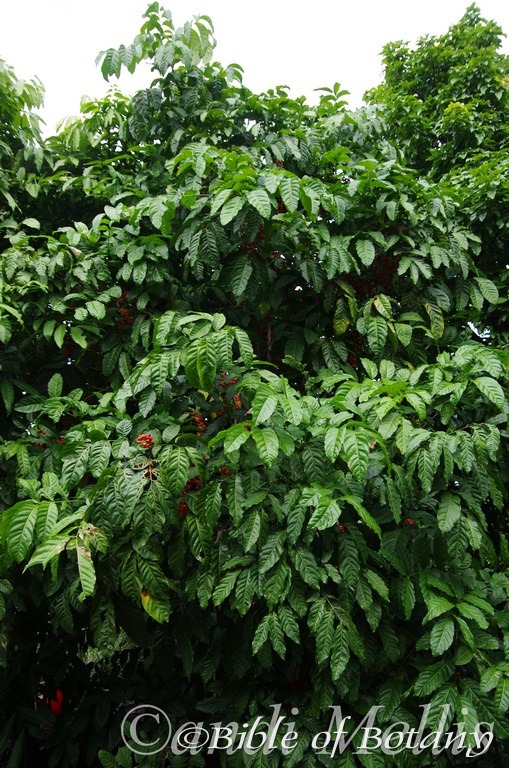
MCBG Brisbane Qld.
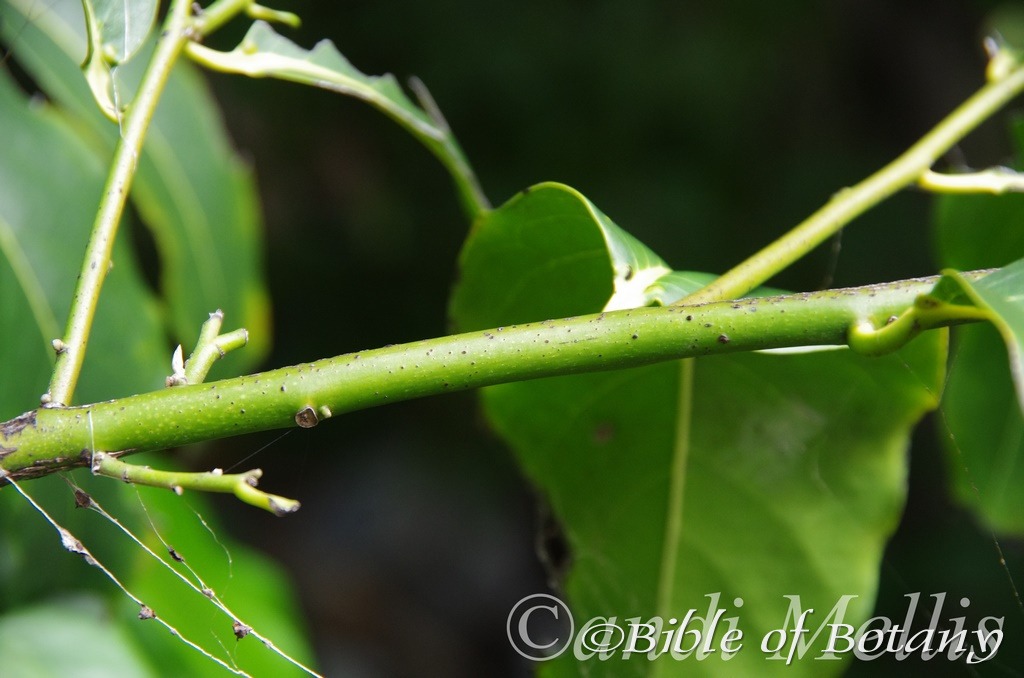
MCBG Brisbane Qld.
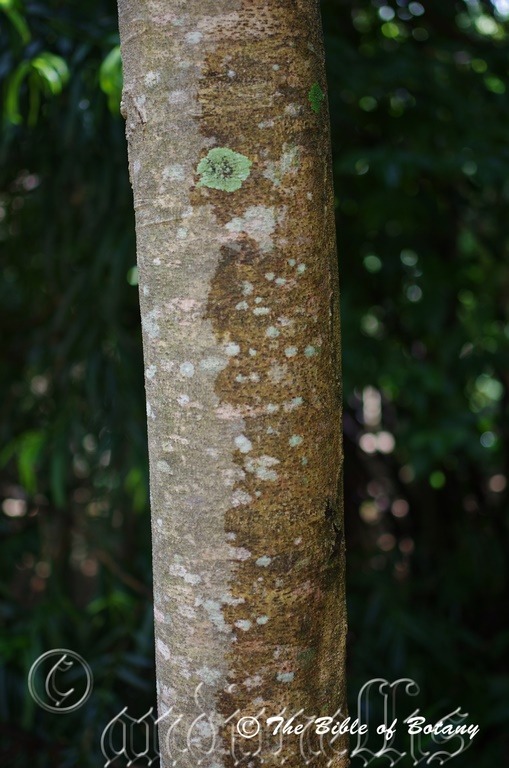
MCBG Brisbane Qld.
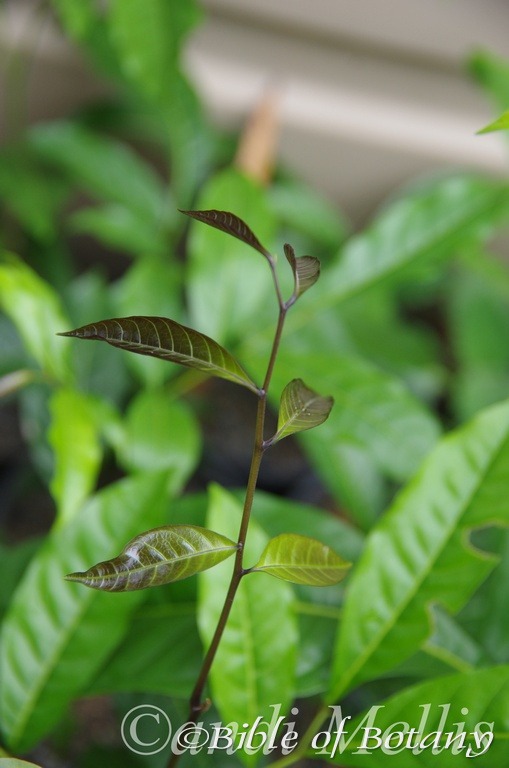
Author’s Garden The Pinnacles NSW
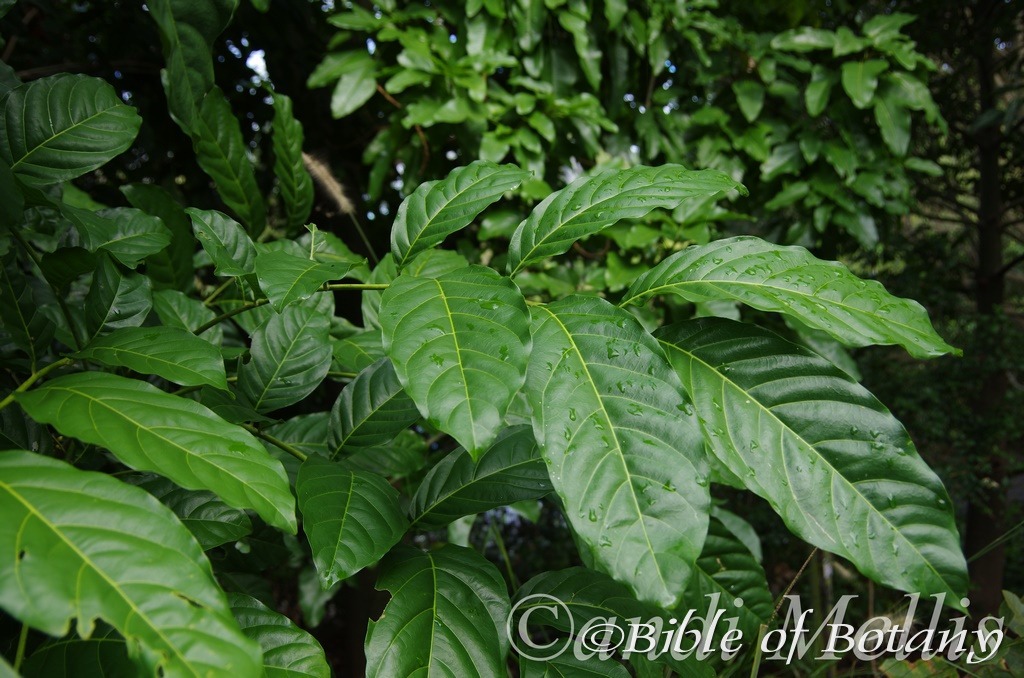
Author’s Garden The Pinnacles NSW
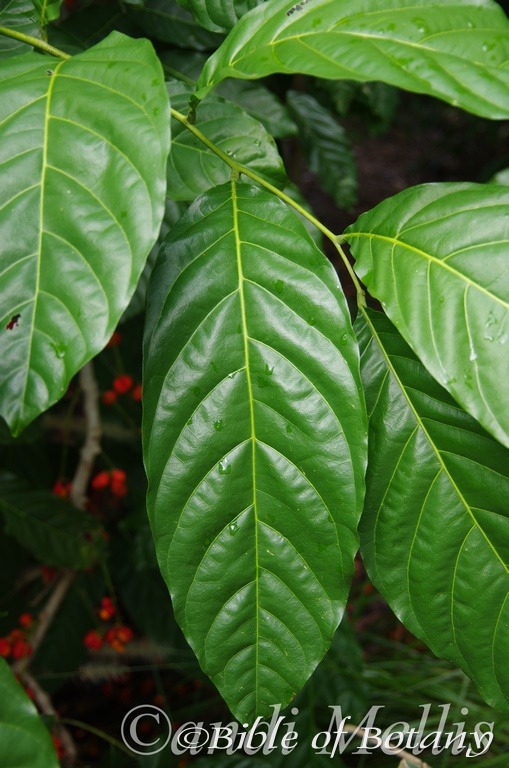
Author’s Garden The Pinnacles NSW
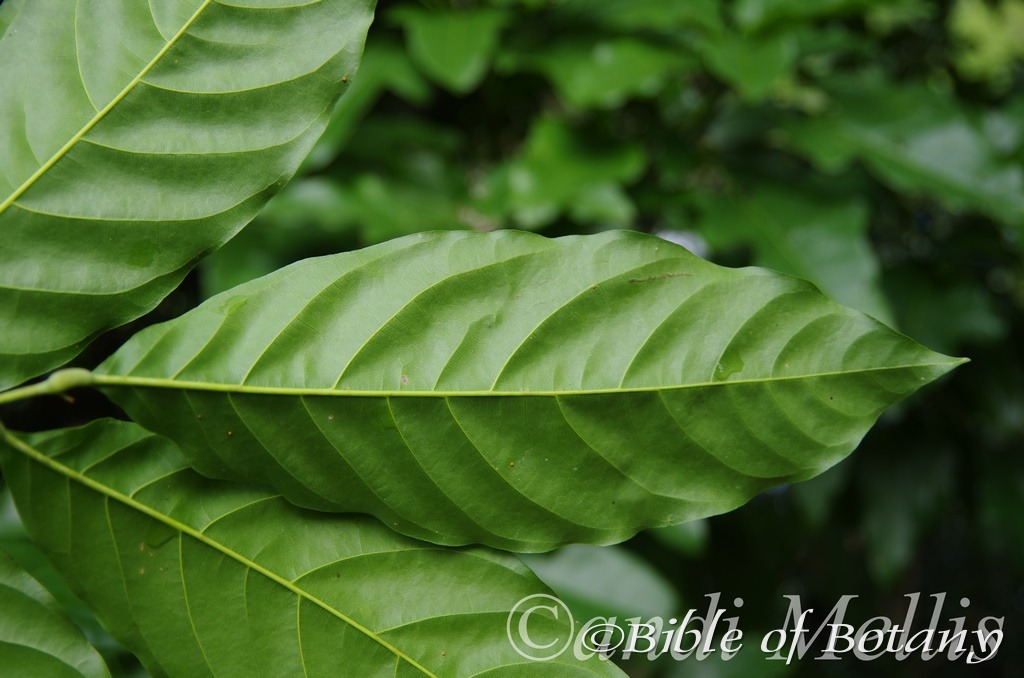
Author’s Garden The Pinnacles NSW
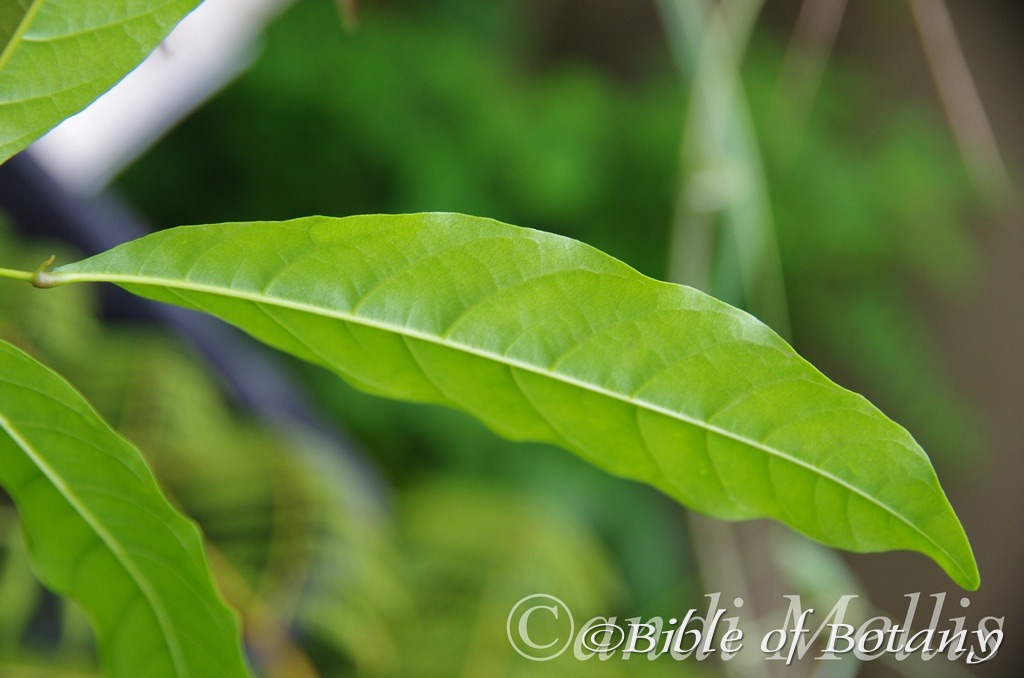
Author’s garden The Pinnacles NSW
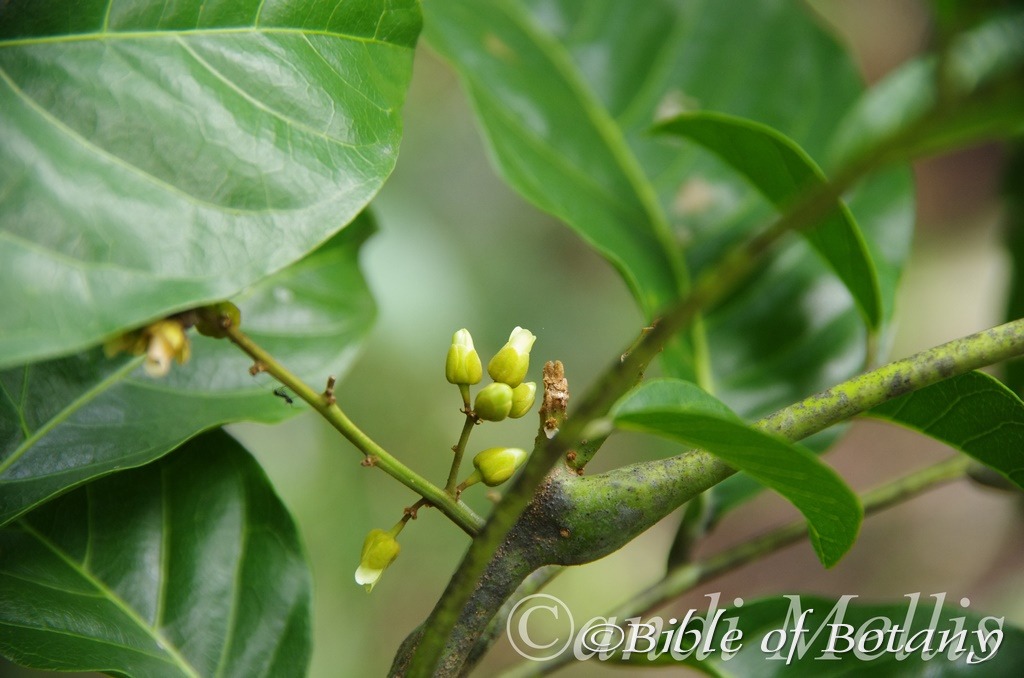
MCBG Brisbane Qld.
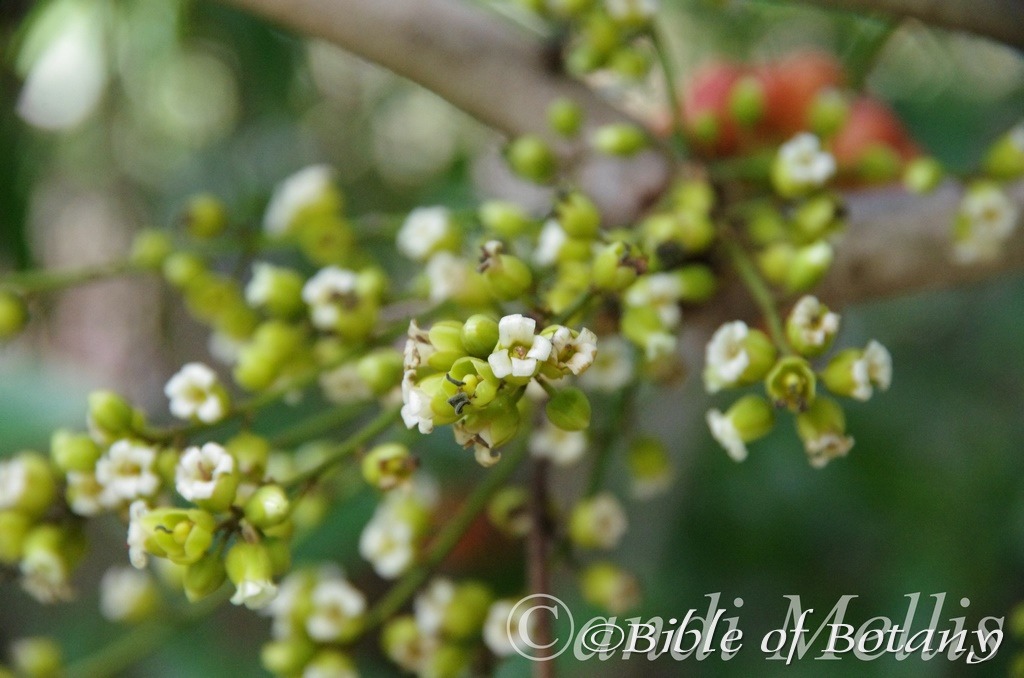
MCBG Brisbane Qld.
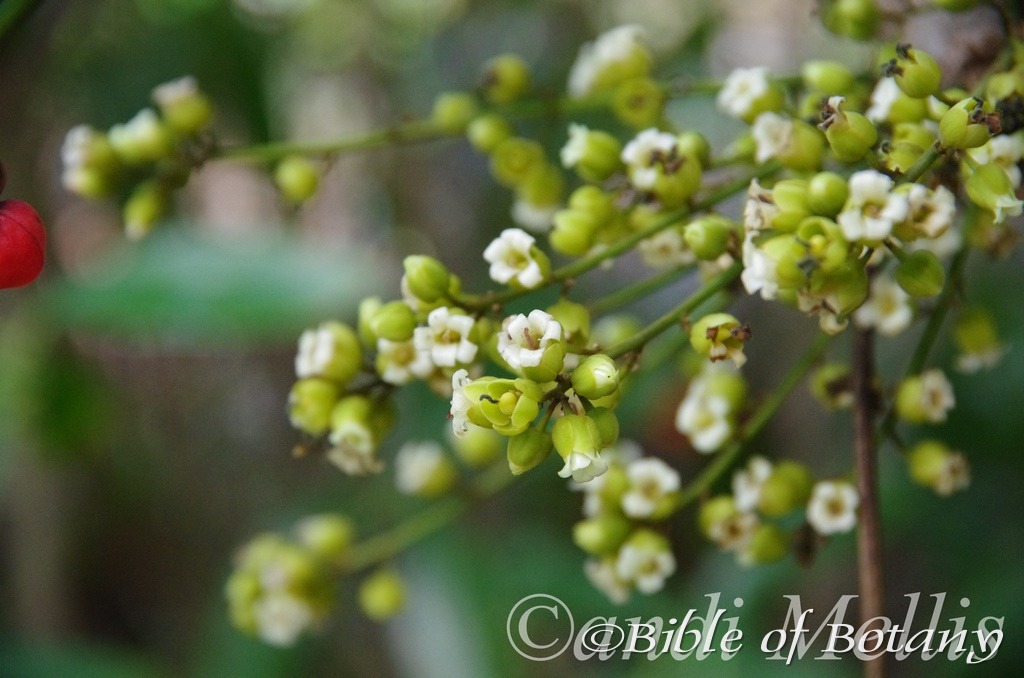
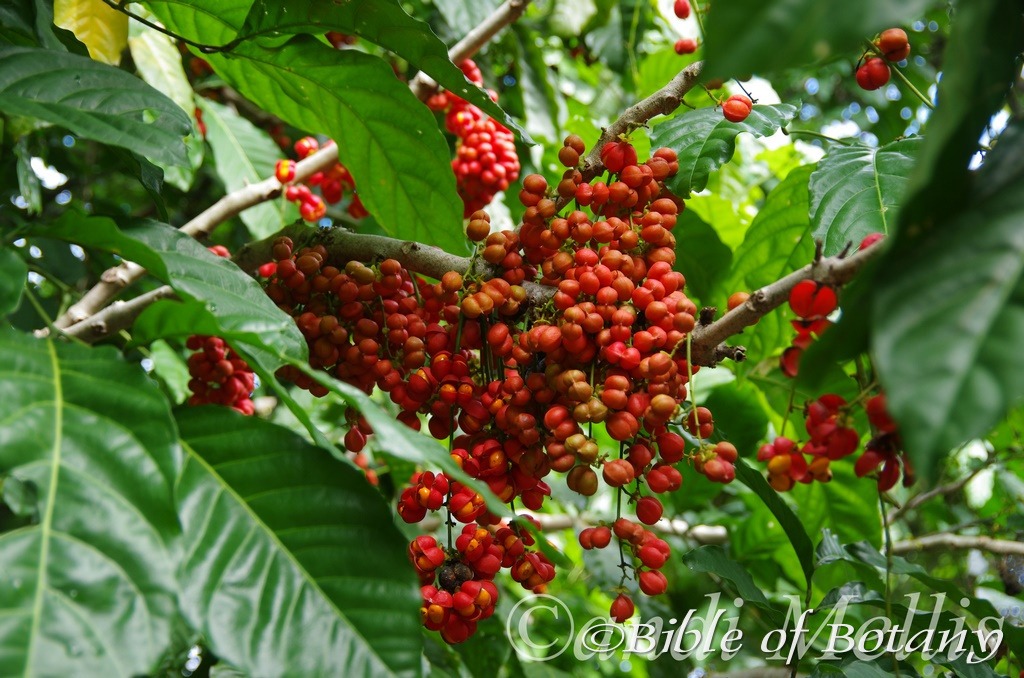
MCBG Brisbane Qld.
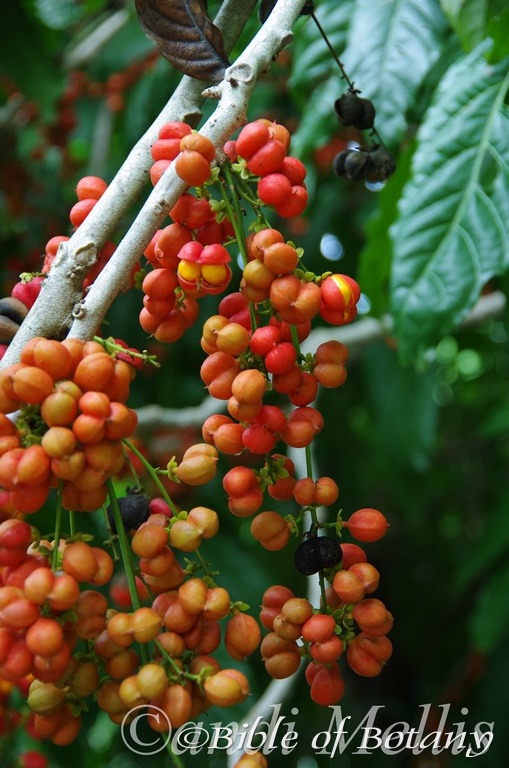
MCBG Brisbane Qld.
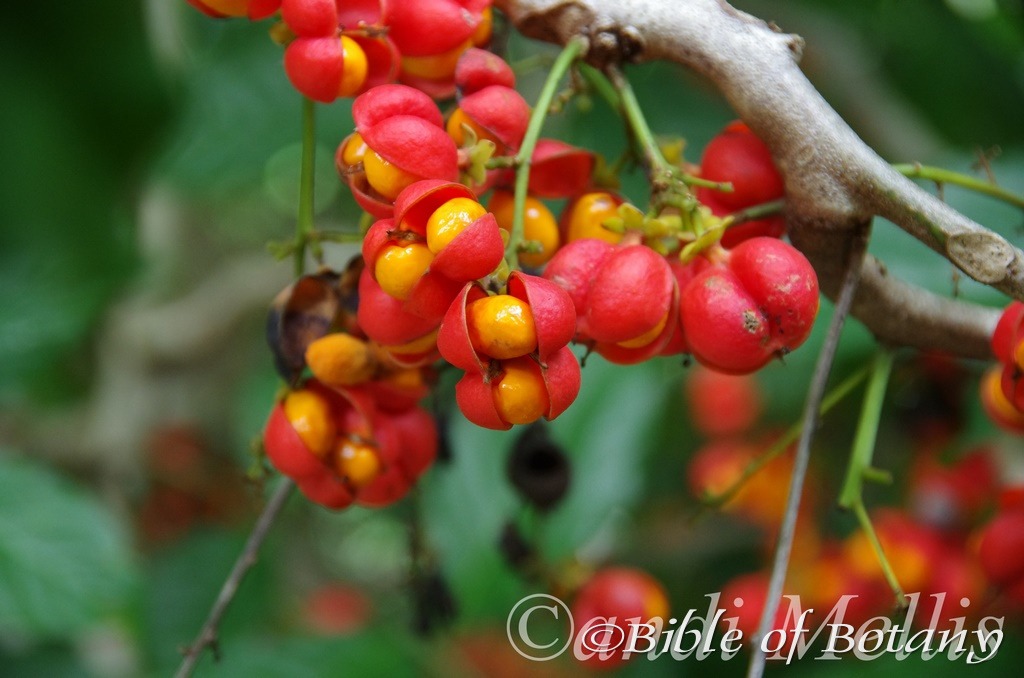
MCBG Brisbane Qld.
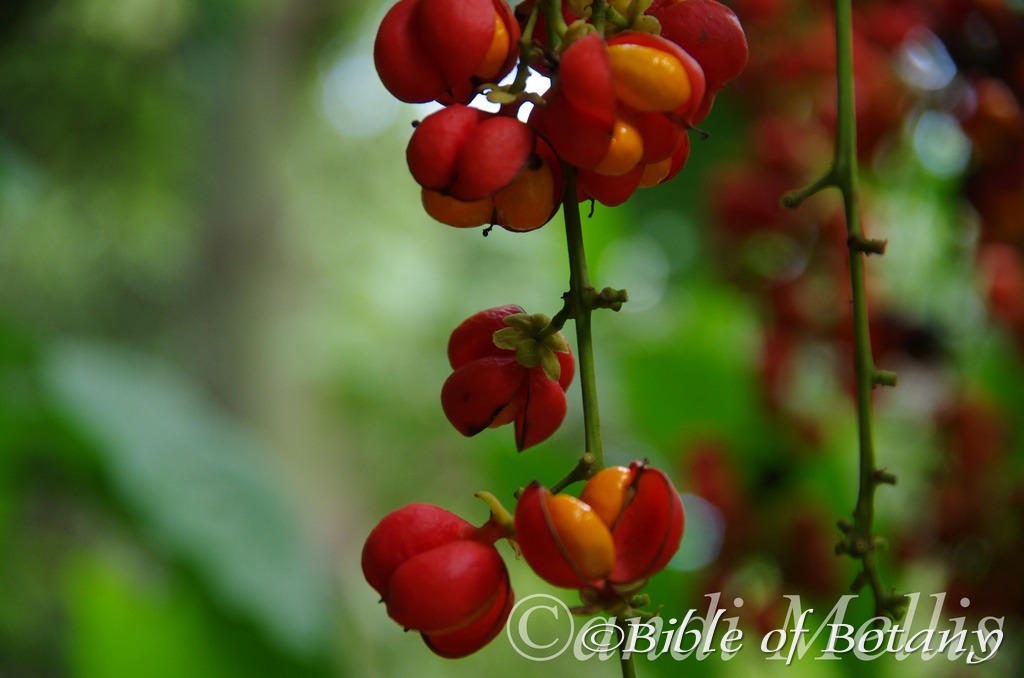
MCBG Brisbane Qld.
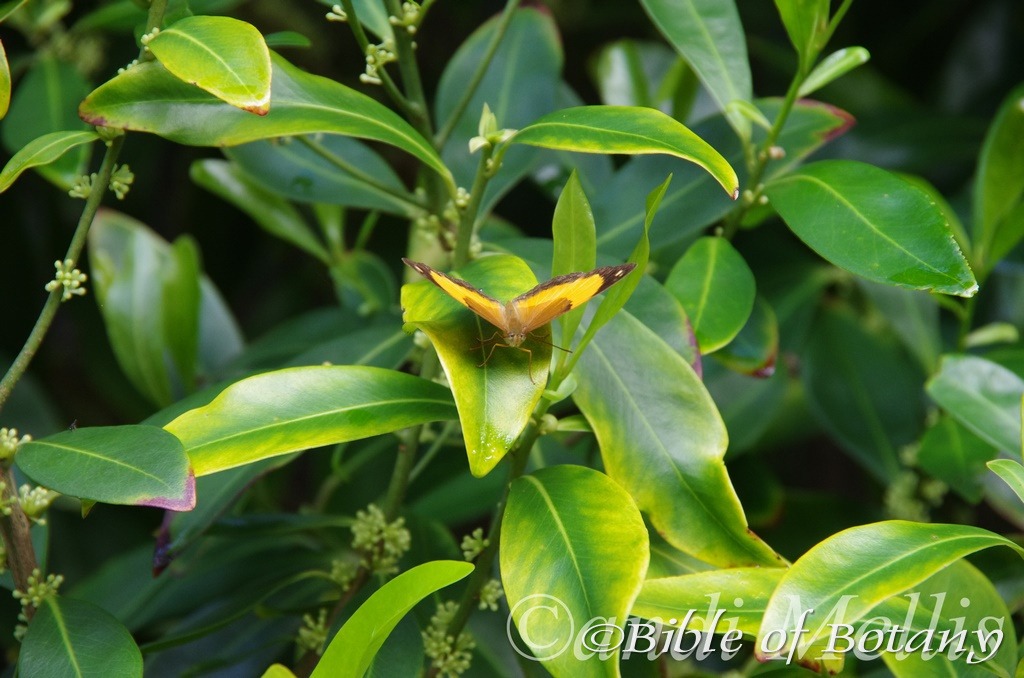
Mount Cootha Botanical Gardens Qld.
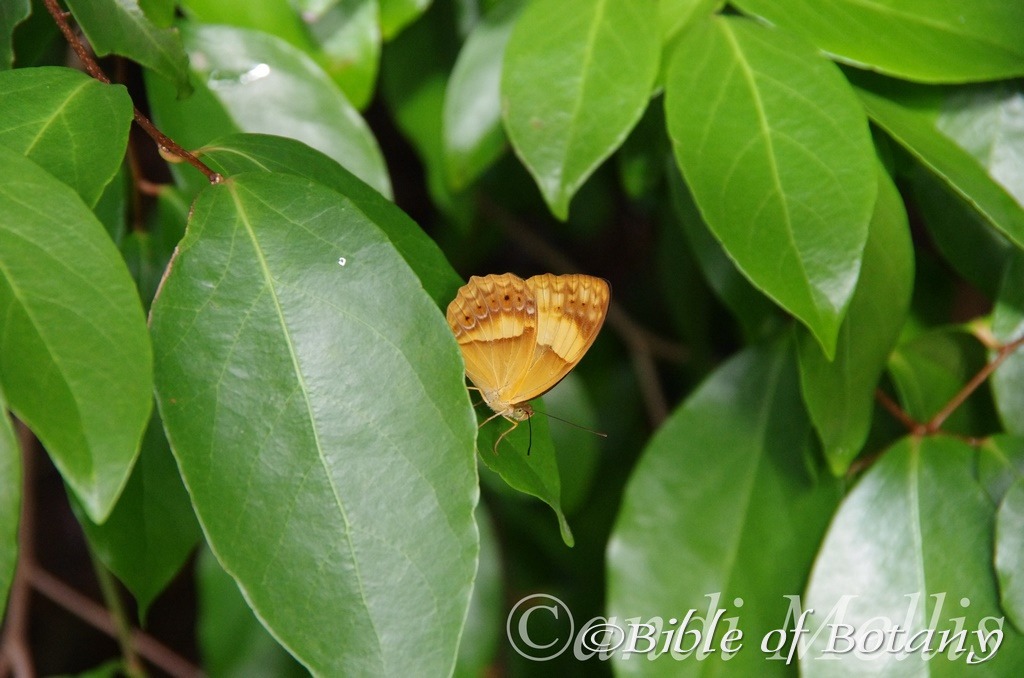
Mount Cootha Botanical Gardens Qld.
Harpullia arborea
Classification
Unranked: Eudicots
Unranked: Rosids
Family: Sapindaceae
Genus: From Harpuli, which is the vernacular of the Indian word for the tree found around Bengal India and which, was the first species named. The Scottish botanist William Roxburgh formally described the genus in his 1824 in his work “Flora Indica” and Latinised the spelling to Harpullia.
Specie: From Arborescent, which is Latin for a tree. It refers to plants, which have typical tree like structures or formation.
Common Name: Cooktown Tulipwood.
Distribution: Harpullia arborea is restricted to a small area in far north Queensland east of the Great Dividing Range south from the Pascoe River to Gordonvale.
https://avh.ala.org.au/occurrences/search?taxa=Harpullia+arborea#tab_mapView
Habitat Aspect Climate:
Harpullia arborea prefer full sun to medium shade. It grows in most types of low land rainforests including littoral rainforests, well developed rainforests, monsoonal forests and vine forests. The altitude ranges from 5 meters ASL to 250 meters ASL.
The temperatures range from 4 degree in July to 38 degrees in January.
The rainfalls range from lows of 1400mm to an average of 3000mm annually.
Soil Requirements:
Harpullia arborea prefers better quality deep fertile loams to medium gravelly clays. The soils are derived from decomposed shale, brown basalt, black basalts or metamorphic rocks. The soils pH varies from 5.5pH through to a 7pH. It does not tolerate waterlogged soils. Non saline soils to moderately saline soils are tolerated as are salt laden winds.
Height & Spread:
Wild Plants: 8m to 12m by 8m to 9m.
Characteristics:
Harpullia arborea’s is a small tree which has a dense crown. The glabrous trunk is fluted on older trees. The scabrous bark is grey with paler horizontal grey markings. The branchlets are pale grey only turning green in the leaf zone. The green stems are covered in fawn to rusty-brown pulverulent hairs.
Harpullia arborea’s alternate, pinnate leaves measure 100mm to 300mm in length by 80mm to 250mm in width. The 8 to 12 leaflets opposite leaflets are elliptical to oblong-ovate with the base pair being shorter than the apical pair. The leaflets measure 60mm to 160mm in length by 40mm to 80mm in width. The petiole, rachis and petiolules are grass-green to mid green. The petioles are covered in rusty-brown stellate hairs while the rachis and petiolules are covered in rusty-brown hirsute hairs. The petioles measure 45mm to 60mm in length while the rachises measure 90mm to 110mm and in length and the petiolules measure 3mm to 7mm in length. The bases are cuneate while the apexes are acuminate. The discolourous laminas are grass-green to deep green, glabrous and semi glossy on the upper laminas while the lower laminas are paler and dull. The laminas recurve upwards from the mid vein to the margins and decurve downwards close to the apexes. The laminas are faintly to strongly convex between the main vein and the lateral veins while the margins are entire and slightly undulate. The midvein vein and lateral veins are prominent on the lower lamina and distinctly visible from the upper lamina.
The inflorescences of Harpullia arborea are racemes or simple cymes born from the leaf axis. The rachis and pedicels are covered in pale golden-brown stellate hairs mixed with long glandular hairs. The rachises measures 40mm to 200mm in length while the pedicels measure 10mm to 50mm in length. The 4 sepals are ovate to obovate and are sparsely covered in fawn stellate. The sepals measure 6mm to 7.5mm in length by 3.5mm to 5mm in width. The 5 creamy yellow to pale yellow-green, obovate, clawed petals measure 12mm to 14mm in length by 7mm to 9mm in width. The petals are glabrous except for the claws that are sparsely covered in white pulverulent hairs.
The usually 5 or at times 6 or 7 dimorphic filaments are pale yellow-green and measure 4mm to 10mm in length while the dorsifixed khaki-yellow anthers measure 1.5mm to 2mm in length. The disk and ovary are covered in white pulverulent hairs while the glabrous style is twisted and measures 10mm to 15mm in length. The flowers appear from late September to late December.
Harpullia arborea’s fruits are inflated, twin obcordate capsules. The lime-green capsules turn orange externally and red internally when ripe. The capsules are covered in pale brownish pulverulent hairs externally and are glabrous internally. The thin, coriaceous capsules measure 20mm to 30mm in length by 30mm to 40mm in width. The green seeds are surrounded by a black glossy papery shell. The orbicular seeds measure 13mm to 15mm in diameter. The aril is absent.
Wildlife:
This is the host tree for the Cornelian butterfly genus whose larvae eat the seeds leaving empty capsules. The King Parrot is also a frequent visitor to the trees to eat the green seeds.
Cultivation:
Harpullia arborea is a beautiful small tree which is suitable for small gardens to the largest garden. It is an excellent shade tree with a dense canopy for warm temperate, sub-tropical or semi-arid zones. As garden subjects they will grow from 6 meters to 8 meters in height by 6 meters to 8 meters in diameter when cultivated in the open. It is fast growing, drought tolerant once established and are cold tolerant to temperatures as low as minus 5 degrees with some protection in the early years. Cold winters will slow growth down considerably even if the spring and summer temperatures warm quickly.
It is most suitable for use around sunny courtyards, besides pathways, or along drive ways, screens, wind breaks or shelter belts for small native animals. They make an excellent street and park tree. It has a smaller root system that is not invasive.
Apart from being excellent shade trees it is exceptionally good for planting near foundations, sewer lines and other community services, both underground and above ground. Most Councils throughout Australia accept this tree for street tree planting because of its restricted height in cultivation, ensures that it does not interfere with power lines. The trees leaves do not inter fear with underground drainage systems and its fruits provide substances for butterfly larvae and the King Parrot in semi-rural areas. It is an outstanding tree near BBQ areas and for shading hot walls on buildings. They can be used in formal gardens and park scenes or used to start a rainforest garden.
The trunk and branches on established trees are suitable for epiphytic ferns, orchids and lichens.
The trees make interesting bonsai specimens.
Propagation:
Seeds:Harpullia arborea seeds can be sown directly into a seed raising mix. Cover them with 5mm of fine sand and keep moist not wet. Place the tray in a warm sunny position. When the seedlings are 25mm to 50mm tall, prick them out and plant them into 50mm native tubes using a good organic mix.
Once the seedlings reach 150mm to 200mm in height or their roots break through the bottom they can be planted out into their permanent position.
If the seeds are not to be used immediately they should be stored in a vegetable crisper in the refrigerator and even then stored seeds lose their viability very quickly.
Fertilize using seaweed, fish emulsion or organic chicken pellets soaked in water on an alternate basis. Fertilize every two months until the plants are established then twice annually in early September or March to maintain health, vitality and better flowering.
Further Comments from Readers:
Hi reader, it seems you use The Bible of Botany a lot. That’s great as we have great pleasure in bringing it to you! It’s a little awkward for us to ask, but our first aim is to purchase land approximately 1,600 hectares to link several parcels of N.P. into one at The Pinnacles NSW Australia, but we need your help. We’re not salespeople. We’re amateur botanists who have dedicated over 30 years to saving the environment in a practical way. We depend on donations to reach our goal. If you donate just $5, the price of your coffee this Sunday, We can help to keep the planet alive in a real way and continue to bring you regular updates and features on Australian plants all in one Botanical Bible. Any support is greatly appreciated. Thank you.
In the spirit of reconciliation we acknowledge the Bundjalung, Gumbaynggirr and Yaegl and all aboriginal nations throughout Australia and their connections to land, sea and community. We pay our respect to their Elders past, present and future for the pleasures we have gained.
Harpullia hillii
Classification
Unranked: Eudicots
Unranked: Rosids
Family: Sapindaceae
Genus: From Harpuli, which is the vernacular of the Indian word for the tree found around Bengal India and which, was the first species named. The Scottish botanist William Roxburgh formally described the genus in his 1824 in his work “Flora Indica” and Latinised the spelling to Harpullia.
Specie: Is named in honour of Leslie J. Hill; 1908-2003, who was a botanical philanthropist and collector of South African succulents.
Sub species:
Common Name:
Distribution: Harpullia hillii is found south from Davies Creek near Mareeba in north Queensland to Mount George near Taree in New South Wales.
https://avh.ala.org.au/occurrences/search?taxa=Harpullia+hillii#tab_mapView
Habitat Aspect Climate:
Harpullia hillii prefers full sun to medium shade. It grows adjacent to well-developed moist rainforests or well developed dry rain forests on alluvial flats or moist littoral rainforests. The altitude ranges from 10 meters ASL to 800 meters ASL but is usually found below 500 meters ASL.
The temperatures range from minus 3 degree in July to 38 degrees in January.
The rainfalls range from lows of 1400mm to an average of 3000mm annually.
Soil Requirements:
Harpullia hillii prefers better quality deep fertile soils from good quality loams to medium gravelly clays. The soils are usually derived from decomposed shales, brown basalt, black basalts or metamorphic rocks. The soils pH varies from 5.5pH through to a 7pH. It does not tolerate waterlogged soils. Non saline soils to moderately saline soils are tolerated as are salt laden winds.
Height & Spread:
Wild Plants: 6m to 8m by 5m to 6m.
Characteristics:
Harpullia hillii’s is a small tree which has a dense crown. The scabrous to smooth trunk is slightly fluted on older trees. The bark is grey with paler horizontal grey markings. The branchlets are pale grey only turning green in the leaf zone. The green stems are densely covered in deep brown to deep rusty-brown caduceus tomentose hairs.
Harpullia hillii’s alternate, pinnate leaves measure 100mm to 300mm in length by 80mm to 250mm in width. The 4 to 12 opposite leaflets are oblong-elliptical to oblong-ovate with the base pair being shorter than the apical pair. The leaflets measure 50mm to 140mm in length by 20mm to 60mm in width. The petiole, rachis and petiolules are grass-green to mid green and glabrous. The petiole measure 15mm to 30mm in length while the rachises measure 30mm to 80mm and in length and the petioles measure 3mm to 5mm in length. The symmetrical or at times asymmetrical bases are cuneate while the apexes are obtuse or retuse. The discolourous laminas are deep grass-green to deep green, glabrous and semi glossy on the upper laminas while the lower laminas are paler and dull. The laminas recurve slightly upwards from the mid vein to the margins and decurve downwards close to the apexes while the margins are entire and slightly undulate. The midvein vein is prominent on the lower lamina and distinctly visible from the upper lamina while the 4 to 5 pairs of lateral veins are sub opposite and slightly prominent near the mid vein only.
The inflorescences of Harpullia hillii are panicles born from the terminals. The peduncle, rachis and pedicels are covered in brown tomentose hairs mixed with long glandular hairs. The rachises measures 40mm to 200mm in length while the pedicels measure 10mm to 50mm in length. The 4 sepals are ovate to obovate and are sparsely covered in fawn stellate. The sepals measure 6mm to 7.5mm in length by 3.5mm to 5mm in width. The 5 white, obovate petals measure 10mm to 12mm in length by 6mm to 7mm in width. The petals are glabrous.
The usually 5 filaments are white and measure 4mm to 8mm in length while the dorsifixed yellow anthers measure 1mm to 1.5mm in length. The disk and ovary are covered in white pulverulent hairs while the glabrous style is twisted and measures 10mm to 15mm in length.
The flowers appear from late September to late December.
Harpullia hillii’s fruits are inflated, twin obcordate capsules. The lime-green capsules turn yellow-orange externally and red internally when ripe. The capsules are covered in brownish tomentose hairs externally and are glabrous internally. The thick coriaceous capsules measure 12mm to 14mm in length by 25mm to 30mm in width.
The green seeds are surrounded by a black glossy papery shell. The orbicular seeds measure 8mm to 10mm in diameter. The seeds are three quarters enclosed in a red aril.
Wildlife:
This is the host tree for the Cornelian butterfly genus whose larvae eat the seeds leaving empty capsules. The King Parrot is also a frequent visitor to the trees to eat the green seeds.
Cultivation:
Harpullia hillii is a beautiful small tree which is suitable for small gardens to the largest garden. It is an excellent shade tree with a dense canopy for warm temperate, sub-tropical or semi-arid zones. As garden subjects they will grow from 6 meters to 8 meters in height by 6 meters to 8 meters in diameter when cultivated in the open. It is fast growing, drought tolerant once established and are cold tolerant to temperatures as low as minus 5 degrees with some protection in the early years. Cold winters will slow growth down considerably even if the spring and summer temperatures warm quickly.
It is most suitable for use around sunny courtyards, besides pathways, or along drive ways, screens, wind breaks or shelter belts for small native animals. They make an excellent street and park tree. It has a smaller root system that is not invasive.
Apart from being excellent shade trees it is exceptionally good for planting near foundations, sewer lines and other community services, both underground and above ground. Most Councils throughout Australia accept this tree for street tree planting because of its restricted height in cultivation, ensures that it does not interfere with power lines. The trees leaves do not inter fear with underground drainage systems and its fruits provide substances for butterfly larvae and the King Parrot in semi-rural areas. It makes an outstanding tree near BBQ areas and for shading hot walls on buildings. It can be used in formal gardens and park scenes or used to start a rainforest garden.
The trunk and branches on established trees are suitable for epiphytic ferns, orchids and lichens.
The trees make interesting bonsai specimens.
Propagation:
Seeds:Harpullia hillii‘s eeds can be sown directly into a seed raising mix. Cover them with 5mm of fine sand and keep moist not wet. Place the tray in a warm sunny position. When the seedlings are 25mm to 50mm tall, prick them out and plant them into 50mm native tubes using a good organic mix.
Once the seedlings reach 150mm to 200mm in height or their roots break through the bottom they can be planted out into their permanent position.
If the seeds are not to be used immediately they should be stored in a vegetable crisper in the refrigerator and even then stored seeds lose their viability very quickly.
Fertilize using seaweed, fish emulsion or organic chicken pellets soaked in water on an alternate basis. Fertilize every two months until the plants are established then twice annually in early September or March to maintain health, vitality and better flowering.
Further Comments from Readers:
Hi reader, it seems you use The Bible of Botany a lot. That’s great as we have great pleasure in bringing it to you! It’s a little awkward for us to ask, but our first aim is to purchase land approximately 1,600 hectares to link several parcels of N.P. into one at The Pinnacles NSW Australia, but we need your help. We’re not salespeople. We’re amateur botanists who have dedicated over 30 years to saving the environment in a practical way. We depend on donations to reach our goal. If you donate just $5, the price of your coffee this Sunday, We can help to keep the planet alive in a real way and continue to bring you regular updates and features on Australian plants all in one Botanical Bible. Any support is greatly appreciated. Thank you.
In the spirit of reconciliation we acknowledge the Bundjalung, Gumbaynggirr and Yaegl and all aboriginal nations throughout Australia and their connections to land, sea and community. We pay our respect to their Elders past, present and future for the pleasures we have gained.
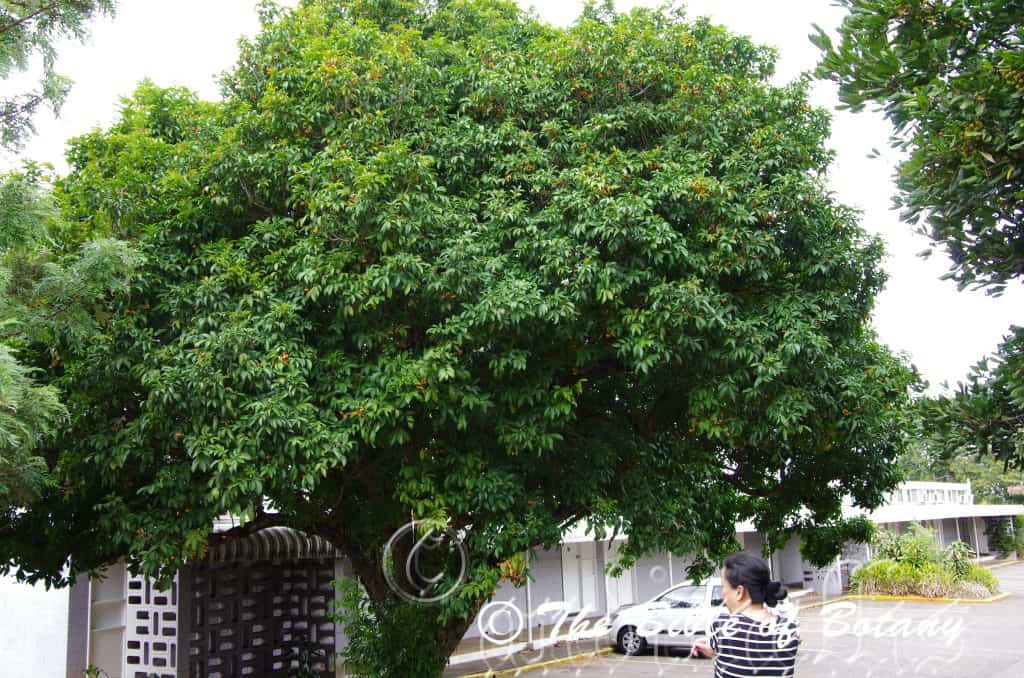
Sunnybank Qld.
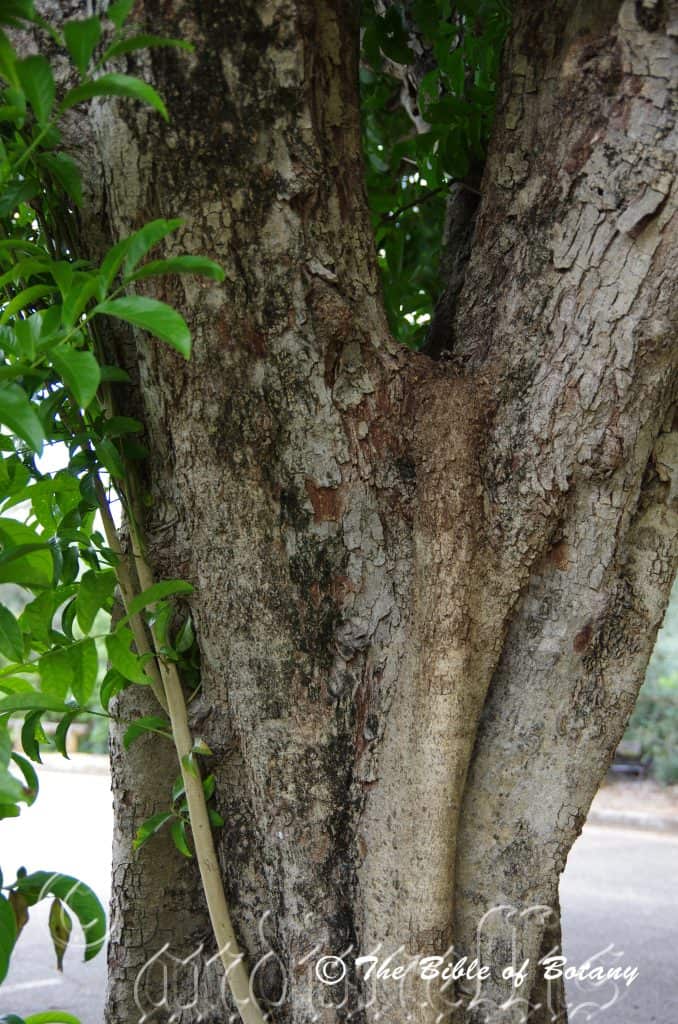
Sunnybank Qld.
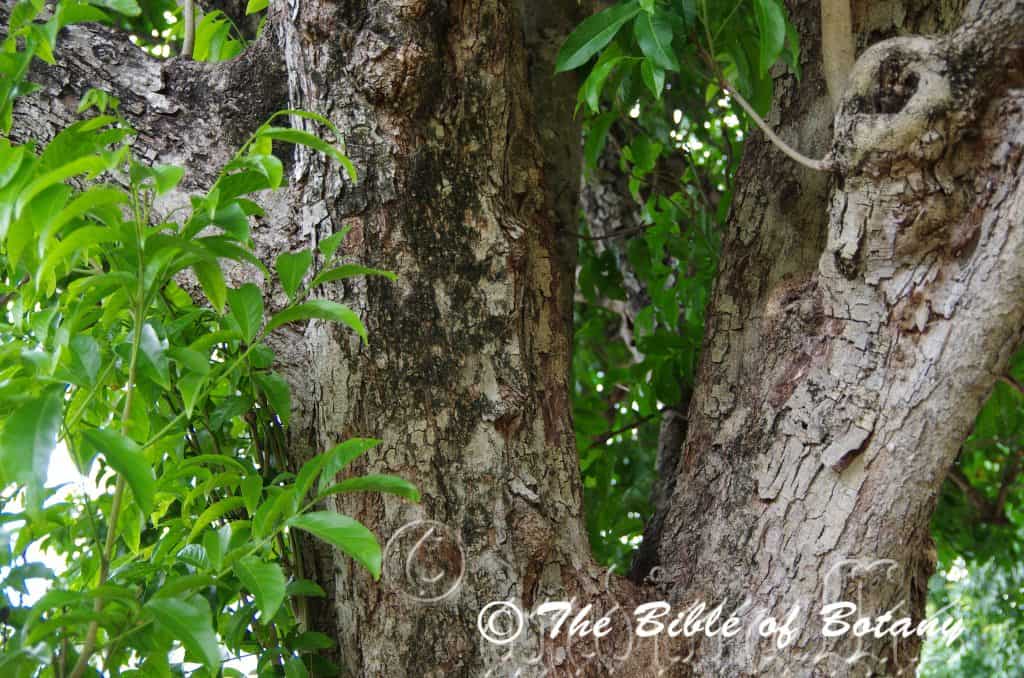
Sunnybank Qld.
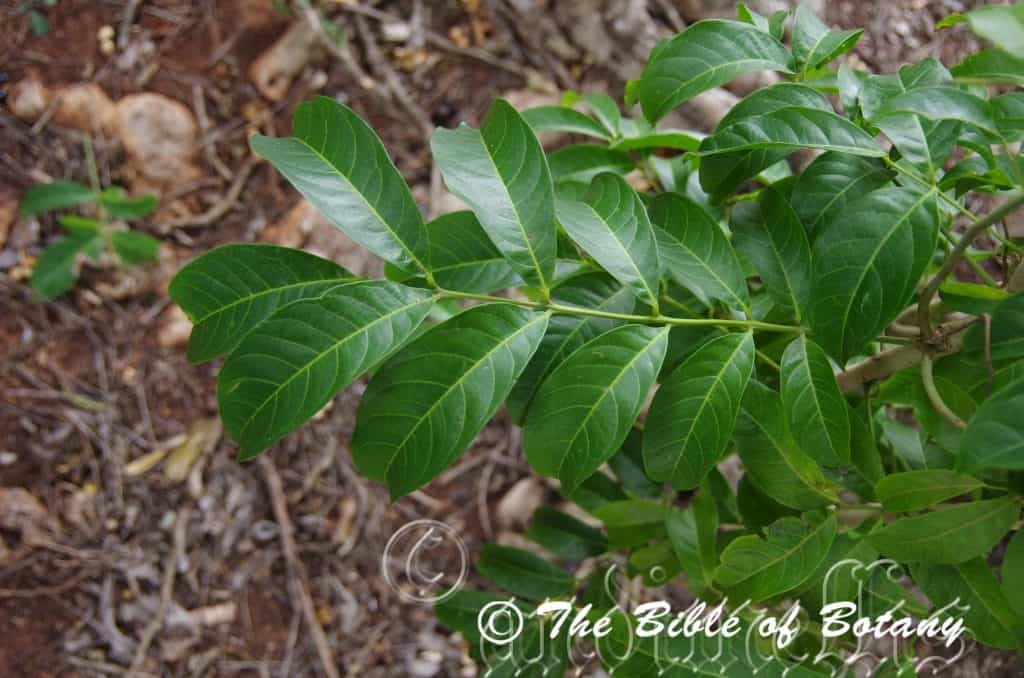
Sunnybank Qld.
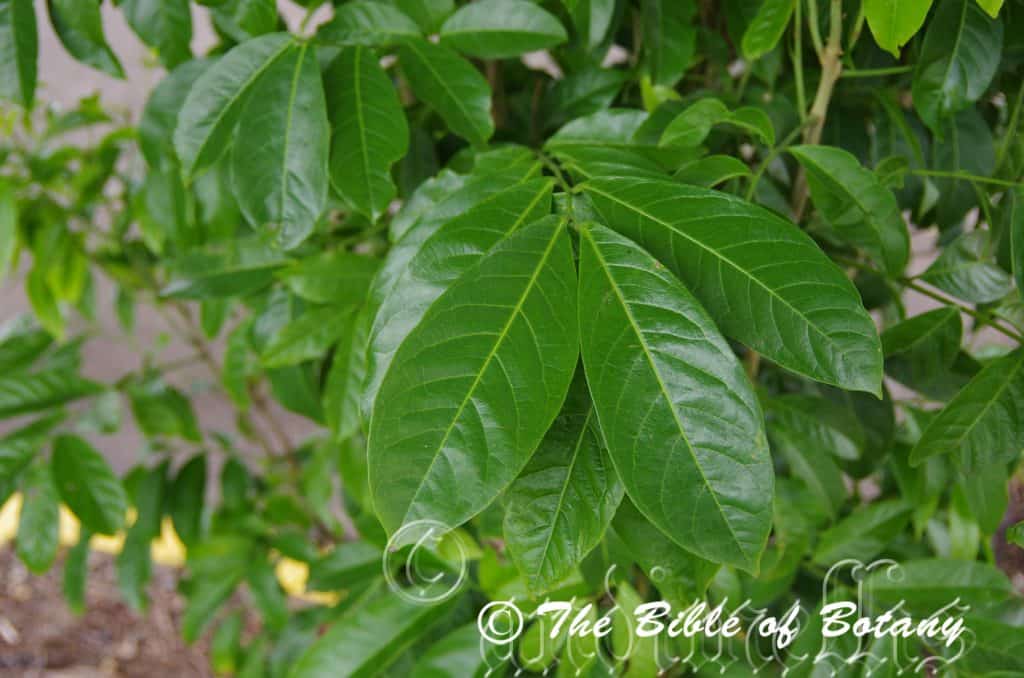
Sunnybank Qld.
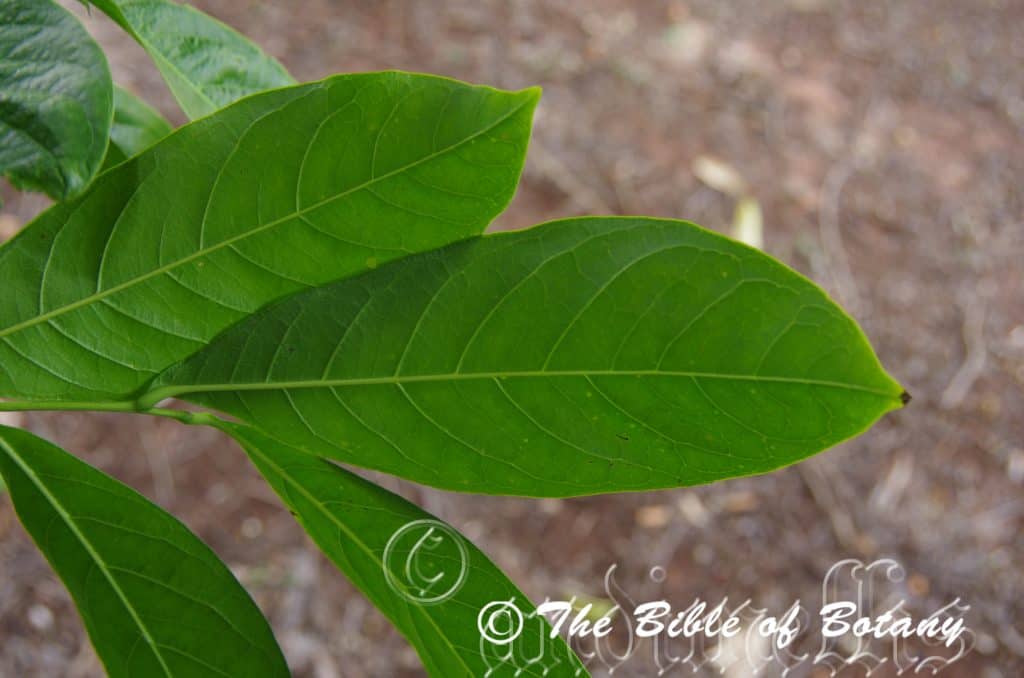
Sunnybank Qld.
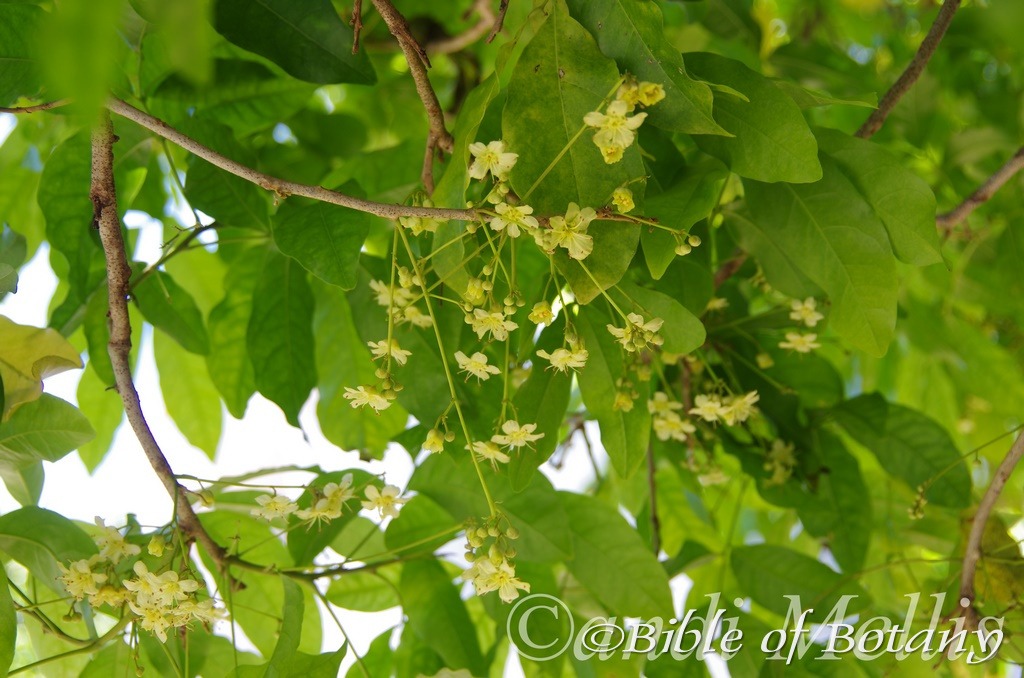
Grafton NSW
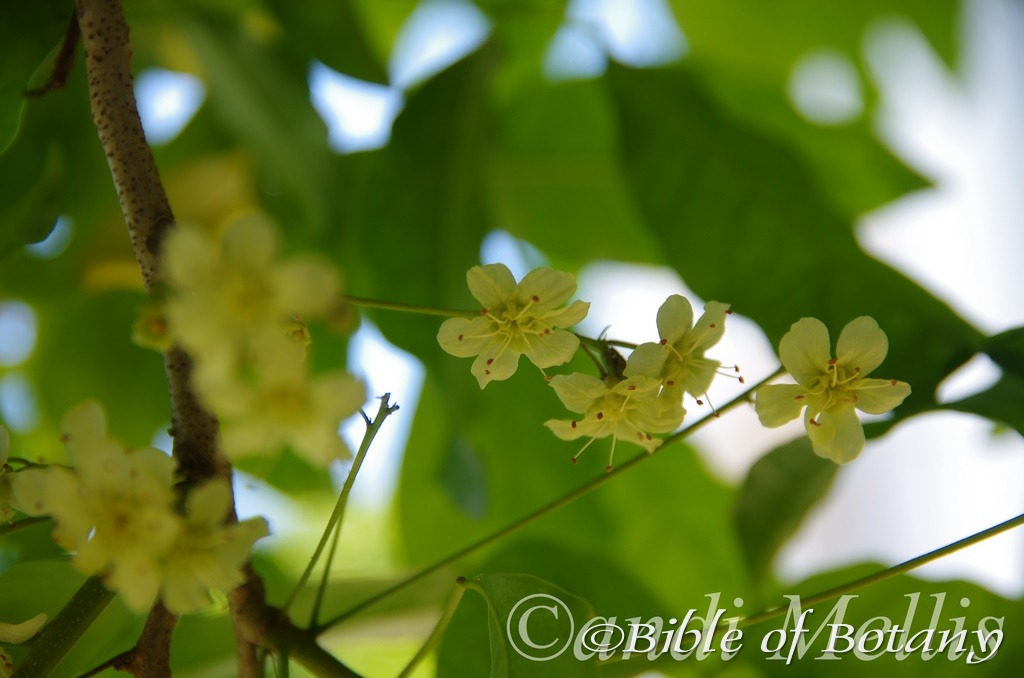
Grafton NSW

Grafton NSW
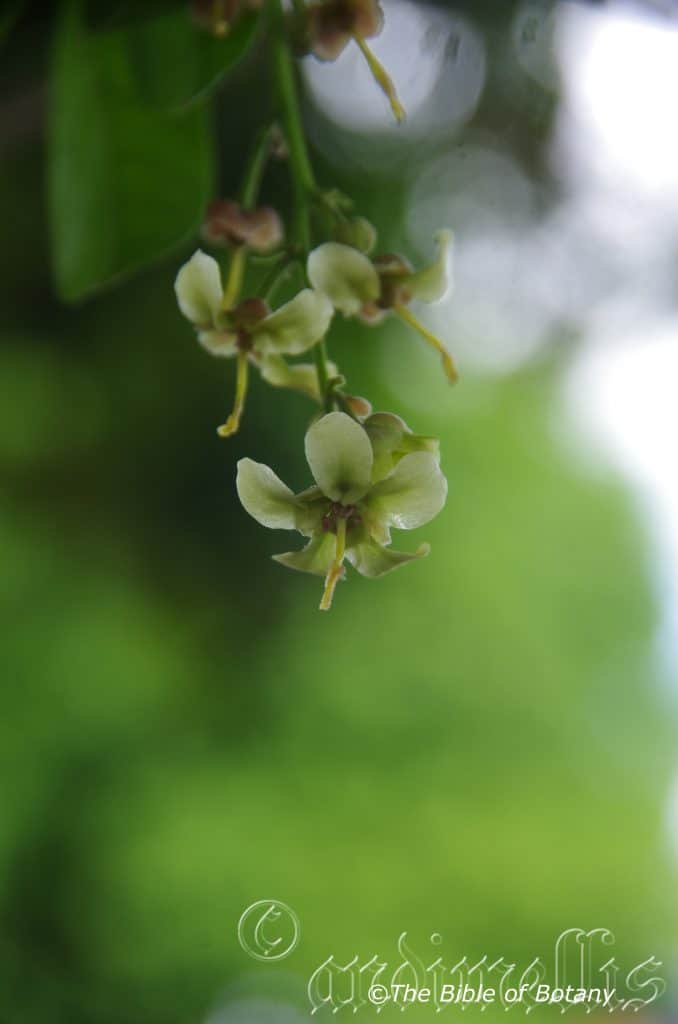
Grafton NSW
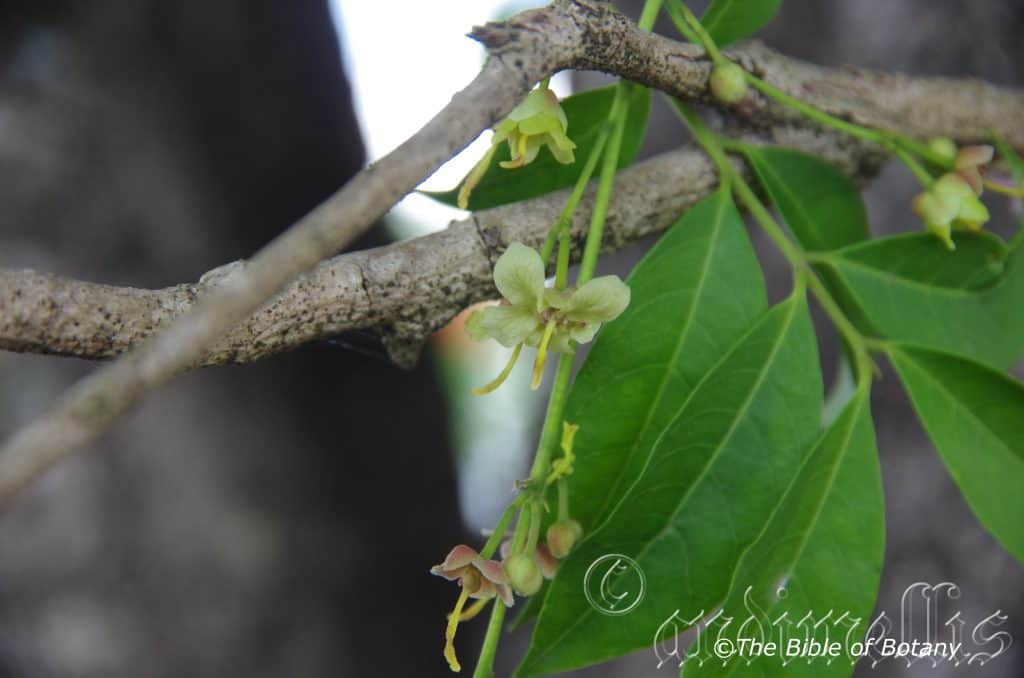
Grafton NSW
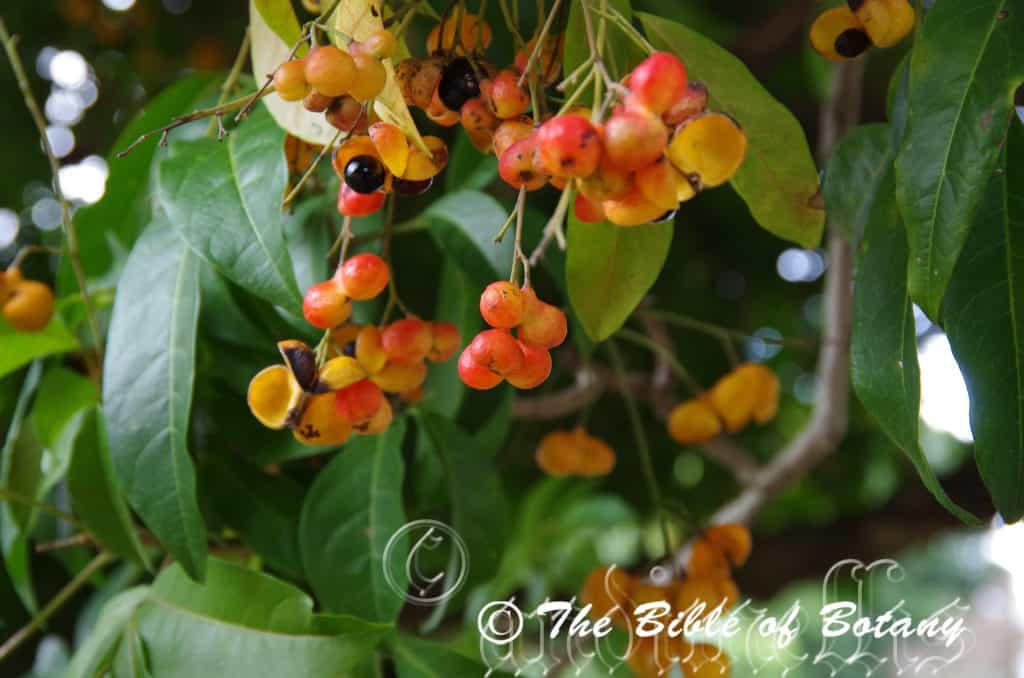
Sunnybank Qld.
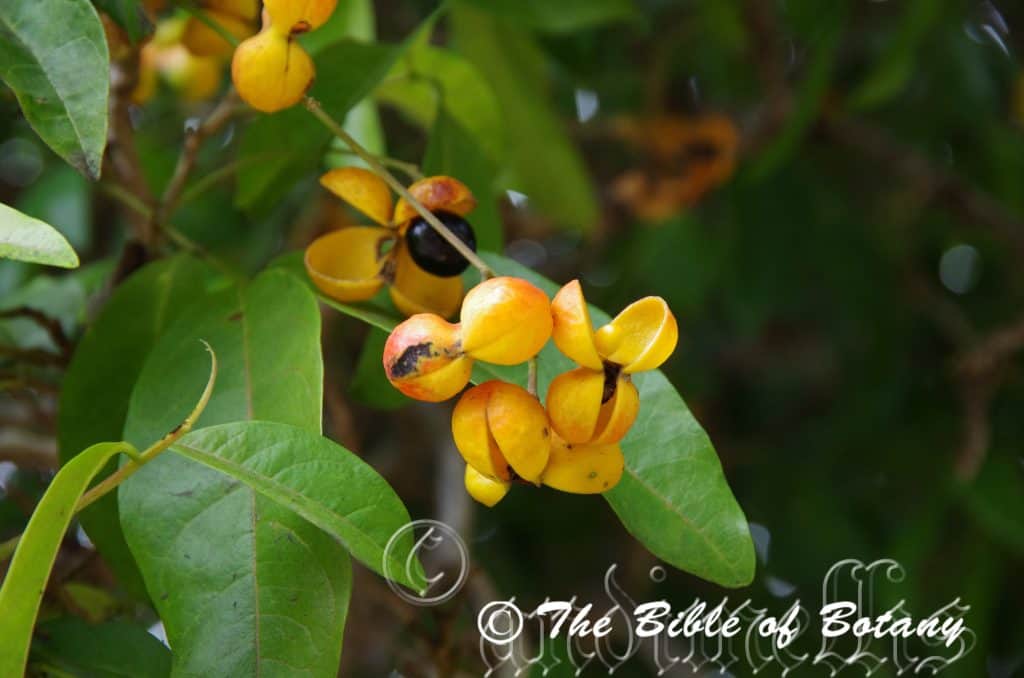
Sunnybank Qld.
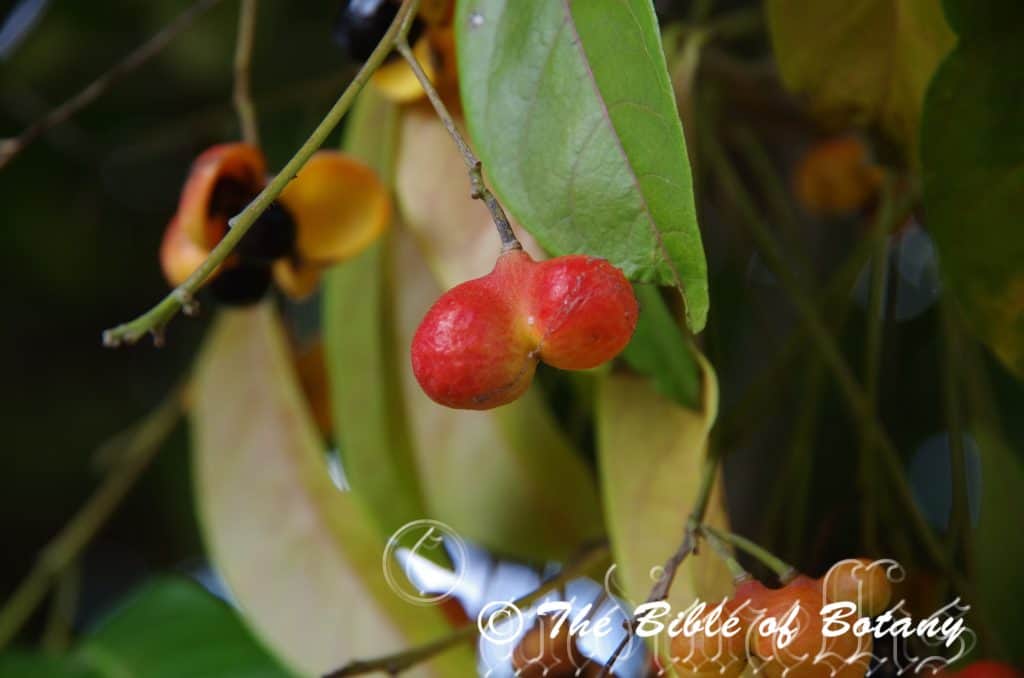
Sunnybank Qld.
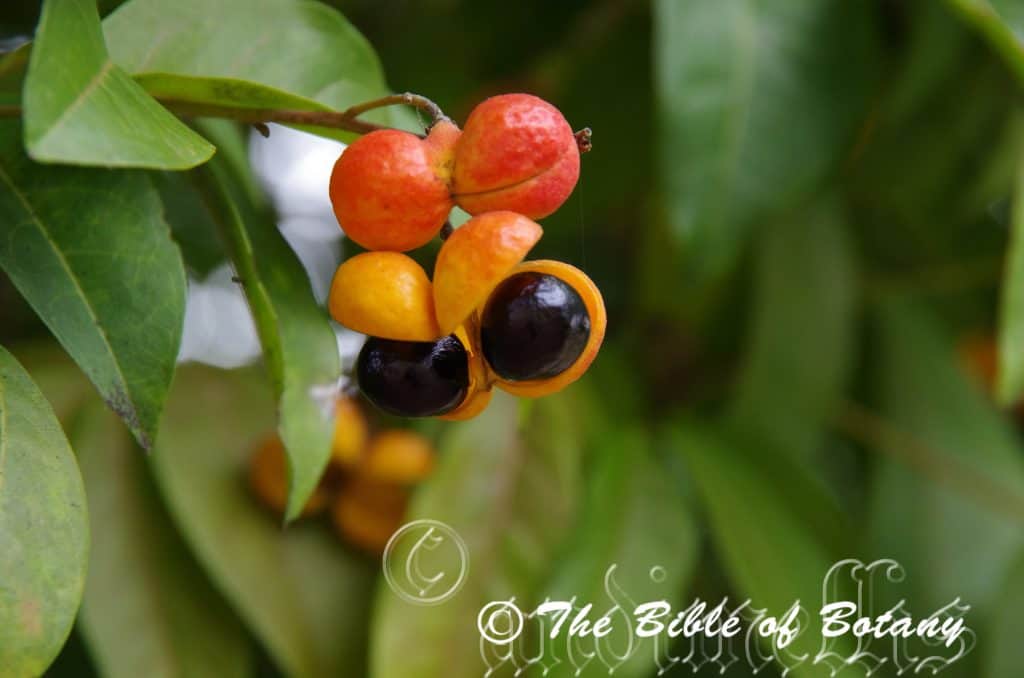
Sunnybank Qld.
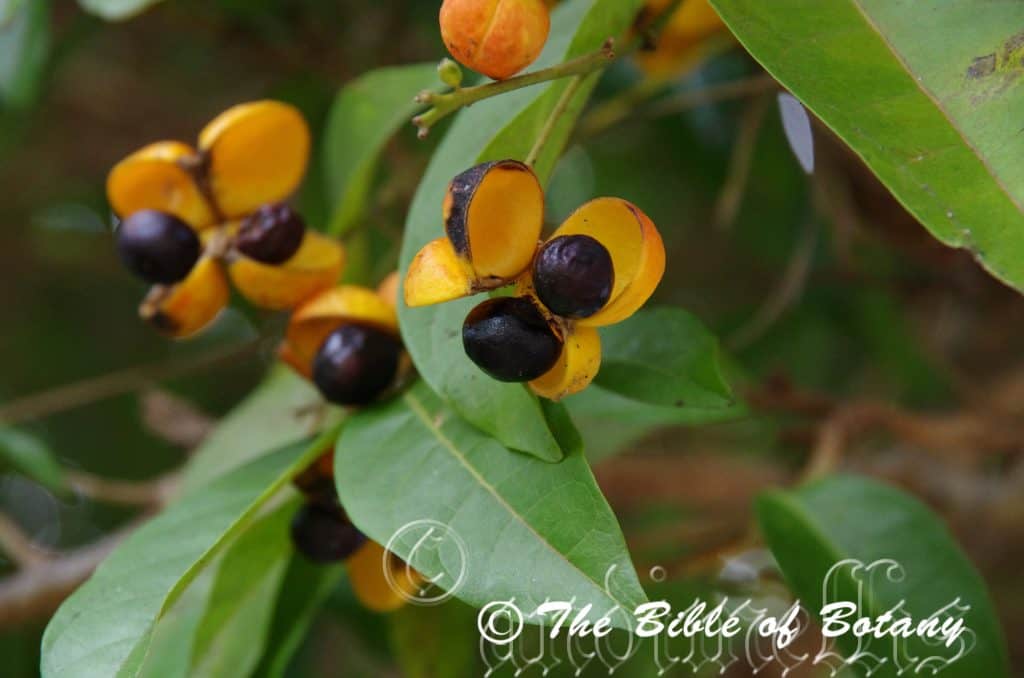
Sunnybank Qld.
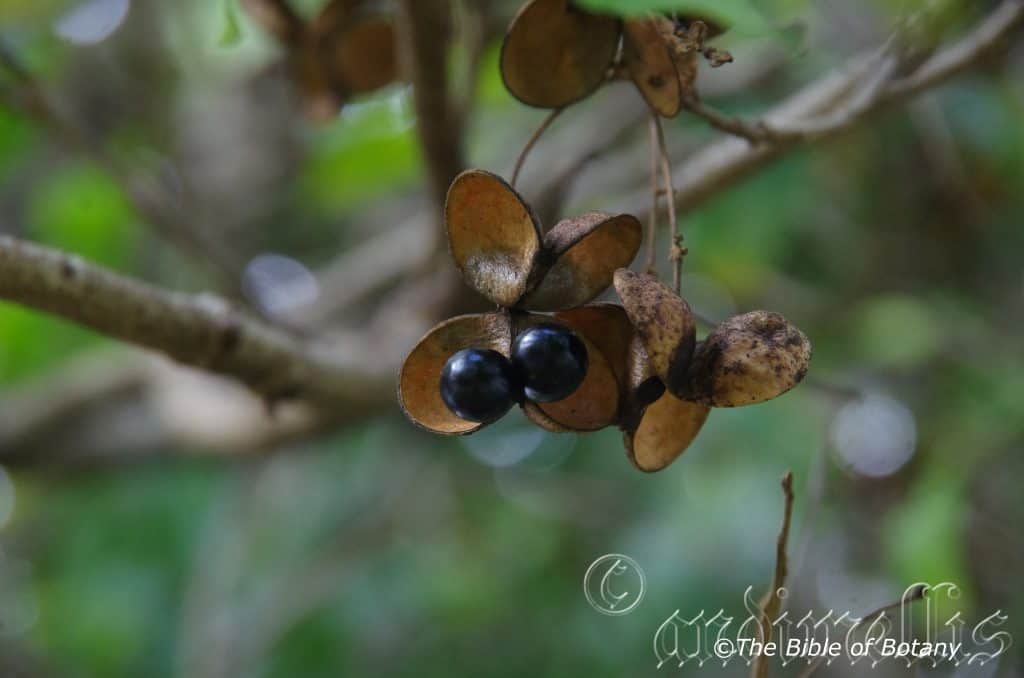
Grafton NSW
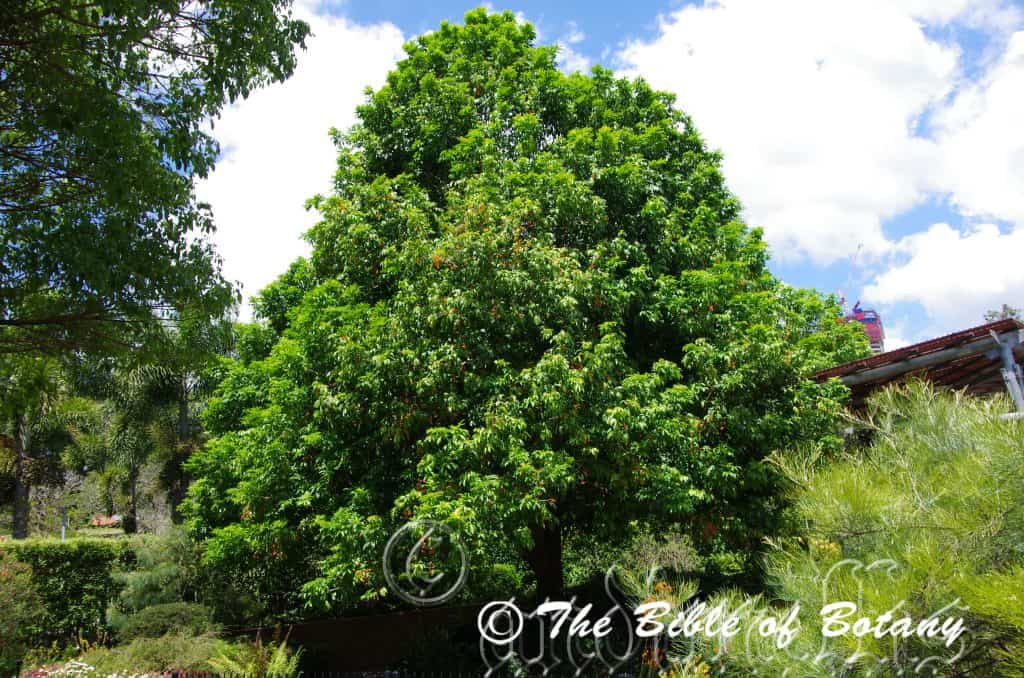
Roma Street Floral gardens Qld.
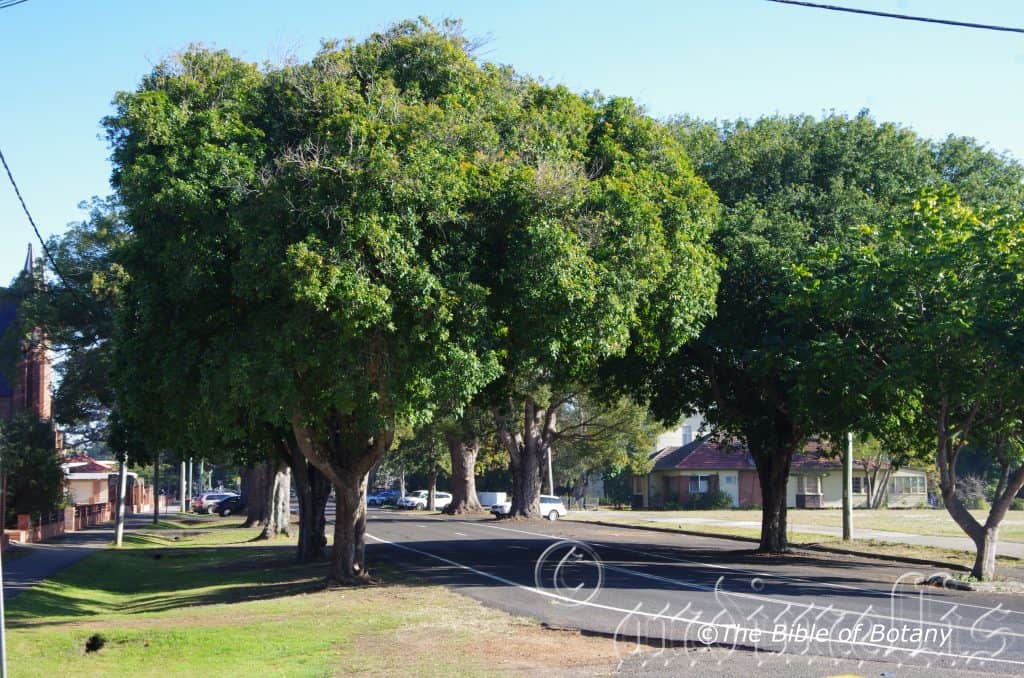
Grafton NSW
Harpullia pendula
Classification
Unranked: Eudicots
Unranked: Rosids
Family: Sapindaceae
Genus: From Harpuli, which is the vernacular of the Indian word for the tree found around Bengal India and which, was the first species named. The Scottish botanist William Roxburgh formally described the genus in his 1824 in his work “Flora Indica” and Latinised the spelling to Harpullia.
Specie: From Pendens/Pendere, which is Latin for to hang down. It refers to branches or stems, which droop, hang down or weep.
Sub species:
Common Name: Tulip Lancewood or Queensland Tulipwood or Black Tulip or Black Tulipwood or Mogun-mogun or Tulipwood.
Distribution:
Harpullia pendula is found from the Mulgrave River in north east Queensland south to the Bellinger River in New South Wales. It is found on and east of the Great Dividing Range to the coast.
https://avh.ala.org.au/occurrences/search?taxa=Harpullia+pendula#tab_mapView
Habitat Aspect Climate:
Harpullia pendula prefers full sun to medium shade. It grows adjacent to well-developed moist subtropical rainforests or dry rain forests on alluvial flats or slopes. This is a small tree which has a dense crown. The altitude ranges from 15 meters ASL to 860 meters ASL.
The temperatures range from 4 degree in July to 38 degrees in January.
The rainfalls range from lows of 850mm to an average of 2600mm annually.
Soil Requirements:
Harpullia pendula prefers better quality, deep fertile loams to medium gravelly clays or medium clays. The soils are usually derived from decomposed shale, brown basalt, black basalts, metamorphic rocks, granites, or alluvial deposits. The soils pH varies from 5.5pH to 7pH. It tolerates seasonal wet soils and seasonal inundations for short periods. Non saline soils to the upper end of moderately saline soils are tolerated as are salt laden winds.
Height & Spread:
Wild Plants: 8m to 12m by 8m to 9m. This is a small tree which has a dense crown.
Characteristics:
Harpullia pendula’s grows as a small tree with a dense crown and glabrous trunk is fluted on older trees. The scabrous bark is grey with paler horizontal grey markings. Branchlets are pale grey only turning green in the leaf zone. The green stems are covered in fawn to rusty-brown pulverulent hairs.
Harpullia pendula’s alternate asymmetrical pinnate leaves measure 100mm to 300mm in length by 80mm to 250mm in width. The 4 to 8 leaflets are elliptical to oblong-ovate and measure 50mm to 120mm in length by 20mm to 50mm in width. The mid green petioles and petiolules are glabrous. The petioles measure 20mm to 50mm in length while the petiolules measure 3mm to 6mm in length. The bases are usually narrow rounded to cuneate and are symmetrical or slightly oblique while the apexes are acuminate. The concolourous laminas are pale grass-green to pale olive green, glabrous and semi glossy. The margins are entire, curve slightly upwards from the mid vein and are decurve at the apex. It is slightly undulating. The midvein veins are prominent on the lower lamina and distinctly visible from above being paler in colour as are the lateral veins.
The inflorescence of Harpullia pendula is a panicle which is born terminally or from the leaf axis. The rachis measures 100mm to 200mm in length. The pedicels measure 5mm to 10mm in length. The 5 non persistent sepals are oval and measure 2mm to 2.5mm in length while the 5 creamy yellow or creamy green petals measure 6mm to 8mm in length by 5mm to 7mm in width. Flowers appear from late September to late December.
Harpullia pendula’s fruit is an inflated twin ovoid capsule. The capsules are lime-green turning yellow, orange or red and are variable when ripe. The capsules ripen from early July to late October. The thin coriaceous capsules measure 12mm to 15mm in length by 20mm to 30mm in width. The green seeds are surrounded by a black glossy papery shell. The round seeds measure 10mm to 14mm in diameter and do not contain an aril.
Wildlife:
This is the host tree for the Cornelian butterfly genus whose larvae eat the seeds leaving empty capsules. The King Parrot is also a frequent visitor to the trees to eat the green seeds.
Cultivation:
Harpullia pendula is a beautiful small tree which is suitable for small gardens to the largest garden. It is an excellent shade tree with a dense canopy for warm temperate, sub-tropical or semi-arid zones. As garden subjects they will grow from 6 meters to 8 meters in height by 6 meters to 8 meters in diameter when cultivated in the open. It is fast growing, drought tolerant once established and are cold tolerant to temperatures as low as minus 5 degrees with some protection in the early years. Cold winters will slow growth down considerably even if the spring and summer temperatures warm quickly.
It is most suitable for use around sunny courtyards, besides pathways, or along drive ways, screens, wind breaks or shelter belts for small native animals. They make an excellent street and park tree. They have a smaller root system that is not strongly invasive.
Apart from being excellent shade trees it is exceptionally good for planting near foundations, sewer lines and other community services, both underground and above ground. Most Councils throughout Australia accept this tree for street tree planting because of its restricted height in cultivation, ensures that it does not interfere with power lines. The trees leaves do not inter fear with underground drainage systems and its fruits provide substances for butterfly larvae and the King Parrot in semi-rural areas. It is an outstanding tree near BBQ areas and for shading hot walls on buildings. It can be used in formal gardens and park scenes or used to start a rainforest garden.
The trunk and branches on established trees are suitable for epiphytic ferns, orchids and lichens.
I have seen Harpullia pendula used in bonsai where they have been 1 meter high and with a trunk measuring over 150mm.
Propagation:
Seeds: Harpullia pendula seeds can be sown directly into a deep seed raising mix. Cover them with 5mm to 8mm of fine sand and keep moist not wet. Place the tray in a warm sunny position or beneath 30mm shade cloth. When the seedlings are 25mm to 50mm tall, prick them out and plant them into 50mm native tubes using a good organic mix.
Once the seedlings reach 150mm to 200mm in height or their roots break through the bottom they can be planted out into their permanent position. For mass planting in avenues plant them at 6 meter to 8 meter centers.
If the seeds are not to be used immediately they should be stored in a vegetable crisper in the refrigerator and even then stored seeds lose their viability very quickly.
Fertilize using seaweed, fish emulsion or organic chicken pellets soaked in water on an alternate basis. Fertilize every two months until the plants are established then twice annually in early September or March to maintain health, vitality and better flowering.
Further Comments from Readers:
Hi reader, it seems you use The Bible of Botany a lot. That’s great as we have great pleasure in bringing it to you! It’s a little awkward for us to ask, but our first aim is to purchase land approximately 1,600 hectares to link several parcels of N.P. into one at The Pinnacles NSW Australia, but we need your help. We’re not salespeople. We’re amateur botanists who have dedicated over 30 years to saving the environment in a practical way. We depend on donations to reach our goal. If you donate just $5, the price of your coffee this Sunday, We can help to keep the planet alive in a real way and continue to bring you regular updates and features on Australian plants all in one Botanical Bible. Any support is greatly appreciated. Thank you.
In the spirit of reconciliation we acknowledge the Bundjalung, Gumbaynggirr and Yaegl and all aboriginal nations throughout Australia and their connections to land, sea and community. We pay our respect to their Elders past, present and future for the pleasures we have gained.
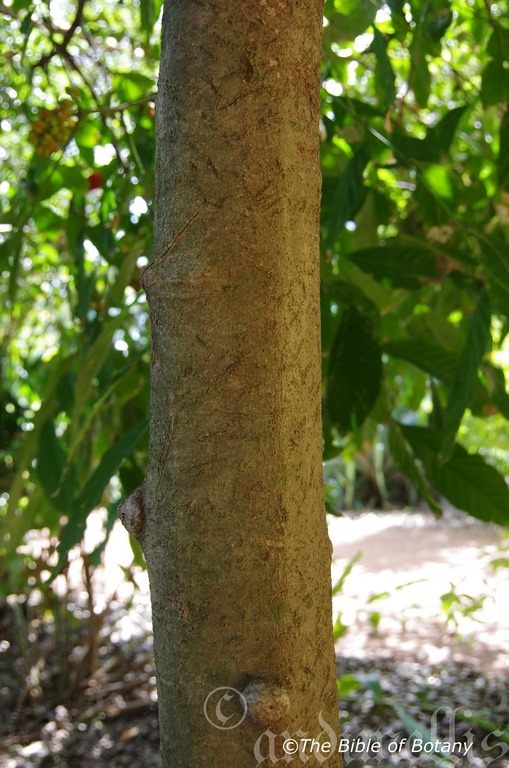
Townsville Qld.
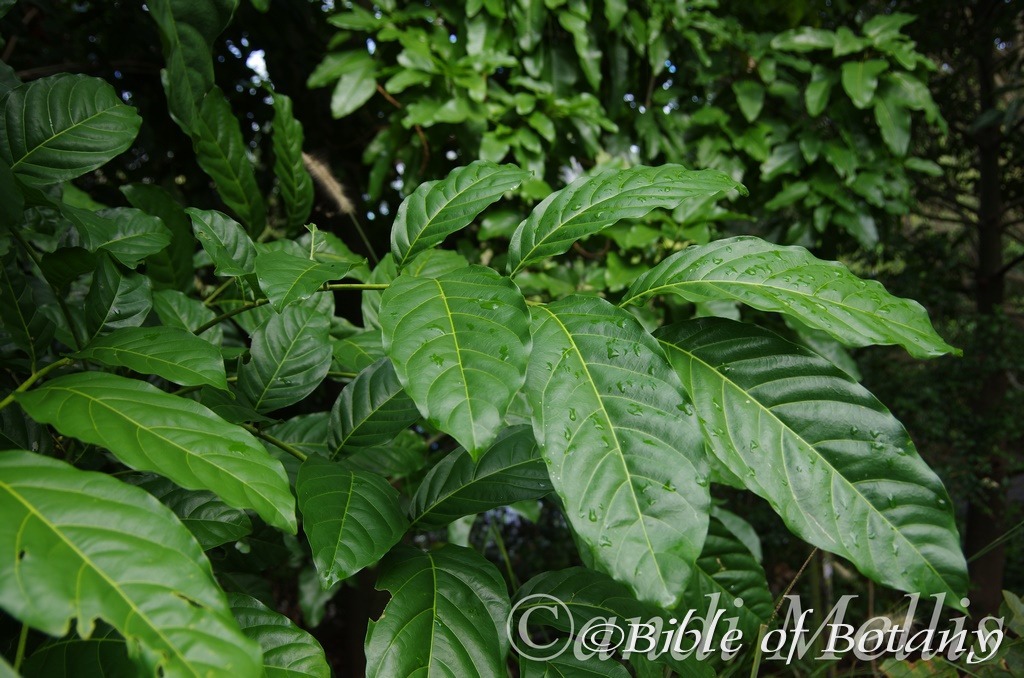
Townsville Qld.
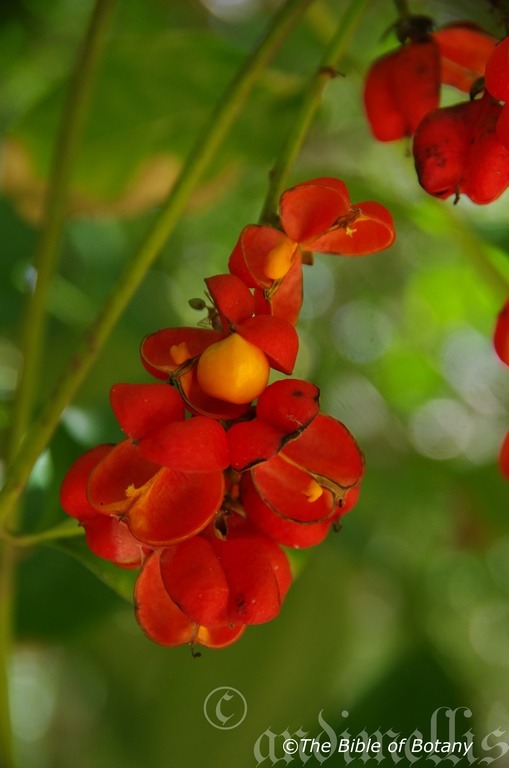
Townsville Qld.
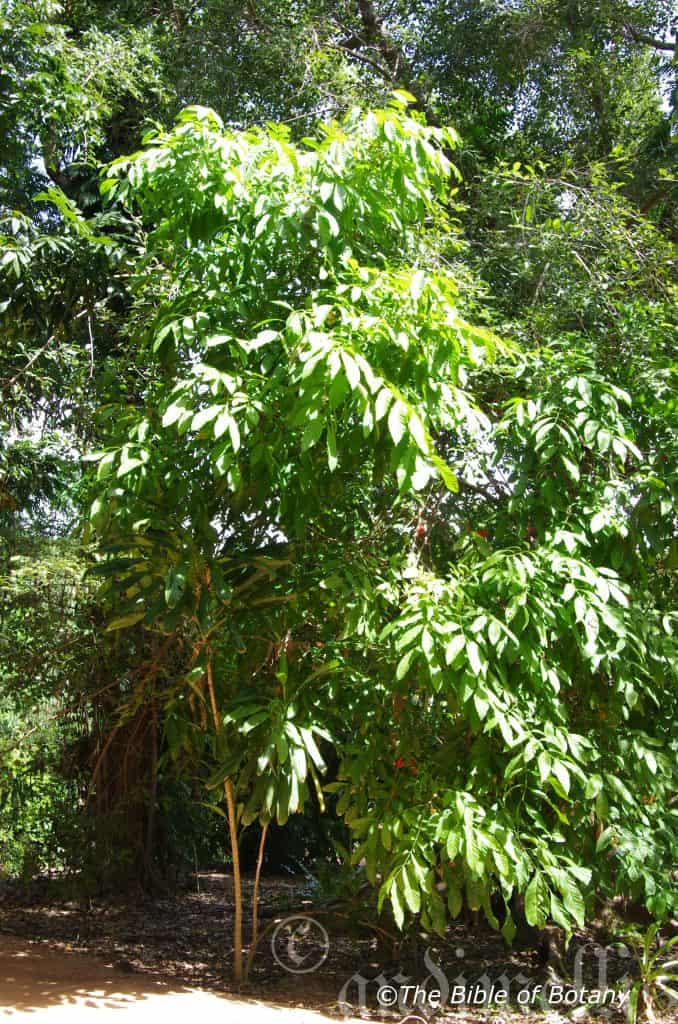
Townsville Qld.
Harpullia ramiflora
Classification
Unranked: Eudicots
Unranked: Rosids
Family: Sapindaceae
Genus: From Harpuli, which is the vernacular of the Indian word for the tree found around Bengal India and which, was the first species named. The Scottish botanist William Roxburgh formally described the genus in his 1824 in his work “Flora Indica” and Latinised the spelling to Harpullia.
Specie: From Rāmī, which is Latin for a branch, bough or limb and Flōris, which is Latin for a flower or Flōs, which is the Roman goddess for spring and flowers. It refers to plants, which produce their flowers below the leaves on the branches, boughs or limbs.
Sub species:
Common Name: Northern Tulipwood.
Distribution:
Harpullia ramiflora is found from the tip of Cape York peninsular south to Malanda in far north east Queensland.
It is also found in West Papua. Papua and New Guinee.
https://avh.ala.org.au/occurrences/search?taxa=Harpullia+ramiflora#tab_mapView
Habitat Aspect Climate:
Harpullia ramiflora prefers full sun to medium shade. It grows in well-developed moist, lowland tropical rainforests or moist Eucalyptus forests and the transitional zones on alluvial flats or gentle slopes. This is a small tree which has a dense crown. The altitude ranges from 5 meters ASL to 120 meters ASL.
The temperatures range from 6 degree in July to 38 degrees in January.
The rainfalls range from lows of 1600mm to an average of 3200mm annually.
Soil Requirements:
Harpullia ramiflora prefers better quality, deep fertile loams to medium gravelly clays or medium clays. The soils are usually derived from decomposed shale, brown basalt, black basalts, metamorphic rocks, granites, or alluvial deposits. The soils pH varies from 5.5pH to 7pH. It tolerates seasonal wet soils and seasonal inundations for short periods. Non saline soils to the upper end of moderately saline soils are tolerated as are salt laden winds.
Height & Spread:
Wild Plants: 8m to 12m by 8m to 9m. This is a small tree which has a dense crown.
Characteristics:
Harpullia ramiflora grows as a small tree with a dense crown. The trunk and branches are covered in lenticels that somewhat form horizontal lines. The green stems are terete and glabrous.
The large, 8 to 10 sub opposite, oblong/elliptical leaflets measure 65mm to 400mm in length by 25mm by 85mm in width. The compound leaf rhachis is somewhat terete, with a prominent groove on the upper surface, while the petioles are enlarged between the stem and lamina and measure 5mm to 20mm in length. The leaflets become larger towards the apex. The discolourous leaflets are mid green to deep green and glabrous on the upper lamina, while the lower lamina is paler. The bases are cuneate, while the apexes are obtuse to acute. The mid vein is prominent on the lower lamina, sucken on the upper lamina, while the lateral veins are set at 55 to 65 degrees and terminate on the margin after running close to parallel to it for a short distance.
The flowers appear as racemes from the branches and limbs. The 5 obtuse, green calyxes are moderately covered in short stellate hairs. The 5 white, obtuse, glabrous petals measure 9.5mm to 13mm in length are positioned with 2 on one side and 3 on the opposite side. The 5pale greenish-white, stamens are inserted in the corolla tube from the pubescent disc. The 2 stigmatic surfaces are linear, running down most of the length of the style.
The 2 lobed, fruiting capsules measure 12mm to 18mm in length. The persistent calyxes are sparsely covered in short, off white stellate hairs. The deep yellow aril almost completely enclosing the black covering of the green seeds.
Wildlife:
Harpullia ramiflora is the host tree for the Cornelian butterfly genus whose larvae eat the seeds leaving empty capsules.
Cultivation:
Harpullia ramiflora is a beautiful small tree which is suitable for small gardens to the largest garden. It is an excellent shade tree with a dense canopy for warm temperate, sub-tropical or semi-arid zones. As garden subjects they will grow from 6 meters to 8 meters in height by 6 meters to 8 meters in diameter when cultivated in the open. It is fast growing, drought tolerant once established and are cold tolerant to temperatures as low as minus 5 degrees with some protection in the early years. Cold winters will slow growth down considerably even if the spring and summer temperatures warm quickly.
It is most suitable for use around sunny courtyards, besides pathways, or along drive ways, screens, wind breaks or shelter belts for small native animals. They make an excellent street and park tree. They have a smaller root system that is not strongly invasive.
Apart from being excellent shade trees it is exceptionally good for planting near foundations, sewer lines and other community services, both underground and above ground. Most Councils throughout Australia accept this tree for street tree planting because of its restricted height in cultivation, ensures that it does not interfere with power lines. The trees leaves do not inter fear with underground drainage systems and its fruits provide substances for butterfly larvae and the King Parrot in semi-rural areas. It is an outstanding tree near BBQ areas and for shading hot walls on buildings. It can be used in formal gardens and park scenes or used to start a rainforest garden.
The trunk and branches on established trees are suitable for epiphytic ferns, orchids and lichens.
It is becoming widely naturalised in and adjacent to rainforests around Cairns, often dominating other natural forest species.
Propagation:
Seeds: Harpullia ramiflora seeds can be sown directly into a deep seed raising mix. Cover them with 5mm to 8mm of fine sand and keep moist not wet. Place the tray in a warm sunny position or beneath 30mm shade cloth. When the seedlings are 25mm to 50mm tall, prick them out and plant them into 50mm native tubes using a good organic mix.
Once the seedlings reach 150mm to 200mm in height or their roots break through the bottom they can be planted out into their permanent position. For mass planting in avenues plant them at 6 meter to 8 meter centers.
If the seeds are not to be used immediately they should be stored in a vegetable crisper in the refrigerator and even then stored seeds lose their viability very quickly.
Fertilize using seaweed, fish emulsion or organic chicken pellets soaked in water on an alternate basis. Fertilize every two months until the plants are established then twice annually in early September or March to maintain health, vitality and better flowering.
Further Comments from Readers:
Hi reader, it seems you use The Bible of Botany a lot. That’s great as we have great pleasure in bringing it to you! It’s a little awkward for us to ask, but our first aim is to purchase land approximately 1,600 hectares to link several parcels of N.P. into one at The Pinnacles NSW Australia, but we need your help. We’re not salespeople. We’re amateur botanists who have dedicated over 30 years to saving the environment in a practical way. We depend on donations to reach our goal. If you donate just $5, the price of your coffee this Sunday, We can help to keep the planet alive in a real way and continue to bring you regular updates and features on Australian plants all in one Botanical Bible. Any support is greatly appreciated. Thank you.
In the spirit of reconciliation we acknowledge the Bundjalung, Gumbaynggirr and Yaegl and all aboriginal nations throughout Australia and their connections to land, sea and community. We pay our respect to their Elders past, present and future for the pleasures we have gained.
Hedycarya angustifolia
Classification
Unranked: Equisetopsida
Superorder: Magnolids
Order: Laurales
Family: Monimiaceae
Genus: From Hedys, which is Latin for sweet snow and Karya, which is Ancient Greek for a walnut. It refers to fruits, which look somewhat similar to small walnuts.
Specie: From Angusta, which is Latin for narrow and Folium, which is Latin for foliage. It usually refers to leaves, which are narrower than other species in the genus.
Sub species:
Common Name: Native Mulberry.
In the Aboriginal language it is known as djelwuck.
Distribution:
Hedycarya angustifolia is found south from the Conondale Range in southern coastal Queensland to Warrnambool in central southern Victoria. There is an isolated population on the Johnson River near Innisfail. It is found on and east of the Great Dividing Range to the coast.
It is also found in Bass Strait on King Island.
https://avh.ala.org.au/occurrences/search?taxa=Hedycarya+angustifolia#tab_mapView
Habitat Aspect Climate:
Hedycarya angustifolia prefers medium shade to full sun. It grows on the margins of rainforest and where there are breaks in the canopy along creeks and streams. It is more common in moist mountain gullies in warm temperate rainforest, cool subtropical rainforests and gallery forests. The altitude ranges from 15 meters ASL to 1200 meters ASL.
The temperatures range from minus 6 degree in July to 38 degrees in January.
The rainfalls range from lows of 850mm to an average of 2600mm annually.
Soil Requirements:
Hedycarya angustifolia prefers better quality, deep fertile loams to medium clays. The soils are usually derived from decomposed brown basalt, black basalt, metamorphic rocks or granites. The soils pH varies from 5pH through to a 7pH. It does not tolerate waterlogged soils. Non saline soils to moderately saline soils are tolerated.
Height & Spread:
Wild Plants: 4m to 20m by 5m to 8m.
Characteristics:
It is a small tree which has a dense crown. The trunk is usually crooked with several stems suckering from near the base. The bark is thin pale grey to mid grey-brown with fawn markings and glabrous. The branchlets are pale grey only turning deep grass-green in the leaf zone while the juvenile stems are often reddish. The juvenile and new growth is sparsely covered in white, caduceus, puberulent hairs.
The alternate, ovate, and lanceolate or narrow oblong-ovate leaves measure 50mm to 160mm in length by 15mm to 55mm in width. The bases are rounded to cuneate while the apexes are acuminate to acute. The discolourous laminas are grass-green to deep grass-green, glabrous and semi glossy on the upper lamina while the lower laminas are paler. The laminas decurve slightly from the mid vein to the margins and decurve close to the apexes while the margins are usually toothed with each tooth ending in a small pungent spine. The laminas are slightly undulating. The mid vein and lateral veins are prominent on both laminas but is more prominent on the lower lamina and distinctly visible from above being paler in colour as are the lateral veins. The glabrous petioles measure 15mm to 40mm in length.
The inflorescences are short cymes born from the leaf axis.
The male cymes have 5 to 16 individual flowers. The peduncle and pedicel are covered in white pulverulent hairs and are mid green. The peduncles measures 15mm to 20mm in length while the pedicels measure 4mm to 8mm in length. The flowers are flattened cupuliform in shape and measure 5mm to 7mm in diameter with 8 tepals. The 50 filiform stamens are minute and are connected on a short elongated appendage.
The female cymes have 2 to 4 individual flowers. The peduncle and pedicel are covered in white pulverulent hairs and are mid green. The peduncles measures 15mm to 20mm in length while the pedicels measure 8mm to 10mm in length. The flowers are flattened cupuliform in shape and measure 15mm to 7mm in length by 6mm to 8mm in diameter with 12 tepals.
There are 40 to 50 carpels in the columnar ovaries. The ovaries are covered in short, white puberulent hairs. The short stigma is narrow conical. The flowers appear from late August to late December.
The fruits are globose drupes packed closely together to appear like an aggregate with 10 to 20 carpels maturing. The drupes are lime-green and turn yellow to yellow-orange when ripe. The individual drupes measure 3mm to 4mm in length by 3mm to 3.5mm in width. The deep chocolate-brown to black seeds are minute.
Wildlife:
Hedycarya angustifolia is the host tree for the Cornelian butterfly genus whose larvae eat the seeds leaving empty capsules. The King Parrot is also a frequent visitor to the trees to eat the green seeds.
Cultivation:
Hedycarya angustifolia is a beautiful small tree which is suitable for small gardens to the largest garden. It is an excellent shade tree with a dense canopy for warm temperate, sub-tropical or semi-arid zones. As garden subjects they will grow from 6 meters to 8 meters in height by 6 meters to 8 meters in diameter when cultivated in the open. It is rather fast growing, drought tolerant once established and are cold tolerant to temperatures as low as minus 5 degrees with some protection in the early years. Cold winters will slow growth down considerably even if the spring and summer temperatures warm quickly.
It is most suitable for use around sunny courtyards, besides pathways, and have reasonable potential for light screens and wildlife corridors on larger properties and wind breaks. It has a small non-invasive root system.
Apart from being reasonably good shade trees in small gardens it is exceptionally good for planting near foundations, sewer lines and other community services, both underground and above ground. Most Councils throughout Australia accept this tree for street tree planting because of its restricted height in cultivation, ensures that it does not interfere with power lines though it can become a little straggly and wide spreading. It is an outstanding tree near BBQ areas and for shading hot walls on buildings. They can be used in formal gardens and park scenes or used to start a rainforest garden.
The trunk and branches on established trees are suitable for epiphytic ferns, orchids and lichens.
Hedycarya angustifolia could be used as a bonsai specimen as it can naturally form a distorted gnarled trunk and the branches can be easily worked.
Propagation:
Seeds: Seeds can be sown directly into a seed raising mix. Cover them with 5mm of fine sand and keep moist not wet. Place the tray in a warm sunny position. When the seedlings are 25mm to 50mm tall, prick them out and plant them into 50mm native tubes using a good organic mix.
Once the seedlings reach 150mm to 200mm in height or their roots break through the bottom they can be planted out into their permanent position.
If the seeds are not to be used immediately they should be stored in a vegetable crisper in the refrigerator and even then stored seeds lose their viability very quickly.
Cuttings: Use 100mm to 200mm long half ripened material when growing from cuttings from the previous season’s growth. Take them in mid-autumn in war locations and mid spring where the winters are severe. Remove half the leaves from the bottom section being careful not to tear the bark. Take a 10mm slice off the bark from the bottom of the cutting on one side. Using a weak rooting hormone, dip the cutting in and place it in a moist sterile seed raising mix. Place the trees beneath 30mm shade cloth, keep moist not wet and keep them at 20 degrees to 24 degrees centigrade. Most cuttings strike easily and form a good root system fairly quickly.
When the cuttings have obviously struck and have developed good roots treat them as for seedlings.
Fertilize using seaweed, fish emulsion or organic chicken pellets soaked in water on an alternate basis. Fertilize every two months until the plants are established then twice annually in early September or March to maintain health, vitality and better flowering.
Further Comments from Readers:
Hi reader, it seems you use The Bible of Botany a lot. That’s great as we have great pleasure in bringing it to you! It’s a little awkward for us to ask, but our first aim is to purchase land approximately 1,600 hectares to link several parcels of N.P. into one at The Pinnacles NSW Australia, but we need your help. We’re not salespeople. We’re amateur botanists who have dedicated over 30 years to saving the environment in a practical way. We depend on donations to reach our goal. If you donate just $5, the price of your coffee this Sunday, We can help to keep the planet alive in a real way and continue to bring you regular updates and features on Australian plants all in one Botanical Bible. Any support is greatly appreciated. Thank you.
In the spirit of reconciliation we acknowledge the Bundjalung, Gumbaynggirr and Yaegl and all aboriginal nations throughout Australia and their connections to land, sea and community. We pay our respect to their Elders past, present and future for the pleasures we have gained.
Helichrysum rutidolepis
Classification
Unranked: Equisetopsida
Superorder: Magnoliids
Order: Laurales
Family: Monimiaceae
Genus: From Hêlios, which is Ancient Greek for the sun and Chrysos, which is Ancient Greek for golden. It refers to flower heads, which are golden-yellow like little suns in the fields.
Specie: From Rutidosus, which is Latin for wrinkly, glowing with red and gold reflections and Lepís, which is Ancient Greek for a scale. It refers to seeds, which have wrinkly, bitter scales.
Sub species:
Common Name: Pale Everlasting.
Distribution:
Helichrysum rutidolepis is found in several disjunct populations south from the Clarence Valley in northern New South Wales to the Warnambool Plain in southern Victoria. There is an isolated population on Mount Bopple near Cobar in central New South Wales.
It is also found from Goyder in the northern Lofty Ranges south to Encounter Bay in southern South Australia.
In Tasmania it is found in Ben Lomond National Park, Smith’s Lagoon, on the saddle of Mount Arrowsmith and near the summit of Mount Wellington.
https://avh.ala.org.au/occurrences/search?taxa=Helichrysum+rutidolepis#tab_mapView
Habitat Aspect Climate:
Helichrysum rutidolepis prefers full sun to light dappled shade. It grows on moist sites in sclerophyll forest and woodlands especially along riparian zones shallow depressions and drainage channels. The altitude ranges from 22 meters ASL to 1270 meters ASL.
The temperatures range from minus 4 degree in July to 40 degrees in January.
The rainfalls range from lows of 500mm to an average of 1600mm annually except for the isolated Mount Bopple population where the rainfall ranges from lows of 200mm to an average of 350mm annually.
Soil Requirements:
Helichrysum rutidolepis prefers deep sandy soils, better quality loams to medium gravelly clays. The soils are usually derived from decomposed sandstones or granites. The soils pH varies from 5pH through to a 6pH. It does not tolerate waterlogged soils however soil moisture retention for long periods is important. Non saline soils to moderately saline soils are tolerated.
Height & Spread:
Wild Plants: 0.15m to 0.4m by 0.2m to 0.5m.
Characteristics:
Helichrysum rutidolepis’s grows as a much branched perennial herb or small sub shrub that has been recorded to live for up to 10 years. The stems are bright grass-green, deep grass-green blue-green to deep grey-green and densely covered in white to off white floccose hairs and sessile glandular hairs. The plants form a tuberous underground root stock which it draws from during drought or regenerates following fires.
The alternate, linear to narrow oblanceolate leaves measure 25mm to 80mm in length by 1.5mm to 8mm in width. The 4 to 8 leaflets are elliptical to oblong-ovate and measure 50mm to 120mm in length by 20mm to 50mm in width. The bases are tapered while the apex is acute. The discolourous laminas are bright grass-green, deep grass-green blue-green to deep grey-green and sparsely to moderately covered in white to off white floccose hairs and sessile glandular hairs on the upper laminas while the lower laminas are slightly paler to much paler and densely covered in white to off white floccose hairs and sessile glandular hairs. The upper laminas are flat to convex from the mid vein to the margins, twisted and decurve slightly close to the apex while the margins are entire to sinuate and undulate. The midvein vein is prominent on the lower lamina and distinctly visible from upper lamina being deeply sunken.
The inflorescence is a solitary head born terminally on a long leafy branch. The leaves reduce in size as they approach the apex. The flowers are broad campanulate and measure 6mm to 10mm in length by 15mm to 20mm in diameter. The intermediate involucral bracts are longer than the outer bracts. The golden yellow intermediate involucral bracts’ laminas are spreading at the time of flowering, are scarious and measure 5mm to 7mm in length. The golden yellow outer bracts are densely covered in white floccose hairs.
The numerous outer florets are female while the male florets are distributed around the center. The flowers appear from January to March or as late as July depending on local conditions.
The fruits are oblong to oblong-fusiform achenes. The achenes are pale brown to fawn and glabrous when ripe. The off white male pappus has bristles fused on the basal section and is barbellate while the apexes are pastel yellow with a few longer barbs. The female pappus is rudimentary or lacking.
Wildlife:
Helichrysum rutidolepis’s wildlife is unknown to the author.
Cultivation:
Helichrysum rutidolepis is a very beautiful small native perennial or sub shrub which is suitable for small gardens to the largest garden. It is an excellent colourful addition for sub-tropical, semi-arid, sub alpine to alpine zones. As garden subjects they will grow from 0.2 meters to 0.5 meters in height by 0.3 meters to 0.6 meters in diameter
It is fast growing, drought tolerant once established and are cold tolerant to temperatures at least as low as minus 6 degrees.
It is most suitable for use around medium fish and frog ponds, sunny courtyards, besides pathways, rockeries and along banks.
If it is are placed around ponds then I would place them towards the center not at the ends and plant 3 to 5 in a straight row for a very formal look or use curves for the natural look. Here the choice of companion plants to use either side is limited only by size of the area to be landscaped. Leaf size or flower colour is limited by your imagination. The only limitation would be not to use other yellow flowering plants.
It is great adjacent to small areas of bush close to paths or the house so their pastel purple, yellow cantered flowers can be viewed regularly. It is also suited for planting in small rockeries as a fill in plant. Here it can be planted in small groups of 3 to 5 or as a standalone plant to create a harsher more barren look with other arid plants. If it is surrounded by shorter plants with fine foliages and red flowers they will dominate at the center giving height and strength to the bed especially when it is in flower.
Again 2 to 5 or 7 planted back from a bend will become a very strong focal point when in flower, gain a lot of attention whether you are coming or going because of the fresh clean look of the foliage even in the driest of times. It can be tip pruned if a smaller annual is required.
Ensure that the whole plant or at least most of it is on display from most sections of the garden as the flowers are a real bonus.
It is in flower or not this plant will catch your attention. Mass plantings are best achieved by planting them at 0.3 meters to 0.5 meter centers for a quick coverage.
Propagation:
Seeds: Helichrysum rutidolepis seeds can be sown directly onto a seed raising mix. Cover them with 2mm of fine sand and keep moist not wet. Place the tray in a warm sunny position or beneath 30mm shade cloth. When the seedlings are 20mm to 30mm tall, prick them out and plant them into 50mm native tubes using a good organic mix.
Once the seedlings reach 80mm to 100mm in height they can be planted out into their permanent position.
Cuttings: Use 40mm to 60mm long half ripened material when growing from cuttings from the present season’s growth. Take them in mid-autumn or early spring. Remove half the leaves from the bottom section being careful not to tear the bark. Also remove any flower buds that maybe forming. Place the cuttings in a moist sterile seed raising mix and place them beneath 30mm shade and keep the moist not wet. The ideal temperatures would be around 20 degrees to 24 degrees centigrade.
Place the trays beneath 30mm shade and keep the trays warm. Bottom heat is beneficial when striking the cuttings. Ideally temperatures should be maintained at between 20 to 24 degrees.
When the cuttings have obviously struck and have developed good roots treat them as for seedlings.
Fertilize using seaweed, fish emulsion or organic chicken pellets soaked in water on an alternate basis. Fertilize every two months until the plants are established then twice annually in early September or March to maintain health, vitality and better flowering.
Further Comments from Readers:
Hi reader, it seems you use The Bible of Botany a lot. That’s great as we have great pleasure in bringing it to you! It’s a little awkward for us to ask, but our first aim is to purchase land approximately 1,600 hectares to link several parcels of N.P. into one at The Pinnacles NSW Australia, but we need your help. We’re not salespeople. We’re amateur botanists who have dedicated over 30 years to saving the environment in a practical way. We depend on donations to reach our goal. If you donate just $5, the price of your coffee this Sunday, We can help to keep the planet alive in a real way and continue to bring you regular updates and features on Australian plants all in one Botanical Bible. Any support is greatly appreciated. Thank you.
In the spirit of reconciliation we acknowledge the Bundjalung, Gumbaynggirr and Yaegl and all aboriginal nations throughout Australia and their connections to land, sea and community. We pay our respect to their Elders past, present and future for the pleasures we have gained.
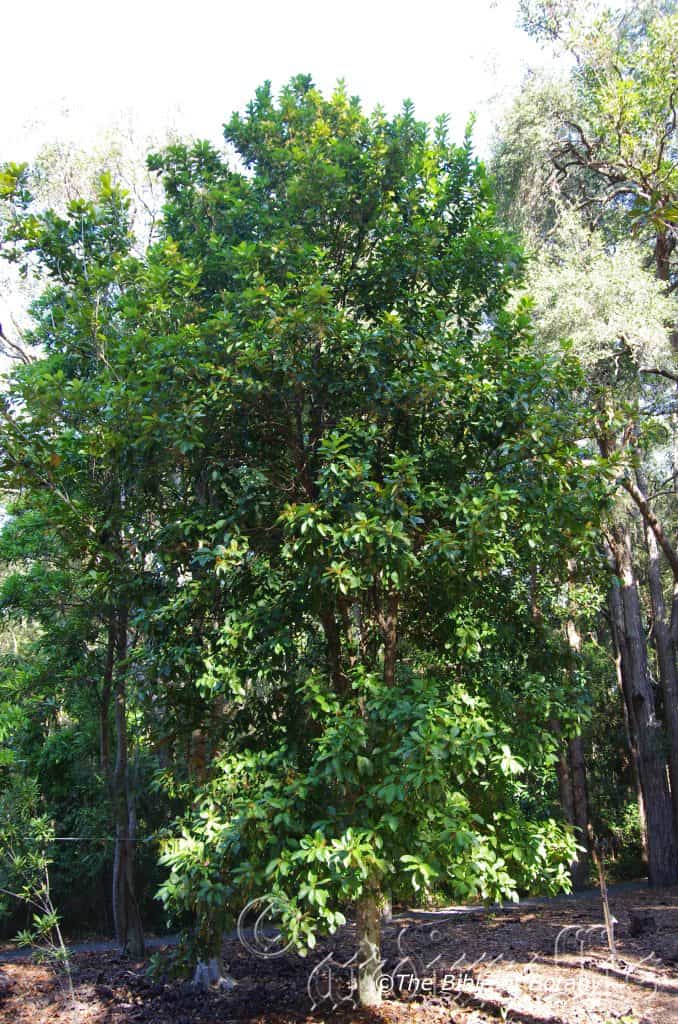
NCBG Coffs Harbour NSW
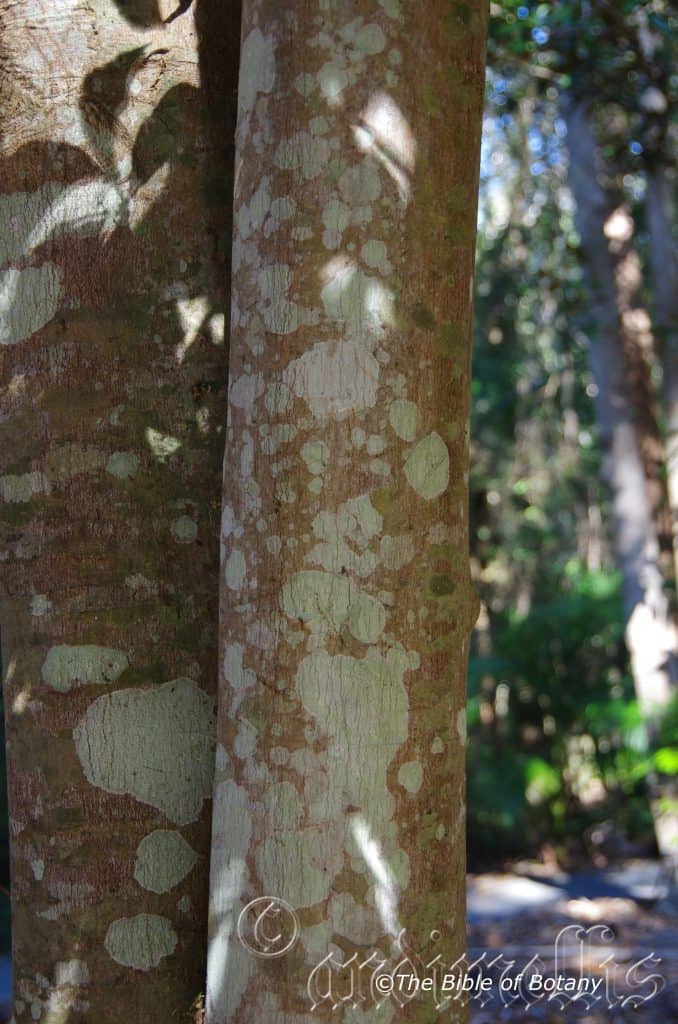
NCBG Coffs Harbour NSW
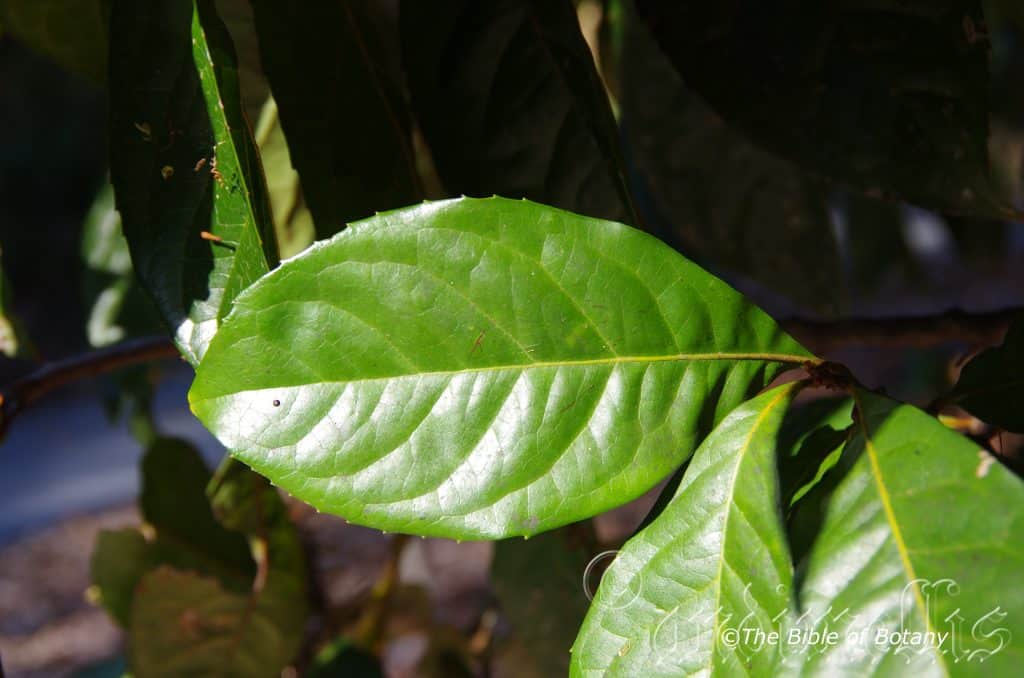
NCBG Coffs Harbour NSW
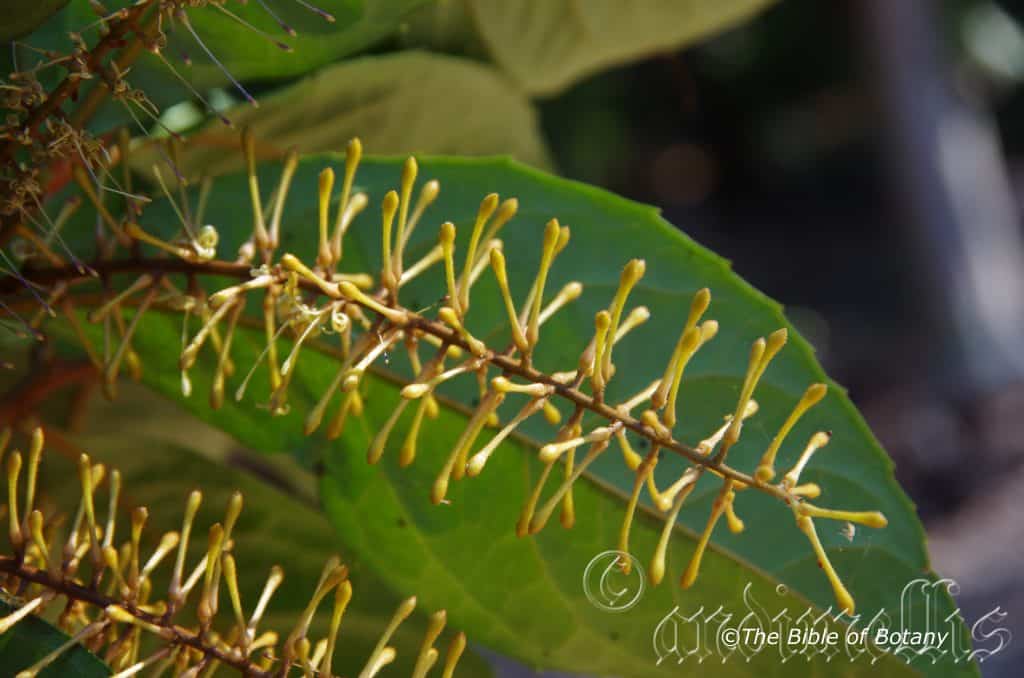
NCBG Coffs Harbour NSW
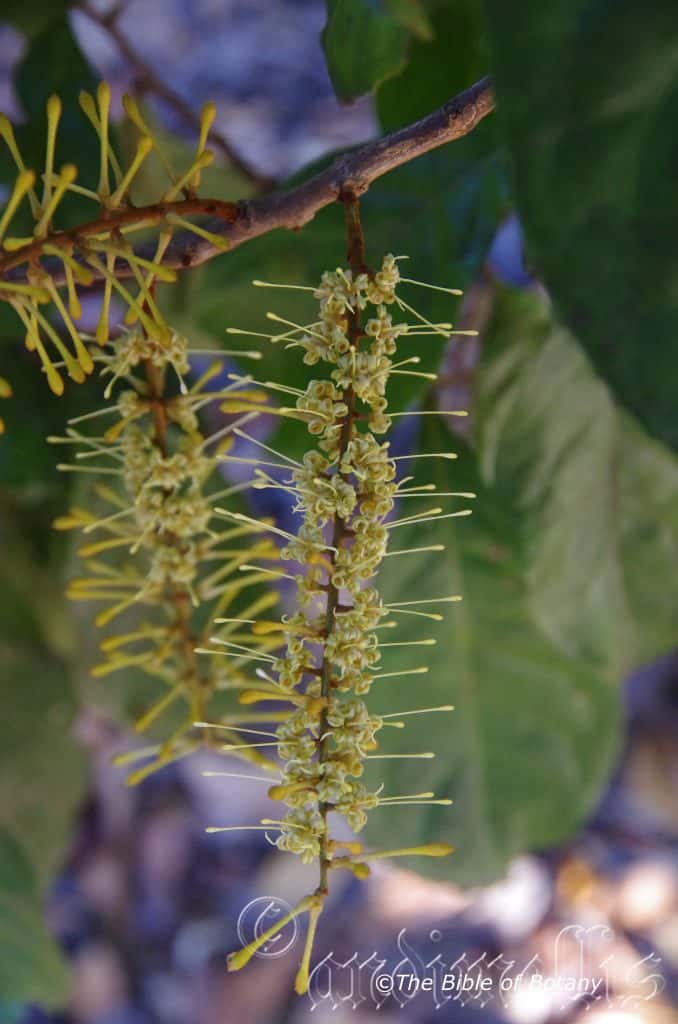
NCBG Coffs Harbour NSW
Helicia australasica
Classification
Unranked: Eudicots
Order: Proteales
Family: Proteaceae
Genus: From Helix, which is Latin for a coil or coiled. It refers to flowers, which are somewhat twisted along the rachis.
Specie: From Australasica, which is Latin for Australia, New Zealand, New Guinea and neighbouring islands. It refers to plants, which grow or originate from the Australian and or Asian area.
Sub species:
Common Name: Austral Oak, Silly Creek Oak or Miyabur and Gurruŋun were the name of the tree in the local Dyirbal language in Queensland.
Distribution:
Helicia australasica is found in a line north from Macadam Range to corbert Air strip in east Arhnem Land in the Northern Territory.
In the east it is found from the tip of Cape York Peninsular and the Torres Strait Islands south to Mount Lewis with 2 disjunct populations in the Paluma Range National Park and the Eungella National Park in far north eastern Queensland.
It is also found in New Guinee.
https://avh.ala.org.au/occurrences/search?taxa=Helicia+australasica#tab_mapView
Habitat Aspect Climate:
Helicia australasica prefers full sun to medium shade. It grows in monsoonal forests, dry rain forest, well developed rain forest and transitional zones. The altitude ranges from 5 meters ASL to 1100 meters ASL.
The temperatures range from 8 degrees in August to 42 degrees in January.
The rainfalls range from lows of 1100mm to an average of 3600mm annually.
Soil Requirements:
Helicia australasica prefers to grow on better quality fertile medium clays. The soils are usually derived from decomposed brown basalt and black basalts, sandstones or alluvial flats. The soils pH varies from 5.5pH through to a 7pH. It does not tolerate waterlogged soils. Non saline soils to moderately saline soils are tolerated as are salt laden winds.
Height & Spread:
Wild Plants: 8m to 10m by 8m to 9m. This is a small tree which has a dense crown.
Characteristics:
Helicia australasica trunk is straight with a scabrous bark which is deep grey to black with paler horizontal markings. The branchlets are glossy black and only turn olive-green in the leaf zone.
The elliptical leaves measure 60mm to 230mm in length by 40mm to 85mm in width. The terete petioles are swollen at the junction with the stems and measure 5mm to 15mm in length. The discolourous leaves are greenish-yellow to deep green and glabrous on the upper lamina and paler below. The mid vein is prominent on lower lamina and slightly raised near the base on the upper lamina, while the lateral veins are set at 40 to 45 degrees and form loops well inside the margin. The laminas curve upwards from the mid vein to the margins and curve downwards on the apical half. The margins are regularly toothed.
The 4 tepals recoil as they split longitudinally and measure 8mm to 15mm in length. It is glabrous to sparsely covered in white to ferruginous pilose hairs. The ovary is sparsely to moderately covered in white to ferruginous tomentose hairs and has 2 ovules.
The ovoidal, purple, rugose fruits measure 8mm to 11mm in length by 5mm to 7.5mm in diameter. The ovoidal seeds measure 6mm to 8mm in length by 4mm to 5mm in diameter.
Wildlife:
Helicia australasica flowers are very attractive to native bees, pollen flies and various small beetles.
Cultivation:
Helicia australasica is a beautiful small tree which is suitable for small gardens to the largest garden. It is an excellent shade tree with a dense canopy for warm temperate, sub-tropical or semi-arid zones. As garden subjects they will grow from 6 meters to 8 meters in height by 6 meters to 8 meters in diameter when cultivated in the open. It is fast growing, drought tolerant once established and are cold tolerant to temperatures as low as minus 2 degrees with some protection in the early years. Cold winters will slow growth down considerably even if the spring and summer temperatures warm quickly.
It is most suitable for use around sunny courtyards, besides pathways, or along drive ways, screens, wind breaks or shelter belts for small native animals. They make an excellent street and park tree. It has a smaller root system that is not strongly invasive.
Apart from being excellent as a shade tree it is also good for planting near foundations, sewer lines and other community services, both underground and above ground. Most Councils throughout Australia accept this tree for street tree planting because of its restricted height in cultivation, ensures that it does not interfere with power lines. The trees leaves do not inter fear with underground drainage systems and its fruits provide substances for butterfly larvae and the King Parrot in semi-rural areas. It is an outstanding tree near BBQ areas and for shading hot walls on buildings. They can be used in formal gardens and park scenes or used to start a rainforest garden.
The trees would make very good accent trees in front of low set or 2 storey commercial buildings, industrial sheds and classrooms where they will break up hard rigid architectural lines and give warmth and breadth to a building. In front of high rise buildings they give balance especially where they could be grown in curves meandering to the entry doors or just planted along the nature strip.
The trunk and branches on established trees are suitable for epiphytic ferns, orchids and lichens.
It would probably be suitable in bonsai.
Propagation:
Seeds: Helicia australasica seeds can be sown directly into a seed raising mix. Cover the freshly gathered seeds with 5mm of fine sand and keep moist not wet. Place the tray in a warm sunny position or beneath 30mm shade cloth and keep moist not wet. When the seedlings reach 25mm to 50mm tall, prick them out and plant them into 50mm native tubes using a good organic mix.
Seeds can be planted directly into 50mm native tubes.
Once the seedlings reach 150mm to 200mm in height or their roots break through the bottom they can be planted out into their permanent position.
If the seeds are not to be used immediately they should be stored in a vegetable crisper in the refrigerator and even then stored seeds lose their viability very quickly.
Fertilize using seaweed, fish emulsion or organic chicken pellets soaked in water on an alternate basis. Fertilize every two months until the plants are established then twice annually in early September or March to maintain health, vitality and better flowering.
Further Comments from Readers:
Hi reader, it seems you use The Bible of Botany a lot. That’s great as we have great pleasure in bringing it to you! It’s a little awkward for us to ask, but our first aim is to purchase land approximately 1,600 hectares to link several parcels of N.P. into one at The Pinnacles NSW Australia, but we need your help. We’re not salespeople. We’re amateur botanists who have dedicated over 30 years to saving the environment in a practical way. We depend on donations to reach our goal. If you donate just $5, the price of your coffee this Sunday, We can help to keep the planet alive in a real way and continue to bring you regular updates and features on Australian plants all in one Botanical Bible. Any support is greatly appreciated. Thank you.
In the spirit of reconciliation we acknowledge the Bundjalung, Gumbaynggirr and Yaegl and all aboriginal nations throughout Australia and their connections to land, sea and community. We pay our respect to their Elders past, present and future for the pleasures we have gained.
Helicia ferruginea
Classification
Unranked: Eudicots
Order: Proteales
Family: Protaceae
Genus: From Helix, which is Latin for a coil or coiled. It refers to flowers, which are somewhat twisted along the rachis.
Specie: From Ferrugineus, which is Latin for rusty iron coloured. It refers to the colour of the leaves, hairs or other physical properties of a plant, which have a rusty iron colour.
Sub species:
Common Name: Rusty Helicia or Rusty Oak or Hairy Honeysuckle.
Distribution:
Helicia ferruginea is found in several disjunct populations south from Peachester in Queensland to the Dorrigo Plateau with a disjunct population near Tamworth on the western slopes in New South Wales. There is also a disjunct population between Mulgrave River and Cardwell in far north eastern Queensland.
https://avh.ala.org.au/occurrences/search?taxa=Helicia+ferruginea#tab_mapView
Habitat Aspect Climate:
Helicia ferruginea prefers full sun to medium shade. It grows in and adjacent to well-developed rainforests and riverine rainforests. The altitude ranges from 100 meters ASL to 700 meters ASL.
The temperatures range from minus 3 degrees in August to 38 degrees in January.
The rainfalls range from lows of 700mm to an average of 3200mm annually.
Soil Requirements:
Helicia ferruginea prefers to grow on better Quality fertile medium clays. The soils are usually derived from decomposed brown basalt and black basalts. The soils pH varies from 5.5pH through to a 7pH. It does not tolerate waterlogged soils. Non saline soils to moderately saline soils are tolerated as are salt laden winds.
Height & Spread:
Wild Plants: 8m to 10m by 8m to 9m. This is a small tree which has a dense crown.
Characteristics:
Helicia ferruginea’s trunk is straight with a scabrous bark which is grey with paler horizontal grey markings. The branchlets are reddish-brown and only turn olive-green in the leaf zone. The green stems are densely covered in fawn to rusty-brown tomentose hairs. The new growth is burgundy and densely covered in rusty-brown tomentose hairs.
Helicia ferruginea’s alternate lanceolate to oblong lanceolate leaves measure 90mm to 350mm in length by 30mm to 90mm in width. The 4 to 8 leaflets are elliptical to oblong-ovate and measure 50mm to 120mm in length by 20mm to 50mm in width. The bases are usually cuneate or at times rounded-cuneate while the apexes are acute. The discolourous, coriaceous laminas are pale grass-green to deep green, semi glossy and glabrous to sparsely covered in rusty-brown tomentose hairs especially along the veins while the lower laminas are much paler and densely covered in rusty-brown tomentose hairs especially along the veins. The laminas are flat and decurve slightly downwards on the apical third while the margins are serrate with numerous stiff teeth. The obtuse midvein vein is strongly prominent on the lower lamina as are the lateral and secondary veins. The mid vein, 10 to 20 pairs of lateral veins are distinctly visible on the lamina. The petioles are densely covered in rusty-brown tomentose hairs and measure 2mm to 10mm.
The conflorescences of Helicia ferruginea are dense racemes born from the leaf axis. The peduncle, rachis and pedicels are densely covered in rusty-brown tomentose hairs. The peduncles measure 1mm to 2.5mm in length while the rachises measure 60mm to 75mm in length and the pedicels measure 1mm to 1.5mm in length. The corollas and limbs are densely covered in rusty-brown tomentose hairs while the corollas measure 5mm to 7mm in length and measure 2.5mm to 3mm in length by 1.5mm in width.
The white ovate anthers measure 1.5mm to 2mm in length. The hypogynous glands are ovate and are free or fused at base. The ovary is densely covered in ferruginous hirsute hairs. The long white to deep purple-blue, glabrous pistil measures 10mm to 12mm in length including the 1.5mm to 2mm obloidal, erect stigma. The flowers appear from late October to late December.
Helicia ferruginea’s fruits are ovoidal berries. The green berries turn deep purple-blue to almost black when ripe. The berries measure 10mm to 13mm in length by 10mm to 12mm in diameter. The seeds are surrounded by white flesh and measure 5mm to 6mm in diameter. The fruits ripen from late January to February.
Wildlife:
Helicia ferruginea’s flowers are very attractive to native bees, pollen flies and various small beetles.
Cultivation:
Helicia ferruginea is a beautiful small tree which is suitable for small gardens to the largest garden. It is an excellent shade tree with a dense canopy for warm temperate, sub-tropical or semi-arid zones. As garden subjects they will grow from 6 meters to 8 meters in height by 6 meters to 8 meters in diameter when cultivated in the open. It is fast growing, drought tolerant once established and are cold tolerant to temperatures as low as minus 2 degrees with some protection in the early years. Cold winters will slow growth down considerably even if the spring and summer temperatures warm quickly.
It is most suitable for use around sunny courtyards, besides pathways, or along drive ways, screens, wind breaks or shelter belts for small native animals. They make an excellent street and park tree. It has a smaller root system that is not strongly invasive.
Apart from being excellent shade trees it is exceptionally good for planting near foundations, sewer lines and other community services, both underground and above ground. Most Councils throughout Australia accept this tree for street tree planting because of its restricted height in cultivation, ensures that it does not interfere with power lines. The trees leaves do not inter fear with underground drainage systems and its fruits provide substances for butterfly larvae and the King Parrot in semi-rural areas. It is an outstanding tree near BBQ areas and for shading hot walls on buildings. They can be used in formal gardens and park scenes or used to start a rainforest garden.
The trees would make very good accent trees in front of low set or 2 storey commercial buildings, industrial sheds and classrooms where they will break up hard rigid architectural lines and give warmth and breadth to a building. In front of high rise buildings they give balance especially where they could be grown in curves meandering to the entry doors or just planted along the nature strip.
The trunk and branches on established trees are suitable for epiphytic ferns, orchids and lichens.
It would probably be suitable in bonsai.
Propagation:
Seeds: Helicia ferruginea seeds can be sown directly into a seed raising mix. Cover the freshly gathered seeds with 5mm of fine sand and keep moist not wet. Place the tray in a warm sunny position or beneath 30mm shade cloth and keep moist not wet. When the seedlings reach 25mm to 50mm tall, prick them out and plant them into 50mm native tubes using a good organic mix.
Once the seedlings reach 150mm to 200mm in height or their roots break through the bottom they can be planted out into their permanent position.
If the seeds are not to be used immediately they should be stored in a vegetable crisper in the refrigerator and even then stored seeds lose their viability very quickly.
Fertilize using seaweed, fish emulsion or organic chicken pellets soaked in water on an alternate basis. Fertilize every two months until the plants are established then twice annually in early September or March to maintain health, vitality and better flowering.
Further Comments from Readers:
Hi reader, it seems you use The Bible of Botany a lot. That’s great as we have great pleasure in bringing it to you! It’s a little awkward for us to ask, but our first aim is to purchase land approximately 1,600 hectares to link several parcels of N.P. into one at The Pinnacles NSW Australia, but we need your help. We’re not salespeople. We’re amateur botanists who have dedicated over 30 years to saving the environment in a practical way. We depend on donations to reach our goal. If you donate just $5, the price of your coffee this Sunday, We can help to keep the planet alive in a real way and continue to bring you regular updates and features on Australian plants all in one Botanical Bible. Any support is greatly appreciated. Thank you.
In the spirit of reconciliation we acknowledge the Bundjalung, Gumbaynggirr and Yaegl and all aboriginal nations throughout Australia and their connections to land, sea and community. We pay our respect to their Elders past, present and future for the pleasures we have gained.
Helicia glabriflora
Classification
Unranked: Eudicots
Order: Proteales
Family: Proteaceae
Genus: From Helix, which is Latin for a coil or coiled. It refers to flowers, which are somewhat twisted along the rachis.
Specie: From Glabrum, which is Latin for glabrous or smooth and Flōris, which is Latin for a flower or Flōs, which is Roman the goddess of spring and flowers. It refers to flowers, which are smooth and hairless.
Sub species:
Common Name: Smooth Helicia or Pale Helicia or Pale Oak or Leather Oak or Brown Oak.
Distribution:
Helicia glabriflora is found in several disjunct populations south from the Hann Tableland in far north Queensland to Knapsack Hill in New South Wales. It is found on and east of the Great Dividing Range.
https://avh.ala.org.au/occurrences/search?taxa=Helicia+glabriflora#tab_mapView
Habitat Aspect Climate:
Helicia glabriflora prefers full sun to medium shade. It grows in and adjacent to well-developed rainforests and riverine rainforests. The altitude ranges from 100 meters ASL to 800 meters ASL.
The temperatures range from minus 4 degrees in August to 38 degrees in January.
The rainfalls range from lows of 1000mm to an average of 3000mm annually.
Soil Requirements:
Helicia glabriflora prefers to grow on fertile light clays to medium clays. The soils are usually derived from decomposed brown basalt, black basalt and metamorphic rocks. The soils pH varies from 5pH through to a 6pH. It does not tolerate waterlogged soils. Non saline soils to moderately saline soils are tolerated as are salt laden winds.
Height & Spread:
Wild Plants: 8m to 10m by 8m to 9m. This is a small tree which has a dense crown.
Characteristics:
Helicia glabriflora’s trunk is straight with a scabrous to resinous bark which is grey with deeper horizontal grey blotches. The branchlets are grey-brown and only turn olive-green in the leaf zone. The green stems are sparsely covered in fawn to rusty-brown semi erect to lax pilose hairs. The new growth is burgundy and densely covered in rusty-brown pilose hairs.
Helicia glabriflora’s alternate lanceolate to oblong, lanceolate or rhomboidal-elliptical leaves measure 50mm to 160mm in length by 15mm to 45mm in width. The 4 to 8 leaflets are elliptical to oblong-ovate and measure 50mm to 120mm in length by 20mm to 50mm in width. The bases are cuneate while the apexes are acute to obtuse-acuminate. The discolourous, coriaceous laminas are deep grass-green to deep green, semi glossy and glabrous on the upper laminas while the lower laminas are much paler. The laminas decurve slightly downwards on from the mid vein to the margins and decurve downwards from the base to the apex. The margins are entire or with a few irregular teeth. The obtuse midvein vein is strongly prominent on the lower lamina as are the 8 to 12 lateral veins while the intramarginal veins form loops well inside the margin. The mid vein, 10 to 20 pairs of lateral veins are distinctly visible on the lamina. The petioles are glabrous to sparsely covered in rusty-brown pilose hairs and measure 1mm to 3mm.
The conflorescences of Helicia glabriflora are dense racemes born from the leaf axis. The peduncle, rachis and pedicels are glabrous. The peduncles measure 1mm to 5mm in length while the rachises measure 40mm to 95mm in length and the pedicels measure 1mm to 1.5mm in length. The cream, pastel pink to pale pink tepals are united to form a corolla and limbs are glabrous. The corollas measure 8mm to 13mm in length while the lobes measure 2.5mm to 3mm in length by 1mm to 1.5mm in width.
The white ovate anthers measure 1.7mm to 2.2mm in length. The hypogynous glands are truncate and are free or fused to form a cupular base. The ovary is usually sparsely covered in ferruginous tomentose hairs or at times is glabrous. The long white, glabrous pistil measures 11mm to 16mm in length including the 2mm to 2.5mm obloidal, erect yellow stigma. The flowers appear from late October to late December.
Helicia glabriflora’s fruits are obloidal berries. The green berries turn deep purple-blue to almost black when ripe. The berries measure 11mm to 15mm in length by 10mm to 12mm in diameter. The seeds are surrounded by white flesh and measure 6mm to 7.5mm in diameter. The fruits ripen from late January to February.
Wildlife:
Helicia glabriflora flowers are very attractive to native bees, pollen flies and various small beetles.
Cultivation:
Helicia glabriflora is a beautiful small tree which is suitable for small gardens to the largest garden. It is an excellent shade tree with a dense canopy for warm temperate, sub-tropical or semi-arid zones. As garden subjects they will grow from 6 meters to 8 meters in height by 6 meters to 8 meters in diameter when cultivated in the open. It is fast growing, drought tolerant once established and are cold tolerant to temperatures as low as minus 2 degrees with some protection in the early years. Cold winters will slow growth down considerably even if the spring and summer temperatures warm quickly.
It is most suitable for use around sunny courtyards, besides pathways, or along drive ways, screens, wind breaks or shelter belts for small native animals. They make an excellent street and park tree. It has a smaller root system that is not strongly invasive.
Apart from being excellent shade trees it is exceptionally good for planting near foundations, sewer lines and other community services, both underground and above ground. Most Councils throughout Australia accept this tree for street tree planting because of its restricted height in cultivation, ensures that it does not interfere with power lines. The trees leaves do not inter fear with underground drainage systems and its fruits provide substances for butterfly larvae and the King Parrot in semi-rural areas. It is an outstanding tree near BBQ areas and for shading hot walls on buildings. They can be used in formal gardens and park scenes or used to start a rainforest garden.
The trees would make very good accent trees in front of low set or 2 storey commercial buildings, industrial sheds and classrooms where they will break up hard rigid architectural lines and give warmth and breadth to a building. In front of high rise buildings they give balance especially where they could be grown in curves meandering to the entry doors or just planted along the nature strip.
The trunk and branches on established trees are suitable for epiphytic ferns, orchids and lichens.
It would probably be suitable in bonsai.
Propagation:
Seeds: Helicia glabriflora seeds can be sown directly into a seed raising mix. Cover the freshly gathered seeds with 5mm of fine sand and keep moist not wet. Place the tray in a warm sunny position or beneath 30mm shade cloth and keep moist not wet. When the seedlings reach 25mm to 50mm tall, prick them out and plant them into 50mm native tubes using a good organic mix.
Once the seedlings reach 150mm to 200mm in height or their roots break through the bottom they can be planted out into their permanent position.
If the seeds are not to be used immediately they should be stored in a vegetable crisper in the refrigerator and even then stored seeds lose their viability very quickly.
Fertilize using seaweed, fish emulsion or organic chicken pellets soaked in water on an alternate basis. Fertilize every two months until the plants are established then twice annually in early September or March to maintain health, vitality and better flowering.
Further Comments from Readers:
Hi reader, it seems you use The Bible of Botany a lot. That’s great as we have great pleasure in bringing it to you! It’s a little awkward for us to ask, but our first aim is to purchase land approximately 1,600 hectares to link several parcels of N.P. into one at The Pinnacles NSW Australia, but we need your help. We’re not salespeople. We’re amateur botanists who have dedicated over 30 years to saving the environment in a practical way. We depend on donations to reach our goal. If you donate just $5, the price of your coffee this Sunday, We can help to keep the planet alive in a real way and continue to bring you regular updates and features on Australian plants all in one Botanical Bible. Any support is greatly appreciated. Thank you.
In the spirit of reconciliation we acknowledge the Bundjalung, Gumbaynggirr and Yaegl and all aboriginal nations throughout Australia and their connections to land, sea and community. We pay our respect to their Elders past, present and future for the pleasures we have gained.
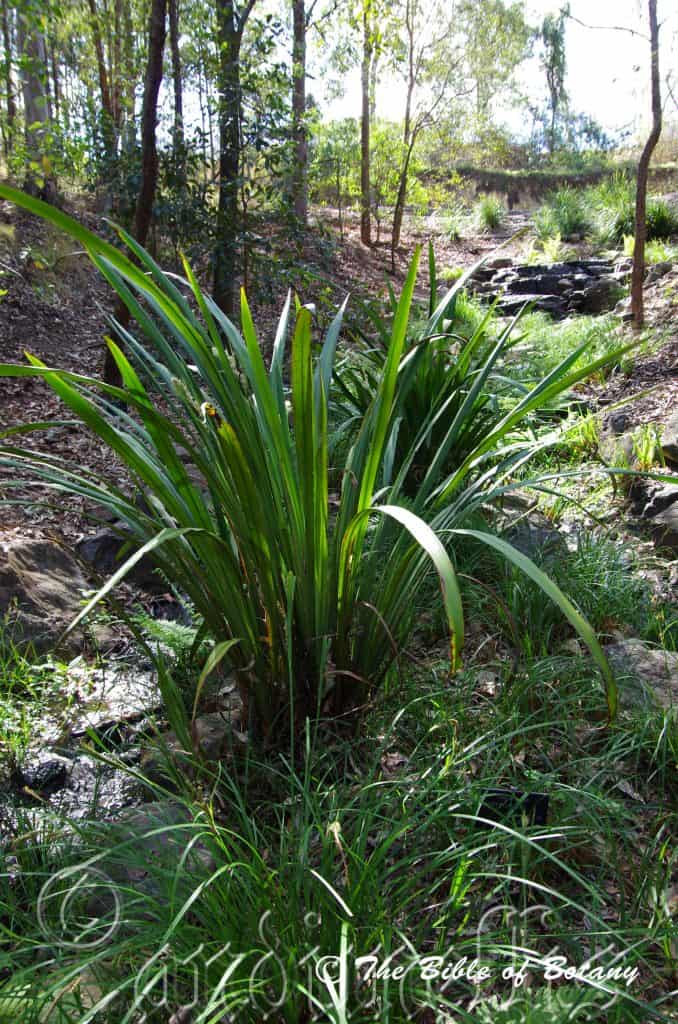
Mount Cootha Botanic Gardens Qld.
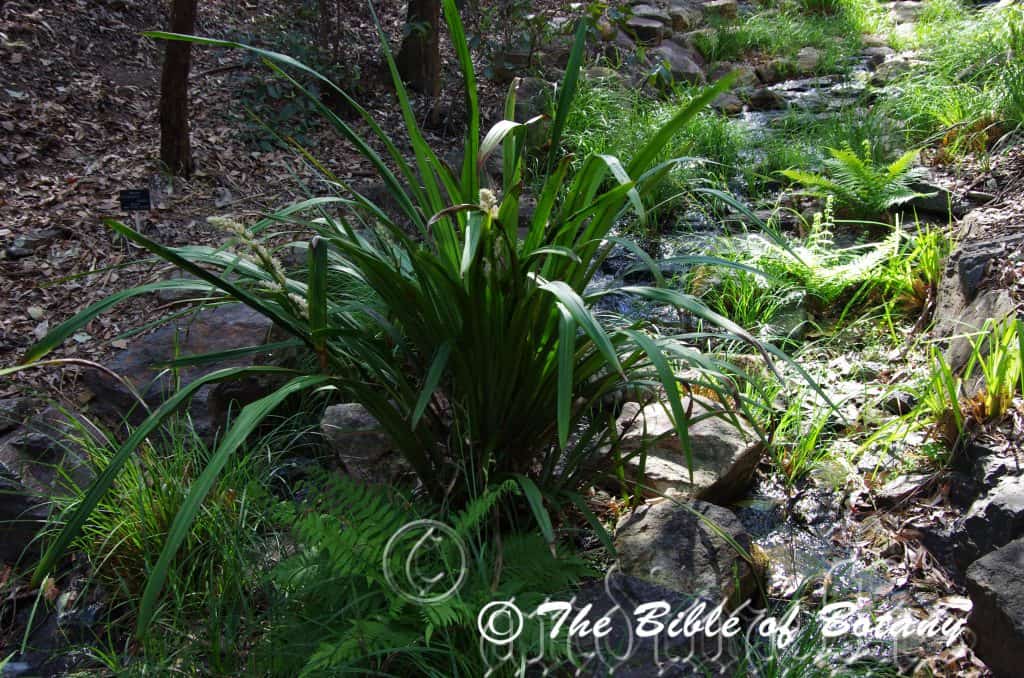
Mount Cootha Botanic Gardens Qld.
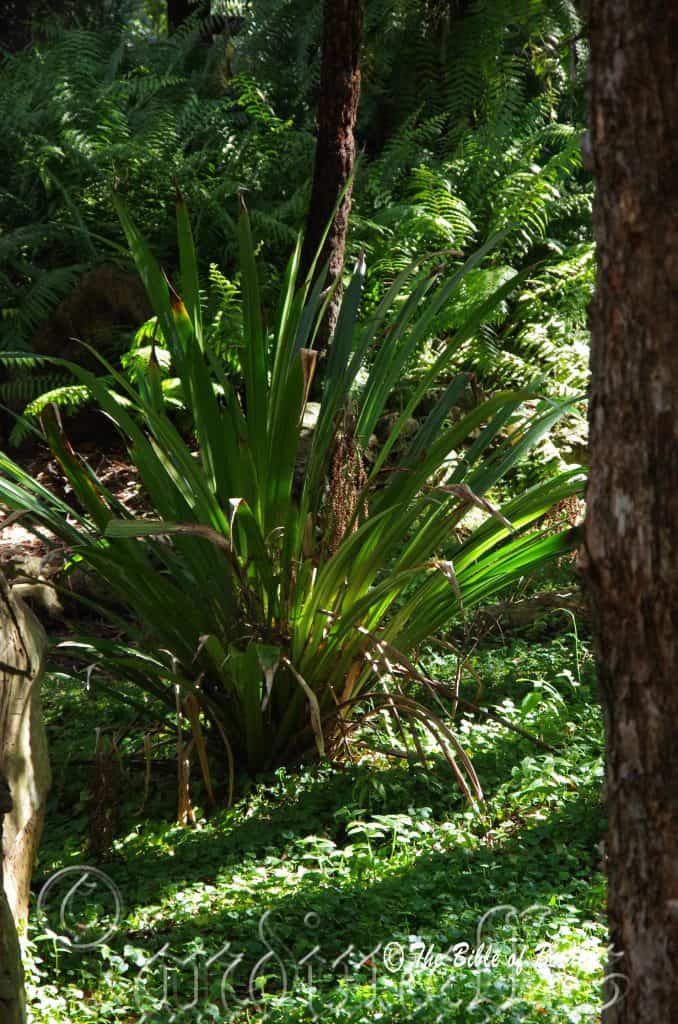
NCBG Coffs Harbour NSW
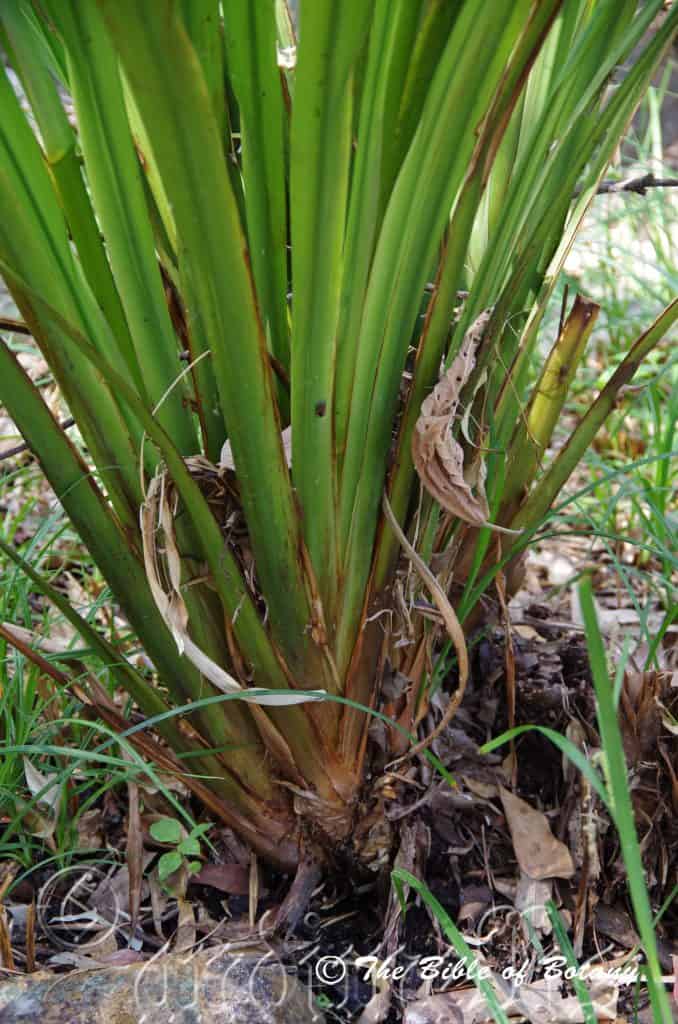
Mount Cootha Botanic Gardens Qld.
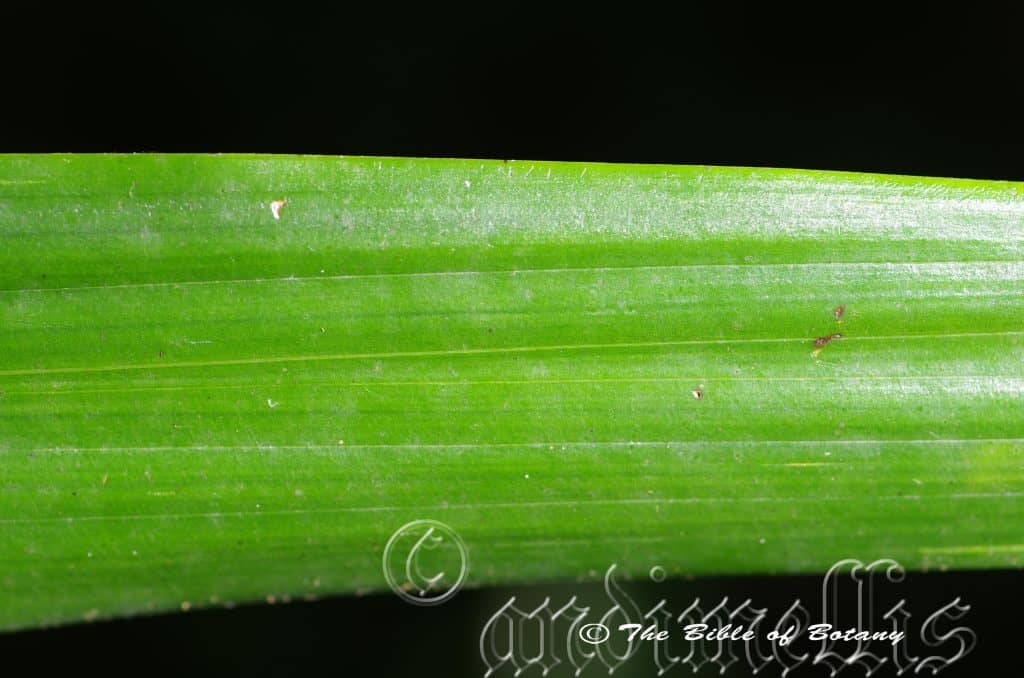
NCBG Coffs Harbour NSW

NCBG Coffs Harbour NSW
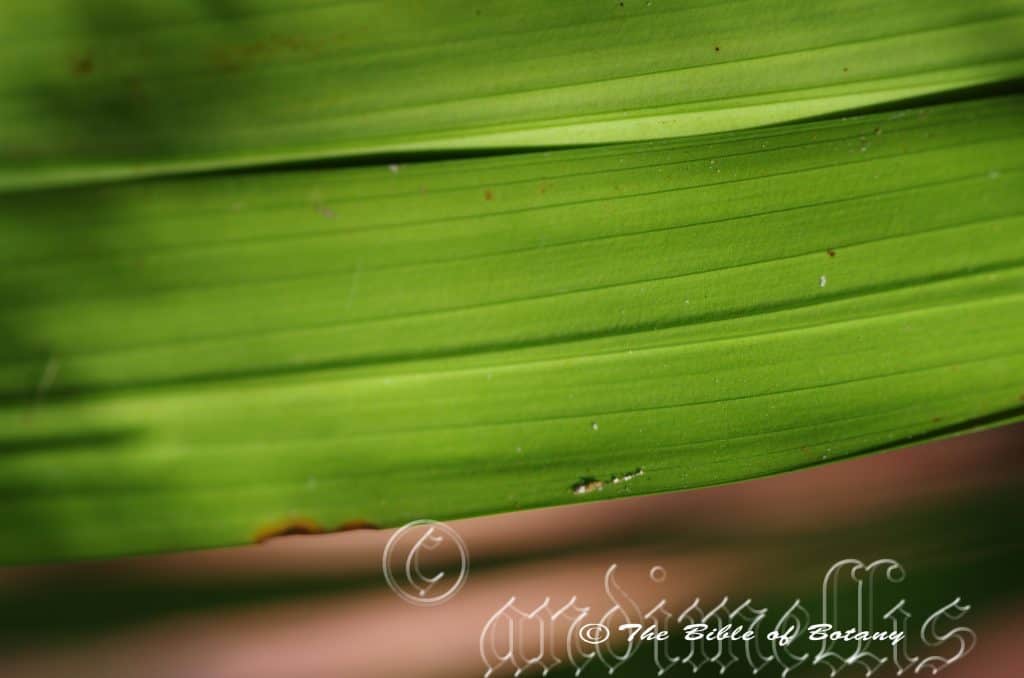
Mount Cootha Botanic Gardens Qld.
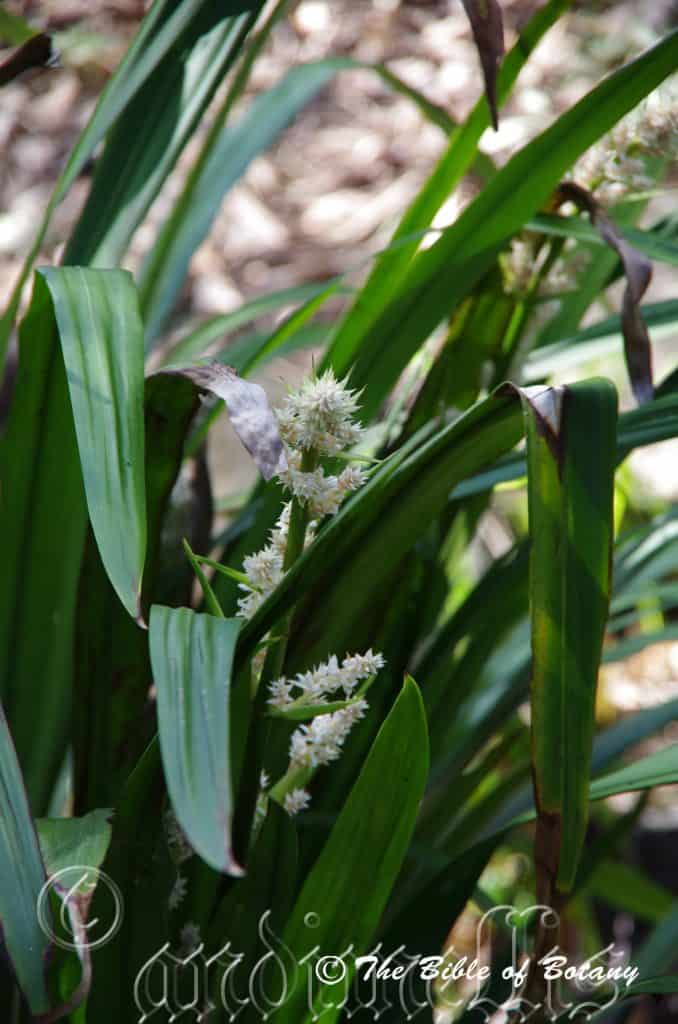
Mount Cootha Botanic Gardens Qld.
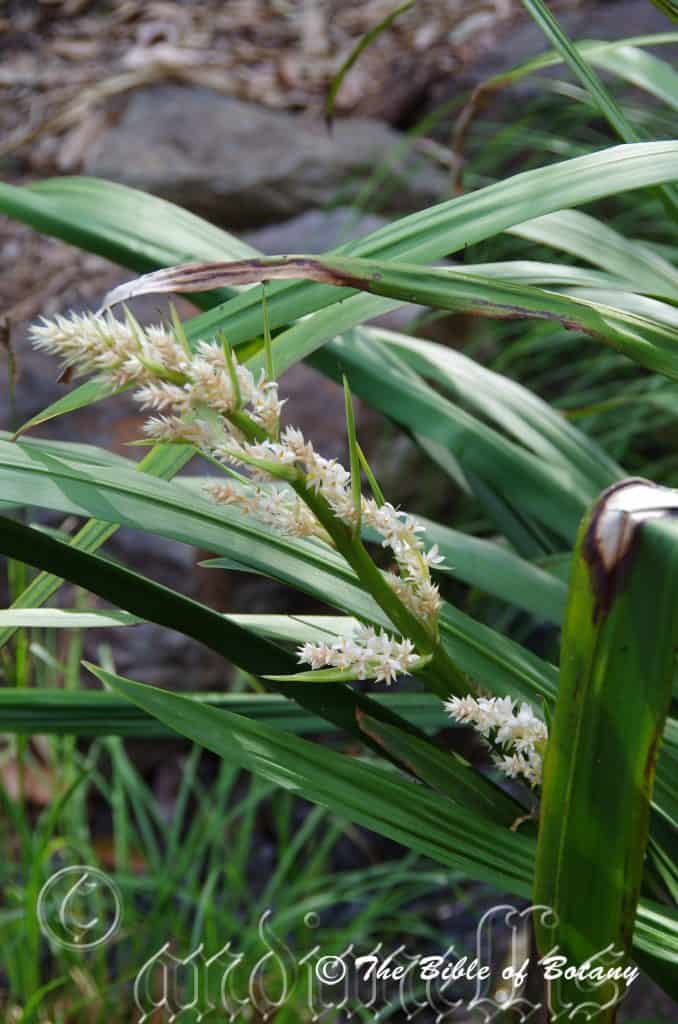
Mount Cootha Botanic Gardens Qld.
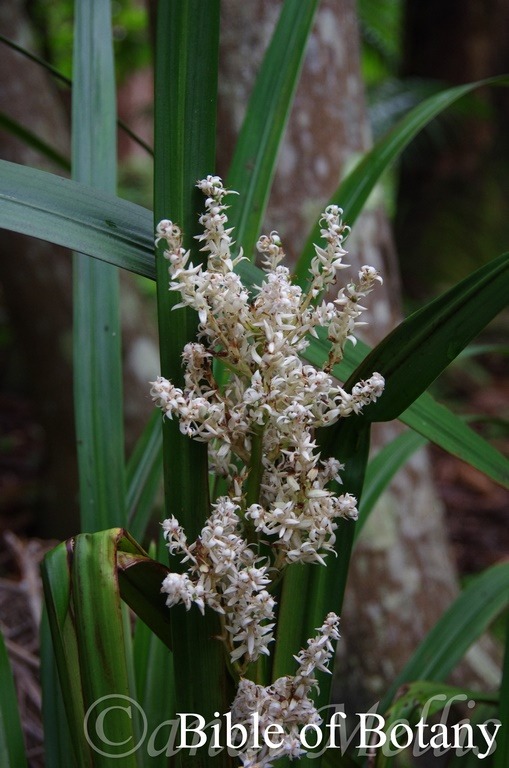
NCBG Coffs Harbour NSW
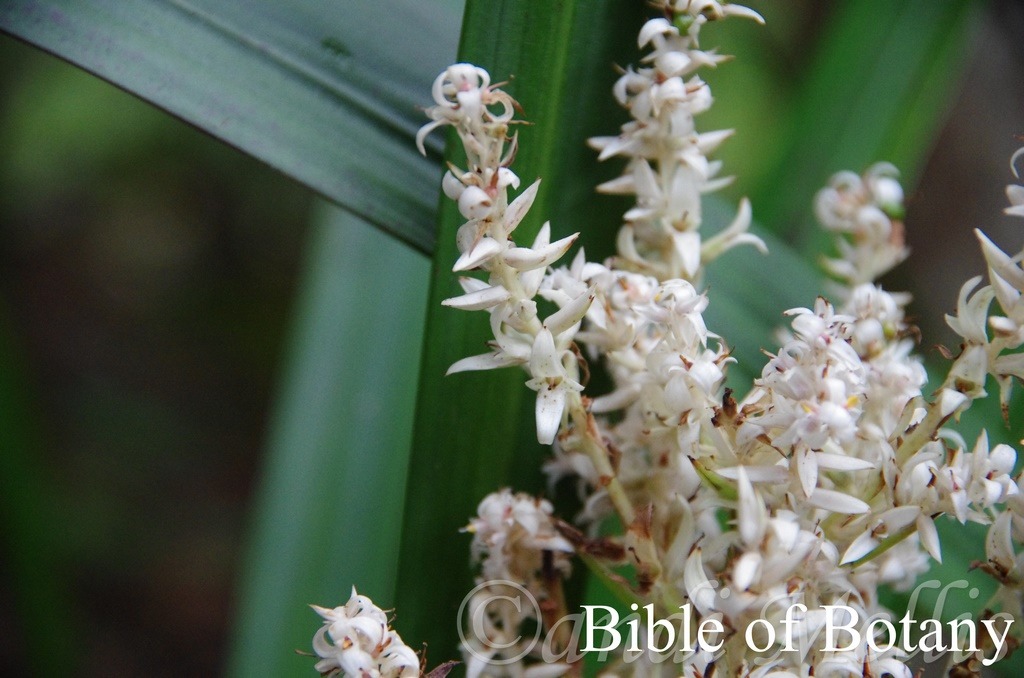
NCBG Coffs Harbour NSW
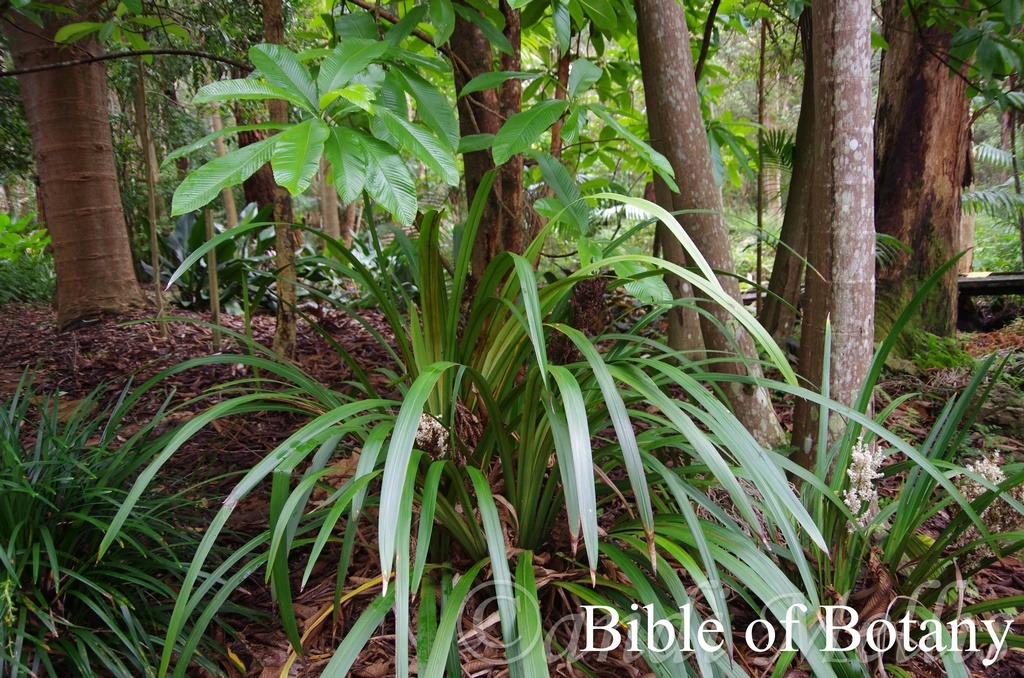
NCBG Coffs Harbour NSW
Helmholtzia glaberrima
Classification
Unranked: Monocots
Superorder: Commelinids
Order: Commelinales
Family: Philydraceae
Genus: Is named in honour of Professor Herman Helmholtz; 1821-1894, who was a famous German physician and physicist who was renown for his mathematics of the eye, theories of vision, ideas on the visual perception of space and colour vision.
Specie: From Glabrum, which is Latin for glabrous or smooth. It refers to a structure or organ, which has no hairs or scales and is very smooth to touch.
Sub species:
Common Name: Flax Lily or Stream Lily.
Distribution:
Helmholtzia glaberrima is found in 3 disjunct populations on the Jardine River in far north Queensland, near Kuranda in north Queensland and south from Mooloolah Heads in south eastern Queensland to Dobbies Blight on the lower Clarence River and the Nightcap Range in north eastern New South Wales.
https://avh.ala.org.au/occurrences/search?taxa=Helmholtzia+glaberrima#tab_mapView
Habitat Aspect Climate:
Helmholtzia glaberrima prefers full sun to medium shade. It grows adjacent to well-developed rainforests or dry rain forests on alluvial flats to mountainous ranges. The altitude ranges from 15 meters ASL to 1100 meters ASL.
The temperatures range from 2 degrees in August to 38 degrees in January.
The rainfalls range from lows of 1000mm to an average of 3200mm annually.
Soil Requirements:
Helmholtzia glaberrima prefers to grow on deep fertile soils from loamy clays to medium gravelly clays. The soils are usually derived from decomposed brown basalt and black basalt. The soils pH varies from 5pH through to a 6.5pH. It tolerates waterlogged soil often growing in or adjacent to streams and rivers. Non saline soils to moderately saline soils are tolerated as are salt laden winds.
Height & Spread:
Wild Plants: 1m to 2.5m by 2m to 3m.
Characteristics:
Helmholtzia glaberrima is a dense caespitose perennial. The robust, stout, rhizomatous, herbaceous plants have thick fibrous roots.
The long, broad, linear ensiformis leaves measure 1 meter to 2 meters in length by 30mm to 70mm in width. The bases are clasping while the apex is acute and usually bent. The concolourous laminas are grass-green to sea-green, glabrous and semi glossy. The laminas are flat while the margins are entire. The obtuse midvein vein is a prominent on both laminas. The 2 to 4 parallel lateral veins are clearly visible on both laminas.
The inflorescences are many scapes born from the bases of the fleshy leaves. The erect deep green to sea-green scapes are glabrous or sparsely covered in white hirtellous hairs and measures 500mm to 720mm in length. The pedicels measure 5mm to 10mm in length. The lanceolate subtending bracts decrease in size from the 250mm on the basal racemes down to 5mm on apical racemes. The perianths are white, creamy pastel yellow or pastel pink to deep pink. The outer tepals are recurved with the margins being in rolled to form a cucullatus apex. The outer tepals measure 7mm to 10mm in length while the spreading inner tepals measure 4mm to 5mm in length.
The introrsa anthers are rigid. The locules are straight and contiguous while the pollen grains are free. The triloculare ovary is globose and sparsely covered in white hirtellous hairs the northern plants and is glabrous in the central and southern populations. The erect flexuosa style is white with a minute capitate stigma. The styles are fused to one side of the corollas and measure 3.5mm to 4.5mm in length. The flowers appear from early September to late May.
The fruits are loculicidal capsules. The capsules are yellow-white and turn yellow then grey when ripe. The trilocular capsules measure 5mm to 7mm in length by 2.5mm to 4mm in width. The styles are persistent and become bi-geniculate in fruit.
The numerous seeds are linear to cylindrical and are silky and striated.
Subspecies Differences:
Helmholtzia acorifolia’s perianth is white. The ovary and fruit are sparsely covered in white hirsute hairs. The glossy seeds are deep reddish-brown and measure 2mm to 2.4mm in length.
Helmholtzia glaberrima’s perianth is pale pink to deep pink while the ovaries and fruits are glabrous. The glossy seeds are pale fawnish-yellow and covered in silky, white sericeous hairs and measure 4mm to 5 mm in length.
Wildlife:
Helmholtzia glaberrima’s is unknown to the author.
Cultivation:
Helmholtzia glaberrima is a beautiful small tree which is suitable for medium to the large water garden. It is an excellent for warm temperate, sub-tropical or cool tropical shade or semi shade gardens. As garden subjects it grows from 1.4 meters to 2 meters in height by 1.8 meters to 2.5 meters in diameter when cultivated in the open. It is fast growing and once established are cold tolerant to temperatures as low as minus 2 degrees but will need some protection in the early years. Cold winters will slow growth down considerably even if the spring and summer temperatures warm quickly.
It is most suitable for use around courtyards, besides pathways, or along drive ways, screens or as understory plants in rainforest gardens provided ample water are given.
Around large fish ponds, frog ponds or swimming pools is where they look at home but it can make a small rill or cascade come to life. It needs to be planted sparingly and avoid the temptation to mass plant it as it will lose its character. It is best planted where ferns are placed in the fore ground and to the sides and have erect coloured foliage plants like Cordyline petiolaris or Cordyline terminalis mixed with large leaf foliage plants to the rear.
Propagation:
Seeds: Seeds can be sown directly into a seed raising mix. Cover them with 5mm of fine sand and keep moist not wet. Place the tray in a warm semi shaded area or beneath 30mm shade cloth and keep wet. When the seedlings are 25mm to 50mm tall, prick them out and plant them into 50mm native tubes using a good organic mix.
Once the seedlings reach 150mm to 200mm in height or their roots break through the bottom they can be planted out into their permanent position.
If the seeds are not to be used immediately they should be stored in a vegetable crisper in the refrigerator and even then stored seeds lose their viability very quickly.
Division: First select a healthy plant. Secondly it is best to divide plants just prior to the onset of new growth. Prior to removing the plant from the ground plants should be given a deep watering a few days before removal, then again about 2 hours before removing them from the ground.
Use a spade and cut down each side about 100mm out from the base of the plant. Dig back on one side so that the spade can be wedged below the plant. Now lift the plant out trying not to damage the roots.
Wash the roots gently but thoroughly to remove all the soil.
Divide the clumps so that there is a crown or tuff with roots and leaves on each division. This is best done using secateurs, a large knife or spade in very large clumps.
Remove any unwanted or dead roots.
Remove half the foliage leaving those leaves that surround the growing point.
Spread the remaining roots outwards and downwards to allow the plants the maximum room to develop new roots.
Water thoroughly but do not fertilize. Place the containers beneath 30mm shade cloth and keep moist. After a fortnight or after the signs of new roots or shoots fertilize with our recommended fertilizer and repeat after about a month.
Once the plants have re-established themselves plant out and fertilize as before.
Fertilize using seaweed, fish emulsion or organic chicken pellets soaked in water on an alternate basis. Fertilize every two months until the plants are established then twice annually in early September or March to maintain health, vitality and better flowering.
Further Comments from Readers:
Hi reader, it seems you use The Bible of Botany a lot. That’s great as we have great pleasure in bringing it to you! It’s a little awkward for us to ask, but our first aim is to purchase land approximately 1,600 hectares to link several parcels of N.P. into one at The Pinnacles NSW Australia, but we need your help. We’re not salespeople. We’re amateur botanists who have dedicated over 30 years to saving the environment in a practical way. We depend on donations to reach our goal. If you donate just $5, the price of your coffee this Sunday, We can help to keep the planet alive in a real way and continue to bring you regular updates and features on Australian plants all in one Botanical Bible. Any support is greatly appreciated. Thank you.
In the spirit of reconciliation we acknowledge the Bundjalung, Gumbaynggirr and Yaegl and all aboriginal nations throughout Australia and their connections to land, sea and community. We pay our respect to their Elders past, present and future for the pleasures we have gained.
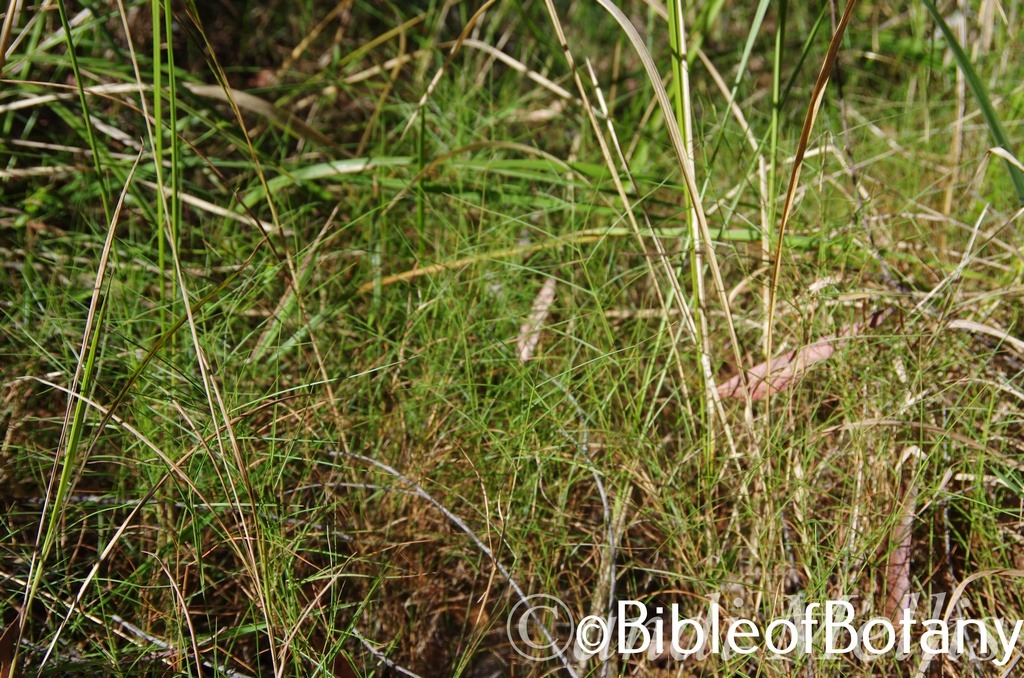
Yuryaigir National Park NSW
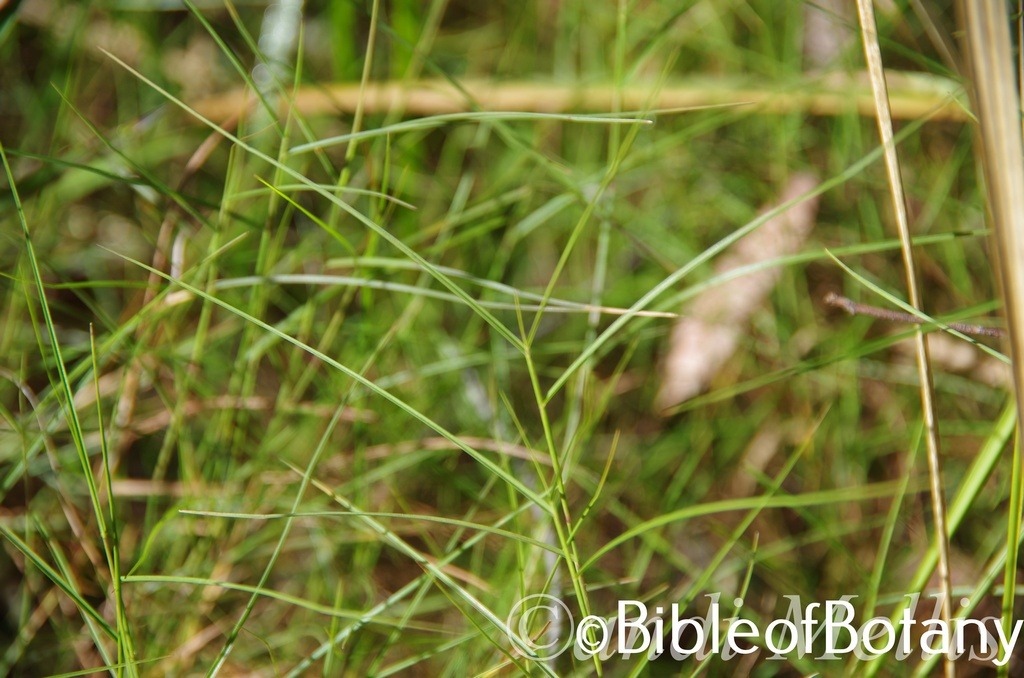
Yuryaigir National Park NSW
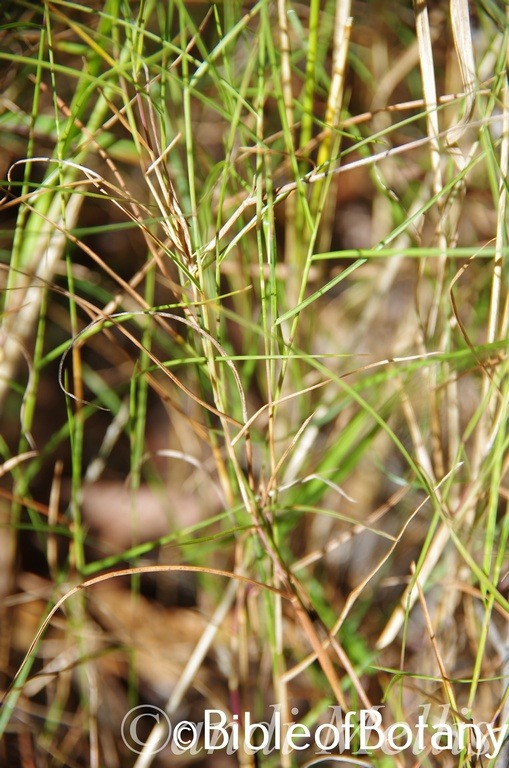
Yuryaigir National Park NSW
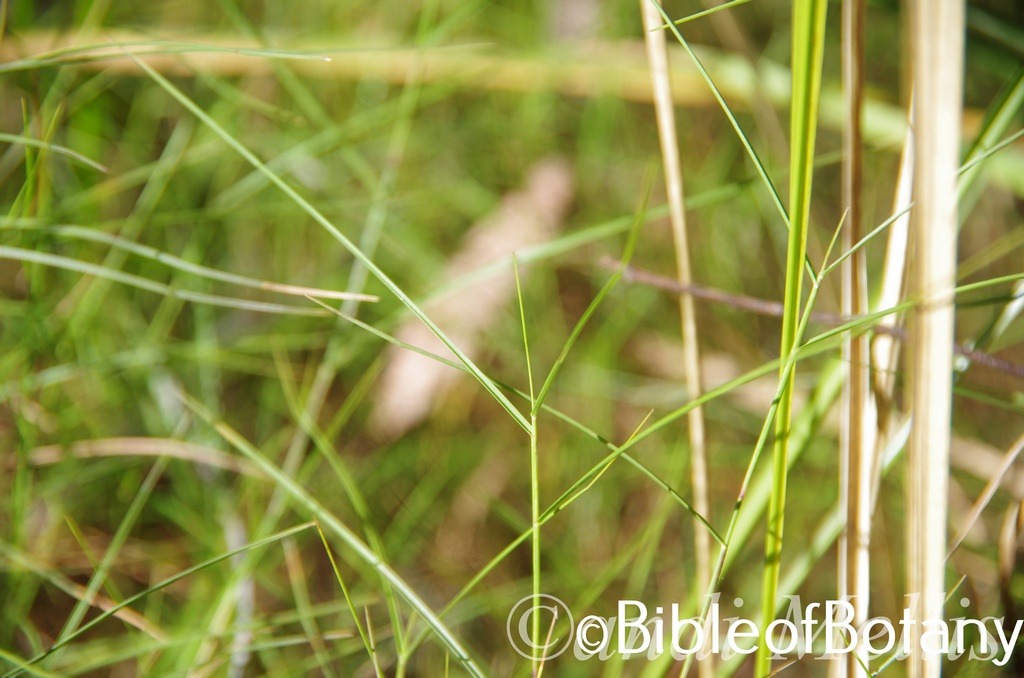
Yuryaigir National Park NSW
Hemarthria uncinata
Classification
Unranked: Monocots
Superorder: Commelinids
Order: Poales
Family: Poaceae
Genus: From Hemi, which is Ancient Greek for half and Arthron, which is Ancient Greek for a joint. It refers to internodes on flowering spikes, which are resistant to breaking off freely.
Specie: From Uncinatus, which is Latin for a hook or to bear hooks. It refers to structures or organs, which are covered in hooks.
Sub species: Hemarthria uncinata sub sp. spathacea. From Uncinatus, which is Latin for a hook or to bear hooks. It refers to structures or organs, which are covered in hooks.
Sub species: Hemarthria uncinata sub sp. uncinata. From Uncinatus, which is Latin for a hook or to bear hooks. It refers to structures or organs, which are covered in hooks.
Common Name: Mat Grass.
Distribution:
Hemarthria uncinata sub sp. uncinata is widespread on the west coast and the east coast of Australia. In Western Australia it is found south from Northampton to Albany with a disjunct population further east at Esperance.
On the east coast it is found south and east of a line from south of Mackay in far north eastern Queensland to the Victorian New South Wales border where it follows the Murray River west to the Adelaide hills in South Australia. It is also found on Kangaroo Island and near Port Lincoln. There is a disjunct population north of Innisfail.
In Tasmania it is found on King Island and most of the mainland except for the high country in the south west.
Hemarthria uncinata sub sp. spathacea is found south of Cairns in far north Queensland to just north of Grafton in northern New South Wales.
https://avh.ala.org.au/occurrences/search?taxa=Hemarthria+uncinata#tab_mapView
Habitat Aspect Climate:
Hemarthria uncinata prefers full sun to medium shade. It grows in wet shallow depressions along permanent water courses, swamps billabongs, wallums and drainage wet lines. The altitude ranges from 10 meters ASL to 1100 meters ASL.
The temperatures range from minus 4 degree in July to 38 degrees in January.
The rainfalls range from lows of 550mm to an average of 3000mm annually.
Soil Requirements:
Hemarthria uncinata prefers better quality fertile soils from light silty loams to heavy clays. The soils are usually derived from decomposed shale, brown basalts, black basalts, sandstones, granites, metamorphic rocks, accumulated peaty beach sands and alluvial deposits. The soils pH varies from 4.5pH through to a 7.5pH. It tolerates waterlogged soils and seasonal high water tables. Non saline soils to moderately saline soils are tolerated as are salt laden winds.
Height & Spread:
Wild Plants: 0.2m to 0.8m by 1m to several square meters.
Characteristics:
It is a low creeping perennial. The culms are erect or prostrate and measure 200mm to 1000mm in height. The mid culm’s nodes are glabrous while the lateral branches sparsely branched to moderately branch. The ligules are a fringed membrane with white ciliate hairs that measure 0.2mm to 0.3mm in length.
The linear leaves measure 50mm to 150mm in length by 1.5mm to 5mm in width. The concolourous laminas are glabrous. The laminas are flat or conduplicate while the margins are entire.
The inflorescences are rachis which breaks into irregular segments. The racemes measure 60mm to 140mm in length.
The spikelets have 1 sessile and 1 pedicelled in the cluster. The companion spikelets developed into males with glumes the glumes being muticus or shortly awned. The sessile spikelets measure 6mm to 10mm in length. The fertile spikelets have 2 flowers with the lower floret usually barren or rarely male. The upper fertile floret is oblong, dorsally compressed and measure 5mm to 10mm in length and is without a rachilla extension.
The dissimilar glumes are firmer than the fertile lemmas. The lower glumes are oblong and herbaceous with 2 winged keels. The wings are 5 to 7 nerved. The lower glumes are glabrous while the apexes are muticus or awned.
The upper glumes are elliptic to oblong, membranous, are without keels and have one to three nerves. The upper glume’s surface is glabrous.
The basal sterile florets are without a significant palea. The lower lemma’s palea of the sterile floret is hyaline.
The fertile lemmas are without keels and without nerves while the palae are either present or absent. The 3 anthers are white. Flowers appear from December to February.
The fruit is an inflated twin ovoid capsule. The capsules are lime-green turning yellow, orange or red and are variable when ripe. The capsules ripen from early July to late October. The thin coriaceous capsules measure 12mm to 15mm in length by 20mm to 30mm in width. The green seeds are surrounded by a black glossy papery shell. The round seeds measure 10mm to 14mm in diameter and do not contain an aril.
Sub species Differences:
Hemarthria uncinata sub sp. uncinata Leaf sheaths are appressed and clasp the stem. The pedicillate spikelets usually measure 5mm to 7mm in length.
Hemarthria uncinata sub sp. spathacea’s leaf sheaths when fully expanded separate from the stem. The pedicillate spikelets usually measure 8mm to 10mm in length.
Wildlife:
Hemarthria uncinata support many small butterflies and caterpillars including the lawn grub moth, Spodoptera mauritia.
Cultivation:
Hemarthria uncinata is not considered to be particularly good fodder crop but is eaten mainly for bulk and fibre.
Hemarthria uncinata is a reasonably hard wearing grass underfoot and is more resistant to attack by chafer grubs (Adoryphorus sp. including Adoryphorus coulini) and army worms (Spodoptera sp.). It is fast growing and can be cut regularly to maintain a low or medium height lawn.
As soon as people hear the word army worm or cut beetle. Fortunately in the organic garden a balance of predators are available to come to your assistance.
The first method of attack should be the ambush method. Locate, pick off and squash.
Failing nature’s creatures having the numbers or the spread from a neighbour’s garden help is at hand. Dipple has been around for a long time and is both safe and very affective. Bacillus thuringiensis is a bacterium that eats the gizzards of those poor hairless little caterpillars. They stop eating immediately and once they die the bacteria moves on. The problem with dispel it also dies once the food supply dries up and it is nonspecific to just the caterpillars you wish would vacate your garden. The other advantage is it is nontoxic to birds.
Attract birds to the garden is one of the best biological controls around for gardeners. I deployed this method to great affect and never had the need to spray the orchard for over 10 years. I was told a secret, years ago on how to attract and keep birds in the garden.
- Make it a safe environment for birds. Remove all bird predators from the garden which means a cat free environment.
- Water. Bird baths and bird water stations were placed throughout the orchard and kept topped up. Many had to hidden so small birds could get to them but not larger more aggressive birds and predatory birds.
I have always looked after nature and lawn grub has never given me any problems. It is usually a sign of too much synthetic fertilizer coupled with the application of toxic poisons which kill the predatory wasps, flies and birds at the same time as the pest. This then gives the pests the upper hand to again mount attack knowing there are no predators around. Frequently my neighbour’s yards were decimated and ours were left alone. Balance is what nature is best at.
There are a number of wasps and flies that parasitizes the grubs. The wasps include the endoparasite Apanteles sp. that feeds inside the larvae and is seldom seen until the 10 to 30 wasp larvae emerge from the armyworm. They spin their small oblong fluffy white cocoons near the armyworm, often in a cluster. The ectoparasites attach and feed externally.
The Ichneumonidwasps are the most common and certainly the most beautiful little wasp. Dressed in red and black with long dragon fly like wings, it is often sees hovering over the lawn looking for a meal. When the grubs are around they can often be seen hovering and flying in large numbers over lawns and pastures searching for caterpillars on which to lay eggs. The larvae of the wasp grow from 8mm to 10mm when mature. The wasp’s cocoons are constructed of tightly woven black fibres and are oblong. They can be found in the cell under the soil constructed for pupation by the armyworm larvae.
Another group of predators to help keep the bugs under control are the predatory flies which belong to the family Tachinidae and again are endoparasitized. The eggs are laid on the skin of the armyworm larva, and the larvae burrow their way in to the grub’s gizzard where it immediately to starts to feed internally, like one big larder. Usually only one of these develops to maturity, and the fly pupa is found within the armyworm pupae.
Propagation:
Seeds: Collecting seeds from mature plants are not difficult when it is fully ripe. The fresh seeds can be sown directly into a seed raising mix with the sepals still attached covering them to a depth of 5mm. The seeds germination quickly with a strike rate of over 80mm should be attained.
When the seedlings are 20mm to 30mm tall, prick them out and plant them into 50mm native tubes using a good quality mix.
Once the seedlings reach 100mm to 150mm in height plant them out into their permanent position.
Division: When growing Hemarthria uncinatafrom divisions remove the plant from the soil and just cut it into 3 or 4 equal parts, first down the middle then halve those sections again. Remove unwanted dead material and any old small clumps that look weak. Plants can be divided further but ensure each division has a several strong shoots and healthy roots attached to the tuff. Replant ensuring the soil is at the same level as before. Water and fertilize. New shoots will appear within two weeks.
If it is being mass planted for a feature, plant them at 1 meter centers in a checker board pattern for small clumps and 3 meters centers for the clumps.
Fertilize using seaweed, fish emulsion or organic chicken pellets soaked in water on an alternate basis. Fertilize every two months until the plants are established then twice annually in early September or March to maintain health, vitality and better flowering.
Further Comments from Readers:
Hi reader, it seems you use The Bible of Botany a lot. That’s great as we have great pleasure in bringing it to you! It’s a little awkward for us to ask, but our first aim is to purchase land approximately 1,600 hectares to link several parcels of N.P. into one at The Pinnacles NSW Australia, but we need your help. We’re not salespeople. We’re amateur botanists who have dedicated over 30 years to saving the environment in a practical way. We depend on donations to reach our goal. If you donate just $5, the price of your coffee this Sunday, We can help to keep the planet alive in a real way and continue to bring you regular updates and features on Australian plants all in one Botanical Bible. Any support is greatly appreciated. Thank you.
In the spirit of reconciliation we acknowledge the Bundjalung, Gumbaynggirr and Yaegl and all aboriginal nations throughout Australia and their connections to land, sea and community. We pay our respect to their Elders past, present and future for the pleasures we have gained.
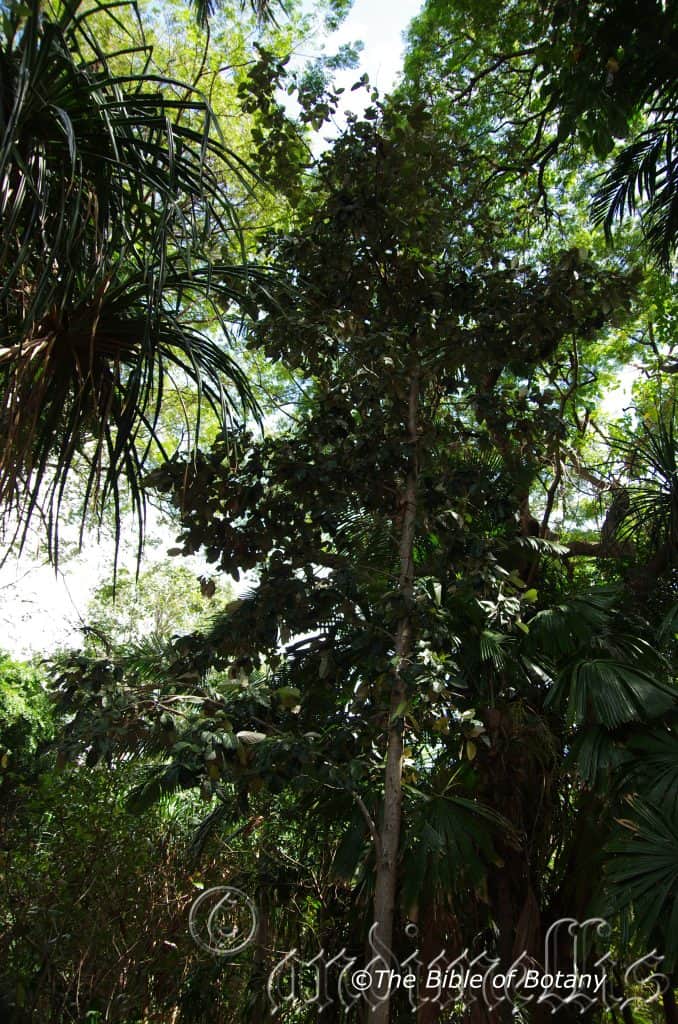
Townsville Qld.
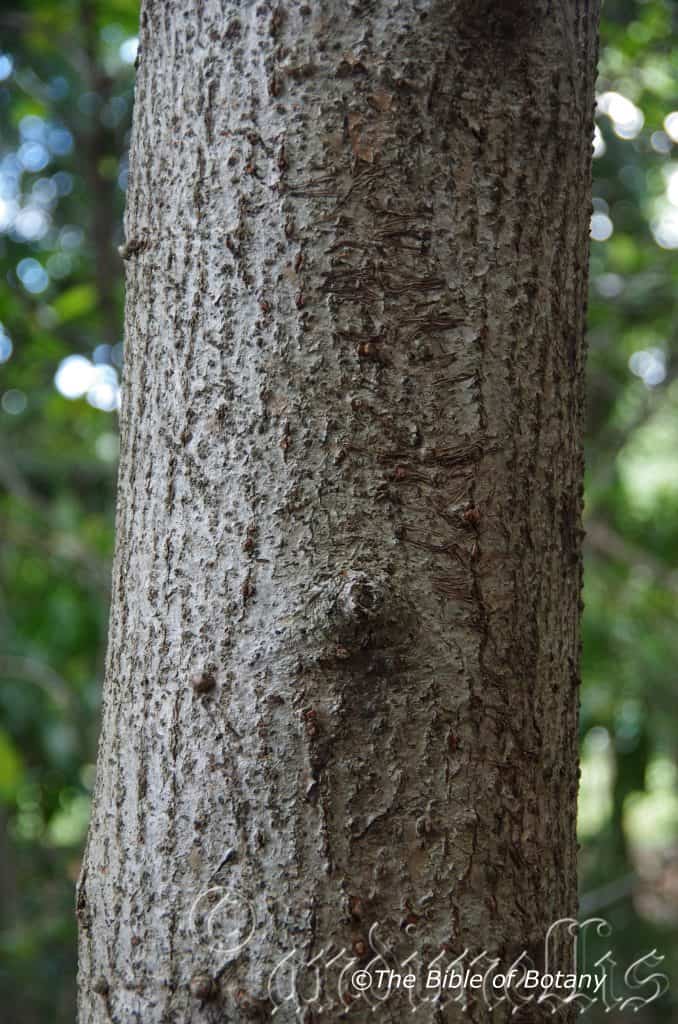
Townsville Qld.
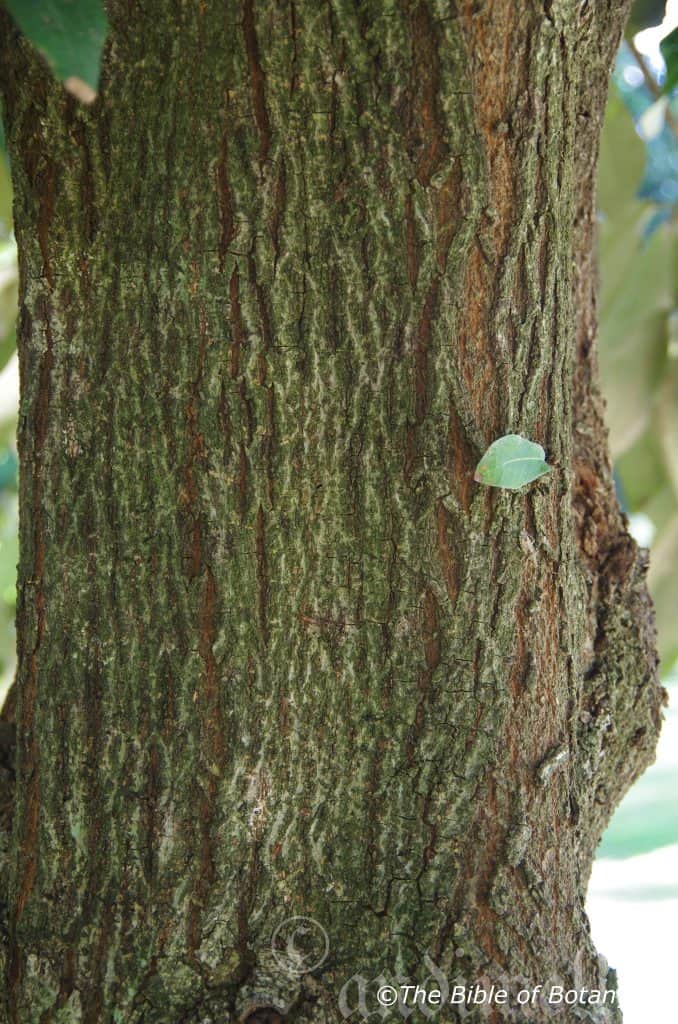
Townsville Qld.
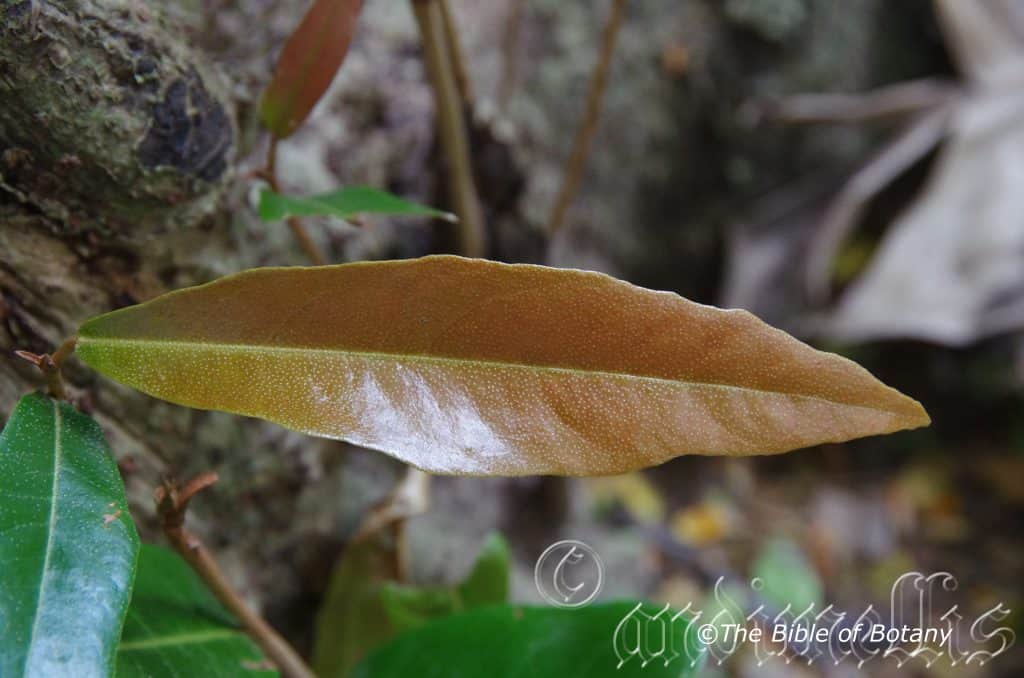
Townsville Qld.
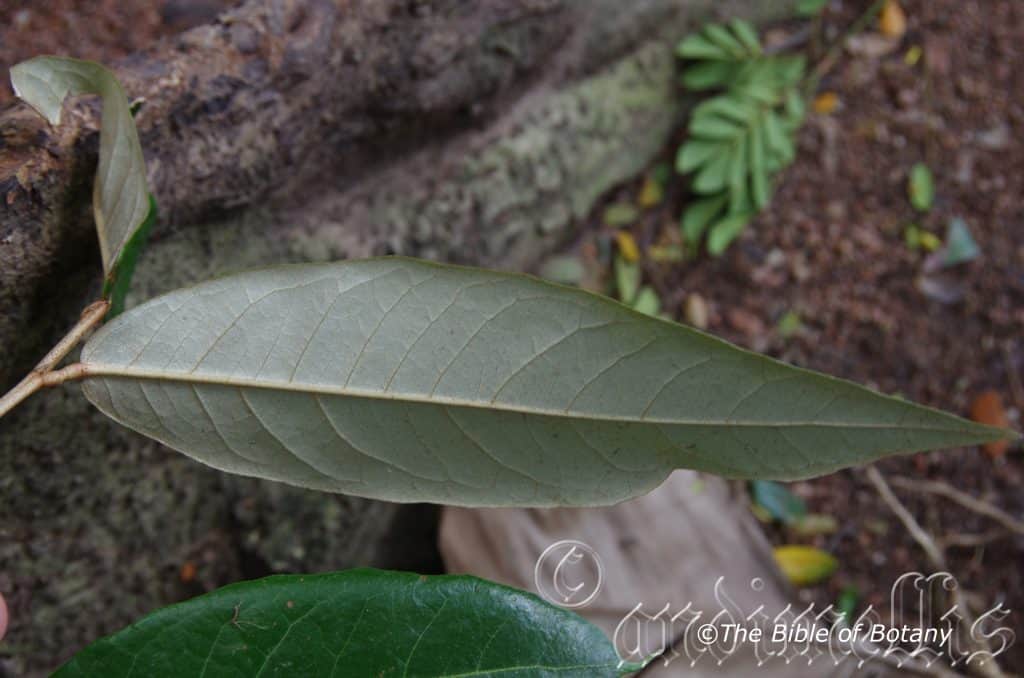
Townsville Qld.
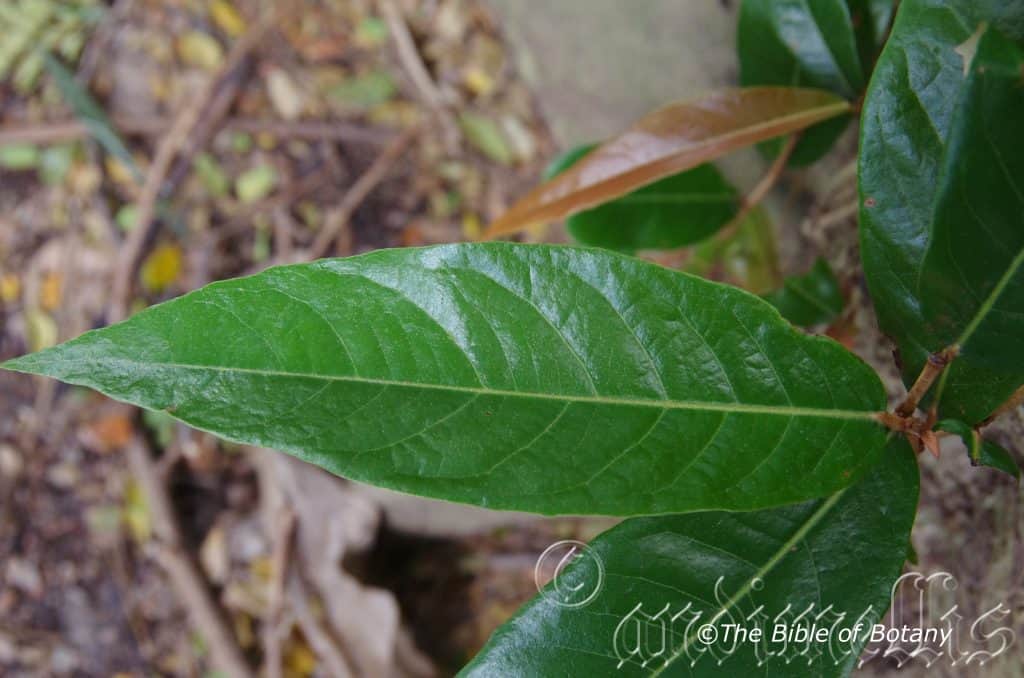
Townsville Qld.
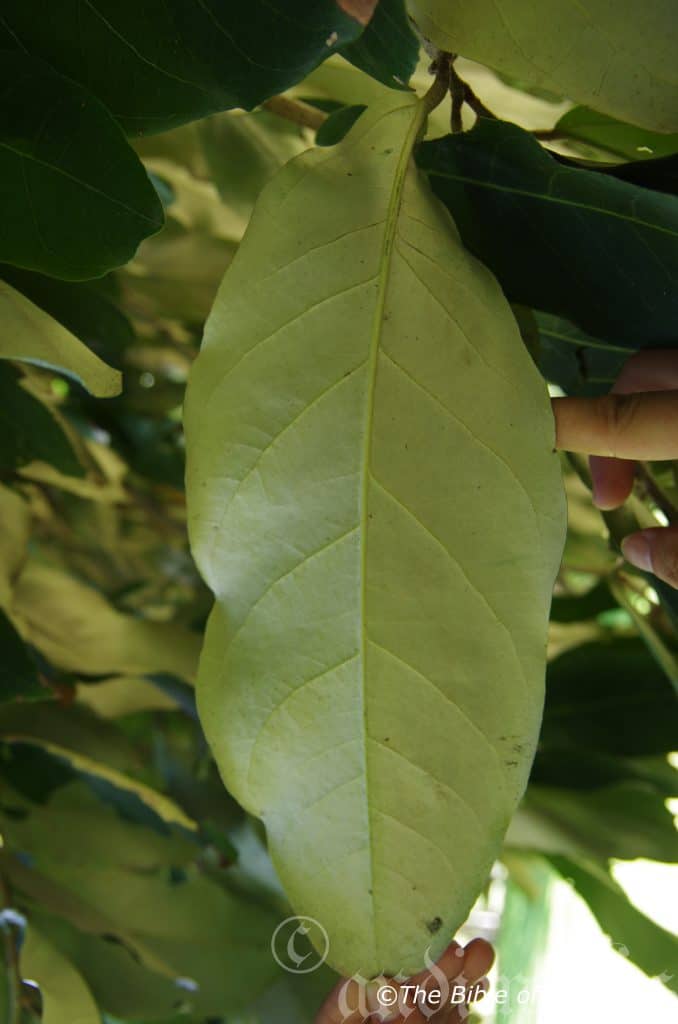
Townsville Qld.
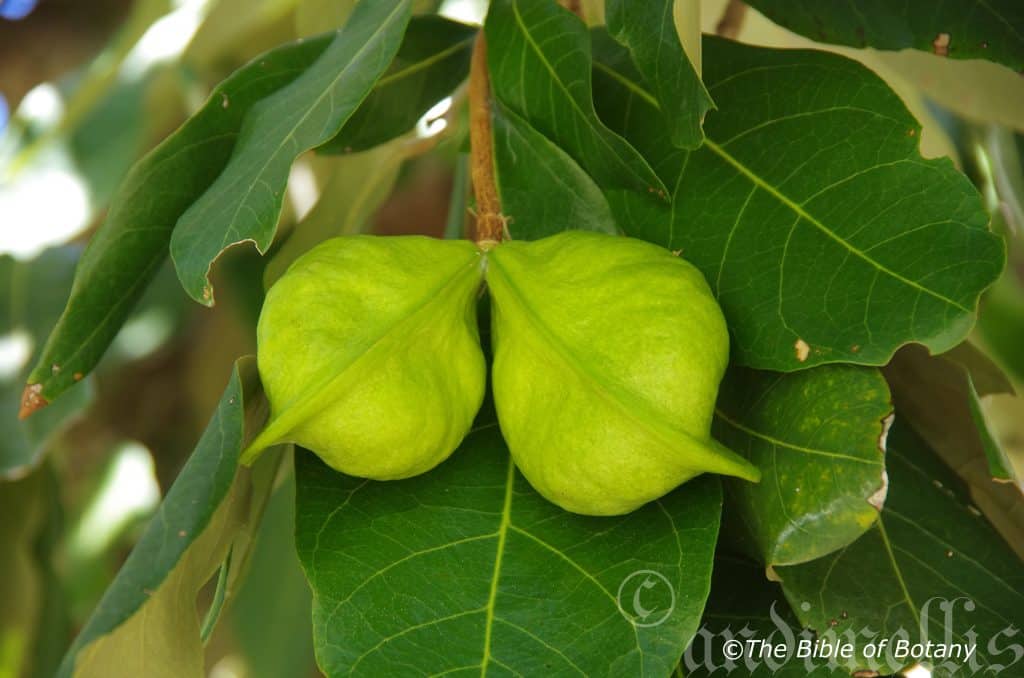
Townsville Qld.
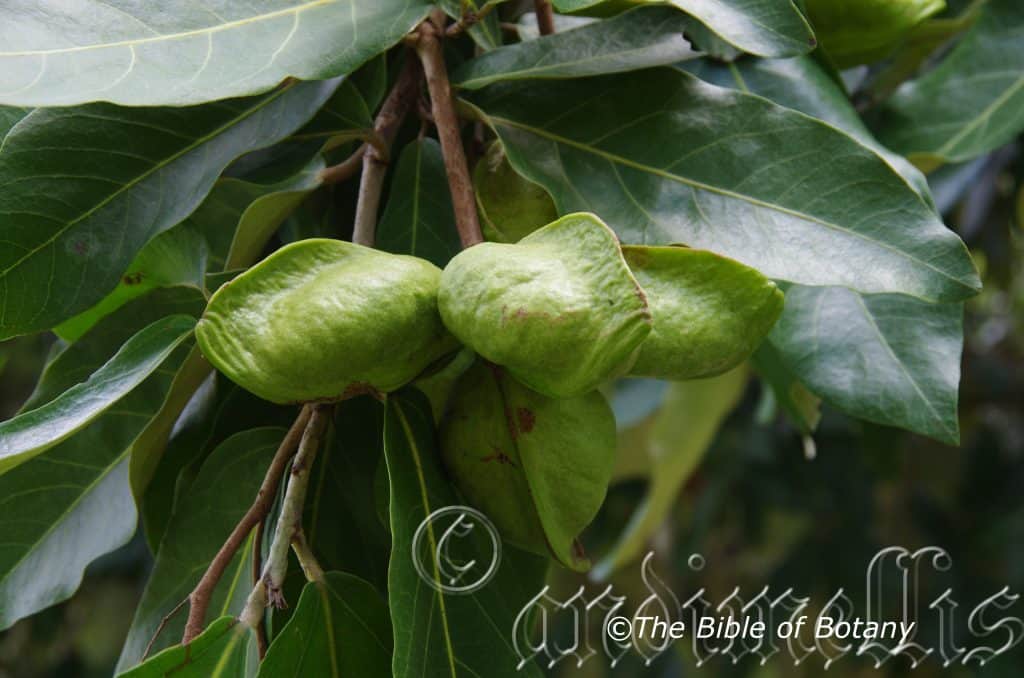
Townsville Qld.
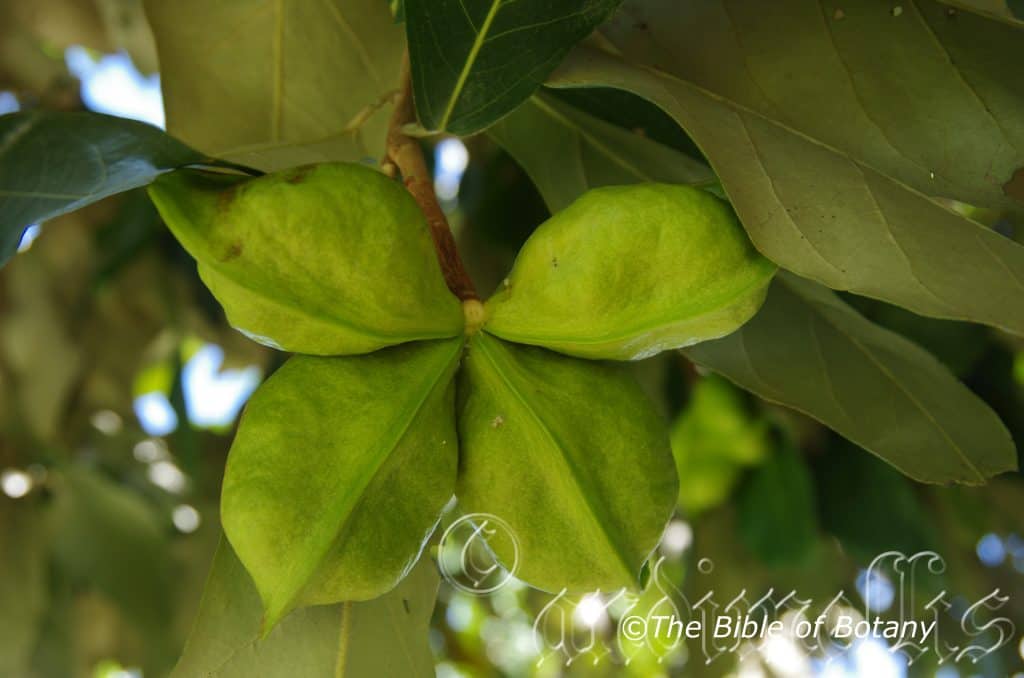
Townsville Qld.
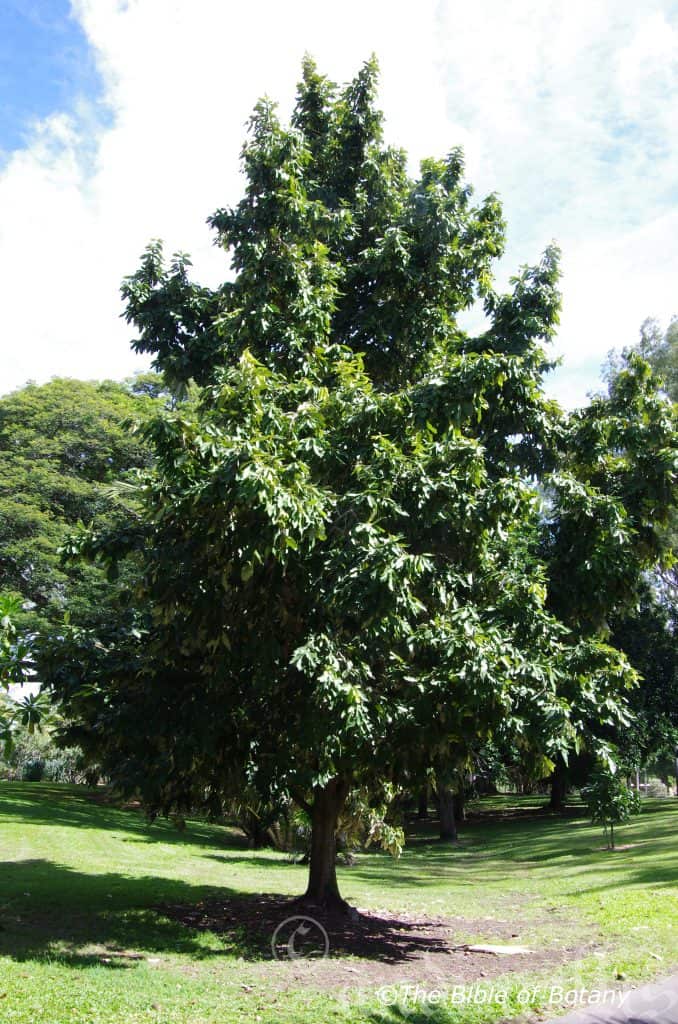
Townsville Qld.
Heritiera littoralis
Classification
Unranked: Eudicots
Unranked: Rosids
Class: Magnoliopsida
Order: Malvales
Family: Malvaceae
Genus: Is named in honour of Charles L’Heritier de Brutelle; 1746-1800, who was a French botanist who described the first Eucalyptus species namely Eucalyptus obliqua.
Specie: From Littoralis, which is Latin for from the seashore. It refers to plants which grow along coastal estuaries, mudflats, frontal dunes or behind the frontal dunes
Sub specie:
Common Name: Brown Booyong or White Booyong are the 2 most common of a long list of common names. There is some dispute in the genre at the moment that the northern and southern species may in fact be two distinctly different species.
Distribution:
Heritiera littoralis is found south from the tip of Cape York Peninsular to Mackay in coastal Queensland. It is found on and east the Great Dividing Range to the coast.
It is also found east from western Indonesia through New Guinee to the many of the 800 odd Austronesian Islands in the northern and western Pacific Islands.
https://avh.ala.org.au/occurrences/search?taxa=Heritiera+littoralis#tab_mapView
Habitat Aspect Climate:
Heritiera littoralis prefers full shade to dappled shade. It grows on the edge of mangrove forest and littoral vine forests. The altitude ranges from 1 meter ASL to 15 meters ASL.
The temperatures range from 8 degrees in July to 38 degrees in January.
The rainfalls range from lows of 850mm to an average of 3600mm annually.
Soil Requirements:
Heritiera littoralis prefers better quality soils loams to medium clays. The soils are usually derived from sandy to very fine silt alluvial deposits. The soils pH varies from 5.5pH through to a 8pH. It tolerates waterlogged soils and seasonal fluctuations in inundations for short periods. Very saline soils to extremely saline soils are tolerated.
Height & Spread:
Wild Plants: 15m to 25m by 10m to 15m.
Characteristics:
Heritiera littoralis has a deep brown to grey bark, which is somewhat fissured. Large trees are strongly buttressed from 2 meters to 4 meters above the ground. Branches are glabrous, light grey, while the juvenile branchlets are fawnish and densely covered in fawn pubescent and stellate hairs.
Heritiera littoralis leaves are large oblong-elliptical and measure 140mm to 290mm in length by 70mm to 130mm in width. The petiole measures 4mm to 10mm in length. The discolourous leaves are deep sea-green, semi glossy and glabrous on the upper lamina while the lower lamina is silvery white, dull and densely covered in pale brown pubescent hairs and stellate scales. The mid vein is prominent on the lower lamina and slightly rounded on the upper lamina, while the lateral veins are set at 40 to 50 degrees. The margins are entire and slightly undulating. The base is cuneate while the apex is bluntly acute. The margins curve slightly upwards from the mid vein and decurve sharply at the apex. The trees have a distinct white appearance when viewed from below.
The inflorescence is a panicle born from a leaf axis. The deep red-brown rachis, peduncle and peduncules are densely covered in pale, rusty brown stellate hairs. The rachis is shorter or marginally longer than the leaves. There are 100 to 200 individual flowers loosely scattered on each panicle. The greenish to deep purple-pink or cerise perianths are densely covered in short, white, stellate and pubescent hairs internally and externally and measure 5mm to 7mm in length by 5mm to 6mm in diameter. The acute lobes measure 2mm to 3mm in length. The flowers appear throughout the year.
Heritiera littoralis has Fruiting carpels that are ellipsoid and measure 50mm to 100mm in length by 30mm to 60mm in width. The surface is smooth, keeled on one side, but not winged. The seed is surrounded by a fibrous pericarp, which is 5mm to 10mm thick.
Wildlife:
Heritiera littoralis is a food plant for the larval stages of the Common Oakblue Butterfly, Arhopala micale. Common & Waterhouse (1981).
This species may have medicinal properties and is presently being reviewed to establish its potential.
(http://squid2.laughingsquid.net/hosts/herbweb.com/herbage/A13062.htm)
The leaves of this species are regarded as a contraceptive in many parts of the world and here in Australia amongst the aborigines. Cribb (1981).
Cultivation:
Heritiera littoralisis an interesting subject for the larger gardens in tropical and warm subtropical areas. It is an excellent shade tree or when grown as a rainforest plant will develop a buttress but give them 20 years to start the formation of a decent buttress. It is moderately fast growing when given moisture and fertilized on a regular basis. The leaves give an instant littoral rainforest look and add interest with the silvery reverse even when at the juvenile stage. As garden subjects it grows much shorter when grown in the open. It makes a very bushy medium tree when grow in park like scenarios along estuaries and back waters.
The tree is an excellent host for small and large epiphytic ferns like Platycerium bifurcatum and orchids like Dendrobium discolor. It truly does deserve a place in the large garden for this purpose alone and can be used early in its life cycle.
Heritiera littoralis is best grown in the tropics where they respond to the heat and reliable rainfalls. It is cold sensitive plants so is best kept to tropical beach front gardens and restoration work.
Propagation:
Seeds: Heritiera littoralis seeds can be sown directly into the seed raising mix. Plant the seeds directly into 50mm native tubes. Place the tubes in a warm well-lit area of no more than 50mm shade where there is good ventilation. Allow the mix to become dry between each watering. I always lose plants from damping off no matter how clean or aerated the conditions are so allow for some casualties. Germination is rapid and completed in a few months with fresh seeds.
Once the seedlings reach 200mm to 250mm in height plant them out into their permanent position. For mass plantings plant them at 8m to 9m centers for a rainforest of bank establishment projects or 15 meters apart for park land situations.
Fertilize using seaweed, fish emulsion or organic chicken pellets soaked in water on an alternate basis. Fertilize every two months until the plants are established then twice annually in early September or March to maintain health, vitality and better flowering.
Further Comments from Readers:
Hi reader, it seems you use The Bible of Botany a lot. That’s great as we have great pleasure in bringing it to you! It’s a little awkward for us to ask, but our first aim is to purchase land approximately 1,600 hectares to link several parcels of N.P. into one at The Pinnacles NSW Australia, but we need your help. We’re not salespeople. We’re amateur botanists who have dedicated over 30 years to saving the environment in a practical way. We depend on donations to reach our goal. If you donate just $5, the price of your coffee this Sunday, We can help to keep the planet alive in a real way and continue to bring you regular updates and features on Australian plants all in one Botanical Bible. Any support is greatly appreciated. Thank you.
In the spirit of reconciliation we acknowledge the Bundjalung, Gumbaynggirr and Yaegl and all aboriginal nations throughout Australia and their connections to land, sea and community. We pay our respect to their Elders past, present and future for the pleasures we have gained.
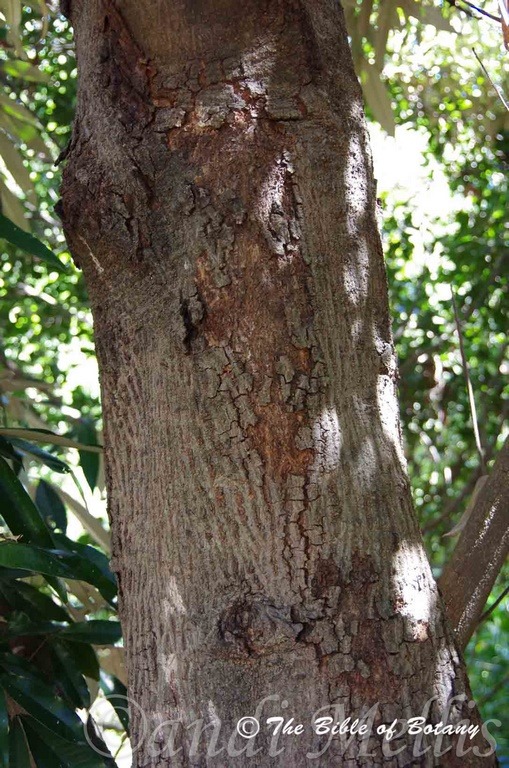
Mount Cootha Botanic Gardens Qld
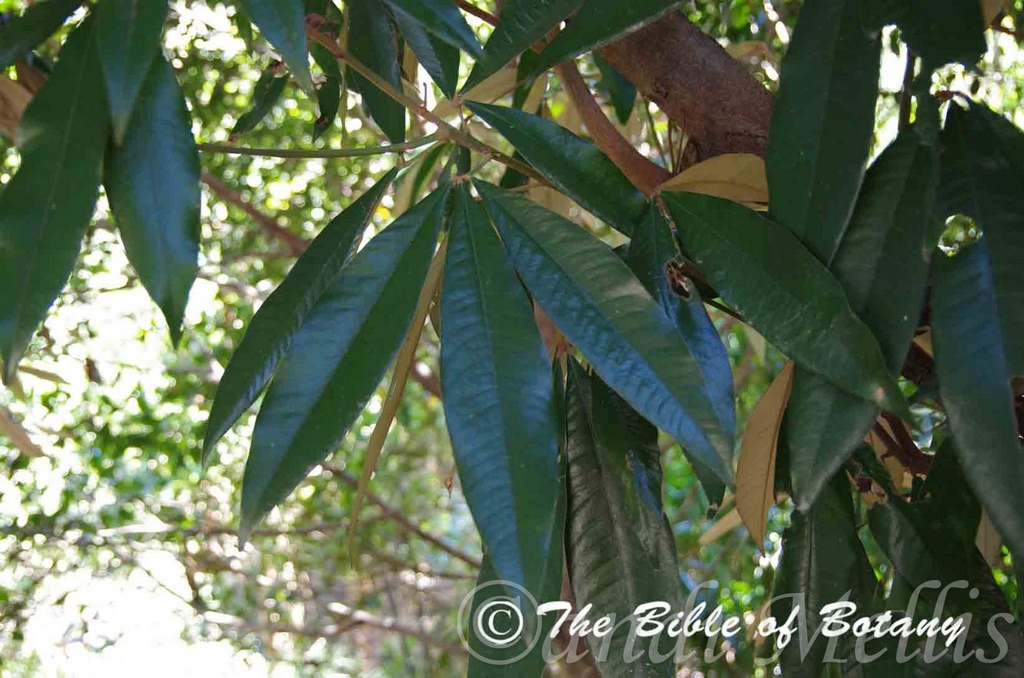
Mount Cootha Botanic Gardens Qld
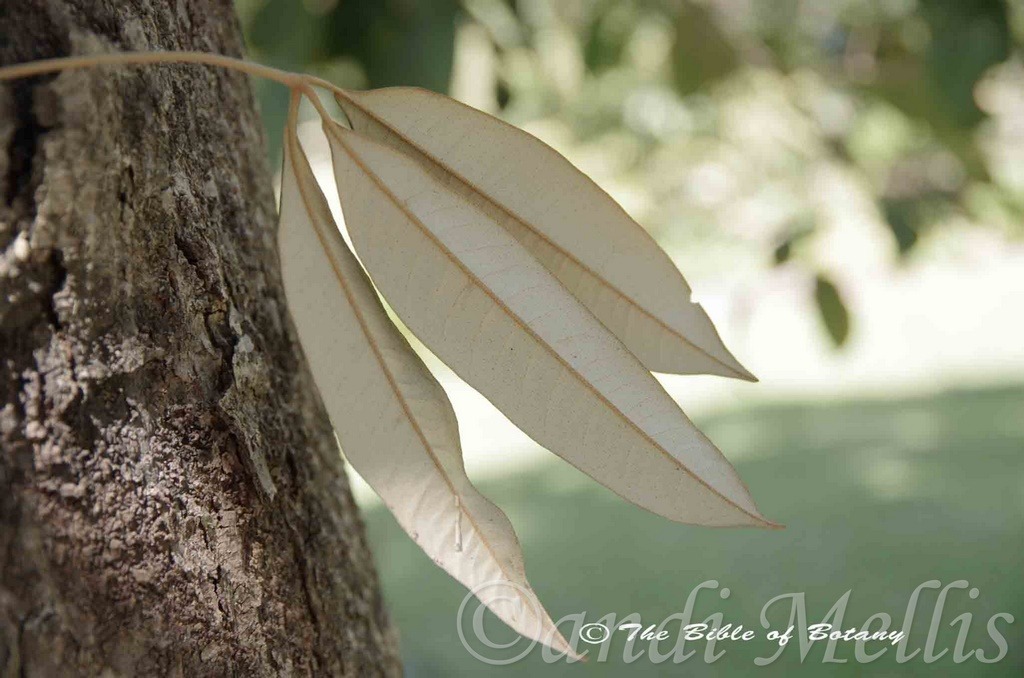
LBG Lismore NSW
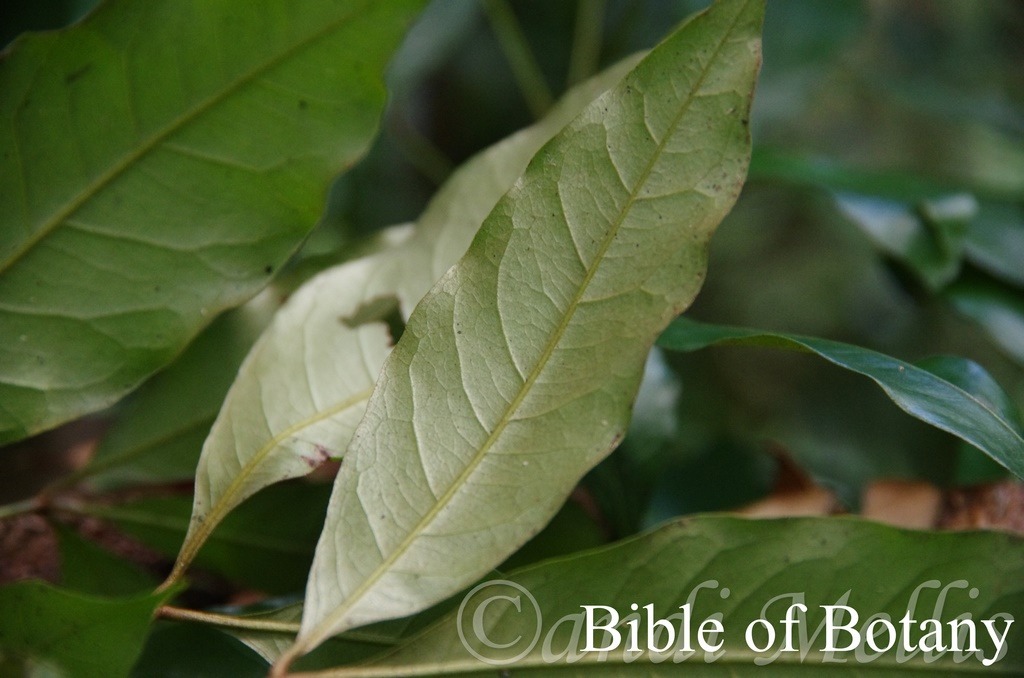
Townsville Qld.
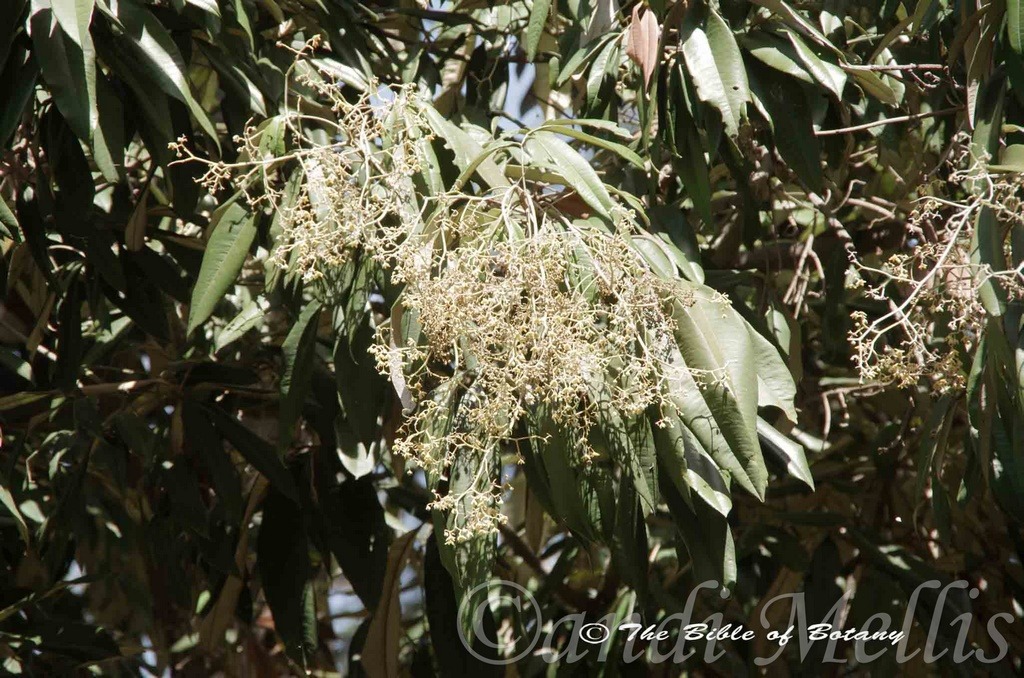
Townsville Qld.
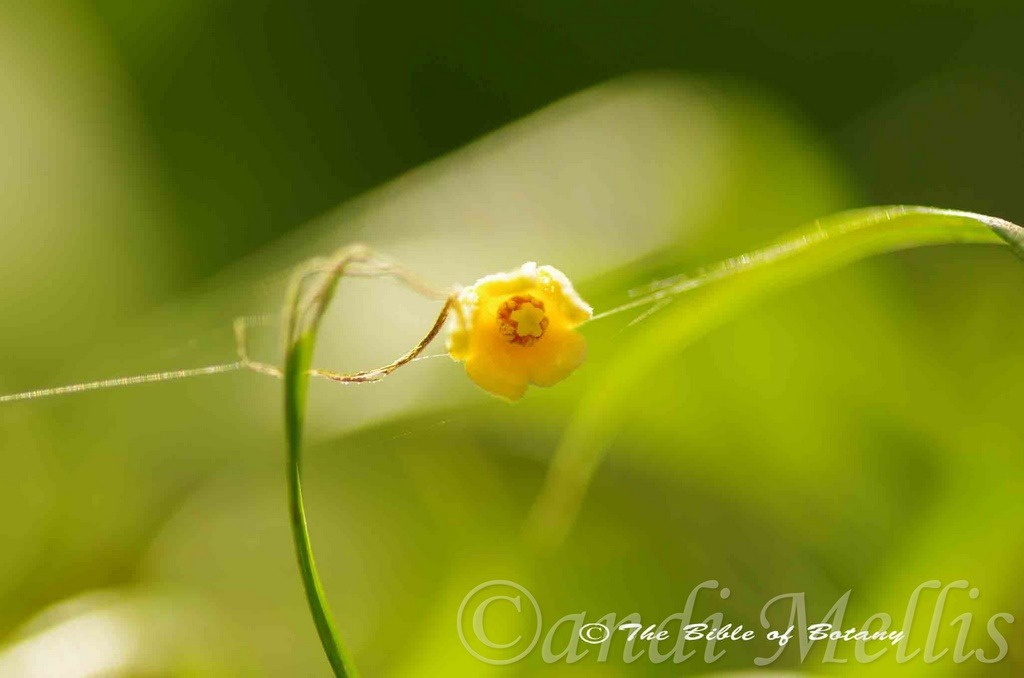
Townsville Qld.
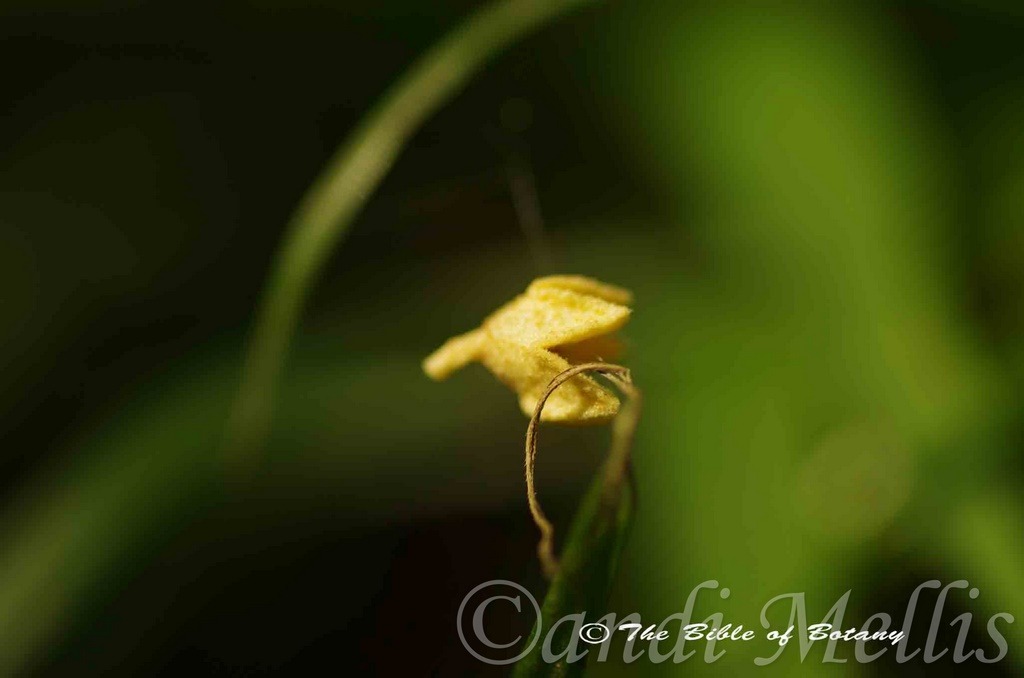
Townsville Qld.

Townsville Qld.
Heritiera trifoliolata
Classification
Unranked: Eudicots
Unranked: Rosids
Class: Magnoliopsida
Order: Malvales
Family: Malvaceae
Genus: Is named in honour of Charles L’Heritier de Brutelle; 1746-1800, who was a French botanist who described the first Eucalyptus species namely Eucalyptus obliqua.
Specie: From Treîs/Tría, which are Ancient Greek or later Tri, which is Latin for three and Folium which is Latin for foliage. It refers to plants, which have three palmate leaflets.
Sub specie:
Common Name: Brown Booyong or White Booyong are the 2 most common of a long list of common names. There is some dispute in the genre at the moment that the northern and southern species may in fact be two distinctly different species.
Distribution:
Heritiera trifoliolata is found south from Cape Melville in far north Queensland to the Hastings River in northern New South Wales to. It is found on and east the Great Dividing Range to the coast.
https://avh.ala.org.au/occurrences/search?taxa=Heritiera+trifoliolata#tab_mapView
Habitat Aspect Climate:
Heritiera trifoliolata prefers full shade to dappled shade. It grows in warm low land, riparian, riverine as well as adjacent slopes in well-developed rainforests. The altitude ranges from 15 meters ASL to 750 meters ASL.
The temperatures range from 3 degrees in July to 38 degrees in January.
The rainfalls range from lows of 950mm to an average of 3200mm annually.
Soil Requirements:
Heritiera trifoliolata prefers better quality soils loams to medium clays. The soils are usually derived from decomposed brown basalts, black basalts or alluvial deposits. The soils pH varies from 6pH through to a 7pH. It does not tolerate waterlogged soils but tolerates seasonal inundations for short periods. Only non-saline soils are tolerated.
Height & Spread:
Wild Plants: 35m to 42m by 10m to 15m.
Characteristics:
Heritiera trifoliolata’s deep brown to grey bark is fissured and heavily encrusted in lichens and mosses. Large trees are strongly buttressed from 2 meters to 4 meters above the ground. Branches are glabrous, light grey turning deep green on the juvenile branchlets. Branchlets are covered in rusty brown scales.
Heritiera trifoliolata’s leaves are even tri-pinnate. The longest leaflet is the center leaflet. The 3 leaflets are lanceolate, elliptical to broad obovate. The leaflets measure 80mm to 140mm in length by 20mm to 60mm in width. The concolourous leaves are deep green semi glossy and glabrous on the upper lamina while the lower lamina is silver and glabrous. The mid vein and lateral veins are densely covered in rusty brown scales. The margins are entire and slightly undulating or finely crenate to being finely and regularly toothed. The base is cuneate while the apex is narrowly acute to broadly acuminate. The margins curve slightly upwards from the mid vein. The main vein is strongly prominent on the lower lamina and is distinctly visible above. Trees have a distinct white appearance when viewed from below. The petiole measures 5mm to 80mm in length while the petiolules measure 2mm to 10mm in length.
The inflorescence of Heritiera trifoliolata is a panicle born from a leaf axis. The deep red-brown rachis, peduncle and peduncules are densely covered in rusty brown stellate hairs. The rachis is shorter or marginally longer than the leaves. There are 100 to 200 individual flowers loosely scattered on each panicle. The individual flowers measure 13mm to 15mm in diameter. The 5 hemi elliptical calyx lobes spread widely and are united near the base for about 0.5mm to 0.7mm. The calyxes measure 5.5mm to 6.5mm in length by 4mm to 4.5mm in width. The external surface is pale fawn to creamy fawn and is densely covered in deep brown stellate hairs. The white inner surface of the calyxes is densely covered in fine tuberculate lumps and is mainly glabrous. The calyx margins are strongly recurved. The 15 to 18 white stamens surround the ovary and measure 2.5mm to 3mm in length. The white pistils measure 4.5mm to 5mm in length while the 5 ocular stigma lobes measure 1mm to 1.2mm in length. The flowers appear from July to September.
Heritiera trifoliolata’s glabrous fruits are thin papery samara which develops without an actual fruiting body. The samara or wing develops away from the point of attachment and turns from the pale green covered in brown stellate scales to unbleached paper brown when ripe. The one sided, hemi elliptical samara has an obtuse apex and measures 50mm to 60mm in length by 12mm to 20mm in width. The mid brown sub globose seeds which are directly attached to the tree measure 8mm to 10mm in diameter.
Wildlife:
Heritiera trifoliolata’s wildlife is unknown to the author however many of the leaves are often in a state of being partially chewed.
Cultivation:
Heritiera trifoliolata is an interesting subject for the larger gardens in tropical and warm subtropical areas. It is an excellent shade tree or when grown as a rainforest plant will develop a buttress but give them 20 years to start the formation of a decent buttress. It is moderately fast growing when given moisture and fertilized on a regular basis. The tri-pinnate leaves give an instant rainforest look and add interest with the silvery reverse even when at the juvenile stage. As garden subjects it grows much shorter than their rain forest cousins growing from 20 meters to 25 meters in height by 10 meters to 15 meters in diameter when grown in the open. They make very bushy small trees when grow in park like scenarios and can be forced to grow as a multi trunk trees once they attain a height of 3 meters to 4 meters increasing their bushiness and attractiveness. As a multi trunk tree I would expect their maximum height to be much less probably in the order of 15 meters to 20 meters by 10 meters to 12 meters.
It should be planted away from buildings, because of their size and the fact that they drop their leaves when stressed. Keep them away from paths as when they eventually start to form the buttress they will lift paths with ease.
The trees are an excellent host for small and large epiphytic ferns and orchids. They deserve a place in the large garden for this purpose alone and can be used early in their life cycle.
Heritiera trifoliolata are best grown in the tropics where they respond to the heat and reliable rainfalls. It is cold sensitive plants and need protecting even where mild frosts occur.
Propagation:
Seeds: Heritiera trifoliolata seeds can be sown directly into the seed raising mix. Plant the seeds directly into 50mm native tubes. Place the tubes in a warm well-lit area of no more than 50mm shade where there is good ventilation. Allow the mix to become dry between each watering. I always lose plants from damping off no matter how clean or aerated the conditions are so allow for some casualties. Germination is rapid and completed in a few months with fresh seeds.
Once the seedlings reach 200mm to 250mm in height plant them out into their permanent position. For mass plantings plant them at 8m to 9m centers for a rainforest of bank establishment projects or 15 meters apart for park land situations.
Fertilize using seaweed, fish emulsion or organic chicken pellets soaked in water on an alternate basis. Fertilize every two months until the plants are established then twice annually in early September or March to maintain health, vitality and better flowering.
Further Comments from Readers:
Hi reader, it seems you use The Bible of Botany a lot. That’s great as we have great pleasure in bringing it to you! It’s a little awkward for us to ask, but our first aim is to purchase land approximately 1,600 hectares to link several parcels of N.P. into one at The Pinnacles NSW Australia, but we need your help. We’re not salespeople. We’re amateur botanists who have dedicated over 30 years to saving the environment in a practical way. We depend on donations to reach our goal. If you donate just $5, the price of your coffee this Sunday, We can help to keep the planet alive in a real way and continue to bring you regular updates and features on Australian plants all in one Botanical Bible. Any support is greatly appreciated. Thank you.
In the spirit of reconciliation we acknowledge the Bundjalung, Gumbaynggirr and Yaegl and all aboriginal nations throughout Australia and their connections to land, sea and community. We pay our respect to their Elders past, present and future for the pleasures we have gained.
Heteropogon contortus
Classification
Unranked: Monocots
Unranked: Commelinidis
Order: Poales
Family: Poaceae
Subfamily: Panicoideae
Tribe: Andropogonaceae
Genus: From Heteros, which is Ancient Greek for other or different and Pogon, which is Ancient Greek for a beard. It refers to structures or organs, which have hairs that are of different lengths and or facing different directions.
Specie: From Contortus, which is Latin for twisted. It refers to structures or organs, which are twisted and folded at the same time.
Sub species:
Common Name: Black Spear Grass.
Distribution:
Heteropogon contortus is widespread throughout the northern half of Australia. It is found east of Karratha in central coastal Western Australia to Hastings River on the east Coast including most of the off shore islands.
https://avh.ala.org.au/occurrences/search?taxa=Heterropogon+contortus#tab_mapView
Habitat Aspect Climate:
Heteropogon contortus prefers full sun. It grows adjacent to clay pans, sandy river beds, on open plains and gentle slopes. The altitude ranges from 5 meters ASL to 750 meters ASL.
The temperatures range from 5 degree in July to 40 degrees in January.
The rainfalls range from lows of 170mm to an average of 1600mm annually.
Soil Requirements:
Heteropogon contortus prefers skeletal sands over sandstone, light clays to medium clays. The soils are usually derived from decomposed sandstone, alluvial deposits or at times accumulated beach sands. The soils pH varies from 5pH through to a 7pH. It does not tolerate waterlogged soils. Non saline soils to very saline soils are tolerated as are salt laden winds.
Height & Spread:
Wild Plants: 1m to 1.5m by 0.5m to 1m.
Characteristics:
Heteropogon contortus’s tufted culms are erect and branched.
Heteropogon contortus’s sheaths are glabrous or sparsely tuberculate and are covered in fawn to brown glandular hairs. The ligulae measures 1mm to 1.5mm in length. The leaf blade is a pale blue green and measures 3mm to 7mm in width. It is glabrous or sparsely covered in brown or white hirsute hairs.
The inflorescences of Heteropogon contortus are racemes born terminally and measure 30mm to 70mm in length. The spathes are leaf like and measure 50mm to 150mm in length while the awns are conspicuously intertwined. The spikelets are sessile and measure 5mm to 7mm in length with a pungent bearded callus. The glumes are equal in size and measure 5mm to 7mm in length while the lower glumes have 5 nerves and the upper glumes have 3.The twisted deep brown awn measures 50mm to 70mm in length. All parts are covered in long white hirsute hairs.
Wildlife:
Heteropogon contortus leaves are a feed source for kangaroos and wallabies while the seeds are attractive to native mice and other small herbivorous marsupials.
Cultivation:
Heteropogon contortus is a useful fodder crop for domestic animals and excellent grass for erosion control along banks, plains and soils that are very poor but well drained. Cultivated it produces copious amounts of mulch and is very easy to control.
It would make a good crop for organic farmers as the bulk produced is large and of fairly good quality.
Propagation:
Seeds: Heteropogon contortus seeds can be sown directly into a seed raising mix. Cover them with 5mm of fine sand and keep moist not wet. Place the tray in a warm sunny position. When the seedlings are 20mm to 30mm tall, prick them out and plant them into 50mm native tubes using a good organic mix.
Once the seedlings reach 150mm to 200mm in height they can be planted out into their permanent position.
Seeds can also be spread directly onto freshly raked or disturbed ground.
Fertilize using seaweed, fish emulsion or organic chicken pellets soaked in water on an alternate basis. Fertilize every two months until the plants are established then twice annually in early September or March to maintain health, vitality and better flowering.
Further Comments from Readers:
Hi reader, it seems you use The Bible of Botany a lot. That’s great as we have great pleasure in bringing it to you! It’s a little awkward for us to ask, but our first aim is to purchase land approximately 1,600 hectares to link several parcels of N.P. into one at The Pinnacles NSW Australia, but we need your help. We’re not salespeople. We’re amateur botanists who have dedicated over 30 years to saving the environment in a practical way. We depend on donations to reach our goal. If you donate just $5, the price of your coffee this Sunday, We can help to keep the planet alive in a real way and continue to bring you regular updates and features on Australian plants all in one Botanical Bible. Any support is greatly appreciated. Thank you.
In the spirit of reconciliation we acknowledge the Bundjalung, Gumbaynggirr and Yaegl and all aboriginal nations throughout Australia and their connections to land, sea and community. We pay our respect to their Elders past, present and future for the pleasures we have gained.
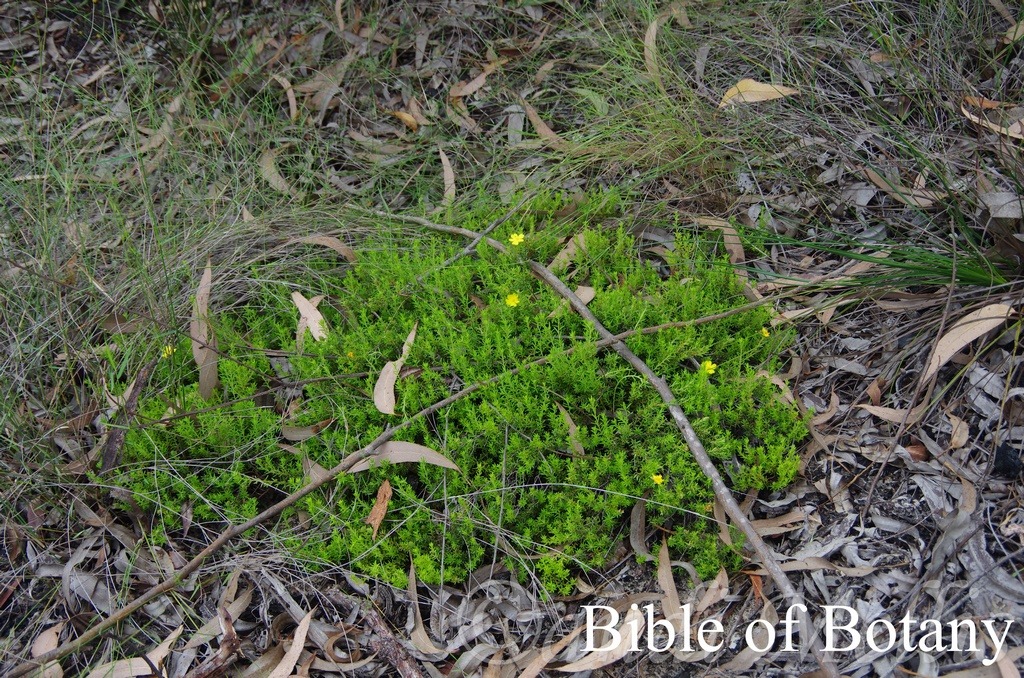
Banyabba Creek NSW

Banyabba Creek NSW

Banyabba Creek NSW
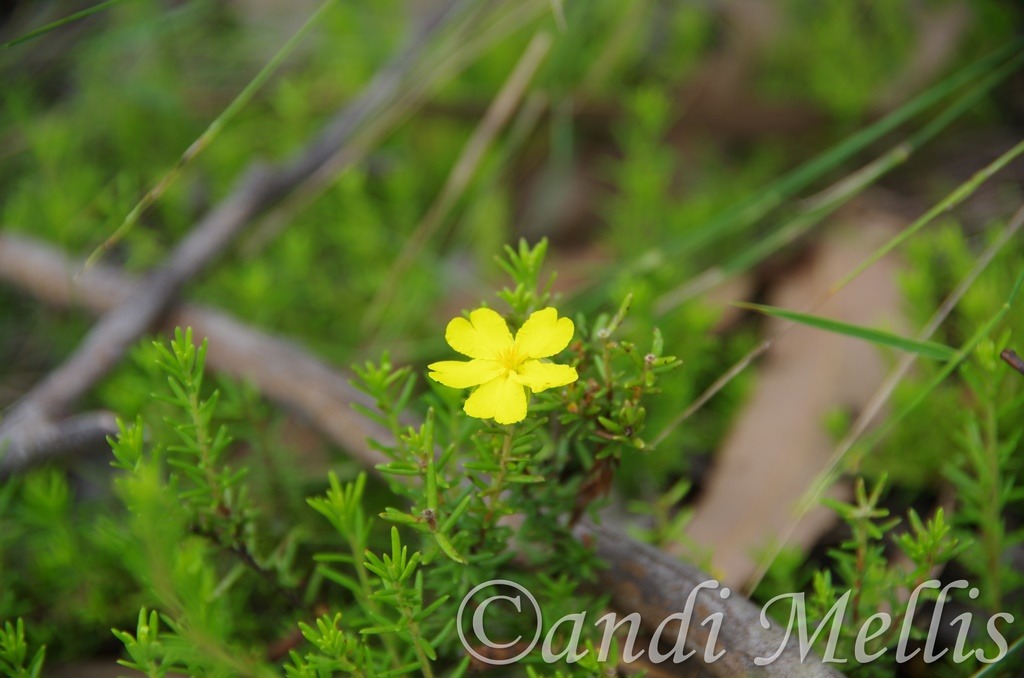
Banyabba Creek NSW
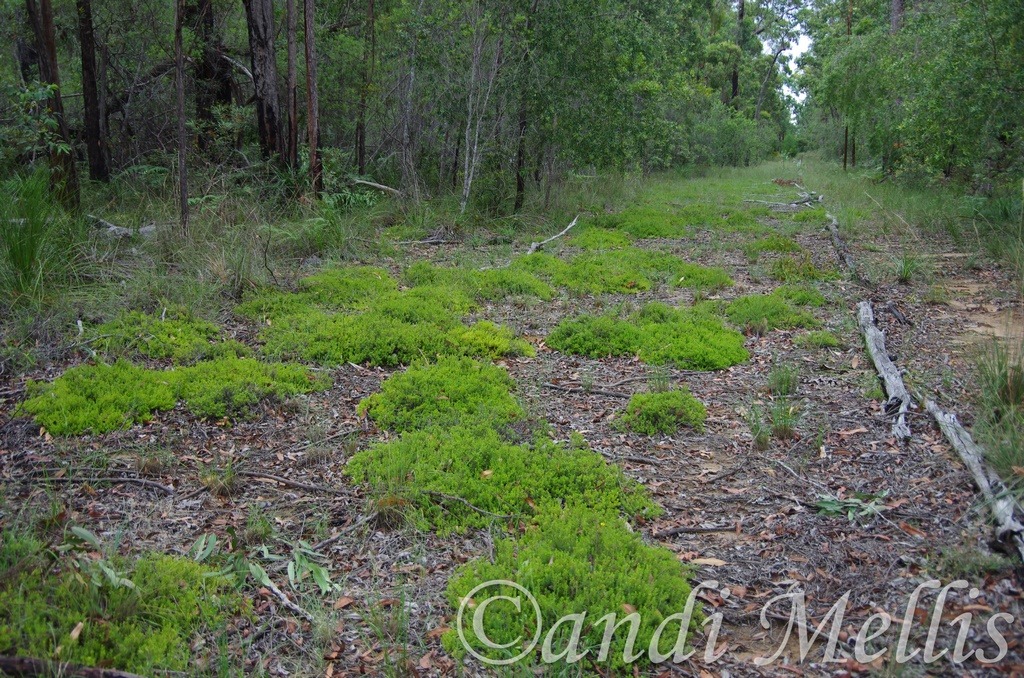
Author’s Garden along boundary fire trail, The Pinnacles NSW
Hibbertia acicularis
Classification
Unranked: Eudicots
Unranked: Core eudicots
Family: Dilleniaceae
Genus: Is named after George Hibbert; 1757-1838, who was a London merchant, patron of botany, an amateur botanist, an advocate of slavery and owned a private Botanic Garden.
Specie: From Acus/Acicula, which is Latin for needle or sharp, and Laris which is Latin for a shape. It refers to organ, which are like a needle.
Sub species:
Common Name:
Distribution:
Hibbertia acicularis is found south from Carnarvon and Castle Tower in central eastern Queensland to Chapple Vale and Wilson’s Promontory in southern Victoria. It is also found in the Whipstick scrub near Bendigo. There are 2 disjunct populations in far north Queensland in the White Mountain National Park, Eungella National Park and Redcliffevale. It is also found on many of the off shore Islands along the east coast.
In Tasmania it is found on the Flinders’ Island group and from Rocky Cape in the north west to Blackman’s Bay in the south east.
In South Australia it is found in the Adelaide Hills and on Kangaroo Island.
https://avh.ala.org.au/occurrences/search?taxa=Hibbertia+acicularis#tab_mapView
Habitat Aspect Climate:
Hibbertia acicularis prefers full sun to dappled shade. It grows in open dry sclerophyll forests and open heaths. The altitude ranges from 15 meters ASL to 850 meters ASL.
The temperatures range from minus 4 degree in July to 40 degrees in January.
The rainfalls range from lows of 500mm to an average of 2400mm annually.
Soil Requirements:
Hibbertia acicularis prefers skeletal to deep sands, light clays to medium clays. The soils are usually derived from decomposed sandstones, alluvial deposits or accumulated peaty beach sands. The soils pH varies from 5.5pH through to a 7pH. It tolerates seasonal wet soils and seasonal high water tables. Non saline soils to very saline soils are tolerated as are salt laden winds.
Height & Spread:
Wild Plants: 0.03m to 0.15m by 0.4m to 0.6m.
Characteristics:
Hibbertia acicularis’s glabrous stems are grey and glabrous. The divaricate branchlets are reddish-brown to rusty-brown and glabrous.
Hibbertia acicularis’s linear to very narrow elliptical leaves measure 6mm to 40mm in length by 0.5mm to 2mm in width. The bases are tapered while the apexes are usually acute with short, pungent mucronate tip or at times obtuse with a short, pungent mucronate tip. The discolourous laminas are deep green to sea-green, glossy and glabrous on the upper lamina while the lower lamina is paler and covered in fine papillose lumps. The laminas decurve in an arch from the mid vein the margins while the margins are entire and revolute. The mid vein is prominent on the lower lamina and distinctly visible from the upper lamina. The petioles are 0.5mm to 2mm in length.
The inflorescences of Hibbertia acicularis are born terminally and from the leaf axis. The flowers measure 10mm to 18mm in diameter. The 5 pale grass-green, broad lanceolate sepals are cupuliform at the broad acute apexes and are sparsely covered in white hooked, sericeous hairs externally, internally and especially along the margins. The sepals measure 6mm to 8.5mm in length by 4mm to 4.5mm in width. The 5 bright yellow petals are oblong-elliptical with a deep emarginate apex and measure 8mm to 11mm in length by 4.5mm to 6mm in width. The peduncles measure 3mm to 10mm in length.
There are 3 or 4 bright yellow stamens on one side of each of the 2 carpels. The stamens measure 1.5 to 3mm in length while the 6 to 14 yellow staminodes are clustered and measure 2mm to 3mm in length. The pale lime-green pistil measures 3mm to 4.5mm in length. The flowers appear from September to late February and often flower into March when weather conditions and soil fertility are good.
Hibbertia acicularis’s fruits are globose capsules or berries. The calyxes are persistent on the fruits. The carpels are usually densely covered in white sericeous hairs or rarely glabrous. The green fruits turn reddish-brown when ripe. The deep brownish almost black globose seed measures 2.8mm to 3.2mm in diameter.
Wildlife:
Hibbertia acicularis’s wildlife is unknown to the author however small black beetles have been observed on the flowers and these were covered in yellow pollen.
Cultivation:
Hibbertia acicularis is a very beautiful small native shrub or decumbent ground cover which is suitable for small gardens to the largest garden. It is an excellent colourful addition for sub-tropical to cool temperate zones. As garden subjects they will grow to 0.1 meter to 0.25 meters in height by 0.2 meters to 0.5 meters in diameter.
It is fast growing, drought tolerant once established and are cold tolerant to temperatures at least as low as 6 degrees with only minor burning of the tips. I would be tempted to grow this plant further north along the Range to at least Townsville where frosts are encountered.
It is most suitable for use around swimming pools, sunny courtyards, besides pathways, rockeries, along sandy banks or along or between drive ways.
If it is placed around a pool then I would place them into the center not at the ends and plant 2 or 3 in a straight row for a very formal look or use curves for the natural look. Here the choice of companion plants to use either side is limited only by size of the area to be landscaped. Leaf size or flower colour is limited by your imagination. The only limitation would be not to use other yellow flowering plants.
It is great adjacent to small areas of bush close to paths or the house so their deep yellow flowers can be viewed regularly. It is also suited for planting in small sunny rockeries as a fill in plant. Here they can be planted in small groups of 3 to 9 or as a standalone plant scattered here and there to create a harsher more barren look with other arid or alpine plants. If it is surrounded by slightly taller plants with larger leaves and red, deep blue or purple flowers they will create a very strong scene with depth and breadth especially when it is in flower.
Again 2 to 9 planted back from a bend or corner will become a very strong focal point when in flower, gain a lot of attention whether you are coming or going because of the fresh clean look of the foliage even in the driest of times. They can be tip pruned to make them bushier. Hard pruning can be done once the plants are established but some set back may occur so it is better to trim the plants on a regular or annual basis. They respond well to pruning recovering quickly and often increasing the number of flowers on the new growth.
Ensure that the whole plant is on display from most sections of the garden as the flowers are a real bonus.
Whether it is in flower or not these plants will catch your attention. Mass plantings are best achieved by planting them at 0.4 meters to 1 meter centers.
Propagation:
Seeds: Hibbertia acicularis seeds can be sown directly onto a seed raising mix. Cover them with 1mm of fine sand and keep moist not wet. Place the tray in a warm sunny position or beneath 30mm shade cloth. When the seedlings are 20mm to 30mm tall, prick them out and plant them into 50mm native tubes using a good organic mix.
Once the seedlings reach 150mm to 200mm in height they can be planted out into their permanent position. Nip the growing tips out, plant and fertilize.
Cuttings: Use 40mm to 60mm long half ripened material when growing from cuttings from the present season’s growth. Use 100mm long half ripened material when growing from cuttings from the present season’s growth. Take them in mid-autumn or early spring. Remove half the leaves from the bottom section being careful not to tear the bark. Take a 10mm slice off the bark from the bottom of the cutting on one side.
1 Prepare the cutting mix by adding one third sharp clean river sand, one third peat and one third perlite. These ingredients are sterilize,
2 Select good material from non diseased plants,
3 Select semi green stems for cuttings. Look for a stem with two or three nodes,
4 Place the cutting on a flat, hard surface, and make a clean cut down one side of the cutting at the base for 10mm with a sharp sterile knife or razor blade. – This scarification of the node will increase the chances of roots emerging from this spot. Now remove all but one or two the leaves, leaving the apex leaves in tact. If the leaves are very large in proportion to the stem, cut off the apical halves.
5 Fill a saucer with water, and place a little medium strength rooting hormone into another container like a milk bottle top. Dip the node end of the cutting into the water and then into the rooting hormone. Tap off any excess hormone,
6 Use a small dipple stick or old pencil to poke a hole into the soilless potting mix. Ensure the hole is slightly larger than the stem diameter and be careful not to wipe the rooting hormone off the cuttings base, place the cuttings in a pattern ensuring the cuttings are not touching each other,
7 I like to place the pots in Plastic bags to help maintain temperature and moisture. Place in a semi shaded place like under 50mm shade cloth.
8 When the cuttings have struck, open the bag to allow air circulation for a few days to a week,
9 Once hardened off remove the cuttings from the bag and allow to further hardening for a few more days,
10 Transplant into a good potting mix to grow on.
Fertilize using seaweed, fish emulsion or organic chicken pellets soaked in water on an alternate basis. Fertilize every two months until the plants are established then twice annually in early September or March to maintain health, vitality and better flowering.
Further Comments from Readers:
Hi reader, it seems you use The Bible of Botany a lot. That’s great as we have great pleasure in bringing it to you! It’s a little awkward for us to ask, but our first aim is to purchase land approximately 1,600 hectares to link several parcels of N.P. into one at The Pinnacles NSW Australia, but we need your help. We’re not salespeople. We’re amateur botanists who have dedicated over 30 years to saving the environment in a practical way. We depend on donations to reach our goal. If you donate just $5, the price of your coffee this Sunday, We can help to keep the planet alive in a real way and continue to bring you regular updates and features on Australian plants all in one Botanical Bible. Any support is greatly appreciated. Thank you.
In the spirit of reconciliation we acknowledge the Bundjalung, Gumbaynggirr and Yaegl and all aboriginal nations throughout Australia and their connections to land, sea and community. We pay our respect to their Elders past, present and future for the pleasures we have gained.
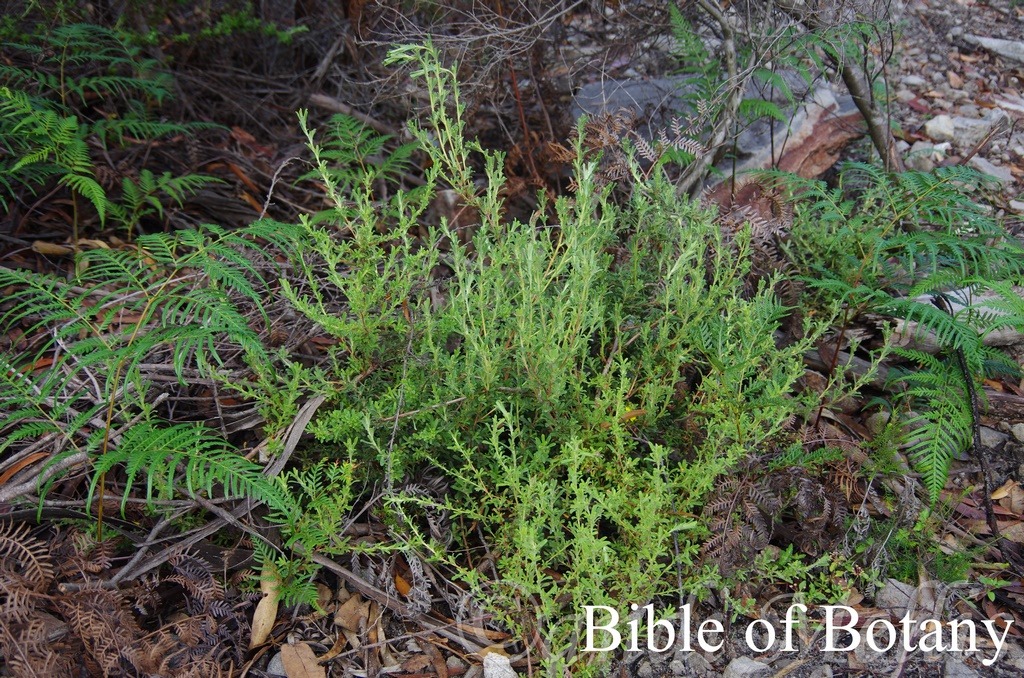
Sherwood Nature Reserve NSW

Sherwood Nature Reserve NSW
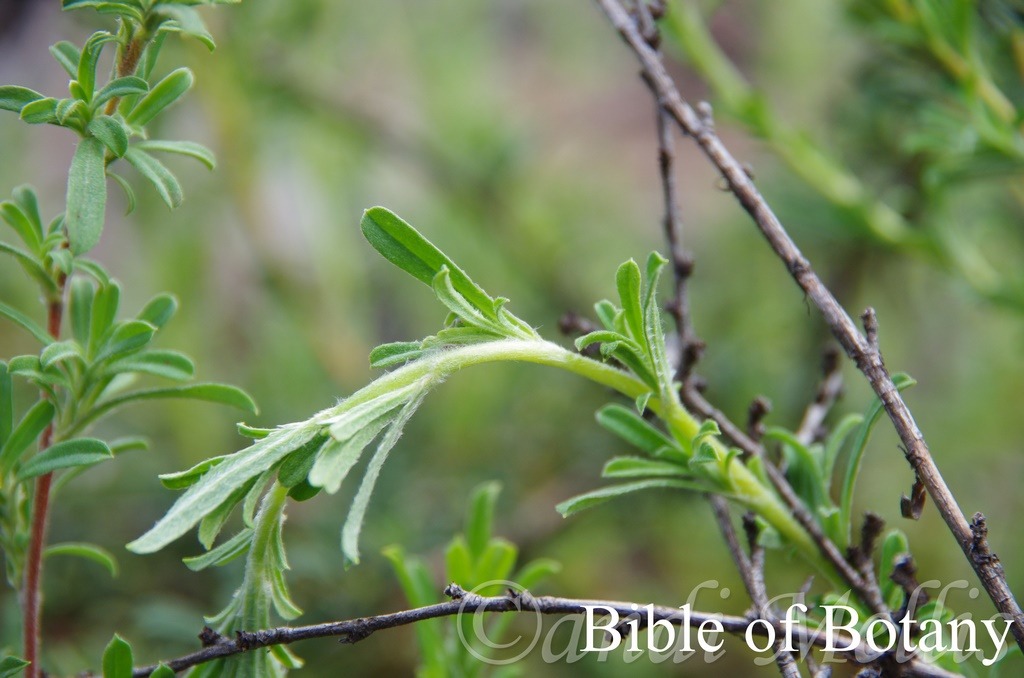
Sherwood Nature Reserve NSW

Yurigaiir National Park NSW

Sherwood Nature Reserve NSW
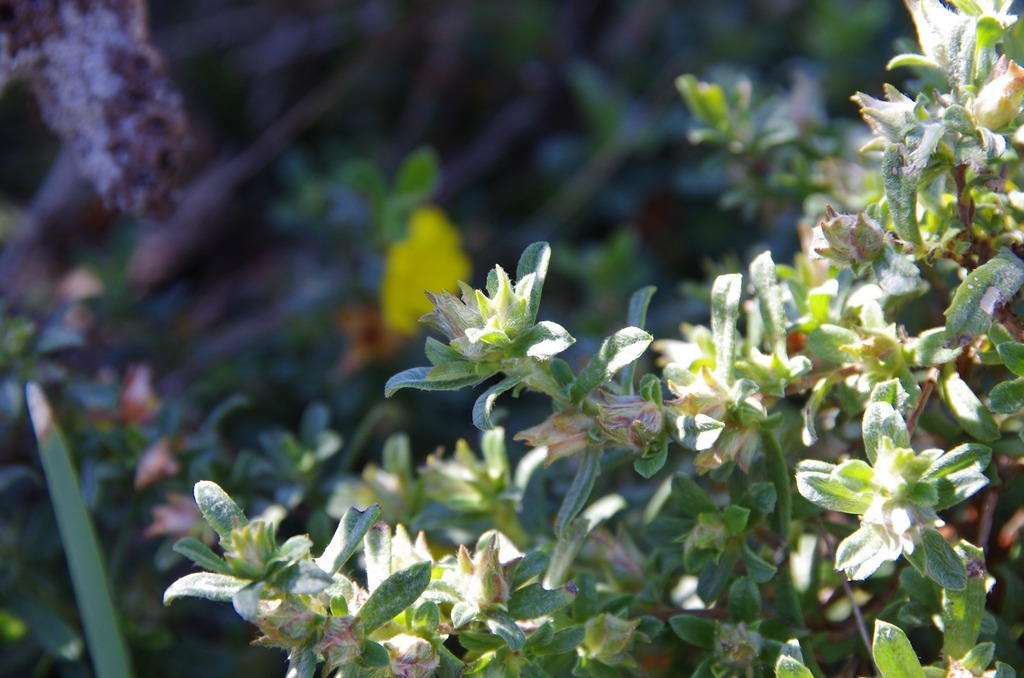
Yurigaiir National Park NSW
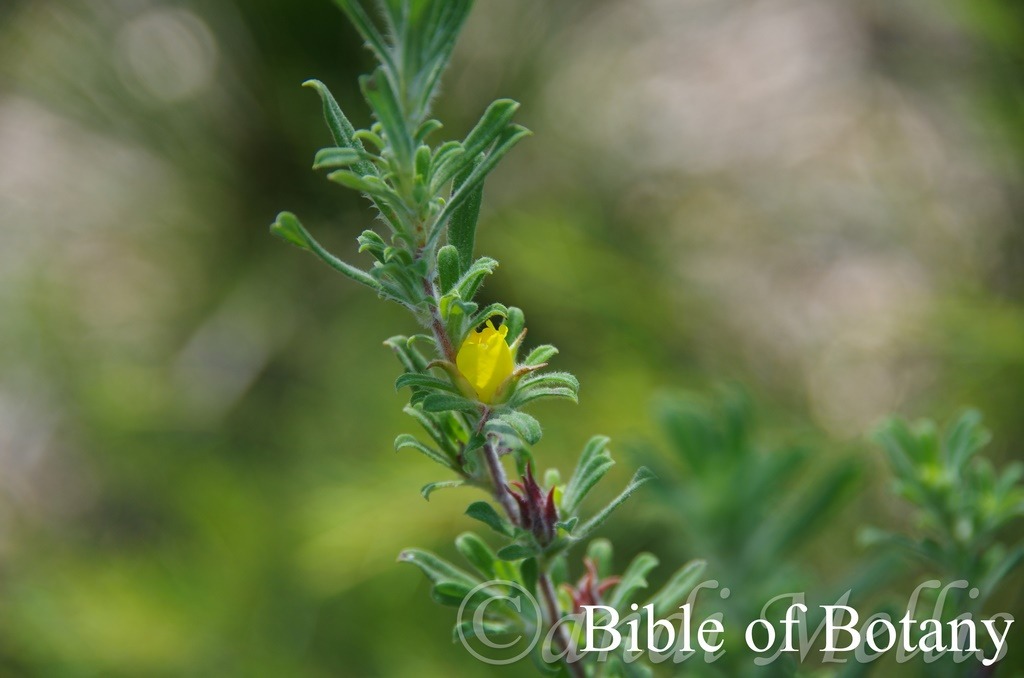
Sherwood Nature Reserve NSW
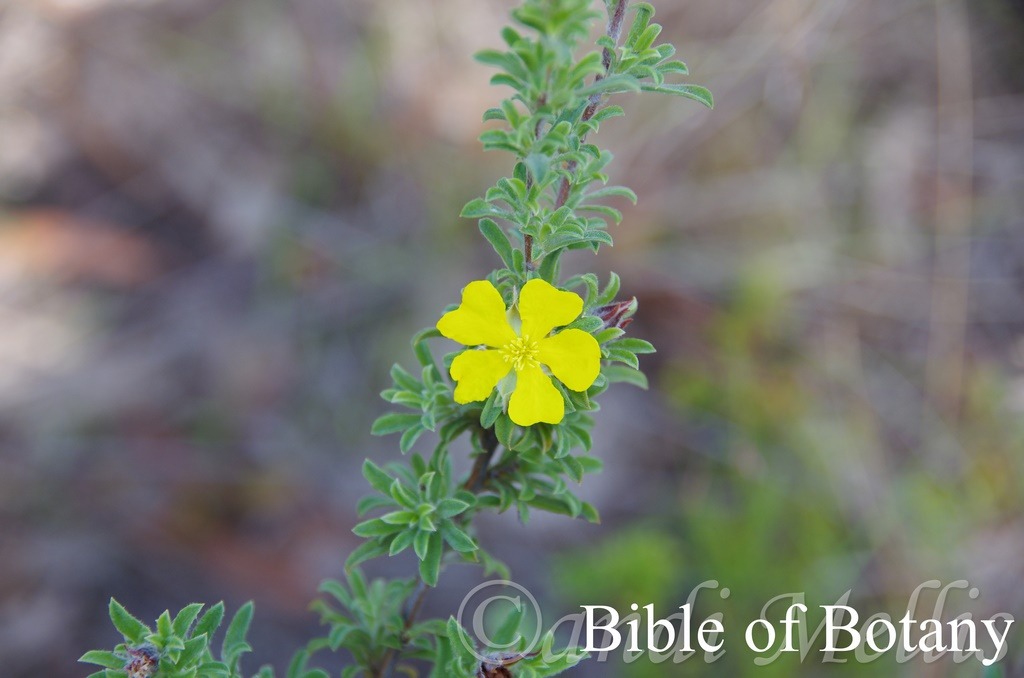
Sherwood Nature Reserve NSW
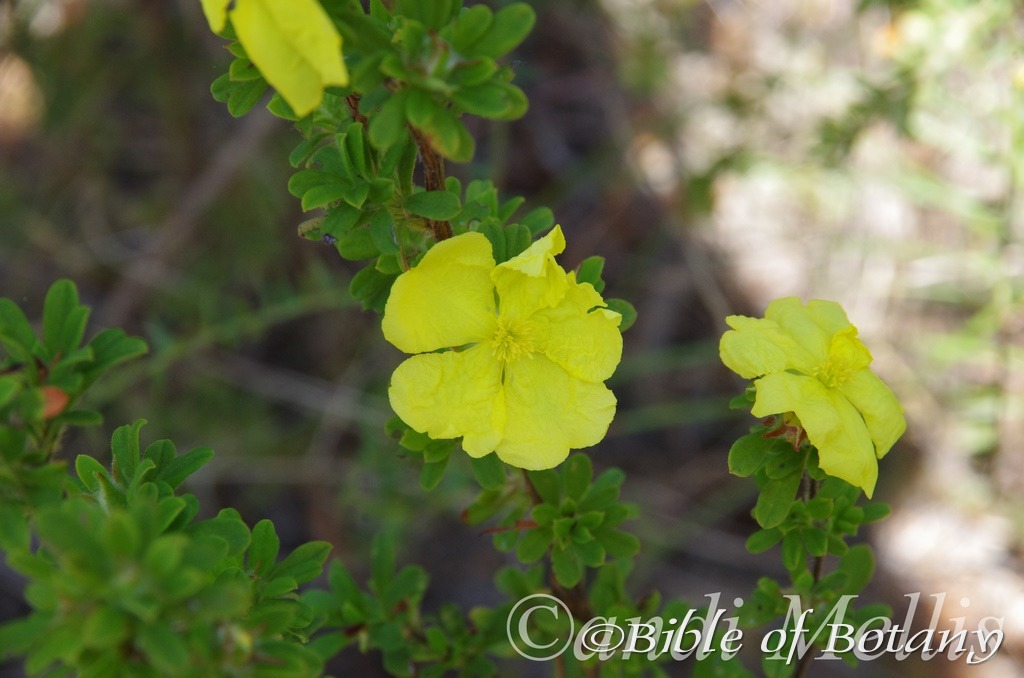
Morgan’s Camp Trail Fortis Creek National Park NSW
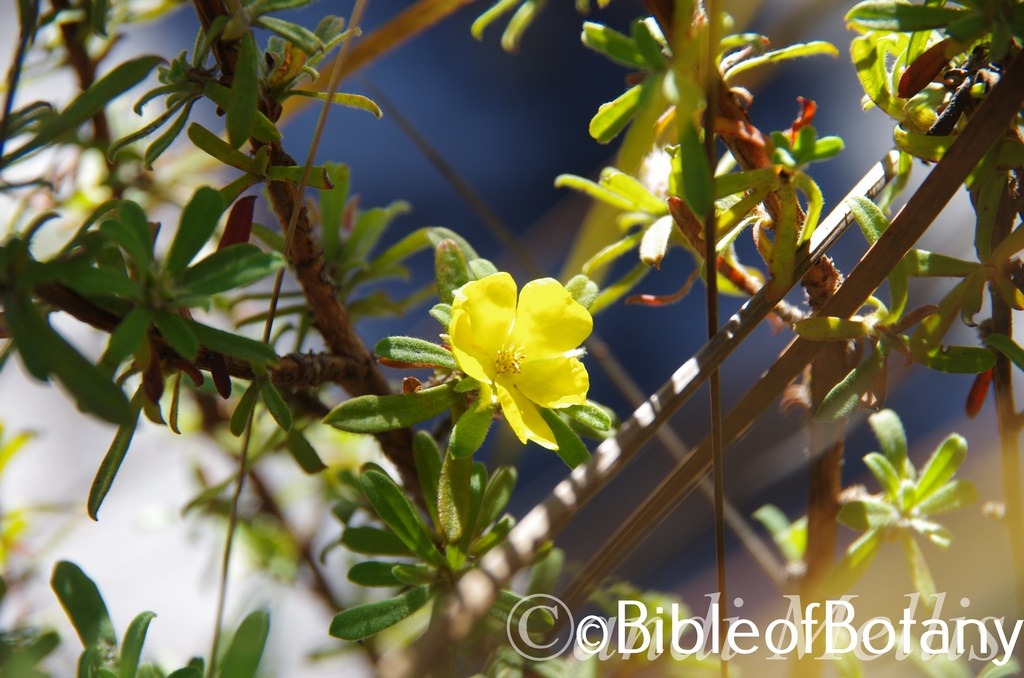
Yurigaiir National Park NSW

Sherwood Nature Reserve NSW
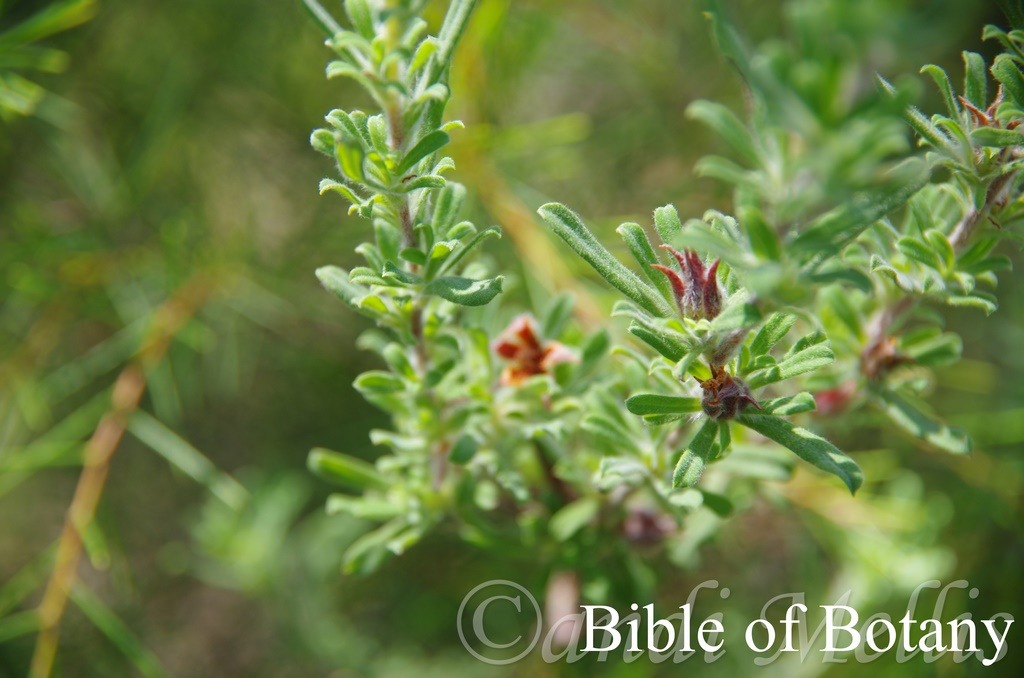
Sherwood Nature Reserve NSW
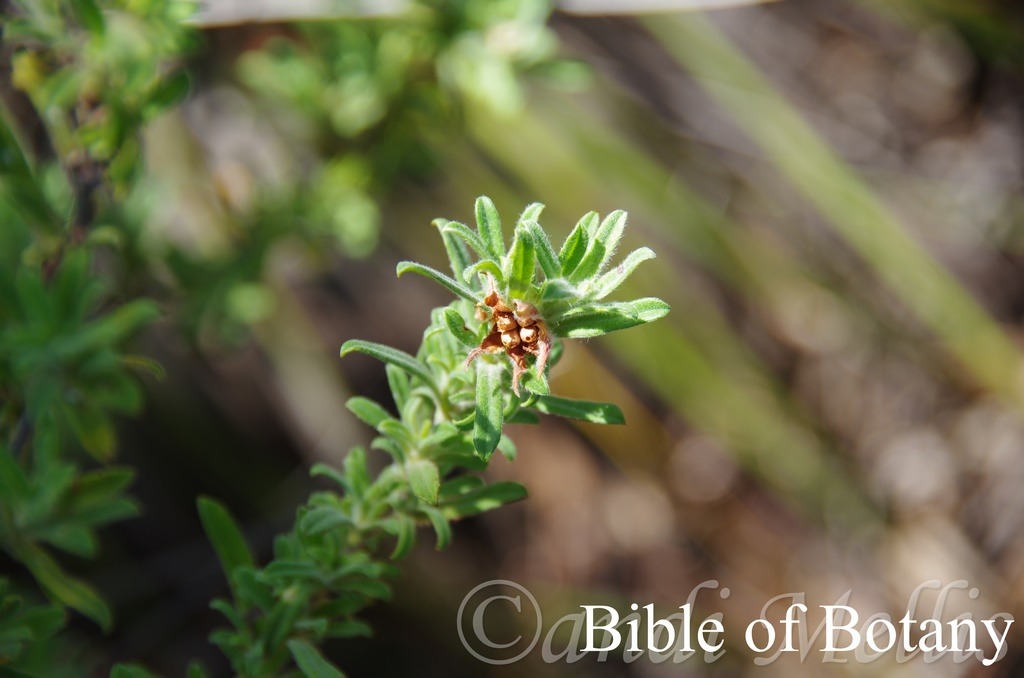
Sherwood Nature Reserve NSW
Hibbertia acuminata
Classification
Unranked: Eudicots
Unranked: Core eudicots
Family: Dilleniaceae
Genus: Is named after George Hibbert; 1757-1838, who was a London merchant, patron of botany, an amateur botanist, an advocate of slavery and owned a private Botanic Garden.
Specie: From Acūmināta, which is Latin for being contracted or concave on the sides before protracting to a sharp point. It refers to apexes on the leaves or phyllodes, which have short sharp points.
Sub species:
Common Name:
Distribution:
Hibbertia acuminata is restricted to a small area south from Woodenbong to Coffs Harbour in far Northern New South Wales.
https://avh.ala.org.au/occurrences/search?taxa=Hibbertia+acuminata#tab_mapView
Habitat Aspect Climate:
Hibbertia acuminata prefers dappled shade to full sun. It grows in coastal headlands, plateaus and on the ranges in dry sclerophyll forests, dry woodland heaths or dry open heaths. The altitude ranges from 5 meters ASL to 400 meters ASL.
The temperatures range from 10 degree in July to 34 degrees in January.
The rainfalls range from lows of 1000mm to an average of 1705mm annually.
Soil Requirements:
Hibbertia acuminata prefers to grow on skeletal sands, skeletal red light fatty clays or medium clays. The soils are usually derived from decomposed sandstones. The soils pH varies from 5.5pH through to a 7pH. It does not tolerate waterlogged soils. Non saline soils to moderately saline soils are tolerated as are salt laden winds.
Height & Spread:
Wild Plants: 0.3m to 1m by 0.5m to 1m.
Characteristics:
Hibbertia acuminata’s glabrous stems are brown, with longitudinal flaky sections. The branchlets are spreading, semi erect to erect and often rely on other shrubs for support. The branchlets are rusty-brown and turn mid blue green to mid grass-green and are sparsely covered in white to off white semi appressed sericeous hairs.
Hibbertia acuminata’s oblanceolate leaves are clustered on small axillary flowering stems measure 10mm to 30mm in length by 3mm to 8mm in width. The bases are tapering attenuate and clasping while the apexes are obtuse with a small pungent mucronate tip. The discolourous laminas are mid grass-green to sea-green and sparsely covered in long white to off white tomentose hairs on the upper laminas while the lower laminas are sparsely to moderately covered in long white to off white tomentose hairs. The upper laminas are flat or recurve slightly upwards from the mid vein to the margins and are straight or recurve upwards slightly on the apical third. The margins are entire and are decurve to revolute. The mid vein is prominent on the lower lamina and distinctly visible from the upper lamina.
The inflorescences of Hibbertia acuminata are born on small axillary flowering stems. The flowers measure 18mm to 25mm in diameter. The 5 pale grass-green, broad lanceolate sepals are cupuliform at the broad acute apexes and are sparsely covered in soft, white sericeous hairs externally, internally especially along and either side of the midrib while the margins are membranous and translucence. The sepals measure 8mm to 10mm in length by 4mm to 5mm in width. The 5 bright yellow petals are broad spathulate with a deep emarginate apex and measure 9.5mm to 12mm in length by 4.5mm to 6mm in width. The flowers are sessilis.
There are 30 to 40 bright yellow stamens surrounding the carpels. The stamens measure 2 to 3mm in length. The 3 carpels are glabrous while the 3 glabrous pistil is pastel green. The flowers appear from June to late November and often flower into December when weather conditions and soil fertility are good.
Hibbertia acuminata’s fruits are globose capsules or berries. The calyxes are persistent on the fruits. The 3 chamber carpels are glabrous. The green fruits turn reddish-brown when ripe. The deep brownish almost black globose seed measures 2.8mm to 3.2mm in diameter.
Wildlife:
Hibbertia acuminata wildlife is unknown to the author however small black beetles have been observed on the flowers and these were covered in yellow pollen.
Cultivation:
Hibbertia acuminata is a very beautiful small native shrub or decumbent ground cover which is suitable for small gardens to the largest garden. It is an excellent colourful addition for sub-tropical to cool temperate zones. As garden subjects they will grow to 0.1 meter to 0.25 meters in height by 0.2 meters to 0.5 meters in diameter.
It is fast growing, drought tolerant once established and are cold tolerant to temperatures at least as low as 6 degrees with only minor burning of the tips. I would be tempted to grow this plant further north along the Range to at least Townsville where frosts are encountered.
It is most suitable for use around swimming pools, sunny courtyards, besides pathways, rockeries, along sandy banks or along or between drive ways.
If it is placed around a pool then I would place them into the center not at the ends and plant 2 or 3 in a straight row for a very formal look or use curves for the natural look. Here the choice of companion plants to use either side is limited only by size of the area to be landscaped. Leaf size or flower colour is limited by your imagination. The only limitation would be not to use other yellow flowering plants.
It is great adjacent to small areas of bush close to paths or the house so their deep yellow flowers can be viewed regularly. It is also suited for planting in small sunny rockeries as a fill in plant. Here they can be planted in small groups of 3 to 9 or as a standalone plant scattered here and there to create a harsher more barren look with other arid or alpine plants. If it is surrounded by slightly taller plants with larger leaves and red, deep blue or purple flowers they will create a very strong scene with depth and breadth especially when it is in flower.
Again 2 to 9 planted back from a bend or corner will become a very strong focal point when in flower, gain a lot of attention whether you are coming or going because of the fresh clean look of the foliage even in the driest of times. They can be tip pruned to make them bushier. Hard pruning can be done once the plants are established but some set back may occur so it is better to trim the plants on a regular or annual basis. They respond well to pruning recovering quickly and often increasing the number of flowers on the new growth.
Ensure that the whole plant is on display from most sections of the garden as the flowers are a real bonus.
Whether it is in flower or not these plants will catch your attention. Mass plantings are best achieved by planting them at 0.4 meters to 1 meter centers.
Propagation:
Seeds: Hibbertia acuminata seeds can be sown directly onto a seed raising mix. Cover them with 1mm of fine sand and keep moist not wet. Place the tray in a warm sunny position or beneath 30mm shade cloth. When the seedlings are 20mm to 30mm tall, prick them out and plant them into 50mm native tubes using a good organic mix.
Once the seedlings reach 150mm to 200mm in height they can be planted out into their permanent position. Nip the growing tips out, plant and fertilize.
Cuttings: Use 80mm to 100mm long half ripened material when growing from cuttings from the present season’s growth. Take them in the warmer monyhs of the year. Remove half the leaves from the bottom section being careful not to tear the bark. Take a 10mm slice off the bark from the bottom of the cutting on one side.
1 Prepare the cutting mix by adding one third sharp clean river sand, one third peat and one third perlite. These ingredients are sterilize,
2 Select good material from non diseased plants,
3 Select semi green stems for cuttings. Look for a stem with two or three nodes,
4 Place the cutting on a flat, hard surface, and make a clean cut down one side of the cutting at the base for 10mm with a sharp sterile knife or razor blade. – This scarification of the node will increase the chances of roots emerging from this spot. Now remove all but one or two the leaves, leaving the apex leaves in tact. If the leaves are very large in proportion to the stem, cut off the apical halves.
5 Fill a saucer with water, and place a little medium strength rooting hormone into another container like a milk bottle top. Dip the node end of the cutting into the water and then into the rooting hormone. Tap off any excess hormone,
6 Use a small dipple stick or old pencil to poke a hole into the soilless potting mix. Ensure the hole is slightly larger than the stem diameter and be careful not to wipe the rooting hormone off the cuttings base, place the cuttings in a pattern ensuring the cuttings are not touching each other,
7 I like to place the pots in Plastic bags to help maintain temperature and moisture. Place in a semi shaded place like under 50mm shade cloth.
8 When the cuttings have struck, open the bag to allow air circulation for a few days to a week,
9 Once hardened off remove the cuttings from the bag and allow to further hardening for a few more days,
10 Transplant into a good potting mix to grow on.
Fertilize using seaweed, fish emulsion or organic chicken pellets soaked in water on an alternate basis. Fertilize every two months until the plants are established then twice annually in early September or March to maintain health, vitality and better flowering.
Further Comments from Readers:
Hi reader, it seems you use The Bible of Botany a lot. That’s great as we have great pleasure in bringing it to you! It’s a little awkward for us to ask, but our first aim is to purchase land approximately 1,600 hectares to link several parcels of N.P. into one at The Pinnacles NSW Australia, but we need your help. We’re not salespeople. We’re amateur botanists who have dedicated over 30 years to saving the environment in a practical way. We depend on donations to reach our goal. If you donate just $5, the price of your coffee this Sunday, We can help to keep the planet alive in a real way and continue to bring you regular updates and features on Australian plants all in one Botanical Bible. Any support is greatly appreciated. Thank you.
In the spirit of reconciliation we acknowledge the Bundjalung, Gumbaynggirr and Yaegl and all aboriginal nations throughout Australia and their connections to land, sea and community. We pay our respect to their Elders past, present and future for the pleasures we have gained.
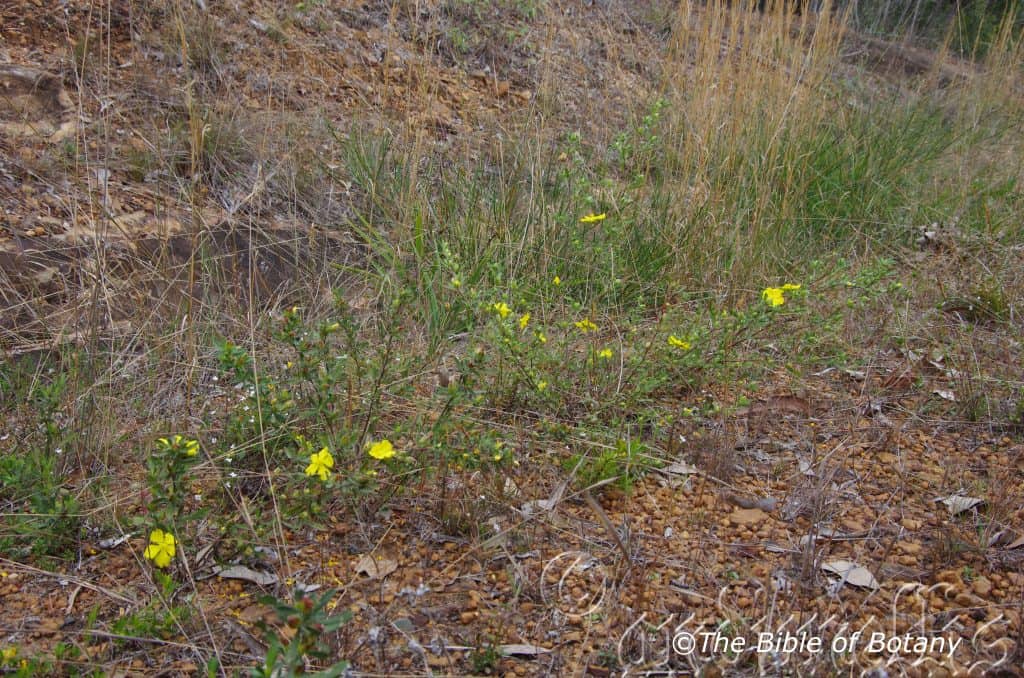
Author’s Garden The Pinnacles NSW
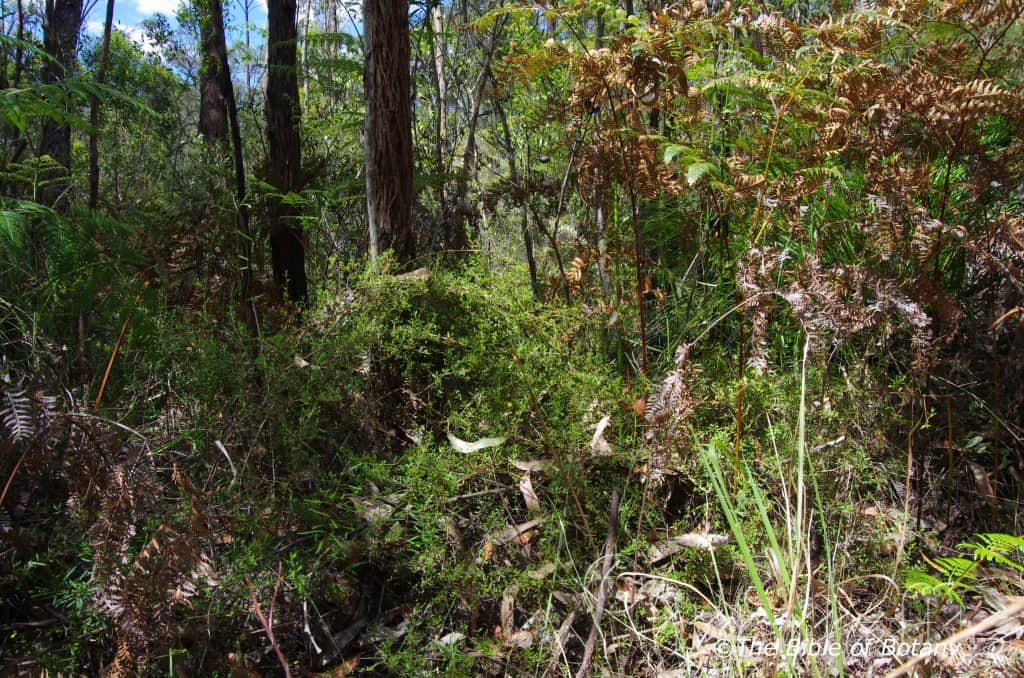
The Pinnacles NSW
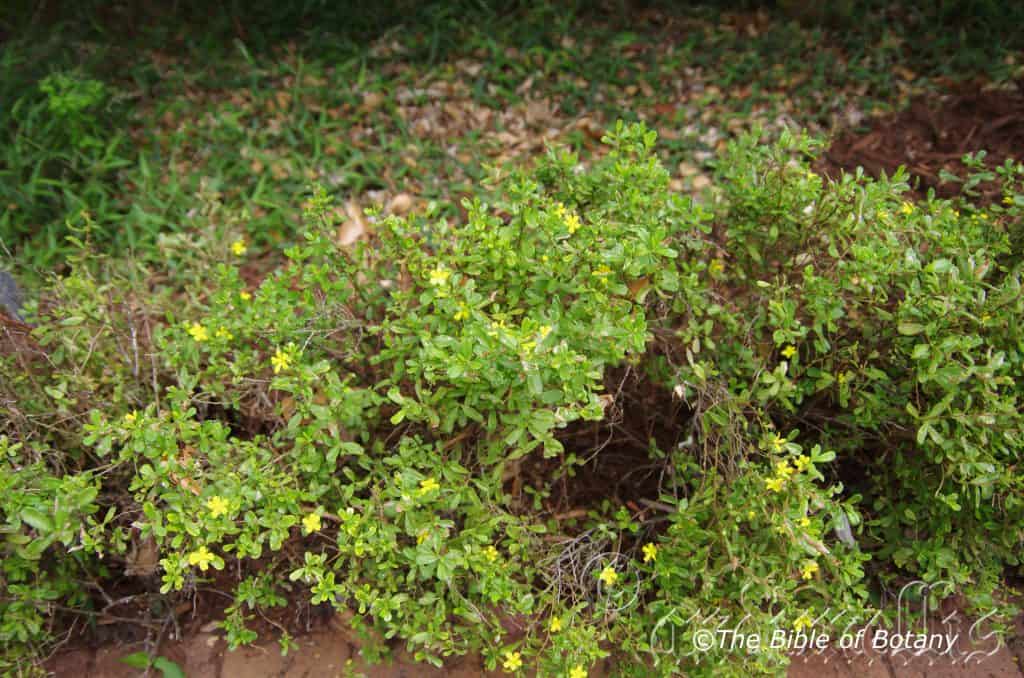
Indigenous Landscapes Capalaba Qld.
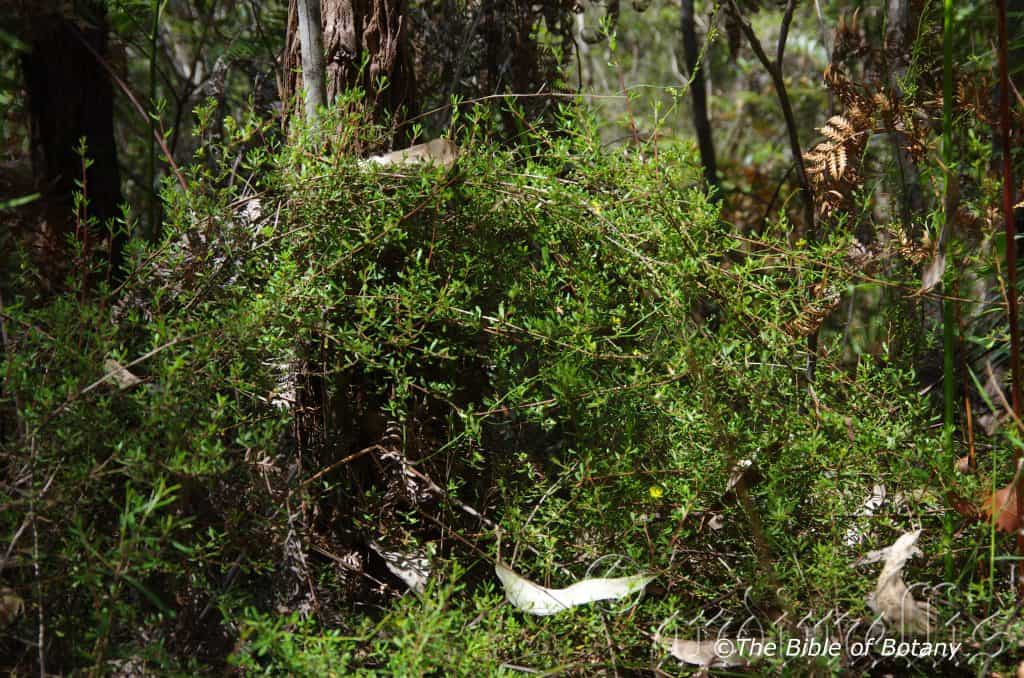
The Pinnacles NSW
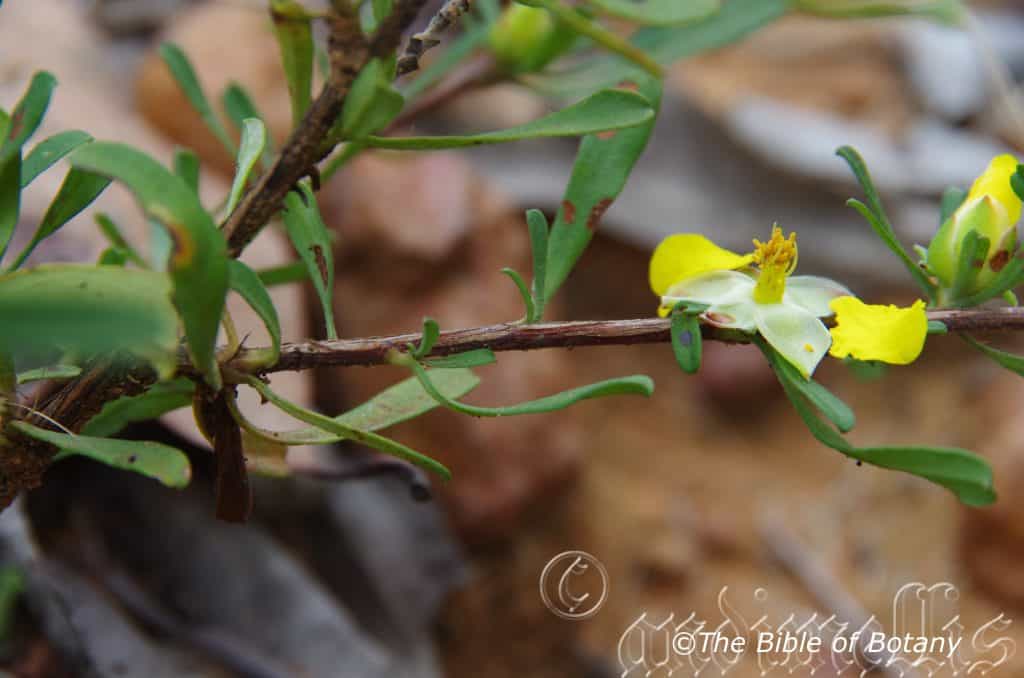
Author’s Garden The Pinnacles NSW
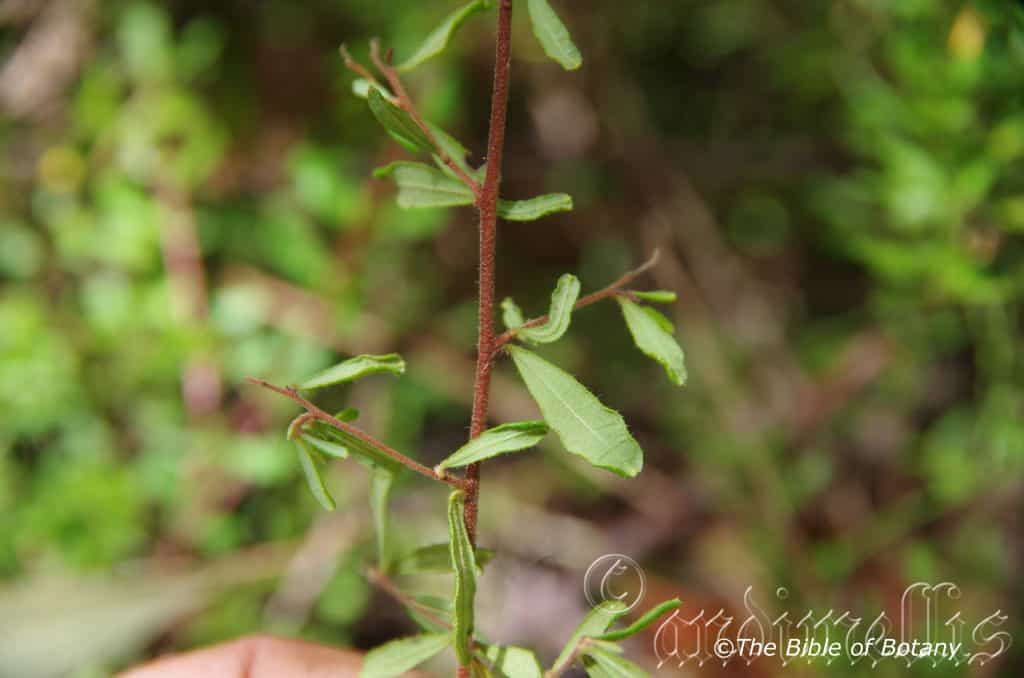
The Pinnacles NSW
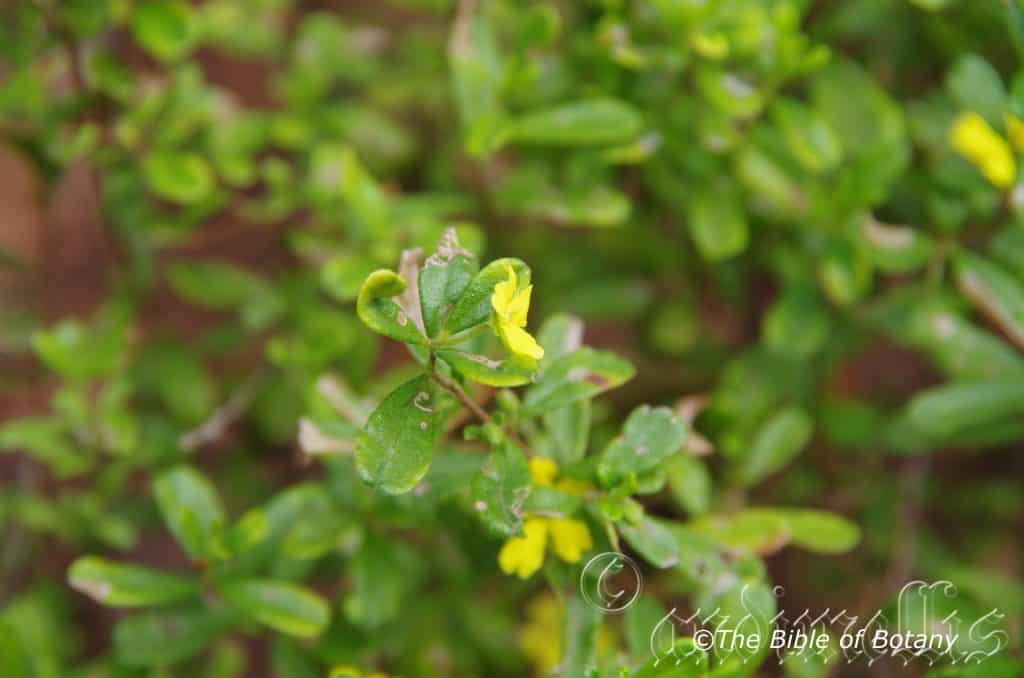
Indigenous Landscapes Capalaba Qld.
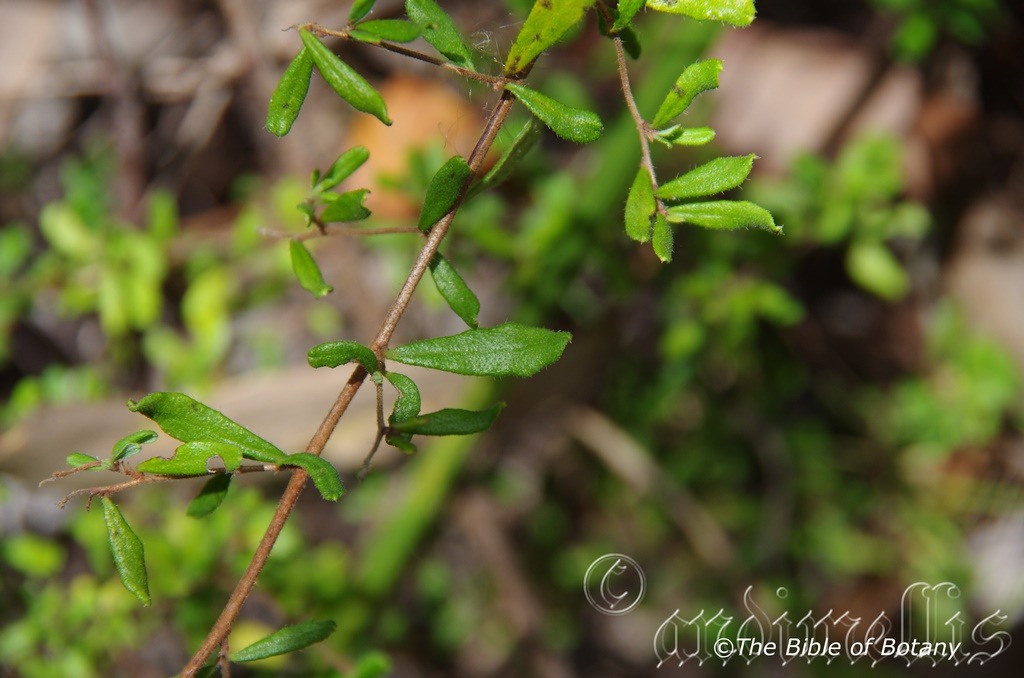
The Pinnacles NSW
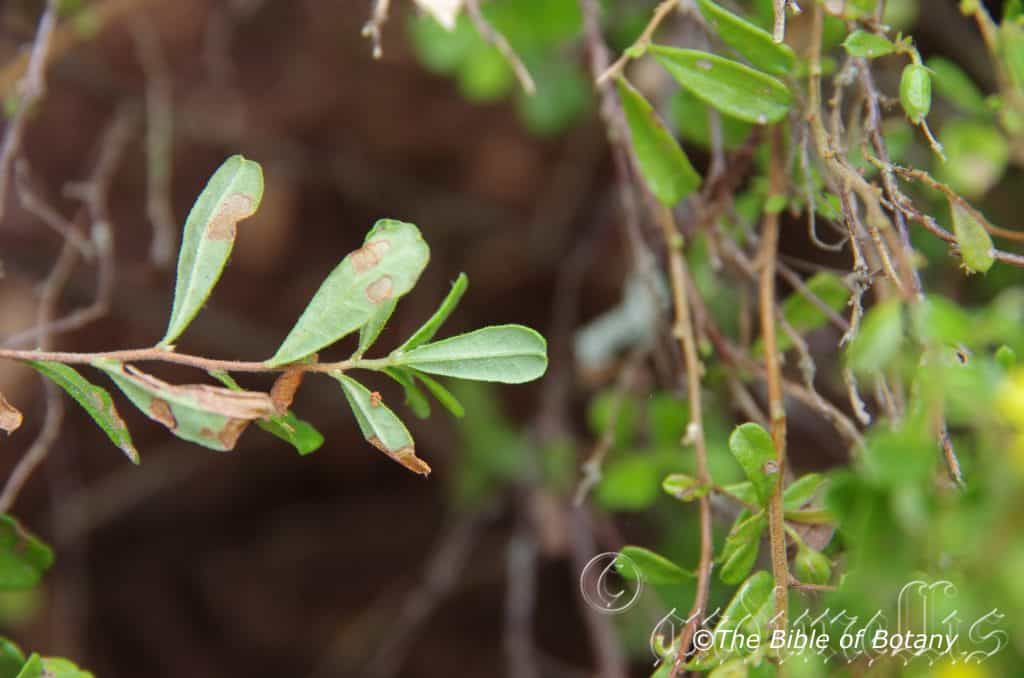
The Pinnacles NSW
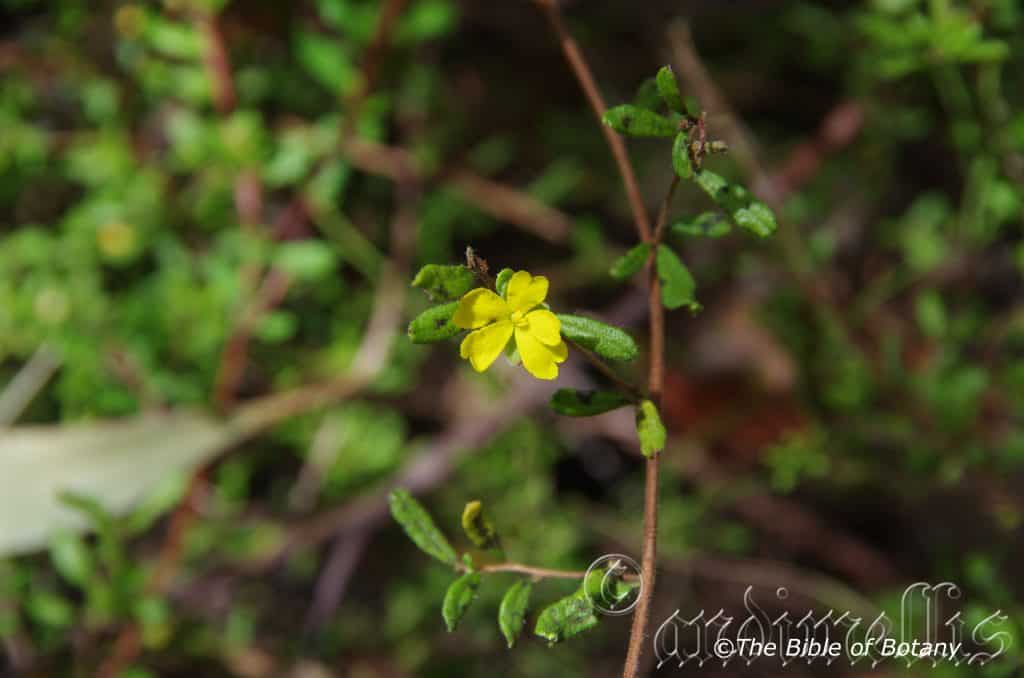
The Pinnacles NSW

Mills Creek, Fortis Creek National Park NSW
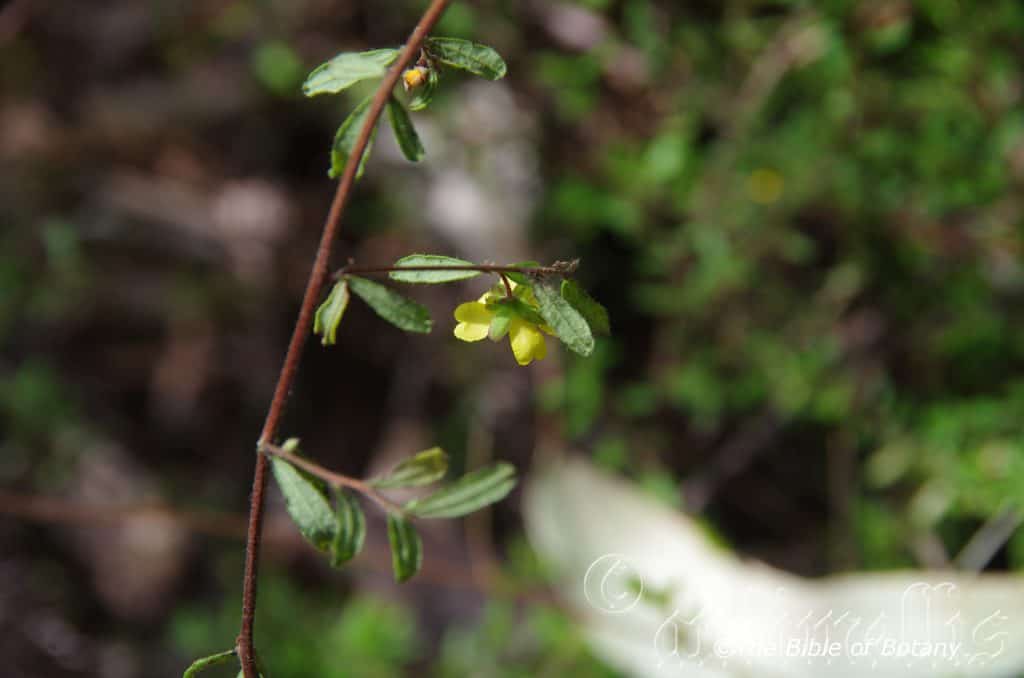
The Pinnacles NSW
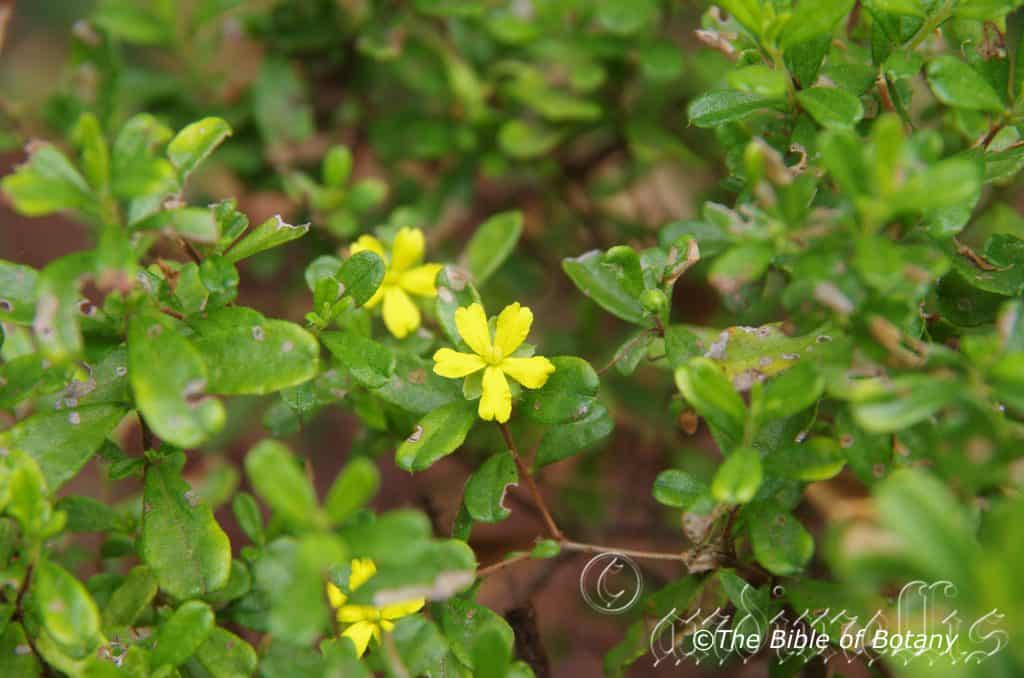
Indigenous Landscapes Capalaba Qld.
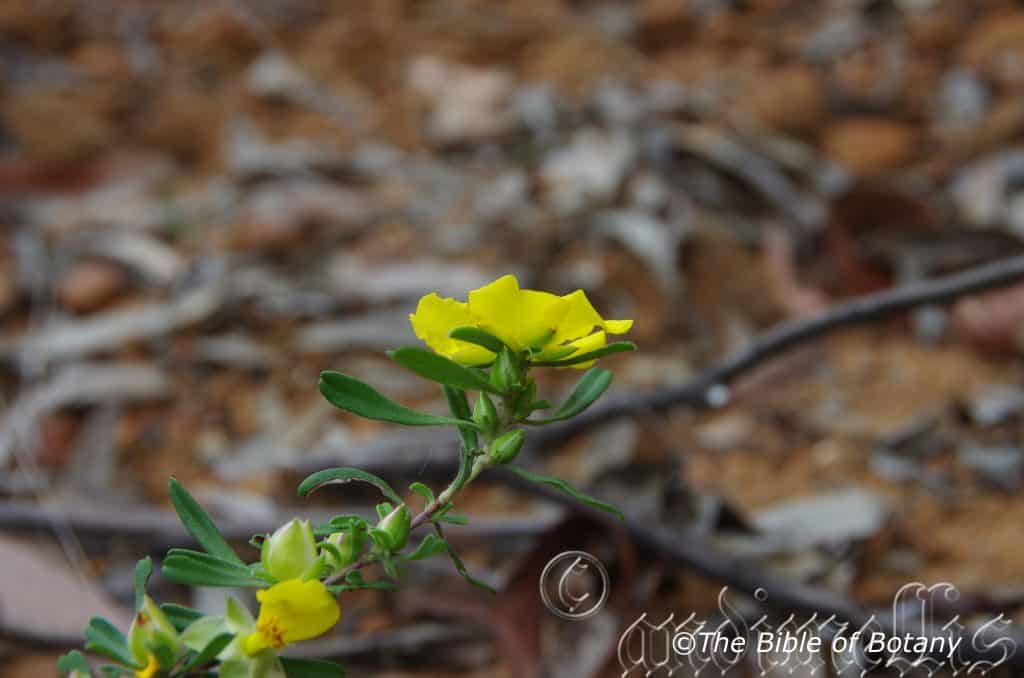
Author’s Garden The Pinnacles NSW
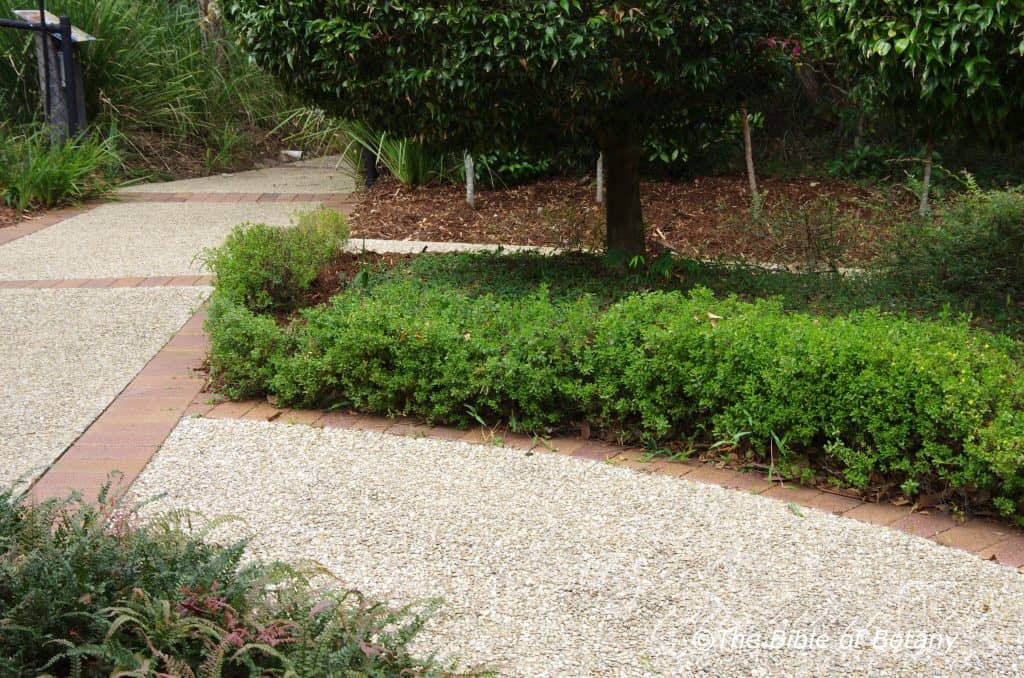
Indigenous Landscapes Capalaba Qld.
Hibbertia aspera
Classification
Unranked: Eudicots
Unranked: Core eudicots
Order:
Family: Dilleniaceae
Genus: Is named after George Hibbert; 1757-1838, who was a London merchant, patron of botany, an amateur botanist, an advocate of slavery and owned a private Botanic Garden.
Specie: From Asper, which is Ancient Greek for rough like a rasp. It refers to surfaces, which are rather rough.
Sub species: Hibbertia aspera subsp. aspera. From Asper, which is Ancient Greek for rough like a rasp. It refers to surfaces, which are rather rough.
Sub species: Hibbertia aspera subsp. pilosifolia. From Asper, which is Ancient Greek for rough like a rasp. It refers to surfaces, which are rather rough.
Common Name: Rough Guinea Flower.
Distribution:
Hibbertia aspera subsp. aspera is a widespread specie found in many disjunct populations on and east of the Great Dividing Range from Tolga in the Herberton Range in far north Queensland to Western port Bay in southern Victoria. There is an isolated population on Kangaroo Island in South Australia.
Hibbertia aspera subsp. pilosifolia is found in two distinct but well separated populations on and east of the Great Dividing Range south east of Cairns in far north eastern Queensland to The New England National Parp in north eastern New South Wales.
https://avh.ala.org.au/occurrences/search?taxa=Hibbertia+aspera#tab_mapView
Habitat Aspect Climate:
Hibbertia aspera prefers full sun to dappled shade. It grows in open forests and heaths close to the coast and mountain heath. The altitude ranges from 15 meters ASL to 1070 meters ASL.
The temperatures range from minus 3 degrees in August to 37 degrees in January.
The rainfalls range from lows of 400mm to an average of 2000mm annually.
Soil Requirements:
Hibbertia aspera prefers to grow on skeletal to deep sands, light fatty gritty clays. The soils are usually derived from decomposed sandstones, granites, accumulated peaty beach sands or at times black basalts or brown basalts. The soils pH varies from 5pH through to a 6.5pH. It tolerates seasonal waterlogged soils, wet soils or seasonal high water tables. Non saline soils to very saline soils are tolerated as are salt laden winds.
Height & Spread:
Wild Plants: 0.3m to 0.6m by 3m to 0.6m.
Characteristics:
Hibbertia aspera has glabrous stems are pale grey and glabrous. The branchlets are decumbent to semi erect or ascending, pale green with a pinkish to reddish tinge and are covered in white to off white villous to pulverulent and simple stellate hairs.
Hibbertia aspera has alternate, sub opposite or opposite obovate to oblanceolate leaves are measure 4mm to 20mm in length by 2mm to 8mm in width. The base is tapering to cuneate while the apex is obtuse or truncate with an emarginate tip. The discolourous laminas are mid grass-green to sea-green, semi glossy and are usually sparsely covered in white hirsute on scabrous wart like lumps or rarely stellate hairs on the upper lamina while the lower laminas are paler and are densely covered in off white stellate and soft velvety pilose hairs. The upper laminas recurve slightly upwards from the mid vein to the margins while the margins are entire and decurve sharply. The mid and lateral vein veins are prominent on the lower lamina and distinctly visible from above. Petioles are 4mm to 7mm in length
The inflorescences of Hibbertia aspera are born terminally or on short axillary stems. The flowers measure 10mm to 18mm in diameter. The 5 pale grass-green often tinged maroon, broad lanceolate sepals are cupuliform at the acute apexes and are usually sparsely covered in white stellate hairs and at times mixed with soft white branched hirsute hairs externally and glabrous internally. The sepals measure 3mm to 4.5mm in length by 1.5mm to 2mm in width. The 5 bright yellow petals are triangular with a very deep emarginate apex and measure 3.5mm to 6.5mm in length by 2.7mm to 5.3mm in width. The peduncles measure 12mm to 15mm in length.
There are 2 or 3 bright yellow stamens on each side of the 2 carpels. The stamens measure 2 to 3mm in length. The 3 carpels and pistils are glabrous. The 3 pistils are pastel green. The flowers appear from late November to early March.
Hibbertia aspera’s fruits are globose capsules or berries. The calyxes are persistent on the fruits. The 2 chamber carpels are covered in white stellate hairs. The green fruits turn reddish-brown when ripe. The deep brownish almost black globose seed measures 2mm to 3mm in diameter.
Confusing Subspecies Varieties:
Hibbertia aspera subsp. aspera’s upper leaf laminas are covered in white pulverulent hairs becoming glabrous with age as well as smooth papillate mounds often with depressed white stellate hairs and a few much longer white hirsute hairs. The lower laminas are covered in white, velvety, canescent hairs.
Hibbertia aspera subsp. pilosifolia’s upper leaf laminas are covered in white sub pilose to sub pulverulent hairs becoming glabrous with age as well as papillate mounds with erect, white radial to introrsely curved stellate hairs and white hirsute hairs. The lower laminas are covered in white sub pilose to velvety canescent hairs that completely surround the odd erect, white stellate and hirsute hairs.
Wildlife:
Hibbertia aspera’s wildlife is unknown to the author however small black beetles have been observed on the flowers and these were covered in yellow pollen.
Cultivation:
Hibbertia aspera is a very beautiful small native shrub or decumbent ground cover which is suitable for small gardens to the largest garden. It is an excellent colourful addition for sub-tropical to cool temperate zones. As garden subjects they will grow to 0.3 meter to 0.5 meters in height by 0.4 meters to 0.7 meters in diameter.
It is fast growing, drought tolerant once established and are cold tolerant to temperatures at least as low as 6 degrees with only minor burning of the tips. I would be tempted to grow this plant further north along the Range to at least Rockhampton where frosts are encountered.
It is most suitable for use around swimming pools, sunny courtyards, besides pathways, rockeries, along sandy banks or along or between drive ways.
If it is placed around a pool then I would place them into the center not at the ends and plant 2 or 3 in a straight row for a very formal look or use curves for the natural look. Here the choice of companion plants to use either side is limited only by size of the area to be landscaped. Leaf size or flower colour is limited by your imagination. The only limitation would be not to use other yellow flowering plants.
It is great adjacent to small areas of bush close to paths or the house so their deep yellow flowers can be viewed regularly. It is also suited for planting in small sunny rockeries as a fill in plant. Here they can be planted in small groups of 3 to 9 or as a standalone plant scattered here and there to create a harsher more barren look with other arid or alpine plants. If it is surrounded by slightly taller plants with larger leaves and red, deep blue or purple flowers they will create a very strong scene with depth and breadth especially when it is in flower.
Again 2 to 9 planted back from a bend or corner will become a very strong focal point when in flower, gain a lot of attention whether you are coming or going because of the fresh clean look of the foliage even in the driest of times. They can be tip pruned to make them bushier. Hard pruning can be done once the plants are established but some set back may occur so it is better to trim the plants on a regular or annual basis. They respond well to pruning recovering quickly and often increasing the number of flowers on the new growth.
Ensure that the whole plant is on display from most sections of the garden as the flowers are a real bonus.
Whether it is in flower or not these plants will catch your attention. Mass plantings are best achieved by planting them at 0.5 meters to 1 meter centers.
Propagation:
Seeds: Hibbertia aspera seeds can be sown directly onto a seed raising mix. Cover them with 1mm of fine sand and keep moist not wet. Place the tray in a warm sunny position or beneath 30mm shade cloth. When the seedlings are 20mm to 30mm tall, prick them out and plant them into 50mm native tubes using a good organic mix.
Once the seedlings reach 150mm to 200mm in height they can be planted out into their permanent position. Nip the growing tips out, plant and fertilize.
Cuttings: Use 100mm long half ripened material when growing from cuttings from the present season’s growth. Take them in mid-autumn or early spring. Remove half the leaves from the bottom section being careful not to tear the bark. Take a 10mm slice off the bark from the bottom of the cutting on one side.
1 Prepare the cutting mix by adding one third sharp clean river sand, one third peat and one third perlite. These ingredients are sterilize,
2 Select good material from non diseased plants,
3 Select semi green stems for cuttings. Look for a stem with two or three nodes,
4 Place the cutting on a flat, hard surface, and make a clean cut down one side of the cutting at the base for 10mm with a sharp sterile knife or razor blade. – This scarification of the node will increase the chances of roots emerging from this spot. Now remove all but one or two the leaves, leaving the apex leaves in tact. If the leaves are very large in proportion to the stem, cut off the apical halves.
5 Fill a saucer with water, and place a little medium strength rooting hormone into another container like a milk bottle top. Dip the node end of the cutting into the water and then into the rooting hormone. Tap off any excess hormone,
6 Use a small dipple stick or old pencil to poke a hole into the soilless potting mix. Ensure the hole is slightly larger than the stem diameter and be careful not to wipe the rooting hormone off the cuttings base, place the cuttings in a pattern ensuring the cuttings are not touching each other,
7 I like to place the pots in Plastic bags to help maintain temperature and moisture. Place in a semi shaded place like under 50mm shade cloth.
8 When the cuttings have struck, open the bag to allow air circulation for a few days to a week,
9 Once hardened off remove the cuttings from the bag and allow to further hardening for a few more days,
10 Transplant into a good potting mix to grow on.
Fertilize using seaweed, fish emulsion or organic chicken pellets soaked in water on an alternate basis. Fertilize every two months until the plants are established then twice annually in early September or March to maintain health, vitality and better flowering.
Further Comments from Readers:
Hi reader, it seems you use The Bible of Botany a lot. That’s great as we have great pleasure in bringing it to you! It’s a little awkward for us to ask, but our first aim is to purchase land approximately 1,600 hectares to link several parcels of N.P. into one at The Pinnacles NSW Australia, but we need your help. We’re not salespeople. We’re amateur botanists who have dedicated over 30 years to saving the environment in a practical way. We depend on donations to reach our goal. If you donate just $5, the price of your coffee this Sunday, We can help to keep the planet alive in a real way and continue to bring you regular updates and features on Australian plants all in one Botanical Bible. Any support is greatly appreciated. Thank you.
In the spirit of reconciliation we acknowledge the Bundjalung, Gumbaynggirr and Yaegl and all aboriginal nations throughout Australia and their connections to land, sea and community. We pay our respect to their Elders past, present and future for the pleasures we have gained.
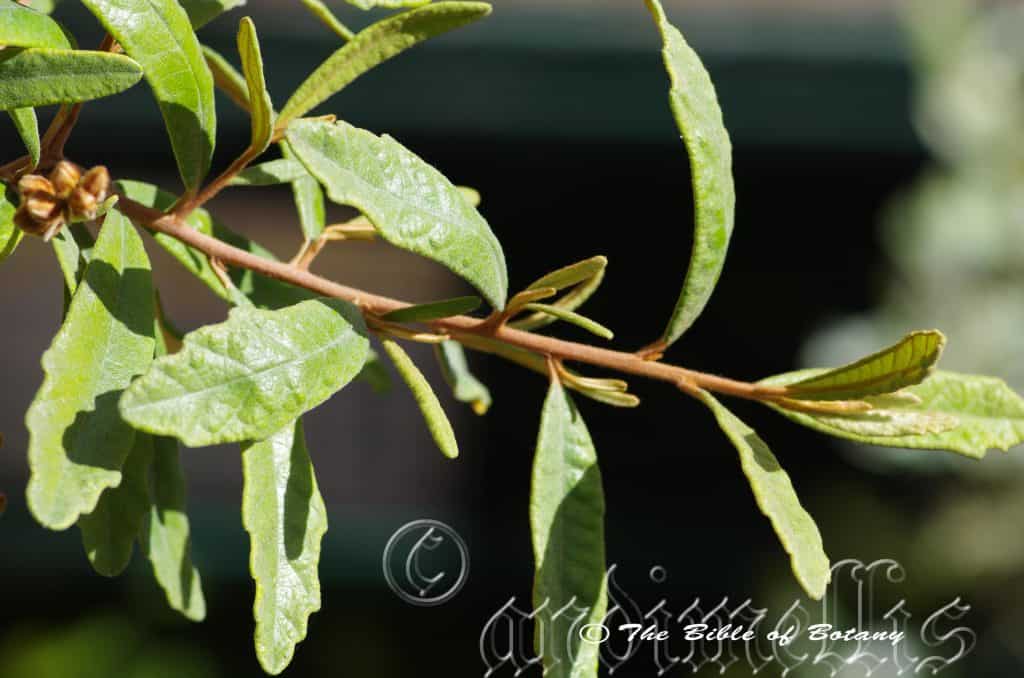
Townsville Botanic Gardens Qld.
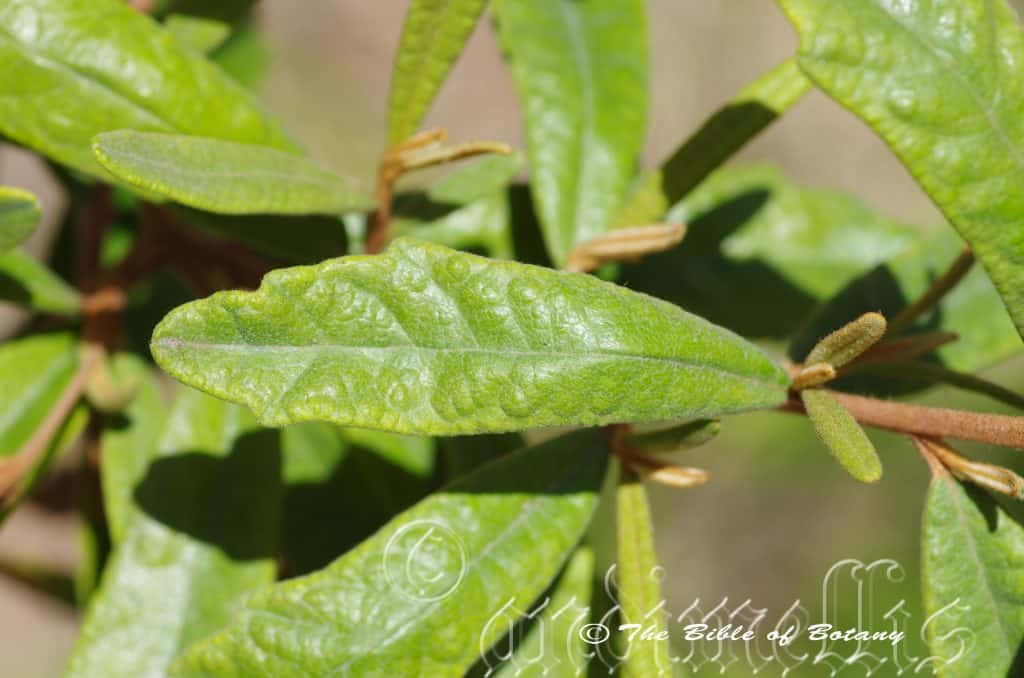
Townsville Botanic Gardens Qld.
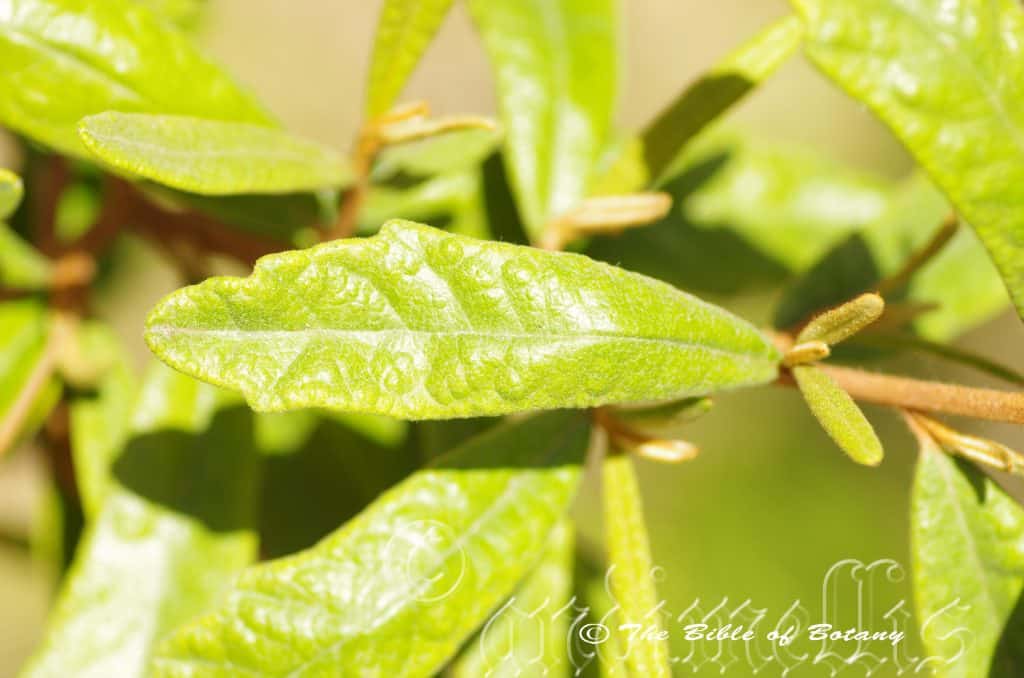
Townsville Botanic Gardens Qld.
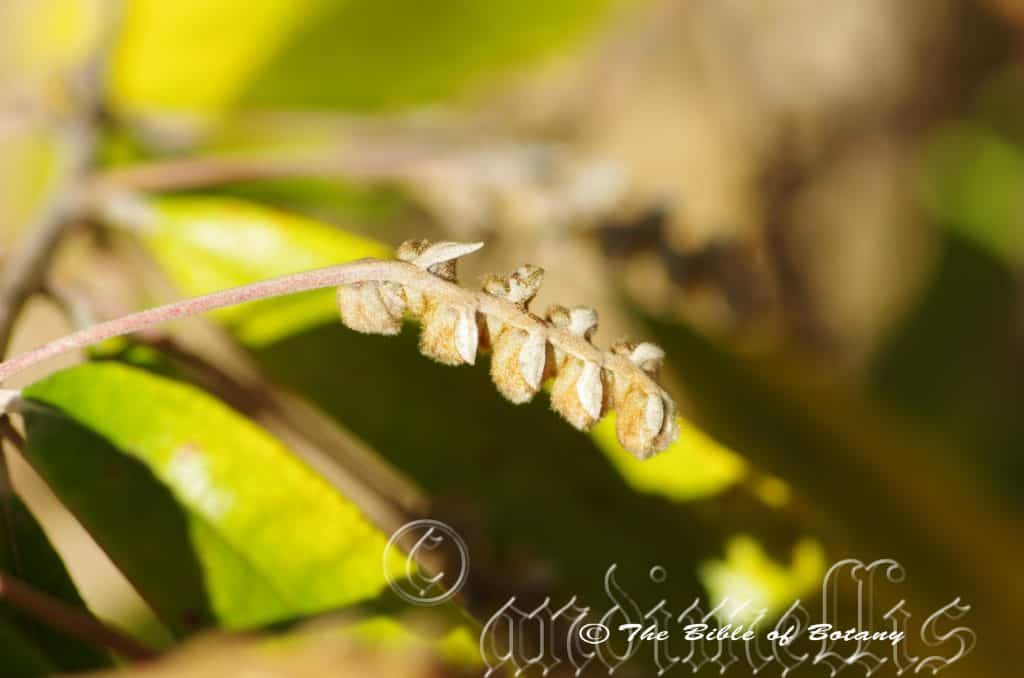
Townsville Botanic Gardens Qld.
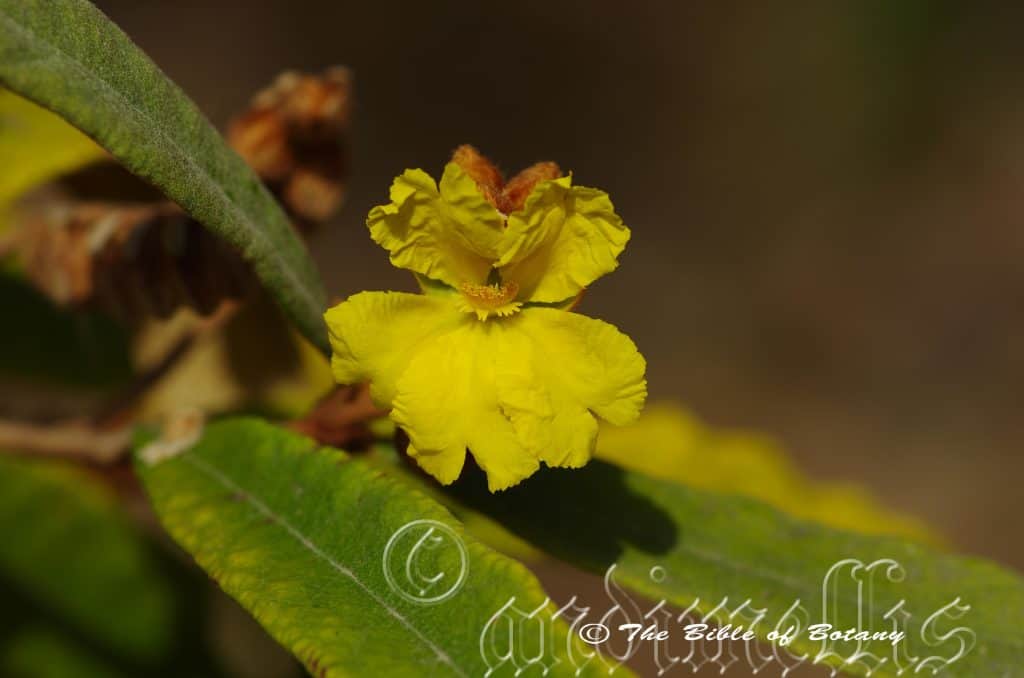
Townsville Botanic Gardens Qld.
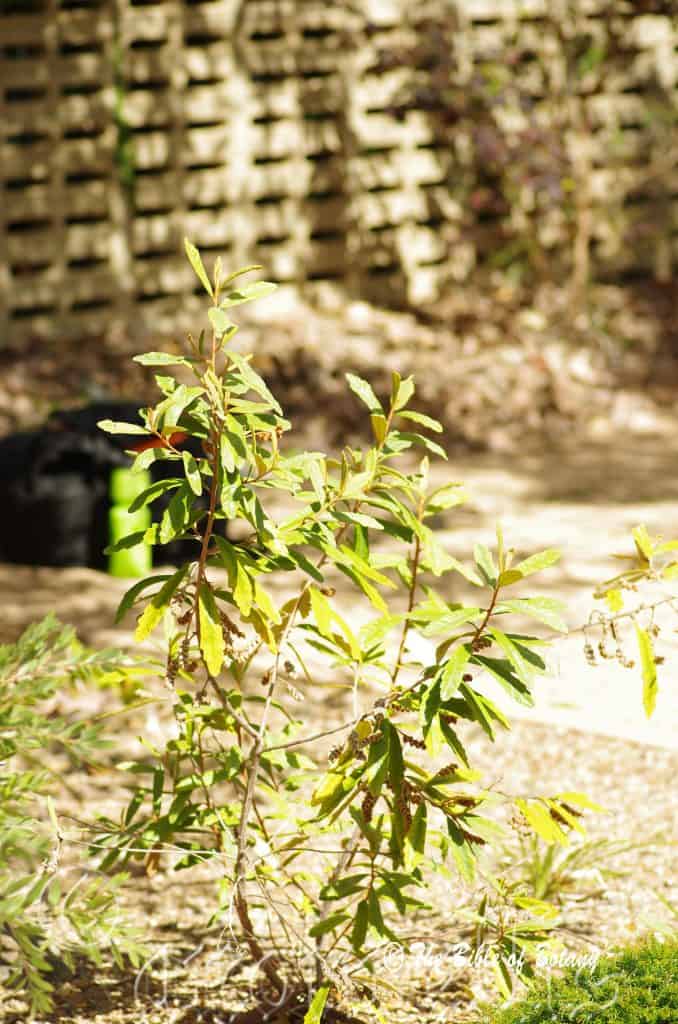
Townsville Botanic Gardens Qld.
Hibbertia banksii
Classification
Unranked: Eudicots
Unranked: Core eudicots
Order: Unplaced
Family: Dilleniaceae
Genus: Is named after George Hibbert; 1757-1838, who was a London merchant, patron of botany, an amateur botanist, an advocate of slavery and owned a private Botanic Garden.
Specie: Is named in honour of Sir Joseph Banks; 1743-1820, who was an English Naturalist and patron of botany who travelled with Captain Cook on the Endeavour to explore the east coast of Australia.
Sub species:
Common Name: Northern Guinea Flower.
Distribution:
Hibbertia banksii is endemic to far north Queensland south from the Torres Strait Islands and New Guinea to the Endeavour River, mainly on the eastern side of Cape York Peninsular.
https://avh.ala.org.au/occurrences/search?taxa=Hibbertia+banksii#tab_mapView
Habitat Aspects Climate:
Hibbertia banksii prefers full sun to dappled shade. It grows in riparian zones, adjacent to swamps and wallums near lagoons and monsoonal vine thickets. This is a small rounded shrub with deep yellow flowers. The altitude ranges from 15 meters ASL to 400 meters ASL.
The temperatures range from 10 degree in July to 34 degrees in January.
The rainfalls range from lows of 750mm to an average of 3200mm annually.
Soil Requirements:
Hibbertia banksii prefers skeletal sands over sandstone, podsolic soils, or light clays to medium clays. The soils are usually derived from decomposed sandstones, alluvial deposits, granites or accumulated beach sands. The soils pH varies from 4.5pH through to a 7pH. It tolerates wet soils. Non saline soils to moderately saline soils are tolerated.
Height & Spread:
Wild Plants: 1m to 2m by 1m to 2m.
Characteristics:
Hibbertia banksii’s glabrous stems are brown to pink brown and are covered in rusty-brown tomentose hairs. The branchlets are pendant to semi pendant and often rely on other shrubs for support or are decumbent. The branchlets are rusty brown or pinkish-brown with the terminals being densely covered in rusty tomentose hairs.
Hibbertia banksii’s opposite, narrow elliptical to lanceolate, coriaceous leaves measure 35mm to 75mm in length by 10mm to 25mm in width. The bases are cuneate while the apexes are obtuse with or without a small mucronate tip. The discolourous laminas are glossy, deep sea-green and glabrous on the upper lamina while the lower lamina is densely covered in rusty-brown tomentose hairs. The upper lamina decurve downwards from the mid vein to the margins while the margins are entire and slightly revolute. The mid and lateral vein veins are prominent on the lower lamina and distinctly visible from above. The petioles measure 4mm to 7mm in length.
The inflorescences of Hibbertia banksii are born terminally and from the leaf axis. The flowers measure 10mm to 18mm in diameter. The sepals are densely covered in rusty-brown tomentose hairs externally and are glabrous internally. The 5 yellow bright petals are wide spreading and slightly reflexed or slightly curved upwards. It is ovate to orbicular tapering at the base while the apex is deeply emarginated. The petals measure 5mm to 8mm in length by 4mm to 7mm in width.
The 10 to 13 yellow stamens are clustered on one side of the 2 carpels the 24 to 27 staminodes are clustered on the opposite side of the carpel. The stamens and staminodes measure 2.5 to 3mm in length. The 2 pistils are yellow and measure 2mm to 2.5mm in length. The flowers appear from September to late December.
Hibbertia banksii’s fruits are globose capsules or berries surrounded by the persistent sepals. The calyx lobes are persistent on the berries. The green berries turn orange to orange–red when ripe and measure 5mm to 6mm in diameter. The deep brown black globose seed measures 2.8mm to 3.2mm in diameter.
Wildlife:
Hibbertia banksii’s wildlife is unknown to the author.
Cultivation:
Hibbertia banksii is a very beautiful small native shrub or decumbent ground cover which is suitable for small gardens to the largest garden. It is an excellent colourful addition for sub-tropical or semi-arid zones. As garden subjects they will grow to 1 meter to 1.5 meters high by 1.5 meters to 2.5 meters wide
It is fast growing, drought tolerant once established and are cold tolerant to temperatures at least as low as 6 degrees. I would be tempted to grow this plant further south to at least Coffs Harbour where frosts are not a problem.
It is most suitable for use around swimming pools, sunny courtyards, besides pathways, rockeries, along sandy banks or along drive ways.
If it is placed around a pool then I would place them into the center not at the ends and plant 2 or 3 in a straight row for a very formal look or use curves for the natural look. Here the choice of companion plants to use either side is limited only by size of the area to be landscaped. Leaf size or flower colour is limited by your imagination. The only limitation would be not to use other yellow flowering plants.
It is great adjacent to small areas of bush close to paths or the house so their deep yellow flowers can be viewed regularly. It is also suited for planting in small rockeries as a fill in plant. Here they can be planted in small groups of 3 to 5 or as a standalone plant to create a harsher more barren look with other arid plants. If it is surrounded by shorter plants with fine foliages and red flowers they will dominate at the center giving height and strength to the bed especially when it is in flower.
Again 2 to 5 or 7 planted back from a bend will become a very strong focal point when in flower, gain a lot of attention whether you are coming or going because of the fresh clean look of the foliage even in the driest of times. They can be tip pruned if a smaller shrub is required. Hard pruning can be done once the plants are established but some set back may occur so it is better to trim the plants on a regular or annual basis. They respond well to pruning recovering quickly and often increasing the number of flowers in the following season. Place them in the mid ground with large leaf, or fine leaf ground covers and very small shrubs or annuals in front. To the rear, use large leaf taller plants. Plants with pink, orange, red or purple flowers can be used in both the foreground and background. Plants with finer foliages in pale green or blue grey will also compliment the scene during periods when there are few flowers in the garden. This will lead the viewer’s eyes directly to the yellow flowers and rusty tomentose buds and branchlets for a longer period.
Ensure that the whole plant or at least most of it is on display from most sections of the garden as the flowers are a real bonus.
Whether it is in flower or not these plants will catch your attention. Mass plantings are best achieved by planting them at 2 meter to 2.2 meter centers.
Propagation:
Seeds: Hibbertia banksii seeds can be sown directly onto a seed raising mix. Cover them with 2mm of fine sand and keep moist not wet. Place the tray in a warm sunny position or beneath 30mm shade cloth. When the seedlings are 20mm to 30mm tall, prick them out and plant them into 50mm native tubes using a good organic mix.
Once the seedlings reach 150mm to 200mm in height they can be planted out into their permanent position.
Cuttings: Use 80mm to 100mm long half ripened material when growing from cuttings from the present season’s growth. Take them in mid-autumn or early spring. Remove half the leaves from the bottom section being careful not to tear the bark. Take a 10mm slice off the bark from the bottom of the cutting on one side.
1 Prepare the cutting mix by adding one third sharp clean river sand, one third peat and one third perlite. These ingredients are sterilize,
2 Select good material from non diseased plants,
3 Select semi green stems for cuttings. Look for a stem with two or three nodes,
4 Place the cutting on a flat, hard surface, and make a clean cut down one side of the cutting at the base for 10mm with a sharp sterile knife or razor blade. – This scarification of the node will increase the chances of roots emerging from this spot. Now remove all but one or two the leaves, leaving the apex leaves in tact. If the leaves are very large in proportion to the stem, cut off the apical halves.
5 Fill a saucer with water, and place a little medium strength rooting hormone into another container like a milk bottle top. Dip the node end of the cutting into the water and then into the rooting hormone. Tap off any excess hormone,
6 Use a small dipple stick or old pencil to poke a hole into the soilless potting mix. Ensure the hole is slightly larger than the stem diameter and be careful not to wipe the rooting hormone off the cuttings base, place the cuttings in a pattern ensuring the cuttings are not touching each other,
7 I like to place the pots in Plastic bags to help maintain temperature and moisture. Place in a semi shaded place like under 50mm shade cloth.
8 When the cuttings have struck, open the bag to allow air circulation for a few days to a week,
9 Once hardened off remove the cuttings from the bag and allow to further hardening for a few more days,
10 Transplant into a good potting mix to grow on.
Fertilize using seaweed, fish emulsion or organic chicken pellets soaked in water on an alternate basis. Fertilize every two months until the plants are established then twice annually in early September or March to maintain health, vitality and better flowering.
Further Comments from Readers:
Hi reader, it seems you use The Bible of Botany a lot. That’s great as we have great pleasure in bringing it to you! It’s a little awkward for us to ask, but our first aim is to purchase land approximately 1,600 hectares to link several parcels of N.P. into one at The Pinnacles NSW Australia, but we need your help. We’re not salespeople. We’re amateur botanists who have dedicated over 30 years to saving the environment in a practical way. We depend on donations to reach our goal. If you donate just $5, the price of your coffee this Sunday, We can help to keep the planet alive in a real way and continue to bring you regular updates and features on Australian plants all in one Botanical Bible. Any support is greatly appreciated. Thank you.
In the spirit of reconciliation we acknowledge the Bundjalung, Gumbaynggirr and Yaegl and all aboriginal nations throughout Australia and their connections to land, sea and community. We pay our respect to their Elders past, present and future for the pleasures we have gained.
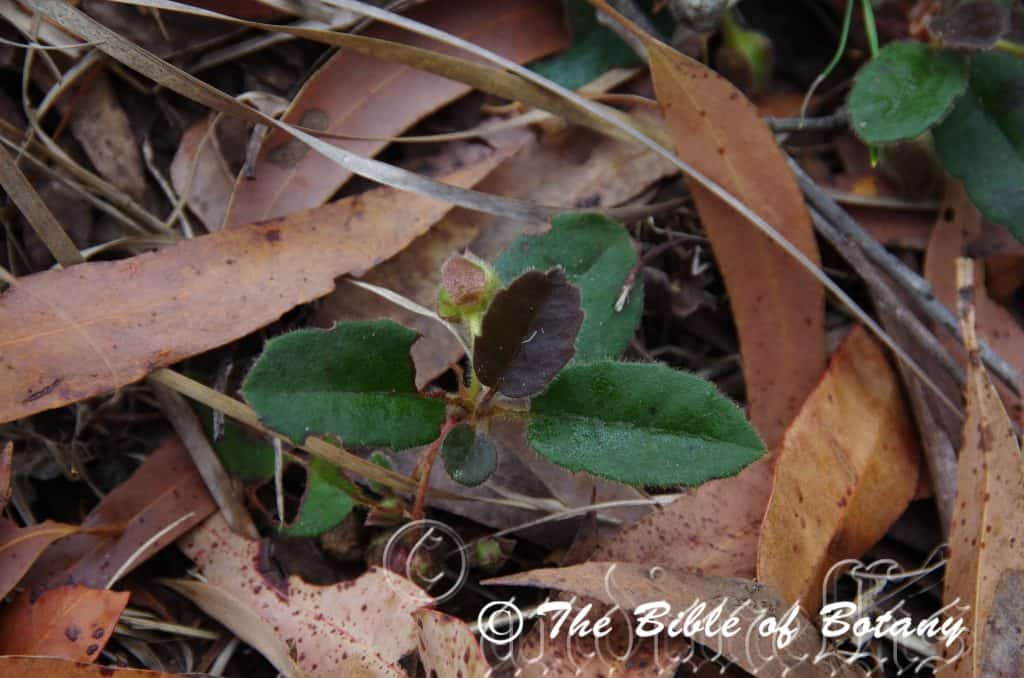
Innes Lake National Park NSW
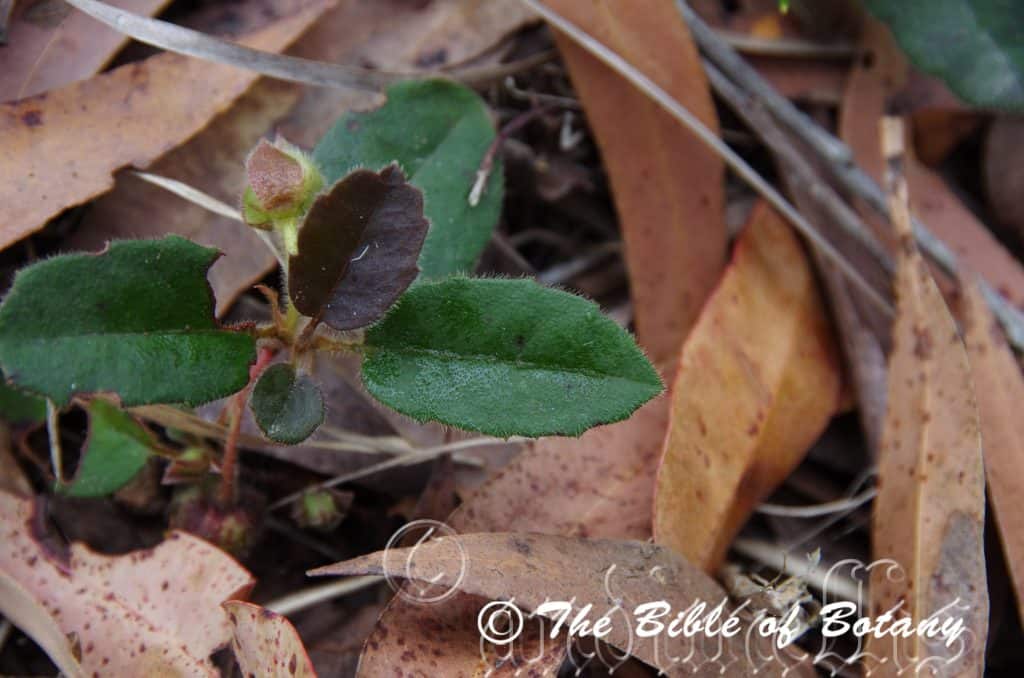
Innes Lake National Park NSW
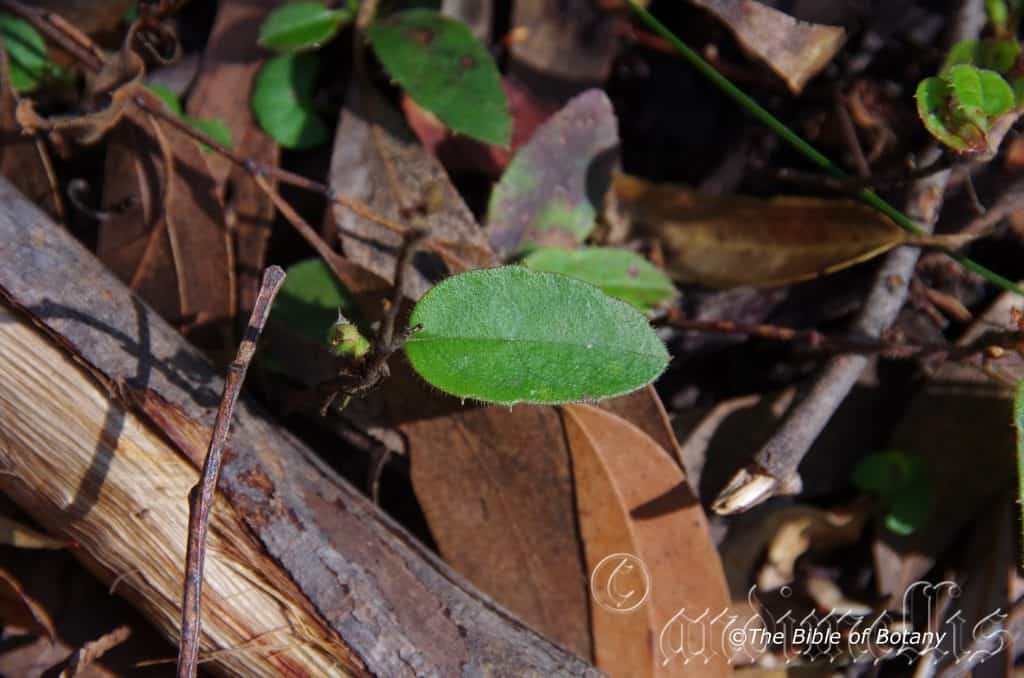
Washpool National Park NSW
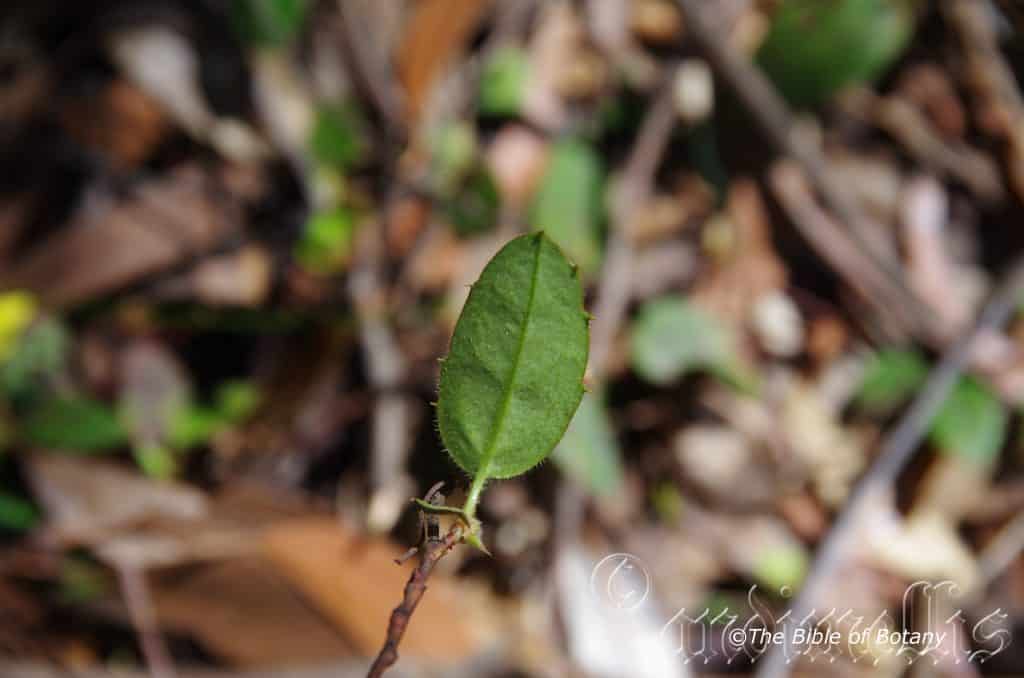
Washpool National Park NSW
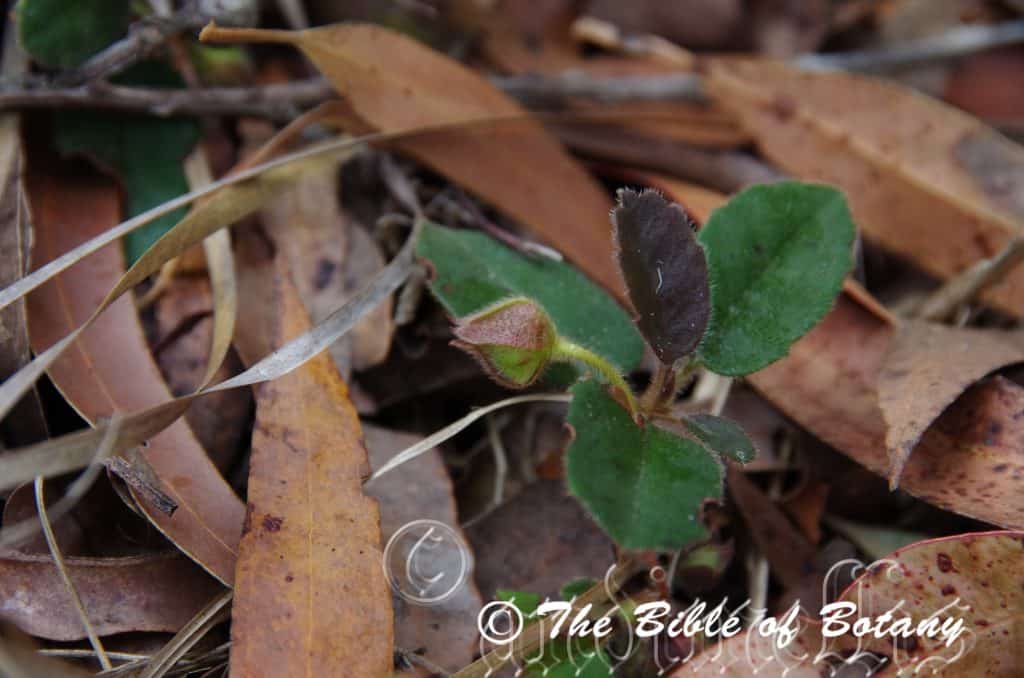
Innes Lake National Park NSW
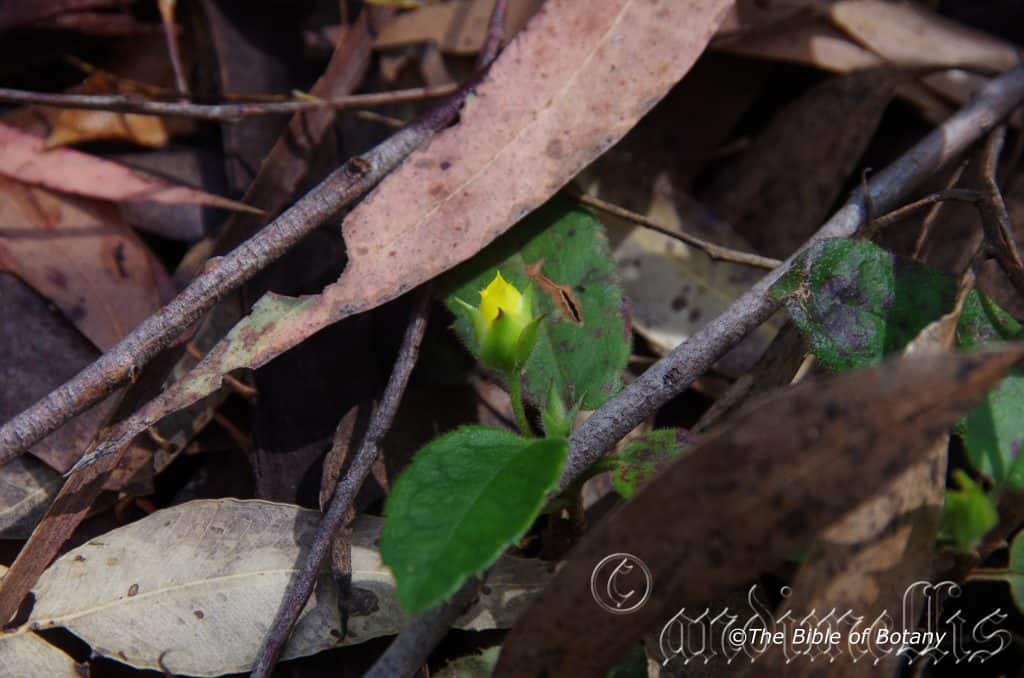
Washpool National Park NSW
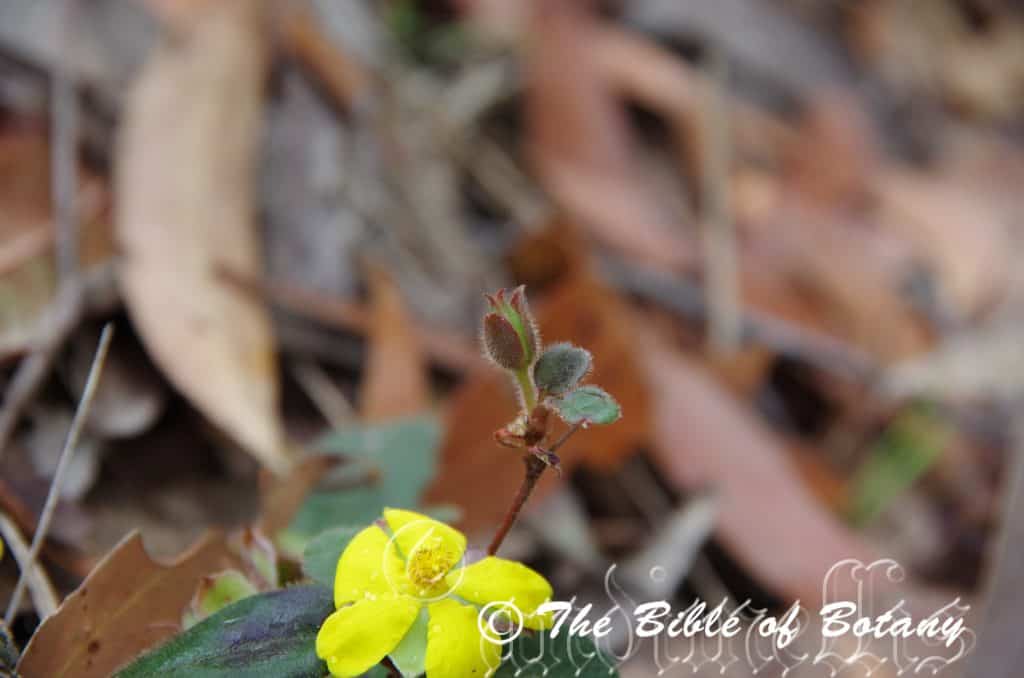
Innes Lake National Park NSW
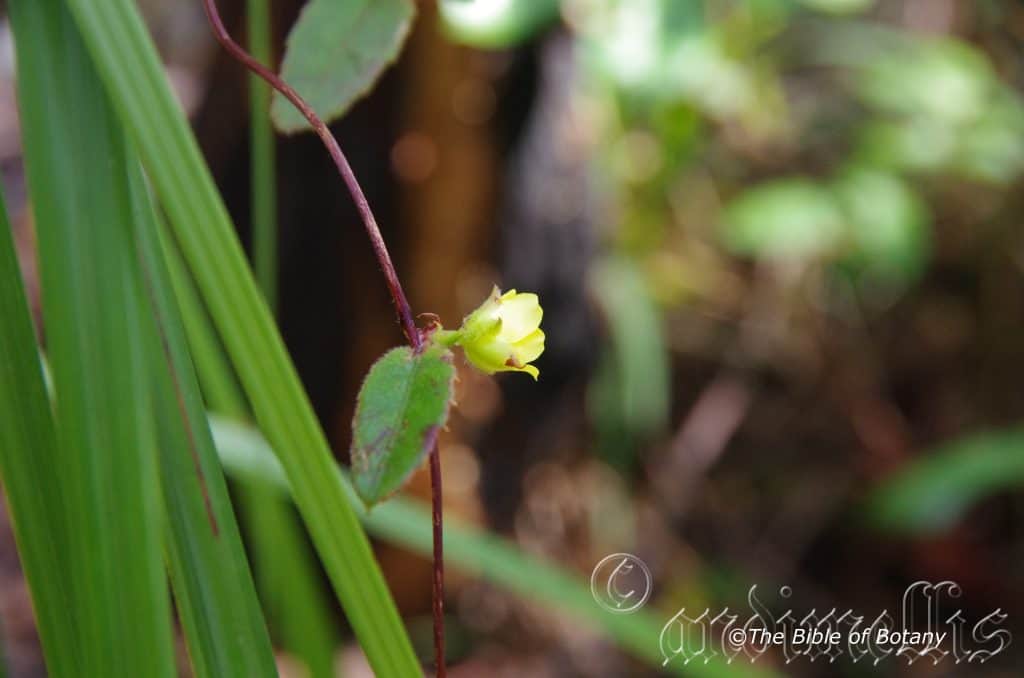
Washpool National Park NSW
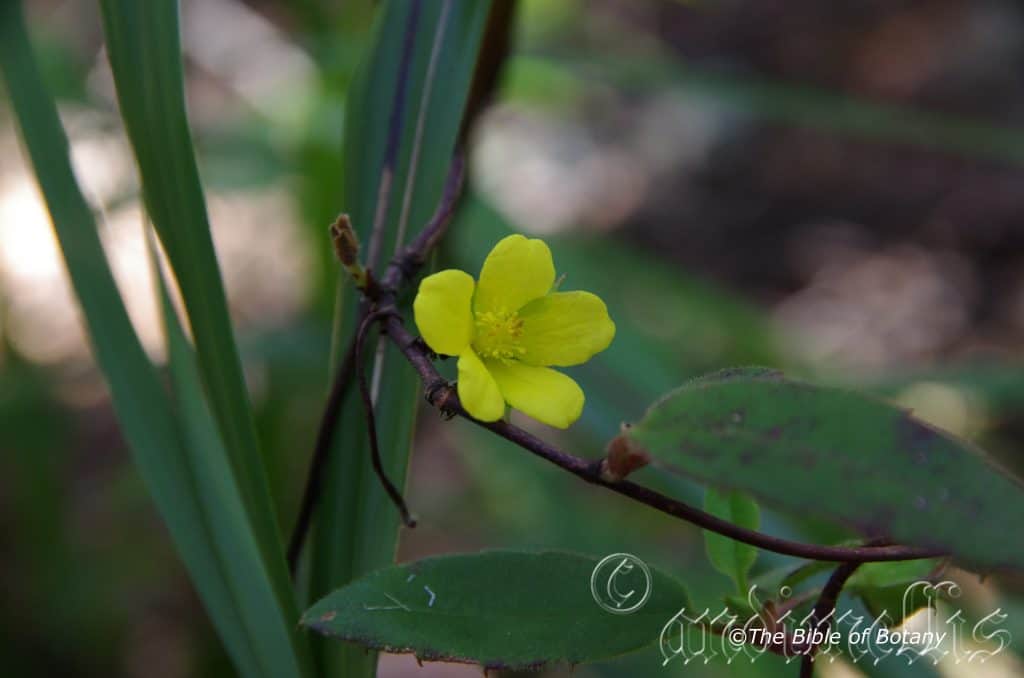
Yuryaigir National Park NSW
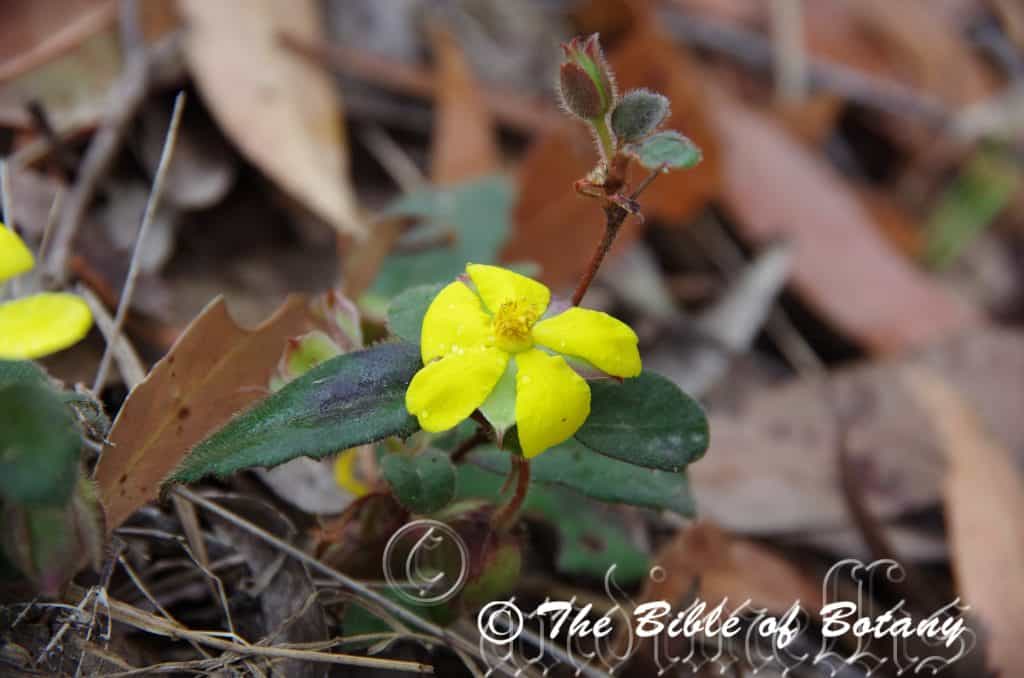
Washpool National Park NSW
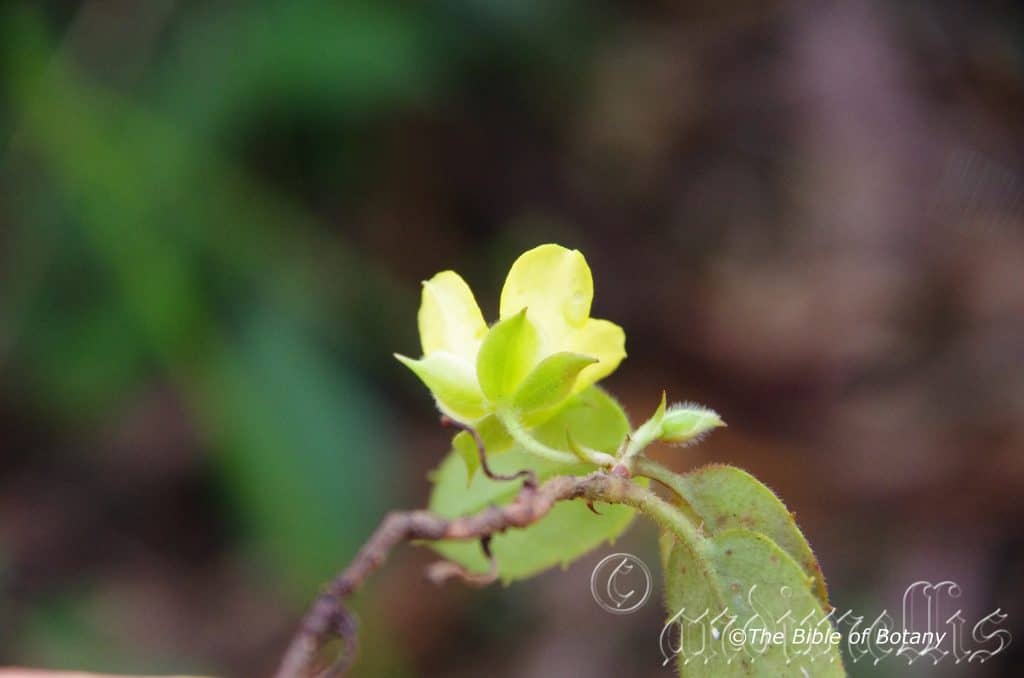
Washpool National Park NSW
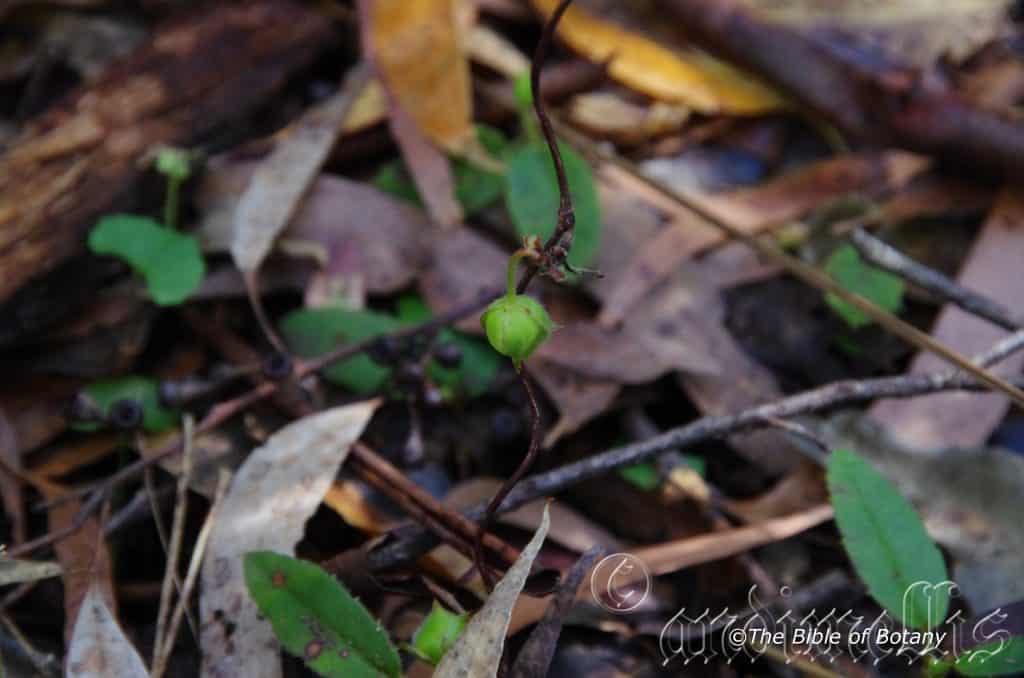
Washpool National Park NSW
Hibbertia dentata
Classification
Unranked: Eudicots
Unranked: Core eudicots
Order: Unplaced
Family: Dilleniaceae
Genus: Is named after George Hibbert; 1757-1838, who was a London merchant, patron of botany, an amateur botanist, an advocate of slavery and owned a private Botanic Garden.
Specie: From Odoús/Odonta, which is Ancient Greek or Dēns, which is Latin for a tooth or teeth. It usually refers to the margins of the leaves or at times the calyx lobes, which are toothed.
Sub species:
Common Name: Trailing Guinea Flower.
Distribution:
Hibbertia dentata is found south from Childers south eastern Queensland to Orbost in north eastern Victoria. There is a disjunct population in central eastern Victoria and several on Cape York Peninsular. It is found on and east of the Great Dividing Range to the coast.
https://avh.ala.org.au/occurrences/search?taxa=Hibbertia+dentata#tab_mapView
Habitat Aspects Climate:
Hibbertia dentata prefers full sun to dappled shade. It grows in riparian zones, adjacent to swamps and wallums near lagoons and open moist sclerophyll forests or heath lands. The altitude ranges from 15 meters ASL to 850 meters ASL.
The temperatures range from minus 5 degree in July to 36 degrees in January.
The rainfalls range from lows of 800mm to an average of 1600mm annually.
Soil Requirements:
Hibbertia dentata prefers skeletal to deep sands over sandstone, light clays to medium clays or light silts to heavy silts. The soils are usually derived from decomposed shale, basalts, granites alluvial deposits or accumulated beach sands. The soils pH varies from 4.5pH through to a 6.5pH. It does not tolerate waterlogged soils however most of the soils are moisture retentive and lie close to water where capillary action maintains better moisture content throughout the year. Non saline soils to moderately saline soils are tolerated.
Height & Spread:
Wild Plants: 0.1m to 0.2m by 1.5m to 2m.
Characteristics:
Hibbertia dentata’s glabrous stems are wiry brown to deep purple-brown and glabrous. The young stems twine over nearby shrubs for support or are decumbent. The branchlets are a deep purple-brown to deep purple and are sparsely to densely covered in white pubescent hairs close to the apex.
Hibbertia dentata’s elliptical to lanceolate leaves measure 40mm to 70mm in length by 15mm to 30mm in width. The asymmetrical bases are rounded to truncate while the apexes are acute. The discolourous laminas are deep sea-green with a deep purple tinge and covered in white pannate hairs while the lower laminas are paler and densely covered in white pannate hairs. The laminas are flat or very slightly convex from the mid vein to the margin while the margins are regularly dentate. The mid vein is strongly prominent on the lower lamina and is clearly visible from the upper lamina. The petiole measures 5mm to 8mm in length.
The inflorescences of Hibbertia dentata are born terminally, from the leaf axils or from short axillary shoots and measure 35mm to 60mm in diameter. The ovate pale green sepals are covered in white pannate or pubescent hairs externally and are glabrous internally. They measure 7mm to 8.5mm in length by 5mm to 6mm in width. The 5 bright yellow petals are oblong to spathulate while the apex is obtuse, obtuse with an emarginate tip or at times obtuse with a mucronate tip. The petals measure 20mm to 30mm in length by 16mm to 24mm in width.
The 30 to 40 yellow stamens and staminodes measure 6.5 to 9mm in length and surround the 3 glabrous carpels. The 3 pistils are pastel green. The pedicels measure 6mm to 15mm in length. Flowers appear from early September to December.
Hibbertia dentata’s fruits are globose capsules or berries surrounded by the persistent sepals. The calyxes are persistent on the fruits. The green fruits turn reddish-brown when ripe. The deep brownish almost black globose seed measures 2mm to 3mm in diameter.
Wildlife:
Hibbertia dentata wildlife is unknown to the author however small black beetles were seen on the flowers and these were covered in yellow pollen.
Cultivation:
Hibbertia dentata is a very beautiful small procumbent ground cover which is suitable for small gardens to the largest garden. It is an excellent, colourful addition for tropical, sub-tropical or semi-arid zones. As garden subjects they will form a small mat hugging the ground or can be used to grow over or up small shrubs with sparse foliages close to the ground. The will grow from 50mm to 100mm in height by 1 meters to 1.5 meters in diameter when grown in the open. It is fast growing, drought tolerant once established and are cold tolerant to temperatures at least as low as minus 3 degrees.
It can be lightly tip pruned to enhance bushiness and better flowering. Hard pruning can be done once the plants are established but some set back will occur in flowering so it is better to trim the plants on a regular or annual basis.
It is most suitable for use around swimming pools, sunny courtyards, besides pathways, rockeries, along sandy banks or along drive ways.
If it is placed around a pool then I would bring them into the center not at the ends and plant 4 or 10 in a straight row for a very formal look or use curves and scatter plant them for an informal natural look. Here the choice of companion plants should be limited to prostrate plants with various foliage forms. Leaf size or flower colour is limited by your imagination; however I would not use other yellow flowering plants too close as they will blend too much.
It is best used adjacent to small areas of bush close to paths or the house so their deep yellow flowers can be viewed regularly. It is great in small rockeries as a fill in plant. Here they can be planted in small groups of 2 or 3 to create a real bush scene. If it is surrounded by shorter shrubs with fine pale green foliages and white flowers they will dominate at the center giving an expansive flat look to the bed. If it is surrounded by small shrubs with fine pale green foliages and red or purple flowers they will create a beautiful mosaic of colour. Here I think of plants like Leschenaultia biloba, Leschenaultia Formosa and several of the Dampiera specie like Dampiera purpurea or Dampiera stricta.
Six or more planted back from a bend mixed with the Leschenaultia and Dampiera will become a very strong focal point when in flower gain a lot of attention because of the fresh clean look of the foliage even in the driest of times. This would be very strong if white or pale cream mulch is used to accentuate the purple and pale green contrasts in the leaves.
Place them in the foreground with large leaf ground covers and very small shrubs. To the rear, use large leaf taller plants. Plants with pink, orange, red or purple flowers can be used in both the mid ground and background. This will lead the viewer’s eyes directly to the yellow flowers for a longer period.
Ensure that the whole plant or at least most of it is on display from most sections of the garden as the flowers are a real bonus.
Whether it is in flower or not these plants will catch your attention and the viewer will be transfixed on the display rather than watching the path. Plant them at 0.5 meter to 0.6 meter centers for mass plantings so that they appear to be denser than they really are.
Propagation:
Seeds: Hibbertia dentata seeds can be sown directly into a seed raising mix. Cover them with 5mm of fine sand and keep moist not wet. Place the tray in a warm sunny position. When the seedlings are 20mm to 30mm tall, prick them out and plant them into 50mm native tubes using a good organic mix.
Once the seedlings reach 150 to 200mm in height they can be planted out into their permanent position.
Seeds can also be spread directly onto freshly raked or disturbed ground.
Cuttings: Use 80mm to 100mm long ripened material with at least 2 pairs of nodes when growing from cuttings from the present season’s growth. Take them in the warmer months of the year. Remove half the leaves from the bottom section being careful not to tear the bark. Take a 10mm slice off the bark from the bottom of the cutting on one side.
1 Prepare the cutting mix by adding one third sharp clean river sand, one third peat and one third perlite. These ingredients are sterilize,
2 Select good material from non diseased plants,
3 Select semi green stems for cuttings. Look for a stem with two or three nodes,
4 Place the cutting on a flat, hard surface, and make a clean cut down one side of the cutting at the base for 10mm with a sharp sterile knife or razor blade. – This scarification of the node will increase the chances of roots emerging from this spot. Now remove all but one or two the leaves, leaving the apex leaves in tact. If the leaves are very large in proportion to the stem, cut off the apical halves.
5 Fill a saucer with water, and place a little weak rooting hormone into another container like a milk bottle top. Dip the node end of the cutting into the water and then into the rooting hormone. Tap off any excess hormone,
6 Use a small dipple stick or old pencil to poke a hole into the soilless potting mix. Ensure the hole is slightly larger than the stem diameter and be careful not to wipe the rooting hormone off the cuttings base, place the cuttings in a pattern ensuring the cuttings are not touching each other,
7 I like to place the pots in Plastic bags to help maintain temperature and moisture. Place in a semi shaded place like under 50mm shade cloth.
8 When the cuttings have struck, open the bag to allow air circulation for a few days to a week,
9 Once hardened off remove the cuttings from the bag and allow to further hardening for a few more days,
10 Transplant into a good potting mix to grow on.
Fertilize using seaweed, fish emulsion or organic chicken pellets soaked in water on an alternate basis. Fertilize every two months until the plants are established then twice annually in early September or March to maintain health, vitality and better flowering.
Further Comments from Readers:
Hi reader, it seems you use The Bible of Botany a lot. That’s great as we have great pleasure in bringing it to you! It’s a little awkward for us to ask, but our first aim is to purchase land approximately 1,600 hectares to link several parcels of N.P. into one at The Pinnacles NSW Australia, but we need your help. We’re not salespeople. We’re amateur botanists who have dedicated over 30 years to saving the environment in a practical way. We depend on donations to reach our goal. If you donate just $5, the price of your coffee this Sunday, We can help to keep the planet alive in a real way and continue to bring you regular updates and features on Australian plants all in one Botanical Bible. Any support is greatly appreciated. Thank you.
In the spirit of reconciliation we acknowledge the Bundjalung, Gumbaynggirr and Yaegl and all aboriginal nations throughout Australia and their connections to land, sea and community. We pay our respect to their Elders past, present and future for the pleasures we have gained.
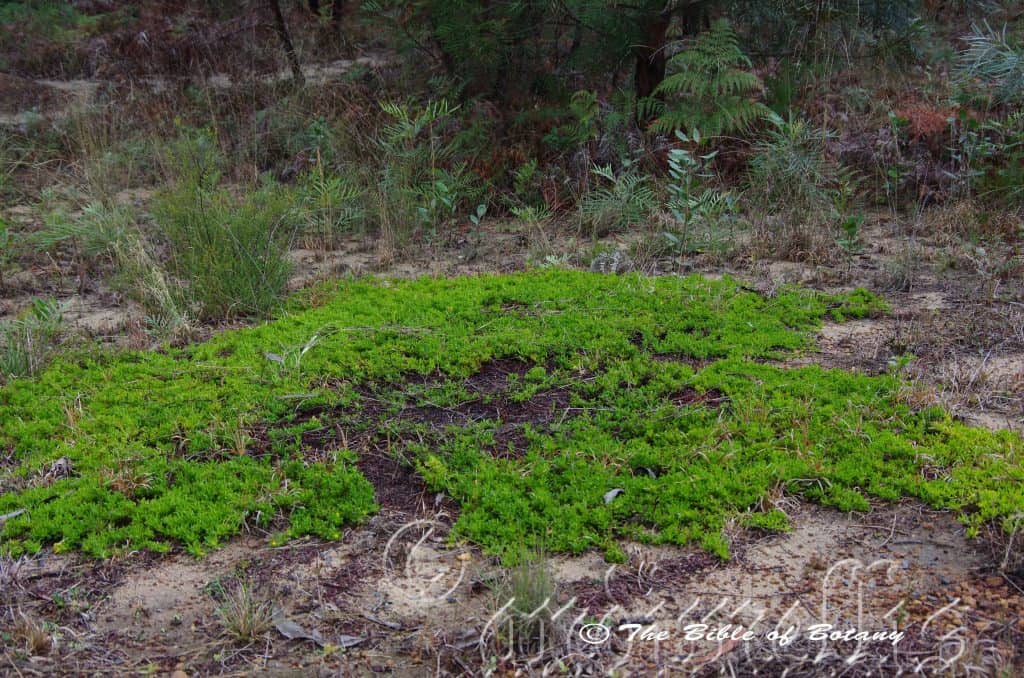
Author’s Garden The Pinnacles NSW
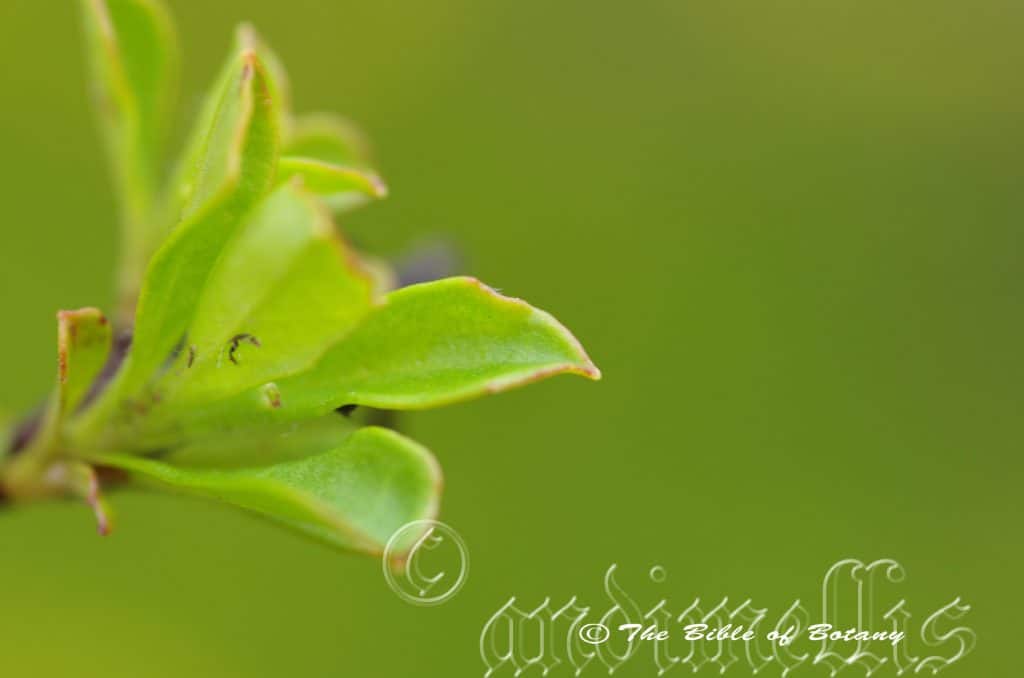
Author’s Garden The Pinnacles NSW
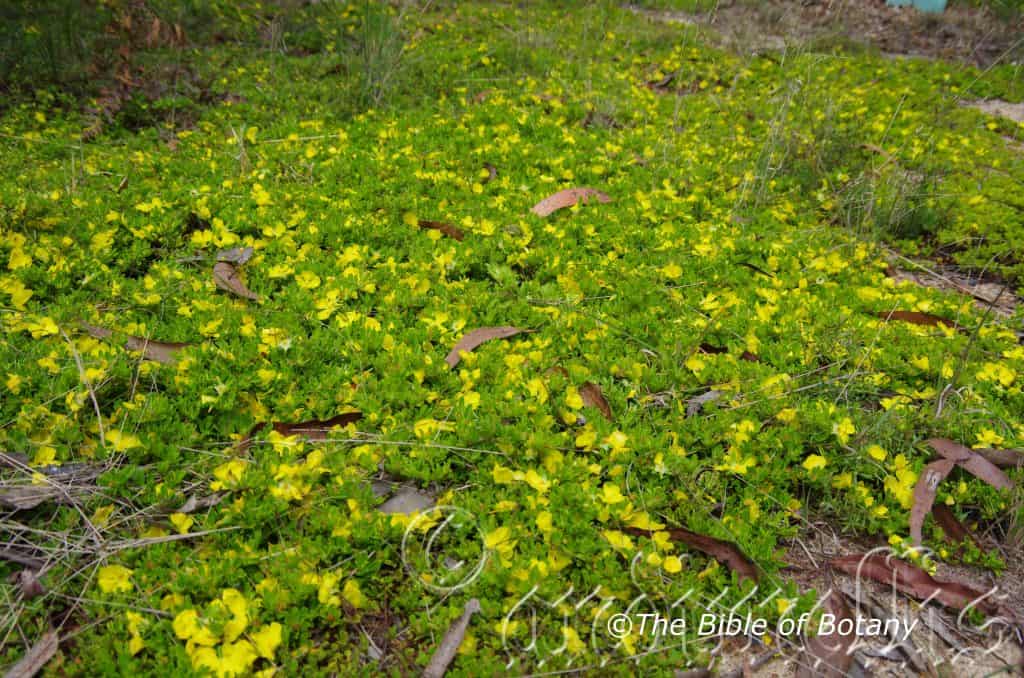
Author’s Garden The Pinnacles NSW

Author’s Garden The Pinnacles NSW
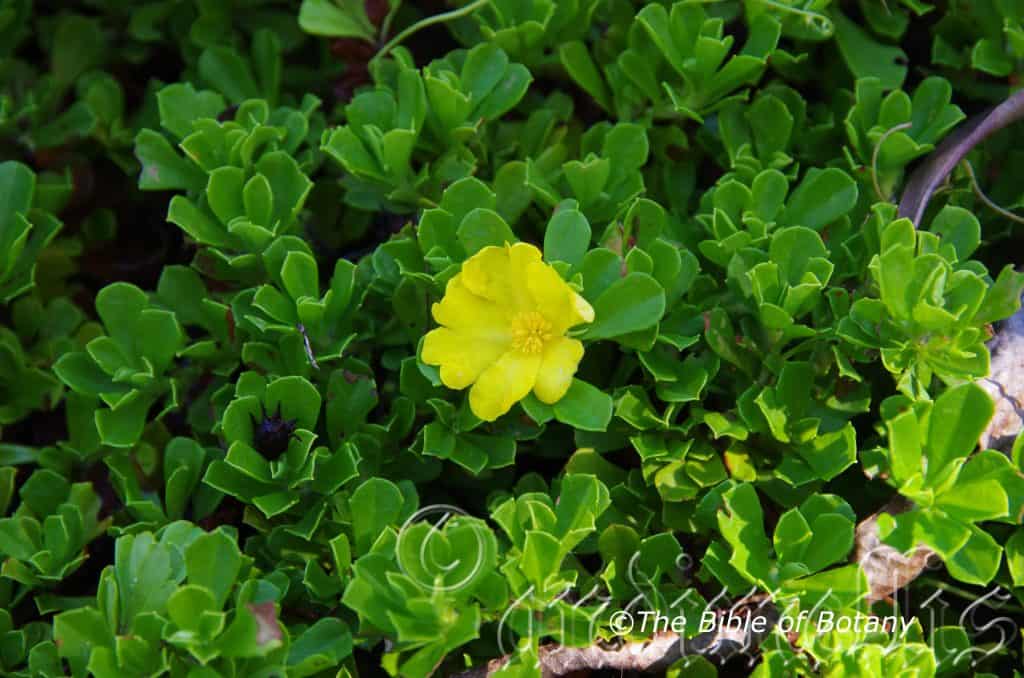
Author’s Garden The Pinnacles NSW
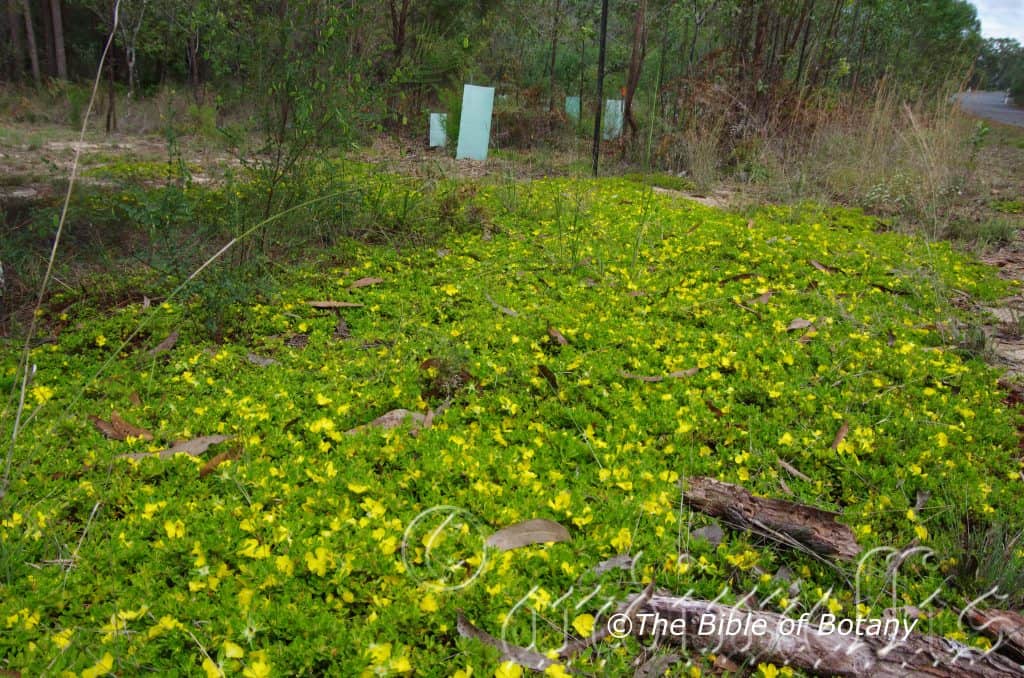
Author’s Garden The Pinnacles NSW
Hibbertia diffusa
Classification
Unranked: Eudicots
Unranked: Core eudicots
Order: Unplaced
Family: Dilleniaceae
Genus: Is named after George Hibbert; 1757-1838, who was a London merchant, patron of botany, an amateur botanist, an advocate of slavery and owned a private Botanic Garden.
Specie: From Difusa, which is Ancient Greek for to spread out thinly, as in a scattered manner or profusely. It refers to the plants, which spread out over large areas.
Sub species:
Common Name: Wedge Guinea Flower.
Distribution:
Hibbertia diffusa is found south from Hervey Bay in central coastal Queensland to Mount Hedrick in eastern coastal Victoria. It is also found in several disjunct populations west of the Great Dividing Range including the Blackdown Tablelands the Carnarvon Gorge National Park in central Queensland, Bathurst and Cobar and Parkes in central New South Wales. It is mainly found on and east of the Great Dividing Range to the coast.
https://avh.ala.org.au/occurrences/search?taxa=Hibbertia+diffusa#tab_mapView
Habitat Aspects Climate:
Hibbertia diffusa prefers full sun to dappled shade. It grows in open forests, open woodlands and headlands along the coast, on the mountains and plains in riparian zones, adjacent to swamps and wallums near lagoons and monsoonal vine thickets. This is a small rounded shrub with deep yellow flowers. The altitude ranges from 12 meters ASL to 700 meters ASL.
The temperatures range from minus 3 degrees in July to 36 degrees in January.
The rainfalls range from lows of 500mm to an average of 1600mm annually.
Soil Requirements:
Hibbertia diffusa prefers skeletal to deep sands, light silts to medium silts, light clays to medium gritty clays. The soils are usually derived from partially decomposed to decomposed sandstones or at times alluvial deposits, granites or metamorphic rocks. The soils pH varies from 5pH through to a 6.5pH. It tolerates seasonal wet to waterlogged soils and seasonal high water tables. Non saline soils to moderately saline soils are tolerated as are salt laden winds.
Height & Spread:
Wild Plants: 0.1m to 0.3m by 0.4m to 0.6m. Often growing in mats of several plants over several square meters.
Characteristics:
Hibbertia diffusa is a decumbent or prostrate sub shrub. The stems are brown to rusty-brown and are usually glabrous or at times sparsely covered in white pubescent hairs.
Hibbertia diffusa’s narrow obovate to oblanceolate leaves measure 4mm to 30mm in length by 3mm to 9mm in width. The bases are tapering attenuate while the apexes are obtuse or obtuse with an emarginate. The concolourous laminas are deep grass-green to sea-green and glabrous. The upper laminas are flat or recurve slightly upwards from the mid vein to the margins and decurve on the apical quarter while the margins are entire or have small teeth or lobes. The mid vein is prominent on the lower lamina and distinctly visible from above. The reddish maroon petioles are glabrous or sparsely covered in white puberulent hairs and measure 2mm to 3mm in length.
The inflorescences of Hibbertia aspera are born terminally or on short axillary stems. The flowers measure 17mm to 23mm in diameter. The 5 mid olive-green sepals are tinged deep purple-maroon, broad lanceolate sepals and cupuliform at the obtuse-acute apexes. It is glabrous externally and internally and measure 6mm to 8mm in length by 3mm to 4mm in width. The 5 bright yellow petals are broad spathulate with broad obtuse apexes with a very deep emarginate tip. They measure 7mm to 10mm in length by 6mm to 7.6mm in width. The pedicels measure 0mm to 1mm in length.
There are 20 to 25 bright yellow stamens surrounding the 3 carpels. The stamens measure 2 to 2.5mm in length. The 3 carpels and pale green pistil are glabrous. The flowers appear from late August to late April with the odd flower appearing during the other months.
Hibbertia diffusa’s fruits are globose capsules or berries. The sepals are persistent on the fruits. The 3 chamber carpels are glabrous and measure 6mm to 8mm in diameter. The green fruits turn reddish-brown when ripe. The deep brownish almost black globose seed measures 2mm to 3mm in diameter.
Wildlife:
Hibbertia diffusa wildlife is unknown to the author.
Cultivation:
Hibbertia diffusa is probably Australia’s most beautiful small prostrate ground cover. Adding to its beauty is the fact it flowers for nine months of the year and is suitable for small gardens to the largest garden. It is an excellent, colourful addition for tropical, sub-tropical or semi-arid zones. As garden subjects they will form a small mat hugging the ground or can be used to grow over or up small shrubs with sparse foliages close to the ground. It will grow from 100mm to 400mm in height by 400mm to 650mm in diameter when grown in the open. It is fast growing, drought tolerant once established and are cold tolerant to temperatures at least as low as minus 4 degrees.
It is fast growing, drought tolerant once established and are cold tolerant to temperatures at least as low as 6 degrees with only minor burning of the tips. I would be tempted to grow this plant further north along the Range to at least Rockhampton where frosts are encountered.
It is most suitable for use around swimming pools, sunny courtyards, besides pathways, rockeries, along sandy banks or along or between drive ways.
If it is placed around a pool then I would place them into the center not at the ends and plant 2 or 3 in a straight row for a very formal look or use curves for the natural look. Here the choice of companion plants to use either side is limited only by size of the area to be landscaped. Leaf size or flower colour is limited by your imagination. The only limitation would be not to use other yellow flowering plants.
It is great adjacent to small areas of bush close to paths or the house so their deep yellow flowers can be viewed regularly. It is also suited for planting in small sunny rockeries as a fill in plant. Here they can be planted in small groups of 3 to 9 or as a standalone plant scattered here and there to create a harsher more barren look with other arid or alpine plants. If it is surrounded by slightly taller plants with larger leaves and red, deep blue or purple flowers they will create a very strong scene with depth and breadth especially when it is in flower.
Again 2 to 9 planted back from a bend or corner will become a very strong focal point when in flower, gain a lot of attention whether you are coming or going because of the fresh clean look of the foliage even in the driest of times. They can be tip pruned to make them bushier. Hard pruning can be done once the plants are established but some set back may occur so it is better to trim the plants on a regular or annual basis. They respond well to pruning recovering quickly and often increasing the number of flowers on the new growth.
Ensure that the whole plant is on display from most sections of the garden as the flowers are a real bonus.
Whether it is in flower or not this plant will catch your attention with its iridescent like green foliage. Mass plantings are best achieved by planting them at 0.5 meters to 1 meter centers.
Its only down side here is in 2002 prolonged wet season (2200 mm) we lost many plants then to add to its woes it followed up with the lowest Autumn and winter rains on record where many more plants died. The good news was that when the nom restarted the soil had a good reserve of seed and by mid 2024 it had fully recovered.
Propagation:
Seeds: Hibbertia diffusa seeds can be sown directly onto a seed raising mix. Cover them with 1mm of fine sand and keep moist not wet. Place the tray in a warm sunny position or beneath 30mm shade cloth. When the seedlings are 20mm to 30mm tall, prick them out and plant them into 50mm native tubes using a good organic mix.
Once the seedlings reach 150mm to 200mm in height they can be planted out into their permanent position. Nip the growing tips out, plant and fertilize.
Cuttings: Often rooted stems can be found on plants. These can be taken and treated as cuttings, by planting directly into tubes or small pots. Water with our recommended fertilizer on potting up.
Use 100mm long half ripened material when growing from cuttings from the present season’s growth. Take them in mid-autumn or early spring. Remove half the leaves from the bottom section being careful not to tear the bark. Take a 10mm slice off the bark from the bottom of the cutting on one side.
1 Prepare the cutting mix by adding one third sharp clean river sand, one third peat and one third perlite. These ingredients are sterilize,
2 Select good material from non diseased plants,
3 Select semi green stems for cuttings. Look for a stem with two or three nodes,
4 Place the cutting on a flat, hard surface, and make a clean cut down one side of the cutting at the base for 10mm with a sharp sterile knife or razor blade. – This scarification of the node will increase the chances of roots emerging from this spot. Now remove all but one or two the leaves, leaving the apex leaves in tact. If the leaves are very large in proportion to the stem, cut off the apical halves.
5 Fill a saucer with water, and place a little medium strength rooting hormone into another container like a milk bottle top. Dip the node end of the cutting into the water and then into the rooting hormone. Tap off any excess hormone,
6 Use a small dipple stick or old pencil to poke a hole into the soilless potting mix. Ensure the hole is slightly larger than the stem diameter and be careful not to wipe the rooting hormone off the cuttings base, place the cuttings in a pattern ensuring the cuttings are not touching each other,
7 I like to place the pots in Plastic bags to help maintain temperature and moisture. Place in a semi shaded place like under 50mm shade cloth.
8 When the cuttings have struck, open the bag to allow air circulation for a few days to a week,
9 Once hardened off remove the cuttings from the bag and allow to further hardening for a few more days,
10 Transplant into a good potting mix to grow on.
Fertilize using seaweed, fish emulsion or organic chicken pellets soaked in water on an alternate basis. Fertilize every two months until the plants are established then twice annually in early September or March to maintain health, vitality and better flowering.
Further Comments from Readers:
Hi reader, it seems you use The Bible of Botany a lot. That’s great as we have great pleasure in bringing it to you! It’s a little awkward for us to ask, but our first aim is to purchase land approximately 1,600 hectares to link several parcels of N.P. into one at The Pinnacles NSW Australia, but we need your help. We’re not salespeople. We’re amateur botanists who have dedicated over 30 years to saving the environment in a practical way. We depend on donations to reach our goal. If you donate just $5, the price of your coffee this Sunday, We can help to keep the planet alive in a real way and continue to bring you regular updates and features on Australian plants all in one Botanical Bible. Any support is greatly appreciated. Thank you.
In the spirit of reconciliation we acknowledge the Bundjalung, Gumbaynggirr and Yaegl and all aboriginal nations throughout Australia and their connections to land, sea and community. We pay our respect to their Elders past, present and future for the pleasures we have gained.
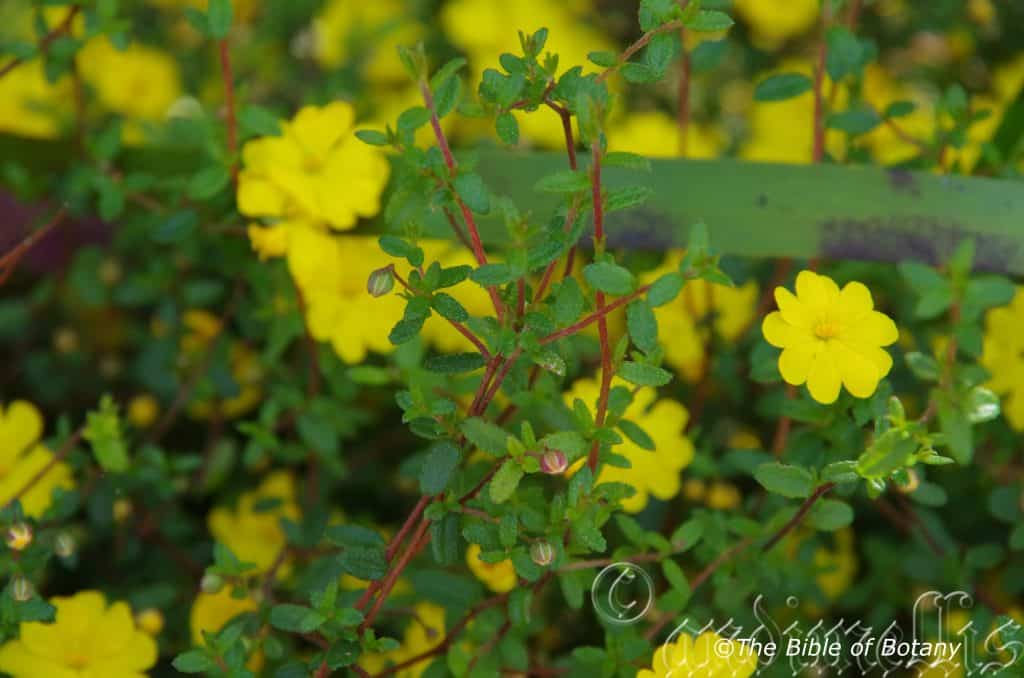
National Botanic Gardens ACT
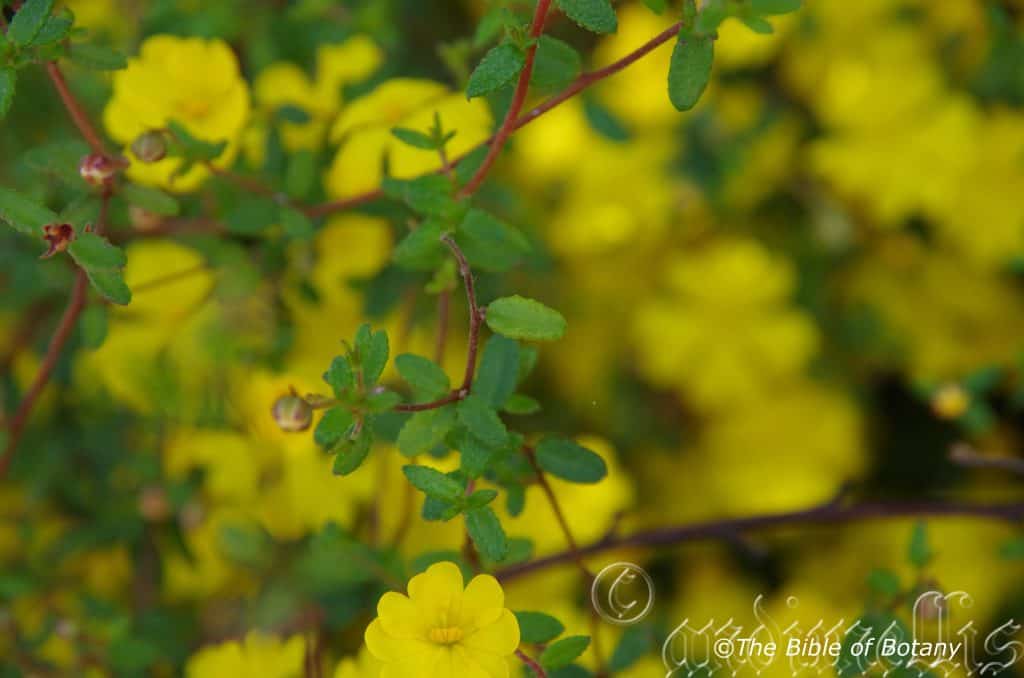
National Botanic Gardens ACT

National Botanic Gardens ACT
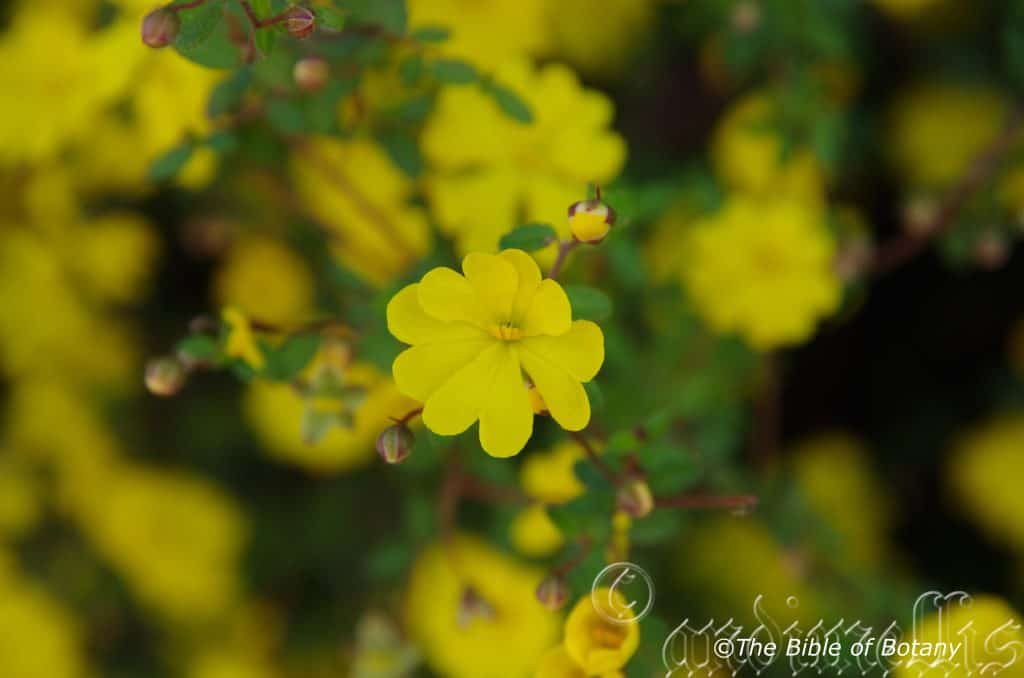
National Botanic Gardens ACT
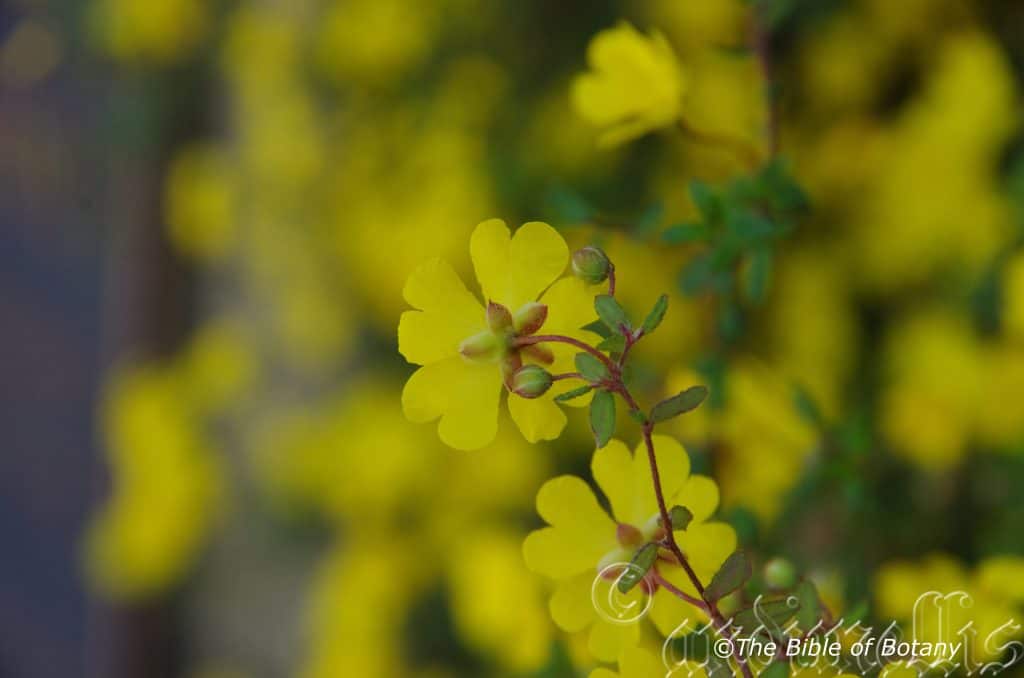
National Botanic Gardens ACT
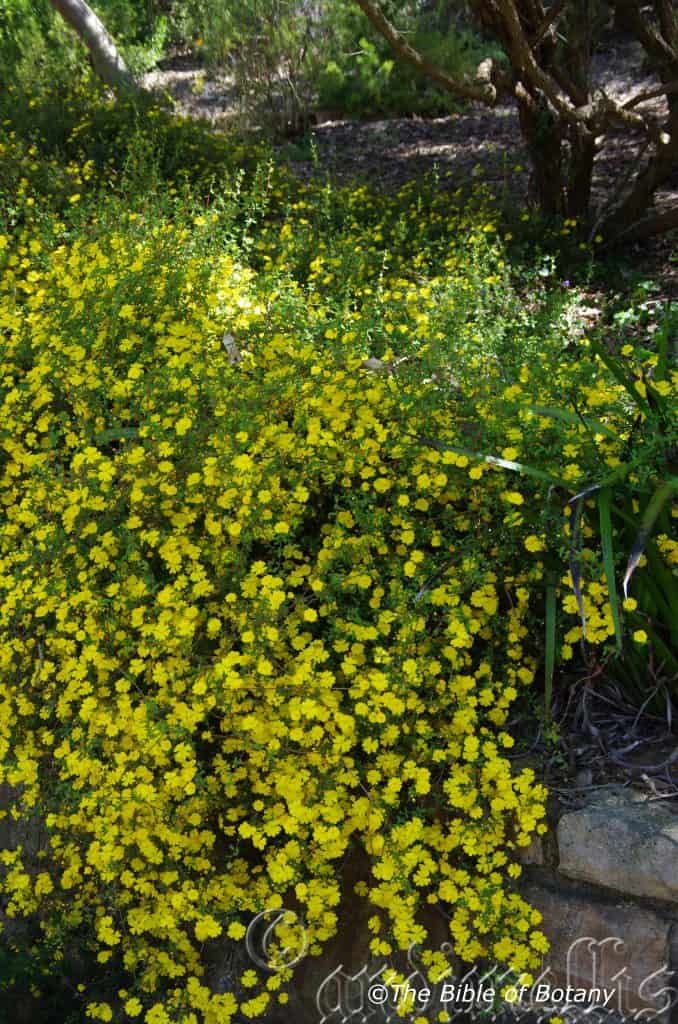
National Botanic Gardens ACT
Hibbertia empetrifolia
Classification
Unranked: Eudicots
Unranked: Core eudicots
Order: Unplaced
Family: Dilleniaceae
Genus: Is named after George Hibbert; 1757-1838, who was a London merchant, patron of botany, an amateur botanist, an advocate of slavery and owned a private Botanic Garden.
Specie: From émpetron, which is Ancient Greek for a sea heath and Folia, which is Latin for foliage. It refers to plants, which have leaves that resemble those of the European sea heath in the genus Empetrum.
Sub species:
Common Name:
Distribution:
Hibbertia empetrifolia is found south from Bucca Creek, Nana Glen in north eastern New South Wales to Port Campbell in southern Victoria. It is mainly found on and east of the Great Dividing Range to the coast.
It is also found on south from Spring Mountain Conservation Park to Kangaroo Island in southern South Australia.
In Tasmania it grows mainly on the eastern side lowlands.
https://avh.ala.org.au/occurrences/search?taxa=Hibbertia+empetrifolia#tab_mapView
Habitat Aspects Climate:
Hibbertia empetrifolia prefers full sun to dappled shade. It grows in open or closed woodlands and sclerophyll forests or adjacent to coastal wallums. The altitude ranges from 10 meters ASL to 1100 meters ASL.
The temperatures range from minus 3 degrees in July to 36 degrees in January.
The rainfalls range from lows of 500mm to an average of 1600mm annually.
Soil Requirements:
Hibbertia empetrifolia prefers skeletal to deep sands, light silts to medium silts, light clays to medium gritty clays. The soils are usually derived from partially decomposed to decomposed sandstones or at times alluvial deposits, granites or accumulated beach sands. The soils pH varies from 5pH through to a 6.5pH. It tolerates seasonal wet to waterlogged soils and or seasonal high water tables. Non saline soils to moderately saline soils are tolerated as are salt laden winds.
Height & Spread:
Wild Plants: 0.1m to 0.3m by 1m to 2m. Often growing in dense mats scrambling over other vegetation over several square met
Characteristics:
Hibbertia empetrifolia is a decumbent or prostrate scrambling sub shrub. The stems are brown to rusty-brown and are usually glabrous or at times sparsely covered in white pubescent hairs.The wiry to trailing stems are densely covered in short, white pubescent hairs, with a few simple or stellate hairs.
The usually oblong or at times oblanceolate leaves measure 5mm to 7mm in length by 1mm to 3mm in width. The bases taper to the stems, while the apexes are obtuse or at times mucronate. The discolourous or concolourous leaves are moderately covered in somewhat caduceus, long, soft, white antrorse, tomentose hairs on both laminas with some simple or stellate hairs. The lower lamina has fewer hairs, which are usually restricted more to the midrib, near the lateral veins and margins. The mid vein is strongly prominent on the basal half of the lower lamina. The leaves curve upwards from the midvein to the margins and decurve downwards near the apex. The entire margins are recurved to revolute.
The inflorescences of Hibbertia empetrifolia are born solitary or rarely in twos from the terminals or on short axillary stems. The peduncle measures 2mm to 10mm in length. The sepals are densely covered in long, soft, white tomentose or pubescent hairs externally and are glabrous internally and measure 3mm to 6mm in length. The 3 to 6 bright yellow petals measure 3mm to 8mm in length. The 5 to 9 stamens appear to be more on one side of the carpel than evenly spaced. It flowers for most of the year when conditions are favourable.
Hibbertia empetrifolia fruits are globose capsules or berries. The sepals are persistent on the fruits. The 2 carpels are moderately to densely covered in stellate-hairy and measure 3mm to 5mm in length. The green fruits turn reddish-brown when ripe. The deep brownish almost black globose seed measures 2mm to 3mm in diameter.
Wildlife:
Hibbertia empetrifolia’s wildlife is unknown to the author.
Cultivation:
Hibbertia empetrifolia is another beautiful small procumbent ground cover or subshrub. Adding to its beauty is the fact it flowers most of the year and is suitable for small gardens to the largest garden. It is an excellent, colourful addition for sub-tropical or semi-arid zones. As garden subjects it will form a small scrambly ground or can be used to grow over or up small shrubs with sparse foliages close to the ground. It will grow from 100mm to 200mm in height by 400mm to 650mm in diameter when grown in the open. It is fast growing, drought tolerant once established and is cold tolerant to temperatures at least as low as minus 4 degrees.
It is fast growing, drought tolerant once established and worthwile trying further north along the Range to at least Rockhampton where frosts are encountered.
It is most suitable for use around swimming pools, sunny courtyards, besides pathways, rockeries, along sandy banks or along or between drive ways.
If it is placed around a pool then I would place them into the center not at the ends and plant 2 or 3 in a straight row for a very formal look or use curves for the natural look. Here the choice of companion plants to use either side is limited only by size of the area to be landscaped. Leaf size or flower colour is limited by your imagination. The only limitation would be not to use other yellow flowering plants.
It is great adjacent to small areas of bush close to paths or the house so their deep yellow flowers can be viewed regularly. It is also suited for planting in small sunny rockeries as a fill in plant. Here they can be planted in small groups of 3 to 9 or as a standalone plant scattered here and there to create a harsher more barren look with other arid or alpine plants. If it is surrounded by slightly taller plants with larger leaves and red, deep blue or purple flowers they will create a very strong scene with depth and breadth especially when it is in flower.
Again 2 to 9 planted back from a bend or corner will become a very strong focal point when in flower, gain a lot of attention whether you are coming or going because of the fresh clean look of the foliage even in the driest of times. They can be tip pruned to make them bushier. Hard pruning can be done once the plants are established but some set back may occur so it is better to trim the plants on a regular or annual basis. It would respond well to pruning recovering quickly and often increasing the number of flowers in the following season.
Ensure that the whole plant is on display from most sections of the garden as the flowers are a real bonus especially if deep blues or purples are used in conjunction with its yellow blooms.
Whether it is in flower or not these plants will catch your attention. Mass plantings are best achieved by planting them at 0.5 meters to 1 meter centers.
Propagation:
Seeds: Hibbertia empetrifolia seeds can be sown directly onto a seed raising mix. Cover them with 1mm of fine sand and keep moist not wet. Place the tray in a warm sunny position or beneath 30mm shade cloth. When the seedlings are 20mm to 30mm tall, prick them out and plant them into 50mm native tubes using a good organic mix.
Once the seedlings reach 150mm to 200mm in height they can be planted out into their permanent position. Nip the growing tips out, plant and fertilize.
Cuttings:
Use 100mm long half ripened material when growing from cuttings from the present season’s growth. Take them in mid-autumn or early spring. Remove half the leaves from the bottom section being careful not to tear the bark. Take a 10mm slice off the bark from the bottom of the cutting on one side.
1 Prepare the cutting mix by adding one third sharp clean river sand, one third peat and one third perlite. These ingredients are sterilize,
2 Select good material from non diseased plants,
3 Select semi green stems for cuttings. Look for a stem with two or three nodes,
4 Place the cutting on a flat, hard surface, and make a clean cut down one side of the cutting at the base for 10mm with a sharp sterile knife or razor blade. – This scarification of the node will increase the chances of roots emerging from this spot. Now remove all but one or two the leaves, leaving the apex leaves in tact. If the leaves are very large in proportion to the stem, cut off the apical halves.
5 Fill a saucer with water, and place a little medium strength rooting hormone into another container like a milk bottle top. Dip the node end of the cutting into the water and then into the rooting hormone. Tap off any excess hormone,
6 Use a small dipple stick or old pencil to poke a hole into the soilless potting mix. Ensure the hole is slightly larger than the stem diameter and be careful not to wipe the rooting hormone off the cuttings base, place the cuttings in a pattern ensuring the cuttings are not touching each other,
7 I like to place the pots in Plastic bags to help maintain temperature and moisture. Place in a semi shaded place like under 50mm shade cloth.
8 When the cuttings have struck, open the bag to allow air circulation for a few days to a week,
9 Once hardened off remove the cuttings from the bag and allow to further hardening for a few more days,
10 Transplant into a good potting mix to grow on.
Fertilize using seaweed, fish emulsion or organic chicken pellets soaked in water on an alternate basis. Fertilize every two months until the plants are established then twice annually in early September or March to maintain health, vitality and better flowering.
Further Comments from Readers:
Hi reader, it seems you use The Bible of Botany a lot. That’s great as we have great pleasure in bringing it to you! It’s a little awkward for us to ask, but our first aim is to purchase land approximately 1,600 hectares to link several parcels of N.P. into one at The Pinnacles NSW Australia, but we need your help. We’re not salespeople. We’re amateur botanists who have dedicated over 30 years to saving the environment in a practical way. We depend on donations to reach our goal. If you donate just $5, the price of your coffee this Sunday, We can help to keep the planet alive in a real way and continue to bring you regular updates and features on Australian plants all in one Botanical Bible. Any support is greatly appreciated. Thank you.
In the spirit of reconciliation we acknowledge the Bundjalung, Gumbaynggirr and Yaegl and all aboriginal nations throughout Australia and their connections to land, sea and community. We pay our respect to their Elders past, present and future for the pleasures we have gained.
Hibbertia fasciculata
Classification
Unranked: Eudicots
Unranked: Core eudicots
Family: Dilleniaceae
Genus: Is named after George Hibbert; 1757-1838, who was a London merchant, patron of botany, an amateur botanist, an advocate of slavery and owned a private Botanic Garden.
Specie: From Fasiculus, which is Latin for a close cluster or to be bundled together. It refers to flattened stems, which are bundled together along the branches.
Sub species:
Common Name:
Distribution:
Hibbertia fasciculata is widespread south from Fraser Island in central coastal Queensland to south eastern Tasmania where it is mainly found on and east of the Great Dividing Range. It is found on the southern half of Victoria west to Mount Gambier and on Kangaroo Island.
https://avh.ala.org.au/occurrences/search?taxa=Hibbertia+fasciculata#tab_mapView
Habitat Aspects Climate:
Hibbertia fasciculata prefers full sun to dappled shade. It grows in dry heaths and moist coastal and mountain heaths or dry sclerophyll forest on the coast and nearby ranges. The altitude ranges from 5 meters ASL to 750 meters ASL but usually below 260 meters ASL.
The temperatures range from 10 degree in July to 34 degrees in January.
The rainfalls range from lows of 600mm to an average of 2000mm annually.
Soil Requirements:
Hibbertia fasciculata prefers to grow on reddish skeletal sands, deep peaty white sands to white, yellow, and orange to reddish light fatty clays. The soils are usually derived from partially decomposed to decomposed sandstones, granites or accumulated beach sands. The soils pH varies from 5pH through to a 7pH. It tolerates seasonal waterlogged soils and seasonal high water tables. Non saline soils to moderately saline soils are tolerated as are salt laden winds.
Height & Spread:
Wild Plants: 0.3m to 0.4m by 0.4m to 0.5m.
Characteristics:
Hibbertia fasciculata’s are small erect to semi erect sub shrubs. The stems are brown to reddish-brown and are glabrous to sparsely covered in white pulverulent to sub tomentose hairs.
Hibbertia fasciculata’s narrow linear leaves are in clusters of 4 to 8 individual leaves on a common peduncle and measure 4mm to 7mm in length by 0.4mm to 0.5mm in width. The bases are straight while the apexes are obtuse or acute with or without a small mucronate tip. The concolourous to discolourous laminas are mid grass-green to sea-green and glabrous to very sparsely covered in soft, white puberulent hairs on the upper lamina while the lower lamina is the same or slightly paler. The upper laminas recurve strongly upwards from the mid vein to the margins to form a u shape and decurve slightly downwards close to the apex while the margins are entire. The mid vein and lateral veins are not prominent on either surface.
The inflorescences of Hibbertia fasciculata are born terminally from short auxiliary spikes from the leaf axis. The flowers measure 17mm to 21mm in diameter. The 5 mid grass-green sepals are tinged deep purple-maroon on the apical half and are broad lanceolate with strong cupuliform obtuse-acute apexes. It is glabrous externally and internally and measure 4mm to 6mm in length by 1.5mm to 2.5mm in width. The 5 bright yellow petals are broad oblong with a broad obtuse apex and a broad deep emarginate tip. They measure 7mm to 9.5mm in length by 7mm to 9.5mm in width.
There are 8 to 12 bright yellow stamens surround the 3 carpels. The pale yellow filaments measure 1 to 1.5mm in length while the deep yellow, obloidal, basifixed anthers measure 1.5mm to 2.5mm in length. The anthers dehisce longitudinally. The 3 carpels and pale lime-green pistil are glabrous. The pistil measures 3.5mm to 5mm in length. The flowers appear from late June to late December or at times early January.
Hibbertia fasciculata’s fruits are globose capsules or berries surrounded by the persistent sepals. The calyxes are persistent and completely surround the fruits. The 3 chamber carpels are glabrous and measure 5mm to 7mm in diameter. The green fruits turn reddish-brown when ripe. The deep brownish almost black globose seed measures 2mm to 3mm in diameter.
Wildlife:
Hibbertia fasciculata wildlife is unknown to the author though small black beetles were seen on the flowers and these were covered in yellow pollen.
Cultivation:
Hibbertia fasciculata wildlife is unknown to the author however small black beetles have been observed on the flowers and these were covered in yellow pollen.
Cultivation:
Hibbertia fasciculata is a very beautiful small procumbent ground cover which is suitable for small gardens to the largest garden. It is an excellent, colourful addition for tropical, sub-tropical or semi-arid zones. As garden subjects it will form a small scrambling sub shrub close to the ground. It will grow from 300mm to 400mm in height by 500mm to 800mm in diameter when grown in the open. It is fast growing, drought tolerant once established and are cold tolerant to temperatures at least as low as minus 4 degrees.
It is most suitable for use around swimming pools, sunny courtyards, besides pathways, rockeries, along sandy banks or along or between drive ways.
If it is placed around a pool then place it towards the center or have multiple plants at each end with contrasting red, blue or purple flowers in the centre.
It is great adjacent to small areas of bush close to paths or the house so their deep yellow flowers can be viewed regularly. It is also suited for planting in small sunny rockeries as a fill in plant. Here it can be planted in small groups of 3 to 9 or as a standalone plant scattered here and there to create a harsher more barren look with other arid or alpine plants.
Again 2 to 9 plants, planted back from a bend or corner will become a very strong focal point when in flower, gain a lot of attention whether you are coming or going because of the fresh clean look of the foliage even in the driest of times. It can be tip pruned to make them bushier. Hard pruning can be done once the plants are established but some set back may occur so it is better to trim the plants on a regular or annual basis. It responds well to pruning recovering quickly and often increasing the number of flowers on the new growth.
Whether it is in flower or not these plants will catch your attention. Mass plantings are best achieved by planting them at 200mm to 800mm centers.
Propagation:
Seeds: Hibbertia fasciculata seeds can be sown directly onto a seed raising mix. Cover them with 1mm of fine sand and keep moist not wet. Place the tray in a warm sunny position or beneath 30mm shade cloth. When the seedlings are 20mm to 30mm tall, prick them out and plant them into 50mm native tubes using a good organic mix.
Once the seedlings reach 150mm to 200mm in height they can be planted out into their permanent position. Nip the growing tips out, plant and fertilize.
Cuttings: Use 40mm to 60mm long half ripened material when growing from cuttings from the present season’s growth. Take them in mid-autumn or early spring. Remove half the leaves from the bottom section being careful not to tear the bark. Also remove any flower buds that maybe forming. Take a 10mm slice off the bark from the bottom of the cutting on one side. Using an appropriate rooting hormone, dip the cutting in and place it in a moist, sterile seed raising mix.
Place the trays beneath 30mm shade and keep the trays warm. Bottom heat is beneficial in cooler climates when striking the cuttings. Ideally temperatures should be maintained at between 20 to 24 degrees.
When the cuttings have obviously struck and have developed good roots treat them as for seedlings.
Fertilize using seaweed, fish emulsion or organic chicken pellets soaked in water on an alternate basis. Fertilize every two months until the plants are established then twice annually in early September or March to maintain health, vitality and better flowering.
Further Comments from Readers:
Hi reader, it seems you use The Bible of Botany a lot. That’s great as we have great pleasure in bringing it to you! It’s a little awkward for us to ask, but our first aim is to purchase land approximately 1,600 hectares to link several parcels of N.P. into one at The Pinnacles NSW Australia, but we need your help. We’re not salespeople. We’re amateur botanists who have dedicated over 30 years to saving the environment in a practical way. We depend on donations to reach our goal. If you donate just $5, the price of your coffee this Sunday, We can help to keep the planet alive in a real way and continue to bring you regular updates and features on Australian plants all in one Botanical Bible. Any support is greatly appreciated. Thank you.
In the spirit of reconciliation we acknowledge the Bundjalung, Gumbaynggirr and Yaegl and all aboriginal nations throughout Australia and their connections to land, sea and community. We pay our respect to their Elders past, present and future for the pleasures we have gained.
Hibbertia hermanniifolia
Classification
Unranked: Eudicots
Unranked: Core eudicots
Order: Unplaced
Family: Dilleniaceae
Genus: Is named after George Hibbert; 1757-1838, who was a London merchant, patron of botany, an amateur botanist, an advocate of slavery and owned a private Botanic Garden.
Specie: Is named in honour of Paul Hermann; 1646-1695, who was a German botanist, setting up the Leiden Botanic Gardens and making it the finest Botanic Gardens in Europe and Folium, which is Latin for foliage. It refers to a leaves, which resemble the leaves on the Hermannii genus.
Sub species:
Common Name: Wedge Leaf Guinea Flower.
Distribution:
Hibbertia hermanniifolia is found in several disjunct populations south from Mount Jondol in far north east New South Wales near Tenterfield to Mount Elizabeth in north eastern Victoria. It is mainly found on and east of the Great Dividing Range except for a small population which is found in Burrowa–Pine National Park near the border.
https://avh.ala.org.au/occurrences/search?taxa=Hibbertia+hermanniifolia#tab_mapView
Habitat Aspects Climate:
Hibbertia hermanniifolia prefers full sun to dappled shade. It grows in open woodlands, dry heaths at higher altitudes. The altitude ranges from 490 meters ASL to 1280 meters ASL.
The temperatures range from minus 8 degree in July to 32 degrees in January.
The rainfalls range from lows of 750mm to an average of 3200mm annually.
Soil Requirements:
Hibbertia hermanniifolia prefers to grow on skeletal to deep sands and light fatty clays. The soils are usually derived from partially decomposed granites are at times sandstones. The soils pH varies from 5.5pH through to a 6.5pH. It does not tolerate waterlogged soils. Non saline soils to slightly saline soils are tolerated.
Height & Spread:
Wild Plants: 0.1m to 0.15m by 0.3m to 0.6m.
Characteristics:
Hibbertia hermanniifolia’s stems are pale grey. The smaller stems are prostrate to semi pendant. The stems are pale green often tinged pink, red or reddish-purple and covered in white to rusty-red tomentose and stellate hairs.
Hibbertia hermanniifolia’s opposite spathulate or rarely oblanceolate leaves are measure 5mm to 30mm in length by 3mm to 10mm in width. The bases are cuneate while the apexes are usually emarginate or at times obtuse or truncate. The discolourous laminas are deep green to sea-green, glossy and sparsely covered in long white hirsute or branched hairs on the upper lamina while the lower laminas are paler and covered in white or rusty-brown tomentose and stellate hairs. The upper laminas are flat and decurve downwards on the apical third while the margins are entire and decurve close to the edge. The mid vein is prominent on the lower lamina and is visible from the upper lamina. The pale green petioles are covered in white or rusty-brown tomentose and stellate hairs and measure 0.8mm to 2mm in length.
The inflorescences of Hibbertia hermanniifolia are born from the leaf axils. The flowers measure 15mm to 18mm in diameter. The 5 pale green, broad elliptical sepals have an acuminate to long acuminate apex, recurve slightly upwards near the margins and are covered in white tomentose and stellate hairs externally and are glabrous internally. The sepals measure 6mm to 8mm in length by 4mm to 5mm in width. The 5 bright yellow petals are oblong-spathulate with an obtuse apex that is deeply emarginated. The petals measure 6mm to 7mm in length by 4mm to 4.5mm in width. The pale green pedicels are covered in white or rusty-brown tomentose and stellate hairs and measure 0mm to 5mm in length in from the south form while the northern plants petioles measure 12mm to 16mm in length.
The 10 to 15 yellow stamens with several reduced to staminodes measure 2 to 3mm in length while the 30 to 40 yellow staminodes completely surround the carpels. The 2 pastel green pistils measure 2.5mm to 3.5mm in length. The flowers appear from September to early May.
Hibbertia hermanniifolia’s fruits are globose capsules or berries surrounded by the persistent sepals. The green berries turn pale grey-brown when ripe. The 2 chamber carpels are covered in white hirsute hairs. The deep brown black globose seed measures 2.8mm to 3.2mm in diameter.
Wildlife:
Hibbertia hermanniifolia wildlife is unknown to the author.
Cultivation:
Hibbertia hermanniifolia is a very beautiful small native herb or small decumbent ground cover which is suitable for small gardens to the largest garden. It is an excellent colourful addition for sub alpine to alpine locations where the sandy soils are well drained. As garden subjects they will grow to 0.1 meters to 0.15 meters in height by 0.5 meters to 0.7 meters wide
It is fast growing, drought tolerant once established and are cold tolerant to temperatures at least as low as minus 8 degrees. I would be tempted to grow this plant further north to at least Toowoomba where severe frosts are encountered on a regular basis.
It is great adjacent to small areas of bush close to paths or the house so their deep yellow flowers can be viewed regularly. It is also suited for planting in small or large rockeries as a fill in plant. Here it can be planted in small groups of 3 to 5 or as a standalone plant to create a harsher more barren look with other arid plants. If it is surrounded by shorter plants with fine foliages and red flowers it will dominate at the center giving breadth and strength to the bed especially when it is in flower.
Ensure that the whole plant or at least most of it is on display from most sections of the garden as the flowers are a real bonus.
Mass plantings are best achieved by planting them at 0.5 meters for a crowded heath like or at 1 meter centers for a rocky open scene. On flat ground the flowers will be at ground level which is very striking. Place it back from the path as it is rather brittle and will be easily broken or passer-byes will continually remove the flower heads. If these plants are on display to the public you may have a never ending number of fanciers knocking on your door wanting to know the name and where you attained it from as it is so striking in the garden. Make the heath garden path narrow so you have to feel the plants as you walk through the garden bed. This gives an extra dimension which many people forget about when designing heath gardens. Plants must be planted close together and be short so you can see over the tallest ones with the exception of one or two plants at the most. These will be feature plants. The idea is to achieve a feeling of expansive flatness. This can be achieved with using the Hibbertia hermanniifolia’s brilliant yellow flowers. Mix them with other smaller shrubs so none of them dominate the scene but blend in to give a mosaic of foliage colours that you oversee. Here I immediately think of Actinotis helianthi, Chloanthes parviflora, Leschenaultia biloba, Leschenaultia formosa and several of the Dampers specie.
Propagation:
Seeds: Hibbertia hermanniifolia seeds can be sown directly onto a seed raising mix. Cover them with 2mm of fine sand and keep moist not wet. Place the tray in a warm sunny position or beneath 30mm shade cloth. When the seedlings are 20mm to 30mm tall, prick them out and plant them into 50mm native tubes using a good organic mix.
Once the seedlings reach 150mm to 200mm in height they can be planted out into their permanent position.
Cuttings: Use 80mm to 100mm long half ripened material when growing from cuttings from the present season’s growth. Take them in mid-autumn or early spring. Remove half the leaves from the bottom section being careful not to tear the bark. Take a 10mm slice off the bark from the bottom of the cutting on one side.
1 Prepare the cutting mix by adding one third sharp clean river sand, one third peat and one third perlite. These ingredients are sterilize,
2 Select good material from non diseased plants,
3 Select semi green stems for cuttings. Look for a stem with two or three nodes,
4 Place the cutting on a flat, hard surface, and make a clean cut down one side of the cutting at the base for 10mm with a sharp sterile knife or razor blade. – This scarification of the node will increase the chances of roots emerging from this spot. Now remove all but one or two the leaves, leaving the apex leaves in tact. If the leaves are very large in proportion to the stem, cut off the apical halves.
5 Fill a saucer with water, and place a little medium strength rooting hormone into another container like a milk bottle top. Dip the node end of the cutting into the water and then into the rooting hormone. Tap off any excess hormone,
6 Use a small dipple stick or old pencil to poke a hole into the soilless potting mix. Ensure the hole is slightly larger than the stem diameter and be careful not to wipe the rooting hormone off the cuttings base, place the cuttings in a pattern ensuring the cuttings are not touching each other,
7 I like to place the pots in Plastic bags to help maintain temperature and moisture. Place in a semi shaded place like under 50mm shade cloth.
8 When the cuttings have struck, open the bag to allow air circulation for a few days to a week,
9 Once hardened off remove the cuttings from the bag and allow to further hardening for a few more days,
10 Transplant into a good potting mix to grow on.
Fertilize using seaweed, fish emulsion or organic chicken pellets soaked in water on an alternate basis. Fertilize every two months until the plants are established then twice annually in early September or March to maintain health, vitality and better flowering.
Further Comments from Readers:
Hi reader, it seems you use The Bible of Botany a lot. That’s great as we have great pleasure in bringing it to you! It’s a little awkward for us to ask, but our first aim is to purchase land approximately 1,600 hectares to link several parcels of N.P. into one at The Pinnacles NSW Australia, but we need your help. We’re not salespeople. We’re amateur botanists who have dedicated over 30 years to saving the environment in a practical way. We depend on donations to reach our goal. If you donate just $5, the price of your coffee this Sunday, We can help to keep the planet alive in a real way and continue to bring you regular updates and features on Australian plants all in one Botanical Bible. Any support is greatly appreciated. Thank you.
In the spirit of reconciliation we acknowledge the Bundjalung, Gumbaynggirr and Yaegl and all aboriginal nations throughout Australia and their connections to land, sea and community. We pay our respect to their Elders past, present and future for the pleasures we have gained.
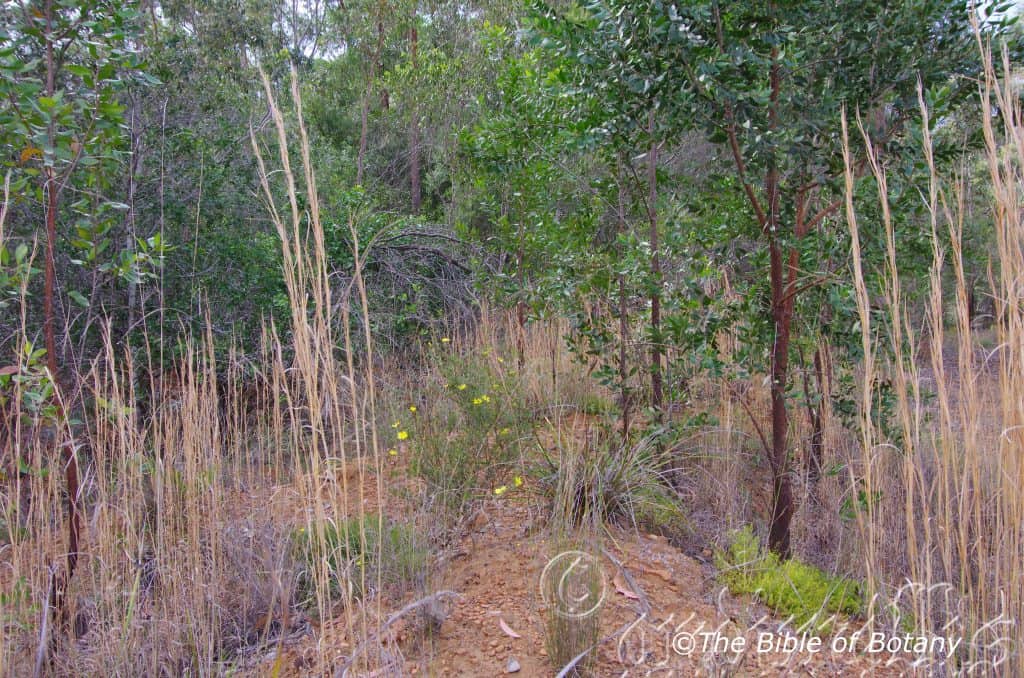
The Pinnacles NSW
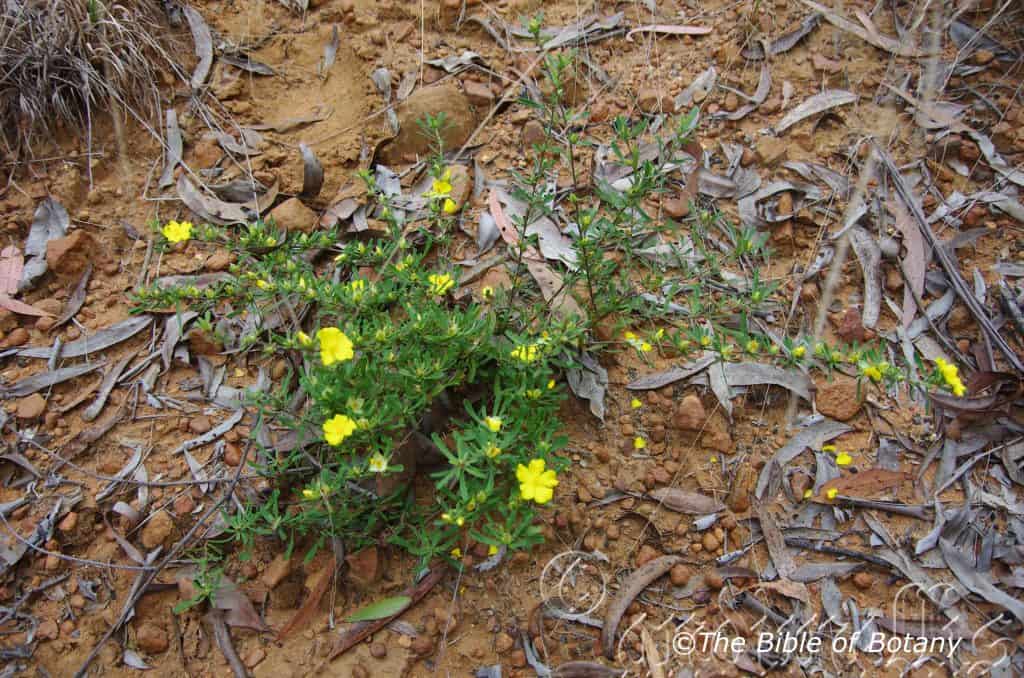
Author’s Garden The Pinnacles NSW
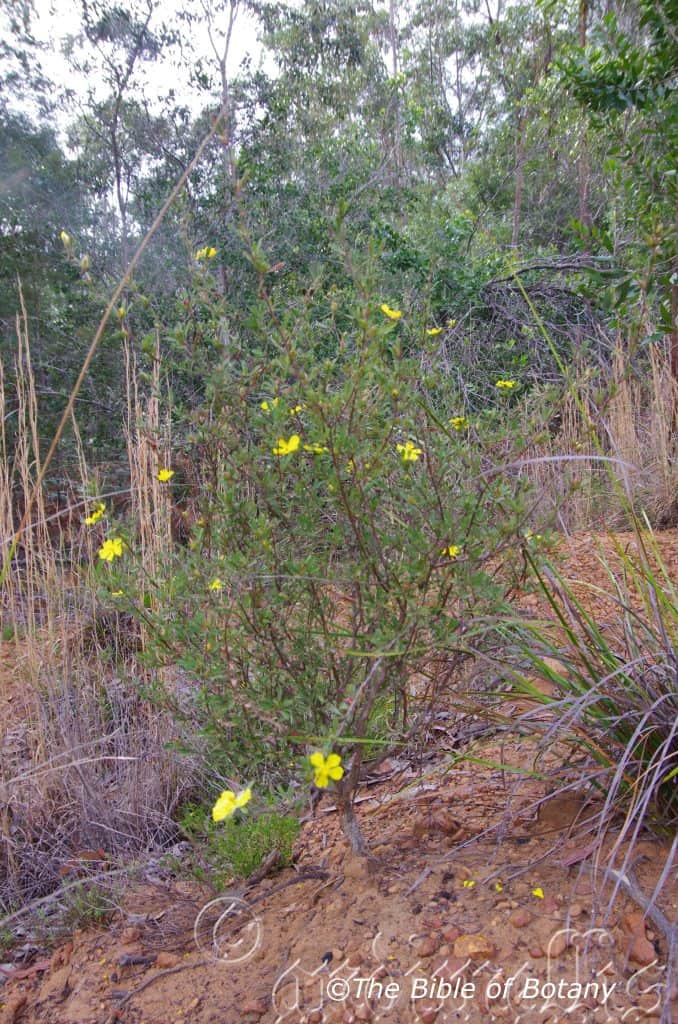
The Pinnacles NSW
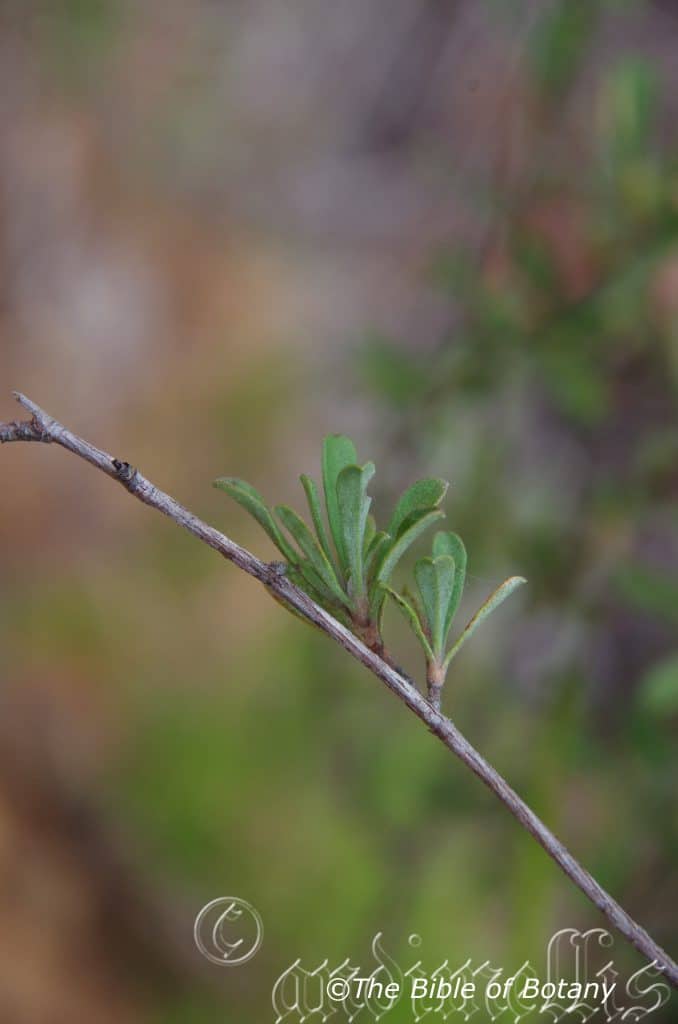
Author’s Garden The Pinnacles NSW
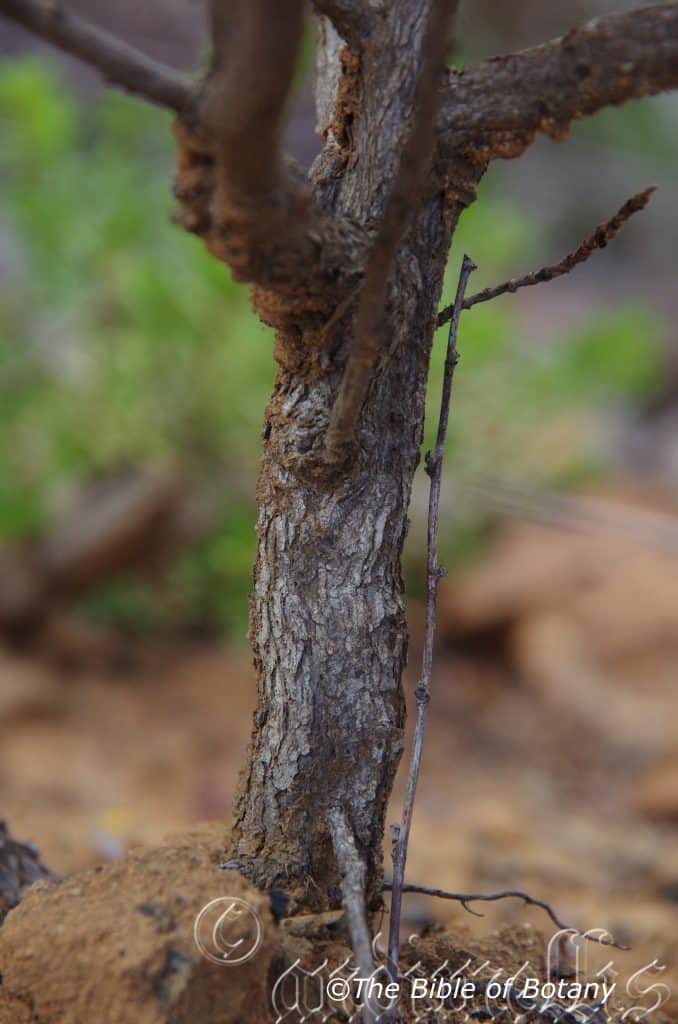
Author’s Garden The Pinnacles NSW
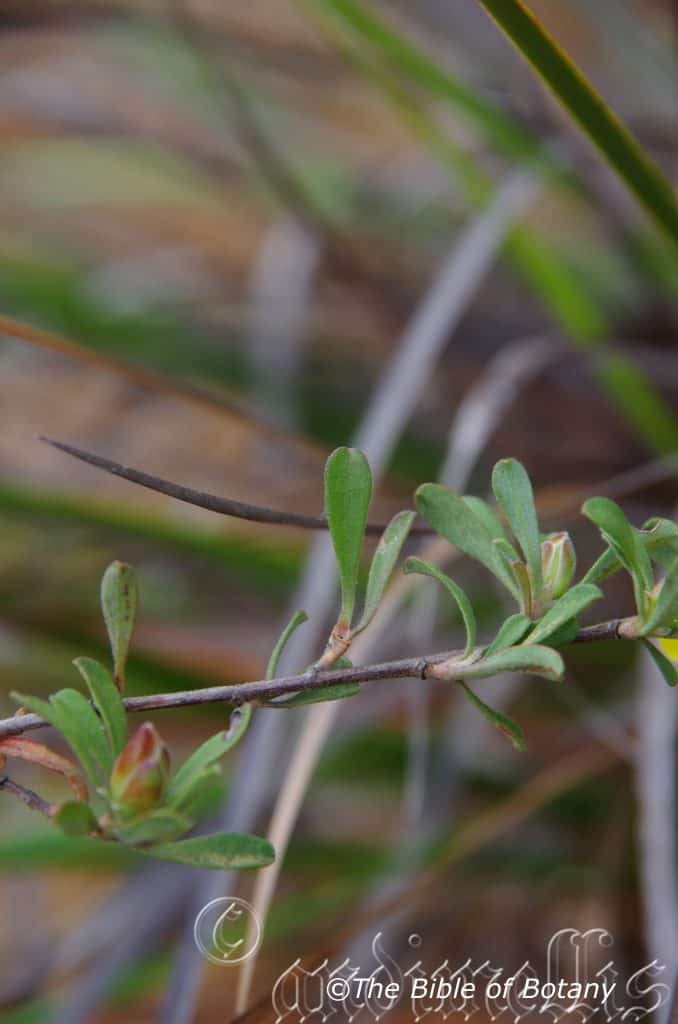
Author’s Garden The Pinnacles NSW
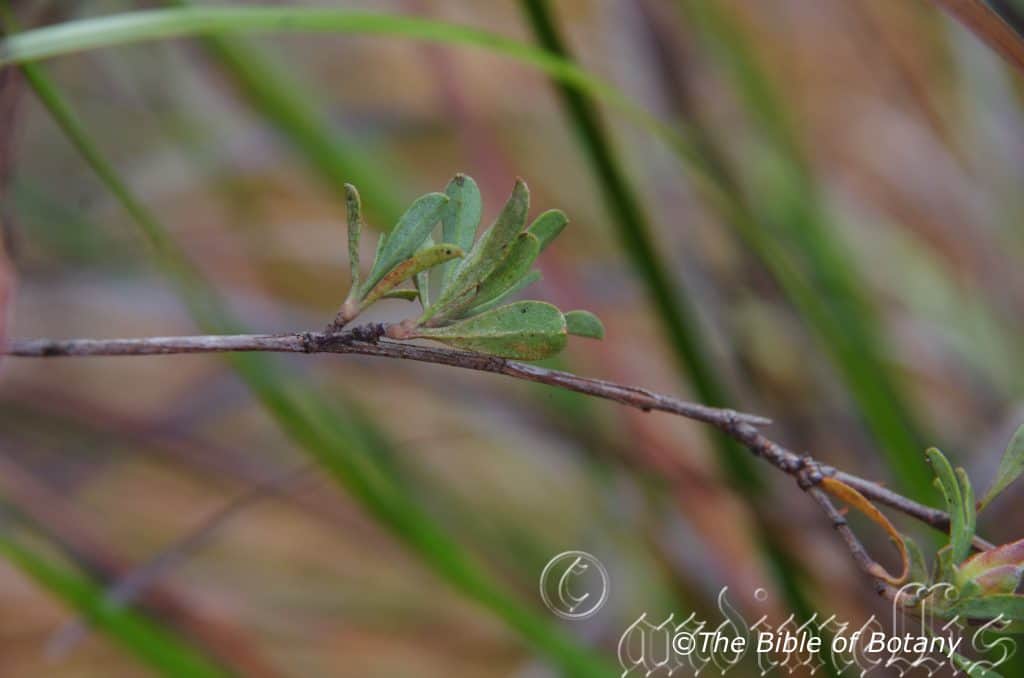
Author’s Garden The Pinnacles NSW
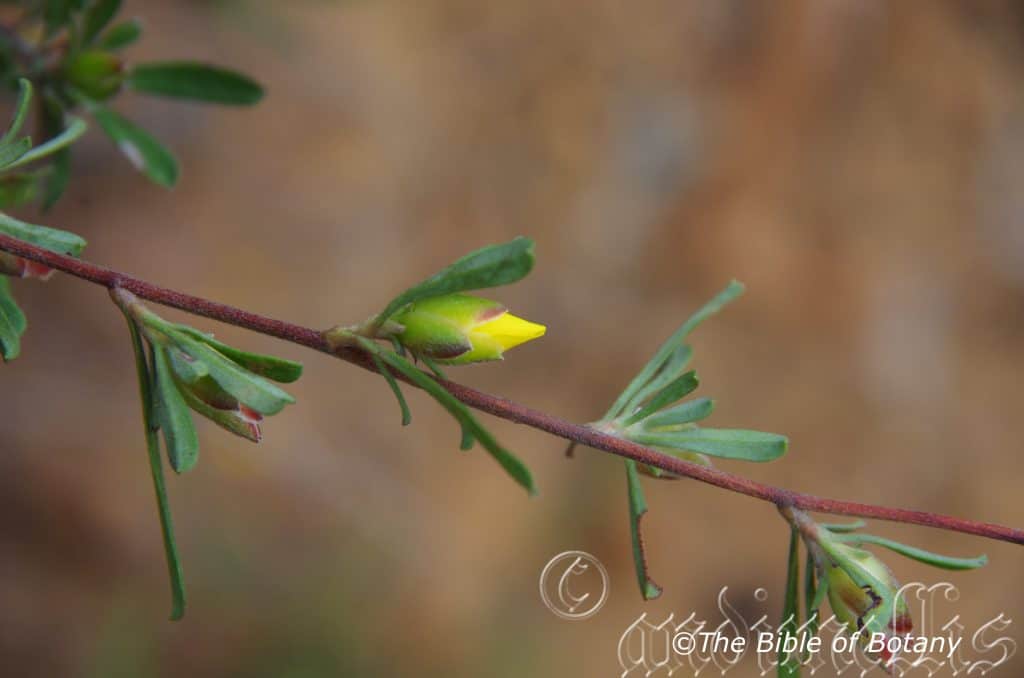
Author’s Garden The Pinnacles NSW
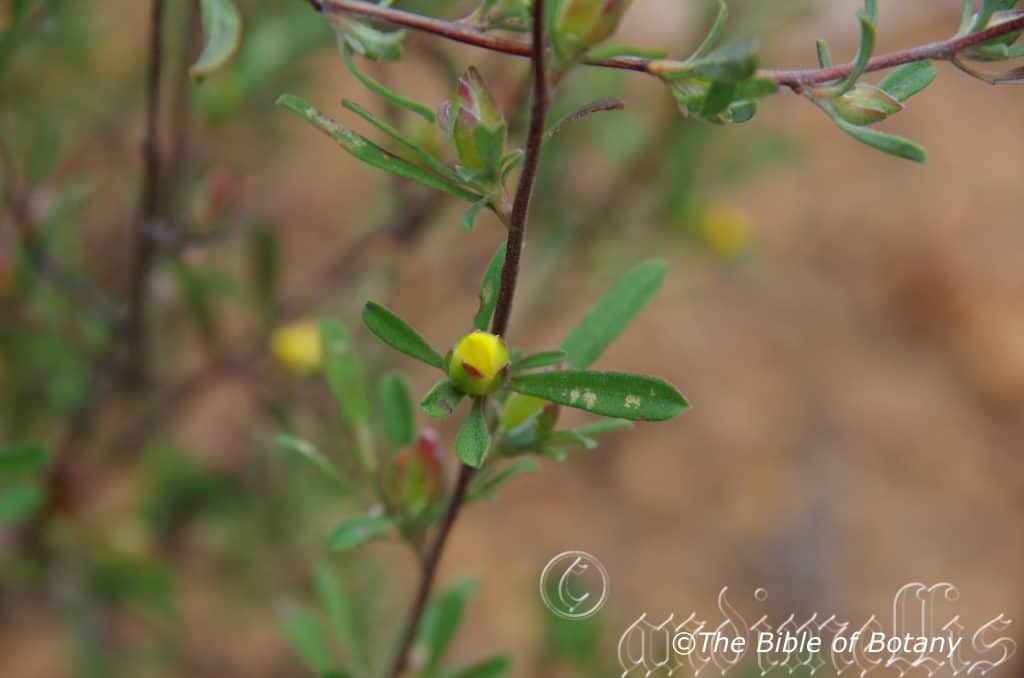
Author’s Garden The Pinnacles NSW
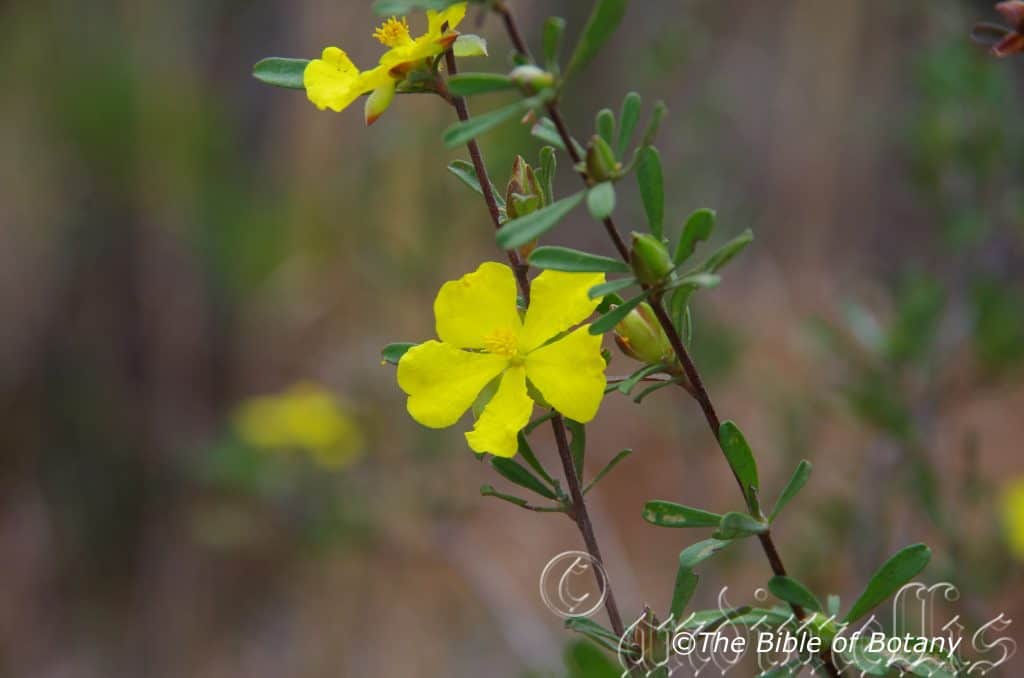
Author’s Garden The Pinnacles NSW
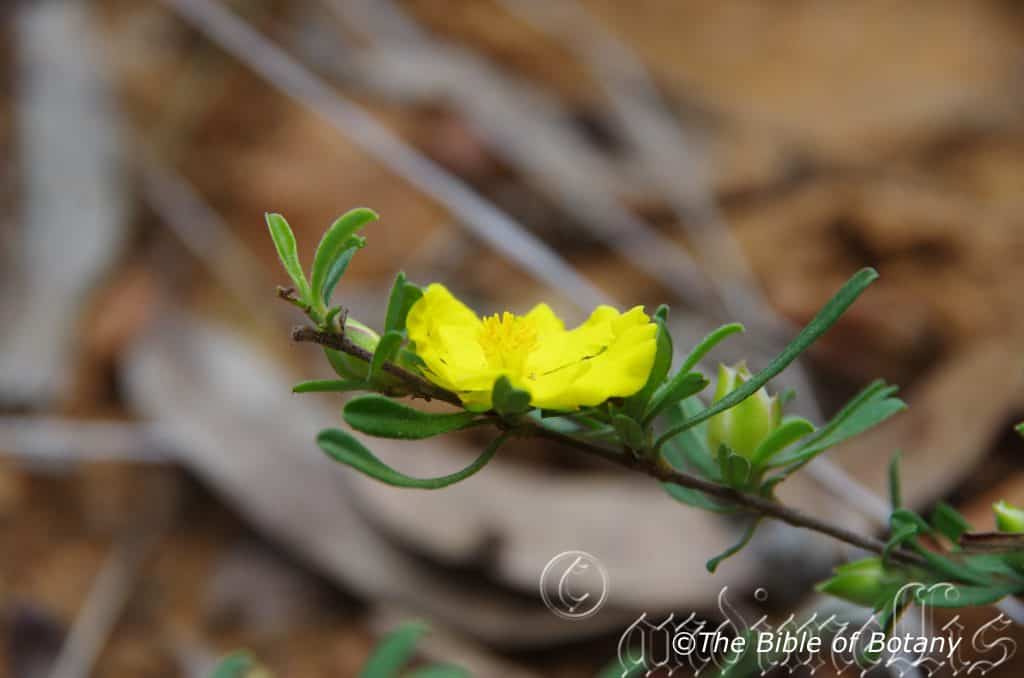
Author’s Garden The Pinnacles NSW

Author’s Garden The Pinnacles NSW
Hibbertia linearis
Classification
Unranked: Eudicots
Unranked: Core eudicots
Order: Unplaced
Family: Dilleniaceae
Genus: Is named after George Hibbert; 1757-1838, who was a London merchant, patron of botany, an amateur botanist, an advocate of slavery and owned a private Botanic Garden.
Specie: From Linearis, which is Latin for straight lines. It refers to leaves, phyllodes or fronds, which are narrow where the veins appear as straight lines or have uniformly coloured lines.
Sub species:
Common Name: Southern Guinea Flower.
Distribution:
Hibbertia linearis is found south from Clearview in central coastal Queensland to Orbost in north eastern Victoria. It is found on the eastern side of the Western Plains, Western Slopes, on and east of the Great Dividing Range to the coast.
https://avh.ala.org.au/occurrences/search?taxa=Hibbertia+linearis#tab_mapView
Habitat Aspects Climate:
Hibbertia linearis prefers full sun to dappled shade. It grows in riparian zones, adjacent to swamps and wallums near lagoons and open dry sclerophyll forests or heath lands. The altitude ranges from 5 meters ASL to 1050 meters ASL.
The temperatures range from minus 5 degree in July to 36 degrees in January.
The rainfalls range from lows of 450mm to an average of 1300mm annually.
Soil Requirements:
Hibbertia linearis prefers skeletal to deep sands, loams, and light fatty clays to medium clays or light to heavy silts. The soils are usually derived from decomposed sandstones, shales, granites, brown basalts, black basalts, metamorphic rocks and alluvial deposits. The soils pH varies from 5.5pH through to a 7pH. It does not tolerate waterlogged soils however annual inundations or periodic rises in water tables are normal throughout their habitats. Non saline soils to moderately saline soils are tolerated as are salt laden winds.
Height & Spread:
Wild Plants: 0.2m to 1m by 0.5m to 1m.
Characteristics:
Hibbertia linearis’s glabrous stems are wiry brown to pink brown or pale grey. The branchlets rely on other shrubs for support or are procumbent. The branchlets are a pink-brown to purple and are glabrous or more often are sparsely to densely covered in white pubescent hairs.
Hibbertia linearis’s opposite crowded linear-oblong to obovate or oblanceolate leaves measure 10mm to 30mm in length by 1.5mm to 5mm in width. The base is sessile, cuneate while the apex is acuminate or obtuse with one or more small emarginated notches. The discolourous laminas are semi-glossy, grass-green and glabrous to moderately covered in white pubescent hairs while the lower lamina is paler and glabrous or covered in white pulverulent hairs. The margins are entire, flat or curve slightly upwards from the mid vein. The mid vein veins are prominent on the lower lamina and are not visible from above
The inflorescences of Hibbertia linearis are born terminally and from the leaf axils and measure 20mm to 24mm in diameter. The ovate sepals are glabrous or at times sparsely covered in white pubescent hairs and measure 5mm to 6mm in length by 5mm to 6mm in width. The 5 bright yellow divaricate petals are and curve slightly upwards from the ovary. It is ovate to orbicular or broadly spathulate tapering at the base while the apex is obtuse with a deeply emarginated tip. The petals measure 8mm to 10mm in length by 7mm to 9mm in width.
The 15 to 25 pale yellow-green filaments and yellow-orange anthers measure 2.5 to 3mm in length and surround the 3 carpels. The 3 pale yellow-green pistils measure 2.5mm to 3mm in length. The flowers are sessile or have a short pedicel measuring 0mm to 2mm in length. Flowers appear from early September to late December.
Hibbertia linearis’s fruit is a globose berry surrounded by the persistent sepals. The berries measure 5mm to 7mm in length by 6mm to 8mm in diameter. It is glabrous, green berries turn pale grey-brown when ripe. The 2 to 4 deep brown black globose seeds measure 2mm to 3mm in diameter.
Wildlife:
Hibbertia linearis’s is visited by small native wasps, native bees and small black beetles have seen on the flowers.
Cultivation:
Hibbertia linearis is a very beautiful small native shrub or procumbent ground cover which is suitable for small gardens to the largest garden. It is an excellent, colourful addition for tropical, sub-tropical or semi-arid zones. As garden subjects it will form a small compact bush 150mm to 250mm in height by 200mm to 300mm in diameter when grown in the open. It is fast growing, drought tolerant once established and are cold tolerant to temperatures at least as low as minus 1 degree.
It can be lightly tip pruned to enhance bushiness and better flowering. Hard pruning can be done once the plants are established but some set back will occur in flowering so it is better to trim the plants on a regular or annual basis.
It is most suitable for use around swimming pools, sunny courtyards, besides pathways, rockeries, along sandy banks or along drive ways.
If it is placed around a pool then it has the advantage of size and colour throughout the warmer months when the pool is most in use. 4 to 10 plants in a straight row will give a very formal look or use curves and scatter plant them for an informal natural look. A few boulders between will give a harsh and soft appeal. Here the choice of companion plants to use either side is limited only by size of the area to be landscaped and the size of the other plants as they would be best kept to under a meter in height. Leaf size or flower colour is limited by your imagination; however to use yellow flowering plants would detract from the Hibbertia and other plants used.
It is well suited to small areas of bush close to paths or the house so their deep yellow flowers can be viewed regularly. It is great in small rockeries as a fill in plant. Here it can be planted in small groups of 2 or 3 as a standalone plant to create a harsh barren look with other arid plants. If it is surrounded by shorter plants with fine foliage and white flowers (Actinotus helianthi) it will dominate giving a more expansive look to the bed. If it is surrounded by shorter plants with larger deep green foliage and red or purple flowers they will create a beautiful mosaic of colour and have the effect of reducing the size of the area. Here I think of plants like Leschenaultia biloba, Leschenaultia Formosa and several of the Dampiera specie.
Six or more planted back from a bend mixed with the Leschenaultia and Dampiera will become a very strong focal point when in flower gain a lot of attention because of the fresh clean look of the foliage even in the driest of times.
Place it in the foreground with large leaf ground covers and very small shrubs. To the rear, use large leaf taller plants. Plants with pink, orange, red or purple flowers can be used in both the mid ground and background. This will lead the viewer’s eyes directly to the yellow flowers for a longer period.
Whether it is in flower or not these plants will catch your attention and the viewer will be transfixed on the display rather than watching the path. Plant it at 0.5 meter to 0.6 meter centers for mass plantings or for something different try spacing them at 1 meter centers.
Propagation:
Seeds: Hibbertia linearis seeds can be sown directly into a seed raising mix. Cover them with 5mm of fine sand and keep moist not wet. Place the tray in a warm sunny position. When the seedlings are 20mm to 30mm tall, prick them out and plant them into 50mm native tubes using a good organic mix.
Once the seedlings reach 150mm to 200mm in height they can be planted out into their permanent position.
Seeds can also be spread directly onto freshly raked or disturbed ground.
Cuttings: Use 80mm to 100mm long ripened material when growing from cuttings from the present season’s growth. Take them in the warmer months of the year. Remove half the leaves from the bottom section being careful not to tear the bark. Take a 10mm slice off the bark from the bottom of the cutting on one side.
1 Prepare the cutting mix by adding one third sharp clean river sand, one third peat and one third perlite. These ingredients are sterilize,
2 Select good material from non diseased plants,
3 Select semi green stems for cuttings. Look for a stem with two or three nodes,
4 Place the cutting on a flat, hard surface, and make a clean cut down one side of the cutting at the base for 10mm with a sharp sterile knife or razor blade. – This scarification of the node will increase the chances of roots emerging from this spot. Now remove all but one or two the leaves, leaving the apex leaves in tact. If the leaves are very large in proportion to the stem, cut off the apical halves.
5 Fill a saucer with water, and place a little medium strength rooting hormone into another container like a milk bottle top. Dip the node end of the cutting into the water and then into the rooting hormone. Tap off any excess hormone,
6 Use a small dipple stick or old pencil to poke a hole into the soilless potting mix. Ensure the hole is slightly larger than the stem diameter and be careful not to wipe the rooting hormone off the cuttings base, place the cuttings in a pattern ensuring the cuttings are not touching each other,
7 I like to place the pots in Plastic bags to help maintain temperature and moisture. Place in a semi shaded place like under 50mm shade cloth.
8 When the cuttings have struck, open the bag to allow air circulation for a few days to a week,
9 Once hardened off remove the cuttings from the bag and allow to further hardening for a few more days,
10 Transplant into a good potting mix to grow on.
Fertilize using seaweed, fish emulsion or organic chicken pellets soaked in water on an alternate basis. Fertilize every two months until the plants are established then twice annually in early September or March to maintain health, vitality and better flowering.
Further Comments from Readers:
Hi reader, it seems you use The Bible of Botany a lot. That’s great as we have great pleasure in bringing it to you! It’s a little awkward for us to ask, but our first aim is to purchase land approximately 1,600 hectares to link several parcels of N.P. into one at The Pinnacles NSW Australia, but we need your help. We’re not salespeople. We’re amateur botanists who have dedicated over 30 years to saving the environment in a practical way. We depend on donations to reach our goal. If you donate just $5, the price of your coffee this Sunday, We can help to keep the planet alive in a real way and continue to bring you regular updates and features on Australian plants all in one Botanical Bible. Any support is greatly appreciated. Thank you.
In the spirit of reconciliation we acknowledge the Bundjalung, Gumbaynggirr and Yaegl and all aboriginal nations throughout Australia and their connections to land, sea and community. We pay our respect to their Elders past, present and future for the pleasures we have gained.
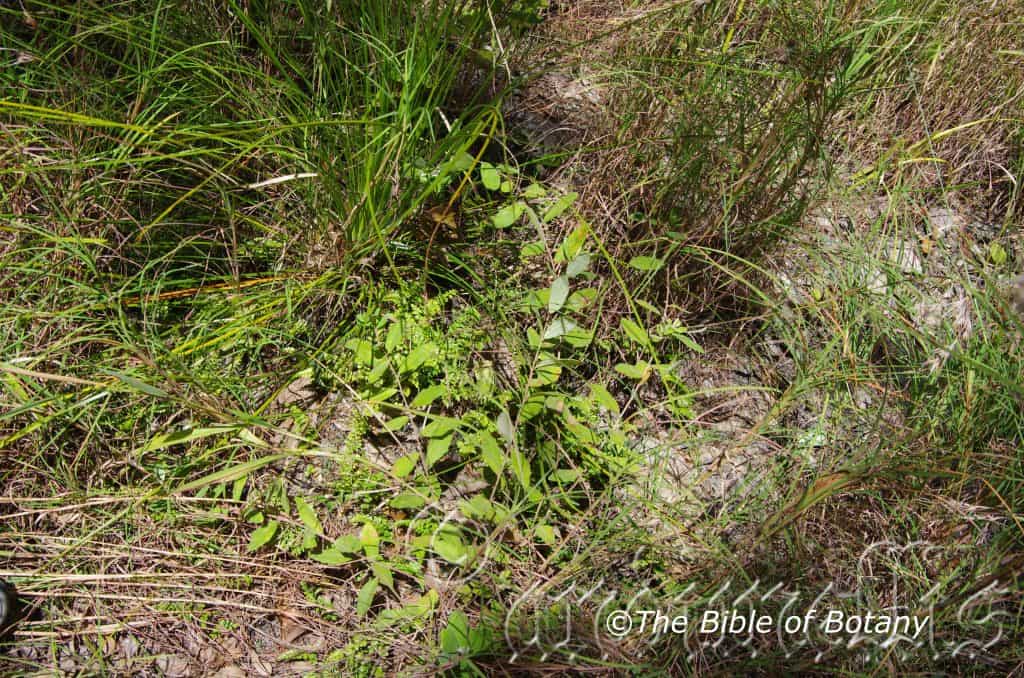
Paluma Range National Park Qld.
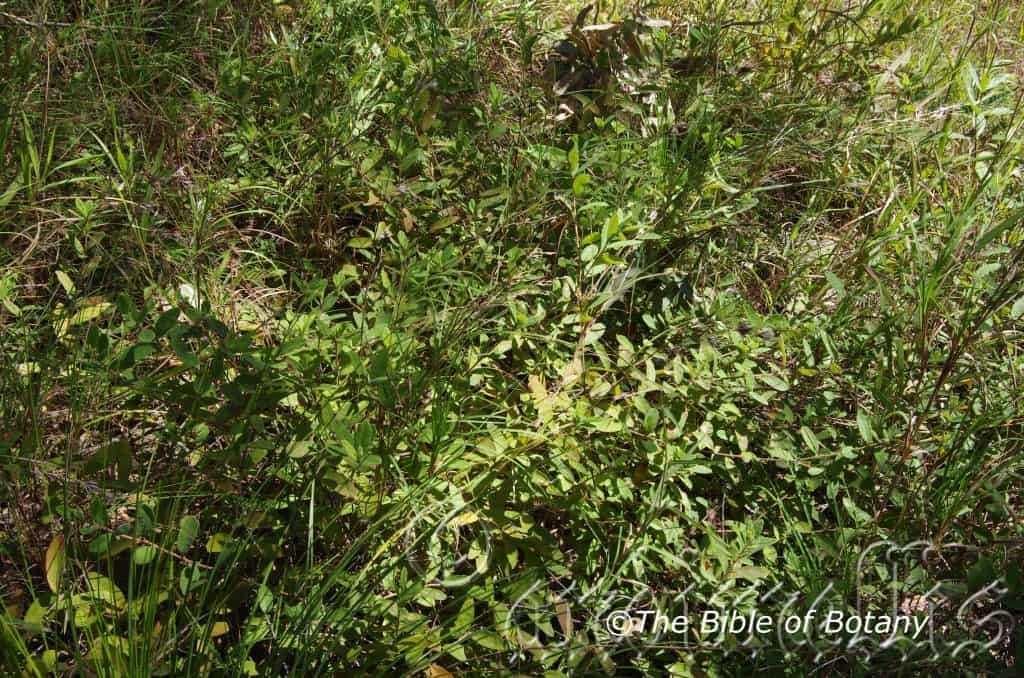
Paluma Range National Park Qld.
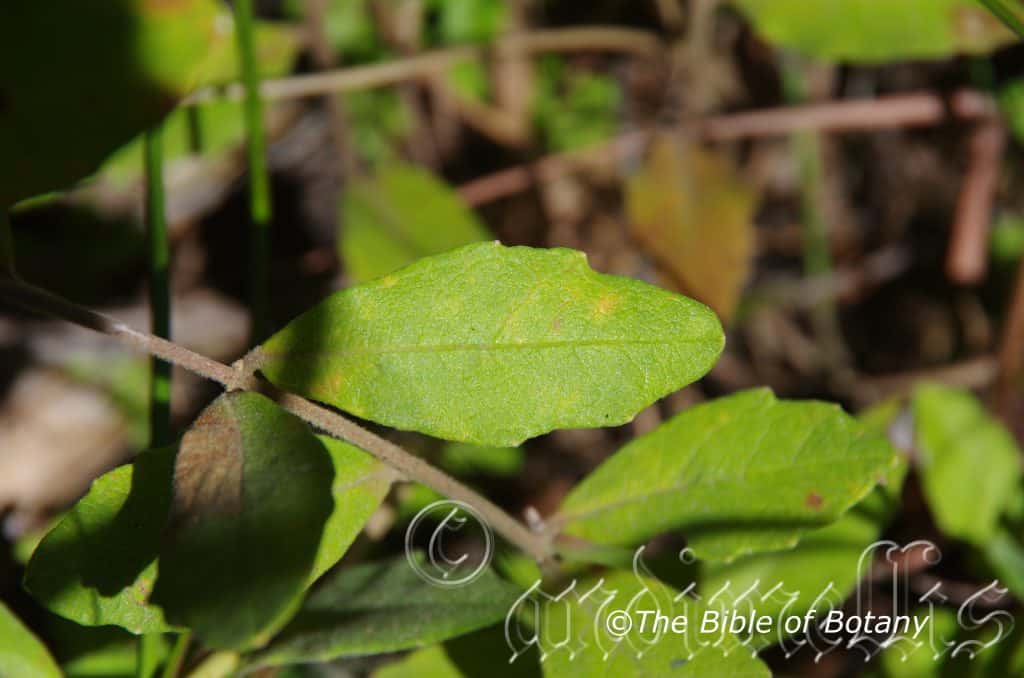
Paluma Range National Park Qld.
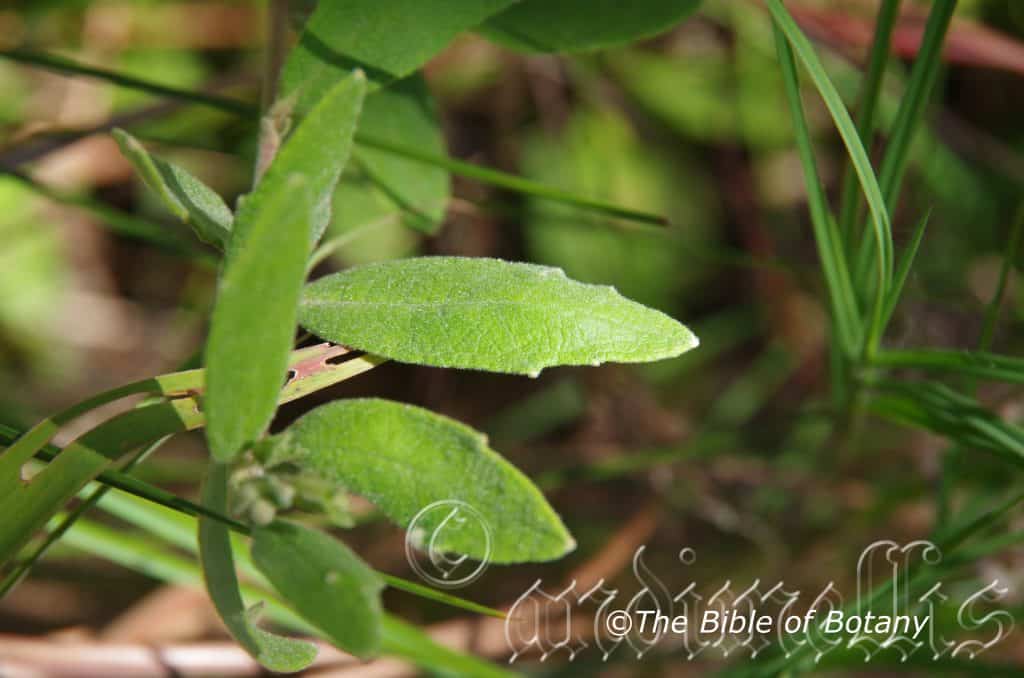
Paluma Range National Park Qld.
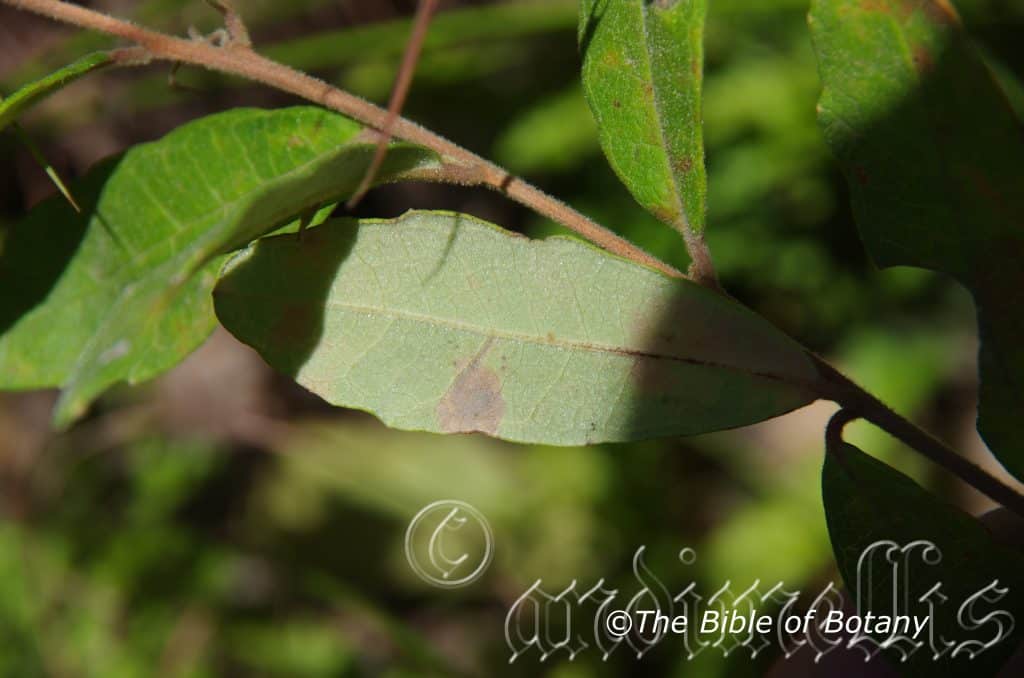
Paluma Range National Park Qld.
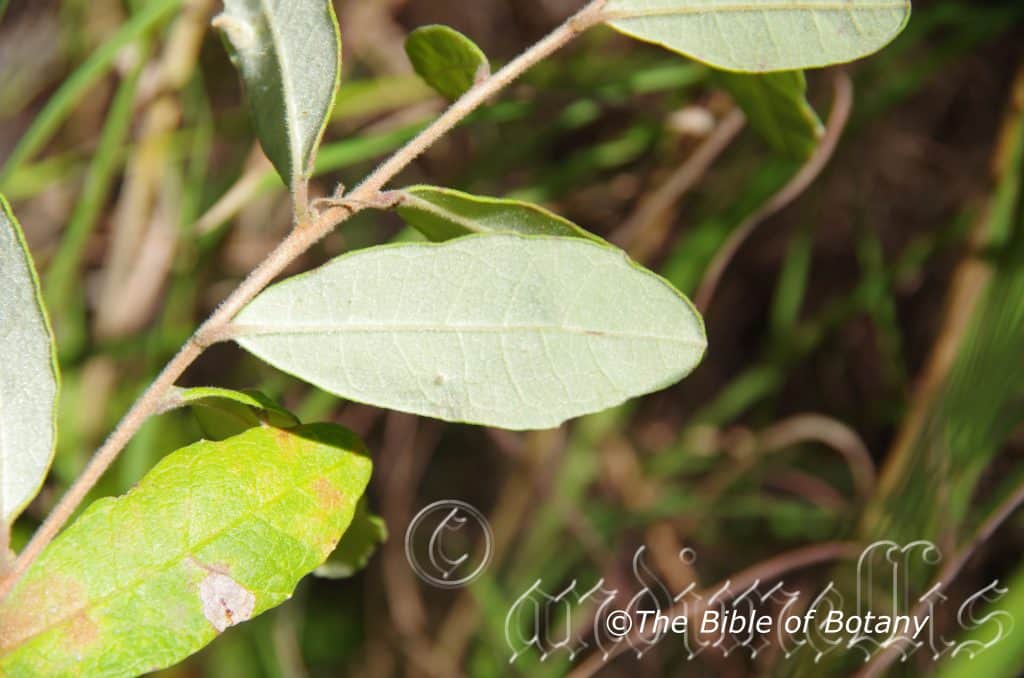
Paluma Range National Park Qld.
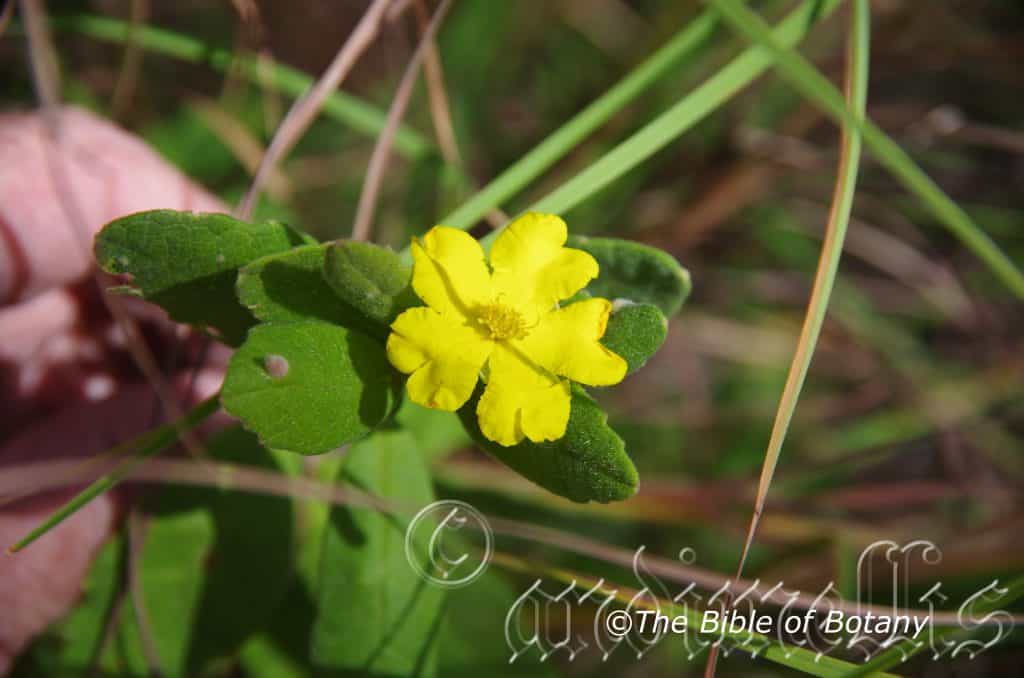
Paluma Range National Park Qld.
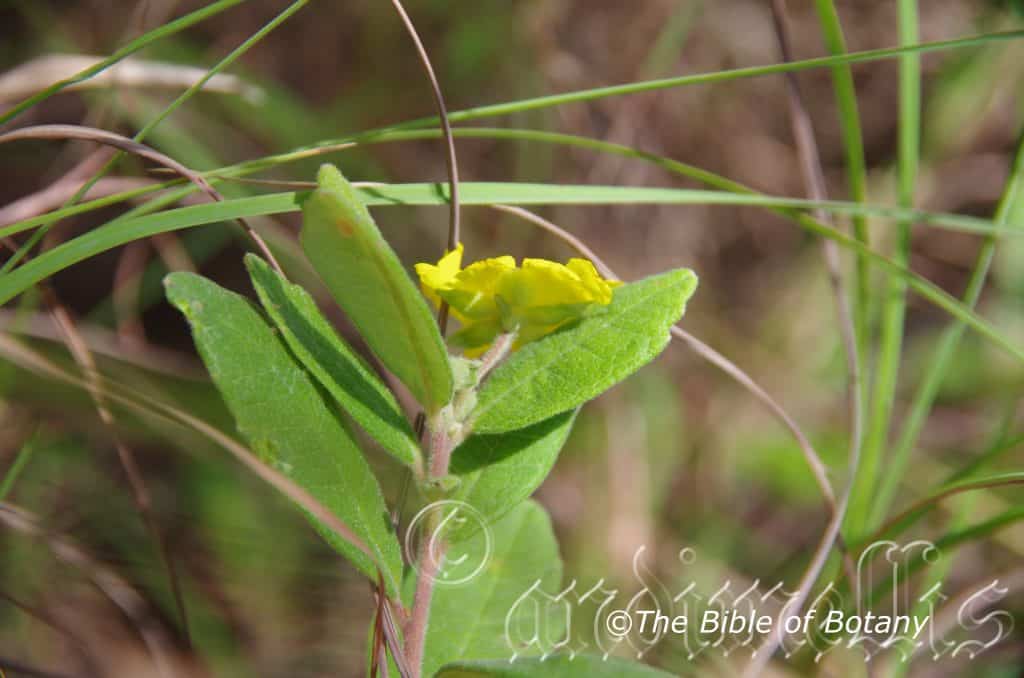
Paluma Range National Park Qld.
Hibbertia melhaniodes
Classification
Unranked: Eudicots
Unranked: Core eudicots
Order: Unplaced
Family: Dilleniaceae
Genus: Is named after George Hibbert; 1757-1838, who was a London merchant, patron of botany, an amateur botanist, an advocate of slavery and owned a private Botanic Garden.
Specie: From Melhania, which is Latinized for a pantropical and arid zone genus that in the African Moulhwadambo vernacular means the ‘setting sun’ and Eîdos/Oides, which is Ancient Greek for alike or similar to. It refers to flowers, which resemble those in the Melhania genus and appear like a setting sun.
Sub species:
Common Name: Northern Guinea Flower.
Distribution:
Hibbertia melhanioides is found south from Mount Tozer to the Paluma Range National Park in far north eastern coastal Queensland. It is found in several disjunct populations further south at Cape Upstart and Yeppoon.
https://avh.ala.org.au/occurrences/search?taxa=Hibbertia+melhanioides#tab_mapView
Habitat Aspects Climate:
Hibbertia melhanioides prefers full sun to dappled shade. It usually grows in open forest or wet sclerophyll forest and transitional zones with rain forest margins. The altitude ranges from 5 meters ASL to 1200 meters ASL.
The temperatures range from 5 degree in July to 38 degrees in January.
The rainfalls range from lows of 1600mm to an average of 3200mm annually.
Soil Requirements:
Hibbertia melhanioides prefers skeletal to deep sandy loams and light fatty clays. The soils are usually derived from decomposed granites. The soils pH varies from 5.5pH through to a 6pH. It does not tolerate waterlogged soils. Non saline soils to moderately saline soils are tolerated as are salt laden winds.
Height & Spread:
Wild Plants: 1m to 2m by 2m to 2.5m.
Characteristics:
Hibbertia melhanioides has fawn to brown, somewhat thick wiry stems that are densely covered in white, hirsute and hirtellous hairs. The juvenile stems are pale blueish-green and are densely covered in white, hirsute, hirtellous and stellate.
Hibbertia melhanioides has alternate obovate to oblanceolate leaves that measure 15mm to 45mm in length by 10mm to 20mm in width. The short, thick, fawn to pale brown petioles are densely covered in white, hirsute, hirtellous and stellate hairs and measure 2mm to 4mm in length.
The bases rounded-cuneate to rounded, while the apexes are obtuse often with a mucronate tip. The discolourous laminas are dull, grass-green and moderately covered in white, hirsute, hirtellous and stellate hairs on the upper lamina, while the lower lamina is paler and densely covered in white, hirsute, hirtellous and stellate hairs. The margins have a few irregular shallow lobes or shallow blunt teeth, are and are flat. The mid vein veins is prominent on the lower lamina and barely visible on the upper lamina, while the 9 to 13 feint lateral veins on either side of the mid vein are set at around 60 degrees.
The inflorescences are born terminally and from the leaf axils and measure 20mm to 24mm in diameter. The pedicels are densely covered in white, hirsute, hirtellous and stellate hairs and measure 5mm to 7mm in length. The calyx is moderately covered in pubescent hairs and stellate scales and measure 1.5mm to 2.5mm in length. The dimorphic outer lobes are broadly oblong, moderately covered in white, hirsute, hirtellous and stellate hairs externally and are glabrous internally and measure 8mm to 12mm in length by 3mm to 4.5mm in width, while the linear inner lobes are moderately covered in white, hirsute, hirtellous and stellate hairs externally and are glabrous internally and measure 5mm to 6mm in length by 1mm to 2mm in width. The bright yellow, obtuse, glabrous petals are deeply emarginate with undulating margins measure 7mm to 10mm in length by 7mm to 10mm in width. There are 25 to 30 glabrous stamens.
The 2 carpels are densely covered in white, hirsute, hirtellous and stellate hairs externally, while there are 4 ovules in each carpel. The carpels measure 3mm to 3.5mm in length. The single elliptic to globular, seed in each carpel is smooth, glabrous and measures 2mm in diameter.
Wildlife:
Hibbertia melhanioides is visited by many of our native stingless bees both solitary and community bees. Hibbertia melhaniodes particular attractive to teddybear bees Amegilla bombiformis, the blue banded bee Amegilla cingulata and Lipotriches bees including Lipotriches australica in southern Queensland and northern New South Wales.
Cultivation:
Hibbertia melhanioides is a very beautiful small sub-shrub or sprawling ground cover which is suitable for small gardens to the largest garden. It is an excellent, colourful addition for tropical, sub-tropical or semi-arid zones. As garden subjects it will form a small compact bush to 2 meters in height by up to 3 meters in diameter when grown in the open. It is fast growing, drought tolerant once established but is frost tender.
It can be lightly tip pruned to enhance bushiness and better flowering. Hard pruning can be done once the plants are established but some set back will occur in flowering so it is better to trim the plants on a regular or annual basis.
It is most suitable for use around swimming pools, sunny courtyards, besides pathways, rockeries, along sandy banks or along drive ways.
It is well suited to small areas of bush close to paths or the house so their deep yellow flowers can be viewed regularly. It is great in larger rockeries as a fill in plant. Here it can be planted in small groups of 2 or 3 as a standalone plant to create a harsh barren look with other arid plants. If it is surrounded by shorter plants with fine foliage and white flowers (Actinotus helianthi) it will dominate giving a more expansive look to the bed. If it is surrounded by shorter plants with larger deep green foliage and red or purple flowers they will create a beautiful mosaic of colour and have the effect of reducing the size of the area. Here I think of plants like Leschenaultia biloba, Leschenaultia Formosa and several of the Dampiera specie.
Place it in the foreground with large leaf ground covers and small shrubs. To the rear, use large leaf taller plants. Plants with pink, orange, red or purple flowers can be used in both the mid ground and background. This will lead the viewer’s eyes directly to the yellow flowers for a longer period.
Whether it is in flower or not these plants will catch your attention and the viewer will be transfixed on the display rather than watching the path. Plant it at 1.5 meter to 2 meter centers for mass plantings.
It is ideal for small fences like pool fences or scrambling over old logs for something different.
Propagation:
Seeds: Hibbertia melhanioides seeds can be sown directly into a seed raising mix. Cover them with 5mm of fine sand and keep moist not wet. Place the tray in a warm sunny position. When the seedlings are 20mm to 30mm tall, prick them out and plant them into 50mm native tubes using a good organic mix.
Once the seedlings reach 150mm to 200mm in height they can be planted out into their permanent position.
Cuttings: Use 80mm to 100mm long ripened material when growing from cuttings from the present season’s growth. Take them in the warmer months of the year. Remove half the leaves from the bottom section being careful not to tear the bark. Take a 10mm slice off the bark from the bottom of the cutting on one side.
1 Prepare the cutting mix by adding one third sharp clean river sand, one third peat and one third perlite. These ingredients are sterilize,
2 Select good material from non diseased plants,
3 Select semi green stems for cuttings. Look for a stem with two or three nodes,
4 Place the cutting on a flat, hard surface, and make a clean cut down one side of the cutting at the base for 10mm with a sharp sterile knife or razor blade. – This scarification of the node will increase the chances of roots emerging from this spot. Now remove all but one or two the leaves, leaving the apex leaves in tact. If the leaves are very large in proportion to the stem, cut off the apical halves.
5 Fill a saucer with water, and place a little medium strength rooting hormone into another container like a milk bottle top. Dip the node end of the cutting into the water and then into the rooting hormone. Tap off any excess hormone,
6 Use a small dipple stick or old pencil to poke a hole into the soilless potting mix. Ensure the hole is slightly larger than the stem diameter and be careful not to wipe the rooting hormone off the cuttings base, place the cuttings in a pattern ensuring the cuttings are not touching each other,
7 I like to place the pots in Plastic bags to help maintain temperature and moisture. Place in a semi shaded place like under 50mm shade cloth.
8 When the cuttings have struck, open the bag to allow air circulation for a few days to a week,
9 Once hardened off remove the cuttings from the bag and allow to further hardening for a few more days,
10 Transplant into a good potting mix to grow on.
Fertilize using seaweed, fish emulsion or organic chicken pellets soaked in water on an alternate basis. Fertilize every two months until the plants are established then twice annually in early September or March to maintain health, vitality and better flowering.
Further Comments from Readers:
Hi reader, it seems you use The Bible of Botany a lot. That’s great as we have great pleasure in bringing it to you! It’s a little awkward for us to ask, but our first aim is to purchase land approximately 1,600 hectares to link several parcels of N.P. into one at The Pinnacles NSW Australia, but we need your help. We’re not salespeople. We’re amateur botanists who have dedicated over 30 years to saving the environment in a practical way. We depend on donations to reach our goal. If you donate just $5, the price of your coffee this Sunday, We can help to keep the planet alive in a real way and continue to bring you regular updates and features on Australian plants all in one Botanical Bible. Any support is greatly appreciated. Thank you.
In the spirit of reconciliation we acknowledge the Bundjalung, Gumbaynggirr and Yaegl and all aboriginal nations throughout Australia and their connections to land, sea and community. We pay our respect to their Elders past, present and future for the pleasures we have gained.
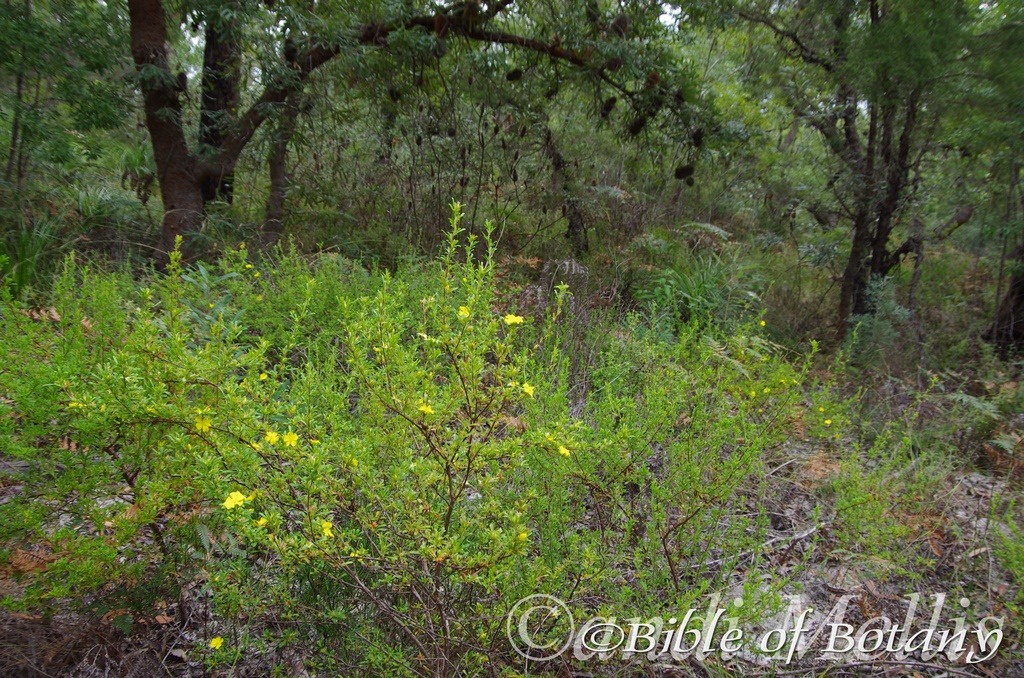
Fortis Creek National Park NSW

Rosser Gardens Benowa Qld.
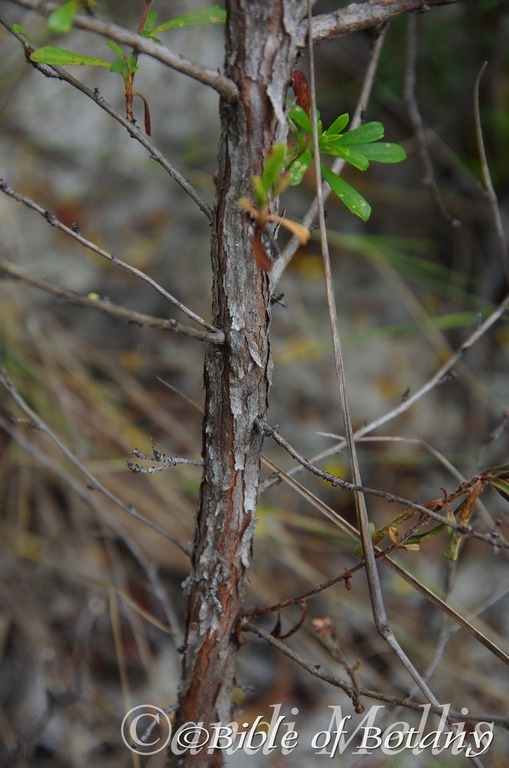
Fortis Creek National Park NSW
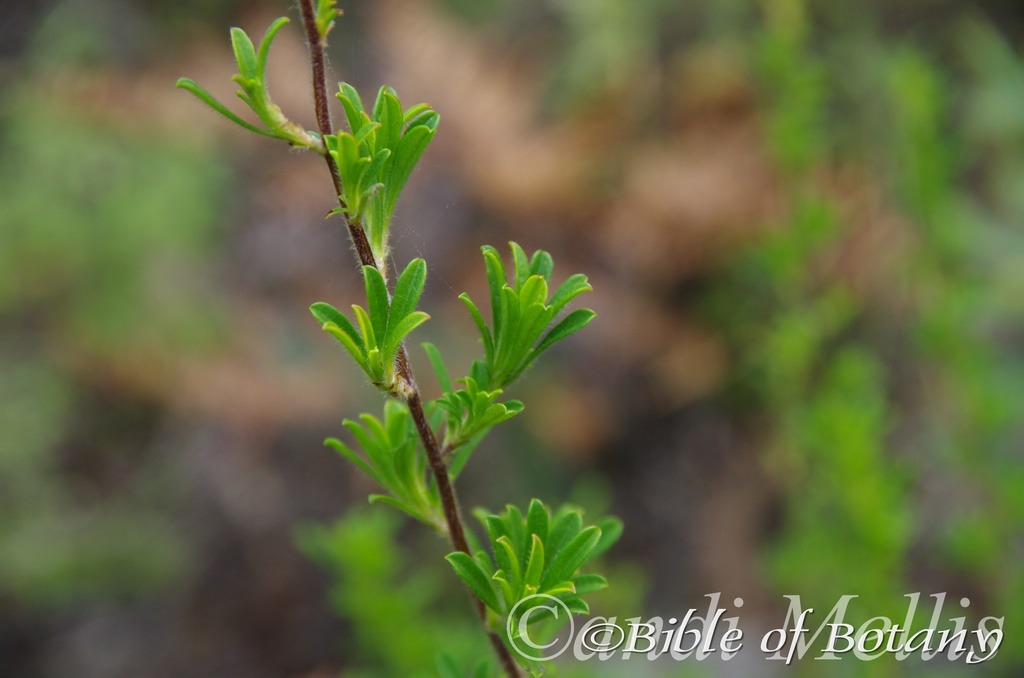
Fortis Creek National Park NSW

Fortis Creek National Park NSW
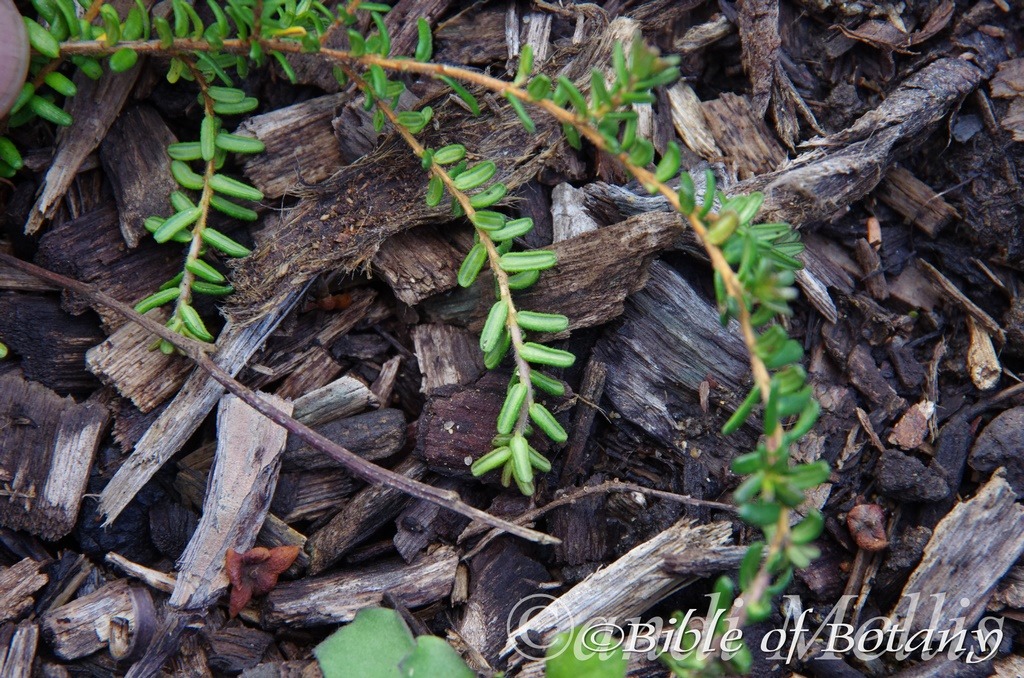
Rosser Gardens Benowa Qld.
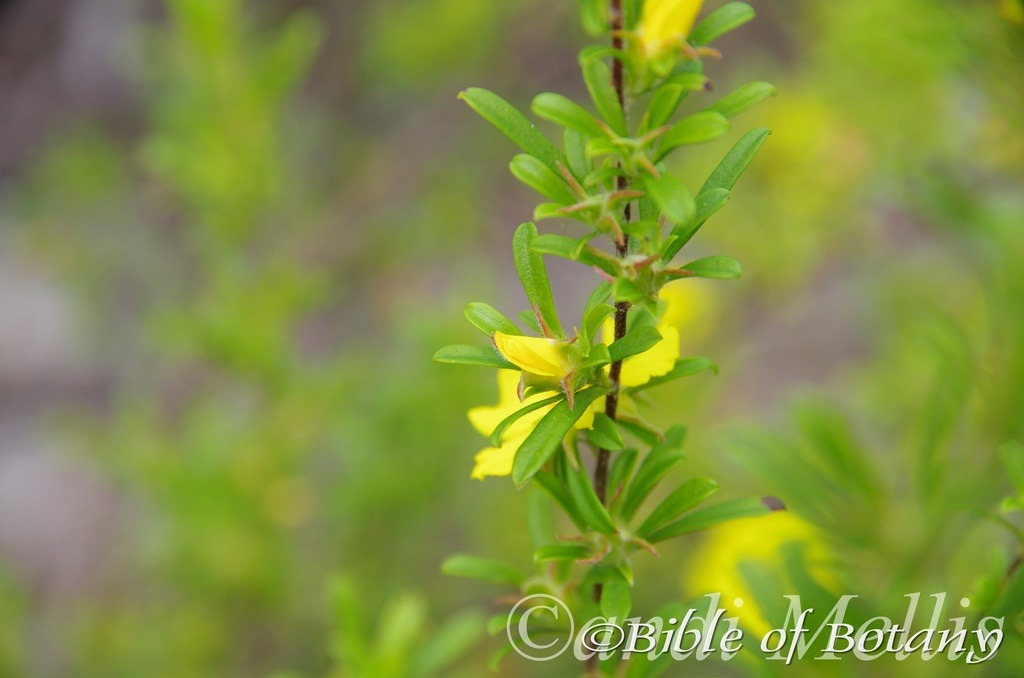
Fortis Creek National Park NSW
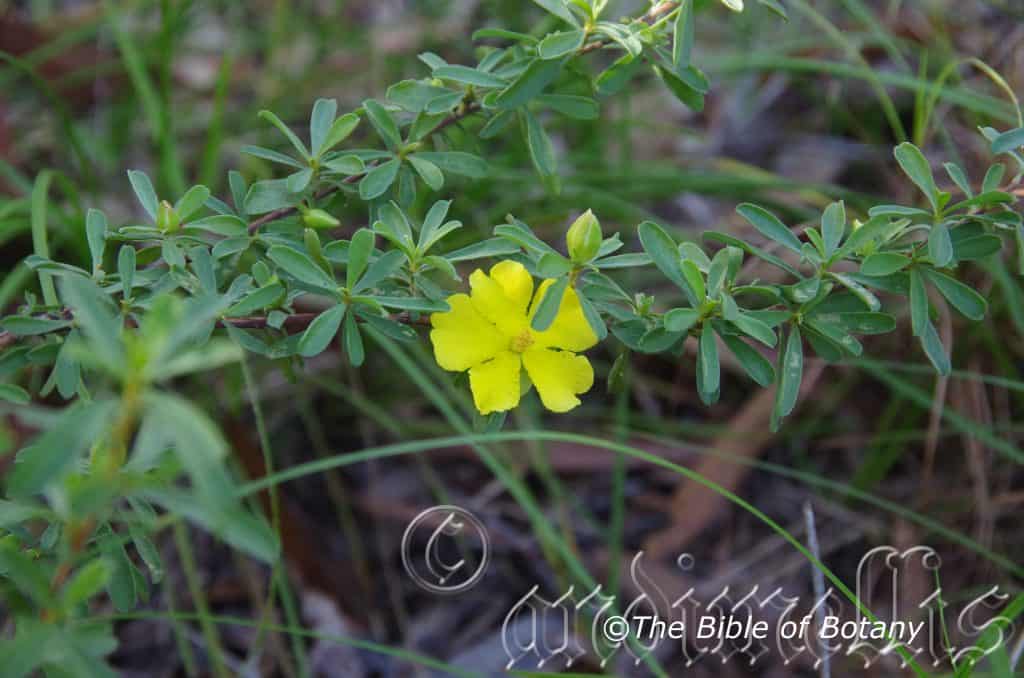
Thew Pinnacles NSW
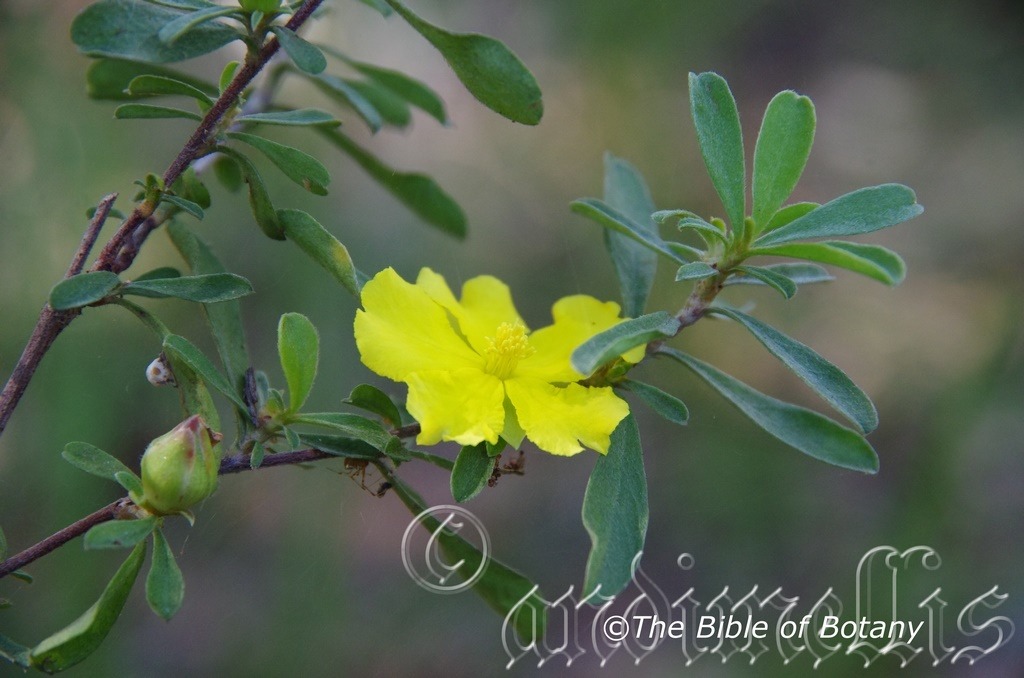
The Pinnacles NSW
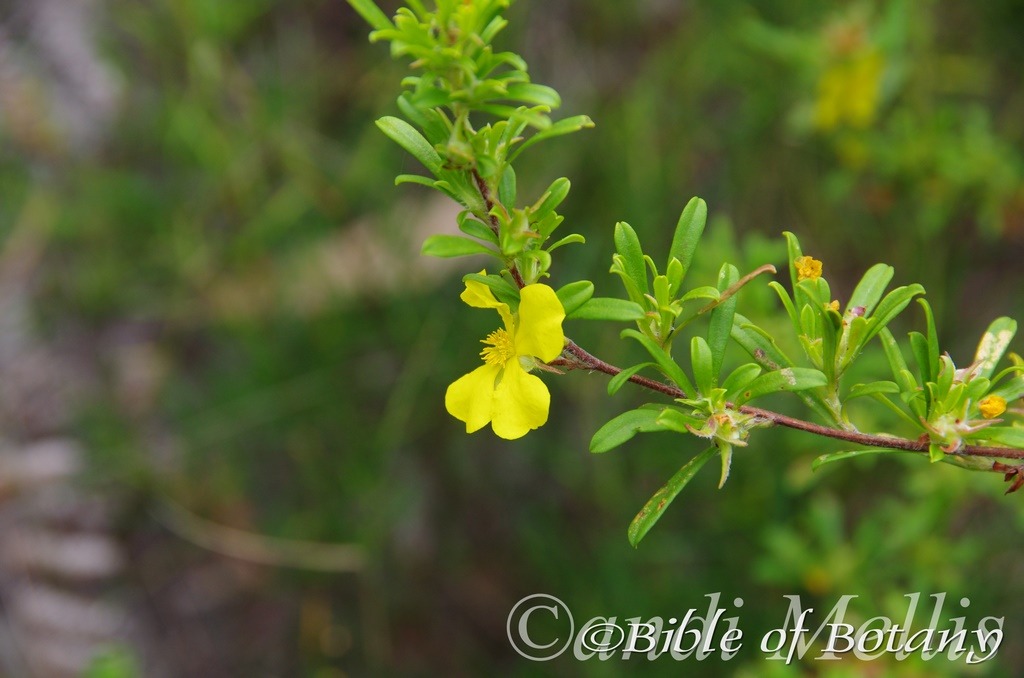
Fortis Creek National Park NSW
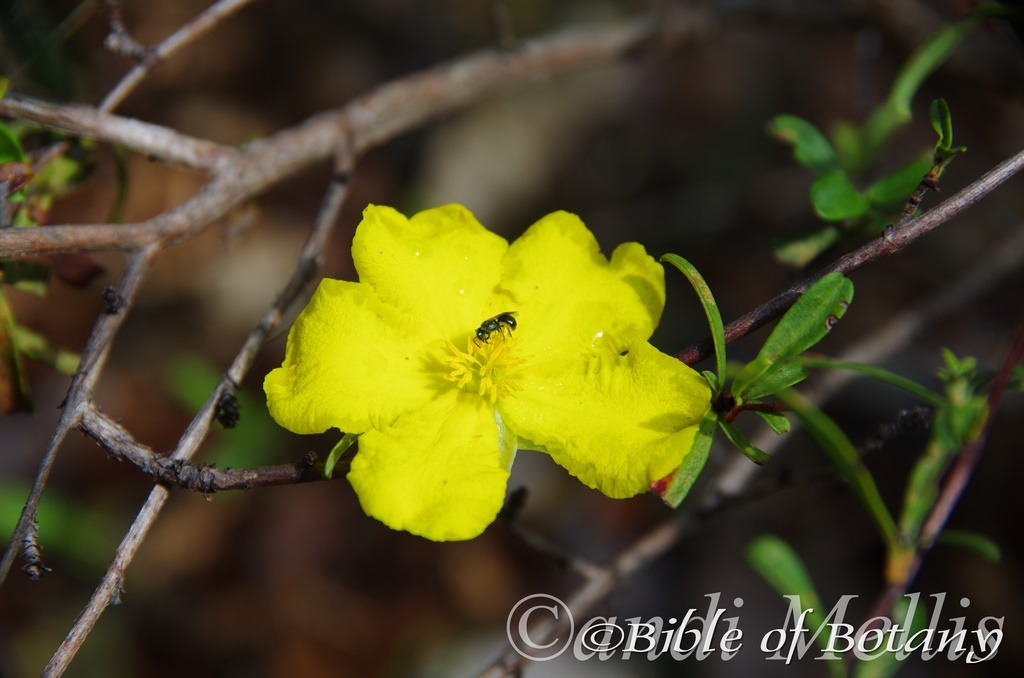
Author’s garden The Pinnacles NSW
Hibbertia obtusifolia
Classification
Unranked: Eudicots
Unranked: Core eudicots
Order: Unplaced
Family: Dilleniaceae
Genus: Is named after George Hibbert; 1757-1838, who was a London merchant, patron of botany, an amateur botanist, an advocate of slavery and owned a private Botanic Garden.
Specie: From Obtūsum, which is Latin for rounded and Folium, which is Latin for foliage. It refers to leaves, which have round or obtuse apexes.
Sub species:
Common Name: Hoary Guinea Flower.
Distribution:
Hibbertia obtusifolia is found south from Monto in southern Queensland to Clarke Island in Bass Straight. It is mainly found on the Western Slopes, on and east of the Great Dividing Range to the coast.
https://avh.ala.org.au/occurrences/search?taxa=Hibbertia+obtusifolia#tab_mapView
Habitat Aspects Climate:
Hibbertia obtusifolia prefers full sun to dappled shade. It grows in riparian zones, adjacent to swamps and wallums near lagoons and open dry sclerophyll forests or moist heath lands. The altitude ranges from 15 meters ASL to 1350 meters ASL.
The temperatures range from minus 4 degree in July to 36 degrees in January.
The rainfalls range from lows of 410mm to an average of 1250mm annually.
Soil Requirements:
Hibbertia obtusifolia prefers skeletal sands to deep loams, light clays to medium clays. The soils are usually derived from decomposed sandstone, shale, granite, brown basalt, black basalt, metamorphic rocks and alluvial silts. The soils pH varies from 5.5pH through to a 7pH. It does not tolerate waterlogged soils however annual inundations or periodic rises in water tables are normal throughout their habitats. Non saline soils to moderately saline soils are tolerated.
Height & Spread:
Wild Plants: 0.2m to 0.6m by 0.5m to 0.7m.
Characteristics:
Hibbertia obtusifolia’s stems are wiry, grey and glabrous. The branchlets rely on other shrubs for support or are slightly procumbent. The branchlets are a pale green and glabrous or are sparsely covered in white or pale grey caduceus tomentose hairs. This is a small rounded herb with deep yellow flowers that forms shrub or one that spreads thinly across the ground or over other shrubs or grasses.
Hibbertia obtusifolia’s oblanceolate to spathulate or rarely linear to narrow elliptical leaves measure 10mm to 30mm in length by 2mm to 10mm in width. The base is sessile, cuneate while the apex is obtuse with a mucronate or emarginated tip. The discolourous laminas are semi glossy, deep green and glabrous or sparsely covered in white, and caduceous tomentose or rarely pilose hairs on the upper lamina while the lower lamina is paler. The margins are entire, flat or curve slightly upwards from the mid vein. The mid veins are faintly prominent on the lower lamina and are not visible from above.
The inflorescences of Hibbertia obtusifolia are born terminally, from the leaf axils or from short lateral shoots and measure 24mm to 34mm in diameter. The buds and sepals are glabrous or covered in white tomentose or rarely pilose hairs. The 5 bright yellow petals are wide spreading and flat. It is ovate to broadly spathulate, tapering at the base while the apex is obtuse usually with one deep emarginated notch. The pale creamy green sepals measure 7mm to 9mm in length. The broad deep yellow, ovate petals measure 9mm to 15mm in length by 8mm to 13mm in width at the widest point.
The 30 to 40 bright yellow stamens and staminodes measure 2.5 to 3mm in length and surround the 3 glabrous carpels. The 3 pale yellow-green pistils measure 3.5mm to 4.5mm in length. The flowers are sessile. Flowers appear from September to late February.
Hibbertia obtusifolia’s fruits are globose capsules or berries surrounded by the persistent sepals. The berries measure 5mm to 7mm in length by 6mm to 8mm in diameter. It is usually glabrous or rarely covered in white tomentose hairs. The green berries turn pale grey-brown when ripe. The 2 to 4 deep brown black globose seeds measure 2mm to 3mm in diameter.
Wildlife:
Hibbertia obtusifolia is visited by many of our native stingless community bees like Tetragonula carbonaria. Hibbertia obtusifolia particular attractive to our solitary stingless bees like the teddybear bee Amegilla bombiformis, the blue banded bee Amegilla cingulata and Lipotriches bees including Lipotriches australica in southern Queensland and northern New South Wales.
Cultivation:
Hibbertia obtusifolia is a very beautiful small native shrub or procumbent ground cover which is suitable for small gardens to the largest garden. It is an excellent, colourful addition for tropical, sub-tropical or semi-arid zones. As garden subjects it will form a small compact bush 150mm to 200mm in height by 250mm to 1 meter in diameter when grown in the open. It is fast growing, drought tolerant once established and are cold tolerant to temperatures at least as low as minus 3 degree.
It responds well to being frequently tip pruned to enhance bushiness and better flowering. Hard pruning can be done once the plants are established but some set back will occur in flowering so it is better to trim the plants on a regular or annual basis.
It is most suitable for use around swimming pools, sunny courtyards, besides pathways, rockeries, along sandy banks or along drive ways.
If it is placed around a pool then I would bring them into the center not at the ends and plant 4 or 10 in a straight row for a very formal look or use curves and scatter plant them for an informal natural look. Here the choice of companion plants to use either side is limited only by size of the area to be landscaped and the size of the other plants as they should be no more than 1 meter in height. Leaf size or flower colour is limited by your imagination; however I would not use other yellow flowering plants.
It is best used adjacent to small areas of bush close to paths or the house so their deep yellow flowers can be viewed regularly. It is great in small rockeries as a fill in plant. Here they can be planted in small groups of 2 or 3 as a standalone plant to create a harsh barren look with other arid plants. If it is surrounded by shorter plants with fine foliages and white flowers they will dominate at the center giving an expansive look to the bed. If it is surrounded by shorter plants with larger deep green foliages and red or purple flowers they will create a beautiful mosaic of colour. Here I think of plants like Leschenaultia biloba, Leschenaultia formosa and several of the Dampiera specie.
Six or more planted back from a bend mixed with the Leschenaultia and Dampiera will become a very strong focal point when in flower gain a lot of attention because of the fresh clean look of the foliage even in the driest of times.
Place them in the foreground with large leaf ground covers and very small shrubs. To the rear, use large leaf taller plants. Plants with pink, orange, red or purple flowers can be used in both the mid ground and background. This will lead the viewer’s eyes directly to the yellow flowers for a longer period.
Ensure that the whole plant or at least most of it is on display from most sections of the garden as the flowers are a real bonus.
Whether it is in flower or not these plants will catch your attention and the viewer will be transfixed on the display rather than watching the path. Plant them at 0.5 meter to 0.6 meter centers for mass plantings or for something different try spacing them at 1 meter centers.
Propagation:
Seeds: Hibbertia obtusifolia seeds can be sown directly into a seed raising mix. Cover them with 5mm of fine sand and keep moist not wet. Place the tray in a warm sunny position. When the seedlings are 20mm to 30mm tall, prick them out and plant them into 50mm native tubes using a good organic mix.
Once the seedlings reach 150mm to 200mm in height they can be planted out into their permanent position.
Seeds can also be spread directly onto freshly raked or disturbed ground
Cuttings: Use 100mm long half ripened material when growing from Use 100mm long half ripened material when growing from cuttings from the present season’s growth. Take them in mid-autumn or early spring. Remove half the leaves from the bottom section being careful not to tear the bark. Take a 10mm slice off the bark from the bottom of the cutting on one side.
1 Prepare the cutting mix by adding one third sharp clean river sand, one third peat and one third perlite. These ingredients are sterilize,
2 Select good material from non diseased plants,
3 Select semi green stems for cuttings. Look for a stem with two or three nodes,
4 Place the cutting on a flat, hard surface, and make a clean cut down one side of the cutting at the base for 10mm with a sharp sterile knife or razor blade. – This scarification of the node will increase the chances of roots emerging from this spot. Now remove all but one or two the leaves, leaving the apex leaves in tact. If the leaves are very large in proportion to the stem, cut off the apical halves.
5 Fill a saucer with water, and place a little medium strength rooting hormone into another container like a milk bottle top. Dip the node end of the cutting into the water and then into the rooting hormone. Tap off any excess hormone,
6 Use a small dipple stick or old pencil to poke a hole into the soilless potting mix. Ensure the hole is slightly larger than the stem diameter and be careful not to wipe the rooting hormone off the cuttings base, place the cuttings in a pattern ensuring the cuttings are not touching each other,
7 I like to place the pots in Plastic bags to help maintain temperature and moisture. Place in a semi shaded place like under 50mm shade cloth.
8 When the cuttings have struck, open the bag to allow air circulation for a few days to a week,
9 Once hardened off remove the cuttings from the bag and allow to further hardening for a few more days,
10 Transplant into a good potting mix to grow on.
Fertilize using seaweed, fish emulsion or organic chicken pellets soaked in water on an alternate basis. Fertilize every two months until the plants are established then twice annually in early September or March to maintain health, vitality and better flowering.
Further Comments from Readers:
Hi reader, it seems you use The Bible of Botany a lot. That’s great as we have great pleasure in bringing it to you! It’s a little awkward for us to ask, but our first aim is to purchase land approximately 1,600 hectares to link several parcels of N.P. into one at The Pinnacles NSW Australia, but we need your help. We’re not salespeople. We’re amateur botanists who have dedicated over 30 years to saving the environment in a practical way. We depend on donations to reach our goal. If you donate just $5, the price of your coffee this Sunday, We can help to keep the planet alive in a real way and continue to bring you regular updates and features on Australian plants all in one Botanical Bible. Any support is greatly appreciated. Thank you.
In the spirit of reconciliation we acknowledge the Bundjalung, Gumbaynggirr and Yaegl and all aboriginal nations throughout Australia and their connections to land, sea and community. We pay our respect to their Elders past, present and future for the pleasures we have gained.
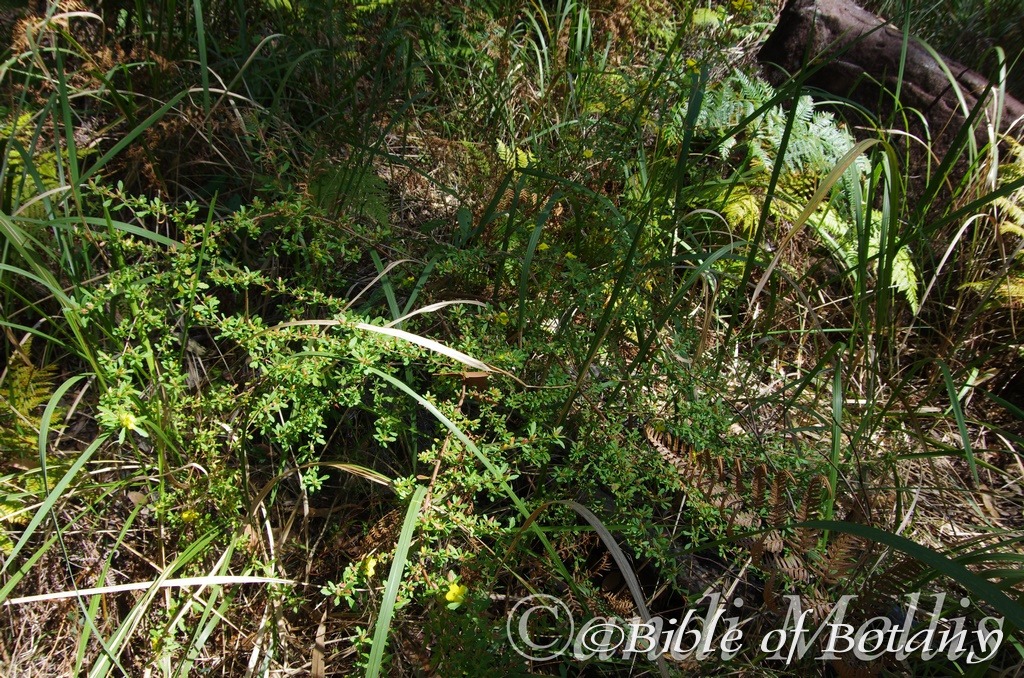
Morgan’s Camp Trail Fortis Creek National Park NSW
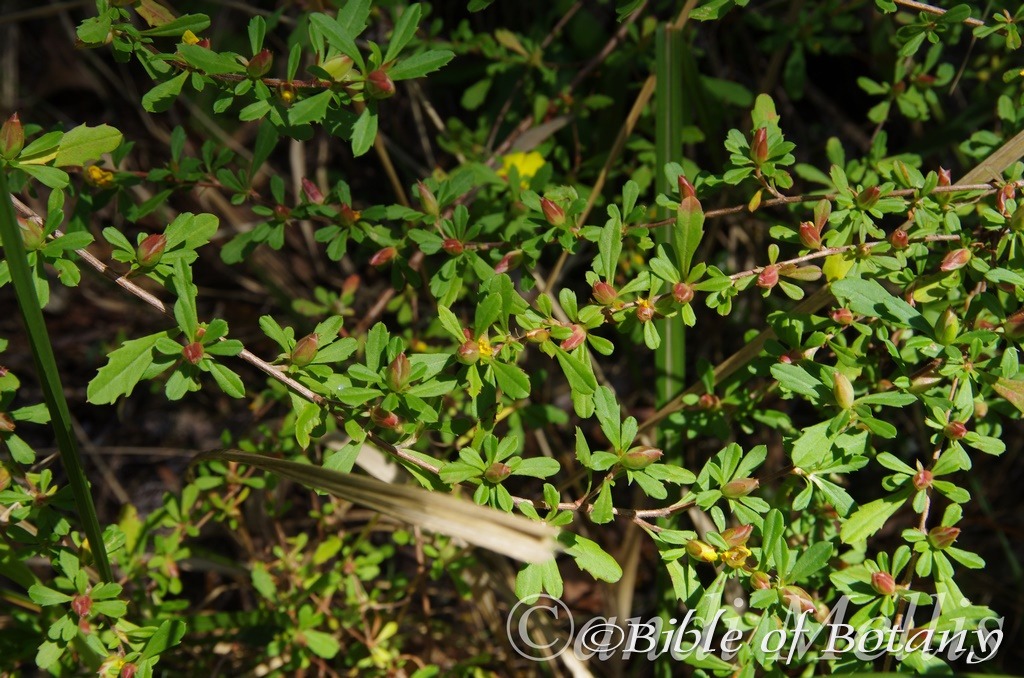
Morgan’s Camp Trail Fortis Creek National Park NSW
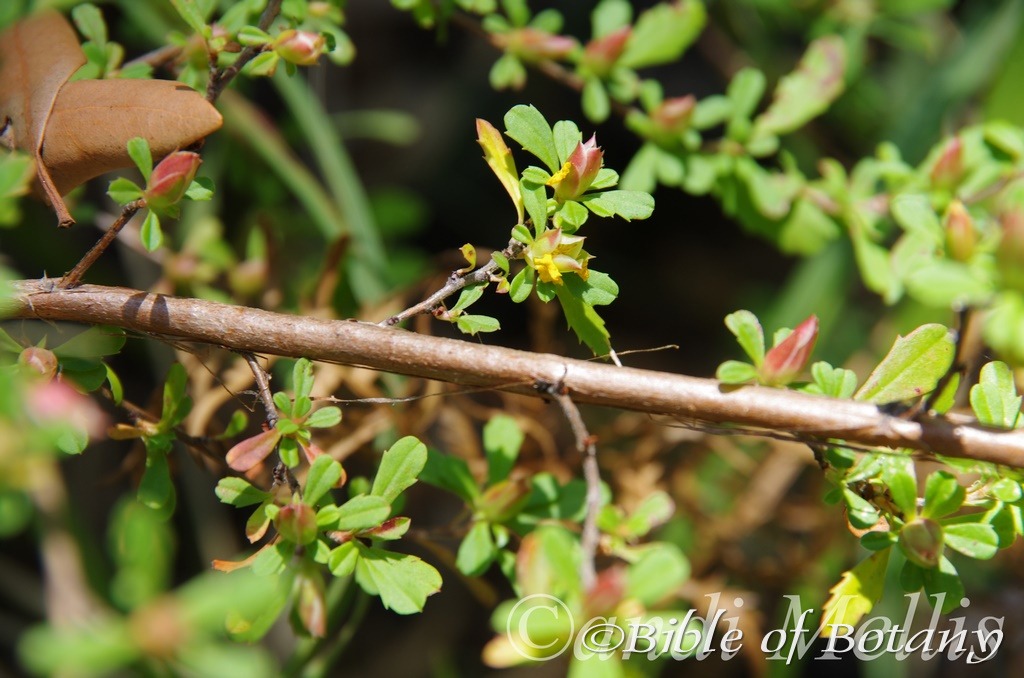
Morgan’s Camp Trail Fortis Creek National Park NSW
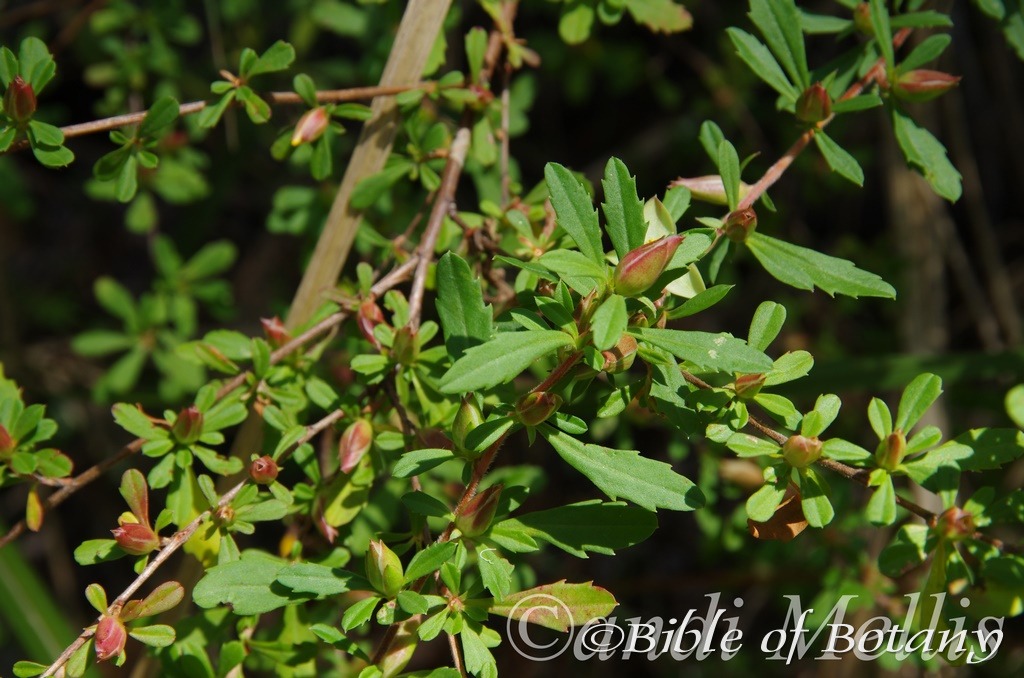
Morgan’s Camp Trail Fortis Creek National Park NSW
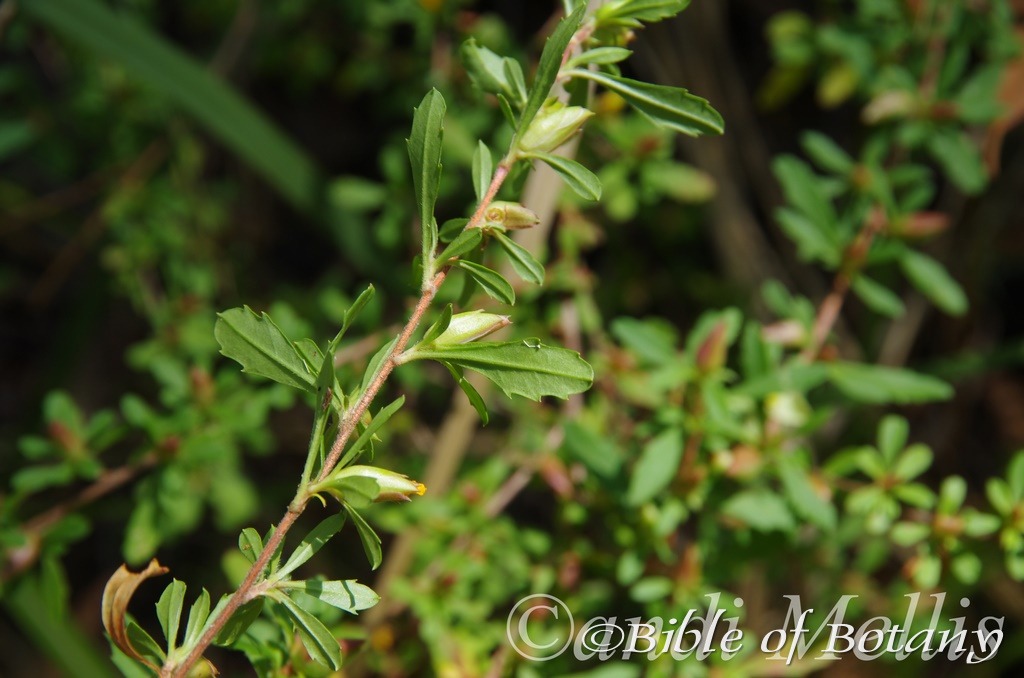
Morgan’s Camp Trail Fortis Creek National Park NSW
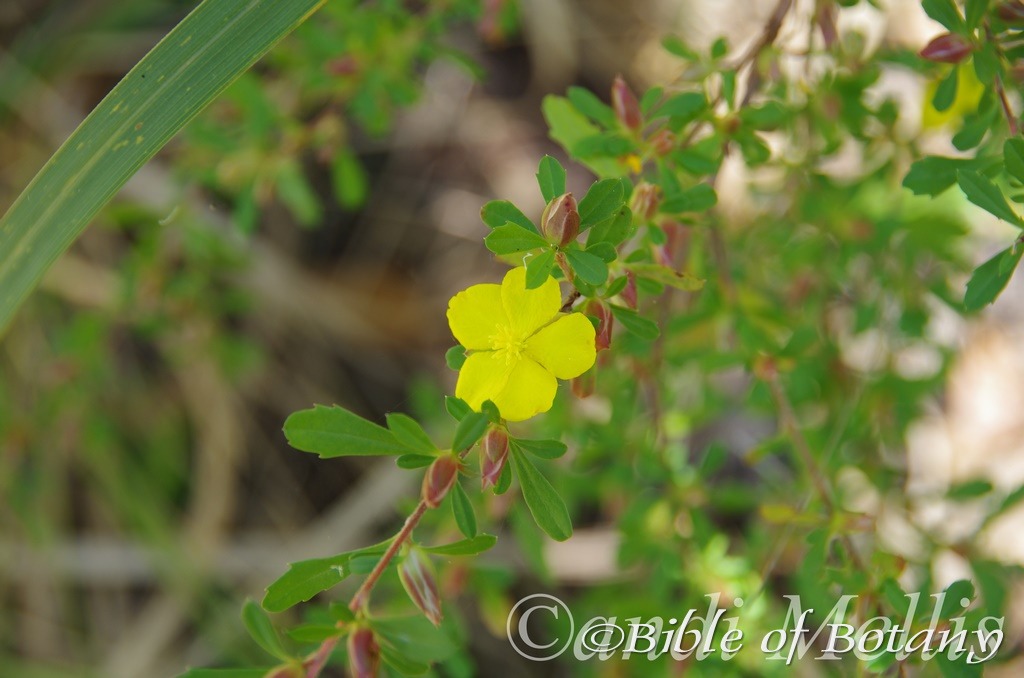
Morgan’s Camp Trail Fortis Creek National Park NSW
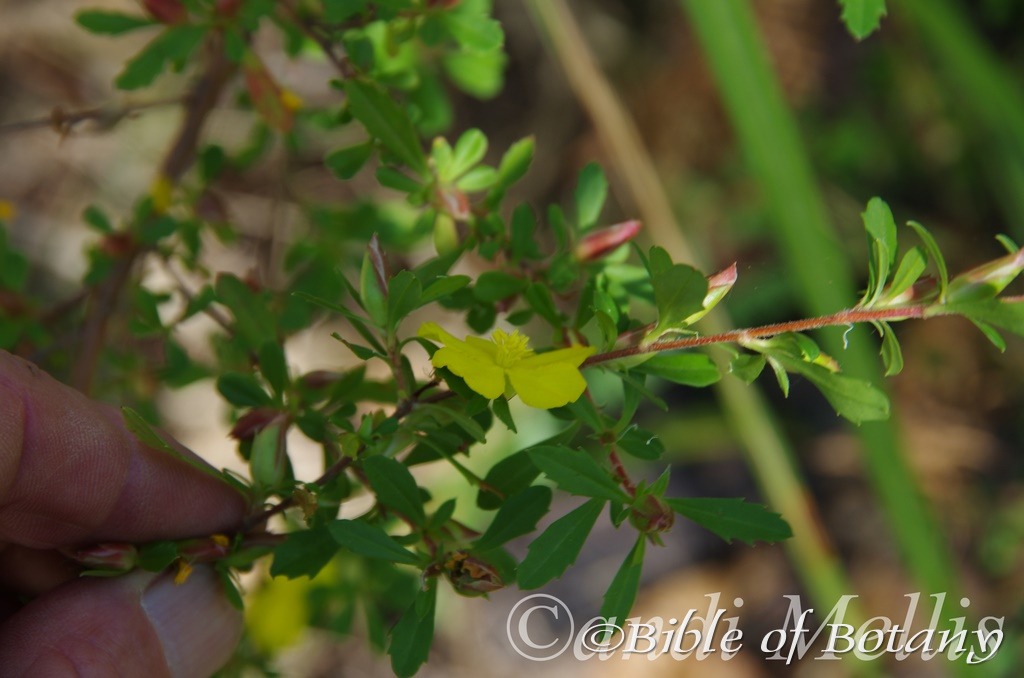
Morgan’s Camp Trail Fortis Creek National Park NSW
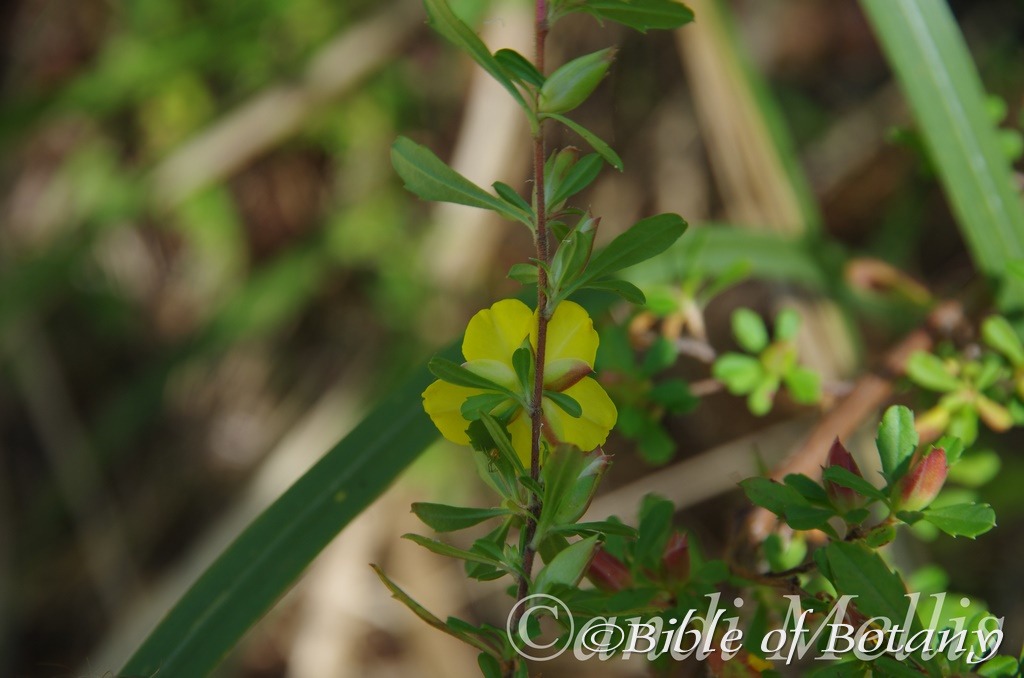
Morgan’s Camp Trail Fortis Creek National Park NSW
Hibbertia oligodonta
Classification
Unranked: Eudicots
Unranked: Core eudicots
Order: Unplaced
Family: Dilleniaceae
Genus: Is named after George Hibbert; 1757-1838, who was a London merchant, patron of botany, an amateur botanist, an advocate of slavery and owned a private Botanic Garden.
Specie: From Olígoi, which is Ancient Greek for a few and Donta which is Ancient Greek for a tooth or teeth. It refers to leaves or at times other organs, which have very poorly developed or few teeth.
Sub species:
Common Name:
Distribution:
Hibbertia oligodonta is found in several disjunct populations south from Mount Bohle in north eastern Queensland to South of Grafton near Cootes Crossing and north of Grafton in Morgan’s Camp Trail Fortis Creek National Park NSW in far north eastern New South Wales.
It is found on the eastern side of the Western plains, on the Western Slopes as far as Springsure, on and east of the Great Dividing Range especially on the Blakdown Tablelands.
https://avh.ala.org.au/occurrences/search?taxa=Hibbertia+oligodonta#tab_mapView
Habitat Aspects Climate:
Hibbertia oligodonta prefers full sun to light dappled shade. It grows on escarpments, open forests heaths in open sclerophyll woodlands, open Eucalyptus woodlands or open Eucalyptus forests. The altitude ranges from 9 meters ASL to 850 meters ASL.
The temperatures range from minus 2 degree in July to 38 degrees in January.
The rainfalls range from lows of 450mm to an average of 1200mm annually.
Soil Requirements:
Hibbertia oligodonta prefers growing on coarse sands, fine sands to fatty sandy loams. The soils are usually derived from decomposed sandstone. The soils pH varies from 5.5pH through to a 7pH. It does not tolerate waterlogged soils. Non saline soils to slightly saline soils are tolerated as are salt laden winds.
Height & Spread:
Wild Plants: 0.4m to 0.8m by 0.5m to 1.3m.
Characteristics:
Hibbertia oligodonta’s stems are wiry, deep green quickly turning reddish-brown. Stems The branchlets rely on other shrubs for support or are slightly procumbent.
The opposite Hibbertia oligodonta obovate or occasionally narrowly elliptic-obovate leaves are usually clustered on short branchlets and measure 10mm to 35mm in length by 5mm to 15mm in width. The sub sessile petioles are moderately to densely covered in white straggly, crispate or spreading, caducous hairs. The base tapers to the petiole, while the apex is obtuse to truncate with a short mucronate tip. The margins are dentate on the distal half with 1 to 5 teeth on each side of the midrib. The slightly discolourous laminas are mid blueish-green and sparsely covered in white straggly, crispate or spreading, caducous hairs. The mid vein is strongly prominent on the lower lamina and is broader at the base than at the apexand is recessed on the upper lamina. The lateral veins are barely visible on the lower lamina.
The inflorescences of Hibbertia oligodonta are born solitary from the terminals of short branchlets. The 2 slightly keeled, elliptical sepals anare moderately covered in crispate to spreading hairs and have a long acute apex. They measure 7mm to 10mm in length by 6mm to 8mm in width. The 3 inner sepals are longer than the outer sepals. The 5 bright yellow wedge shaped petals have an emarginated apex. The petals measure 9mm to 16mm in length by 8 mm to 15mm in width at the widest point. There are 22 to 38 stamens surrounding the 3 glabrous carpels.
Hibbertia oligodonta’s fruits are globose berries. The berries measure 5mm to 7mm in length by 6mm to 8mm in diameter. It is glabrous or covered in white hirsute hairs. The green berries turn pale grey-brown when ripe. The 1 or 2 deep brown black, globose seeds measure 2.5mm in diameter.
Wildlife:
Hibbertia oligodonta’s flowers are visited by native bees especially Tetragonula sp. and Austroplebeia sp. for the pollen.
Cultivation:
Hibbertia oligodonta is a very beautiful small procumbent ground cover which is suitable for small gardens to the largest garden. It is an excellent, colourful addition for tropical, sub-tropical or semi-arid zones. As garden subjects it will form a small semi compact spreading bush 40mm to 80mm in height by 500mm to 1250mm in diameter when grown in the open. It is fast growing, drought tolerant once established and is cold tolerant to temperatures at least as low as minus 3 degrees.
It can be lightly tip pruned to enhance bushiness and better flowering. Hard pruning can be done once the plants are established but some set back will occur in flowering so it is better to trim the plants on a regular or annual basis.
It is most suitable for use around swimming pools, sunny courtyards, besides pathways, rockeries, along sandy banks or along drive ways.
If it is placed around a pool then I would bring them into the center not at the ends and plant 4 or 10 in a straight row for a very formal look or use curves and scatter plant them for an informal natural look. Here the choice of companion plants to use either side is limited only by size of the area to be landscaped and the size of the other plants as they should be no more than 1 meter in height. Leaf size or flower colour is limited by your imagination; however I would not use other yellow flowering plants.
It would look good adjacent to small areas of bush close to paths or the house so their deep yellow flowers can be viewed regularly. It is great in small rockeries as a fill in plant. Here it can be planted in small groups of 2 or 3 as a standalone plant to create a harsh barren look with other arid plants. If it is surrounded by shorter plants with fine foliage and white flowers it will dominate at the center giving an expansive look to the bed. If it is surrounded by shorter plants with larger deep green foliage and red or purple flowers it will create a beautiful mosaic of colour. Here I think of plants like Leschenaultia biloba, Leschenaultia formosa and several of the Dampier sp..
Six or more planted back from a bend mixed with the Leschenaultia sp. and Dampiera sp. will become a very strong focal point when in flower, gain a lot of attention because of the fresh clean look of the foliage even in the driest of times.
Place it in the foreground with large leaf ground covers and very small shrubs. To the rear, use large leafy taller plants. Plants with pink, orange, red or purple flowers can be used in both the mid ground and background. This will lead the viewer’s eyes directly to the yellow flowers for a longer period. Small red flowering Melaleuca pachyphylla
will ensure that the whole plant or at least most of it is on display from most sections of the garden and give a great contrast.
Plant it at 0.5 meter to 0.6 meter centers for mass plantings or for something different try spacing them at 1.5 meter centers with sparse plantings of smaller annuals for a colourful display between from early Spring.
Propagation:
Seeds: Hibbertia oligodonta seeds can be sown directly into a seed raising mix. Cover them with 5mm of fine sand and keep moist not wet. Place the tray in a warm sunny position. When the seedlings are 20mm to 30mm tall, prick them out and plant them into 50mm native tubes using a good organic mix.
Once the seedlings reach 150mm to 200mm in height they can be planted out into their permanent position.
Seeds can also be spread directly onto freshly raked or disturbed ground.
Cuttings: Use 60mm to 100mm long ripened material when growing from cuttings from the present season’s growth that has at least 2 pairs of nodes. Take them in mid-autumn or early spring. Remove half the leaves from the bottom section being careful not to tear the bark. Take a 10mm slice off the bark from the bottom of the cutting on one side.
1 Prepare the cutting mix by adding one third sharp clean river sand, one third peat and one third perlite. These ingredients are sterilize,
2 Select good material from non diseased plants,
3 Select semi green stems for cuttings. Look for a stem with two or three nodes,
4 Place the cutting on a flat, hard surface, and make a clean cut down one side of the cutting at the base for 10mm with a sharp sterile knife or razor blade. – This scarification of the node will increase the chances of roots emerging from this spot. Now remove all but one or two the leaves, leaving the apex leaves in tact. If the leaves are very large in proportion to the stem, cut off the apical halves.
5 Fill a saucer with water, and place a little medium strength rooting hormone into another container like a milk bottle top. Dip the node end of the cutting into the water and then into the rooting hormone. Tap off any excess hormone,
6 Use a small dipple stick or old pencil to poke a hole into the soilless potting mix. Ensure the hole is slightly larger than the stem diameter and be careful not to wipe the rooting hormone off the cuttings base, place the cuttings in a pattern ensuring the cuttings are not touching each other,
7 I like to place the pots in Plastic bags to help maintain temperature and moisture. Place in a semi shaded place like under 50% shade cloth.
8 When the cuttings have struck, open the bag to allow air circulation for a few days to a week,
9 Once hardened off remove the cuttings from the bag and allow to further hardening for a few more days,
10 Transplant into a good potting mix to grow on.
Fertilize using seaweed, fish emulsion or organic chicken pellets soaked in water on an alternate basis. Fertilize every two months until the plants are established then twice annually in early September or March to maintain health, vitality and better flowering.
Further Comments from Readers:
Hi reader, it seems you use The Bible of Botany a lot. That’s great as we have great pleasure in bringing it to you! It’s a little awkward for us to ask, but our first aim is to purchase land approximately 1,600 hectares to link several parcels of N.P. into one at The Pinnacles NSW Australia, but we need your help. We’re not salespeople. We’re amateur botanists who have dedicated over 30 years to saving the environment in a practical way. We depend on donations to reach our goal. If you donate just $5, the price of your coffee this Sunday, We can help to keep the planet alive in a real way and continue to bring you regular updates and features on Australian plants all in one Botanical Bible. Any support is greatly appreciated. Thank you.
In the spirit of reconciliation we acknowledge the Bundjalung, Gumbaynggirr and Yaegl and all aboriginal nations throughout Australia and their connections to land, sea and community. We pay our respect to their Elders past, present and future for the pleasures we have gained.
Hibbertia pedunculata
Classification
Unranked: Eudicots
Unranked: Core eudicots
Order: Unplaced
Family: Dilleniaceae
Genus: Is named after George Hibbert; 1757-1838, who was a London merchant, patron of botany, an amateur botanist, an advocate of slavery and owned a private Botanic Garden.
Specie: From Pous, which is Ancient Greek or Pes/Pedi, which is Latin for a foot or feet. It refers to flowers, which have a peduncle and pedicel. The primary or main stalk which all the pedicels are derived.
Sub species:
Common Name:
Distribution:
Hibbertia pedunculata is found in several disjunct populations south from Proston in south east Queensland to Frankston in southern Victoria.
It is found on the eastern side of the Western plains, on the Western Slopes, on and east of the Great Dividing Range. Despite having a large distribution the plant is now considered threatened.
https://avh.ala.org.au/occurrences/search?taxa=Hibbertia+pedunculata#tab_mapView
Habitat Aspects Climate:
Hibbertia pedunculata prefers full sun to light dappled shade. It grows on escarpments, open forests heaths in open sclerophyll woodlands, open Eucalyptus woodlands or open Eucalyptus forests. This is a small rounded herb with deep yellow flowers that forms a prostrate plant or small shrub amongst grasses in open woodlands. The altitude ranges from 15 meters ASL to 850 meters ASL.
The temperatures range from minus 4 degree in July to 33 degrees in January.
The rainfalls range from lows of 450mm to an average of 1200mm annually.
Soil Requirements:
Hibbertia pedunculata prefers growing on coarse sands, fine sands to fatty sandy loams. Most of the soils contain a large percentage of course weathered chips of silicon, feldspar through to medium-heavy granite clays. The soils are usually derived from decomposed granites. The soils pH varies from 5.5pH through to a 7pH. It does not tolerate waterlogged soils however annual inundations or seasonal rises in water tables are normal throughout their habitats. Non saline soils to moderately saline soils are tolerated as are salt laden winds.
Height & Spread:
Wild Plants: 0.2m to 0.5m by 0.3m to 0.5m.
Characteristics:
Hibbertia pedunculata’s stems are wiry, deep grey-green to deep sea-green and glabrous. The branchlets rely on other shrubs for support or are slightly procumbent. The branchlets are a deep green and are sparsely covered in white puberulent hairs.
The opposite Hibbertia pedunculata linear leaves measure 3.5mm to 9mm in length by 0.5mm to 1mm in width. The base is rounded while the apex is acute. The concolourous laminas are grass-green and sparsely covered in long, white hirsute hairs. The margins are entire and slightly recurved. The mid vein is faintly prominent on the lower lamina and is broader at the base than at the apex. It is clearly visible from the upper lamina.
The inflorescences of Hibbertia pedunculata are born from the terminals and measure 13mm to 15mm in diameter. The pedicels measure 5mm to 15mm in length and are always longer than the leaves. The inner and outer sepals are glabrous on the inner surface while the outer surfaces are sparsely covered in white hirsute hairs. The narrow elliptical sepals measure 4mm to 5.5mm in length. The 5 bright yellow obcordate petals are divaricate and taper at the bases which are contorted while the apex is strongly emarginated. The petals measure 5mm to 6mm in length by 4.5mm to 5.5mm in width at the widest point.
The 15 to 20 bright yellow-green filaments and yellow anthers measure 1 to 1.5mm in length and surround the 2 carpels. The carpels are covered in white hirsute hairs while the 2 pale yellow-green pistils measure 0.8mm to 1.2mm in length. Flowers appear from early September to late early May.
Hibbertia pedunculata’s fruits are globose berries. The berries measure 5mm to 7mm in length by 6mm to 8mm in diameter. It is glabrous or covered in white hirsute hairs. The green berries turn pale grey-brown when ripe. The 2 to 4 deep brown black globose seeds measure 2mm to 3mm in diameter.
Wildlife:
Hibbertia pedunculata’s flowers are visited by native bees for the pollen.
Cultivation:
Hibbertia pedunculata is a very beautiful small native shrub or procumbent ground cover which is suitable for small gardens to the largest garden. It is an excellent, colourful addition for tropical, sub-tropical or semi-arid zones. As garden subjects it will form a small semi compact spreading bush 80mm to 150mm in height by 300mm to 350mm in diameter when grown in the open. It is fast growing, drought tolerant once established and are cold tolerant to temperatures at least as low as minus 3 degree.
It can be lightly tip pruned to enhance bushiness and better flowering. Hard pruning can be done once the plants are established but some set back will occur in flowering so it is better to trim the plants on a regular or annual basis.
It is most suitable for use around swimming pools, sunny courtyards, besides pathways, rockeries, along sandy banks or along drive ways.
If it is placed around a pool then I would bring them into the center not at the ends and plant 4 or 10 in a straight row for a very formal look or use curves and scatter plant them for an informal natural look. Here the choice of companion plants to use either side is limited only by size of the area to be landscaped and the size of the other plants as they should be no more than 1 meter in height. Leaf size or flower colour is limited by your imagination; however I would not use other yellow flowering plants.
It is best used adjacent to small areas of bush close to paths or the house so their deep yellow flowers can be viewed regularly. It is great in small rockeries as a fill in plant. Here it can be planted in small groups of 2 or 3 as a standalone plant to create a harsh barren look with other arid plants. If it is surrounded by shorter plants with fine foliages and white flowers, it will dominate at the center giving an expansive look to the bed. If it is surrounded by shorter plants with larger deep green foliages and red or purple flowers they will create a beautiful mosaic of colour. Here I think of plants like Leschenaultia biloba, Leschenaultia formosa and several of the Dampiera species.
Six or more planted back from a bend mixed with the Leschenaultia and Dampiera will become a very strong focal point when in flower gain a lot of attention because of the fresh clean look of the foliage even in the driest of times.
Place them in the foreground with large leaf ground covers and very small shrubs. To the rear, use large leaf taller plants. Plants with pink, orange, red or purple flowers can be used in both the mid ground and background. This will lead the viewer’s eyes directly to the yellow flowers for a longer period.
Ensure that the whole plant or at least most of it is on display from most sections of the garden as the flowers are a real bonus.
Whether it is in flower or not these plants will catch your attention and the viewer will be transfixed on the display rather than watching the path. Plant them at 0.5 meter to 0.6 meter centers for mass plantings or for something different try spacing them at 1.5 meter centers with sparse plantings of smaller annuals for a colourful display throughout winter.
Propagation:
Seeds: Hibbertia pedunculata seeds can be sown directly into a seed raising mix. Cover them with 5mm of fine sand and keep moist not wet. Place the tray in a warm sunny position. When the seedlings are 20mm to 30mm tall, prick them out and plant them into 50mm native tubes using a good organic mix.
Once the seedlings reach 150mm to 200mm in height they can be planted out into their permanent position.
Seeds can also be spread directly onto freshly raked or disturbed ground.
Cuttings: Use 60mm to 100mm long ripened material when growing from cuttings from the present season’s growth that has at least 2 pairs of nodes. Take them in mid-autumn or early spring. Remove half the leaves from the bottom section being careful not to tear the bark. Take a 10mm slice off the bark from the bottom of the cutting on one side.
1 Prepare the cutting mix by adding one third sharp clean river sand, one third peat and one third perlite. These ingredients are sterilize,
2 Select good material from non diseased plants,
3 Select semi green stems for cuttings. Look for a stem with two or three nodes,
4 Place the cutting on a flat, hard surface, and make a clean cut down one side of the cutting at the base for 10mm with a sharp sterile knife or razor blade. – This scarification of the node will increase the chances of roots emerging from this spot. Now remove all but one or two the leaves, leaving the apex leaves in tact. If the leaves are very large in proportion to the stem, cut off the apical halves.
5 Fill a saucer with water, and place a little medium strength rooting hormone into another container like a milk bottle top. Dip the node end of the cutting into the water and then into the rooting hormone. Tap off any excess hormone,
6 Use a small dipple stick or old pencil to poke a hole into the soilless potting mix. Ensure the hole is slightly larger than the stem diameter and be careful not to wipe the rooting hormone off the cuttings base, place the cuttings in a pattern ensuring the cuttings are not touching each other,
7 I like to place the pots in Plastic bags to help maintain temperature and moisture. Place in a semi shaded place like under 50mm shade cloth.
8 When the cuttings have struck, open the bag to allow air circulation for a few days to a week,
9 Once hardened off remove the cuttings from the bag and allow to further hardening for a few more days,
10 Transplant into a good potting mix to grow on.
Fertilize using seaweed, fish emulsion or organic chicken pellets soaked in water on an alternate basis. Fertilize every two months until the plants are established then twice annually in early September or March to maintain health, vitality and better flowering.
Further Comments from Readers:
Hi reader, it seems you use The Bible of Botany a lot. That’s great as we have great pleasure in bringing it to you! It’s a little awkward for us to ask, but our first aim is to purchase land approximately 1,600 hectares to link several parcels of N.P. into one at The Pinnacles NSW Australia, but we need your help. We’re not salespeople. We’re amateur botanists who have dedicated over 30 years to saving the environment in a practical way. We depend on donations to reach our goal. If you donate just $5, the price of your coffee this Sunday, We can help to keep the planet alive in a real way and continue to bring you regular updates and features on Australian plants all in one Botanical Bible. Any support is greatly appreciated. Thank you.
In the spirit of reconciliation we acknowledge the Bundjalung, Gumbaynggirr and Yaegl and all aboriginal nations throughout Australia and their connections to land, sea and community. We pay our respect to their Elders past, present and future for the pleasures we have gained.
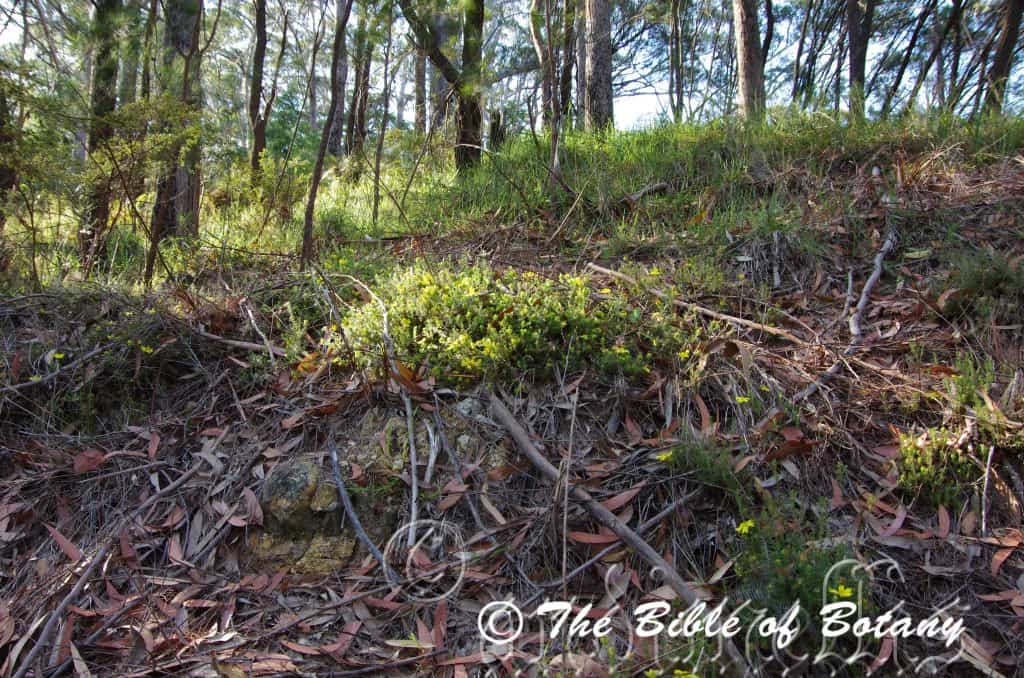
The Pinnacles NSW
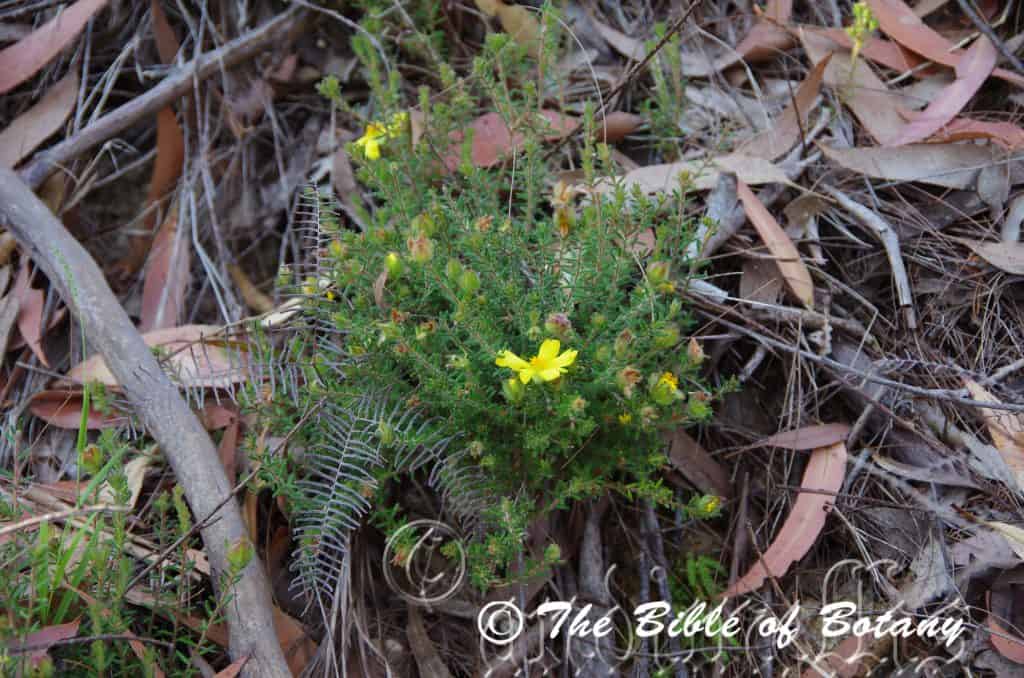
The Pinnacles NSW
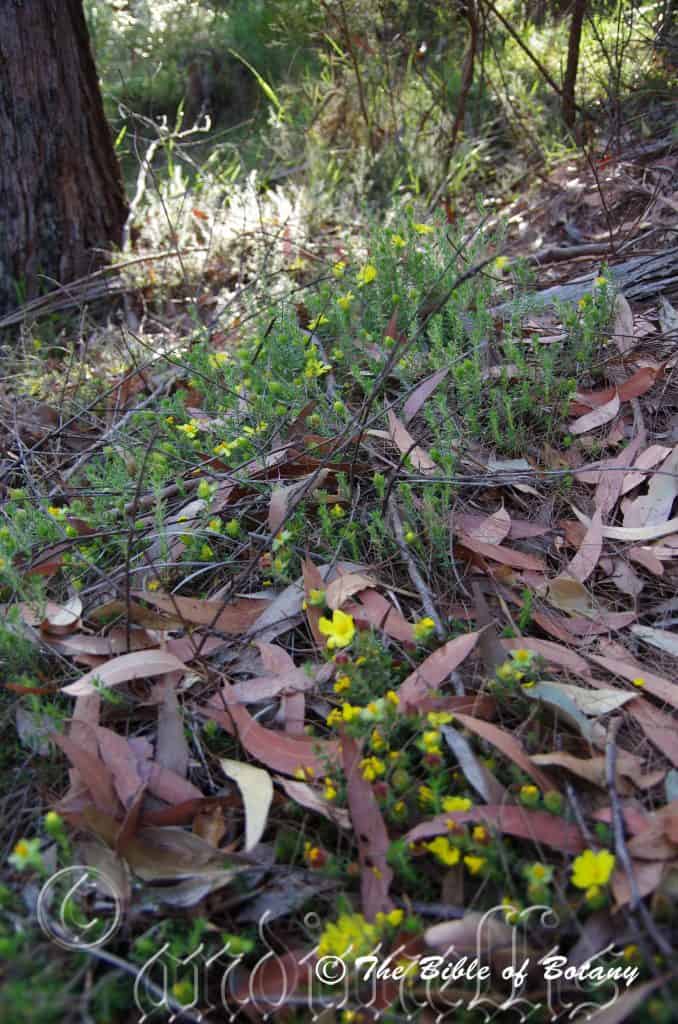
The Pinnacles NSW
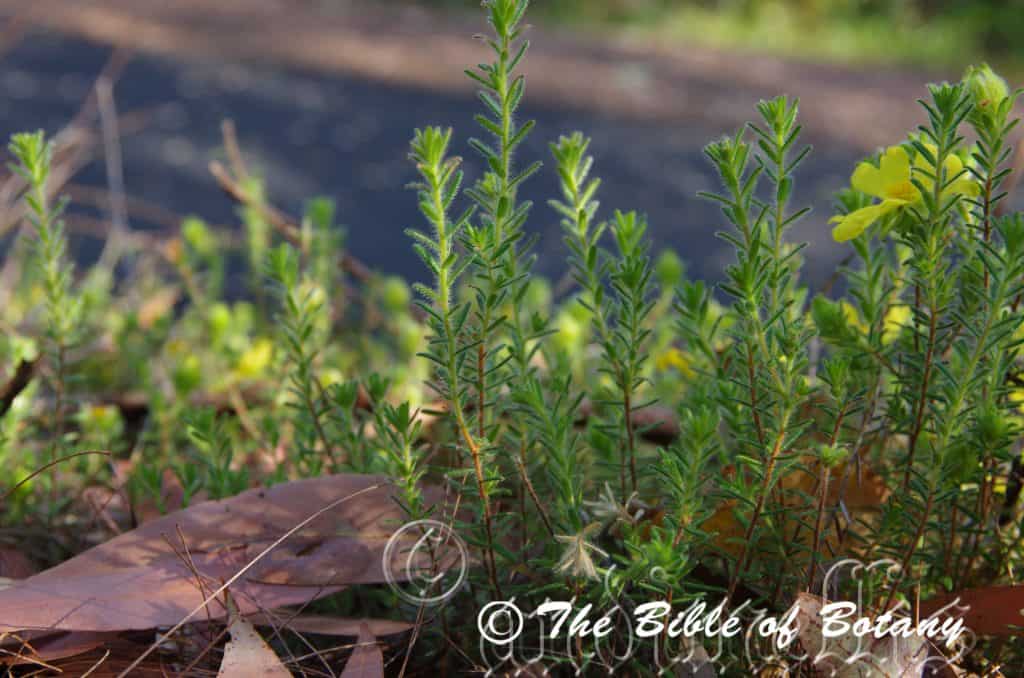
The Pinnacles NSW
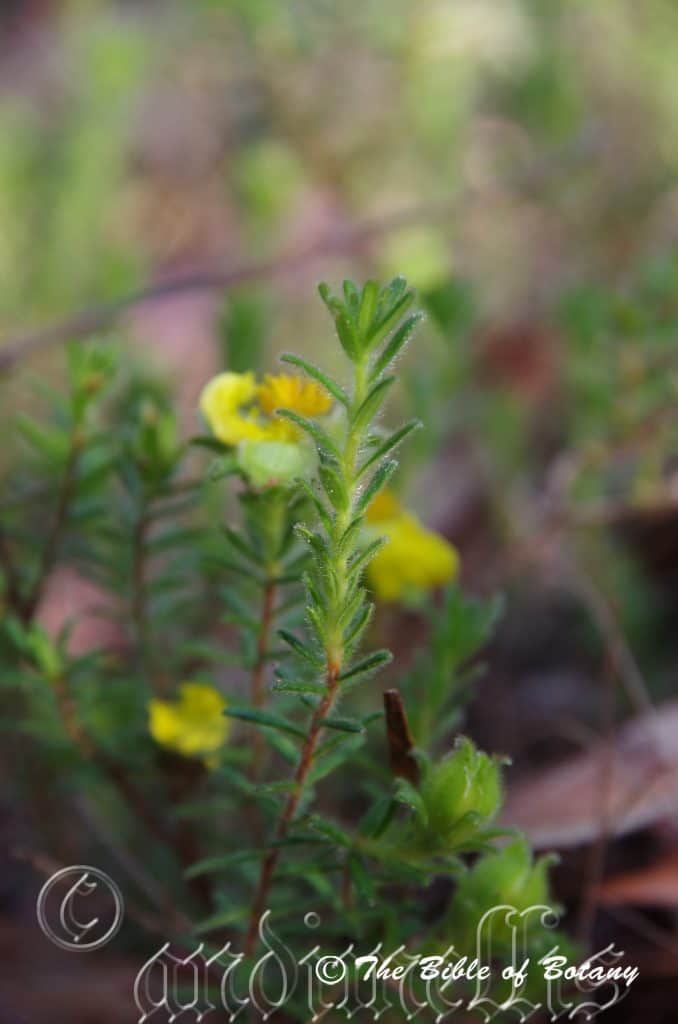
Clarence River NSW
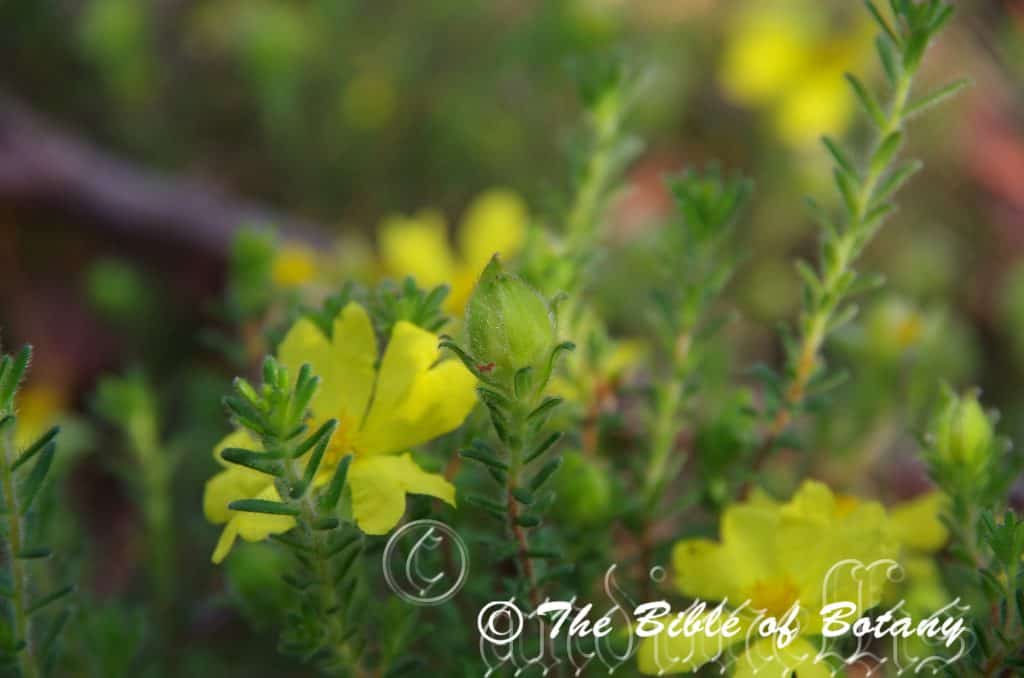
Clarence River NSW
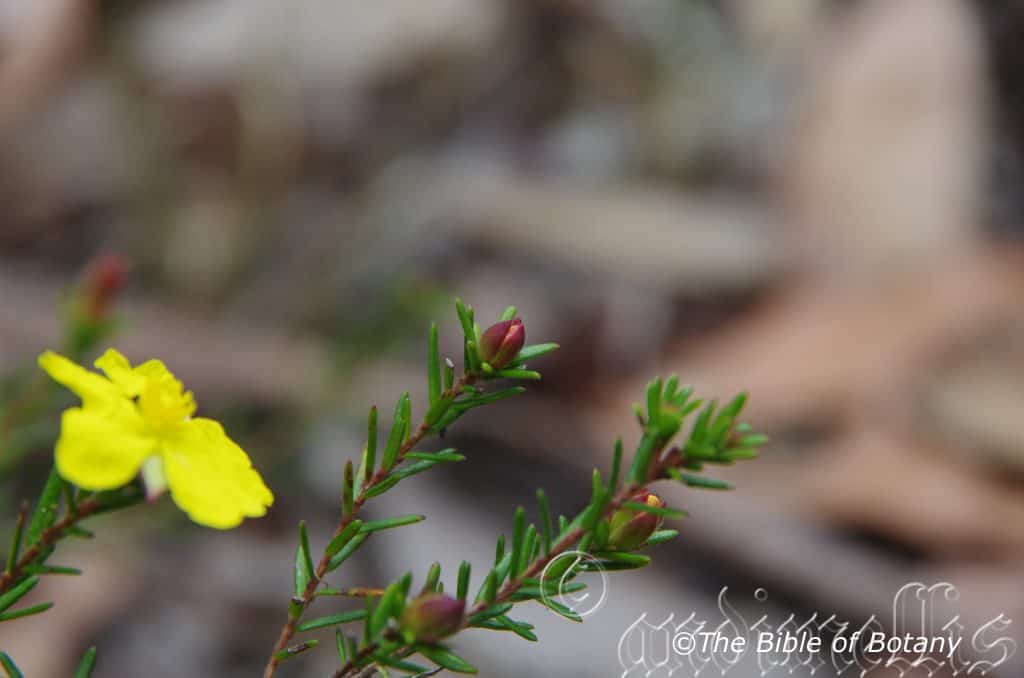
Clarence River NSW
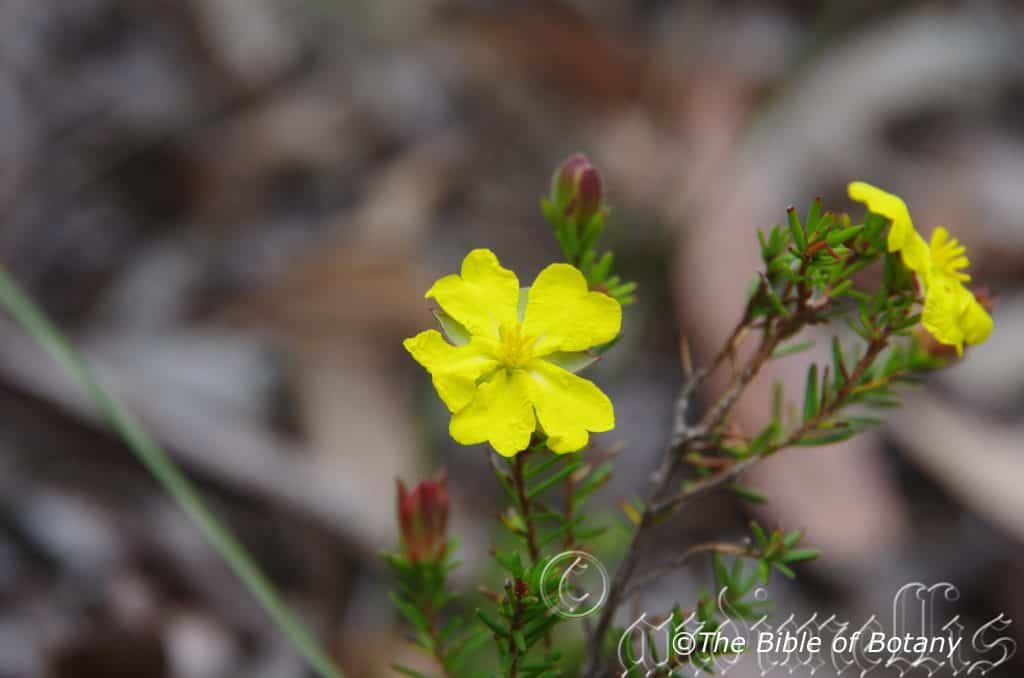
Clarence River NSW
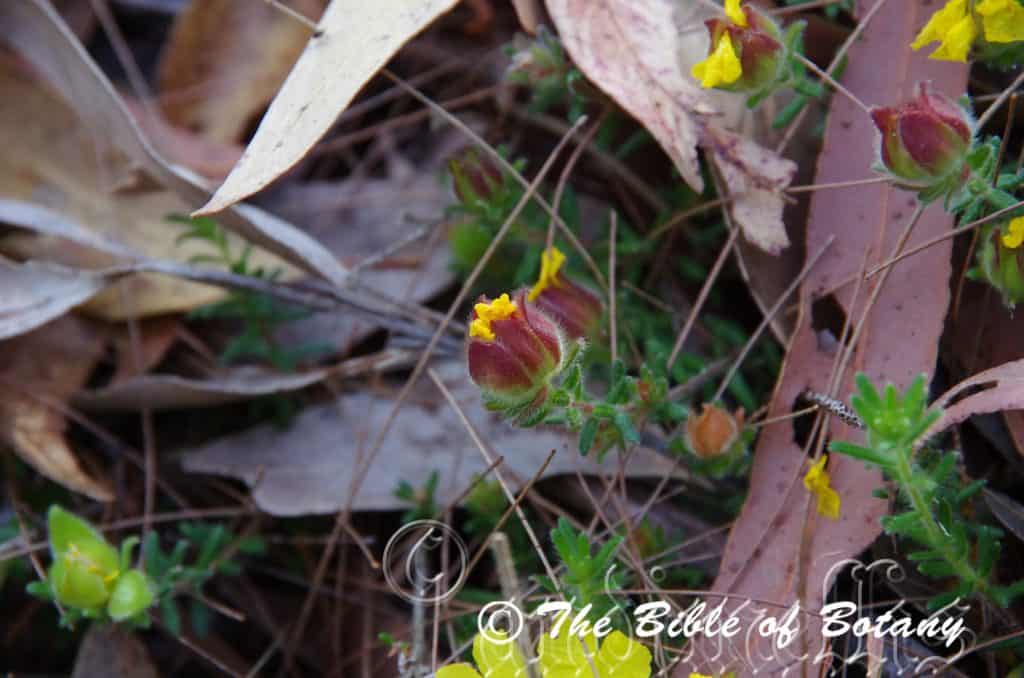
Clarence River NSW
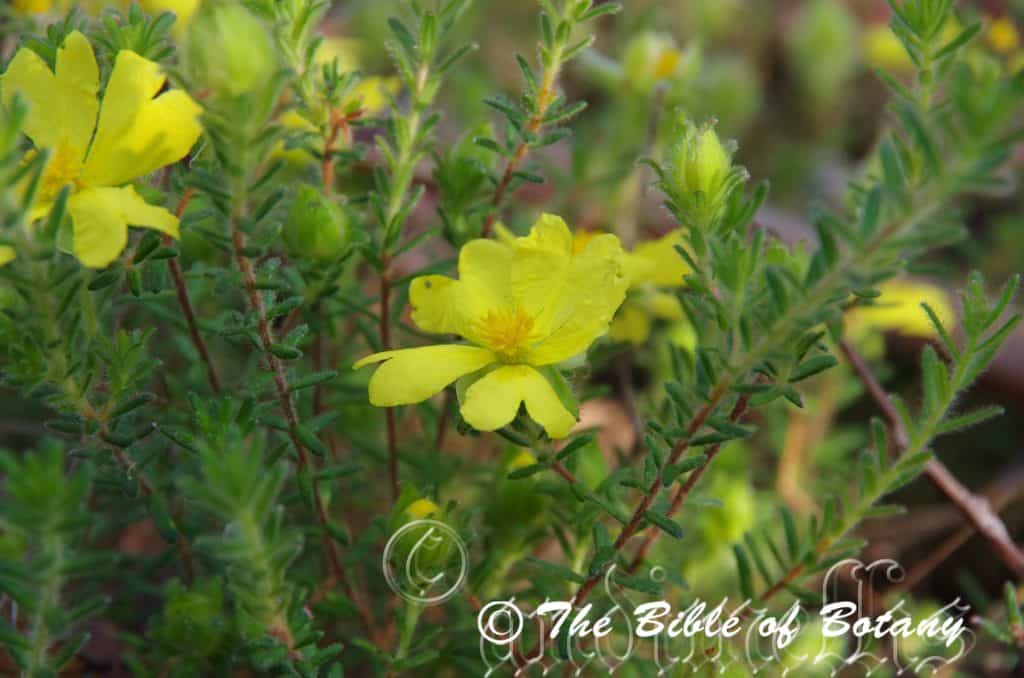
Clarence River NSW
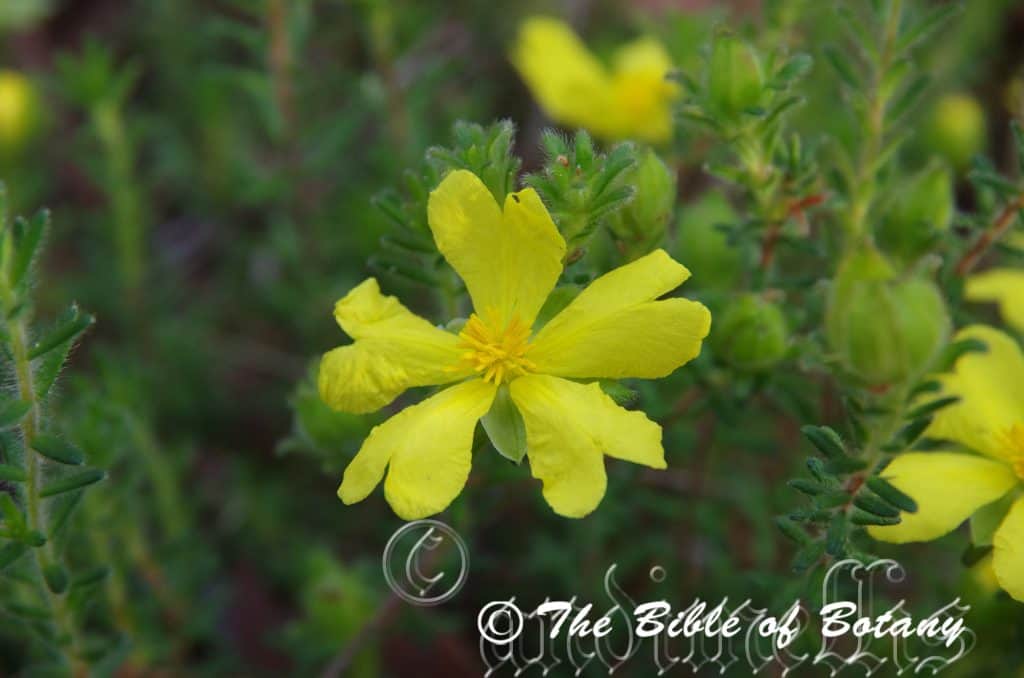
Clarence River NSW
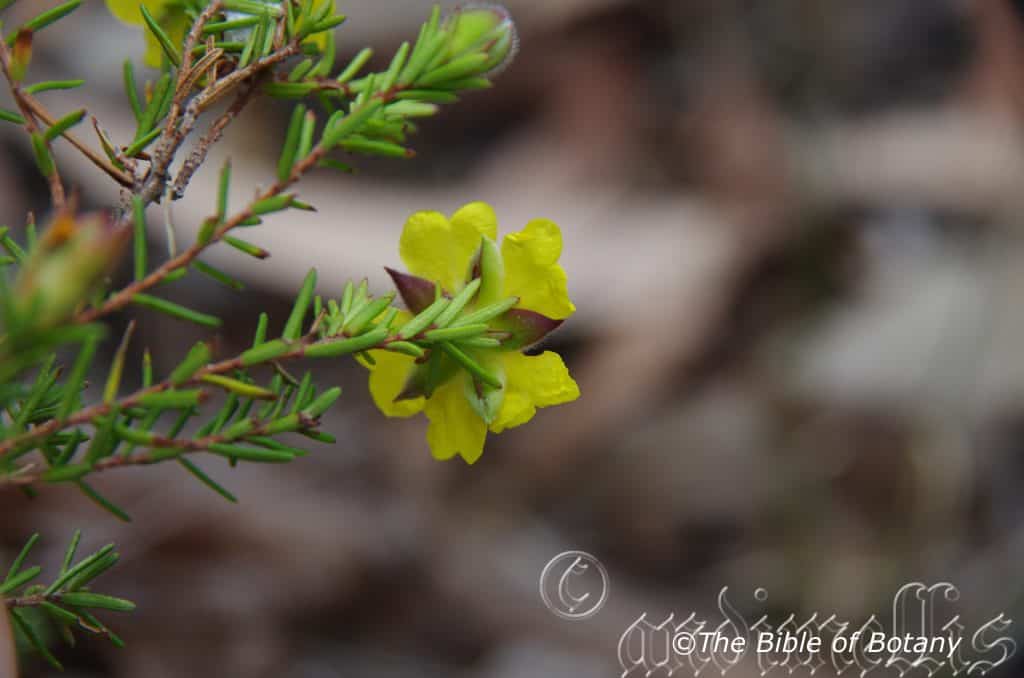
Clarence River NSW
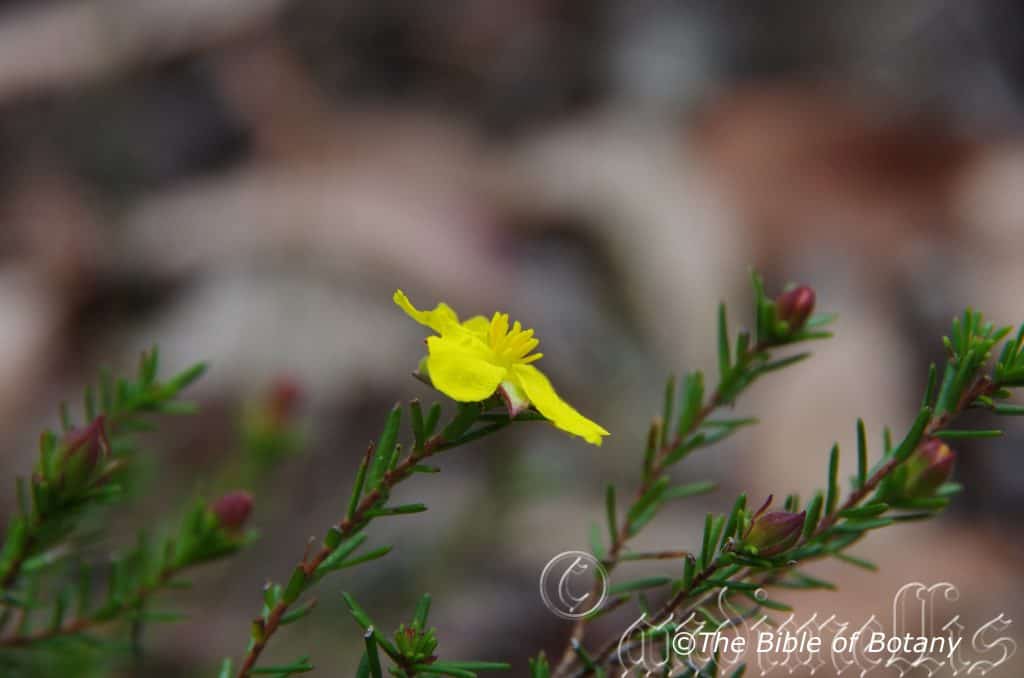
Clarence River NSW
Hibbertia riparia
Classification
Unranked: Eudicots
Unranked: Core eudicots
Order: Unplaced
Family: Dilleniaceae
Genus: Is named after George Hibbert; 1757-1838, who was a London merchant, patron of botany, an amateur botanist, an advocate of slavery and owned a private Botanic Garden.
Specie: From Rīpa/Rīpārum, which are Greek for along a creek line (riparian zone) or along a shore-line. It refers to habitats, which are at the edge of a body of permanent water or at times seasonally flooded locations where permanent ground-water may exist. To grow along rills to rivers or estuarine zones or on the banks of inland billabongs.
Sub species:
Common Name: Erect Guinea Flower.
Distribution:
Hibbertia riparia is found south from the Glastonbury State Forest in central Queensland to Streaky Bay in southern South Australia. It is found on the western slopes within 370 kilometres from the coast, on and east of the Great Dividing Range. It is also found in several disjunct populations further north, in far north Queensland from the Hidden Valley in the Paluma National Park to Monto in the south.
It is also found on the Flinders Island group of Islands in Bass Straight and on the eastern side of mainland Tasmania.
https://avh.ala.org.au/occurrences/search?taxa=Hibbertia+riparia#tab_mapView
Habitat Aspects Climate:
Hibbertia riparia prefers full sun to dappled shade. It grows in riparian zones, adjacent to swamps and wallums near lagoons and monsoonal vine thickets. The altitude ranges from 20 meters ASL to 1050 meters ASL.
The temperatures range from minus 4 degree in July to 38 degrees in January.
The rainfalls range from lows of 400mm to an average of 2000mm annually.
Soil Requirements:
Hibbertia riparia prefers skeletal sands to medium clays with coarse grains. The soils are usually derived from decomposed sandstone, granite or at times alluvial silts and accumulated sands. The soils pH varies from 5.5pH through to a 7pH. It does not tolerate waterlogged soils however seasonal high water tables are tolerated. Non saline soils to moderately saline soils are tolerated.
Height & Spread:
Wild Plants: 0.2m to 1m by 0.4m to 0.8m.
Characteristics:
Hibbertia riparia’s stems are brown to deep purplish-brown, are scabrous and glabrous to moderately covered in white appressed hairs or at times rusty-red stellate hairs and or hirsute hairs. The branchlets are erect and often rely on other shrubs for support or are decumbent with erect terminals. The stems are mid reddish-brown and are usually densely covered in rusty-red hirtellous hairs or at times rusty-red stellate hairs and or hirsute hairs.
Hibbertia riparia’s linear to narrow lanceolate leaves are coriaceous and measure 8mm to 20mm in length by 0.5mm to 4mm in width. The yellowish-green petioles measure 0.5mm to 2mm in length. The bases taper slightly to the petioles while the apexes are obtuse or acute. The discolourous laminas are grass-green or blueish-green and scabrous and sparsely covered in white tuberculate, hirsute or puberulent hairs on the upper lamina while the lower laminas are paler. The upper laminas are convex between the mid vein and the margins while the margins are entire and strongly revolute with the lower revolute part level with the midvein. The mid vein is strongly prominent on the lower lamina and is not visible from the upper lamina.
The inflorescences of Hibbertia riparia are born from the leaf axils or terminal shoots. The flowers measure 16mm to 27mm in diameter. The 5 elliptical sepals are cupuliform at the apexes and are covered in white sericeous hairs externally and are glabrous internally. The sepals measure 6mm to 12mm in length by 2.8mm to 5.5mm in width. The 5 yellow petals are triangular with a broad obtuse apex with a deep emarginate tip. The petals measure 6mm to 12mm in length by 5mm to 10mm in width.
The 6 to 16 yellow stamens are clustered together on one side of the 2 carpels. The pale yellow filaments measure 0.5mm to 1mm in length while the basifixed anthers dehisce longitudinally. The deep yellow, oblong anthers measure 1mm to 2mm in length. The 2 pastel translucent yellow-green styles measure 1.5mm to 2mm in length. The flowers appear from September to late February.
Hibbertia riparia’s are globose capsules or berries surrounded by the persistent sepals. The berries have 2 carpels and measure 5mm to 7mm in length by 6mm to 8mm in diameter. It is usually glabrous or rarely covered in soft, white sericeous hairs. The green berries turn pale grey-brown when ripe. The 2 to 4 deep brown black globose seeds measure 2mm to 3mm in diameter.
NOTE: A variable species complex including several taxa that have yet to be defined. Populations differ in habit, indumentum, size and form of leaves and floral characters. – https://plantnet.rbgsyd.nsw.gov.au/cgi-bin/NSWfl.pl?page=nswfl&showsyn=&dist=NC&constat=&lvl=sp&name=Hibbertia~riparia
Wildlife:
Hibbertia riparia wildlife is unknown to the author though small black beetles and native bees have been observed on the flowers and these were covered in yellow pollen.
Cultivation:
Hibbertia riparia is a very beautiful small native sub shrub or decumbent perennial which is suitable for small gardens to the largest garden. It is an excellent colourful addition for tropical, sub-tropical, semi-arid or temperate gardens. As garden subjects it will grow to 0.5 meter to 0.7 meters in height by 0.8 meters to 1 meter in diameter.
It is fast growing, drought tolerant and are cold tolerant to temperatures at least as low as 6 degrees once established.
It is most suitable for use around swimming pools, sunny courtyards, besides pathways, rockeries, along sandy banks, along drive ways and adjacent to natural bush gardens.
If it is placed around a pool then I would place them into the center not at the ends and plant 2 or 3 in a straight row for a very formal look or use curves for the natural look. Here the choice of companion plants to use either side is limited only by size of the area to be landscaped. Leaf size or flower colour is limited by your imagination. The only limitation would be not to use other yellow flowering plants.
It is great adjacent to small areas of bush close to paths or the house so their deep yellow flowers can be viewed regularly. It is also suited for planting in small rockeries as a fill in plant. Here it can be planted in small clusters of 3 to 5 or as a standalone plant to create a harsher more barren look with other arid plants. If it is surrounded by shorter plants with fine foliages and red flowers they will dominate at the center giving height and strength to the bed especially when it is in flower.
When you design a heath garden which Hibbertia riparia is well suited to don’t use contours to display the plants as heath lands are almost always flat or have a slight rise. Taller heaths are better placed on the downhill side of a path so that you can still look over the tallest plants. This gives an extra dimension which many people forget about when designing heath gardens. Plants must be planted close together and be short so you can see over the tallest ones with the exception of one or two plants at the most. These will be feature plants. The idea is to achieve a feeling of expansive flatness. This can be achieved with using the Hibbertia riparia’s brilliant yellow flowers. Mix it with other smaller shrubs so none of them dominate the scene but blend in to give a mosaic of foliage colours that you oversee. Mix it with other smaller shrubs so none of them dominate the scene but blend in to give a mosaic of foliage colours that you oversee. Here I immediately think of Actinotis helianthi, Chloanthes parviflora, Leschenaultia biloba, Leschenaultia formosa and several of the Dampers specie.
Ensure that the whole plant or at least most of it is on display from most sections of the garden as the flowers are a real bonus.
Whether it is in flower or not these plants will catch your attention. Mass plantings are best achieved by planting them at 0.6 meter centers for a dense covering or at 1 meter centers for a barren rocky or alpines look.
Propagation:
Seeds: Hibbertia riparia seeds can be sown directly onto a seed raising mix. Cover them with 2mm of fine sand and keep moist not wet. Place the tray in a warm sunny position or beneath 30mm shade cloth. When the seedlings are 30mm to 50mm tall, prick them out and plant them into 50mm native tubes using a good organic mix.
Once the seedlings reach 150mm to 200mm in height they can be planted out into their permanent position.
Cuttings: Use 100mm long half ripened material when growing from cuttings from the present season’s growth. Take them in mid-autumn or early spring. Remove half the leaves from the bottom section being careful not to tear the bark. Take a 10mm slice off the bark from the bottom of the cutting on one side.
1 Prepare the cutting mix by adding one third sharp clean river sand, one third peat and one third perlite. These ingredients are sterilize,
2 Select good material from non diseased plants,
3 Select semi green stems for cuttings. Look for a stem with two or three nodes,
4 Place the cutting on a flat, hard surface, and make a clean cut down one side of the cutting at the base for 10mm with a sharp sterile knife or razor blade. – This scarification of the node will increase the chances of roots emerging from this spot. Now remove all but one or two the leaves, leaving the apex leaves in tact. If the leaves are very large in proportion to the stem, cut off the apical halves.
5 Fill a saucer with water, and place a little medium strength rooting hormone into another container like a milk bottle top. Dip the node end of the cutting into the water and then into the rooting hormone. Tap off any excess hormone,
6 Use a small dipple stick or old pencil to poke a hole into the soilless potting mix. Ensure the hole is slightly larger than the stem diameter and be careful not to wipe the rooting hormone off the cuttings base, place the cuttings in a pattern ensuring the cuttings are not touching each other,
7 I like to place the pots in Plastic bags to help maintain temperature and moisture. Place in a semi shaded place like under 50mm shade cloth.
8 When the cuttings have struck, open the bag to allow air circulation for a few days to a week,
9 Once hardened off remove the cuttings from the bag and allow to further hardening for a few more days,
10 Transplant into a good potting mix to grow on.
Fertilize using seaweed, fish emulsion or organic chicken pellets soaked in water on an alternate basis. Fertilize every two months until the plants are established then twice annually in early September or March to maintain health, vitality and better flowering.
Further Comments from Readers:
Hi reader, it seems you use The Bible of Botany a lot. That’s great as we have great pleasure in bringing it to you! It’s a little awkward for us to ask, but our first aim is to purchase land approximately 1,600 hectares to link several parcels of N.P. into one at The Pinnacles NSW Australia, but we need your help. We’re not salespeople. We’re amateur botanists who have dedicated over 30 years to saving the environment in a practical way. We depend on donations to reach our goal. If you donate just $5, the price of your coffee this Sunday, We can help to keep the planet alive in a real way and continue to bring you regular updates and features on Australian plants all in one Botanical Bible. Any support is greatly appreciated. Thank you.
In the spirit of reconciliation we acknowledge the Bundjalung, Gumbaynggirr and Yaegl and all aboriginal nations throughout Australia and their connections to land, sea and community. We pay our respect to their Elders past, present and future for the pleasures we have gained.
Hibbertia rufa
Classification:
Unranked: Eudicots
Unranked: Core eudicots
Order: Unplaced
Family: Dilleniaceae
Genus: Is named after George Hibbert; 1757-1838, who was a London merchant, patron of botany, an amateur botanist, an advocate of slavery and owned a private Botanic Garden.
Specie: From Rufescere which is Latin for deep rusty-red to tawny-red. It refers to the colour of the leaves and/or stems which are a deep rusty-red colour.
Sub species:
Common Name: Brown Guinea Flower.
Distribution:
Hibbertia rufa is found in several disjunct populations south from Basket Swamp near Tenterfield in New South Wales to Orbost in north eastern Gippsland Victoria.
It is also found in the north east corner of Tasmania at Doctor’s Peak.
https://avh.ala.org.au/occurrences/search?taxa=Hibbertia+rufa#tab_mapView
Habitat Aspects Climate:
Hibbertia rufa prefers full sun to dappled shade. It grows in riparian zones, adjacent to swamps, wallums near lagoons in open Eucalyptus woodlands or woodland heaths. The altitude ranges from 280 meters ASL to 1280 meters ASL.
The temperatures range from minus 5 degrees in July to 34 degrees in January.
The rainfalls range from lows of 500mm to an average of 1600mm annually.
Soil Requirements:
Hibbertia rufa prefers coarse sands, coarse fatty sands or light clays to medium clays. The soils are usually derived from decomposed to partially decomposed granites. The soils pH varies from 5pH through to a 6pH. It tolerates seasonally waterlogged soils and seasonally high water tables. Non saline soils to moderately saline soils are tolerated.
Height & Spread:
Wild Plants: 0.2m to 0.35m by 0.2m to 0.4m.
Characteristics:
Hibbertia rufa’s wiry stems are angular to square in cross section, grey to grey-brown and slightly flaky. The smaller stems are pendant or trailing decumbent or procumbent and often rely on other shrubs for support. The stems are rufous to rusty brown-brown, semi glossy and glabrous.
Hibbertia rufa’s opposite narrow linear to lanceolate, coriaceous leaves measure 5mm to 8mm in length by 0.5mm to 1.5mm in width. The bases are very broad rounded to truncate while the apexes are acute with a tuft of fawn hirsute hairs. The concolourous laminas are deep green and are glabrous or very sparsely covered in soft fawn hirsute hairs on the upper laminas while the lower laminas are glabrous to sparsely covered in soft fawn hirsute hairs. The upper lamina is convex to decurve from the mid vein to the margins while the margins are entire and revolute. The mid vein is prominent on the lower lamina and is visible from the upper lamina. The petioles are minute or sessilis.
The inflorescences of Hibbertia rufa are usually born from the leaf axils. The flowers measure 14mm to 18mm in diameter. The 5 ovate to broad ovate sepals are glabrous externally and internally. The strongly cupuliform sepals measure 6mm to 8mm in length by 3.5mm to 4.5mm in width. The 5 yellow petals are ovate to oblong-ovate with an emarginate apex. The petals measure 6mm to 8mm in length by 3mm to 4mm in width. The pedicels usually measure 8mm to 15mm in length or rarely sessile.
The 4 or rarely 6 yellow filaments are fused on one side of the 2 chamber carpels. The filaments measure 0.4mm to 0.6mm in length while the bright yellow anthers are free and measure 1.5 to 2mm in length. They measure 1mm to 1.5mm in length. The flowers appear from late November to February.
Hibbertia rufa’s are globose capsules or berries surrounded by the persistent sepals. The glabrous carpels measure 4mm to 6mm in length by 4mm to 6mm in diameter. The green berries turn pale grey-brown when ripe. The 2 to 4 deep brown black globose seeds measure 1.5mm to 2mm in diameter.
Wildlife:
Hibbertia rufa is unknown to the author though small black beetles and native bees have been observed on the flowers and these were covered in yellow pollen.
Cultivation:
Hibbertia rufa is a very beautiful small native sub shrub or decumbent perennial which is suitable for small gardens to the largest garden. It is an excellent colourful addition for tropical, sub-tropical, semi-arid or temperate gardens. As garden subjects they will grow to 0.5 meter to 0.7 meters in height by 0.8 meters to 1 meter in diameter.
It is fast growing, drought tolerant and are cold tolerant to temperatures at least as low as 6 degrees once established.
It is most suitable for use around swimming pools, sunny courtyards, besides pathways, rockeries, along sandy banks, along drive ways and adjacent to natural bush gardens.
If it is placed around a pool then I would place them into the center not at the ends and plant 2 or 3 in a straight row for a very formal look or use curves for the natural look. Here the choice of companion plants to use either side is limited only by size of the area to be landscaped. Leaf size or flower colour is limited by your imagination. The only limitation would be not to use other yellow flowering plants.
It is great adjacent to small areas of bush close to paths or the house so their deep yellow flowers can be viewed regularly. It is also suited for planting in small rockeries as a fill in plant. Here they can be planted in small groups of 3 to 5 or as a standalone plant to create a harsher more barren look with other arid plants. If it is surrounded by shorter plants with fine foliages and red flowers they will dominate at the center giving height and strength to the bed especially when it is in flower.
When you design a heath garden which Hibbertia riparia is well suited to don’t use contours to display the plants as heath lands are almost always flat or have a slight rise. Taller heaths are better placed on the downhill side of a path so that you can still look over the tallest plants. This gives an extra dimension which many people forget about when designing heath gardens. Plants must be planted close together and be short so you can see over the tallest ones with the exception of one or two plants at the most. These will be feature plants. The idea is to achieve a feeling of expansive flatness. This can be achieved with using the Hibbertia riparia’s brilliant yellow flowers. Mix them with other smaller shrubs so none of them dominate the scene but blend in to give a mosaic of foliage colours that you oversee. Mix them with other smaller shrubs so none of them dominate the scene but blend in to give a mosaic of foliage colours that you oversee. Here I immediately think of Actinotis helianthi, Chloanthes parviflora, Leschenaultia biloba, Leschenaultia formosa or any of the Dampers species.
Ensure that the whole plant or at least most of it is on display from most sections of the garden as the flowers are a real bonus.
Whether it is in flower or not these plants will catch your attention. Mass plantings are best achieved by planting them at 0.6 meter centers for a dense covering or at 1 meter centers for a barren rocky or alpines look.
Propagation:
Seeds: Hibbertia rufa seeds can be sown directly onto a seed raising mix. Cover them with 2mm of fine sand and keep moist not wet. Place the tray in a warm sunny position or beneath 30mm shade cloth.
When the seedlings are 30mm to 60mm tall, prick them out and plant them into 50mm native tubes using a good organic mix.
Once the seedlings reach 150mm to 200mm in height they can be planted out into their permanent position.
Cuttings: Use 70mm to 100mm long half ripened material when growing from cuttings from the present season’s growth. Take them in mid-autumn or early spring. Remove half the leaves from the bottom section being careful not to tear the bark. Take a 10mm slice off the bark from the bottom of the cutting on one side.
1 Prepare the cutting mix by adding one third sharp clean river sand, one third peat and one third perlite. These ingredients are sterilize,
2 Select good material from non diseased plants,
3 Select semi green stems for cuttings. Look for a stem with two or three nodes,
4 Place the cutting on a flat, hard surface, and make a clean cut down one side of the cutting at the base for 10mm with a sharp sterile knife or razor blade. – This scarification of the node will increase the chances of roots emerging from this spot. Now remove all but one or two the leaves, leaving the apex leaves in tact. If the leaves are very large in proportion to the stem, cut off the apical halves.
5 Fill a saucer with water, and place a little medium strength rooting hormone into another container like a milk bottle top. Dip the node end of the cutting into the water and then into the rooting hormone. Tap off any excess hormone,
6 Use a small dipple stick or old pencil to poke a hole into the soilless potting mix. Ensure the hole is slightly larger than the stem diameter and be careful not to wipe the rooting hormone off the cuttings base, place the cuttings in a pattern ensuring the cuttings are not touching each other,
7 I like to place the pots in Plastic bags to help maintain temperature and moisture. Place in a semi shaded place like under 50mm shade cloth.
8 When the cuttings have struck, open the bag to allow air circulation for a few days to a week,
9 Once hardened off remove the cuttings from the bag and allow to further hardening for a few more days,
10 Transplant into a good potting mix to grow on.
Fertilize using seaweed, fish emulsion or organic chicken pellets soaked in water on an alternate basis. Fertilize every two months until the plants are established then twice annually in early September or March to maintain health, vitality and better flowering.
Further Comments from Readers:
Hi reader, it seems you use The Bible of Botany a lot. That’s great as we have great pleasure in bringing it to you! It’s a little awkward for us to ask, but our first aim is to purchase land approximately 1,600 hectares to link several parcels of N.P. into one at The Pinnacles NSW Australia, but we need your help. We’re not salespeople. We’re amateur botanists who have dedicated over 30 years to saving the environment in a practical way. We depend on donations to reach our goal. If you donate just $5, the price of your coffee this Sunday, We can help to keep the planet alive in a real way and continue to bring you regular updates and features on Australian plants all in one Botanical Bible. Any support is greatly appreciated. Thank you.
In the spirit of reconciliation we acknowledge the Bundjalung, Gumbaynggirr and Yaegl and all aboriginal nations throughout Australia and their connections to land, sea and community. We pay our respect to their Elders past, present and future for the pleasures we have gained.
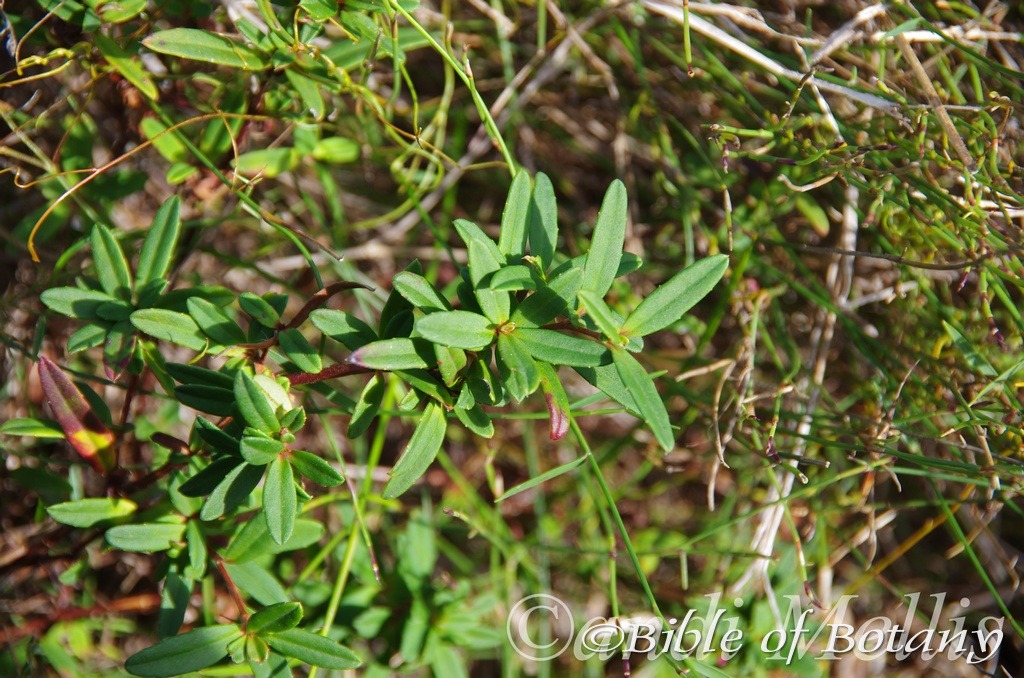
North Yuraygir National Park NSW
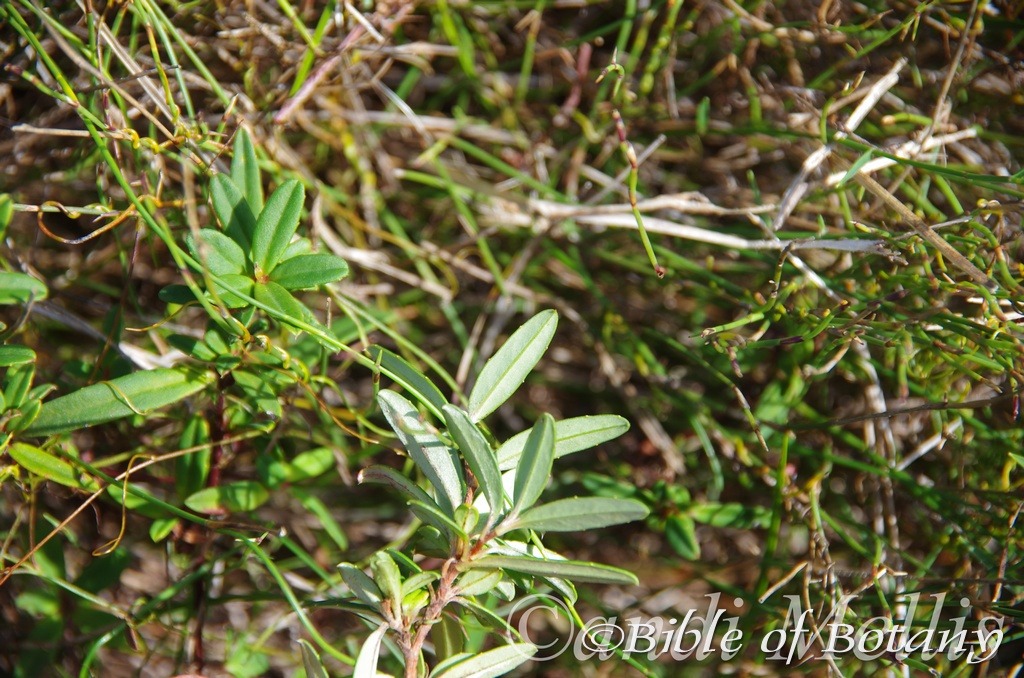
North Yuraygir National Park NSW
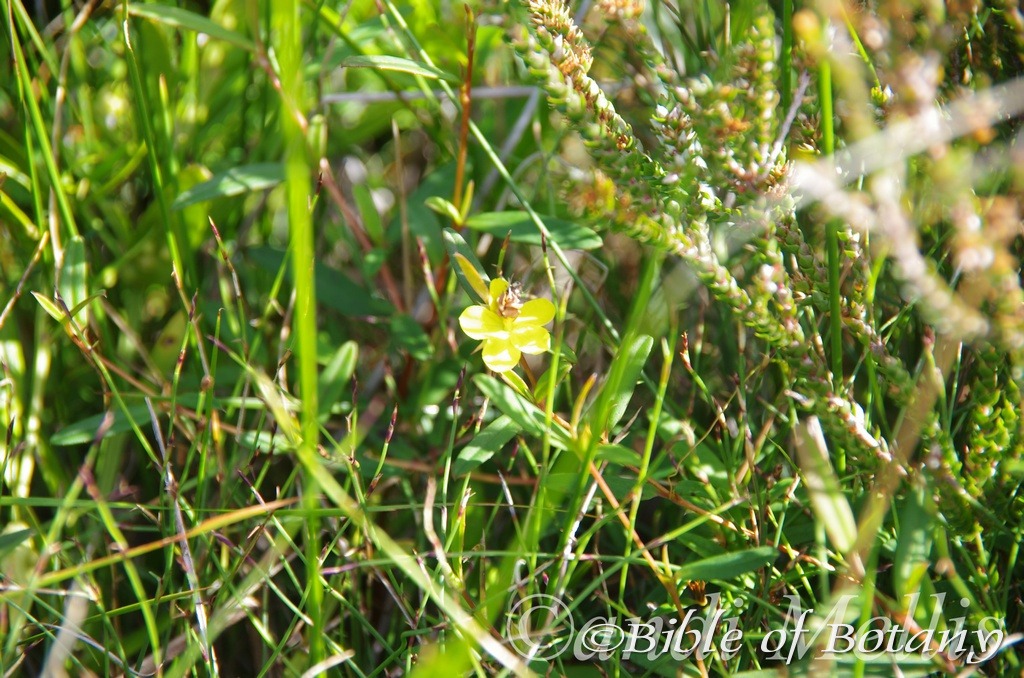
North Yuraygir National Park NSW
Hibbertia salicifolia
Classification
Unranked: Eudicots
Unranked: Core eudicots
Order: Unplaced
Family: Dilleniaceae
Genus: Is named after George Hibbert; 1757-1838, who was a London merchant, patron of botany, an amateur botanist, an advocate of slavery and owned a private Botanic Garden.
Specie: From Salix, which is Latin for the weeping willow and Folium, which is Latin for foliage. It refers to the foliage being similar to that of the weeping willow in the Salix genus.
Sub species:
Common Name:
Distribution:
Hibbertia salicifolia is found in several disjunct populations south from the Mackay coast and the Clinton Lowland swamps in coastal central Queensland to Garrawarra Ridge in coastal New South Wales. There is an isolated population in the Gulf Country of Queensland near Point Danger.
https://avh.ala.org.au/occurrences/search?taxa=Hibbertia+salicifolia#tab_mapView
Habitat Aspects Climate:
Hibbertia salicifolia prefers full sun to dappled shade. It grows in swamps and wet or moist coastal wallums. The altitude ranges from 2 meters ASL to 400 meters ASL.
The temperatures range from 1 degree in August to 42 degrees in January.
The rainfalls range from lows of 500mm to an average of 1705mm annually.
Soil Requirements:
Hibbertia salicifolia prefers deep wet sands to fatty sandy loams. The soils are usually derived from decomposed sandstones, alluvial deposits or accumulated peaty beach sands. The soils pH varies from 5.5pH through to a 7pH. It tolerates seasonal waterlogged soils and seasonal high water tables. Non saline soils to very saline soils are tolerated as are salt laden winds.
Height & Spread:
Wild Plants: 0.2m to 0.5m by 0.3m to 0.5m.
Characteristics:
Hibbertia salicifolia’s stems are reddish-brown and glabrous. The smaller stems near the terminals are pale greenish-yellow pendant and often rely on other shrubs for support or are decumbent. The terminal stems are sparsely to moderately covered in white pannate hairs.
Hibbertia salicifolia’s narrow linear to oblong leaves are clustered and semi fleshy. The leaves vary in length within the cluster and measure 15mm to 50mm in length by 2mm to 12mm in width. The bases taper to the petioles while the apexes are obtuse with a mucronate tip. The concolourous laminas are deep blue-green to deep grass-green and glabrous to sparsely covered in white pannate hairs on the upper lamina while the lower lamina is moderately to densely covered in white villous hairs. The upper lamina recurves slightly upwards from the main vein to the margins while the margins are entire with 2 to 6 very fine small teeth with 2 to 6 large irregular brownish glands spread. The mid vein is prominent on the lower lamina and is visible from the upper lamina. The petioles measure 1mm to 2mm in length.
The inflorescences of Hibbertia salicifolia are born singularly or in small clusters from the leaf axils. The flowers measure 12mm to 15mm in diameter. The 5 narrow lanceolate to broad lanceolate sepals are glabrous externally and internally. The sepals measure 4mm to 9mm in length by 1.5mm to 3mm in width. The 5 ovate to broad triangular, bright yellow petals have a broad obtuse to truncate apex with or without a small mucronate tip. The petals measure 7mm to 9mm in length by 4mm to 5mm in width. The flowers are sessile.
The 4 to 6 fused yellow filaments surround the 2 compartment carpels and measure 0.8mm to 1mm in length while the bright yellow anthers measure 1.5mm to 2mm in length. The carpels are glabrous or sparsely covered in white hirsute hairs and measure 1mm to 2mm in length by 1mm to 2mm in diameter. The styles are pale lemon-green and measure 3mm to 4mm in length. The flowers appear from September to late March or at times early April.
Hibbertia salicifolia’s are globose capsules or berries surrounded by the persistent sepals. The green berries turn pale grey-brown when ripe. The 2 to 4 deep brown black globose seeds measure 1.5mm to 2mm in diameter.
Wildlife:
Hibbertia salicifolia’s wildlife is unknown to the author though small black beetles and native bees have been observed on the flowers and these were covered in yellow pollen.
Cultivation:
Hibbertia salicifolia is a very beautiful small native shrub or decumbent ground cover which is suitable for small gardens to the largest garden. It is an excellent colourful addition for sub tropical or semi-arid zones. As garden subjects it will grow to 0.4 meter to 0.6 meters in height by 0.8 meters to 1 meter in diameter.
It is fast growing, drought tolerant and are cold tolerant to temperatures at least as low as 2 degrees once established.
It is most suitable for use around swimming pools, sunny courtyards, besides pathways, rockeries, along sandy banks, along drive ways and adjacent to natural bush gardens.
If it is placed around a pool then I would place them into the center not at the ends and plant 2 or 3 in a straight row for a very formal look or use curves for the natural look. Here the choice of companion plants to use either side is limited only by size of the area to be landscaped. Leaf size or flower colour is limited by your imagination. The only limitation would be not to use other yellow flowering plants.
It is great adjacent to small areas of bush close to paths or the house so their deep yellow flowers can be viewed regularly. It is also suited for planting in small rockeries as a fill in plant. Here it can be planted in small groups of 3 to 5 or as a standalone plant to create a harsher more barren look with other arid plants. If it is surrounded by shorter plants with fine foliages and red flowers it will dominate at the center giving height and strength to the bed especially when it is in flower.
When you design a heath garden which Hibbertia salicifolia is well suited to don’t use contours to display the plants as heath lands are almost always flat or have a slight rise. Taller heaths are better placed on the downhill side of a path so that you can still look over the tallest plants. This gives an extra dimension which many people forget about when designing heath gardens. Plants must be planted close together and be short so you can see over the tallest ones with the exception of one or two plants at the most. These will be feature plants. The idea is to achieve a feeling of expansive flatness. This can be achieved with using the Hibbertia salicifolia‘s brilliant yellow flowers. Mix them with other smaller shrubs so none of them dominate the scene but blend in to give a mosaic of foliage colours that you oversee. Mix them with other smaller shrubs so none of them dominate the scene but blend in to give a mosaic of foliage colours that you oversee. Here I immediately think of Actinotis helianthi, Chloanthes parviflora, Leschenaultia biloba, Leschenaultia formosa or any of the Dampers species.
Ensure that the whole plant or at least most of it is on display from most sections of the garden as the flowers are a real bonus.
Whether it is in flower or not these plants will catch your attention. Mass plantings are best achieved by planting them at 0.6 meter centers for a dense covering or at 1 meter centers for a barren rocky or alpines look.
Propagation:
Seeds: Hibbertia salicifolia seeds can be sown directly onto a seed raising mix. Cover them with 2mm of fine sand and keep moist not wet. Place the tray in a warm sunny position or beneath 30mm shade cloth.
When the seedlings are 40mm to 60mm tall, prick them out and plant them into 50mm native tubes using a good organic mix.
Once the seedlings reach 150mm to 200mm in height they can be planted out into their permanent position.
Cuttings: Use 40mm to 60mm long half ripened material when growing from cuttings from the present season’s growth. Take them in mid-autumn or early spring. Remove half the leaves from the bottom section being careful not to tear the bark. Also remove any flower buds that maybe forming. Take a 10mm slice off the bark from the bottom of the cutting on one side. Using an appropriate rooting hormone, dip the cutting in and place it in a moist sterile seed raising mix.
Place the trays beneath 30mm shade and keep the trays warm. Bottom heat is beneficial when striking the cuttings. Ideally temperatures should be maintained at between 20 to 24 degrees.
When the cuttings have obviously struck and have developed good roots treat them as for seedlings.
Fertilize using seaweed, fish emulsion or organic chicken pellets soaked in water on an alternate basis. Fertilize every two months until the plants are established then twice annually in early September or March to maintain health, vitality and better flowering.
Further Comments from Readers:
Hi reader, it seems you use The Bible of Botany a lot. That’s great as we have great pleasure in bringing it to you! It’s a little awkward for us to ask, but our first aim is to purchase land approximately 1,600 hectares to link several parcels of N.P. into one at The Pinnacles NSW Australia, but we need your help. We’re not salespeople. We’re amateur botanists who have dedicated over 30 years to saving the environment in a practical way. We depend on donations to reach our goal. If you donate just $5, the price of your coffee this Sunday, We can help to keep the planet alive in a real way and continue to bring you regular updates and features on Australian plants all in one Botanical Bible. Any support is greatly appreciated. Thank you.
In the spirit of reconciliation we acknowledge the Bundjalung, Gumbaynggirr and Yaegl and all aboriginal nations throughout Australia and their connections to land, sea and community. We pay our respect to their Elders past, present and future for the pleasures we have gained.
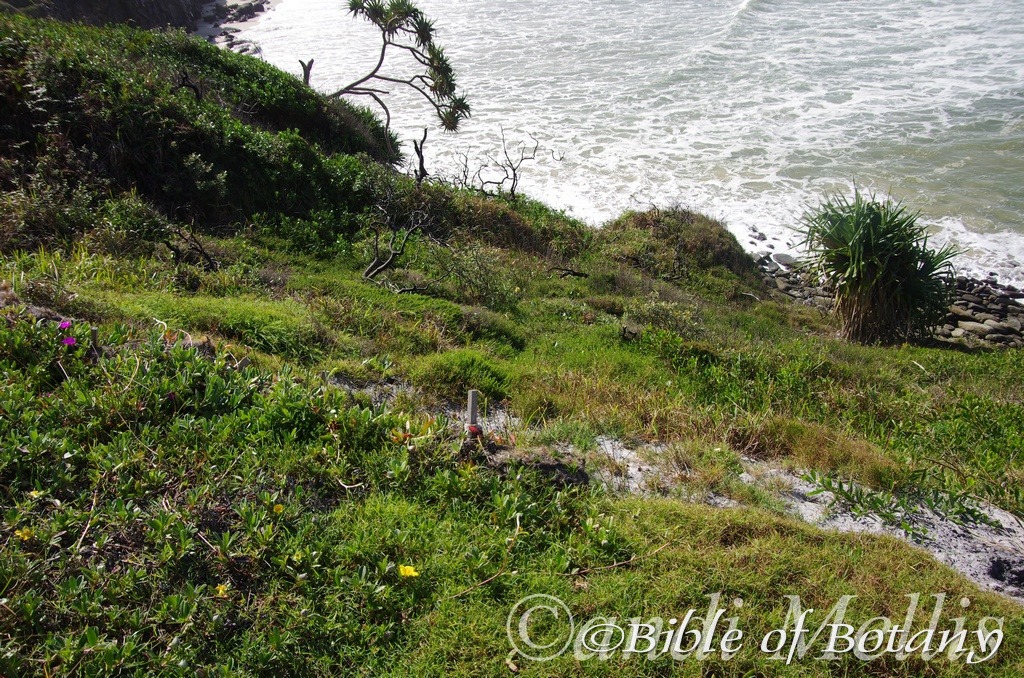
North Yuraygir National Park NSW
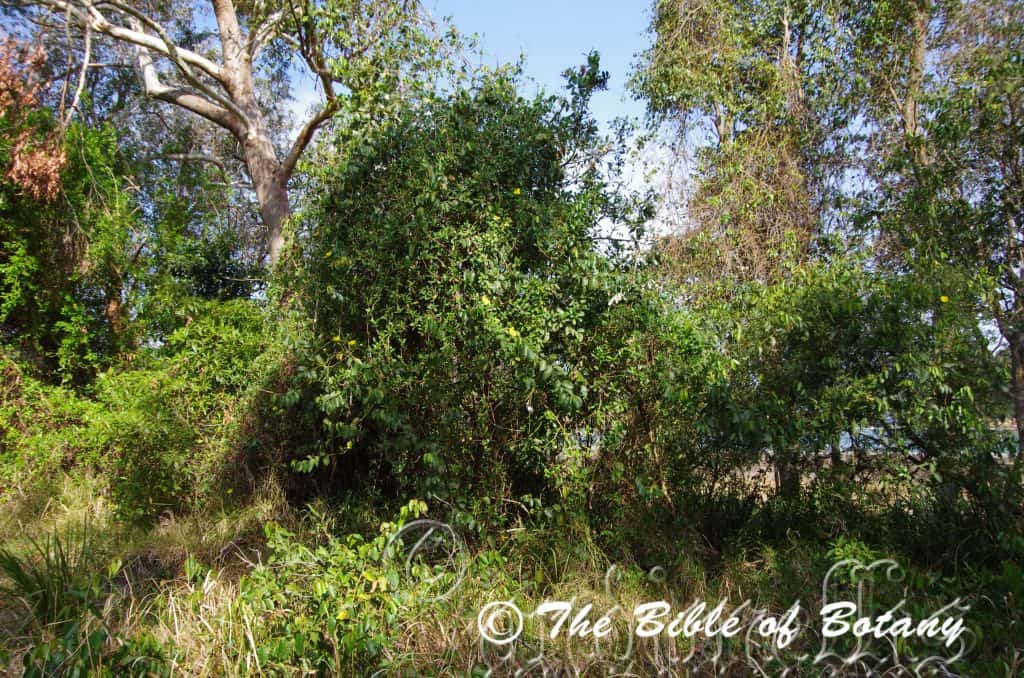
Camden Haven NSW
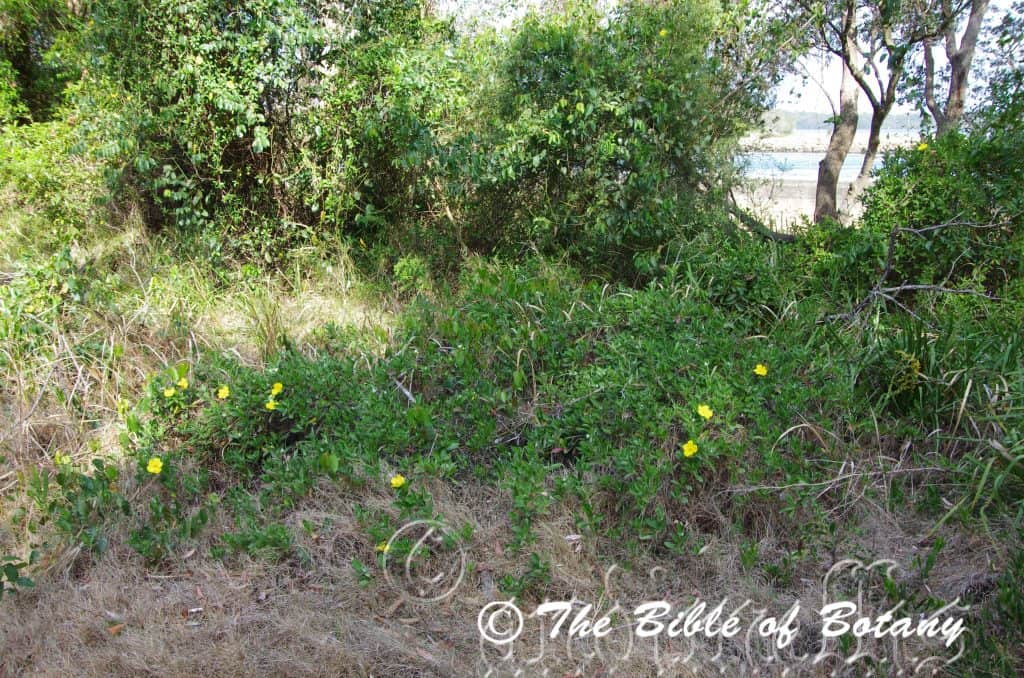
Camden Haven NSW
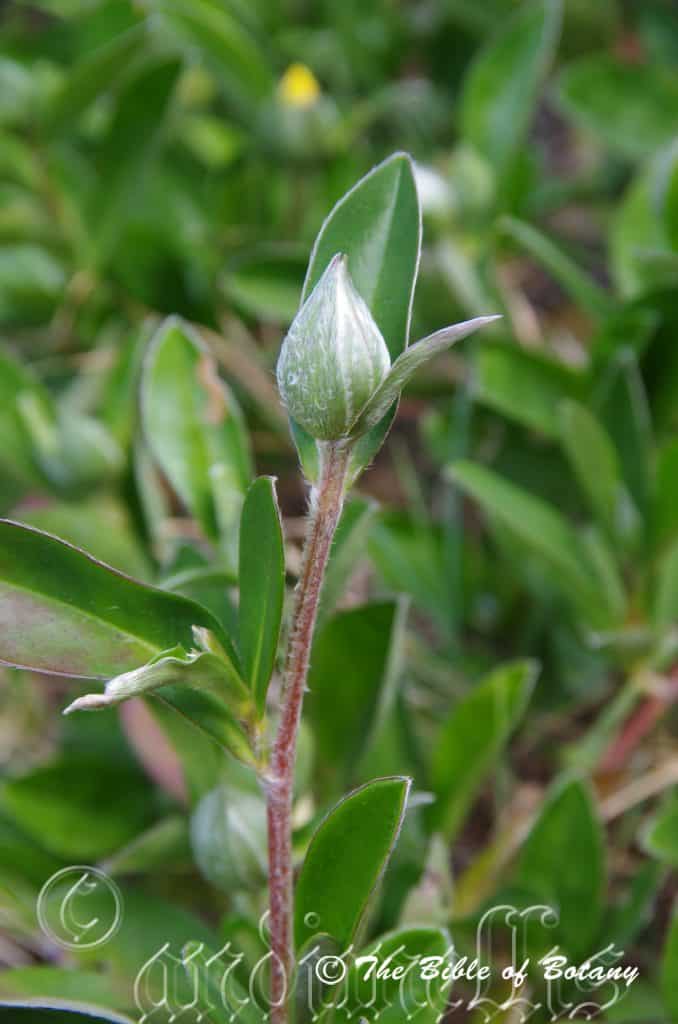
Camden Haven NSW
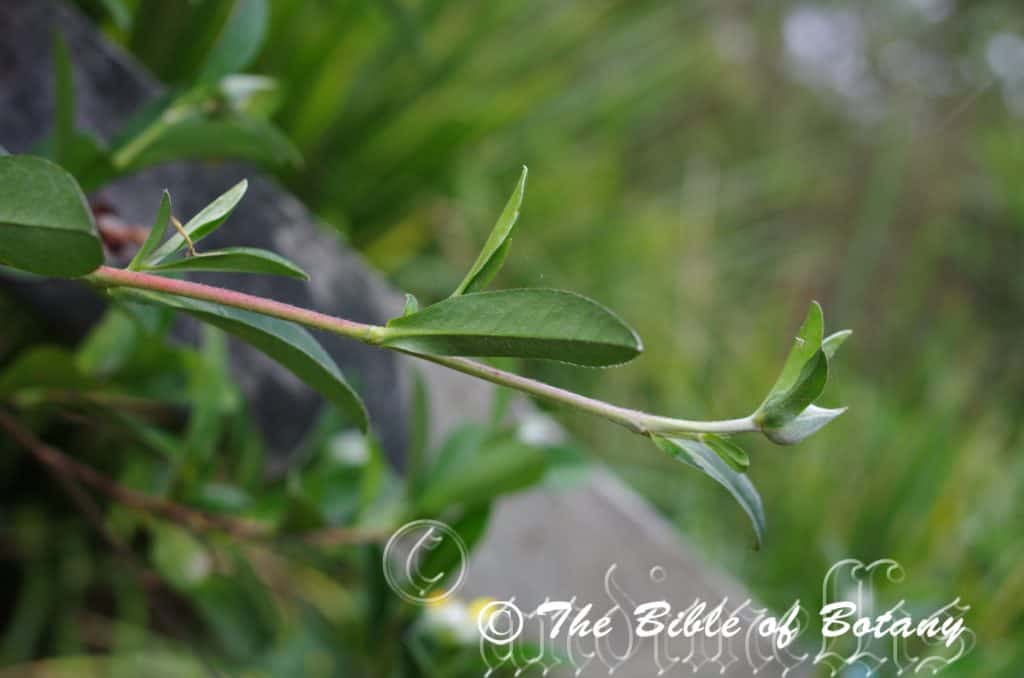
Brookside Qld.
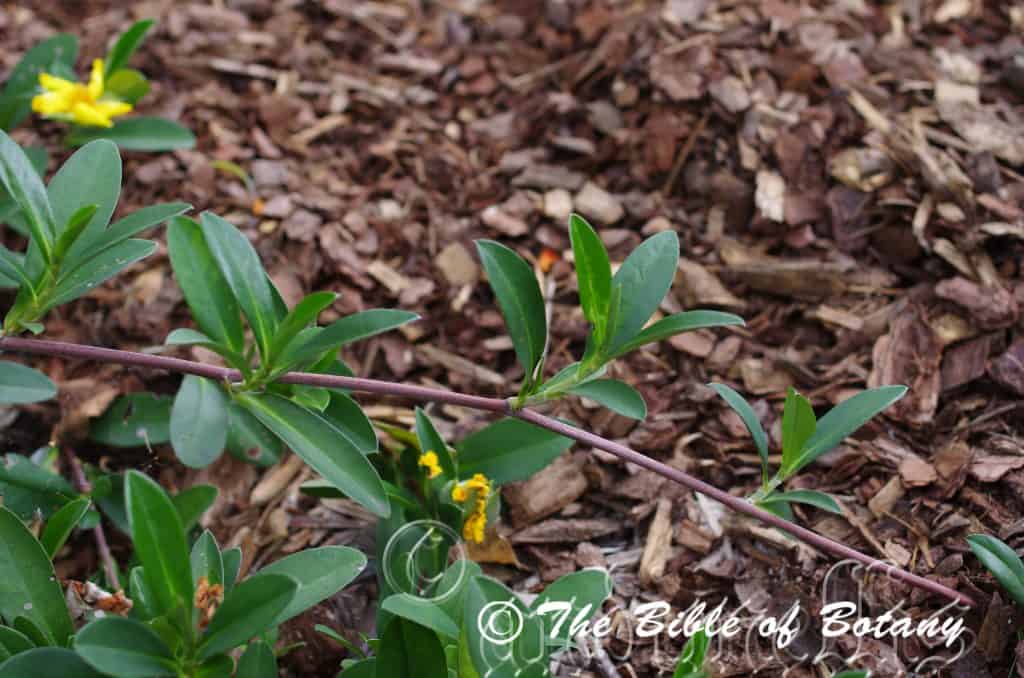
Mitchelton Park Qld.
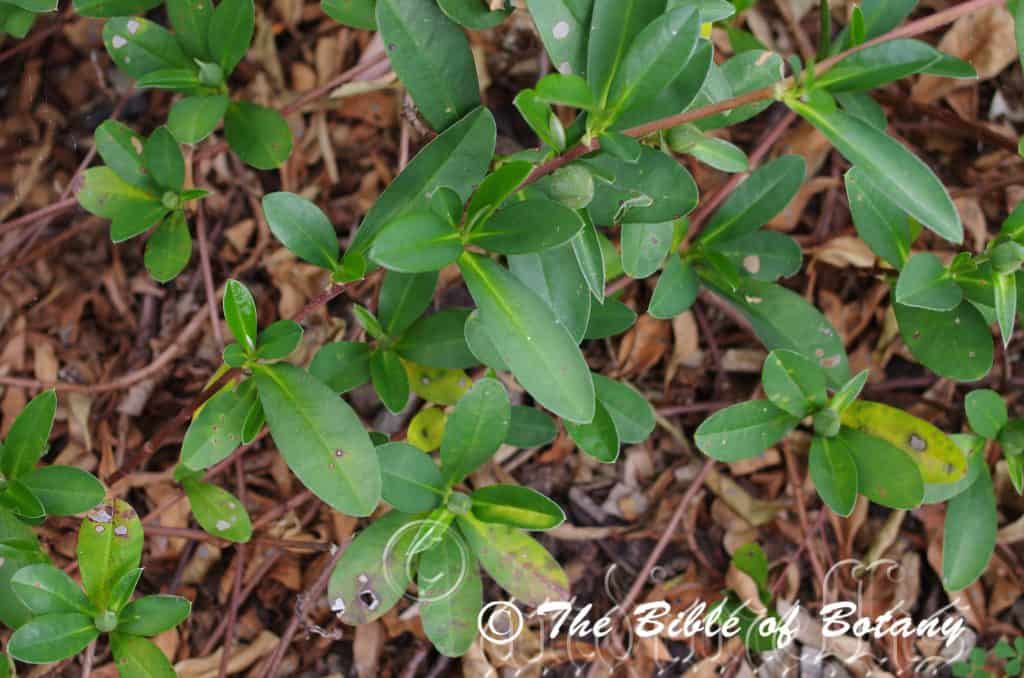
Mitchelton Park Qld
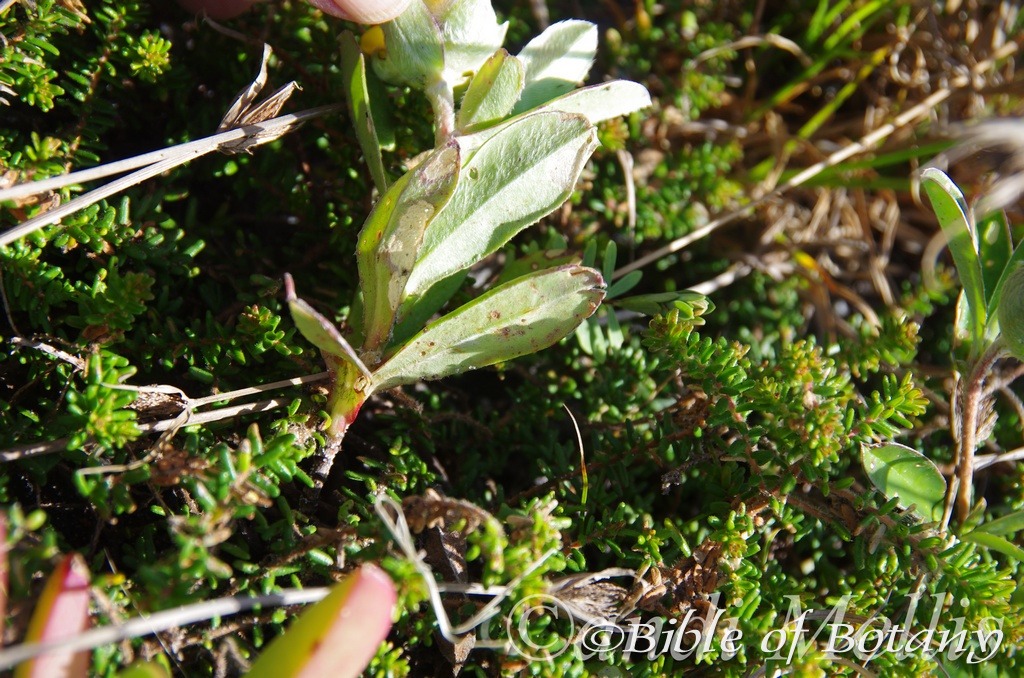
North Yuraygir National Park NSW
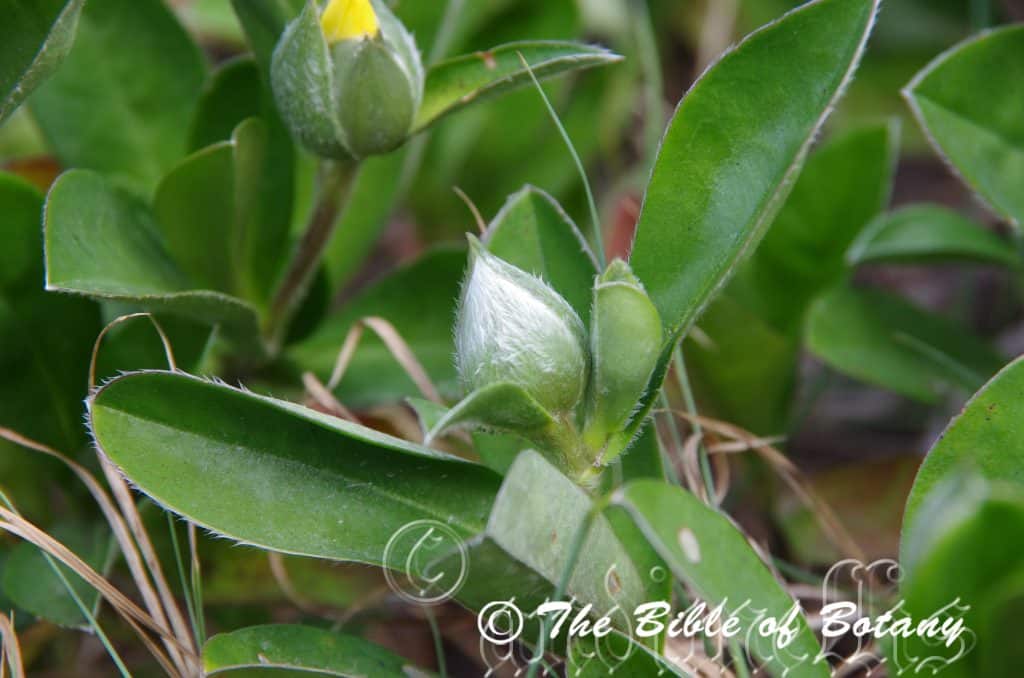
Camden Haven NSW
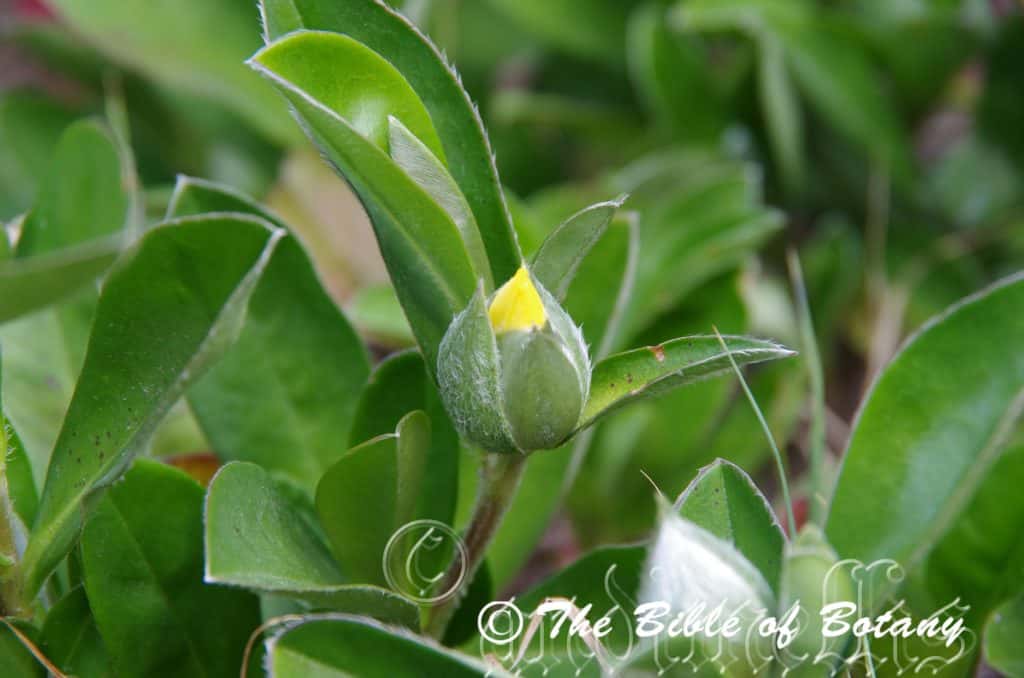
Camden Haven NSW
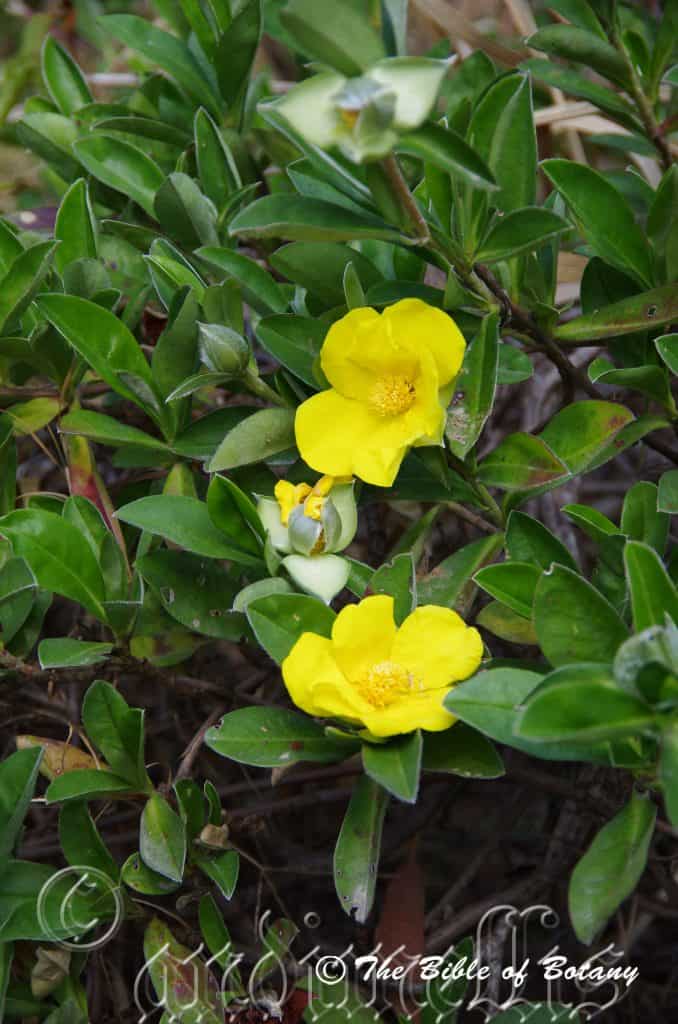
Camden Haven NSW
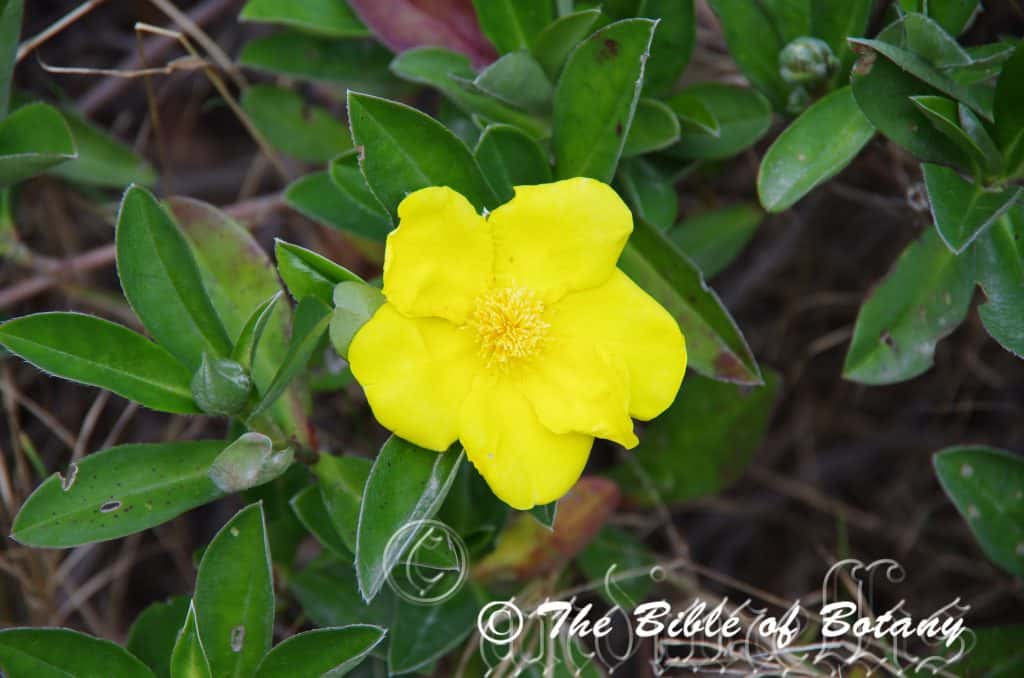
North Yuraygir National Park NSW
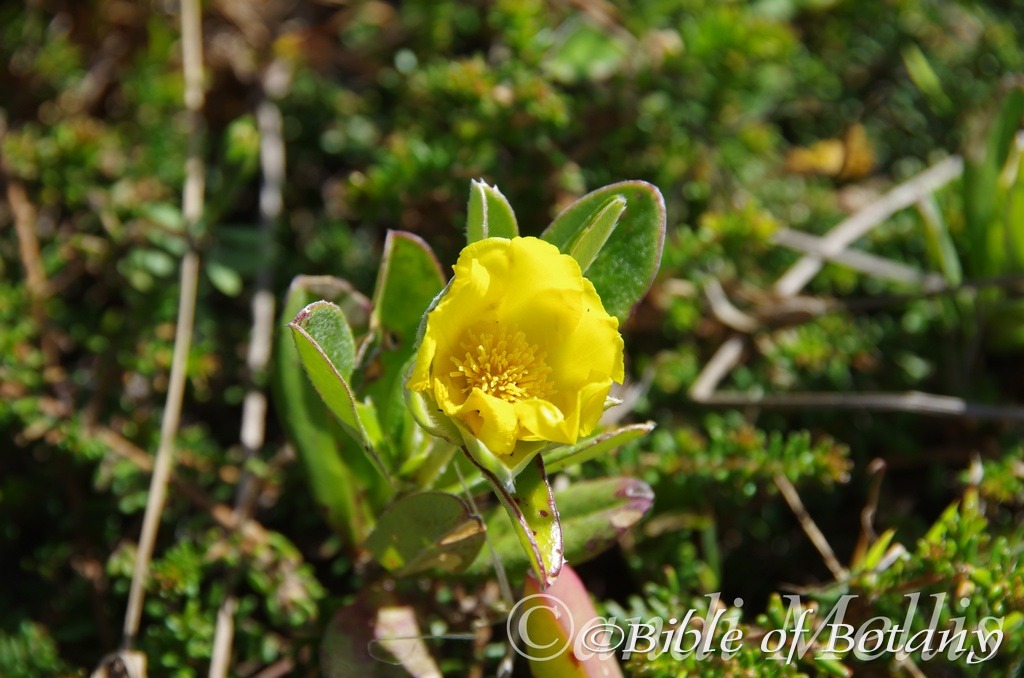
Mitchelton Park Qld
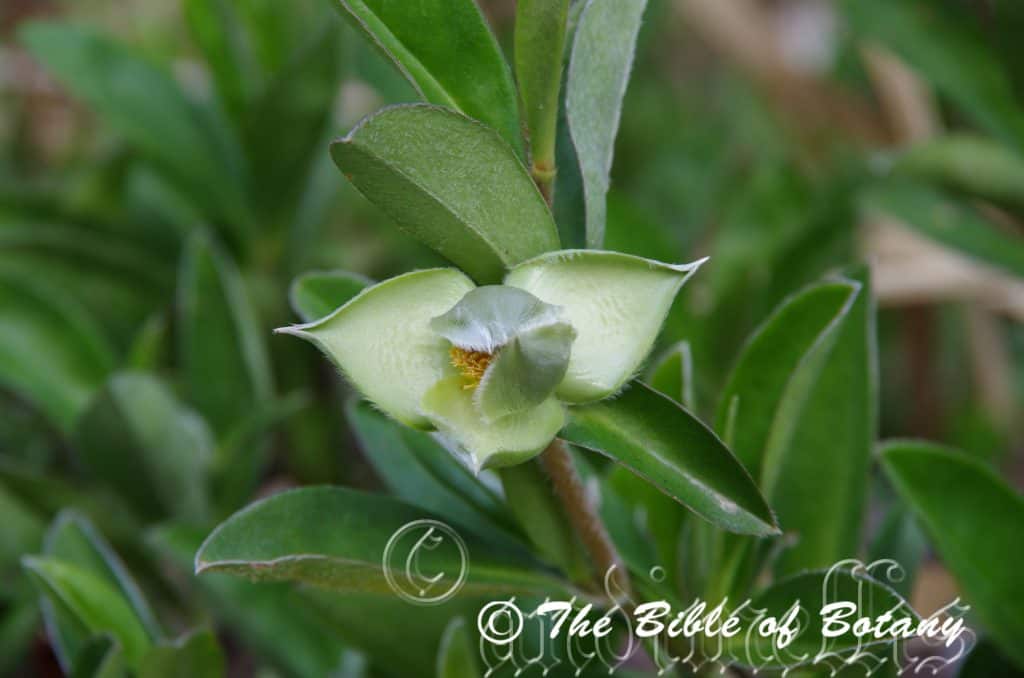
Camden Haven NSW
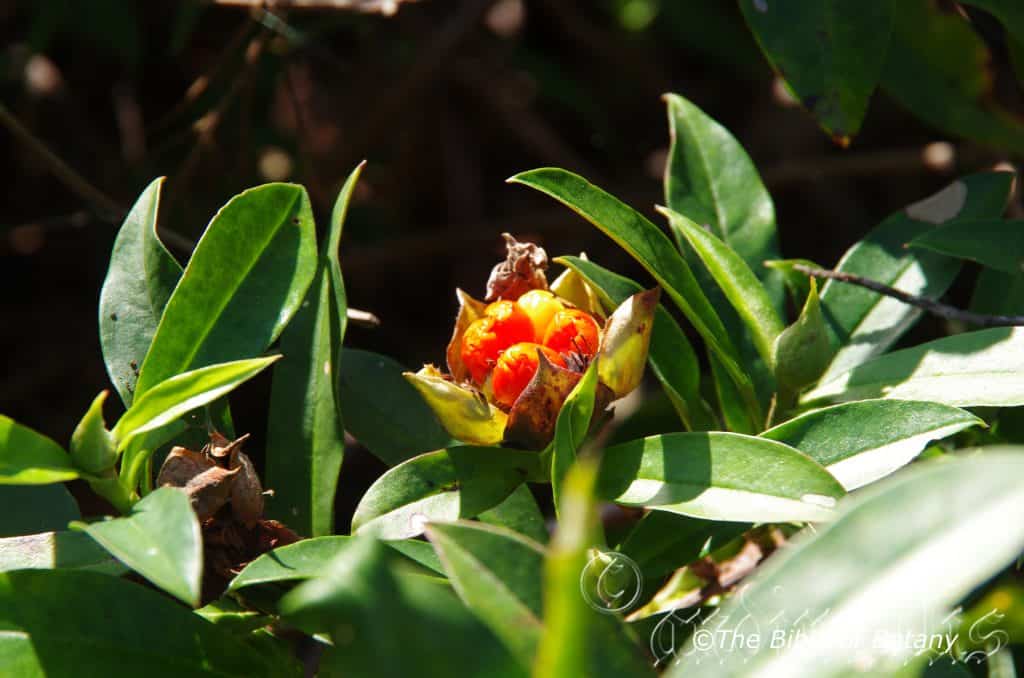
South Port Qld.
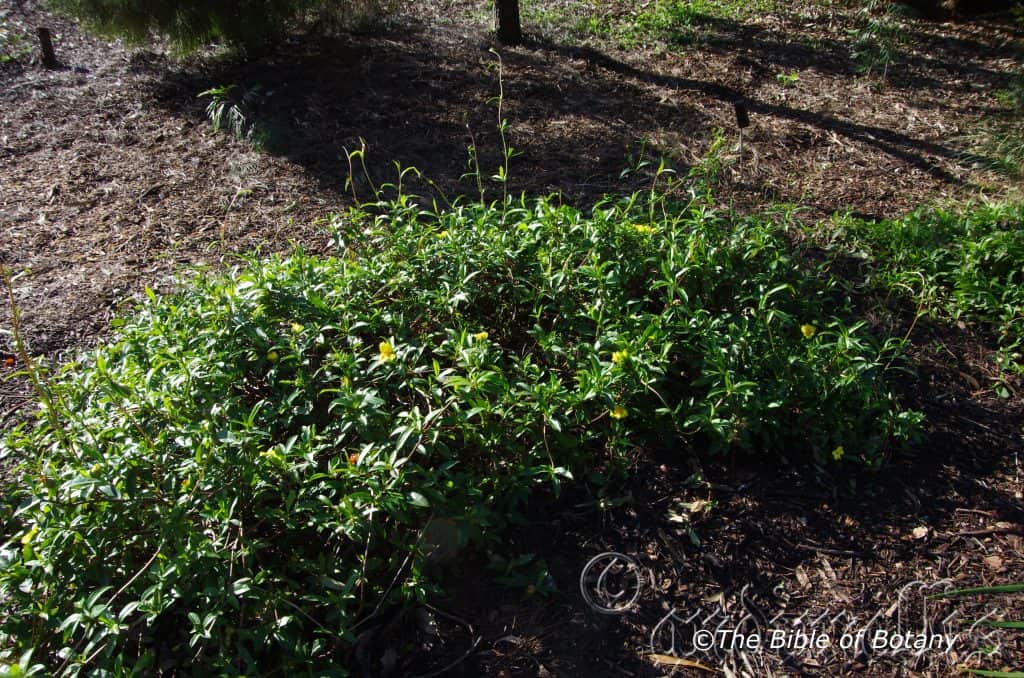
South Port Qld.
Hibbertia scandens
Classification
Unranked: Eudicots
Unranked: Core eudicots
Order: Unplaced
Family: Dilleniaceae
Genus: Is named after George Hibbert; 1757-1838, who was a London merchant, patron of botany, an amateur botanist, an advocate of slavery and owned a private Botanic Garden.
Specie: From Scandere, which is Latin for the people of Scandere. It refers to people, which are very good climbers from a very mountainous/hilly district.
Sub species:
Common Name: Snake Vine, Climbing Guinea Flower or Large Guinea Flower.
Distribution:
Hibbertia scandens is found south from the Iron Range National Park in north eastern Queensland to Narooma in southern coastal New South Wales. It is found the coastal sides of the Great Dividing Range.
https://avh.ala.org.au/occurrences/search?taxa=Hibbertia+scandens#tab_mapView
Habitat Aspects Climate:
Hibbertia scandens prefers full sun to dappled shade. It grows in riparian zones, adjacent to swamps and wallums near lagoons, open dry sclerophyll forests, closed forests, adjacent to both dry and wet rainforests, behind the frontal dunes, along estuarial creeks, streams and rivers or coastal headlands. This is a small creeper with large deep yellow flowers. The altitude ranges from 3 meters ASL to 650 meters ASL.
The temperatures range from minus 2 degrees in July to 40 degrees in January.
The rainfall ranges from lows of 750mm to an average of 3000mm annually.
Soil Requirements:
Hibbertia scandens prefers better quality sands, sandy loams to medium clays. The soils are usually derived from decomposed sandstones, shales, granites, brown basalts, black basalts, metamorphic rocks and alluvial deposits or accumulated peaty beach sands. The soils pH varies from 4.5pH through to a 7.5pH. It does not tolerate waterlogged soils however annual inundations or periodic rises in water tables are tolerated. Non saline soils to very saline soils are tolerated as are salt laden winds.
Height & Spread:
Wild Plants: 0.4m to 2m by 2m to 4m.
Characteristics:
Hibbertia scandens’ stems are pale grey-brown to a pale grey-fawn, woody somewhat scabrous to flaky. The young tendrils are pale green to a pale green with a pink or purple tinge. It is sparsely covered to densely covered in white canescent hairs.
Hibbertia scandens’s alternate leaves are oblanceolate or obovate while plants growing by the seaside on frontal or back dunes leaves are oblanceolate to spathulate. They measure 30mm to 80mm in length by 15mm to 25mm in width. The base is cuneate and sessile to the point of being semi clasping to clasping while the apex is acute to obtuse. The discolourous laminas are semi glossy, grass-green to deep sea green and glabrous or very sparsely covered in white canescent hairs on the upper lamina while the lower lamina is white and densely covered in white canescent hairs. Plants growing on frontal dunes and back dunes are covered in canescent hairs on the upper lamina and are densely covered in white canescent hairs on the lower lamina. The margins are entire. They curve slightly upwards from the mid vein. The mid vein veins are prominent on the lower lamina and are visible as a groove on the upper lamina.
The inflorescences of Hibbertia scandens are born from the leaf axis and measure 45mm to 66mm in diameter. The glabrous pedicels measure 2mm to 4mm in length. The pale creamy green oblong dimorphic sepals have a broadly acute apex. The 5 sepals are sparsely to densely covered in silky, white villous hairs externally and are glabrous internally. The sepals measure 22mm to 25mm in length while the inner sepals measure 18mm to 20mm in length. The 5 bright yellow petals are divaricate, are slightly recurved near the margins which are undulating. It is ovate or broadly spathulate and are contorted at the base while the apex is broadly obtuse with and deeply emarginate. The petals measure 22mm to 30mm in length by 20mm to 28mm in width.
The 30 to 40 yellow stamens measure 4 to 7mm in length and surround the 3 to 7 carpels. The carpels of inland plants are very sparsely to moderately covered white villous. Seaside plants have 6 or 7 carpels which are densely covered in silky, white villous hairs. The flowers appear throughout the year with a peak flowering period from September to late January.
Hibbertia scandens’ are globose capsules or berries surrounded by the persistent sepals. The calyxes are persistent on the ripe fruits. The berries measure 25mm to 35mm in length by 28mm to 40mm in diameter. The green berries turn orange then orange brown on dehiscing. There are 4 to 7 deep red-brown to nearly black oval granulated seeds that measure 2.5mm to 4mm in diameter. The seeds are completely surrounded by an orange fimbriate aril.
Wildlife:
Hibbertia scandens’ wildlife is unknown to the author though small black beetles and native bees have been observed on the flowers and these were covered in yellow pollen. An unknown butterfly larvae have also been observed feeding on the leaves.
Cultivation:
Hibbertia scandens is a very beautiful small native climber which is suitable for small gardens to the largest garden. It is an excellent colourful addition for temperate, subtropical, tropical or semi-arid zones. As a garden subject it will cover from 6 to 9 square meters as a ground cover or it will cover 4 square meters to 8 square meters as a climber on a fence or pergola.
It can be lightly tip pruned to enhance bushiness and better flowering. Hard pruning can be done once the plants are established but some set back will occur in flowering so it is better to trim the plants on a regular or annual basis. It is fast growing, drought tolerant once established however some leaf drop will occur depending on the severity of the drought. It is cold tolerant to temperatures at least as low as minus 3 degrees.
It is most suitable for use around swimming pools, sunny courtyards, besides pathways, rockeries, along sandy banks or along drive-ways.
If it is placed around a pool then I would bring it into the center not at the ends and plant 2 or 3 in a straight row for a very formal look or use curves and scatter plant them for an informal natural look. Here the choice of companion plants to use either side is limited only by size of the area to be landscaped and the size of the other plants as they should be no more than 1 meter in height. Leaf size or flower colour is limited by your imagination however I would be not to use other yellow flowering plants.
It is best used adjacent to small areas of bush close to paths or the house so their deep yellow flowers can be viewed regularly. It is great in medium size rockeries as a fill in plant. Here it can be planted in small groups of 2 or 3 or as a standalone plant to create a harsh barren look with other arid plants. If it is partially surrounded by shorter plants with fine foliages and red flowers they will dominate at the center giving an open look to the bed especially when it is in flower.
It is an excellent plant for concealing unwanted stumps, chicken roosts, fences or as a screen plant surrounding small areas like pool fences and smaller pergolas.
Mass planted as a ground cover on steep banks along cliff faces and other inaccessible points brings it into a class of its own. Mass plant Hibbertia scandens, along a retaining wall with red flowering plants behind or at the bottom of the wall will give a great contrast when in full bloom though the smaller number of large bright yellow flowers on Hibbertia scandens will contrast the red flowers on Grevillea species.
Propagation:
Seeds: Hibertia scandens seeds can be sown directly into a seed raising mix. Cover them with 5mm of fine sand and keep moist not wet. Place the tray in a warm sunny position. When the seedlings are 20mm to 30mm tall, prick them out and plant them into 50mm native tubes using a good organic mix.
Once the seedlings reach 150mm to 200mm in height they can be planted out into their permanent position.
Seeds can also be spread directly onto freshly raked or disturbed ground.
Cuttings: Use 60mm long half ripened material when growing from cuttings from the present season’s growth. Take them in mid-autumn or early spring. Remove half the leaves from the bottom section being careful not to tear the bark. Also remove any flower buds that maybe forming. Take a 10mm slice off the bark from the bottom of the cutting on one side. Using an appropriate rooting hormone, dip the cutting in and place it in a moist sterile seed raising mix. When the cuttings have obviously struck and have developed good roots treat them as for seedlings.
Fertilize using seaweed, fish emulsion or organic chicken pellets soaked in water on an alternate basis. Fertilize every two months until the plants are established then twice annually in early September or March to maintain health, vitality and better flowering.
Further Comments from Readers:
Following a visit to Andrew’s garden and seeing this plant and Hibbertia diffusa growing as ground covers, I immediately thought they would look great in our garden. – Kylie.
Hi reader, it seems you use The Bible of Botany a lot. That’s great as we have great pleasure in bringing it to you! It’s a little awkward for us to ask, but our first aim is to purchase land approximately 1,600 hectares to link several parcels of N.P. into one at The Pinnacles NSW Australia, but we need your help. We’re not salespeople. We’re amateur botanists who have dedicated over 30 years to saving the environment in a practical way. We depend on donations to reach our goal. If you donate just $5, the price of your coffee this Sunday, We can help to keep the planet alive in a real way and continue to bring you regular updates and features on Australian plants all in one Botanical Bible. Any support is greatly appreciated. Thank you.
In the spirit of reconciliation we acknowledge the Bundjalung, Gumbaynggirr and Yaegl and all aboriginal nations throughout Australia and their connections to land, sea and community. We pay our respect to their Elders past, present and future for the pleasures we have gained.
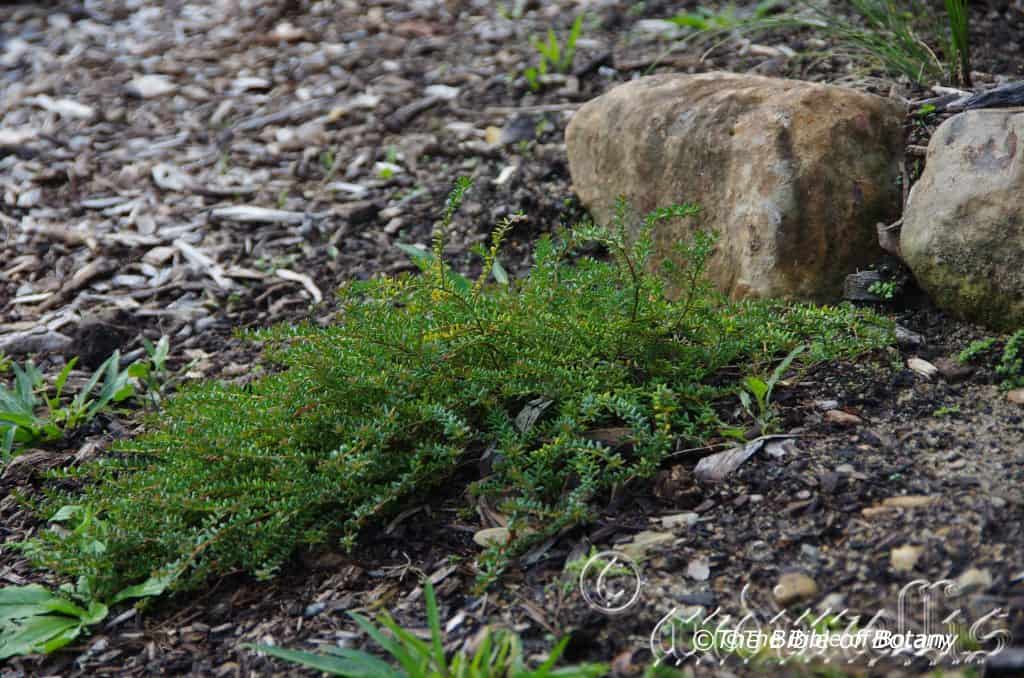
Rosser Gardens Benowa Qld.
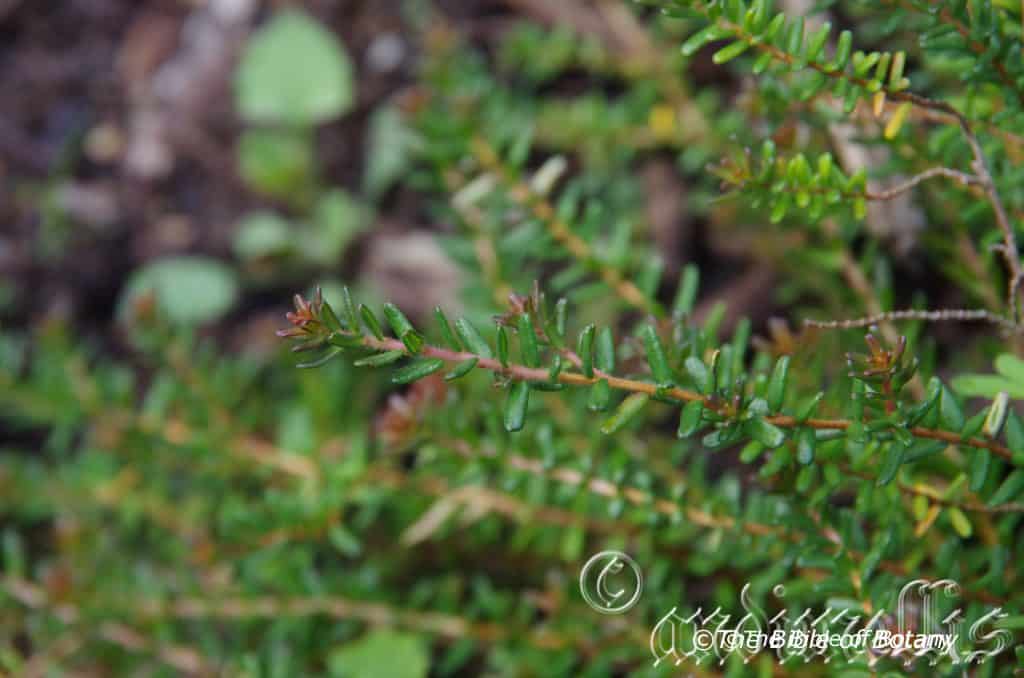
Rosser Gardens Benowa Qld.
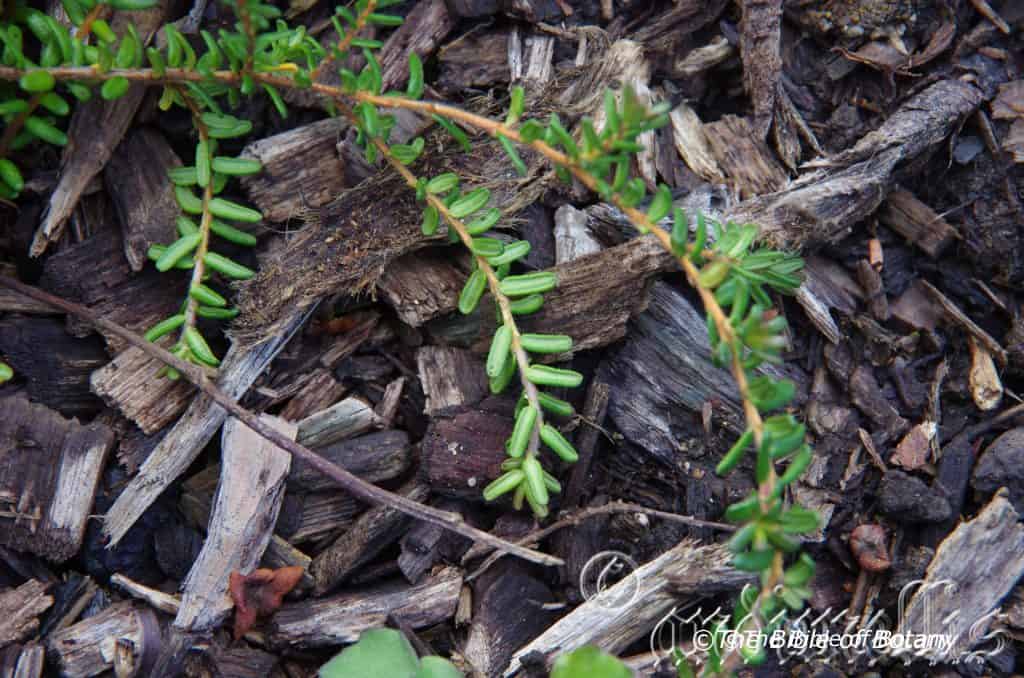
Rosser Gardens Benowa Qld.
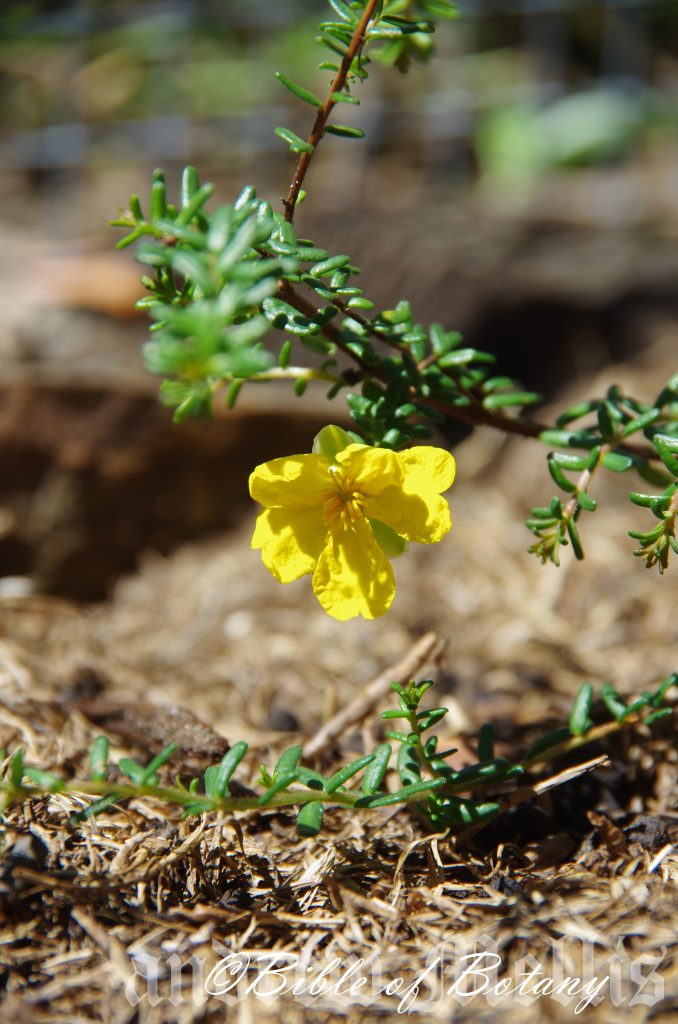
Author’s Garden The Pinnacles NSW
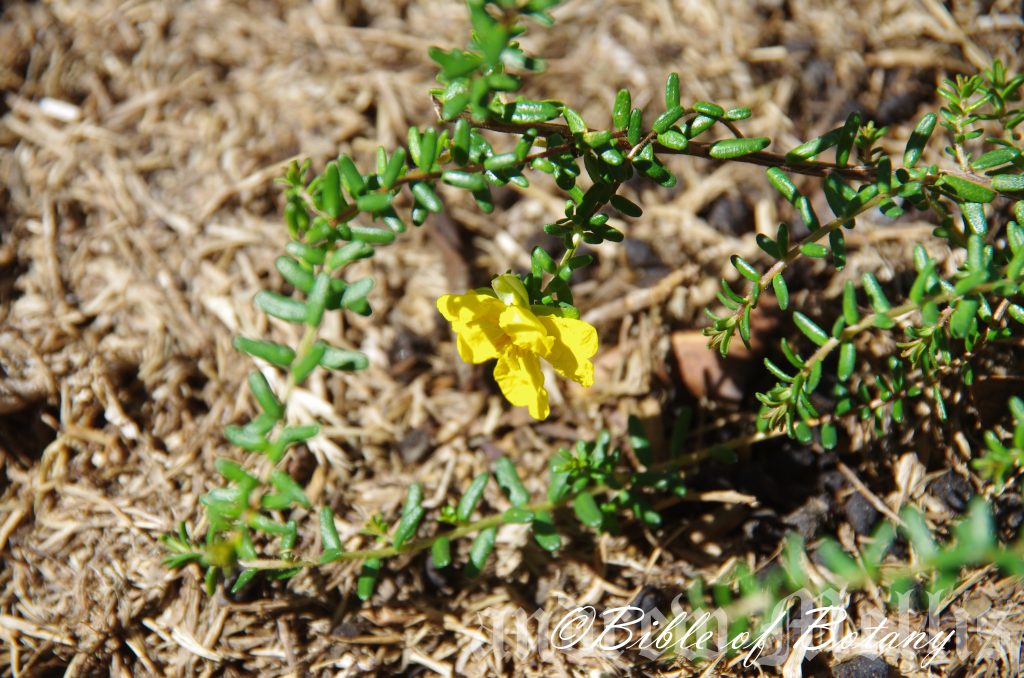
Author’s Garden The Pinnacles NSW
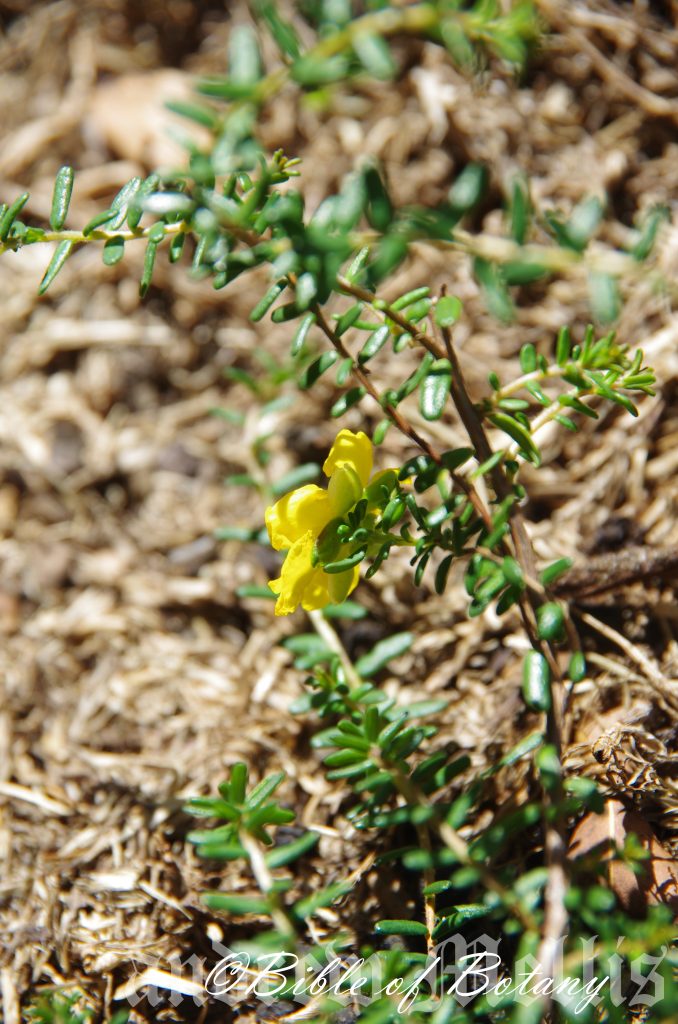
Author’s Garden The Pinnacles NSW
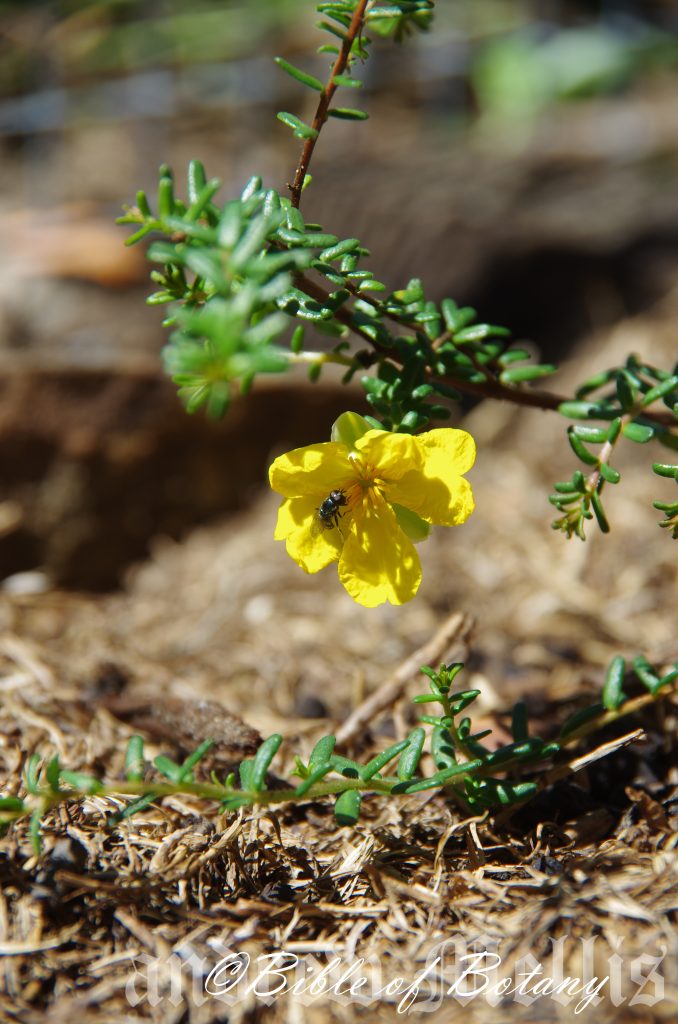
Author’s Garden The Pinnacles NSW
Hibbertia serpyllifolia
Classification
Unranked: Eudicots
Unranked: Core eudicots
Family: Dilleniaceae
Genus: Is named after George Hibbert; 1757-1838, who was a London merchant, patron of botany, an amateur botanist, an advocate of slavery and owned a private Botanic Garden.
Specie: From Serpyll, which is Latin for Thyme and Folium, which is Latin for foliage. It refers to leaves, which resemble the leaves of the Thyme genus.
Sub species:
Common Name: Hairy Guinea Flower.
Distribution:
Hibbertia serpyllifolia is found in several disjunct populations south from Noosa in southern coastal Queensland to the Mueller River in north east Gippsland. It is mainly found on the Western Slopes, on and east of the Great Dividing Range to the coast.
In Tasmania it is mainly found on the eastern half with a population on Clarke Island in bass Straight.
https://avh.ala.org.au/occurrences/search?taxa=Hibbertia+serpyllifolia#tab_mapView
Habitat Aspects Climate:
Hibbertia serpyllifolia prefers full sun to dappled shade. It grows in tall Eucalyptus forests, Eucalyptus woodlands, open woodland heaths or open sclerophyll forests. The altitude ranges from 2 meters ASL to 850 meters ASL.
The temperatures range from minus 3 degree in August to 35 degrees in January.
The rainfalls range from lows of 500mm to an average of 1850mm annually.
Soil Requirements:
Hibbertia serpyllifolia prefers to grow on skeletal sands to fatty sands. The soils are usually derived from decomposed granites, sandstones or accumulated sands. The soils pH varies from 5pH through to a 7pH. It tolerates seasonally waterlogged soils. Non saline soils to moderately saline soils are tolerated as are salt laden winds.
Height & Spread:
Wild Plants: 0.2m to 0.3m by 0.5m to 0.8m.
Characteristics:
Hibbertia serpyllifolia’s glabrous stems are grey and glabrous. The smaller stems are decumbent to prostrate. The stems are rusty pinkish-brown glabrous to moderately covered in white hirsute hairs.
Hibbertia serpyllifolia’s crowded, narrow linear to narrow lanceolate leaves are coriaceous and measure 2mm to 10mm in length by 0.8mm to 1.2mm in width. The bases are rounded to truncate while the apexes are obtuse. The concolourous laminas are deep sea-green, glossy and glabrous to sparsely covered in white hirsute or hirtellous hairs from a tuberculate base. The laminas and margins are strongly revolute from the mid vein. The mid vein is prominent on the lower lamina and is not visible on the upper lamina. The petioles measure 0mm to 0.5mm in length.
The inflorescences of Hibbertia serpyllifolia are born from the terminals or the from the last few leaf axils. The flowers measure 13mm to 15mm in diameter. The sepals are green with reddish-purple apical half and are glabrous externally and internally with white ciliate hairs. The sepals measure 4mm to 5mm in length by 2mm to 2.5mm in width. The 5 bright yellow petals are very broad triangular to triangular-spathulate while the apex is shallowly to deeply emarginated. The petals measure 5mm to 6mm in length by 4mm to 5mm in width.
The 15 to 20 yellow filaments completely or partially surround the 3 compartment carpels and measure 0.6 to 0.8mm in length while the anthers measure 0.3mm to 0.4mm in length. The flowers appear from September to late February.
Hibbertia serpyllifolia’s are globose capsules or berries surrounded by the persistent sepals. The calyxes are persistent on the ripe fruits. The berries measure 5mm to 7mm in length by 5mm to 7mm in diameter. The green berries turn grey when ripe. There are 4 to 7 deep red-brown to nearly black oval granulated seeds that measure 1.5mm to 2mm in diameter.
Confusing Species:
Hibbertia serpyllifolia’s has a decumbent habit and grows to 700mm in diameter. The leaves are clustered.
Hibbertia salicifolia’s has a prostrate habit and grows to 1200mm in diameter. The leaves are scattered along the stems.
Hibbertia vestita has a domed shape and grows to 500mm in diameter. The leaves are scattered along the stems.
Wildlife:
Hibbertia serpyllifola’s wildlife is unknown to the author though small black beetles and native bees have been observed on the flowers and these were covered in yellow pollen.
Cultivation:
Hibbertia serpyllifolia is a very beautiful small native perennial ground cover which is suitable for small gardens to the largest garden. It is an excellent colourful addition for sub tropical, warm temperate to cool temperate gardens. As garden subjects they will grow from 0.2 meter to 0.3 meters in height by 0.8 meters to 1.4 meter in diameter.
It is fast growing, drought tolerant and are cold tolerant to temperatures at least as low as 5 degrees once established.
It is most suitable for use around swimming pools, sunny courtyards, besides pathways, rockeries, along sandy banks, along drive ways and adjacent to natural bush gardens.
If it is placed around a pool then I would place them into the center not at the ends and plant 2 or 3 in a straight row for a very formal look or use curves for the natural look. Here the choice of companion plants to use either side is limited only by size of the area to be landscaped. Leaf size or flower colour is limited by your imagination. The only limitation would be not to use other yellow flowering plants.
It is great adjacent to small areas of bush close to paths or the house so their deep yellow flowers can be viewed regularly. It is also suited for planting in small rockeries as a fill in plant. Here they can be planted in small groups of 3 to 5 or as a standalone plant to create a harsher more barren look with other arid plants. If it is surrounded by shorter plants with fine foliages and red flowers they it dominate at the center giving height and strength to the bed especially when it is in flower.
When you design a heath garden which Hibbertia riparia is well suited to don’t use contours to display the plants as heath lands are almost always flat or have a slight rise. Taller heaths are better placed on the downhill side of a path so that you can still look over the tallest plants. This gives an extra dimension which many people forget about when designing heath gardens. Plants must be planted close together and be short so you can see over the tallest ones with the exception of one or two plants at the most. These will be feature plants. The idea is to achieve a feeling of expansive flatness. This can be achieved with using the Hibbertia riparia’s brilliant yellow flowers. Mix them with other smaller shrubs so none of them dominate the scene but blend in to give a mosaic of foliage colours that you oversee. Mix them with other smaller shrubs so none of them dominate the scene but blend in to give a mosaic of foliage colours that you oversee. Here I immediately think of Actinotis helianthi, Chloanthes parviflora, Leschenaultia biloba, Leschenaultia formosa and several of the Dampers specie.
Ensure that the whole plant or at least most of it is on display from most sections of the garden as the flowers are a real bonus.
Whether it is in flower or not these plants will catch your attention. Mass plantings are best achieved by planting them at 0.6 meter centers for a dense covering or at 1 meter centers for a barren rocky or alpines look.
Propagation:
Seeds: Hibbertia serpyllifolia seeds can be sown directly onto a seed raising mix. Cover them with 2mm of fine sand and keep moist not wet. Place the tray in a warm sunny position or beneath 30mm shade cloth.
When the seedlings are 40mm to 60mm tall, prick them out and plant them into 50mm native tubes using a good organic mix.
Once the seedlings reach 150mm to 200mm in height they can be planted out into their permanent position.
Cuttings: Use 70mm to 100mm long ripened material when growing from cuttings from the present season’s growth that have at least 2 pairs of nodes. Take them in the warmer months of the year. Remove half the leaves from the bottom section being careful not to tear the bark. Take a 10mm slice off the bark from the bottom of the cutting on one side.
1 Prepare the cutting mix by adding one third sharp clean river sand, one third peat and one third perlite. These ingredients are sterilize,
2 Select good material from non diseased plants,
3 Select semi green stems for cuttings. Look for a stem with two or three nodes,
4 Place the cutting on a flat, hard surface, and make a clean cut down one side of the cutting at the base for 10mm with a sharp sterile knife or razor blade. – This scarification of the node will increase the chances of roots emerging from this spot. Now remove all but one or two the leaves, leaving the apex leaves in tact. If the leaves are very large in proportion to the stem, cut off the apical halves.
5 Fill a saucer with water, and place a little medium strength rooting hormone into another container like a milk bottle top. Dip the node end of the cutting into the water and then into the rooting hormone. Tap off any excess hormone,
6 Use a small dipple stick or old pencil to poke a hole into the soilless potting mix. Ensure the hole is slightly larger than the stem diameter and be careful not to wipe the rooting hormone off the cuttings base, place the cuttings in a pattern ensuring the cuttings are not touching each other,
7 I like to place the pots in Plastic bags to help maintain temperature and moisture. Place in a semi shaded place like under 50mm shade cloth.
8 When the cuttings have struck, open the bag to allow air circulation for a few days to a week,
9 Once hardened off remove the cuttings from the bag and allow to further hardening for a few more days,
10 Transplant into a good potting mix to grow on.
Fertilize using seaweed, fish emulsion or organic chicken pellets soaked in water on an alternate basis. Fertilize every two months until the plants are established then twice annually in early September or March to maintain health, vitality and better flowering.
Further Comments from Readers:
Hi reader, it seems you use The Bible of Botany a lot. That’s great as we have great pleasure in bringing it to you! It’s a little awkward for us to ask, but our first aim is to purchase land approximately 1,600 hectares to link several parcels of N.P. into one at The Pinnacles NSW Australia, but we need your help. We’re not salespeople. We’re amateur botanists who have dedicated over 30 years to saving the environment in a practical way. We depend on donations to reach our goal. If you donate just $5, the price of your coffee this Sunday, We can help to keep the planet alive in a real way and continue to bring you regular updates and features on Australian plants all in one Botanical Bible. Any support is greatly appreciated. Thank you.
In the spirit of reconciliation we acknowledge the Bundjalung, Gumbaynggirr and Yaegl and all aboriginal nations throughout Australia and their connections to land, sea and community. We pay our respect to their Elders past, present and future for the pleasures we have gained.
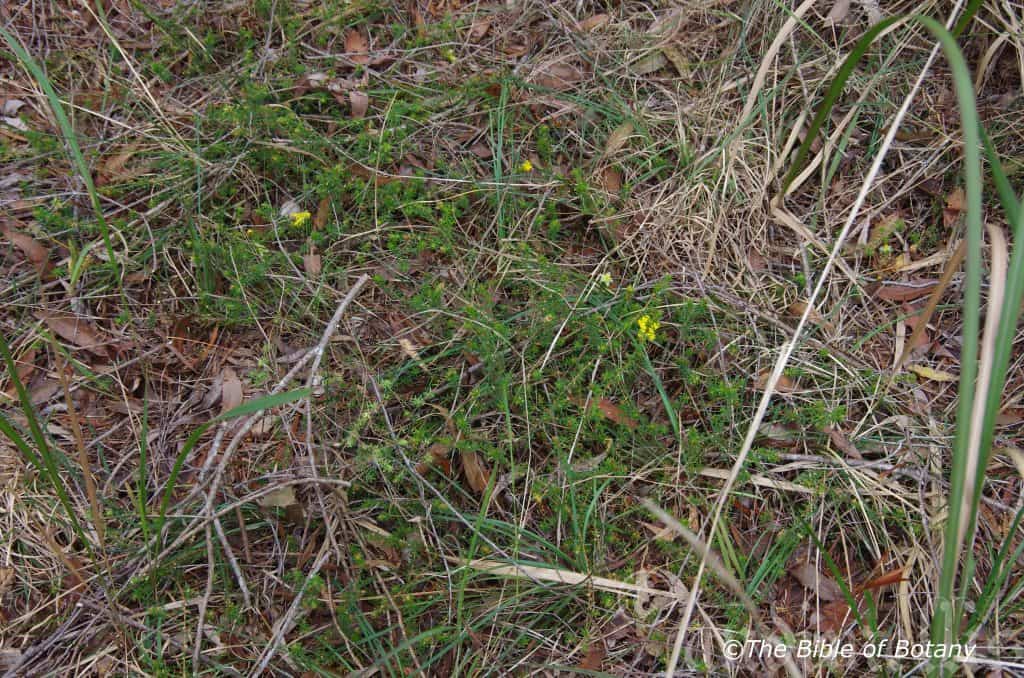
Pillar Valley NSW
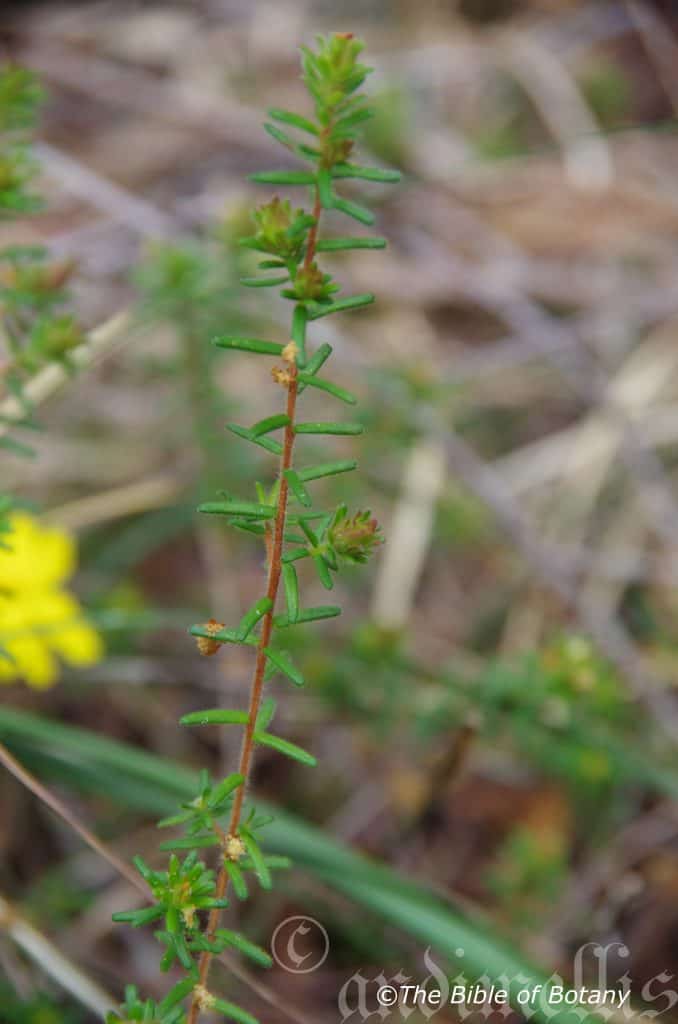
Pillar Valley NSW
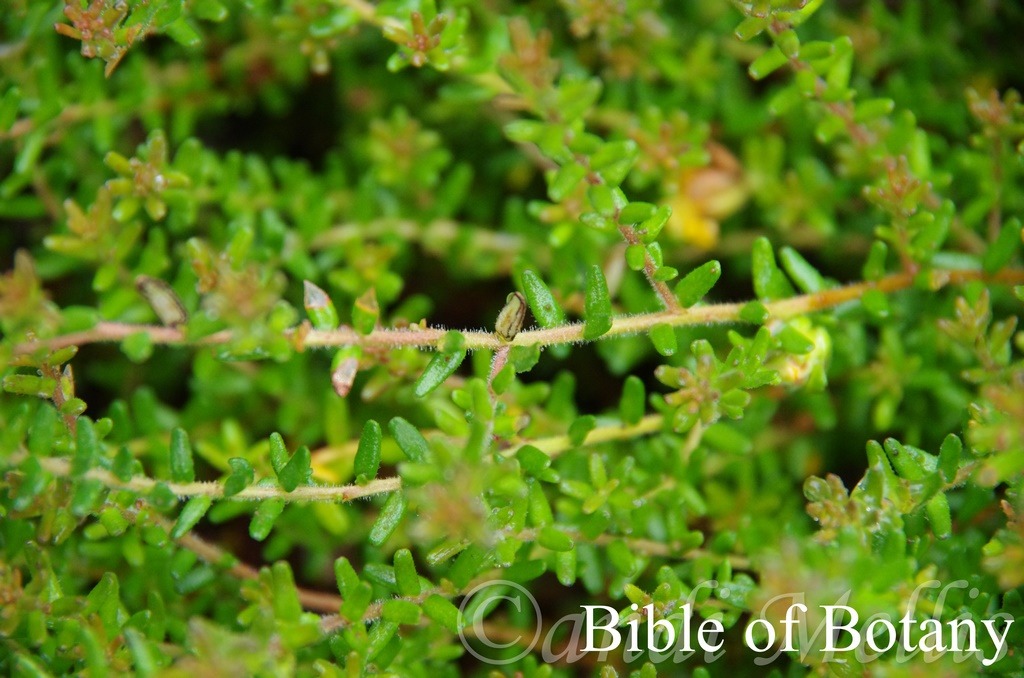
NCBG Coffs Harbour NSW
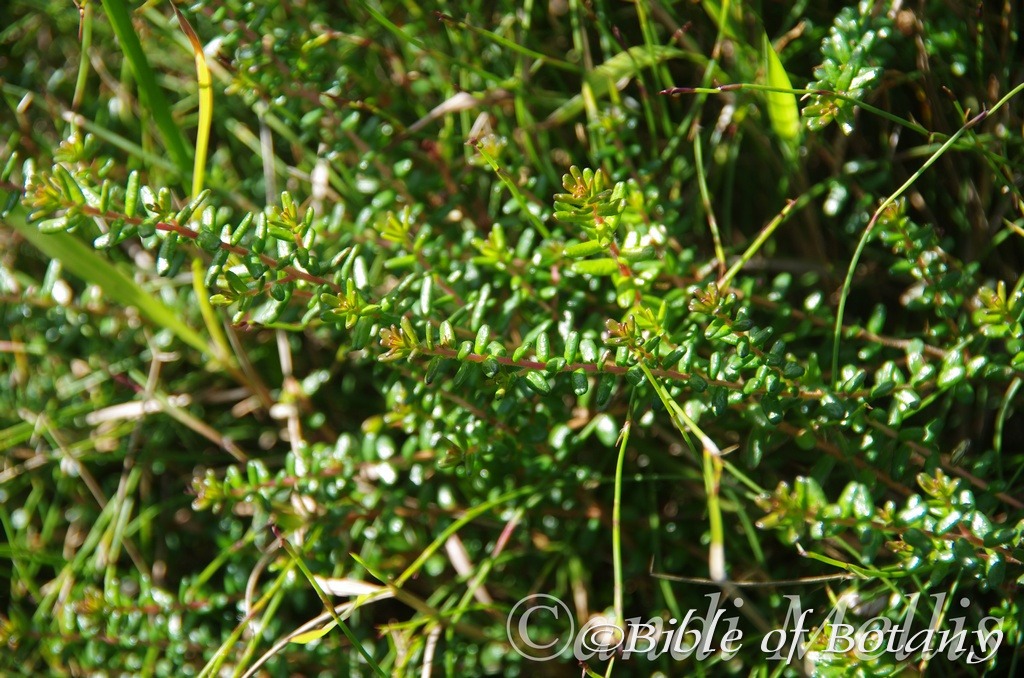
North Yuraygir National Park NSW

NCBG Coffs Harbour NSW
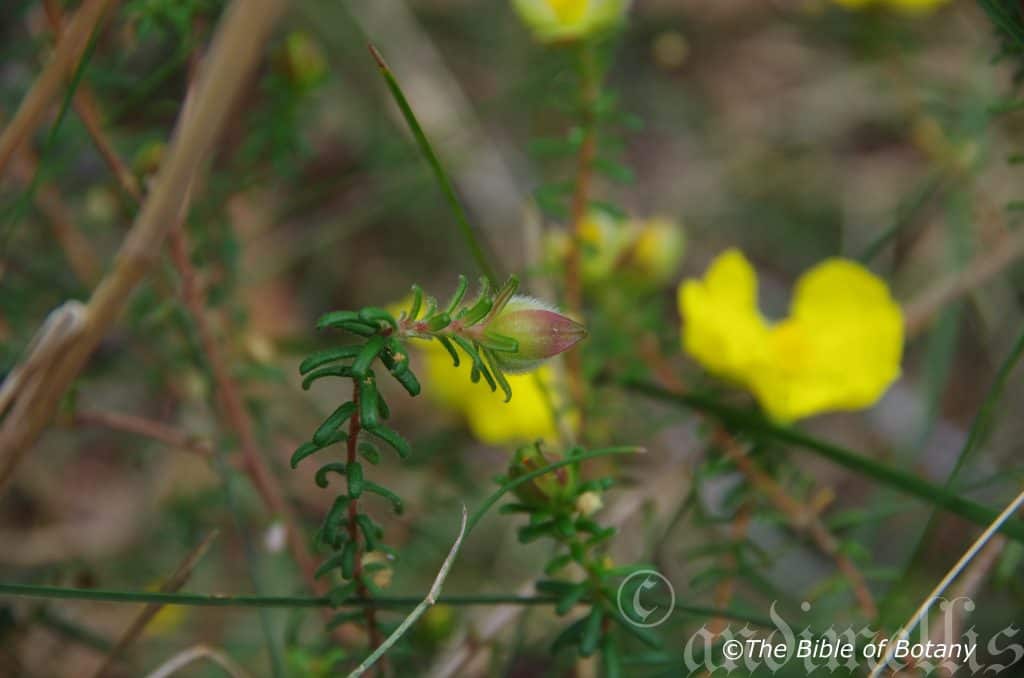
Pillar Valley NSW
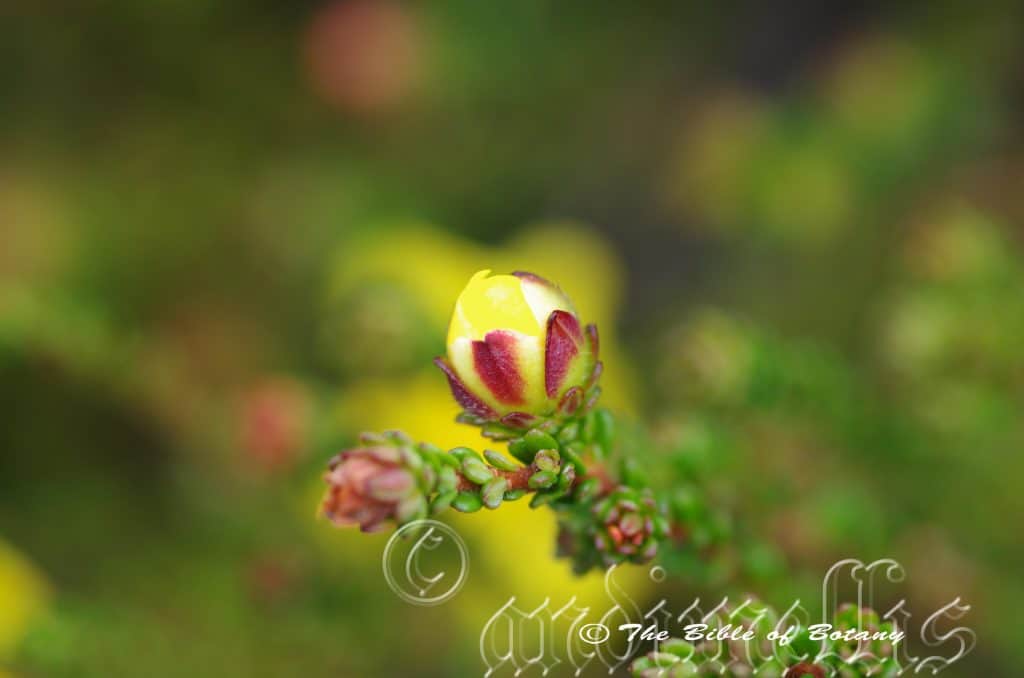
Moonee Beach Headland NSW
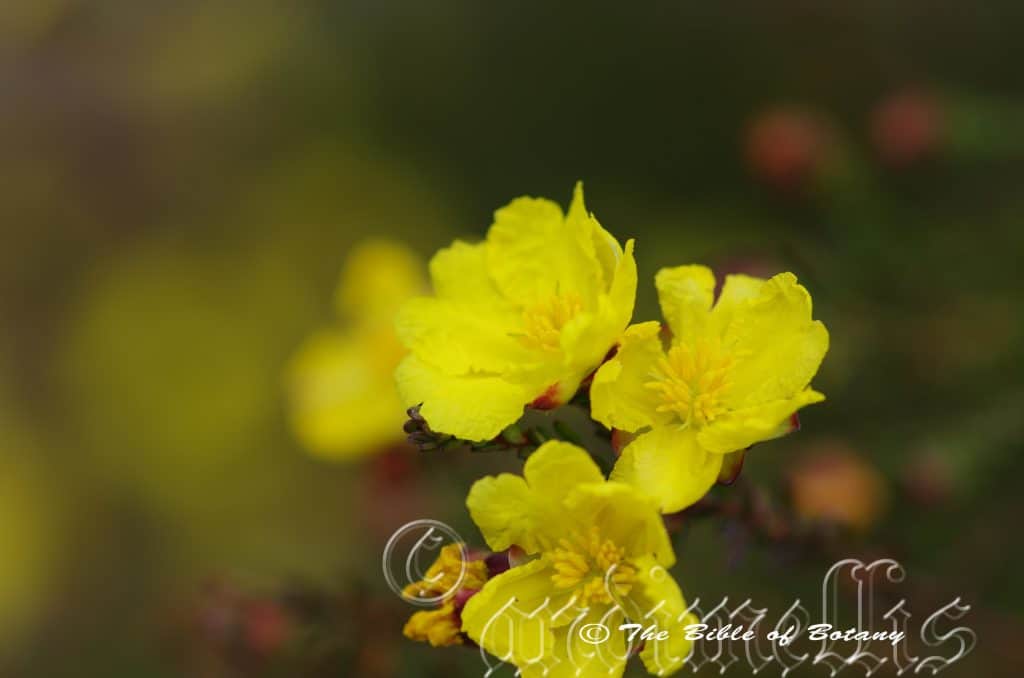
Moonee Beach Headland NSW
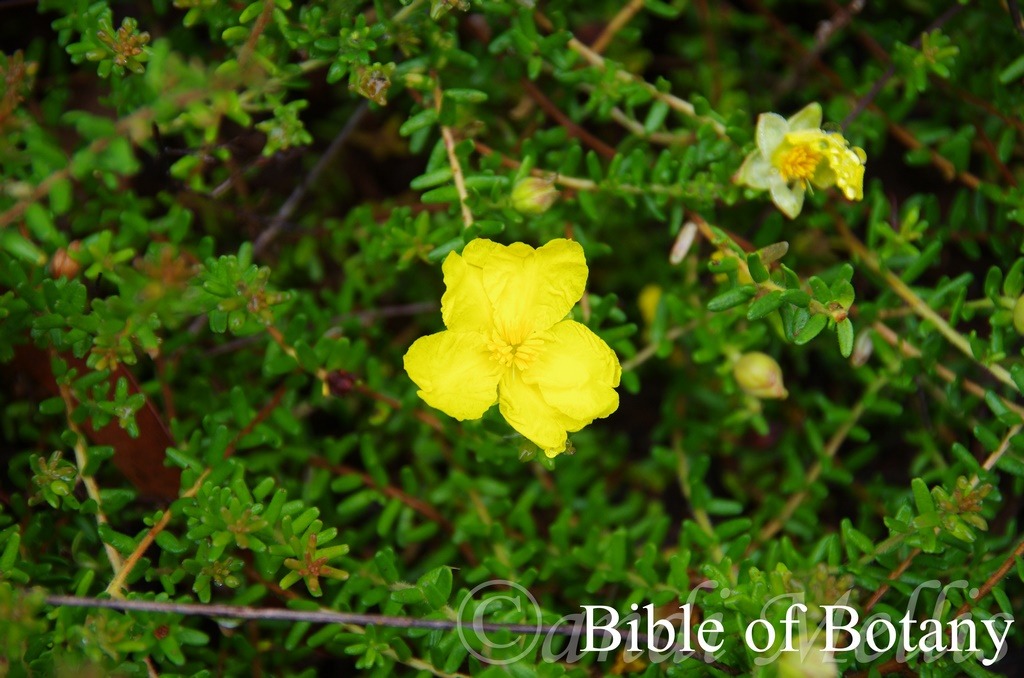
NCBG Coffs Harbour NSW
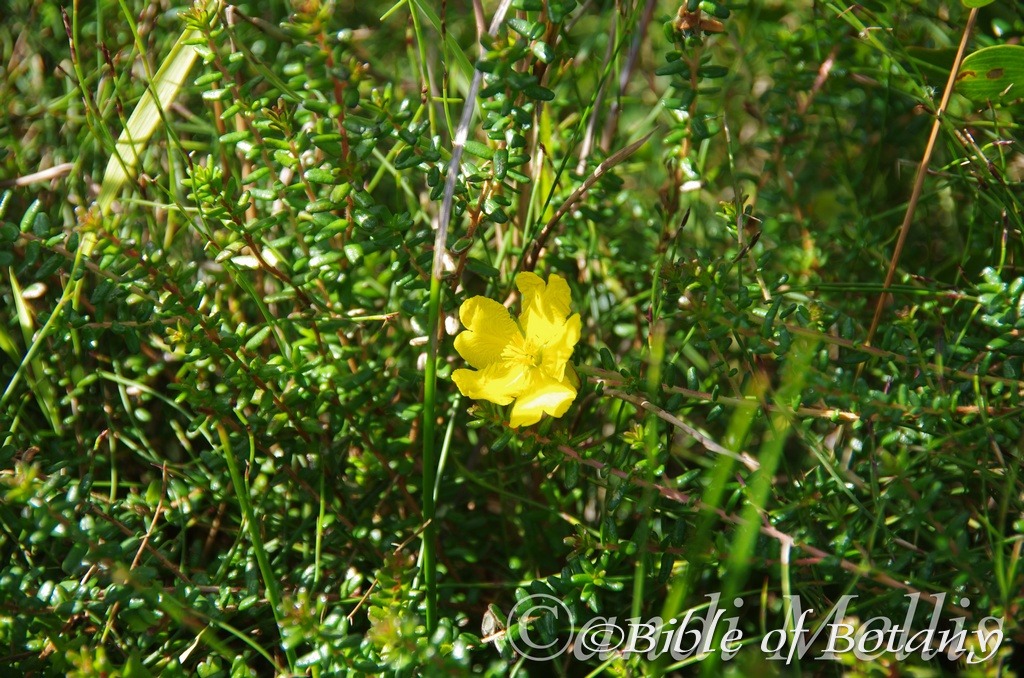
North Yuraygir National Park NSW
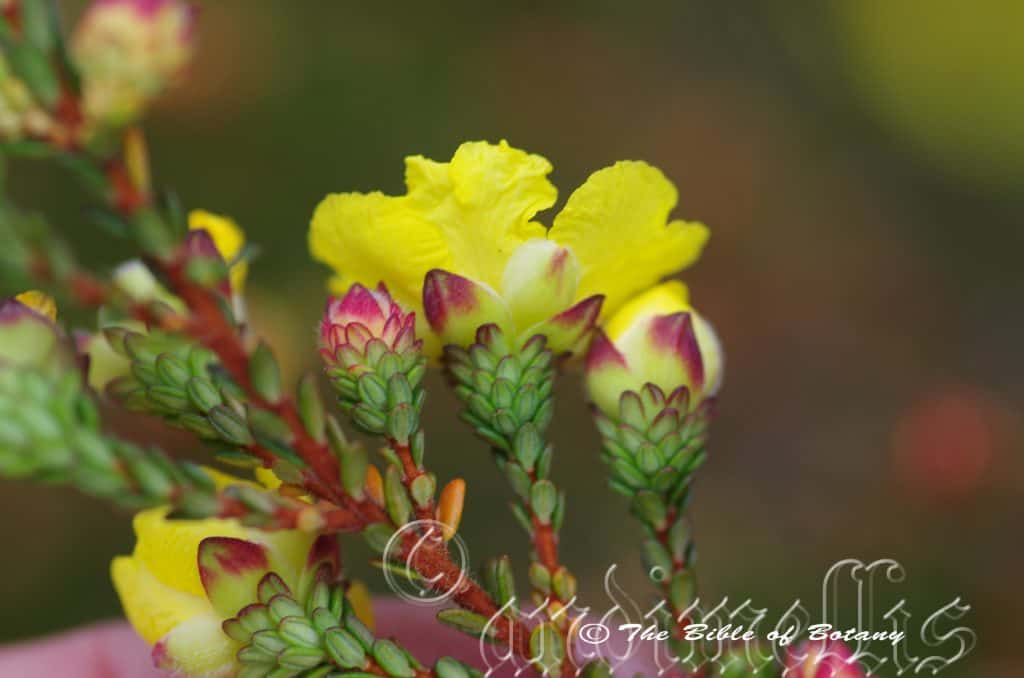
Moonee Beach Headland NSW

NCBG Coffs Harbour NSW
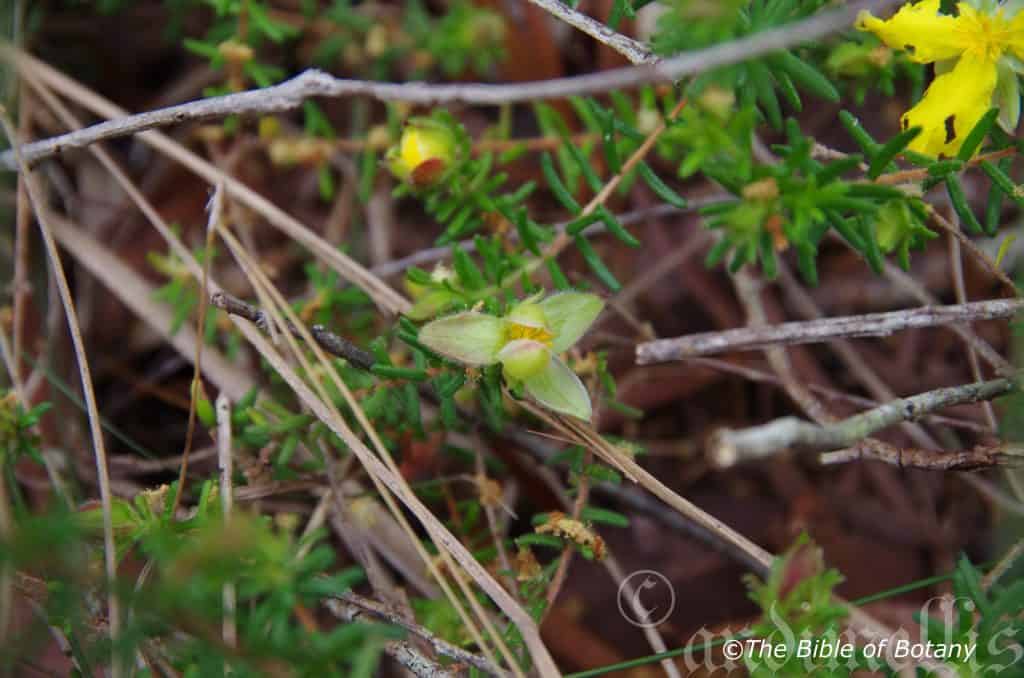
Pillar Valley NSW
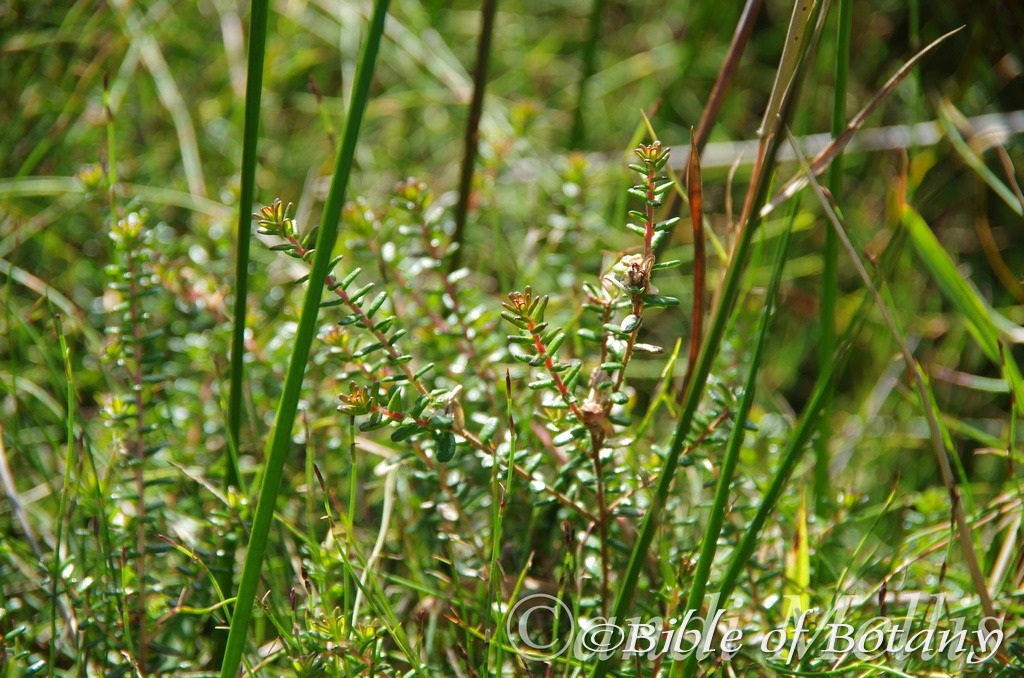
North Yuraygir National Park NSW

NCBG Coffs Harbour NSW
Hibbertia vestita
Classification
Unranked: Eudicots
Unranked: Core eudicots
Family: Dilleniaceae
Genus: Is named after George Hibbert; 1757-1838, who was a London merchant, patron of botany, an amateur botanist, an advocate of slavery and owned a private Botanic Garden.
Specie: From Vestiraria, which is Latin for to be wrapped or clothed. It refers to an organ or structure being wrapped in fine, soft hairs like a wooly coat.
Sub species:
Common Name: Hairy Guinea Flower.
Distribution:
Hibbertia vestita is found in 2 distinct disjunct populations. The northern populations are found south from the Sarina to Great Keppel Island close to the coast in central coastal Queensland. The southern populations are found south from Kinkuna National Park in central coastal Queensland to the Bega Valley in southern coastal New South Wales. It is found on the Western Slopes, on and east of the Great Dividing Range to the coast with one exception of a population at Wimartha on the Coburg Plain.
There is a disjunct population in Victoria around Mansfield.
https://avh.ala.org.au/occurrences/search?taxa=Hibbertia+vestita#tab_mapView
Habitat Aspects Climate:
Hibbertia vestita prefers full sun to dappled shade. It grows in drier coastal heaths, moister inland heaths, open woodlands, riparian zones or sclerophyll forests. The altitude ranges from 5 meters ASL to 850 meters ASL.
The temperatures range from minus 4 degree in August to 40 degrees in January.
The rainfalls range from lows of 200mm to an average of 2000mm annually.
Soil Requirements:
Hibbertia vestita prefers to grow on skeletal to shallow sands, sandy loams or light fatty clays close to the parent rocks. The soils are usually derived from decomposed sandstones, granites, alluvial meander deposits, accumulated sands or accumulated coral sands. The soils pH varies from 4.5pH through to an 8pH. It does not tolerate waterlogged soils. Non saline soils to very saline soils are tolerated as are salt laden winds.
Height & Spread:
Wild Plants: 0.2m to 0.3m by 0.4m to 0.5m.
Characteristics:
Hibbertia vestita’s semi erect stiff stems or erect with cascading apexes are reddish-brown and are moderately to densely covered in white villous hairs.
Hibbertia vestita’s alternate, oblong to lanceolate erect, coriaceous leaves measure 4mm to 7mm in length by 1mm to 2mm in width. The bases are rounded while the apexes are obtuse. The discolourous laminas are deep green to sea-green and sparsely covered in white villous hairs on the upper lamina while the lower lamina is densely covered in white villous hairs. The upper lamina curve gently downwards from the mid vein to the margins while the margins are entire and recurve. The mid vein is not visible on either lamina. The petioles measure 0mm to 0.5mm in length.
The inflorescences of Hibbertia vestita are born from the terminals. The sessile flowers measure 19mm to 22mm in diameter. The maroon-red lanceolate bracts measure 3.5mm to 5mm in length by 2.5mm to 3.5mm in width. The 5 yellow-green, lanceolate sepals are moderately covered in white villous and hirsute hairs externally and are glabrous internally. The sepals have strongly cupuliform apexes and measure 6mm to 8mm in length by 3mm to 4mm in width. The 5 bright yellow petals are broad oblanceolate to broad spathulate-triangular with a broad obtuse to broad truncate-obtuse apex with a deep emarginate tip. The petals are strongly undulating and creased or often ruffled along the margins. The petals measure 8mm to 10mm in length by 3.5mm to 8.5mm in width.
The 28 to 35 yellow stamens and staminodes measure 3 to 4mm in length and completely surround the 3 carpels. The flowers appear throughout the year when conditions are favourable with a peak from August to October.
Hibbertia vestita’s fruits are globose capsules or berries surrounded by the persistent sepals. The green berries turn pale grey-brown when ripe. The 2 to 4 deep brown black globose seeds measure 1.5mm to 2mm in diameter.
Confusing Species:
Hibbertia vestita has a domed shape and grows to 500mm in diameter. The leaves are scattered along the stems.
Hibbertia prostrata’s has a decumbent habit and grows to 700mm in diameter. The leaves are clustered along the stems.
Hibbertia salicifolia’s has a prostrate habit and grows to 1200mm in diameter. The leaves are scattered along the stems.
Hibbertia serpyllifolia’s has a decumbent habit and grows to 700mm in diameter. The leaves are clustered.
Wildlife:
Hibbertia vestita wildlife is unknown to the author though small black beetles and native bees have been observed on the flowers and these were covered in yellow pollen.
Cultivation:
Hibbertia vestita is a very beautiful small native shrub or decumbent ground cover which is suitable for small gardens to the largest garden. It is an excellent colourful addition for sub tropical or semi-arid zones. As garden subjects it will grow to 0.2 meter to 0.3 meters high by 0.5 meters to 0.6 meters in diameter.
It is fast growing, drought tolerant once established and are cold tolerant to temperatures at least as low as 6 degrees. I would be tempted to grow this plant further south to at least Melbourne where severe frosts are not a problem or prolonged.
It is most suitable for use around swimming pools, sunny courtyards, besides pathways, rockeries, along sandy banks or along drive ways.
If it is placed around a pool then I would place them into the center not at the ends and plant 2 or 3 in a straight row for a very formal look or use curves for the natural look. Here the choice of companion plants to use either side is limited only by size of the area to be landscaped. Leaf size or flower colour is limited by your imagination. The only limitation would be not to use other yellow flowering plants.
It is great adjacent to small areas of bush close to paths or the house so their deep yellow flowers can be viewed regularly. It is also suited for planting in small rockeries as a fill in plant. Here they can be planted in small groups of 3 to 5 or as a standalone plant to create a harsher more barren look with other arid plants. If it is surrounded by shorter plants with fine foliages and red flowers they will dominate at the center giving height and strength to the bed especially when it is in flower.
Again 2 to 5 or 7 planted back from a bend will become a very strong focal point when in flower, gain a lot of attention whether you are coming or going because of the fresh clean look of the foliage even in the driest of times. They can be tip pruned if a smaller shrub is required. Hard pruning can be done once the plants are established but some set back may occur so it is better to trim the plants on a regular or annual basis. It responds well to pruning recovering quickly and often increasing the number of flowers in the following season. Place them in the mid ground with large leaf, or fine leaf ground covers and very small shrubs or annuals in front. To the rear, use large leaf taller plants. Plants with pink, orange, red or purple flowers can be used in both the foreground and background. Plants with finer foliages in pale green or blue grey will also compliment the scene during periods when there are few flowers in the garden. This will lead the viewer’s eyes directly to the yellow flowers and rusty tomentose buds and branchlets for a longer period. Mixed with low growing Boronia, Actinotis helianthi, Chloanthes parviflora, Leschenaultia biloba, Leschenaultia formosa and different Dampiera specie will give a brilliant display of colour.
Ensure that the whole plant or at least most of it is on display from most sections of the garden as the flowers are a real bonus.
Whether it is in flower or not these plants will catch your attention. Mass plantings are best achieved by planting them at 0.4 meter to 0.5 meter centers.
Propagation:
Seeds: Hibbertia vestita seeds can be sown directly onto a seed raising mix however seed germination is very variable. Cover them with 2mm of fine sand and keep moist not wet. Place the tray in a warm sunny position or beneath 30mm shade cloth. When the seedlings are 20mm to 30mm tall, prick them out and plant them into 50mm native tubes using a good organic mix.
Once the seedlings reach 150mm to 200mm in height they can be planted out into their permanent position.
Cuttings: Use 100mm long half ripened material when growing from cuttings from the present season’s growth. Take them in mid-autumn or early spring. Remove half the leaves from the bottom section being careful not to tear the bark. Take a 10mm slice off the bark from the bottom of the cutting on one side.
1 Prepare the cutting mix by adding one third sharp clean river sand, one third peat and one third perlite. These ingredients are sterilize,
2 Select good material from non diseased plants,
3 Select semi green stems for cuttings. Look for a stem with two or three nodes,
4 Place the cutting on a flat, hard surface, and make a clean cut down one side of the cutting at the base for 10mm with a sharp sterile knife or razor blade. – This scarification of the node will increase the chances of roots emerging from this spot. Now remove all but one or two the leaves, leaving the apex leaves in tact. If the leaves are very large in proportion to the stem, cut off the apical halves.
5 Fill a saucer with water, and place a little medium strength rooting hormone into another container like a milk bottle top. Dip the node end of the cutting into the water and then into the rooting hormone. Tap off any excess hormone,
6 Use a small dipple stick or old pencil to poke a hole into the soilless potting mix. Ensure the hole is slightly larger than the stem diameter and be careful not to wipe the rooting hormone off the cuttings base, place the cuttings in a pattern ensuring the cuttings are not touching each other,
7 I like to place the pots in Plastic bags to help maintain temperature and moisture. Place in a semi shaded place like under 50mm shade cloth.
8 When the cuttings have struck, open the bag to allow air circulation for a few days to a week,
9 Once hardened off remove the cuttings from the bag and allow to further hardening for a few more days,
10 Transplant into a good potting mix to grow on.
Fertilize using seaweed, fish emulsion or organic chicken pellets soaked in water on an alternate basis. Fertilize every two months until the plants are established then twice annually in early September or March to maintain health, vitality and better flowering.
Further Comments from Readers:
Hi reader, it seems you use The Bible of Botany a lot. That’s great as we have great pleasure in bringing it to you! It’s a little awkward for us to ask, but our first aim is to purchase land approximately 1,600 hectares to link several parcels of N.P. into one at The Pinnacles NSW Australia, but we need your help. We’re not salespeople. We’re amateur botanists who have dedicated over 30 years to saving the environment in a practical way. We depend on donations to reach our goal. If you donate just $5, the price of your coffee this Sunday, We can help to keep the planet alive in a real way and continue to bring you regular updates and features on Australian plants all in one Botanical Bible. Any support is greatly appreciated. Thank you.
In the spirit of reconciliation we acknowledge the Bundjalung, Gumbaynggirr and Yaegl and all aboriginal nations throughout Australia and their connections to land, sea and community. We pay our respect to their Elders past, present and future for the pleasures we have gained.
Hibbertia villosa
Classification
Unranked: Eudicots
Unranked: Core Eudicots
Order: Unplaced
Family: Dilleniaceae
Genus: Is named after George Hibbert; 1757-1838, who was a London merchant, patron of botany, an amateur botanist, an advocate of slavery and owned a private Botanic Garden.
Specie: From Villōsa, which is Latin for shaggy. It refers to organs or structures, which bear short or long, shaggy or curly, “villose” hairs.
Sub species:
Common Name: Hairy Guinea Flower.
Distribution:
Hibertia villosa is found on the Great Dividing Range near Glen Innes in the Gibraltar Range National Park and the Weerikimbee National Park. It is probably found between these 2 National Parks.
https://avh.ala.org.au/occurrences/search?taxa=Hibbertia+villosa#tab_mapView
Habitat Aspects Climate:
Hibbertia villosa prefers full sun to light dappled shade. It grows on escarpments, ridges and hills in grassy woodlands, open Eucalyptus forests or woodland heaths. The altitude ranges from 1050 meters ASL to 1350 meters ASL.
The temperatures range from minus 4 degree in July to 33 degrees in January.
The rainfalls range from lows of 600mm to an average of 1000mm annually.
Soil Requirements:
Hibbertia villosa prefer sandy loams, fatty sands to gritty light clays. The soils are derived from decomposed granites. Most of the soils contain a large percentage of course sands and small weathered chips of granite. The soils pH varies from 5pH through to a 5.5pH. It does not tolerate waterlogged soils however annual inundations or periodic rises in water tables are normal. Non saline soils to moderately saline soils are tolerated as are salt laden winds.
Height & Spread:
Wild Plants: 0.2m to 0.5m by 0.3m to 0.5m.
Characteristics:
Hibbertia villosa’s stems are wiry, deep grey-green to deep sea-green and glabrous. The branchlets rely on other shrubs for support or are slightly procumbent. The branchlets are a deep green and are sparsely covered in long white villous hairs. This is a small rounded herb with deep yellow flowers that forms shrub or one that spreads thinly across the ground or over other shrubs or grasses.
Hibbertia villosa’s oblanceolate to spathulate leaves measure 7mm to 25mm in length by 3mm to 10mm in width. The base is sessile, cuneate while the apex is broadly acute to obtuse with a mucronate tip. The concolourous laminas are deep green and sparsely covered in long, white, villous hairs. The margins are entire or occasionally with small teeth. They curve slightly upwards from the mid vein. The mid vein is faintly prominent on the lower lamina and is broader at the base than at the apex. It is clearly visible from the upper lamina.
The sessile inflorescences of Hibbertia villosa are born from the leaf axils and measure 24mm to 50mm in diameter. The 5 sepals are glabrous externally and internally and measure 7mm to 9mm in length. The 5 bright yellow broadly spathulate petals are divaricate with a truncate to truncate-obtuse apex with a shallow emarginate tip. The petals measure 10mm to 23mm in length by 9mm to 19mm in width at the widest point and 3mm to 4.5mm near the base.
The 15 to 20 bright yellow stamens and staminodes measure 1.5 to 2mm in length and surround the 3 compartment carpels. The flowers appear from early June to late February.
Hibertia villosa’s are globose capsules or berries surrounded by the persistent sepals. The green berries turn pale grey-brown when ripe. The 2 to 4 deep brown black globose seeds measure 1.5mm to 2mm in diameter.
Wildlife:
Hibbertia villosa’s wildlife is unknown to the author though small black beetles and native bees have been observed on the flowers and these were covered in yellow pollen.
Cultivation:
Hibbertia villosa is a very beautiful small native shrub or procumbent ground cover which is suitable for small gardens to the largest garden. It is an excellent, colourful addition for tropical, subtropical or semi-arid zones. As garden subjects it will form a small compact bush 150mm to 300mm in height by 250mm to 350mm in diameter when grown in the open. It is fast growing, drought tolerant once established and are cold tolerant to temperatures at least as low as minus 3 degree.
It can be lightly tip pruned to enhance bushiness and better flowering. Hard pruning can be done once the plants are established but some set back will occur in flowering so it is better to trim the plants on a regular or annual basis.
It is most suitable for use around swimming pools, sunny courtyards, besides pathways, rockeries, along sandy banks or along drive ways.
If it is placed around a pool then I would bring them into the center not at the ends and plant 4 or 10 in a straight row for a very formal look or use curves and scatter plant them for an informal natural look. Here the choice of companion plants to use either side is limited only by size of the area to be landscaped and the size of the other plants as they should be no more than 1 meter in height. Leaf size or flower colour is limited by your imagination; however I would not use other yellow flowering plants.
It is best used adjacent to small areas of bush close to paths or the house so their deep yellow flowers can be viewed regularly. It is great in small rockeries as a fill in plant. Here they can be planted in small groups of 2 or 3 as a standalone plant to create a harsh barren look with other arid plants. If it is surrounded by shorter plants with fine foliages and white flowers they will dominate at the center giving an expansive look to the bed. If it is surrounded by shorter plants with larger deep green foliages and red or purple flowers they will create a beautiful mosaic of colour. Mixed with low growing Boronia species, Actinotis helianthi, Chloanthes parviflora, Leschenaultia biloba, Leschenaultia formosa and different Dampiera species will give a brilliant display of colour even in the driest of times.
Place it in the foreground with large leaf ground covers and very small shrubs. To the rear, use large leaf taller plants. Plants with pink, orange, red or purple flowers can be used in both the mid ground and background. This will lead the viewer’s eyes directly to the yellow flowers for a longer period.
Ensure that the whole plant or at least most of it is on display from most sections of the garden as the flowers are a real bonus.
Whether it is in flower or not these plants will catch your attention and the viewer will be transfixed on the display rather than watching the path. Plant them at 0.5 meter to 0.6 meter centers for mass plantings or for something different try spacing them at 1.5 meter centers with sparse plantings of smaller annuals for a colourful display throughout winter.
Propagation:
Seeds: Hibbertia villosa seeds can be sown directly into a seed raising mix. Cover them with 5mm of fine sand and keep moist not wet. Place the tray in a warm sunny position. When the seedlings are 20mm to 30mm tall, prick them out and plant them into 50mm native tubes using a good organic mix.
Once the seedlings reach 150mm to 200mm in height they can be planted out into their permanent position.
Seeds can also be spread directly onto freshly raked or disturbed ground.
Cuttings: Use 100mm long half ripened material when growing from cuttings from the present season’s growth. Take them in mid-autumn or early spring. Remove half the leaves from the bottom section being careful not to tear the bark. Remove any flowers and buds. Take a 10mm slice off the bark from the bottom of the cutting on one side. Using a weak rooting hormone, dip the cutting in and place it in a moist sterile seed raising mix.
Place the trays under 30mm shade and keep the trays warm. Bottom heat is beneficial when striking the cuttings. Ideally temperatures should be maintained at between 22 to 24 degrees.
When the cuttings have obviously struck and have developed good roots treat them as for seedlings.
Fertilize using seaweed, fish emulsion or organic chicken pellets soaked in water on an alternate basis. Fertilize every two months until the plants are established then twice annually in early September or March to maintain health, vitality and better flowering.
Further Comments from Readers:
Hi reader, it seems you use The Bible of Botany a lot. That’s great as we have great pleasure in bringing it to you! It’s a little awkward for us to ask, but our first aim is to purchase land approximately 1,600 hectares to link several parcels of N.P. into one at The Pinnacles NSW Australia, but we need your help. We’re not salespeople. We’re amateur botanists who have dedicated over 30 years to saving the environment in a practical way. We depend on donations to reach our goal. If you donate just $5, the price of your coffee this Sunday, We can help to keep the planet alive in a real way and continue to bring you regular updates and features on Australian plants all in one Botanical Bible. Any support is greatly appreciated. Thank you.
In the spirit of reconciliation we acknowledge the Bundjalung, Gumbaynggirr and Yaegl and all aboriginal nations throughout Australia and their connections to land, sea and community. We pay our respect to their Elders past, present and future for the pleasures we have gained.